Integrated Sohra Tourism Circuit

- 06 Nov 2025
In News:
The Union Minister for Development of North Eastern Region (DoNER) recently laid the foundation stone for the Integrated Sohra Tourism Circuit in Meghalaya under the Prime Minister’s Development Initiative for North Eastern Region (PM-DevINE) scheme.
About the Integrated Sohra Tourism Circuit
- A joint initiative of the Ministry of DoNER and the Government of Meghalaya.
- Envisioned to transform Sohra (Cherrapunji) into a multi-day, experiential, sustainable tourism destination.
- Total investment: Over ?650 crore, including ?221 crore under DoNER.
Key Components
1. Sohra Experience Centre (Kutmadan)
- Investment: ?115 crore.
- Acts as the cultural nucleus showcasing:
- Tribal heritage of Meghalaya
- Amphitheatres
- Rain experience parks
- Art galleries
- Craft and cultural pavilions
2. Supporting Tourism Infrastructure
- Nohkalikai Falls Precinct – ?26 crore
- Mawsmai Eco Park – ?29 crore
- Seven Sisters Falls Viewpoint
- Shella Riverside Development
- Wahkaliar Canyon with adventure tourism (including proposed hot-air balloon experiences)
Associated Infrastructure Projects Launched
1. Pynursla–Latangriwan–Mawlynnong Road (?29.97 crore)
- Provides all-weather connectivity to Mawlynnong, known as Asia’s cleanest village.
- Enhances cross-border tourism and local market access.
2. Mawshynrut–Hahim Road (?99.76 crore)
- Upgraded to intermediate lane standards.
- Improves agricultural mobility in Western Meghalaya.
3. Bridge over Umngot River (?21.86 crore)
- Links East Khasi Hills and Jaintia Hills.
- Facilitates trade and intra-district connectivity.
4. Broader Connectivity Boost
- 166.8 km Shillong–Silchar Greenfield Expressway (?22,864 crore) under construction.
- Expansion of Umroi Airport enabling larger aircraft operations.
- New Shillong Western Bypass and improved Guwahati–Sohra access reducing travel time to ~4 hours.
Meghalaya’s Transformation Narrative
- Under the 10% Gross Budgetary Support (GBS) policy, over ?6.2 lakh crore has been channelled to the Northeast in the last decade.
- Meghalaya has recorded 12–16% post-COVID growth driven by focused investments in connectivity and tourism.
- Projects like the Integrated Sohra Circuit are part of the broader push to make Meghalaya a “connected, confident, and competitive state.”
Community Empowerment Measures
- Skill development programs in partnership with the Meghalaya Skills Development Society and IHM Shillong.
- Training in hospitality, eco-tourism, adventure safety, and cultural curation.
- Objective: ensure local families directly benefit from tourism inflows.
PM-DevINE Scheme:
- Launched: 2022
- Scheme Type: Central Sector scheme (100% central funding)
- Duration: FY 2022–23 to 2025–26
- Outlay: ?6,600 crore
Objectives
- Infrastructure development in line with PM GatiShakti principles.
- Support social development projects in the North East.
- Promote livelihood generation for youth and women.
Kerala Declare Free from Extreme Poverty

- 03 Nov 2025
In News:
On Kerala Piravi Day (1 November 2025), Kerala declared itself free from extreme poverty, becoming the first Indian state to achieve this milestone. The achievement is the outcome of a four-year Extreme Poverty Eradication Programme (EPEP) led by the state government and marks a key step toward SDG-1 (No Poverty).
What is Extreme Poverty?
Global Definition
- As per the World Bank’s 2025 revision, extreme poverty refers to living on less than $3/day (2021 PPP).
- Earlier benchmark: $2.15/day (2017 PPP).
- Additional poverty lines:
- Lower-middle-income countries: $4.20/day
- Upper-middle-income countries: $8.30/day
Difference Between Poverty & Extreme Poverty
- Individuals between $3–$4.20/day are poor but not extremely poor.
- Extreme poverty captures severe deprivation in food, health, shelter, and education.
India in the Global Context
- 838 million people lived in extreme poverty globally in 2022 (World Bank).
- In India, extreme poverty fell from 16.2% (2011–12) to 2.3% (2022–23).
- Around 171 million Indians moved out of extreme poverty over the decade.
- Improvements were driven by rising employment, urbanisation, and economic recovery.
- Persistent issues include:
- Youth unemployment: 13.3% (29% among graduates)
- Female labour force participation: 31%
- Informal employment: 77% of non-farm jobs
Measuring Poverty in India – The MPI Framework
NITI Aayog’s Multidimensional Poverty Index (MPI) uses the Alkire–Foster method, covering:
- Health: nutrition, maternal health, child mortality
- Education: years of schooling, attendance
- Living Standards: sanitation, housing, fuel, drinking water, bank accounts, assets
Kerala already had India’s lowest poverty rate (0.7%) in NITI Aayog’s 2021 MPI.
Kerala’s Approach: Extreme Poverty Eradication Programme (EPEP)
Launch & Implementation
- Launched in 2021 under the Local Self-Government Department (LSGD).
- 4 lakh personnel (officials, elected representatives, volunteers) trained for implementation.
- Aimed at family-specific micro-interventions rather than income-only metrics.
Kerala’s Local Definition of Extreme Poverty
Unlike World Bank or MPI, Kerala used four local indicators:
- Food insecurity
- Poor access to healthcare
- Lack of housing
- Absence of income and livelihood security
Identification of Beneficiaries
- Initial survey: 1.18 lakh families identified.
- Verification and migration checks narrowed it to 59,000 families.
- Conducted through a bottom-up, participatory exercise by local bodies.
Key Interventions
- Food and Nutrition Security: 20,600+ families ensured regular meals through Kudumbashree community kitchens and LSGD support.
- Housing for the Homeless: Of 4,677 homeless families, 4,005 received houses under the LIFE Mission.
- Access to Essential Services – Avakasam Athivegam (Rights Fast): Ensured:
- Aadhaar, voter ID
- Bank accounts, social pensions
- MGNREGS job cards
- Electricity & LPG connections
- Micro-Plans for Every Household: Customized plans addressing food, shelter, health, education, and income security.
- Institutional Convergence: Collaboration among local governments, Kudumbashree, health services, and welfare departments.
Significance of the Achievement
- India’s first state to officially eliminate extreme poverty.
- Demonstrates effectiveness of localized targeting, data-driven governance, and micro-level planning.
- Reinforces Kerala’s long-standing strengths in education, health, and social welfare.
- Provides a replicable model aligned with SDG-1 targets.
Bharat Taxi
- 01 Nov 2025
In News:
- India is set to launch ‘Bharat Taxi’, the country’s first cooperative-based ride-hailing platform, in November 2025, beginning in Delhi.
- The initiative marks a transformative step in the government’s efforts to democratise the digital economy by ensuring equitable participation and income security for gig workers, particularly cab drivers.
- The project is being implemented jointly by the Union Ministry of Cooperation and the National e-Governance Division (NeGD) under the Ministry of Electronics and Information Technology.
About Bharat Taxi
Bharat Taxi is a government-backed cooperative cab service designed to offer an alternative to private app-based aggregators such as Ola and Uber. It operates on the principle of “cooperative ownership and collective welfare”, where drivers act as both service providers and shareholders.
Implementing Structure
- Promoting Body: Sahakar Taxi Cooperative Ltd., established in June 2025.
- Initial Capital: ?300 crore.
- Supported By: Leading cooperative institutions such as Amul, IFFCO, NAFED, KRIBHCO, NABARD, and the National Cooperative Development Corporation (NCDC).
- Governance:
- Chairperson: Jayen Mehta (MD, Amul/GCMMF)
- Vice-Chairman: Rohit Gupta (Deputy MD, NCDC)
Objectives
- Empower Drivers: Convert cab drivers into cooperative members (“Saarthis”) and shareholders.
- Ensure Fair Earnings: Eliminate high commissions (up to 25% under private apps) through a zero-commission model.
- Provide Affordable, Transparent Rides: Introduce fare regulation with no surge pricing or hidden costs.
- Promote Cooperative Entrepreneurship: Strengthen India’s cooperative movement in the digital services economy.
- Enhance Urban Mobility: Offer a reliable, ethical, and citizen-friendly transport option integrated with government e-platforms.
Key Features
|
Feature |
Description |
|
Ownership Model |
Cooperative-based — drivers are shareholders, not contractors. |
|
Revenue Mechanism |
No commission; nominal membership fee (daily/weekly/monthly). |
|
Digital Integration |
Linked with DigiLocker, UMANG, and API Setu for seamless authentication and data security. |
|
Transparency in Fares |
Regulated pricing; no algorithm-based surge rates or cancellation penalties. |
|
Phased Rollout |
Pilot in Delhi (Nov 2025) with 650 driver-owners; expansion to 20 cities by 2026 and 1 lakh cabs nationwide by 2030. |
|
Inclusivity Focus |
Participation of 5,000 drivers (men & women) in the initial nationwide phase. |
Electronics Components Manufacturing Scheme (ECMS)

- 31 Oct 2025
In News:
The Government of India has cleared the first batch of seven projects worth ?5,532 crore under the Electronics Components Manufacturing Scheme (ECMS), marking a critical milestone in India’s transition from assembling finished electronic products to building a strong component-level manufacturing base. These approved projects are expected to generate ?36,559 crore in production, create over 5,100 direct jobs, and significantly reduce India’s import dependence in high-value electronic components.
Overview of the ECMS
The Electronics Components Manufacturing Scheme (ECMS) is a flagship initiative under the Ministry of Electronics and Information Technology (MeitY). Approved by the Union Cabinet in 2024, its objective is to strengthen India’s backbone in the electronic components and materials ecosystem.
Key Objectives
- Promote domestic manufacturing of bare components, sub-assemblies, and specialized materials.
- Enhance domestic value addition (DVA) across the electronics supply chain.
- Integrate Indian manufacturers with Global Value Chains (GVCs), especially in semiconductors, telecom, EVs, and renewable energy.
- Support capital investments through a mix of turnover-linked, capex-based, and hybrid incentives.
Tenure and Incentive Structure
- Turnover-linked incentive: 6 years, with a 1-year gestation period.
- Capex incentive: 5-year support window.
Projects Approved Under the First Batch
The first set of projects includes manufacturing units for:
- High-Density Interconnect (HDI) PCBs
- Multi-Layer PCBs
- Copper Clad Laminates (CCL)
- Camera Modules
- Polypropylene Films
These units are spread across Tamil Nadu (5 units), Andhra Pradesh (1 unit), and Madhya Pradesh (1 unit), promoting regional dispersion of advanced electronics manufacturing.
Strategic Impact on Domestic Manufacturing
Meeting Domestic Demand
- New manufacturing units will meet 100% of India’s demand for Copper Clad Laminates.
- 20% of domestic PCB demand and 15% of camera module demand will be met locally.
- Around 60% of total production from these plants is expected to be exported, strengthening India’s global integration.
Camera modules, PCBs, and base materials form the essential components in smartphones, laptops, drones, robotics, medical devices, automotive electronics, and industrial systems — sectors critical for future economic growth.
India’s Strong Entry into Base Material Manufacturing
- A major breakthrough is the establishment of India’s first Copper Clad Laminate manufacturing unit, which serves as the foundational material for multi-layer PCBs. Previously, the entire requirement was imported, exposing India to supply chain vulnerabilities.
- Similarly, Polypropylene Films, vital for capacitor production used in consumer electronics, automotive components, telecommunications, computing equipment, and industrial systems, will now be manufactured domestically.
Economic and Industrial Impact
- Import Reduction: Key components and base materials will be produced domestically, reducing foreign dependency.
- Cost Reduction: Local production will bring down manufacturing costs and improve competitiveness.
- High-Skill Employment: Over 5,100 direct jobs from the first batch and potentially 91,600 jobs across the scheme will be created, according to scheme projections.
- R&D Strengthening: The initiative fosters technology absorption and innovation capability.
These seven approved projects form part of a much larger response — with 249 applications received representing ?1.15 lakh crore investment, potential production of ?10.34 lakh crore, and 1.42 lakh jobs, marking the highest-ever investment commitment in India’s electronics sector.
Integration with National Electronics Vision
ECMS is designed as a complementary pillar to:
- PLI Scheme for Large-Scale Electronics Manufacturing
- India Semiconductor Mission (ISM)
Together, they aim to create a seamless end-to-end manufacturing chain, covering devices, chips, components, materials, capital equipment, and innovation ecosystems.
Makhananomics
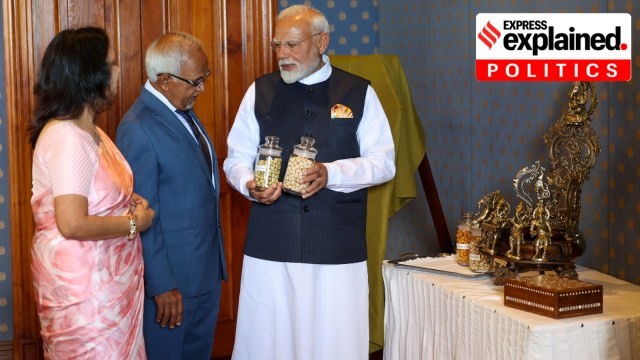
- 30 Oct 2025
In News:
- Prime Minister Narendra Modi has termed the establishment of the National Makhana Board as a transformative step and a “revolution” for the makhana sector.
- The initiative aims to unlock the commercial potential of Makhana (foxnut)—the dried edible seed of Euryale ferox, a prickly water lily that grows in freshwater ponds across South and East Asia—and address long-standing structural gaps in India’s leading production region, Bihar.
Makhana: Botanical, Nutritional and Cultural Features
- Makhana is derived from the seeds of the gorgon plant, recognised by its large prickly leaves and violet-white flowers. Traditionally used in ritual offerings, it has gained global traction as a nutrient-dense, low-fat “superfood”, expanding its market appeal among health-conscious consumers.
- The global makhana market, valued at USD 43.56 million in 2023, is projected to surpass USD 100 million by 2033, signalling strong export potential for India.
Production Profile: Bihar’s Dominance
- Bihar accounts for 90% of India’s makhana production, with cultivation concentrated in nine districts of the Mithilanchal region—particularly Darbhanga, Madhubani, Purnea, and Katihar, which together contribute 80% of the state’s output. Roughly 15,000 hectares under cultivation yield around 10,000 tonnes of popped makhana annually.
- Over 10 lakh families, mainly from the Mallah (fishermen) community, are involved in its cultivation, harvesting, and processing—making the crop socio-economically significant for Bihar’s rural economy.
Challenges: Low Productivity, Labour-Intensive Processes and Market Limitations
Despite being the largest producer, Bihar faces multiple structural constraints:
1. Weak Food Processing and Export Infrastructure
- Punjab and Assam dominate makhana exports despite minimal or no production.
- Bihar sells raw foxnuts cheaply to external food processing units (FPUs), which add value through flavouring, packaging, and branding—capturing higher profits.
2. Poor Market Organisation
- A long chain of intermediaries suppresses farmer earnings.
- Limited organised market systems hinder transparent pricing and revenue growth.
3. Labour-Intensive and Low-Productivity Cultivation
- Harvesting requires diving into water bodies and manually collecting seeds.
- Cleaning, sun drying, roasting, and popping are entirely manual processes.
- Adoption of high-yield varieties (HYVs) like Swarna Vaidehi and Sabour Makhana-1 remains low, keeping output at 1.7–1.9 tonnes/hectare, far below the HYV potential of 3–3.5 tonnes/hectare.
- Mechanisation attempts have been unsuccessful due to technological inefficiencies.
4. Institutional Weakness
- The ICAR National Research Centre for Makhana, established in 2002, has suffered understaffing, lack of administrative support, and underutilisation.
Government Efforts: Policy Push and Institutional Strengthening
The government is working to commercialise makhana through:
- Creation of the National Makhana Board with an initial budget of ?100 crore to address production, processing, value addition, and marketing.
- Promotion of makhana as a commercial crop with improved processing linkages.
- Expansion of industrial infrastructure, including cargo facilities at airports in Patna, Darbhanga, and Purnea, aimed at facilitating exports.
- Training, capacity-building, and linkage of farmers to government schemes.
- Awarding the GI tag to Mithila Makhana in 2022, recognising its unique geographical identity and boosting brand value.
Political Significance: Makhananomics in an Election Year
The push for makhana development carries strong electoral implications:
- With elections approaching, makhana has emerged as a key narrative in Bihar’s economic agenda.
- The sector directly impacts the Mallah community, which constitutes just 2.6% of the state population but commands significant influence in North Bihar owing to their 6% regional vote share.
- Success of “makhananomics” could bolster the ruling coalition’s political appeal by promising employment generation, economic upliftment, and rural prosperity.
Forex Reserves
- 29 Oct 2025
In News:
India’s foreign exchange reserves recorded a strong rise, increasing by $4.496 billion and reaching an all-time high of $702.28 billion, according to RBI data. This marks the second consecutive week of expansion, following a $2.176 billion rise in the previous reporting week. The jump was primarily driven by a steep increase in the value of gold reserves, even as foreign currency assets registered a decline.
Component-wise Movement of Reserves
1. Foreign Currency Assets (FCA)
- FCAs, which form the largest component of India’s forex reserves, fell by $1.692 billion to $570.411 billion.
- The changes reflect valuation effects due to fluctuations in currencies such as the euro, pound, and yen against the US dollar.
2. Gold Reserves
- Gold holdings rose sharply by $6.181 billion, taking their total value to $108.546 billion.
- The increase is attributed to RBI’s gold purchases and the global surge in gold prices.
3. Special Drawing Rights (SDRs)
- SDR holdings increased slightly by $38 million, reaching $18.722 billion.
4. Reserve Position in the IMF
- India’s reserve position with the IMF declined by $30 million to $4.602 billion.
Overall, the rise in gold assets offset the fall in foreign currency assets, helping the total reserves cross the historic $702-billion mark.
Understanding India’s Forex Reserves
Foreign exchange reserves represent external assets held by the RBI in the form of:
- Foreign currency assets
- Gold reserves
- Special Drawing Rights (SDRs)
- Reserve position in the IMF
These reserves act as a protective financial buffer for the economy.
Objectives and Functions
- Monetary Stability: Helps maintain stability of the Indian Rupee during volatility.
- Crisis Management: Provides liquidity support during balance of payments pressure or external shocks.
- Investor Confidence: Strengthens India’s credibility and ensures macroeconomic stability.
- Trade and Debt Support: Enables smooth settlement of import bills and external debt servicing obligations.
Key Features
- India’s forex reserves are valued on a weekly basis, factoring in global gold prices and New York closing exchange rates.
- The RBI manages these reserves following IMF data dissemination standards, maintaining international transparency.
- Foreign currency assets remain the largest component, followed by gold, SDRs, and India’s IMF reserve position.
Economic Significance
- Economic Security: Acts as an insurance mechanism against currency crises, capital outflows, or external market shocks.
- Policy Flexibility: Allows RBI to intervene in the forex market to curb excessive rupee volatility.
- Global Standing: Reinforces India’s global financial strength, supporting favourable sovereign credit ratings and greater investor trust.
Global Multidimensional Poverty Index (MPI) 2025
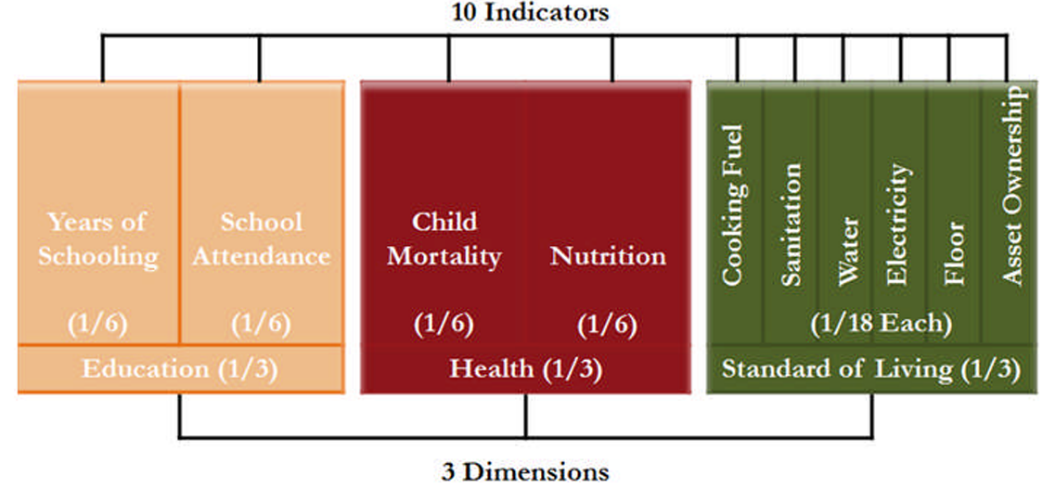
- 28 Oct 2025
In News:
- The United Nations Development Programme (UNDP) and the Oxford Poverty and Human Development Initiative (OPHI) released the Global Multidimensional Poverty Index (MPI) 2025 Report, titled “Overlapping Hardships: Poverty and Climate Hazards”.
- The report provides an evidence-based assessment of poverty that goes beyond income measures, highlighting how climate vulnerability and multidimensional deprivation reinforce each other.
About the Global MPI
- Nature of Index: The MPI is a global composite measure of acute poverty, capturing simultaneous deprivations in health, education, and standard of living through 10 indicators.
- Introduced: First featured in the 2010 Human Development Report.
- Published by: Jointly by UNDP Human Development Report Office and OPHI, annually since 2010.
- Objective: To assess:
- Who is poor
- How they are poor
- How deprivations overlap across households
- Enabling policymakers to align development strategies with SDG-1 (No Poverty).
- Methodology Highlights:
- 3 Dimensions: Health, Education, Living Standards.
- 10 Indicators: Nutrition, child mortality, years of schooling, school attendance, cooking fuel, sanitation, drinking water, electricity, housing, assets.
Global Trends in the MPI 2025
Poverty Headcount & Severity
- Out of 6.3 billion people assessed across 109 countries, 1.1 billion (18.3%) live in acute multidimensional poverty.
- 43.6% of the poor (≈501 million) experience severe poverty—being deprived in half or more indicators.
Regional Distribution of Poverty
- Sub-Saharan Africa (565 million) and South Asia (390 million) account for 83% of global poverty.
- Sub-Saharan Africa alone contains 49.2% of the world’s multidimensionally poor.
Children Disproportionately Affected
- Children form 33.6% of the global population but 51% of those living in multidimensional poverty.
- Malnutrition and disruption in schooling are primary drivers of child deprivation.
Middle-Income Countries as Core Contributors
- Nearly 740 million of the global poor live in middle-income countries, highlighting inadequacies of income-based poverty classifications.
Rural Concentration
- 83.5% of all multidimensionally poor live in rural areas, despite these areas comprising only 55% of total population.
Climate Hazard Exposure
- Nearly 80% of poor populations live in climate-vulnerable areas.
- Climate hazards include droughts, floods, extreme heat, and erratic precipitation patterns.
- South Asia has the highest number of poor people living in climate hazard zones.
Poverty & Climate Vulnerability in SIDS
- 22 Small Island Developing States (SIDS) show a combined poverty rate of 23.5%, higher than the developing world average.
- Rising sea levels (projected up to 70 cm by 2080–2099) threaten livelihoods in nations such as Belize, Comoros, and Samoa.
Post-Pandemic Stagnation
- Poverty reduction has slowed, with many countries witnessing stagnation or reversal due to:
- Inflation
- Conflict
- Climate shocks
- Post-pandemic economic disruptions
India in Global MPI 2025
Significant Poverty Reduction
- India reduced multidimensional poverty from 55.1% (2005–06) to 16.4% (2019–21).
- Over 414 million people moved out of multidimensional poverty.
- India's progress is among the fastest globally.
Persistent Child Poverty
- Children continue to face high deprivation, particularly in:
- Nutrition
- Sanitation
- Housing
- Cooking fuel
Climate Vulnerability and Poverty Link
- Nearly 99% of India’s poor live in climate-exposed regions.
- Heatwaves, floods, droughts, and air pollution intensify hardship and threaten livelihood security.
Drivers of MPI Improvement
India’s poverty reduction correlates with large-scale welfare and infrastructure missions:
- Swachh Bharat Mission – sanitation improvement
- PM Ujjwala Yojana – access to clean cooking fuel
- PM-Awas Yojana – housing for rural and urban poor
- Jal Jeevan Mission – access to clean drinking water
- Universal electrification initiatives
Key Challenges
- Rural–Urban Divide: 83% of the multidimensionally poor live in rural regions.
- Climate shocks: Frequent floods and droughts reverse development gains.
- Data Gaps: Lack of updated household-level data limits monitoring and policy targeting.
- Gender disparities: Women face inequalities in nutrition, education, healthcare, and asset ownership.
- Financial constraints: Several states struggle with fiscal capacity, affecting social protection and climate adaptation.
Policy Recommendations
- Integrate Climate & Poverty Policy: Adopt climate-resilient strategies combining:
- Green infrastructure
- Social protection
- Disaster risk reduction
- Localised Poverty Tracking: Develop district-level MPI dashboards for real-time, granular monitoring.
- Promote Green Livelihoods: Expand employment in:
- Renewable energy
- Organic farming
- Circular economy sectors
- Enhance Global Support: Strengthen access to:
- Climate finance
-
- Concessional aid
- Technology transfers
- Gender and Child-Focused Interventions: Reinforce programs for:
- Nutrition
- Maternal health
- Education
- Clean cooking energy
Duty-Free Tariff Preference (DFTP) Scheme

- 27 Oct 2025
In News:
The World Trade Organization (WTO) has recently credited India’s Duty-Free Tariff Preference (DFTP) Scheme for significantly boosting exports from Least Developed Countries (LDCs). India has surpassed China and the European Union (EU) in providing duty-free market access to the world’s poorest economies, strengthening South-South trade cooperation.
About the DFTP Scheme
- Launched: 2008
- Implementing Agency: Ministry of Commerce and Industry, Government of India
- Framework: In line with the WTO’s Hong Kong Ministerial Declaration (2005), which encouraged developed and developing members to provide duty-free and quota-free (DFQF) market access to LDCs.
- Objective:To promote trade-led economic growth of LDCs by granting preferential tariff concessions on their exports to India.
Key Features
- Comprehensive Duty-Free Access
- Provides duty-free or preferential tariff access to a large range of products exported from LDCs to India.
- Nearly 98% of India’s tariff lines are now covered under the scheme.
- Eligible Countries
- Open to all LDCs recognized by the United Nations.
- Currently, around 48 countries in Africa, Asia, and the Pacific benefit from it.
- Product Coverage
- Agricultural goods: Fruits, vegetables, grains, spices, coffee, and tea.
- Textiles & garments: Clothing, fabrics, and handwoven textiles.
- Leather & handicrafts: Bags, jewelry, and artisan products.
- Minerals & metals: Including raw materials like gold and diamonds.
- Processed foods and beverages: Key export commodities for African and Asian LDCs.
- Trade Facilitation: Simplified customs procedures and transparent rules of origin help integrate LDC exporters into global value chains (GVCs).
Recent WTO Recognition
According to the WTO, India now provides one of the widest duty-free market access schemes among developing economies—outperforming China and the EU in terms of product and tariff-line coverage.
This initiative has:
- Enhanced export diversification in LDCs.
- Strengthened India’s trade and diplomatic engagement with Africa and other developing regions.
- Supported inclusive global trade, aligning with the UN Sustainable Development Goals (SDG 17: Partnerships for the Goals).
Significance
- For LDCs: Encourages industrial growth, employment, and export competitiveness.
- For India: Reinforces its image as a responsible development partner and a leader in South-South cooperation.
- For Global Trade: Promotes equity by integrating vulnerable economies into mainstream trade flows.
Authorized Economic Operator (AEO) Programme

- 23 Oct 2025
In News:
- The World Trade Organization (WTO) has commended India’s liberalisedAuthorised Economic Operator (AEO) Programme for significantly enhancing the participation of micro, small, and medium enterprises (MSMEs) in global trade and for improving customs facilitation measures.
- The initiative, implemented by the Central Board of Indirect Taxes and Customs (CBIC), is increasingly being seen as a model for balancing trade facilitation with supply chain security.
About the AEO Programme
- Origin:The AEO Programme operates under the World Customs Organization’s (WCO) SAFE Framework of Standards to Secure and Facilitate Global Trade (SAFE FoS), adopted in June 2005 to strengthen global supply chain security.AEO constitutes one of the three key pillars of this framework.
- Implementation in India:
- Introduced by CBIC as a pilot project in 2011 and revamped through Circular No. 33/2016-Customs (July 22, 2016).
- Managed by the Directorate of International Customs (CBIC).
- Aligns with Article 7.7 of the WTO Trade Facilitation Agreement (TFA), which promotes the recognition of “trusted traders.”
Objectives
- To enhance international supply chain security and ease of doing business.
- To foster trusted partnerships between Customs and compliant business entities.
- To reduce transaction costs and clearance times for legitimate traders.
- To increase MSME participation in international trade through simplified customs procedures.
Key Features
- Voluntary and Trust-Based:AEO is a voluntary compliance programme that certifies entities—such as importers, exporters, logistics providers, customs brokers, custodians, and warehouse operators—who meet security and legal standards.
- Three-Tier Certification:
- AEO-T1, AEO-T2, and AEO-T3 for importers/exporters (in ascending order of benefits).
- AEO-LO for logistics operators, custodians, and other intermediaries.
- Simplified Customs Procedures:
- Reduced documentation requirements.
- Decentralised approvals at the Customs Zonal level.
- Segmented risk management—allowing Customs to focus on higher-risk consignments.
- Global Integration:
- Mutual Recognition Arrangements (MRAs) with countries such as South Korea and Hong Kong.
- Negotiations underway with the USA, UAE, and Taiwan for reciprocal recognition.
- Ensures international credibility and cross-border facilitation for Indian traders.
- Targeted Expansion:The CBIC aims to accredit over 3,500 AEO-certified entities across India to build a more secure and efficient trade environment.
Benefits to Traders
|
Benefit |
Description |
|
Faster Customs Clearance |
Direct Port Delivery/Entry for AEO-certified cargo |
|
Deferred Duty Payment |
Flexibility in duty payments for AEO-T2 and T3 holders |
|
Reduced Inspections |
Lower frequency of physical and documentary checks |
|
Self-Declaration for SION |
Simplified export-import documentation |
|
Priority Processing |
Expedited refunds, grievance redressal, and port clearances |
|
Global Recognition |
Reciprocal benefits under MRAs with partner countries |
|
Financial Efficiency |
Time and cost savings for compliant MSMEs |
Significance for India
- Supports MSMEs: Encourages smaller exporters and manufacturers to integrate with global value chains.
- Trade Facilitation: Reduces bureaucratic delays and improves India’s ranking in Ease of Doing Business and Logistics Performance Index.
- Customs Efficiency: Allows authorities to focus resources on non-compliant and high-risk traders.
- Global Credibility: Strengthens India’s image as a trusted trading partner under the WCO framework.
- Policy Alignment: Advances India’s commitments under the WTO Trade Facilitation Agreement.
Fare se Fursat Fixed Airfare Scheme
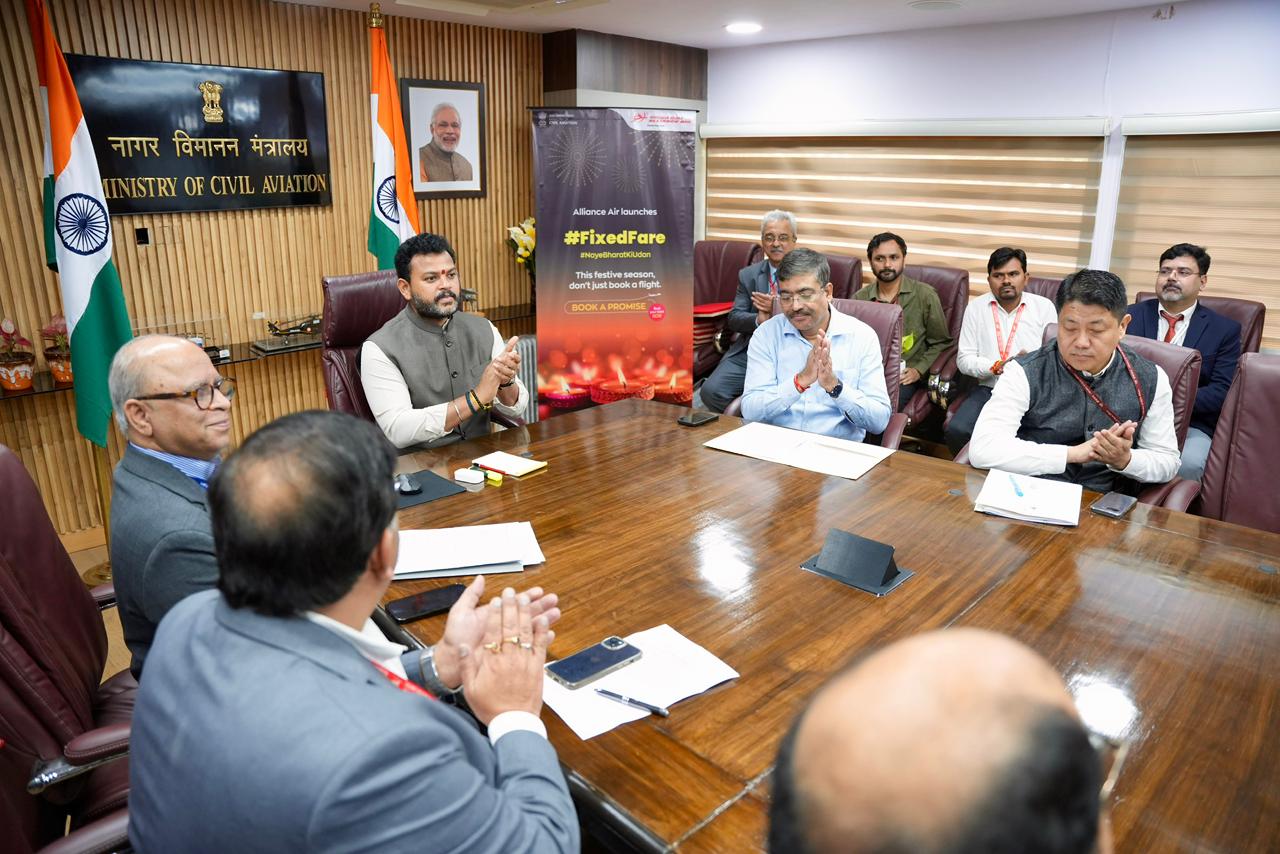
- 17 Oct 2025
In News:
The Government of India has launched the ‘Fare Se Fursat’ Fixed Airfare Scheme, a first-of-its-kind initiative aimed at providing predictable and transparent airfares on select regional routes. Introduced by the Ministry of Civil Aviation, the scheme reflects the government’s continued push to democratize air travel and enhance regional connectivity.
About the Scheme
- Launched by: Ministry of Civil Aviation & Alliance Air
- Purpose: To eliminate uncertainty associated with fluctuating airfares and promote ease of flying.
- Key Feature:Single, fixed ticket price irrespective of booking date — even for same-day travel.
- Pilot Phase:
- 13 October – 31 December 2025
- Operated on select regional routes
- Airline: Alliance Air, India's government-owned regional carrier
Objective & Rationale
- Address dynamic pricing concerns: Indian aviation typically follows dynamic pricing based on demand and seasonality, often causing high last-minute fares.
- Make air travel accessible: Inspired by the UDAN scheme, the initiative targets middle-class, lower-middle-class, and neo-middle-class passengers, especially from Tier-2 and Tier-3 cities.
- Increase first-time flyers: The scheme aims to build confidence among new travelers by offering predictable fares, reducing financial anxiety linked to last-minute price surges.
Significance
- Supports UDAN (UdeDesh ka AamNagrik) vision of affordable regional connectivity.
- Strengthens last-mile aviation by enabling easier travel from smaller towns.
- Reinforces government's push for passenger-centric aviation policies (e.g., affordable airport cafés launched earlier under UDAN Yatri services).
- Promotes air travel as an everyday mode of transportation, not a luxury.
Why It Matters
- Predictability: Removes uncertainty in ticket prices, encouraging travel planning.
- Accessibility & Inclusivity: Bridges regional air travel gaps and widens aviation access to new socio-economic groups.
- Public-service Focus: Prioritizes passenger welfare over profit maximization, aligning with the vision of “Naye Bharat ki Udaan”.
LEAPS 2025
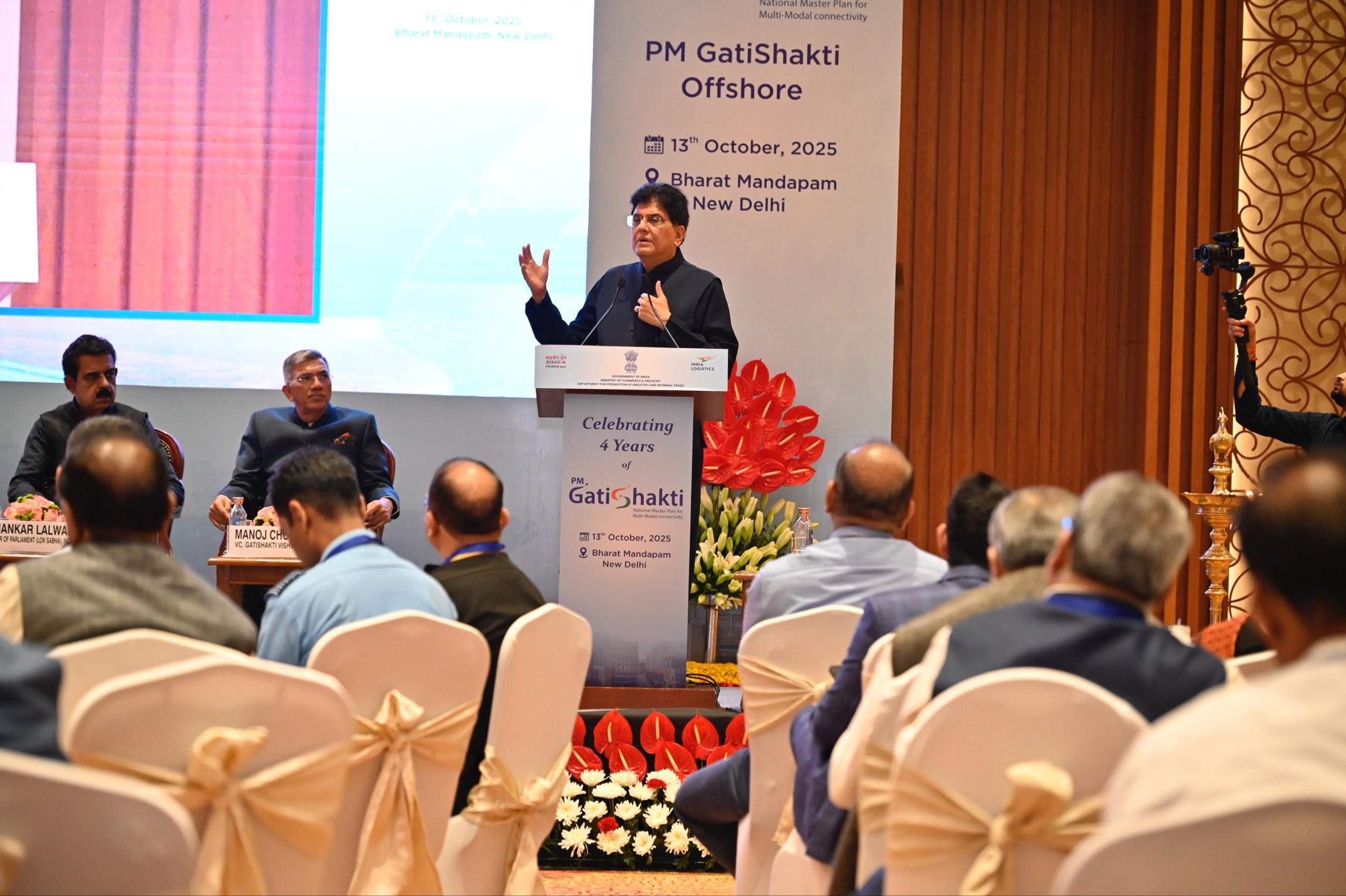
- 15 Oct 2025
In News:
The Union Minister for Commerce and Industry recently launched the Logistics Excellence, Advancement, and Performance Shield (LEAPS) 2025 in New Delhi, marking a major initiative to accelerate reforms and innovation in India’s logistics ecosystem. The launch also coincided with the 4th anniversary of the PM GatiShakti initiative, reaffirming the government’s commitment to building an efficient, integrated, and future-ready logistics network.
About LEAPS 2025
LEAPS 2025 is a flagship programme of the Department for Promotion of Industry and Internal Trade (DPIIT) under the Ministry of Commerce and Industry. It seeks to benchmark logistics excellence across the country by recognising outstanding performance, leadership, and innovative practices within the logistics sector.
Objectives
- Promote global-standard logistics performance and efficiency
- Strengthen competitiveness in line with the National Logistics Policy (NLP)
- Encourage sustainability and ESG-centric logistics models
- Foster collaboration among Government, Industry, and Academia
- Support Make in India, Atmanirbhar Bharat, and the vision of Viksit Bharat 2047
Key Focus Areas
- Logistics innovation and technology adoption
- Green logistics and sustainable supply chain practices
- Ease of movement through multimodal connectivity
- Capacity building and skilling in logistics and supply chain management
Coverage and Award Categories
The initiative spans a wide spectrum of logistics stakeholders, including:
- Freight operators (air, road, maritime, and rail)
- Multimodal transport operators
- Industrial, consumer, and agricultural warehousing firms
- MSMEs and logistics start-ups
- Academic and training institutions
- E-commerce logistics service providers
- Third-party and freight forwarding operators
A total of 13 award categories have been introduced, targeting core logistics, MSMEs, start-ups, institutions, and special service providers. Registrations are open on the RashtriyaPuraskar Portal until 15 November 2025.
Alignment with National Logistics Vision
LEAPS 2025 builds on the strategic framework of the National Logistics Policy (2022) and PM GatiShakti, which aims to integrate road, rail, air, and waterways to reduce logistics costs and improve last-mile connectivity. PM GatiShakti—backed by a ?100-trillion multi-modal infrastructure development vision—addresses infrastructure gaps, optimises multimodal movement, and strengthens India’s position in global supply chains.
Significance
- Boosts logistics efficiency and transparency
- Encourages innovation and technology in supply chain operations
- Strengthens export readiness and reduces logistics costs
- Promotes sustainable logistics and environmental stewardship
- Enhances India's competitiveness in global trade
Foreign Currency Settlement System
- 12 Oct 2025
In News:
In October 2025, Union Finance Minister Nirmala Sitharaman launched the Foreign Currency Settlement System (FCSS) at the International Financial Services Centre (IFSC) in GIFT City, Gujarat. This marks a transformative step in India’s financial ecosystem, placing GIFT City among leading global financial hubs such as Hong Kong, Tokyo, and Singapore.
What is the Foreign Currency Settlement System (FCSS)?
The FCSS is a real-time payment and settlement mechanism that enables entities operating within GIFT IFSC to conduct and settle foreign currency transactions (initially in USD) locally — eliminating the dependence on foreign correspondent banks.
Key Highlights
- Real-Time Settlements: Transactions that earlier took 36–48 hours through correspondent banking now settle in 4–5 seconds.
- Regulatory Framework: Operates under the Payment and Settlement Systems (PSS) Act, 2007, authorised by the International Financial Services Centres Authority (IFSCA).
- System Operator:CCIL IFSC Ltd, a subsidiary of the Clearing Corporation of India Ltd (CCIL).
- Technology Partner:Indian Financial Technology & Allied Services (IFTAS), a wholly-owned subsidiary of the Reserve Bank of India (RBI).
- Settlement Bank:Standard Chartered Bank serves as the initial settlement partner.
How Does It Work?
Under the FCSS framework:
- Each participating bank’s IFSC Banking Unit (IBU) maintains an account with a designated local settlement bank.
- Inter-bank foreign currency transactions are cleared and settled within GIFT City, avoiding the complex multi-leg Nostro account chains used abroad.
- The system ensures secure, transparent, and regulated processing of global transactions under the IFSCA’s oversight.
Why It Matters – Strategic Significance
- Reduces Dependence on Overseas Systems: Earlier, entities in GIFT IFSC relied on foreign banks for USD, euro, or yen settlements, leading to delays, higher costs, and exposure to external risks. FCSS eliminates this dependence by localising global settlements within India.
- Enhances Liquidity and Efficiency: The system allows near-instant settlement, improving liquidity management for banks and financial institutions. It reduces counterparty and settlement risks while enabling smoother cross-border trade and investment.
- Boosts India’s Global Financial Standing: By offering a robust settlement mechanism, GIFT City now joins an elite league of financial centres with domestic forex settlement capabilities, strengthening India’s position as an emerging global financial hub.
- Promotes Financial Inclusion for Indian Entities: With lower transaction costs, faster settlement times, and reduced reliance on foreign intermediaries, Indian corporates and banks can manage international transactions more efficiently within domestic jurisdiction.
- Supports Multi-Currency Expansion: While the system currently supports the US Dollar, it is designed to incorporate other major currencies such as the Euro, Pound Sterling, and Japanese Yen, ensuring scalability and global integration.
About GIFT City: India’s Global Financial Gateway
- Full Form: Gujarat International Finance Tec-City (GIFT City).
- Location: Between Ahmedabad and Gandhinagar, Gujarat.
- Regulator: International Financial Services Centres Authority (IFSCA) — established in 2020 as a unified regulator for all financial services within the IFSC.
- Nature: A Special Economic Zone (SEZ) that operates as a liberalised financial jurisdiction under Indian sovereignty, with tax incentives, global regulations, and ease-of-doing-business provisions.
Achievements So Far
- Hosts over 1,000 registered entities, including global banks, insurance firms, fintechs, and asset managers.
- Houses India INX and NSE IX, offering 22-hour trading in global securities.
- Developed India’s first aircraft and ship leasing ecosystem, attracting global lessors and fund managers.
- Emerging hub for offshore derivative instruments, green bonds, and ESG investments.
Economic Rationale Behind GIFT City
- Before GIFT City, many Indian companies preferred offshore hubs such as Singapore or Mauritius for fund-raising and financial operations due to friendlier regulatory environments. This resulted in capital outflow and revenue loss for India.
- GIFT City’s creation aimed to repatriate offshore financial activities, foster global competitiveness, and position India as a financial intermediary for international capital flows.
Trade Watch Quarterly Report
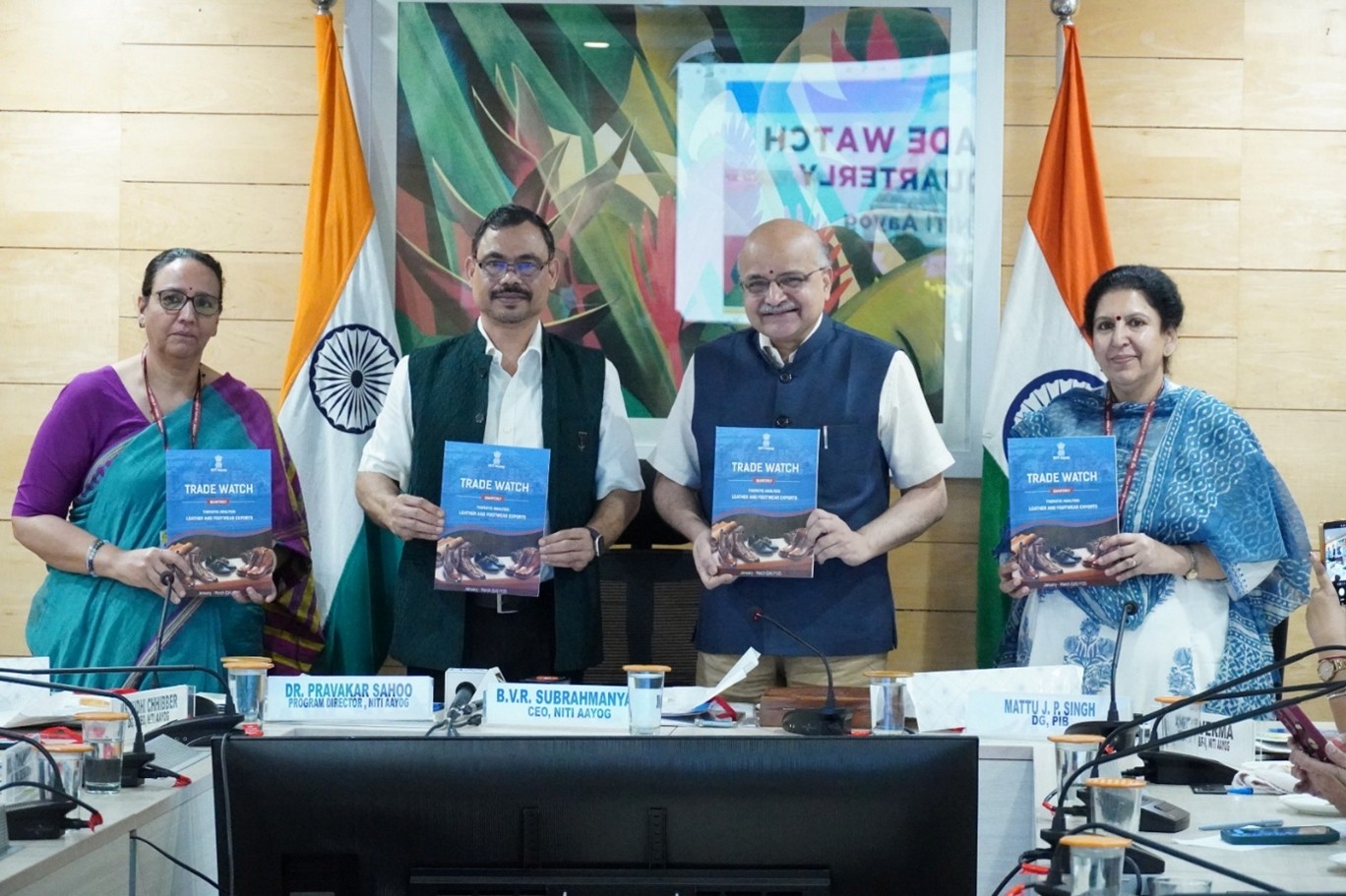
- 10 Oct 2025
In News:
NITI Aayog released the fourth edition of the “Trade Watch Quarterly” report for Q4 of FY 2024–25 (January–March 2025) in New Delhi. The report, unveiled by B.V.R. Subrahmanyam, CEO of NITI Aayog, provides a detailed evaluation of India’s trade performance, identifies emerging opportunities, and suggests policy directions for enhancing export competitiveness.
About the “Trade Watch Quarterly”
- Publisher: NITI Aayog
- Nature: Flagship analytical publication assessing India’s quarterly trade trends across merchandise and services.
- Objectives:
- To offer evidence-based insights into trade patterns, export competitiveness, and sectoral challenges.
- To guide policy interventions for strengthening India’s manufacturing ecosystem and expanding participation in global value chains (GVCs).
Key Highlights of Q4 FY 2024–25
- Total Trade: USD $441 billion, registering a 2.2% year-on-year increase.
- Annual Trade (FY25):
- Total: USD $1.73 trillion (+6% YoY)
- Exports: USD $823 billion
- Imports: USD $908 billion
Merchandise and Services Trends
- Merchandise Exports: Witnessed a modest contraction, primarily due to lower shipments of mineral fuels and organic chemicals.
- Growth Sectors: Electrical machinery, pharmaceuticals, and cereals.
- Services Exports: Reached an all-time high of $387.5 billion, led by IT, aviation, and financial services, reflecting India’s growing strength in high-value services.
Regional Trade Patterns
- Top Export Market:North America, accounting for 25% of India’s exports and growing 25% YoY.
- Moderate Growth Regions:EU, GCC, and ASEAN, showing a slowdown in demand.
- Import Trends:
- UAE became India’s second-largest supplier, driven by gold inflows under the CEPA agreement.
- China’s imports surged due to strong demand for electronics and machinery.
Sectoral Focus: Leather and Footwear Industry
- Employs 4.4 million people, contributing significantly to export earnings.
- India’s share in the $296 billion global market remains modest at 1.8%.
- Strengths: Competitive in processed leathers and niche apparel.
- Challenges & Opportunities:
- Global demand shifting towards non-leather and sustainable products.
- India must invest in R&D, MSME strengthening, green manufacturing, anddesign-led innovation to boost competitiveness and diversify exports.
Policy Insights and Way Forward
- India must:
- Diversify its export basket to align with evolving global demand patterns.
- Leverage trade agreements (like CEPA with UAE) to expand market access.
- Enhance manufacturing competitiveness through innovation and integration withGVCs.
- Strengthen non-leather footwear and sustainable sectors to tap into emerging global trends.
Stable Coins
- 08 Oct 2025
In News:
The Union Finance Minister recently emphasized that countries must be prepared to engage with stablecoins, noting that rapid innovations in the cryptocurrency space are reshaping the global monetary order.
What are Stablecoins?
- Stablecoins are a category of cryptocurrencies designed to maintain a steady value by being linked to a reference asset—most often a fiat currency like the U.S. dollar, though they may also be tied to commodities or a basket of currencies.
- Unlike volatile digital assets such as Bitcoin or Ethereum, stablecoins are meant to minimize price fluctuations, making them more practical for payments, remittances, and everyday transactions within blockchain-based systems.
Types of Stablecoins
1. Fully-Backed (Collateralized) Stablecoins
- Definition: These stablecoins are backed one-to-one by tangible, high-quality assets held in reserve—typically cash, government securities, or other liquid instruments.
- Mechanism: For every coin issued, there is an equivalent amount of the pegged asset held in custody. This ensures that users can redeem their tokens for fiat currency at a fixed rate, maintaining stability and user trust.
2. Algorithmic Stablecoins
- Definition: These coins are not supported by actual reserves but rely on pre-programmed algorithms to keep their value stable.
- Mechanism:
- When the coin’s price rises above its target value, the algorithm issues more tokens to increase supply.
- When the price falls below the peg, the system removes tokens from circulation to reduce supply.
This self-adjusting mechanism helps maintain price equilibrium without physical collateral.
Key Features and Advantages
- Price Stability: Designed to minimize volatility, stablecoins are suitable for trade, payments, and as a safe asset within the crypto ecosystem.
- Transaction Efficiency: They enable instant and low-cost transfers, particularly across borders, reducing reliance on traditional intermediaries.
- Programmability: Being digital and blockchain-based, stablecoins can be easily integrated into smart contracts and decentralized finance (DeFi) systems, automating financial operations.
- Digital Representation of Fiat: They serve as a blockchain version of national currencies, facilitating real-time settlements and bridging traditional and digital finance.
India’s Dairy Sector
- 06 Oct 2025
In News:
India’s dairy sector has witnessed a transformative expansion over the past decade, emerging as the world’s fastest-growing dairy producer. Milk production has surged by nearly 70% in 11 years, rising from 146 million tonnes in 2014–15 to 239 million tonnes in 2023–24, positioning India as a global dairy powerhouse.
India’s Global Dairy Leadership
- India contributes 24.76% of global milk output, maintaining its status as the world’s largest milk producer.
- The sector contributes around 5% to the national GDP and provides livelihoods to over 8 crore farmers, symbolising inclusive and sustainable rural development.
- The per capita milk availability has increased dramatically from 124 grams/day in 2014–15 to 471 grams/day in 2023–24, significantly exceeding the global average of 322 grams/day.
- Leading milk-producing states include Uttar Pradesh, Rajasthan, and Madhya Pradesh, with Haryana consistently ranking among the top three in per capita milk availability.
Institutional Backbone and Cooperative Revolution
- The National Dairy Development Board (NDDB), established in 1965, and the Operation Floodprogramme (1970) laid the foundation for India’s dairy success by replicating the Amul cooperative model across the country. These initiatives transformed India from a milk-deficient nation into the largest producer globally.
- Today, the cooperative network includes 22 milk federations, 241 district cooperative unions, 28 marketing dairies, and 25 Milk Producer Organisations (MPOs).
- Nearly 70% of the dairy workforce comprises women, with 35% actively participating in cooperatives, reinforcing the sector’s role in women’s empowerment.
- The government’s focus on strengthening cooperatives was reiterated by the Union Ministry of Cooperation, established in 2021. Union Home and Cooperation Minister Amit Shah announced that by 2029, every panchayat will have a cooperative society, fostering local economic resilience.
Modernisation and Expansion: Sabar Dairy as a Model
- The inauguration of the Sabar Dairy Plant in Rohtak, Haryana, marks a milestone in dairy modernisation. Built at a cost of ?350 crore, it is India’s largest integrated plant for curd, buttermilk, and sweets, producing 150 metric tonnes of curd, 10 metric tonnes of yogurt, 3 lakh litres of buttermilk, and 10,000 kg of sweets daily.
- The plant not only caters to the Delhi–NCR region but also benefits farmers across nine states, showcasing the potential of cooperative-led growth.
- This expansion aligns with India’s goal to increase its milk processing capacity from 66 million litres per day to 100 million litres per day by 2028–29, under White Revolution 2.0.
Government Schemes and Technological Advancements
The government has launched several initiatives to enhance dairy productivity and sustainability:
- National Gokul Mission – for conservation and genetic improvement of indigenous breeds.
- National Artificial Insemination Programme – to improve livestock productivity.
- Animal Husbandry Infrastructure Development Fund (AHIDF) – to support dairy processing and cold-chain facilities.
- National Animal Disease Control Programme (NADCP) – to ensure animal health security.
Additionally, national cooperative societies for animal feed production, organic manure, and circular economy utilisation of animal by-products have been established.
Advanced technologies such as embryo transfer and sex-sorted semen are being promoted for improved breeding efficiency. Research and development in dairy plant design and automation are being accelerated to make India self-reliant in dairy infrastructure.
PM E-Drive Scheme
- 05 Oct 2025
In News:
- The Government of India has issued comprehensive guidelines for establishing 72,300 public electric vehicle (EV) charging stations across the country, backed by a ?2,000 crore support package under the ?10,900 crore PM E-DRIVE Scheme.
- The initiative, launched by the Ministry of Heavy Industries (MHI), is a major step toward strengthening India’s EV ecosystem, promoting sustainable transportation, and advancing the nation’s net-zero emissions goals.
About the PM E-DRIVE Scheme
The PM E-DRIVE (Electric Vehicle Development, Revolution, Innovation, Vision, and Empowerment)scheme is a flagship government initiative aimed at accelerating EV adoption through infrastructure development and fiscal incentives. The scheme aligns with India’s broader vision of Aatmanirbhar Bharat, energy security, and climate action.
- Nodal Ministry: Ministry of Heavy Industries
- Project Implementation Agency:Bharat Heavy Electricals Limited (BHEL)
- Financial Outlay: ?10,900 crore
- Support for EV Charging Infrastructure: ?2,000 crore
Objectives
- To create an accessible, reliable, and affordable public EV charging network.
- To reduce range anxiety among EV users and accelerate adoption.
- To decarbonize transport, thereby contributing to India’s net-zero by 2070 target.
- To promote domestic manufacturing of EV components and charging equipment under Make in India.
Key Features of the Guidelines
1. Subsidy Framework
The new guidelines introduce a tiered subsidy structure to ensure equitable deployment across varied locations:
- 100% Subsidy - Applicable for installations in government premises, educational institutions, residential colonies,hospitals, and public buildings, provided free public access is ensured.
- 80% Subsidy on Infrastructure + 70% on Equipment - Applicable to high-traffic areas such as railway stations, airports, bus depots, metro stations, municipal parking lots, oil PSU retail outlets, and toll plazas managed by NHAI or state agencies.
- 80% Subsidy - Extended to shopping malls, markets, highway outlets, and battery-swapping stations.
This financial assistance aims to minimize the initial investment barrier for operators and encourage private sector participation.
2. Priority Deployment Areas
The rollout prioritizes:
- Urban Centres: Cities with population above one million, state capitals, andsmart cities.
- Transit and Commercial Hubs:Airports, railway stations, bus terminals, and fuel stations.
- Transport Corridors:Highways and expressways with high vehicular density.
- Metro-linked Satellite Towns: To support inter-city EV travel and logistics operations.
3. Implementation Mechanism
- Nodal Agencies: State governments and designated agencies will aggregate demand, identify sites, and submit proposals through a dedicated online portal.
- Two-Phase Subsidy Release: Financial assistance will be provided in two tranches, linked to compliance, operational readiness, and performance metrics.
- Monitoring and Evaluation: BHEL, as the Project Implementation Agency (PIA), will oversee site selection, infrastructure rollout, and ensure timely completion in coordination with state bodies.
BSNL’s Swadeshi 4G Network Stack
- 05 Oct 2025
In News:
- In a significant step toward technological self-reliance, the Prime Minister of India launched Bharat Sanchar Nigam Limited’s (BSNL)fully indigenous 4G network stack and commissioned around 98,000 mobile towers nationwide.
- With this, India becomes the fifth country globally—after Denmark, Sweden, South Korea, and China—to design and deploy its own telecom stack, strengthening the Aatmanirbhar Bharat and Digital India missions.
About BSNL’s Swadeshi 4G Network Stack
The Swadeshi 4G network stack is India’s first fully indigenous end-to-end telecom system, integrating both hardware and software components. It is a cloud-native, software-driven, and 5G-ready architecture developed under the government’s Aatmanirbhar Bharat initiative.
Institutions Involved
- Core Network: Developed by the Centre for Development of Telematics (C-DOT).
- Radio Access Network (RAN): Designed by Tejas Networks.
- Integration & Deployment: Managed by Tata Consultancy Services (TCS).
- Implementation: Carried out by BSNL, with government support through the Digital Bharat Nidhi programme.
Key Features
- Fully Indigenous: Entirely built with Indian technology and manufacturing.
- Cloud-Native & Software-Driven: Enables seamless upgrades and efficient resource use.
- Future-Ready: Designed for smooth transition to 5G and later 6G without hardware overhauls.
- Green Infrastructure: Towers are solar-powered, making it India’s largest cluster of sustainable telecom sites.
- Applications Supported: Digital payments, e-governance, telemedicine, online education, precision farming, and more.
Implementation Highlights
- Infrastructure Rollout:
- Commissioned ~98,000 mobile towers, including 92,600 4G-enabled sites, built at a cost of approximately ?37,000 crore.
- Deployed across multiple states — Odisha, Andhra Pradesh, Uttar Pradesh, Maharashtra, Rajasthan, Assam, Gujarat, and Bihar.
- Connectivity Expansion:
- Around 29,000 villages have already been connected under the 4G Saturation Project.
- The next phase will connect 26,700 unserved villages, including 2,472 in Odisha, covering border, tribal, and left-wing extremism-affected regions.
- Expected to serve over 2 million new subscribers.
Significance
1. Strategic Autonomy & National Security: The project enhances India’s strategic independence in critical digital infrastructure by reducing reliance on foreign telecom vendors. This bolsters cybersecurity and ensures data sovereignty—a crucial factor for national security.
2. Economic Growth & Job Creation: The indigenous 4G rollout boosts domestic manufacturing, R&D investment, and employment across the telecom and electronics sectors. It supports Make in India and promotes export competitiveness in telecom technology.
3. Digital Inclusion: By connecting remote, border, and tribal areas, the project narrows the digital divide, empowering rural communities with e-governance services, online education, digital payments, and telehealth access.
4. Green and Sustainable Infrastructure: With the inclusion of solar-powered telecom sites, the initiative promotes environmentally sustainable growth, aligning with India’s Net Zero ambitions.
5. Future-Ready Ecosystem: The indigenous stack’s 5G-ready architecture provides a foundation for next-generation connectivity, supporting AI, IoT, smart agriculture, autonomous mobility, and industrial automation applications.
PM E-DRIVE Scheme
- 03 Oct 2025
In News:
The Government of India has issued detailed operational guidelines for setting up around 72,300 public electric vehicle (EV) charging stations across the country, backed by an allocation of ?2,000 crore under the broader ?10,900 crore PM E-DRIVE Scheme. This initiative marks a major step towards achieving sustainable mobility and reducing India’s dependence on fossil fuels.
About the PM E-DRIVE Scheme
- The PM E-DRIVE (Electric Drive Revolution in Innovative Vehicle Enhancement) scheme was launched in October 2024 by the Ministry of Heavy Industries (MHI).
- It is a flagship program designed to accelerate EV adoption, strengthen charging infrastructure, and develop a robust domestic manufacturing ecosystem.
- The scheme is operational from October 1, 2024, to March 31, 2026.
Objectives
- Promote mass mobility through electrified public transport systems.
- Encourage domestic manufacturing of EVs and components under the Phased Manufacturing Programme (PMP).
- Support the creation of a comprehensive network of charging stations.
- Reduce vehicular pollution and enhance urban air quality.
- Facilitate the transition to a self-reliant (Aatmanirbhar) EV ecosystem.
Key Components of the Scheme
- Demand Incentives
- Financial support for purchasing e-2 wheelers, e-3 wheelers, e-ambulances, e-trucks, and electric buses.
- Focus on promoting electric public transport and commercial fleets.
- Grants for Capital Assets
- Funding for electric buses, public charging infrastructure, and testing facilities under MHI.
- States are encouraged to extend additional fiscal and non-fiscal incentives, such as road-tax waivers, permit exemptions, and reduced toll or parking fees.
- Administrative Support: Includes costs for Information, Education & Communication (IEC) activities and Project Management Agency (PMA) fees to ensure smooth implementation.
Implementation Framework
The scheme will be monitored by the Project Implementation and Sanctioning Committee (PISC), chaired by the Secretary, Heavy Industries.
- PISC will oversee progress, address challenges, revise incentives when necessary, and approve technical guidelines.
- Only vehicles registered under the Central Motor Vehicle Rules (CMVR) and equipped with advanced battery technology are eligible for incentives.
Bharat Heavy Electricals Limited (BHEL) serves as the Nodal Agency for:
- Demand aggregation for EV charging infrastructure.
- Development of a Unified EV Super App to provide real-time charger availability, slot booking, payments, and deployment tracking — promoting digital accessibility for users.
Guidelines for EV Charging Infrastructure (2025)
The Ministry of Heavy Industries issued a tiered subsidy framework to promote the establishment of EV charging stations nationwide.
Subsidy Structure
- 100% subsidy on upstream infrastructure and charging equipment for:Government offices, residential colonies, hospitals, and educational institutions (if open for public use).
- 80% subsidy on upstream infrastructure and 70% on equipment for:High-traffic public locations such as railway stations, airports, metro stations, bus terminals, toll plazas, and municipal parking lots.
- 80% subsidy on upstream infrastructure for:Shopping malls, markets, highways, expressways, and battery-swapping stations.
Deployment Priority
The scheme prioritizes:
- Cities with over one million population,
- State capitals, smart cities, metro-linked satellite towns, and
- High-density transport corridors.
Eligible government agencies are to designate nodal bodies to identify sites, aggregate demand, and submit proposals via a dedicated online portal.
BHEL will act as the Project Implementation Agency (PIA), with subsidies released in two tranches linked to performance and compliance milestones.
India’s 4-Pillar Approach to Strengthen Shipbuilding, Maritime Financing, and Domestic Capacity
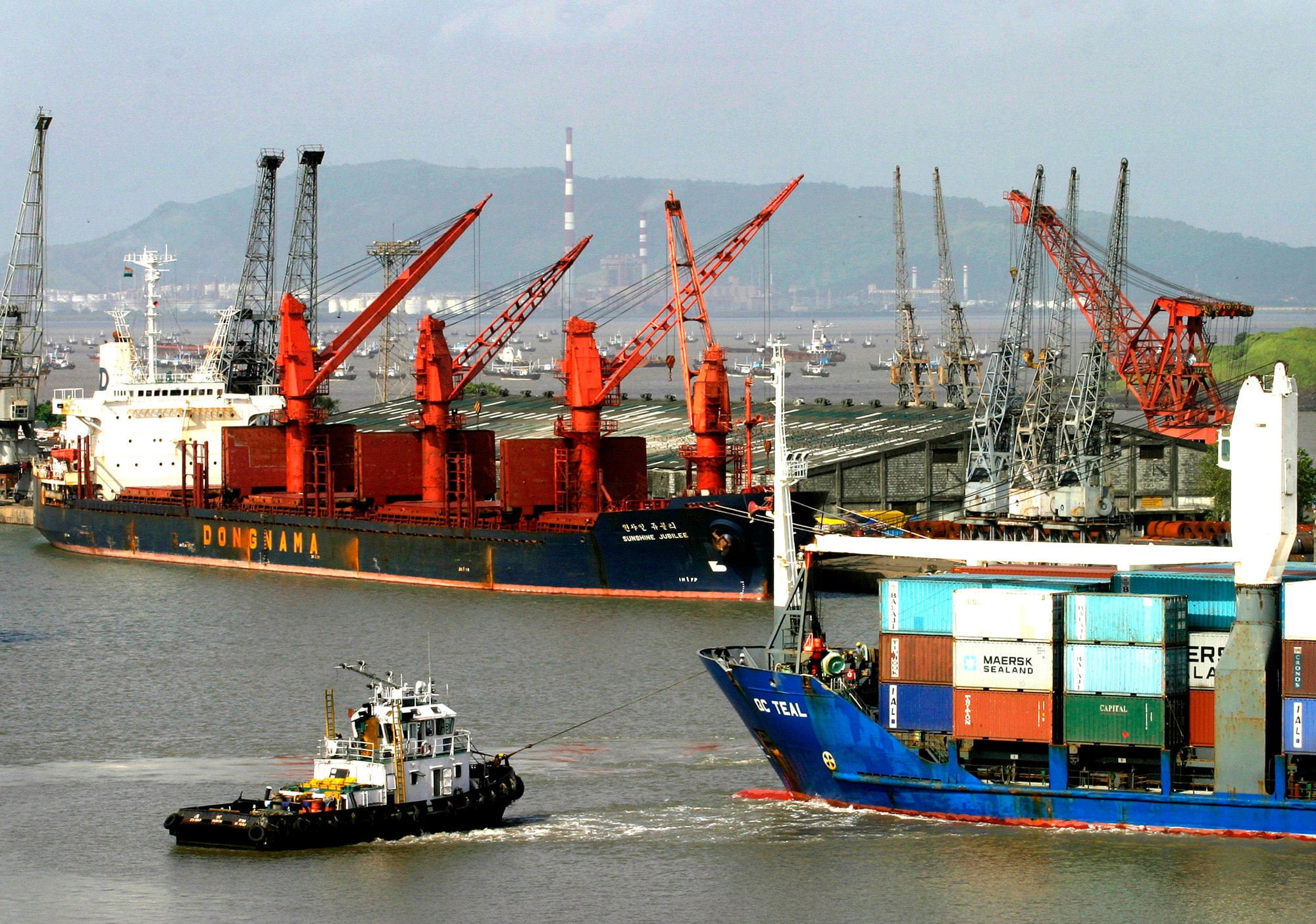
- 30 Sep 2025
In News:
In a major push to revive India’s maritime and shipbuilding sector, the Union Cabinet approved a ?69,725 crore package (September 2025) anchored on a comprehensive 4-Pillar Approach. The initiative aims to transform India into a global hub for shipbuilding and shipping services, enhance maritime self-reliance, and contribute to the vision of Aatmanirbhar Bharat.
Background
India’s maritime sector supports 95% of the nation’s trade by volume and 70% by value, making it a critical pillar of economic and strategic security. Recognized as the “mother of heavy engineering industries,” shipbuilding plays a pivotal role in employment generation, technological innovation, and defence capability. The new package seeks to address long-standing gaps in financing, infrastructure, and capacity to strengthen domestic shipyards and maritime logistics.
Objectives
- Expand domestic shipbuilding capacity to 4.5 million Gross Tonnage (GT) by 2036.
- Generate nearly 30 lakh employment opportunities.
- Mobilize ?4.5 lakh crore in investments.
- Build resilient maritime supply chains ensuring national, energy, and food security.
- Advance India’s position as a competitive and sustainable maritime economy.
The Four Pillars of the Package
1. Shipbuilding Financial Assistance Scheme (SBFAS)
- Extended till: 31 March 2036
- Corpus: ?24,736 crore
- Purpose: Incentivize shipbuilding within India by providing financial support to Indian shipyards.
- Key Feature: Introduction of a Shipbreaking Credit Note worth ?4,001 crore to encourage sustainable ship recycling and capacity utilization.
2. Maritime Development Fund (MDF)
- Corpus: ?25,000 crore
- Components:
- Maritime Investment Fund: ?20,000 crore, with 49% Government of India participation.
- Interest Incentivization Fund: ?5,000 crore to reduce the cost of borrowing and improve project bankability.
- Objective: Provide long-term financing for shipbuilding, port infrastructure, and related logistics services.
3. Shipbuilding Development Scheme (SbDS)
- Outlay: ?19,989 crore
- Aim: Expand India’s domestic shipbuilding capacity and support mega shipbuilding clusters.
- Key Features:
- Establishment of the India Ship Technology Centre under the Indian Maritime University (IMU).
- Support for greenfield and brownfield shipyards.
- Insurance and risk coverage for shipbuilding projects.
- Focus on skill development and adoption of advanced shipbuilding technologies.
4. National Shipbuilding Mission and Reforms
- A National Shipbuilding Mission will coordinate implementation and monitor outcomes of all initiatives under the package.
- Focus areas include:
- Taxation, legal, and policy reforms to streamline procedures.
- Capacity enhancement through modern shipyard development.
- Human resource and skill training to strengthen India’s maritime workforce.
- Promotion of green and sustainable shipbuilding practices aligned with global standards.
Expected Impact
- Unlock 4.5 million GT of annual shipbuilding capacity.
- Create nearly 30 lakh direct and indirect jobs across the maritime ecosystem.
- Boost investment inflows of ?4.5 lakh crore into ports, shipyards, and allied industries.
- Enhance strategic autonomy and reduce dependence on foreign shipbuilders.
- Strengthen geopolitical resilience, ensuring continuity of India’s trade, energy, and food supply chains during global disruptions.
- Foster innovation, sustainability, and competitiveness in line with “Make in India” and “Blue Economy” objectives.
Industrial Park Rating System 3.0
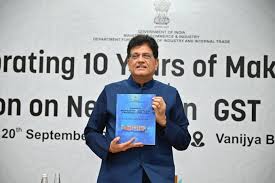
- 28 Sep 2025
In News:
- Recently, the Union Minister of Commerce and Industry, Shri Piyush Goyal, launched the Industrial Park Rating System (IPRS) 3.0 in New Delhi as part of the decade-long celebrations of the Make in India initiative.
- Developed by the Department for Promotion of Industry and Internal Trade (DPIIT) with support from the Asian Development Bank (ADB), IPRS 3.0 aims to benchmark and enhance the competitiveness of industrial parks across India.
Background and Evolution
The IPRS initiative began in 2018 as a pilot project, followed by IPRS 2.0 in 2021. The third edition builds upon these earlier versions by introducing a more comprehensive framework to assess industrial infrastructure, operational efficiency, and overall competitiveness.
Features of IPRS 3.0
IPRS 3.0 evaluates industrial parks based on multiple parameters, including:
- Sustainability and green infrastructure
- Logistics connectivity
- Digitalization
- Skill linkages
- Tenant feedback
Based on performance across these indicators, industrial parks are categorized into Leaders, Challengers, and Aspirers. This benchmarking enables stakeholders, including investors and policymakers, to access reliable and transparent data, identify best practices, and implement targeted interventions.
Significance for Industrial Development
The launch of IPRS 3.0 aligns with India’s broader strategy to create world-class industrial infrastructure. It provides States and Union Territories with an opportunity to:
- Showcase high-performing industrial parks
- Identify gaps for infrastructure improvement
- Attract domestic and foreign investments
- Generate employment
- Strengthen their industrial ecosystem
Assessment of Logistics Cost in India
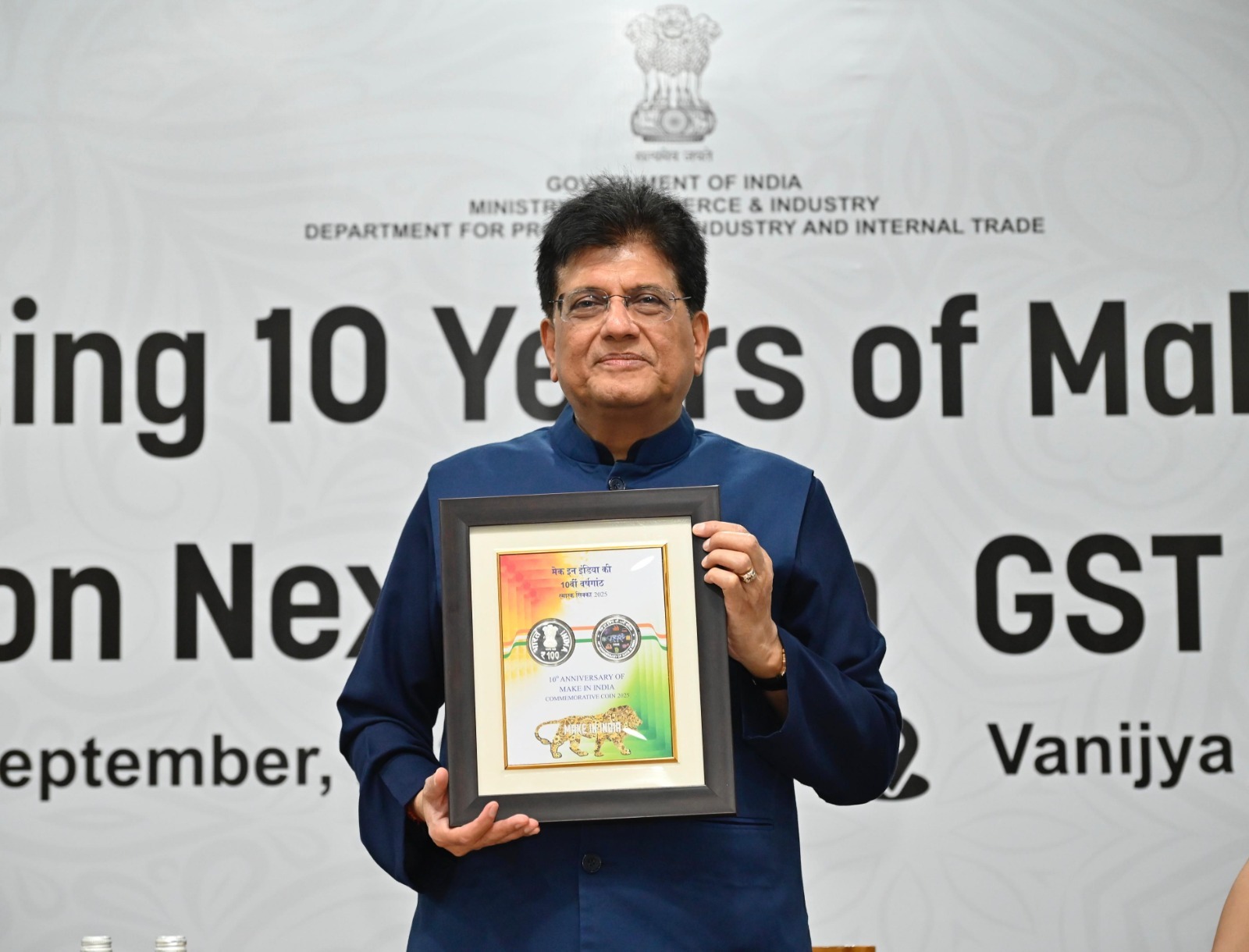
- 26 Sep 2025
In News:
- On the occasion of a decade of “Make in India”, the Union Minister of Commerce and Industry, Shri Piyush Goyal, launched the report on Assessment of Logistics Cost in India in September 2025.
- This marks the first scientifically derived national estimate of logistics costs, aligning with the objectives of the National Logistics Policy (NLP), 2022, to make India’s logistics sector globally competitive, data-driven, and cost-efficient.
About the Report
- Prepared by: Department for Promotion of Industry and Internal Trade (DPIIT) and the Department of Commerce.
- Methodology: Uses a hybrid approach, combining secondary data analysis with nationwide enterprise surveys to ensure scientific estimation.
- Objective: To establish a uniform national framework for measuring logistics costs and benchmarking them with global standards, in line with the NLP (2022).
Key Findings
- Logistics Cost Estimate (2025): Around 7.97% of India’s GDP.
- Previous Estimates: Older, often-cited figures of 13–14% of GDP were based on partial or external datasets, leading to inconsistent policy assessments.
- Trend Analysis: Over the past five years, logistics cost growth has slowed relative to non-services output, indicating improved sectoral efficiency.
Significance
This assessment provides evidence-based guidance for:
- Policy formulation on logistics modernization.
- Competitiveness enhancement of Indian exports.
- Strategic inputs for Free Trade Agreement (FTA) negotiations through the mapping of HSN codes to respective ministries.
- Development of logistics data banks and state logistics plans under the SMILE Programme (with ADB support).
Achievements and Improvements in India’s Logistics Sector
- Improved Global Ranking:India ranked 38th out of 139 countries in the 2023 World Bank Logistics Performance Index (LPI), up by six positions from 2018.
- Infrastructure Expansion:
- Cargo through Inland Waterways (2024–25):145.5 million tonnes.
- Operational National Waterways: Increased from 24 to 29.
- Digital Integration:
- Unified Logistics Interface Platform (ULIP): Consolidates logistics data across ministries, recording over 100 crore API transactions (2025).
- Facilitates end-to-end visibility and efficiency in multimodal logistics.
- Human Resource Development:Gati Shakti Vishwavidyalaya (GSV): India’s first logistics-focused university, has signed 40 MoUs with industry and academia to develop skilled manpower for transport and supply chain sectors.
Key Government Initiatives Driving Efficiency
1. PM GatiShakti National Master Plan (2021)
- Integrates 57 ministries/departments and all States/UTs on a digital GIS platform.
- Enables coordinated infrastructure planning acrossroads, railways, ports, airports, and inland waterways.
2. Dedicated Freight Corridors (DFCs)
- Two major DFCs under development by Indian Railways to:
- Ease congestion on passenger routes.
- Reduce freight cost and transit time.
- Improve energy efficiency and modal balance.
3. Multi-Modal Logistics Parks (MMLPs)
- 35 strategic locations approved (e.g., Chennai, Bengaluru, Nagpur, Indore).
- Five parks expected to become operational by 2027, promoting multimodal transport and value-added logistics services.
4. Maritime Amrit Kaal Vision 2047
- Long-term blueprint aligned with Blue Economy principles.
- Focuses on shipbuilding, coastal tourism, port-led development, and maritime skill-building to position India as a global maritime hub.
5. Sustainability and Green Initiatives
- Freight GHG Calculator: Estimates and compares transportation emissions to support eco-friendly logistics decisions.
- Rail Green Points: Helps freight customers assess carbon savings when using rail instead of road transport.
Challenges in India’s Logistics Sector
- High Logistics Cost (Legacy Issue): Historically estimated at 13–14% of GDP—higher than global benchmarks (8–9%).
- Infrastructure Gaps: Deficiency in warehousing, cold chain, and last-mile connectivity.
- Overdependence on Road Transport: Causes congestion, higher costs, and carbon emissions.
- Limited Multimodal Integration: Underutilization of railways and inland waterways for freight.
- Environmental Impact: Diesel-based trucking remains a major source of logistics-related emissions.
Objectives of the National Logistics Policy (NLP) 2022
- Reduce logistics cost to below 10% of GDP.
- Improve India’s LPI ranking to Top 25 by 2030.
- Build a robust, data-driven logistics decision-support system.
- Promote multimodal connectivity, sustainability, and ease of doing business.
Way Forward
- Integrated Infrastructure: Expansion of GatiShakti corridors and MMLPs to enable seamless multimodal movement.
- Digital Logistics Ecosystem: Wider adoption of ULIP, AI-driven route optimization, and e-logistics tracking.
- Green Logistics: Shift towards rail and waterways, adoption of electric and LNG-based freight vehicles, and GHG monitoring tools.
- Skill Development: Strengthening logistics education via GSV and industrial-academic partnerships.
- Policy Consistency: Periodic, data-backed cost assessments to guide long-term logistics and trade policy decisions.
Semiconductor Designers Power India’s Chip Dreams

- 24 Sep 2025
In News:
India’s semiconductor ecosystem is witnessing a transformative shift — from being a consumer-driven electronics market to an emerging design and manufacturing hub. While the country’s large-scale semiconductor fabrication projects are still in early stages, the chip design sector is already thriving, positioning India as a critical player in the global semiconductor value chain.
Policy Framework: Semicon India Mission
The turning point came in 2021, when the Government of India launched the ?76,000 crore Semicon India Programme, aimed at developing India into a global hub for electronics design and manufacturing.
- Manufacturing Push:The mission provides 50% capital support for semiconductor fabrication (fab) and assembly, testing, marking, and packaging (ATMP/OSAT) facilities, with states adding 20–25% additional incentives.
- Ten major projects have been approved across Gujarat, Punjab, Uttar Pradesh, Odisha, Andhra Pradesh, and Assam.
- Notably, Micron’s ?22,500 crore ATMP facility in Gujarat is under construction and expected to begin operations in 2024.
- Design Support:The Design Linked Incentive (DLI) and Chips to Startup (C2S)programmes aim to nurture a new generation of semiconductor designers.
- The C2S initiative provides free access to high-end Electronic Design Automation (EDA) tools from Siemens, Cadence, and Synopsys, while targeting the training of 85,000 engineers in five years.
India’s Edge in Semiconductor Design
- India today accounts for 20% of the global semiconductor design workforce, hosting around 1.25 lakh chip designers who develop nearly 3,000 chips annually.
- Multinational firms like NVIDIA, Intel, AMD, and Qualcomm run large R&D operations from India, spread across Bengaluru, Hyderabad, Pune, and Noida.
- Even as the world faces a projected shortage of one million chip designers by 2030 (Deloitte), India’s deep talent pool offers a natural advantage.
- The country produces over 8 lakh engineering graduates annually, with around 5.7 lakh enrolled in electronics and related disciplines (2021–22).
Academia–Industry Collaboration: Bridging the Gap
- Despite government efforts, experts underline a persistent disconnect between academia and industry. Indian industries invest only 0.4% of profits in academic R&D, compared to 5–6% in the U.S. and South Korea.
- Strengthening collaboration — through joint research, funded Ph.D. programs, and internship pipelines — is essential to make graduates industry-ready and sustain innovation.
- Institutions like IITs, IISc, and IIITs have begun partnerships with leading toolmakers such as Synopsys, Lam Research, and Cadence to enable frontier-level projects at sub-10 nanometer design nodes.
Economic and Strategic Implications
- High-Value Employment: Semiconductor jobs have a multiplier effect of 6.7, driving indirect employment in allied sectors.
- Export Potential: Electronics exports are projected to quintuple by 2026, narrowing India’s trade deficit.
- Strategic Autonomy: Domestic chip capacity reduces dependence on foreign suppliers, vital for defence, telecom, and automotive sectors.
- Innovation Push: With rising patent filings and homegrown IP, India is consolidating its role in the global tech value chain.
India’s Manufacturing Momentum
- 23 Sep 2025
In News:
- India’s manufacturing sector has entered a phase of accelerated growth, driven by policy reforms, robust industrial performance, and rising global investor confidence.
- Recent data for July 2025 shows the Index of Industrial Production (IIP) growing 3.5% year-on-year, led by a 5.4% surge in manufacturing output.
- Simultaneously, the HSBC Manufacturing PMI reached 59.3, its highest in 16 months, signalling sustained expansion in factory activity and optimism among producers.
Current Performance Snapshot
|
Indicator |
Latest Data (2025) |
Trend/Significance |
|
IIP Growth |
3.5% (July 2025) |
Recovery in industrial output |
|
Manufacturing Growth |
5.4% |
Rising demand and capacity utilization |
|
Merchandise Exports (Apr–Aug) |
US$ 184.13 billion (+2.52% YoY) |
Strong export resilience |
|
Unemployment Rate |
5.1% (Male UR: 5.0%) |
5-month low; inclusive job growth |
|
FDI Inflows (FY25) |
US$ 81.04 billion (+14% YoY) |
Investor confidence improving |
|
Manufacturing FDI |
US$ 19.04 billion (+18%) |
Strengthening industrial base |
Engines of Growth
1. Electronics: Digital Factory Revolution
India’s electronics sector has witnessed exponential growth:
- Production rose from ?1.9 lakh crore (2014–15) to ?11.3 lakh crore (2024–25) — a 6x jump.
- Mobile phone manufacturing expanded from 2 units to over 300, while exports skyrocketed 127 times (?1,500 crore → ?2 lakh crore).
- Import dependence fell from 75% to 0.02%, reflecting strong domestic capacity.
- FDI inflow of US$ 4 billion since FY2020–21, largely under the PLI Scheme, has made India the world’s second-largest mobile manufacturer.
2. Pharmaceuticals: The Global Health Anchor
India ranks 3rd globally by volume and 14th by value in pharma production, supplying 50% of the world’s vaccines and 40% of U.S. generics.
- Projected to reach US$ 130 billion by 2030 and US$ 450 billion by 2047.
- Backed by PLI (?15,000 crore) and SPI (?500 crore) schemes for high-value drug manufacturing, quality enhancement, and R&D modernisation — consolidating India’s status as the “Pharmacy of the World.”
3. Automobiles: Driving Industrial Scale
The automotive sector contributes 7.1% to GDP and 49% of manufacturing GDP.
- In FY25, production exceeded 3.10 crore units, making India the 4th-largest automobile producer globally.
- GST 2.0’s tax reduction on vehicles and components is expected to boost consumer demand and accelerate production.
4. Textiles: Weaving Inclusive Growth
The textile and apparel industry contributes2.3% to GDP, 13% to industrial production, and 12% to exports, employing 45 million people.
- With a growth target of US$ 350 billion by 2030, the sector benefits from PM MITRA Parks (?4,445 crore), aimed at attracting ?70,000 crore investment and creating 20 lakh jobs.
- The recently inaugurated Dhar PM MITRA Park (Madhya Pradesh) is projected to generate 3 lakh jobs across 1,300 acres.
Investment, Employment, and Skills
- FDI Surge: Total inflows (2014–25) reached US$ 748.78 billion, up 143% from the previous decade.
- Top FDI sources: Singapore (30%), Mauritius (17%), U.S. (11%).
- Employment Creation: 17 crore jobs added over the last decade.
- Worker Population Ratio (WPR): 52.2% overall; Female WPR: 32%.
- Manufacturing’s job share: Up from 6% (2004–14) to 15% (2014–24).
- Skill Development Push: The Skill India 4.0 framework (?8,800 crore outlay) integrates major schemes (PMKVY 4.0, Apprenticeship, Jan ShikshanSansthan) to create an industry-aligned workforce equipped for Industry 4.0 technologies.
Policy Catalysts Powering the Surge
1. GST 2.0: Rationalisation for Growth
Launched in September 2025 under the banner “GST Bachat Utsav”, the reform simplifies tax slabs and lowers rates on 375+ items.
Impact on Manufacturing:
- Reduced Input Costs: 5% GST on packaging, textiles, and logistics lowers production expenses.
- MSME Boost: Faster refunds and simplified compliance enhance liquidity.
- Auto Sector Support: Lower taxes on small vehicles and parts drive consumption.
- Logistics Efficiency: Reduced GST on trucks and delivery vans enhances competitiveness.
2. National Manufacturing Mission (NMM)
The NMM provides a strategic, cross-ministerial roadmap integrating sustainability with industrial expansion. It promotes green manufacturing in solar PV, EV batteries, and hydrogen — aligning with India’s Net Zero 2070 goal.
3. Production Linked Incentive (PLI) Scheme
Covering 14 sectors with an outlay of ?1.97 lakh crore, the PLI scheme has:
- Boosted exports (e.g., smartphones > ?1 lakh crore in FY26 first half).
- Shifted pharma from trade deficit to surplus.
- Generated large-scale investments and jobs in electronics, autos, and medical devices.
4. National Logistics Policy (NLP)
Aims to reduce logistics cost (~13–14% of GDP) to single digits, improving LPI ranking to top 25 by 2030.
The PM GatiShakti Plan and Comprehensive Logistics Action Plan (CLAP) strengthen multi-modal connectivity and digital coordination.
5. Startup India & Industrial Corridors
- Over 1.91 lakh startups and 17.69 lakh direct jobs (as of 2025).
- 12 new industrial corridor projects worth ?28,602 crore approved to create smart, sustainable manufacturing cities.
Challenges Ahead
- Infrastructure Costs: Logistics remains costlier than global average, affecting export competitiveness.
- Skill Mismatch: Need for advanced training in automation, robotics, and AI.
- Regulatory Friction: Land and compliance issues constrain MSMEs.
- Global Headwinds: Trade protectionism and geopolitical volatility may disrupt export growth.
- Sustainability Imperative: Transition to low-carbon manufacturing critical to meet Net Zero goals.
Way Forward
- Plug-and-Play Manufacturing Parks: Accelerate park development with ready utilities for MSMEs.
- Skill India 4.0: Modernize ITIs, establish Centres of Excellence in robotics, AI, and green manufacturing.
- Tariff Rationalization: Lower duties on industrial raw materials to strengthen global competitiveness.
- Strengthen MSME Ecosystem: Provide concessional finance, technology upgradation, and global market access.
- Global Integration: Conclude FTAs (UK, EU) and join supply-chain alliances to diversify markets.
- Energy Diplomacy: Secure long-term access to crude oil, gas, and critical minerals.
GST 2.0
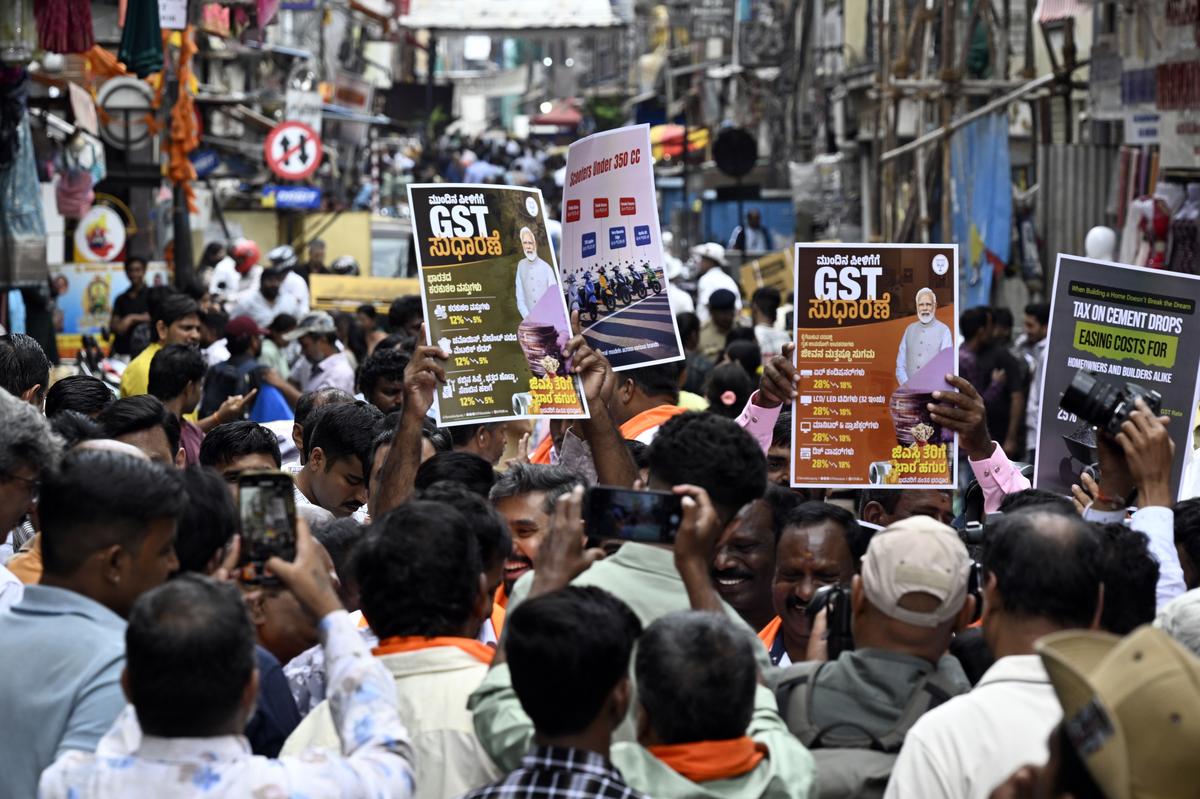
- 23 Sep 2025
In News:
The Government of India launched GST 2.0, marking a significant revamp of the Goods and Services Tax framework. Prime Minister Narendra Modi described the initiative as the “GST Bachat Utsav”, highlighting its focus on savings, simplicity, and growth.
Overview
- GST 2.0 represents the most comprehensive reform since the introduction of the Goods and Services Tax in 2017.
- It focuses on rationalising tax rates, reducing compliance burden, and boosting consumption and investment by lowering tax rates on more than 375 items.
Objectives
- Enhance household savings: By cutting rates on essential goods and services, it seeks to leave more disposable income with consumers, thereby stimulating demand.
- Simplify the tax framework: Aligns similar goods under the same slab to minimise disputes and litigation.
- Promote ease of doing business: Reduces procedural complexities and enhances transparency through digital solutions.
Key Features
- Simplified Tax Structure:Moves towards a broad two-slab system—5% (merit rate) and 18% (standard rate)—with a 40% slab for demerit or luxury goods.
- Consumer-Centric Relief:Tax reductions on essential food items, life and health insurance, and beauty and wellness services.
- Technology-Driven Compliance:Introduces digital registration, pre-filled returns, and automated refund systems, including 90% provisional refunds for Integrated Dispute Settlement (IDS) cases.
- Input-Output Correction:Aligns related goods under the same tax bracket to avoid input-output tax mismatches.
- Support for Key Sectors:Rate cuts to encourage investment and growth in textiles, agriculture, construction, and services industries.
Revised Tax Slabs
|
Rate |
Category / Examples |
|
0.25% |
Rough diamonds, precious stones |
|
1.5% |
Cut and polished diamonds |
|
3% |
Precious metals (gold, silver, pearls) |
|
5% |
516 items including food, agricultural machinery, medical devices, hydrogen vehicles, health & life insurance, salons |
|
18% |
640 items including machinery, chemicals, paints, automobile parts, small cars/bikes |
|
40% (Demerit Rate) |
Pan masala, tobacco, aerated beverages, luxury yachts, private aircraft, high-end vehicles |
|
Special Provision |
Bricks remain under dual option — 6% (without ITC) or 12% (with ITC) |
Significance: GST 2.0 is expected to spur demand, enhance compliance, and boost industrial growth, positioning India’s indirect tax system among the most simplified globally.
Pradhan Mantri Mudra Yojana (PMMY)
- 22 Sep 2025
In News:
Launched in 2015, the Pradhan Mantri Mudra Yojana (PMMY) is a flagship financial inclusion initiative of the Government of India. The scheme seeks to provide affordable credit to micro and small enterprises (MSEs) engaged in non-farm income-generating activities, thereby integrating them into the formal financial ecosystem.
Objective
- PMMY aims to “fund the unfunded” by facilitating access to institutional credit for small entrepreneurs who traditionally lack collateral or formal financial history.
- The scheme empowers these enterprises through loans provided by Public Sector Banks (PSBs), Regional Rural Banks (RRBs), Cooperative Banks, Private Banks, Foreign Banks, Micro Finance Institutions (MFIs), and Non-Banking Financial Companies (NBFCs).
Key Features and Loan Details
- Loan Amount: Up to ?10 lakh for non-farm income-generating activities across sectors such as manufacturing, processing, trading, and services.
- Eligibility: Any Indian citizen with a viable business plan for such activities can apply for a MUDRA loan through approved institutions.
- Subsidy: PMMY does not directly offer subsidies; however, if linked to other government schemes with capital subsidies, those benefits can be availed concurrently.
Categories of MUDRA Loans
|
Category |
Loan Range |
Target Group |
|
Shishu |
Up to ?50,000 |
New or micro enterprises in the early stage |
|
Kishore |
?50,000 – ?5 lakh |
Businesses seeking growth or consolidation |
|
Tarun |
?5 lakh – ?10 lakh |
Enterprises looking to expand operations |
Achievements under MUDRA 1.0
- Credit Outreach: Over ?27.75 lakh crore has been disbursed to nearly 47 crore beneficiaries, expanding access to formal credit for small entrepreneurs.
- Social Inclusion: Around 69% of loan accounts are held by women, while 51% belong to SC, ST, and OBC categories — strengthening financial inclusion and social equity.
- Employment Generation: The scheme has spurred job creation and self-employment, particularly in rural and semi-urban areas, fostering local entrepreneurship and economic decentralisation.
Vision for MUDRA 2.0
To further enhance the scheme’s reach and impact, the proposed MUDRA 2.0 envisions the following reforms:
- Wider Outreach: Greater focus on underserved rural and semi-urban regions through digital platforms and community-level facilitation.
- Financial Literacy & Mentorship: National-level programmes to improve awareness about budgeting, savings, digital transactions, and credit management to ensure sustainable enterprise growth.
- Enhanced Credit Guarantee Scheme (ECGS): A robust guarantee mechanism to minimise lender risk and encourage more credit flow to micro enterprises.
- Real-Time Monitoring Framework: Technology-driven systems for tracking disbursal, utilisation, and repayment to ensure transparency and reduce misuse.
- Impact Evaluation: Periodic socio-economic assessments to measure outcomes on income generation, employment, and business viability.
Five Years of Blue Revolution 2.0
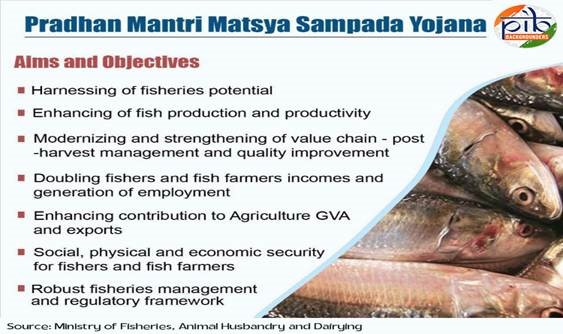
- 14 Sep 2025
In News:
India’s fisheries sector has been a key driver of food security, livelihoods, and exports. The Blue Revolution (2015) enhanced fish production and modernized infrastructure but left gaps in post-harvest management, market access, fisher welfare, and sustainability.
To bridge these, the government launched the Pradhan Mantri MatsyaSampada Yojana (PMMSY) in September 2020, with an investment of ?20,050 crore. It sought to make the sector ecologically sustainable, economically viable, and socially inclusive. The scheme has now been extended up to 2025–26.
Objectives
PMMSY aims to:
- Harness fisheries potential in a sustainable, equitable, and responsible manner.
- Enhance fish production, diversification, and efficient use of land and water.
- Strengthen value chains through modernized post-harvest infrastructure and quality improvements.
- Double incomes of fishers and generate large-scale employment.
- Enhance contribution to Agriculture GVA and exports.
- Provide social, physical, and economic security for fishers.
- Establish a robust fisheries management and regulatory framework.
The scheme functions through two components:
- Central Sector Scheme (CS): Fully funded by the Centre.
- Centrally Sponsored Scheme (CSS): Cost-sharing with states, further divided into beneficiary and non-beneficiary oriented activities.
Milestones and Achievements
In its first five years, PMMSY has significantly reshaped India’s fisheries sector:
- Production: Fish output rose from 141.64 lakh tonnes (2019–20) to a record 195 lakh tonnes in 2024–25, making India the second-largest fish producer globally (8% of world production).
- Exports: Grew from ?46,662 crore (2019–20) to ?60,524 crore (2023–24), strengthening India’s global seafood footprint.
- Livelihoods: Created nearly 58 lakh jobs and supported 99,018 women beneficiaries, with up to 60% subsidy support for women entrepreneurs.
- Technology adoption: Supported 52,058 reservoir cages, 22,057 RAS &Biofloc units, 1,525 sea cages, and raceways, making aquaculture more productive and climate-resilient.
- Post-harvest infrastructure: Approved projects worth over ?3,281 crore for 58 fishing harbours, 734 cold storages, 21 wholesale fish markets, 192 retail markets, 6,410 kiosks, and digital fish trade platforms.
- Community resilience: Declared 100 Climate Resilient Coastal Fishermen Villages and promoted sustainable technologies like Biofloc, which reduces water use and boosts productivity.
Supplementary Initiatives
- Pradhan Mantri MatsyaKisanSamridhiSah Yojana (PM-MKSSY): Launched in 2024 as a central sub-scheme with an outlay of ?6,000 crore (2023–27). Focuses on formalisation, aquaculture insurance, value chain efficiency, and quality assurance.
- National Fisheries Digital Platform (NFDP): Introduced in 2024 to digitise the sector, provide work-based digital identities, enhance credit access, ensure traceability, and integrate cooperatives. By September 2025, it had 2.7 million registrations.
Challenges
- Climate stress: Rising sea temperatures and extreme weather threaten coastal ecosystems.
- Infrastructure gaps: Cold storage and transport remain inadequate in remote areas.
- Overfishing: Risks depletion of marine resources.
- Limited reach: Many small-scale fishers lack awareness and access to formal schemes.
Perpetual Bonds
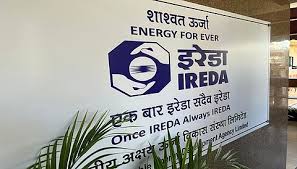
- 13 Sep 2025
In News:
- The Indian Renewable Energy Development Agency Ltd (IREDA) has successfully raised ?453 crore through its second issue of Perpetual Bonds at an annual coupon of 7.70%.
- The issue received bids worth ?1,343 crore against the base size of ?100 crore and a Green Shoe option of ?400 crore, resulting in an oversubscription of 2.69 times.
- This fund infusion will help IREDA strengthen its capital base and enhance its ability to finance green and renewable energy projects, in line with India’s clean energy transition goals.
What are Perpetual Bonds?
- Definition: A type of fixed-income security with no maturity date, paying interest indefinitely. They are also called “perps” or “consol bonds.”
- Redemption: Issuers are not obligated to repay the principal, though most bonds have a call option after 5–10 years, allowing issuers to redeem them if market conditions are favorable.
- Returns & Risk:
- Offer higher interest rates to compensate for indefinite tenure.
- Highly sensitive to interest rate fluctuations.
- In case of bankruptcy, bondholders are paid after secured creditors but before shareholders.
- Accounting Perspective: Often treated as equity-like instruments on balance sheets, making them attractive for strengthening capital structure without diluting ownership.
- Usage in India: Commonly issued by banks and financial institutions to meet capital requirements.
Significance of IREDA’s Move
- Capital Strengthening: Provides a stable, long-term source of funds without creating repayment obligations.
- Boost to Renewable Energy: Ensures greater financing availability for solar, wind, bioenergy, and emerging green technologies.
- Market Confidence: Oversubscription reflects investor trust in India’s renewable energy sector and in IREDA’s financial stability.
- Policy Alignment: Supports India’s commitment to achieve 500 GW of renewable capacity by 2030 and transition towards net-zero by 2070.
India’s first port-based Green Hydrogen Pilot Project
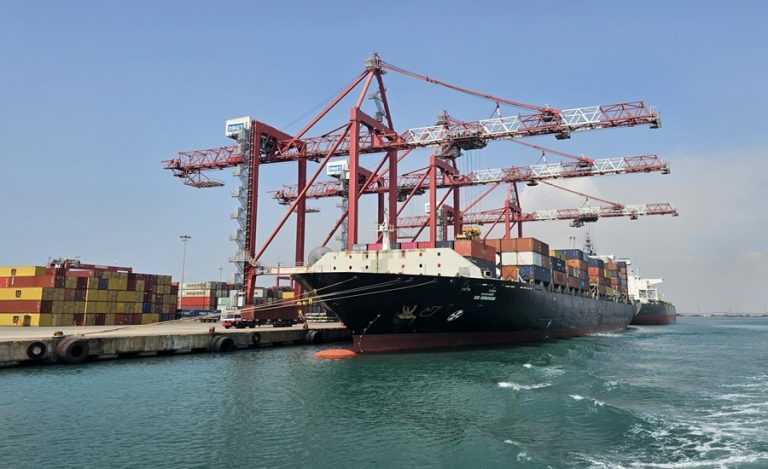
- 12 Sep 2025
In News:
Union Minister for Ports, Shipping and Waterways, SarbanandaSonowal, inaugurated India’s first port-based Green Hydrogen Pilot Project at V.O. Chidambaranar (VOC) Port, Tuticorin, Tamil Nadu, marking a significant step in India’s clean energy transition and green shipping ambitions.
Key Features of the Project
- Capacity: 10 Nm³ per hour.
- Cost: ?3.87 crore.
- Uses: The green hydrogen produced will power streetlights and an EV charging station in the port colony.
- Significance: VOC Port becomes the first Indian port to generate green hydrogen, aligning with India’s vision of Viksit Bharat 2047 and clean energy leadership.
Associated Green Initiatives at VOC Port
- Green Methanol Bunkering and Refuelling Facility
- Capacity: 750 m³, at a cost of ?35.34 crore.
- Expected to make VOC Port a green bunkering hub in South India.
- Linked to the proposed Coastal Green Shipping Corridor (Kandla–Tuticorin).
- Renewable Energy and Infrastructure Projects
- 400 KW rooftop solar plant, raising total capacity to 1.04 MW (highest among Indian ports).
- Foundation for a 6 MW wind farm.
- ?24.5 crore link conveyor to improve coal handling efficiency.
- ?90 crore multi-cargo berth and 3.37 km four-lane road for port connectivity.
- Upcoming Tamil Nadu Maritime Heritage Museum to showcase maritime history.
Strategic Importance
- Port Modernisation: Chennai, Kamarajar, and VOC ports have seen rapid expansion under the SagarmalaProgramme.
- 98 projects worth ?93,715 crore initiated in Tamil Nadu’s ports in the past 11 years.
- 50 projects completed; ?16,000 crore invested in modernisation and capacity building.
- Economic Impact:
- Expected to generate thousands of jobs.
- Attract global investments in green shipping and clean fuels.
- Strengthen India’s ambition of becoming a top 10 shipbuilding nation by 2030 and top 5 by 2047.
About V.O. Chidambaranar (VOC) Port
- Location: Tuticorin, Tamil Nadu, on the Coromandel Coast.
- Status: One of India’s 13 major ports, serving as a key maritime hub for South India.
- History: Formerly Tuticorin Port, renamed in 2011 after freedom fighter V.O. Chidambaranar (KappalottiyaTamizhan).
- Role: Major centre for coal handling, container trade, and now emerging as a green energy hub.
Niveshak Didi- Phase II
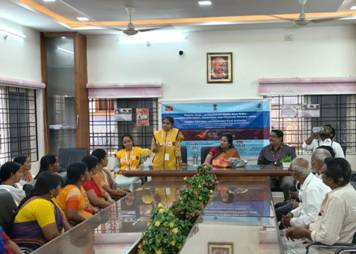
- 09 Sep 2025
In News:
The Investor Education and Protection Fund Authority (IEPFA), under the Ministry of Corporate Affairs, has launched Phase II of its flagship financial literacy initiative,Niveshak Didi, in Hyderabad. The program targets rural communities, with a special emphasis on women’s financial empowerment.
Objective and Significance
- Aim: To deepen financial awareness and enable women to make informed financial decisions, safeguard savings, and actively participate in the financial ecosystem.
- Approach: Based on the principle of “women for women”, recognizing that rural women are more comfortable discussing financial matters with female educators.
- Significance: Acts as a catalyst for bridging knowledge gaps, building confidence, and promoting financial resilience in rural communities.
Launch Highlights
Key points from the launch:
- Financial literacy sessions were conducted in Telugu to facilitate understanding.
- Emphasis on fraud prevention, safe investments, and digital financial literacy.
- IPPB’s extensive rural network ensures last-mile delivery of financial education and services.
Key Features of Phase II
- Expanded outreach to more villages and rural areas.
- Interactive training modules to improve engagement.
- Collaboration with grassroots organizations for maximum impact.
- Focus on savings, investment safety, fraud prevention, and digital transactions.
About IEPFA
- Established: 2016 under the Companies Act, 2013
- Functions:
- Manage the Investor Education and Protection Fund (IEPF)
- Facilitate refunds of unclaimed dividends, shares, matured deposits, and debentures
- Promote financial literacy and investor protection
- Major Initiatives:Niveshak Didi, Niveshak Panchayat, NiveshakShivir
Incentive Scheme to Promote Critical Mineral Recycling

- 08 Sep 2025
In News:
- The Union Cabinet has approved a ?1,500 crore Incentive Scheme to promote critical mineral recycling in India, marking a significant step towards reducing import dependence and ensuring sustainable supply chain resilience.
- The scheme forms part of the broader National Critical Mineral Mission (NCMM), which seeks to build domestic capacity in exploration, mining, acquisition of foreign assets, and recycling of critical minerals.
Key Features of the Scheme
- Tenure: Six years, from FY 2025-26 to FY 2030-31.
- Outlay: ?1,500 crore.
- Eligible Feedstock:
- E-waste
- Lithium-ion battery (LIB) scrap
- Other scrap sources such as catalytic converters from end-of-life vehicles.
- Beneficiaries:
- Large, established recyclers.
- Small/new recyclers and start-ups (allocated one-third of scheme outlay).
- Applicability: Investments in new units, as well as expansion, modernization, or diversification of existing units.
Incentive Structure
- Capex Subsidy:
- 20% subsidy on plant, machinery, equipment, and utilities for projects that commence production within the stipulated timeframe.
- Delays will lead to reduced subsidies.
- Opex Subsidy:
- Linked to incremental sales over FY 2025-26 baseline.
- 40% subsidy in the 2nd year (FY 2026-27).
- 60% subsidy in the 5th year (FY 2030-31), subject to achieving threshold sales.
- Ceilings per Entity:
- Large recyclers – ?50 crore (with ?10 crore cap on Opex subsidy).
- Small recyclers/start-ups – ?25 crore (with ?5 crore cap on Opex subsidy).
- Scope: Incentives are limited to the extraction of critical minerals, not just black mass production.
Expected Outcomes
- Development of 270 kilotons of annual recycling capacity.
- Production of around 40 kilotons of critical minerals annually.
- Mobilization of about ?8,000 crore investment.
- Creation of nearly 70,000 direct and indirect jobs.
Significance
- Strategic Minerals Security: Provides near-term solutions to bridge supply-demand gaps until new mines and foreign acquisitions materialize.
- Circular Economy Boost: Promotes recycling of high-value e-waste and LIB scrap, reducing environmental load.
- Atmanirbhar Bharat: Strengthens domestic industries in electronics, renewable energy, and EV sectors by ensuring reliable access to lithium, cobalt, nickel, and other critical minerals.
- Inclusivity: Special provisions for start-ups and small recyclers to encourage innovation and wider participation.
Equity Derivatives
- 05 Sep 2025
In News:
The Securities and Exchange Board of India (SEBI) has introduced a new regulatory framework to monitor intraday positions in equity index derivatives, effective October 1, 2025. The move is aimed at mitigating systemic risks, ensuring orderly market functioning, and curbing speculative excesses, especially on expiry days.
Key Features of the Framework
- Net Intraday Position Cap: ?5,000 crore per entity in index options (compared to the existing end-of-day limit of ?1,500 crore).
- Gross Intraday Position Cap: Restricted to ?10,000 crore, the same as the current end-of-day limit. This applies separately to long and short positions.
- Applicability: Framework applies only to index options, which dominate India’s derivatives market.
- Objectives:
- Prevent creation of outsized intraday exposures.
- Provide predictability and operational clarity.
- Strike a balance between ease of trading and robust risk management.
- Facilitate market-making activity on all trading days while ensuring discipline on expiry days.
Understanding Derivatives
Derivatives are financial contracts whose value is derived from an underlying asset, such as stocks, indices, commodities, or currencies. They allow investors to speculate on price movements, hedge against risks, or enhance returns.
Types of Equity Derivatives
- Futures Contracts: Obligates buyer and seller to transact an equity asset at a predetermined price on a future date (e.g., Nifty and Sensex futures).
- Options: Provides the right, but not obligation, to buy (call) or sell (put) an underlying asset at a set price before or on expiry.
- Forwards: Similar to futures but non-standardised and over-the-counter (not exchange-traded).
- Swaps: Involves exchange of cash flows linked to equity returns; used for hedging or investments.
Significance of Equity Derivatives in Markets
- Leverage: Small upfront margin allows control over large positions, magnifying gains (and risks).
- Hedging: Protects portfolios from adverse price fluctuations.
- Arbitrage Opportunities: Exploit price mismatches across markets.
- Diversification: Enhances portfolio risk-spread.
- Liquidity: High trading volumes ensure ease of entry and exit.
- Income Generation: Writing options or structured strategies provide additional returns.
- Cost Efficiency: Lower transaction costs compared to direct investment in underlying assets.
Why SEBI’s Move Matters
- Risk Containment: Prevents destabilisation of markets due to oversized speculative positions.
- Systemic Stability: Reduces chances of flash crashes or manipulative trades, especially during contract expiries.
- Market Discipline: Introduces quantitative caps that align with global best practices.
- Investor Confidence: Ensures orderly trading, which is crucial for attracting both institutional and retail investors.
Pradhan Mantri Garib Kalyan Anna Yojana (PMGKAY)
- 05 Sep 2025
In News:
The Pradhan Mantri Garib Kalyan Anna Yojana (PMGKAY), launched in March 2020 as a COVID-19 relief measure, has evolved into one of the world’s largest food security initiatives.
Implemented under the National Food Security Act (NFSA), 2013, the scheme provides free rice and wheat to eligible households through the Public Distribution System (PDS). While it has ensured nutritional security for ~81 crore people, the soaring food subsidy bill (?2.03 lakh crore in FY26) has prompted the Union government to initiate a review for fiscal sustainability.
Key Features of PMGKAY
- Coverage: ~81.35 crore beneficiaries (75% rural, 50% urban population).
- Entitlements:
- Antyodaya Anna Yojana (AAY): 35 kg per family per month.
- Priority Households (PHH): 5 kg per person per month.
- Annual Distribution: 56–58 million tonnes of foodgrains.
- Mode of Delivery: ~5.4 lakh fair price shops (FPSs).
- Cost: Entirely free of cost since January 2023 (earlier, NFSA beneficiaries paid nominal prices).
- Transparency Measures: 83% Aadhaar-based e-KYC completed; 204 million household ration cards seeded.
Current Review and Concerns
- Rising Subsidy Burden
- Food subsidy bill has crossed ?2 lakh crore in FY26, widening the fiscal strain.
- Gap between economic cost (procurement, storage, transportation) and issue prices has grown, since prices were never revised after NFSA’s enactment.
- Ineligible Beneficiaries
- About 10% of the 800 million listed beneficiaries were found in government databases (taxpayers, vehicle owners, company directors, etc.).
- Several beneficiaries did not lift their share of grains for months.
- States like Rajasthan, Odisha, and Madhya Pradesh have started removing ineligible ration cards.
- Re-verification Drive
- States asked to reverify ration cards issued a decade ago to weed out ineligible households and add new ones.
- Field verification and inter-ministerial data convergence with CBDT, CBIC, MCA, Road Transport, and PM-Kisan databases are being carried out.
- Equity Concerns
- In some cases, single-member AAY households received 35 kg/month, raising questions on fairness.
- Conversely, deserving families remain excluded due to outdated lists.
Reform Measures Underway
- Database Cleansing: Aadhaar-based authentication to ensure rightful targeting.
- Infrastructure Creation: ?1.25 lakh crore project for modern grain storage in cooperatives and integration of PACS godowns into the supply chain.
- Policy Options:
- Introducing a partial cost-sharing model for better-off sections.
- Rationalising coverage to focus more on nutritional outcomes (shift to nutri-cereals).
- Savings redirected towards agri-R&D, irrigation, and value chain efficiency.
Japan Post Bank’s Digital Yen (DCJPY)
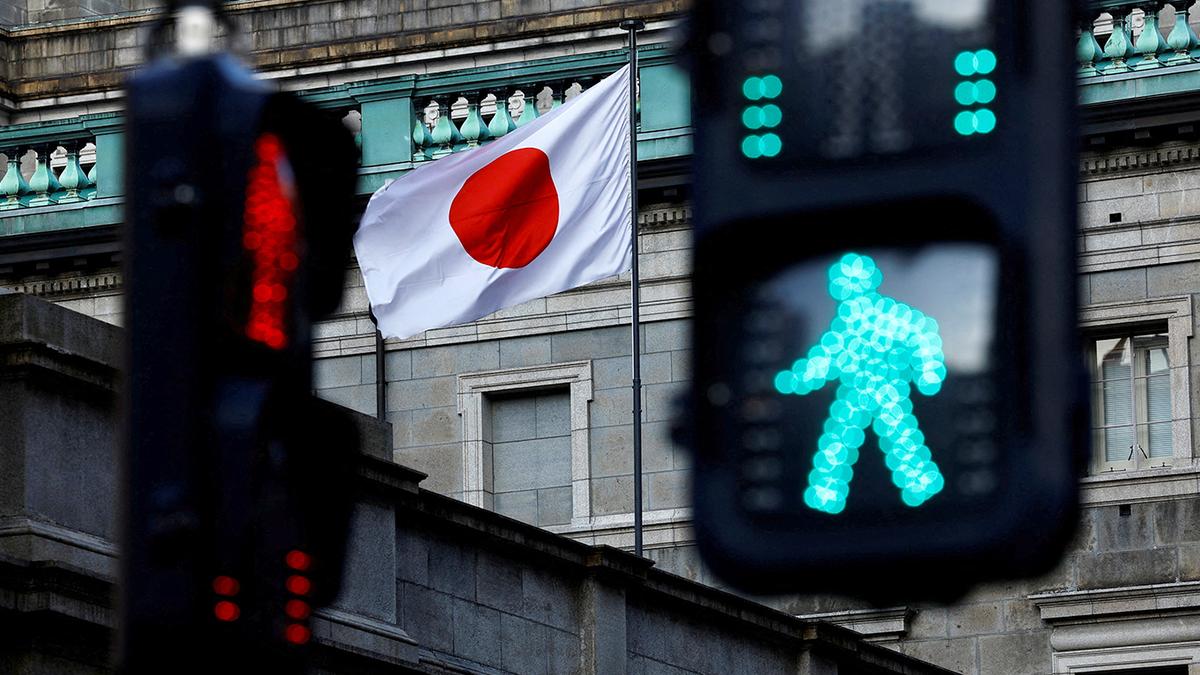
- 04 Sep 2025
In News:
Japan is set to make a significant leap in the digital finance space with the launch of a blockchain-based digital yen (DCJPY) by fiscal 2026. Announced by the Japan Post Bank—a major financial institution with significant government shareholding—this initiative marks one of the largest government-linked ventures into deposit-based digital currencies worldwide.
About DCJPY
- Nature: A blockchain-based deposit currency.
- Backing: Fully backed 1:1 by fiat yen, eliminating volatility risks common to cryptocurrencies.
- Issuer: Japan Post Bank, in collaboration with DeCurret DCP (subsidiary of Internet Initiative Japan).
- Regulation: Issued through the formal banking system, giving it more security, oversight, and credibility compared to private stablecoins.
How It Works
- Customers convert yen deposits into DCJPY tokens.
- These tokens can be used for:
- Real-time digital transactions.
- Settlement of digital securities.
- Asset tokenization and blockchain-based asset transfers.
- Entirely recorded on a blockchain ledger, ensuring traceability, transparency, and instant settlement.
Key Features
- Full Fiat Backing: Maintains stability with zero volatility.
- Blockchain-based: Offers decentralisation, improved security, and transparency.
- Instant Settlement: Removes delays of traditional bank transfers.
- Wider Usability: Designed for ordinary depositors, unlike experimental central bank digital currencies (CBDCs).
- Tokenized Deposit Currency: Positioned distinct from private stablecoins, bridging regulated banking with blockchain innovation.
Strategic Significance
- For Japan’s Financial System
- Strengthens the use of blockchain in mainstream finance.
- Supports digital securities, asset tokenization, and fintech integration.
- Enhances efficiency in payments, settlements, and cross-border transfers.
- Global Context
- Adds momentum to the digital currency race, where China has already advanced with its e-CNY (digital yuan) pilot.
- Offers a regulated alternative to volatile cryptocurrencies, addressing concerns of money laundering, volatility, and lack of oversight.
- Reflects a growing global trend of exploring CBDCs and deposit tokens to safeguard monetary sovereignty against private crypto dominance.
World Liberty Financial tokens ($WLFI)
- 04 Sep 2025
In News:
The launch and trading of the World Liberty Financial tokens ($WLFI), linked to the Trump family’s cryptocurrency venture, mark a significant development at the intersection of politics, finance, and technology. The tokens recently began trading on major global crypto exchanges such as Binance, OKX, and Bybit, drawing global attention due to their political association and implications for the future of decentralized finance (DeFi).
About $WLFI
- Platform: Issued under the World Liberty Financial (WLF)DeFi venture.
- Launch: Initiated in 2024 by the Trump family and business partners. Reports suggest that Donald Trump has earned over $500 million from the project.
- Structure:
- Tokens: $WLFI cryptocurrency.
- Stablecoin: Parallel issuance for transactional stability.
- Governance: Early investors received non-tradable tokens with voting rights on governance matters (e.g., code and business decisions).
Trading Features
- Exchanges: Listed on Binance, Bybit, OKX, KuCoin, MEXC, Gate.io, among others.
- Trading Mechanisms:
- Spot Trading – direct ownership and withdrawal (low entry barrier for beginners).
- Perpetual Futures – leverage-based trading, with higher risks and volatility.
- Circulation: Limited supply at launch; allocations for future release governed by investor votes.
- Investor Exit: Early investors allowed to sell up to 20% of their holdings.
- Launch Price: Approx. $0.31 per token (CoinGecko data).
Governance and Investor Role
- Investors play a governance role by voting on changes to the platform, including trading rules and code modifications.
- A July 2025 investor vote enabled tokens to become tradable, boosting both liquidity and potential value appreciation.
Significance and Implications
- Political-Crypto Nexus: The association of a former U.S. President with a cryptocurrency raises concerns of conflict of interest, especially in shaping U.S. regulatory frameworks for digital assets.
- Financial Innovation: Combines governance tokens with tradable assets, blurring lines between speculative crypto trading and participatory corporate governance.
- Investor Hype vs Utility: While the Trump brand adds political and market visibility, critics argue much of the token’s value stems from speculation and celebrity endorsement rather than technological or financial innovation.
- Crypto Market Dynamics: Listings on major exchanges enhance liquidity and visibility, while also fueling volatility and generating revenue through transaction fees.
India’s First Multi-Lane Free Flow (MLFF) Tolling System
- 03 Sep 2025
In News:
In August 2025, the Indian Highways Management Company Limited (IHMCL), promoted by the National Highways Authority of India (NHAI), signed an agreement with ICICI Bank to implement India’s first Multi-Lane Free Flow (MLFF) tolling system. The pilot will be rolled out at Choryasi Fee Plaza on NH-48 in Gujarat, making it the country’s first barrier-free toll plaza, with further expansion planned across multiple locations.
What is MLFF?
- Definition: A barrier-less electronic tolling system.
- Technology Used:
- FASTag-based RFID readers.
- Automatic Number Plate Recognition (ANPR) cameras for vehicle registration verification.
- Function: Enables seamless toll deduction without vehicles halting at toll plazas.
Significance of MLFF
- Seamless travel – Eliminates queues and stoppages at toll booths.
- Reduced congestion & time-saving – Improves traffic flow on busy highways.
- Fuel efficiency & lower emissions – Supports environmental sustainability.
- Improved toll revenue collection – Reduces leakages and ensures transparency.
- Technology-driven infrastructure – Supports creation of a smart, efficient, and user-friendly National Highway network.
About NHAI
- Statutory Body: Established under the National Highways Authority of India Act, 1988; operational since 1995.
- Mandate: Development, maintenance, and management of India’s National Highways.
- Administrative control: Ministry of Road Transport and Highways (MoRTH).
- Composition:
- 1 Full-time Chairman.
- Up to 5 Full-time Members.
- 4 Part-time Members (Secretaries of Road Transport & Highways, Expenditure, Planning, and DG of Road Development).
PM SVANidhi 2.0
- 01 Sep 2025
In News:
The Prime Minister Street Vendor’s AtmaNirbhar Nidhi (PM SVANidhi) Scheme, launched on 1st June 2020 amidst the COVID-19 crisis, has emerged as a landmark initiative for supporting urban street vendors by providing collateral-free working capital loans, promoting digital inclusion, and enabling social security access.
In August 2025, the Union Cabinet approved the restructuring and extension of the scheme till 31st March 2030, with an enhanced outlay of ?7,332 crore to benefit 1.15 crore beneficiaries, including 50 lakh new entrants.
Key Features of the Restructured Scheme
- Enhanced Loan Tranches
- 1st tranche: ?15,000 (earlier ?10,000)
- 2nd tranche: ?25,000 (earlier ?20,000)
- 3rd tranche: ?50,000 (unchanged)
- UPI-linked RuPay Credit Card
- Available for vendors who have repaid the second loan.
- Ensures instant credit access for business and personal needs.
- Digital Incentives
- Cashback up to ?1,600 on digital transactions.
- Promotes financial literacy and digital adoption.
- Expanded Coverage
- From statutory towns to census towns, peri-urban areas, in a phased manner.
- Capacity Building & Convergence
- Training in entrepreneurship, financial literacy, and digital skills.
- Food safety & hygiene certification for street food vendors in partnership with FSSAI.
‘SVANidhi se Samriddhi’ Component
- Ensures saturation coverage of welfare schemes for vendors’ families.
- Monthly Lok Kalyan Melas to connect beneficiaries with schemes like PM Suraksha Bima Yojana, PM Jeevan Jyoti Bima Yojana, Ayushman Bharat, and PM Jan Dhan Yojana.
Achievements Till Date (as of July 2025)
- 96 lakh loans disbursed worth ?13,797 crore to 68 lakh vendors.
- 47 lakh digitally active beneficiaries with over 557 crore transactions worth ?6.09 lakh crore.
- ?241 crore cashback earned by vendors.
- 46 lakh beneficiaries profiled across 3,564 ULBs, leading to 1.38 crore scheme sanctions.
- Recognitions:
- PM’s Award for Excellence in Public Administration (2023) for Innovation.
- Silver Award (2022) for Government Process Re-engineering in Digital Transformation.
Grid Connected Rooftop Solar Scheme

- 31 Aug 2025
In News:
The Grid Connected Rooftop Solar Scheme was launched by the Government of India to promote clean energy, reduce dependence on fossil fuels such as coal and petroleum, and control pollution. By harnessing solar power through rooftop installations, the scheme provides households, institutions, and commercial entities with access to low-cost, sustainable electricity, while contributing to India’s climate goals.
Solar Rooftop System
- Definition: Installation of solar photovoltaic (SPV) panels on rooftops of residential, commercial, industrial, and institutional buildings.
- Types:
- With Battery Storage – Stores excess solar energy for later use.
- Grid Connected (SPV System) – Converts DC power from solar panels into AC power, which is used for captive consumption and surplus energy is fed into the grid. During low solar generation, the grid compensates for the shortfall.
Objectives of the Programme
- Achieve 40,000 MW capacity by 2022 (target set under the National Solar Mission).
- Central government allocation: ?11,814 crore.
- Phase II incentives:
- Up to 40% subsidy for systems up to 3 kW.
- 20% subsidy for systems between 3–10 kW.
- Increase the role of Distribution Companies (DISCOMs) in promotion and implementation.
Advantages of Grid-Connected Rooftop Solar
- Economic:
- Reduces consumer electricity bills.
- No additional land requirement as panels are roof-mounted.
- Short gestation period compared to large-scale power projects.
- Technical:
- Minimises transmission and distribution losses.
- Reduces congestion and improves voltage at tail ends of distribution lines.
- Environmental:
- Cuts carbon emissions.
- Strengthens long-term energy and environmental security.
Implementation & Nodal Ministry
- Implemented by the Ministry of New and Renewable Energy (MNRE).
- MNRE promotes research, innovation, and global collaboration in renewable energy sectors (solar, wind, hydropower, and biogas).
- Broader goals include:
- Increasing renewable energy share in India’s energy mix.
- Reducing dependence on oil-based energy.
- Supporting clean cooking, heating, and energy equity across regions.
Fortified Rice Scheme Extended to 2028
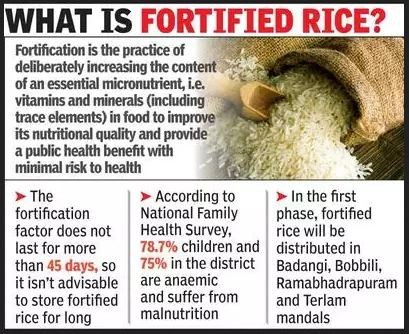
- 27 Aug 2025
In News:
The Union Cabinet has approved the continuation of the universal supply of fortified rice under all government food safety net schemes till December 2028, with 100% central funding of ?17,082 crore. This initiative is part of India’s broader strategy to combat anaemia, malnutrition, and hidden hunger, which remain major public health challenges.
Evolution of the Scheme
- 2018: Launch of Anemia Mukt Bharat (AMB) initiative by MoHFW, emphasising fortified foods.
- 2019: Pilot project for rice fortification introduced in select districts.
- 2022: Government approved national scale-up of fortified rice across welfare schemes.
- March 2024: Fortified rice fully replaced normal rice in all central schemes.
- 2025: Cabinet approved extension till 2028, ensuring continuity with dedicated funding.
Nodal Ministries & Agencies
- Department of Food and Public Distribution (DFPD) under Ministry of Consumer Affairs → implementing agency.
- FSSAI (Food Safety and Standards Authority of India) → sets fortification standards.
- Convergence with Ministry of Education, MoHFW, Ministry of Women and Child Development, and NDDB Foundation for Nutrition.
Components of the Programme
- Public Distribution System (PDS): Fortified rice supplied through ration shops.
- PM POSHAN (Mid-Day Meal): Fortified rice used in school meals; guidelines also promote Double Fortified Salt (DFS) and fortified edible oil.
- Integrated Child Development Services (ICDS): Supplies fortified staples to children and women.
- Special Schemes: Distribution under Wheat-Based Nutrition Programme (WBNP) and Scheme for Adolescent Girls (SAG).
- Complementary Nutrition Initiatives:NDDB’s Gift Milk Programme has provided 7.1 lakh litres of fortified milk, benefitting 41,700 children in 257 schools across 11 states.
Nutritional Focus
- Micronutrients in Fortified Rice: Iron, Folic Acid, and Vitamin B12 → combat iron-deficiency anaemia, support neurological and cognitive health.
- Double Fortified Salt (DFS): Prevents anaemia and goitre.
- Fortified Edible Oil: Provides Vitamins A & D, preventing deficiencies.
Key Features
- Universal Coverage: Fortified rice supplied across all central schemes.
- Cost Coverage: Entire fortification cost borne by the Government of India.
- Monitoring & Accountability: States/UTs tasked with ensuring quality and compliance.
- Multi-Sectoral Approach: Linked with nutrition awareness campaigns and Anemia Mukt Bharat.
- Private & CSR Partnerships: NFN mobilises funds and awareness through CSR and donations.
Wider Context – Food Processing Linkages
The Ministry of Food Processing Industries (MoFPI) supports complementary schemes like:
- PM Kisan SAMPADA Yojana (PMKSY)
- PLI Scheme for Food Processing Industry (PLISFPI)
- PM Formalization of Micro Food Processing Enterprises (PMFME)
These aim to improve supply chains, reduce wastage, and enhance processing levels – strengthening nutrition outcomes alongside fortification.
RBI Discussion Paper on Inflation Targeting
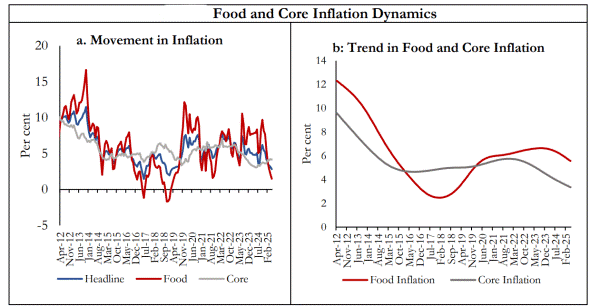
- 27 Aug 2025
In News:
The Reserve Bank of India (RBI), in August 2025, released its discussion paper on reviewing India’s Flexible Inflation Targeting (FIT) framework, which is due for renewal in March 2026. The paper seeks public feedback on key questions such as whether the 4% target remains optimal, whether the 2–6% tolerance band should be revised, and whether the target should be expressed as a point or only a range.
Evolution of the Framework
- Adopted in 2016, the FIT framework formalised inflation targeting in India.
- Current mandate: 4% CPI-based inflation target with a tolerance band of 2–6%, jointly set by the RBI and the Government of India.
- Review cycle: Every five years, with the next mandate to begin April 2026.
Rationale for Retaining the 4% Target
- Credibility with Investors: Raising the target above 4% could be perceived as policy dilution, eroding credibility. Rating agencies like S&P Global recently upgraded India’s rating (BBB), citing the RBI’s strong inflation management.
- Institutional Stability: The framework has strengthened the Monetary Policy Committee (MPC) process and fiscal discipline.
- Domestic Outcomes: Headline CPI inflation has mostly remained within the 2–6% band. In July 2025, it hit 1.55%, the second-lowest since the series began.
- External Balance: Low and stable inflation safeguards the rupee, maintains external competitiveness, and prevents capital outflows.
Headline vs Core Inflation Debate
- Economic Survey 2023–24: Suggested targeting core inflation (excluding food and fuel) as food inflation is largely supply-driven and beyond monetary control.
- RBI’s View: Headline CPI should remain the target, as persistent food shocks spill over into wages, rents, and production costs, influencing core inflation.
- Global Norm: Nearly all inflation-targeting countries focus on headline CPI; Uganda is the only exception.
- Indian Context: Food has ~50% weight in CPI. Excluding it would undermine policy relevance for households and workers.
Key Issues Under Review
- Target Level: Lowering below 4% could hurt growth; raising above 4% risks credibility loss.
- Tolerance Band: Debate on retaining the 2–6% range, narrowing it, or removing it. While a band allows flexibility, it may reduce accountability.
- Inflation Volatility: Between 2014–2025, headline CPI ranged from 1.5% to 8.6%, mainly due to food prices, while core inflation remained relatively stable.
Positive Outcomes of the Framework
- Anchored Expectations: Households and firms now base decisions around a credible 4% anchor, reducing uncertainty.
- Investor Confidence: Predictable inflation management has lowered risk premiums on Indian assets, boosting FDI and portfolio inflows.
- Improved Sovereign Ratings: Low inflation stability has supported fiscal credibility, earning global recognition.
- Resilience to Shocks: Despite global supply disruptions and oil price volatility, India avoided runaway inflation.
First removable Solar Panel System between tracks
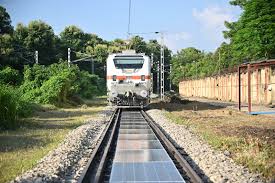
- 22 Aug 2025
In News:
Indian Railways has taken a major step towards achieving its net-zero carbon emission target by 2030 with the commissioning of India’s first removable solar panel system between railway tracks at Banaras Locomotive Works (BLW), Varanasi in August 2025.
About the Project
- Length of Installation: 70 metres
- Number of Panels: 28 removable panels
- Capacity: 15 KWp (Power density: 240 KWp/km; Energy density: 960 units/km/day)
- Special Feature: Panels are removable, enabling easy maintenance, emergency clearance, and seasonal adaptation.
- Design: Indigenously developed to be installed between tracks without disrupting rail traffic.
Technical Specifications of Panels
- Dimensions: 2278 mm × 1133 mm × 30 mm
- Weight: 31.83 kg per panel
- Type: 144 half-cut mono crystalline PERC bifacial collar cells (multi-bus bar)
- Efficiency: 20.15%
- Maximum Voltage: 1500V; Open Circuit Voltage (Voc): 49.71V
Significance
- Green Energy Transition: Promotes sustainable transport by reducing dependency on fossil fuels and cutting carbon footprint.
- Innovative Space Utilisation: Uses the space between tracks, avoiding land acquisition. Potential estimated at 3.5 lakh units/year/km of track. With IR’s 1.2 lakh km track length, the scalability is massive.
- Economic Efficiency: Supports auxiliary energy needs of railway units, lowering operational costs.
- Replicability: Being a pilot project, it serves as a model for adoption across Indian Railways.
Other Recent Railway Developments
- Green Logistics: In August 2025, the first salt-loaded freight rake from Sanosara (Bhuj–Naliya section) to Dahej carried 3,851.2 tonnes of industrial salt over 673.57 km, generating ?31.69 lakh in freight revenue. This initiative boosts regional industry and expands rail freight solutions.
- Electrification Innovation: Western Railway commissioned the country’s first 2×25 kV Electric Traction System at the Nagda–Khachrod section (Ratlam Division). Powered by two Scott-connected 100 MVA transformers, it enhances efficiency in overhead equipment (OHE) supply, marking a leap in electrification infrastructure.
Broader Context
- Indian Railways is rapidly expanding its solar adoption strategy, aligning with the National Solar Mission and Sustainable Development Goal (SDG-7: Affordable and Clean Energy).
- This innovation aligns with India’s climate commitments under the Paris Agreement and helps advance the country’s energy transition pathway.
RBI has released a report on the FREE-AI
- 21 Aug 2025
In News:
The Reserve Bank of India (RBI) has released the Framework for Responsible and Ethical Enablement of Artificial Intelligence (FREE-AI) Committee Report, marking a major step in shaping ethical, transparent, and sustainable AI adoption in India’s financial sector. The framework seeks to balance innovation with risk mitigation, ensuring that the transformative power of AI is harnessed without compromising trust, fairness, or safety.
RBI’s 7 Sutras for Responsible AI in Finance
The FREE-AI framework is built on seven guiding principles (Sutras):
- Trust is the Foundation – AI must be reliable, transparent, and inspire public confidence.
- People First – AI should empower human decision-making while safeguarding dignity, inclusion, and citizen interest.
- Innovation over Restraint – Encourage responsible innovation without excessive restrictions.
- Fairness and Equity – AI outcomes must be unbiased and equitable.
- Accountability – Responsibility for AI decisions rests with deploying entities, with clear lines of answerability.
- Understandable by Design – Systems must be interpretable and explainable to users, auditors, and regulators.
- Safety, Resilience, and Sustainability – AI must be secure, adaptable, and capable of delivering long-term benefits.
India’s Policy Developments
- MuleHunter AI – Developed by RBI Innovation Hub to detect mule accounts and curb digital frauds.
- Digital Lending Rules – Mandate auditable AI-driven credit assessments with human oversight and grievance redressal.
- SEBI’s 2025 Guidelines – Propose responsible AI use in Indian securities markets.
- IndiaAI Mission – Aims to boost AI innovation, research, and computational infrastructure.
RBI’s Recommendations under FREE-AI
The Committee laid down 26 recommendations across six pillars:
- Infrastructure – Establish high-quality financial data infrastructure, integrated with AI Kosh.
- Innovation Enablement – Create an AI Innovation Sandbox for testing models with anonymised data, ensuring compliance with AML, KYC, and consumer protection norms.
- Consumer Protection & Security – Periodic AI red-teaming, incident reporting frameworks, and good-faith disclosures.
- Capacity Building – Structured AI governance training at all institutional levels; knowledge sharing across REs (regulated entities).
- Governance – Oversight frameworks ensuring accountability and transparency in AI deployments.
- Assurance Mechanisms – Standards and audit processes for AI-based systems.
India Semiconductor Mission
- 20 Aug 2025
In News:
The Union Cabinet has cleared four new semiconductor manufacturing projects worth ?4,600 crore in Odisha, Punjab, and Andhra Pradesh under the India Semiconductor Mission (ISM). With this, the total number of approved projects under ISM has reached ten across six states, attracting cumulative investments of nearly ?1.60 lakh crore.
Details of Newly Approved Units
- SiCSem Pvt. Ltd. (Odisha):
- In partnership with UK-based Clas-SiC Wafer Fab Ltd.
- India’s first commercial compound semiconductor fabrication unit focused on Silicon Carbide (SiC) devices.
- Capacity: 60,000 wafers and 96 million packaged units annually.
- 3D Glass Solutions Inc. (Odisha):
- Will establish a vertically integrated packaging and embedded glass substrate unit.
- Focus: 3D Heterogeneous Integration modules.
- ASIP Technologies (Andhra Pradesh):
- Joint venture with APACT Co. Ltd., South Korea.
- Annual capacity: 96 million units.
- Applications: Mobile phones, set-top boxes, automobiles, and other electronic devices.
- Continental Device India Pvt. Ltd. (Punjab):
- Brownfield expansion of its Mohali facility.
- Focus: High-power discrete devices – MOSFETs, IGBTs, Schottky diodes, and transistors (using both silicon and SiC).
- Capacity: 158.38 million units annually.
Production from these units is expected to commence within the next 2–3 years.
Progress under ISM
- Launch Year: 2021
- Nodal Ministry: Ministry of Electronics and Information Technology (MeitY)
- Objective: Establish a self-reliant semiconductor and display ecosystem in India.
- Support: Incentive package of ?75,000 crore for fabs, ATMP/OSAT, compound semiconductor plants, and display fabs.
- Capacity Building: Target to train 60,000+ skilled professionals.
- Strategic Significance: Reduce import dependency, boost Atmanirbhar Bharat, and make India a global semiconductor hub.
Major Ongoing Projects under ISM
- Tata-PSMC Fab (Dholera, Gujarat): ?91,526 crore investment; capacity of 50,000 wafers/month for automotive and AI; operational by 2026.
- Micron ATMP (Sanand, Gujarat): ?22,900 crore investment; focus on DRAM and NAND packaging; expected by late 2025.
- Tata TSAT OSAT (Jagiroad, Assam): Output of 48 million chips/day.
- Kaynes OSAT (Sanand, Gujarat): Capacity of 6 million chips/day for telecom and industrial use.
- HCL–Foxconn JV (Uttar Pradesh): To produce 36 million display driver chips/month by 2027.
Cheque Truncation System (CTS)
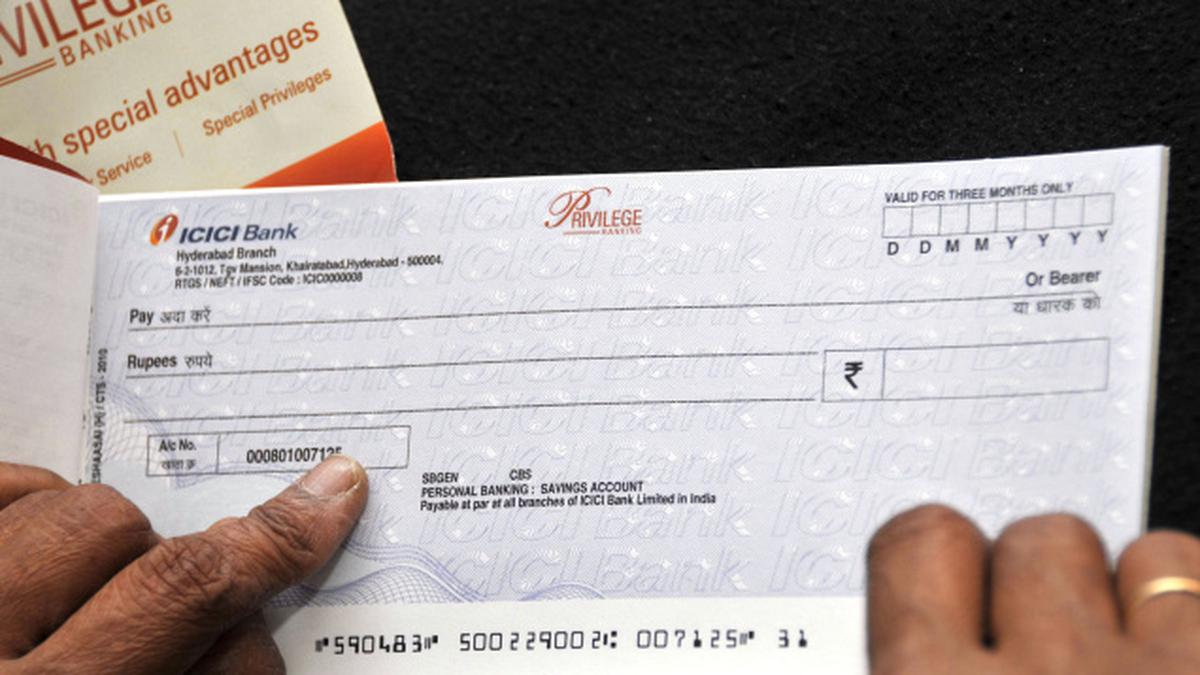
- 19 Aug 2025
In News:
The Reserve Bank of India (RBI) has announced the transition of the Cheque Truncation System (CTS) from batch processing to a continuous clearing mechanism, with settlement on realisation, to be implemented in two phases. This reform aims to further enhance efficiency, reduce delays, and strengthen the digitalisation of cheque-based transactions.
About Cheque Truncation System (CTS)
- Introduced by RBI to speed up cheque clearance and minimise physical movement of instruments.
- Process: Physical cheques are truncated at the collecting bank; only cheque images and MICR data are transmitted electronically.
- Security: Protected by a PKI-based security architecture with dual access controls, user authentication, crypto box, and smart card interfaces.
- CTS-2010 Standards: Only compliant instruments are accepted, ensuring:
- Use of specified paper quality, watermark, and invisible-ink logos.
- Mandatory minimum-security features like void pantograph.
- Standardised cheque design for uniform image-based processing.
Current vs. New System
- Current CTS: Clearing cycle takes up to two working days.
- New System (Continuous Clearing):
- Cheques will be cleared within hours of submission.
- Settlement will occur on realisation basis rather than at fixed batch intervals.
Benefits
- Faster Settlement: Realisation of cheque proceeds on the same day.
- Efficiency Gains: Reduced bottlenecks and delays in processing.
- Cost Savings: Eliminates costs linked to physical cheque movement.
- Security & Reliability: Enhanced authentication safeguards against fraud.
- Better Data Management: Easy storage and retrieval of digital records via a centralised archival system.
- Customer Convenience: Shorter clearing cycles improve banking efficiency for individuals and businesses.
Revised Income Tax Bill, 2025
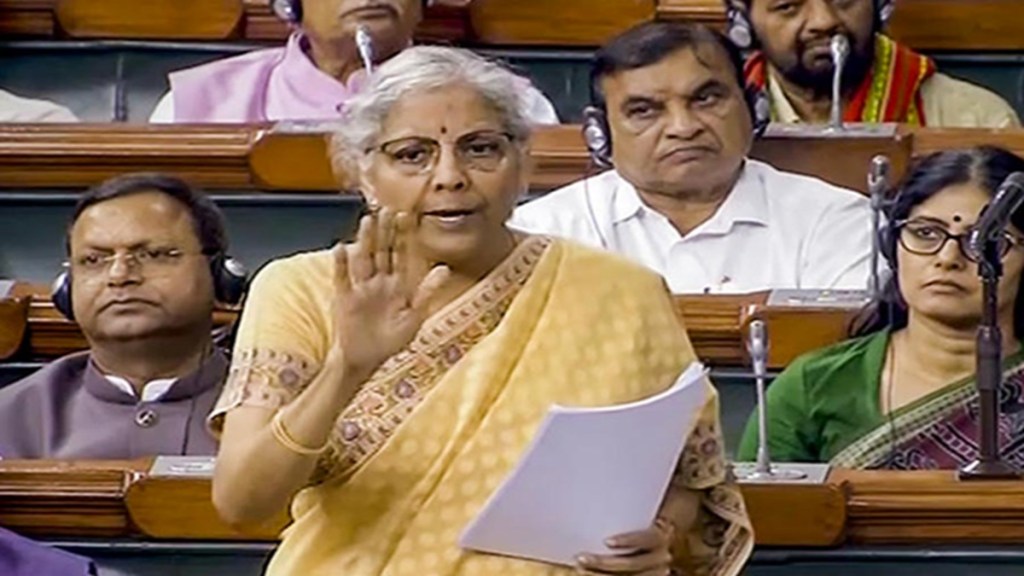
- 13 Aug 2025
In News:
The Income Tax (No. 2) Bill, 2025 was passed in the Lok Sabha in August 2025, replacing the Income Tax Act, 1961 after nearly six decades. The earlier draft of the Bill was withdrawn to incorporate recommendations of the Parliamentary Select Committee and stakeholder feedback. The revised Bill consolidates, simplifies, and modernises India’s direct tax framework.
Background
- Old Act (1961): Complex language, overlapping provisions, and compliance burden.
- New Bill (2025):
- Contains 536 sections and 16 schedules.
- Incorporates over 285 recommendations of the Select Committee, which examined the draft for four months and submitted a 4,500-page report.
- Aims to make the law simpler, clearer, and more aligned with the digital era.
Key Features
- Simplification of Tax Framework
- Single “Tax Year” concept replaces “Previous Year” and “Assessment Year”.
- Outdated and contradictory provisions removed to reduce litigation.
- Clear drafting, structured numbering, and improved terminology for easier interpretation.
- Taxpayer-Friendly Provisions
- Refunds allowed even if returns are filed after the due date.
- NIL-TDS certificates available for taxpayers with no liability.
- Relief on vacant house property – no taxation on notional rent.
- 30% standard deduction (post municipal tax) and interest deduction allowed on rented property.
- Corporate and MSME Reforms
- ?80M deduction on inter-corporate dividends reintroduced.
- MSME definition aligned with the MSME Act for uniformity.
- Institutional & Governance Reforms
- CBDT empowered for flexible, digital-era rule-making.
- Simplified compliance for TDS, PF withdrawals, advance rulings, and penalties.
- Relief to Specific Sectors
- Alternate Minimum Tax (AMT) on LLPs abolished.
- Charitable Trusts – compliance relaxations and reduced regulatory burden.
- Transfer Pricing & Associated Enterprise definitions rationalised.
- Extension of pension benefits – commuted pension deduction available even for non-employee individuals.
RBI’s Internal Working Group Recommendations on Liquidity Management Framework
- 11 Aug 2025
In News:
The Reserve Bank of India (RBI) recently released the recommendations of its Internal Working Group (IWG) constituted to review the Liquidity Management Framework (LMF), which has been operational since February 2020. The review seeks to enhance efficiency, transparency, and predictability in liquidity operations—crucial for ensuring smooth monetary policy transmission.
Liquidity Management Framework (LMF):
- Objective: To manage systemic liquidity and guide short-term interest rates in alignment with monetary policy objectives.
- Core Mechanism: Operates through the Liquidity Adjustment Facility (LAF)—using repo (liquidity injection) and reverse repo (liquidity absorption) operations.
- Corridor System: The policy repo rate sits at the middle of the interest rate corridor, while the Weighted Average Call Rate (WACR) serves as the operating target of monetary policy.
- Other Tools: Open Market Operations (OMO), Cash Reserve Ratio (CRR), Statutory Liquidity Ratio (SLR) for durable liquidity; and Standing Deposit Facility (SDF) for absorbing surplus liquidity.
Key Recommendations of the IWG
- WACR as Operating Target
- Recommendation: Continue using overnight WACR as the operating target.
- Rationale: WACR strongly correlates with collateralized overnight money market rates, making it reliable for transmitting policy signals across the system.
- Discontinuation of 14-day VRR/VRRR as Main Operation
- Recommendation: Replace 14-day Variable Rate Repo/Reverse Repo (VRR/VRRR) as the main liquidity management tool.
- Alternative: Manage transient liquidity primarily through 7-day repo/reverse repo operations and other operations (overnight to 14-day tenor) at RBI’s discretion.
- Rationale: 14-day auctions have witnessed lower participation, as banks prefer shorter-tenor instruments like SDF.
- Advance Notice for Liquidity Operations
- Recommendation: RBI should provide at least one-day advance notice for repo/reverse repo operations.
- Exception: Same-day operations may be undertaken in response to evolving liquidity shocks.
- Rationale: Predictability reduces market uncertainty and stabilizes money market rates.
- Variable Rate Auction Mechanism
- Recommendation: Continue using variable rate auctions for repo and reverse repo operations, including longer tenors.
- Rationale: Enhances price discovery and aligns market rates with liquidity conditions.
- Cash Reserve Ratio (CRR) Norms
- Recommendation: Continue with the 90% daily minimum maintenance requirement of CRR.
- Rationale: Ensures banks maintain sufficient reserves, preventing liquidity shortfalls.
- Durable Liquidity Tools
- Observation: Existing instruments under the LMF are sufficient to meet durable liquidity needs; no changes are required at this stage.
Key Terms:
- WACR (Weighted Average Call Rate): The average overnight interest rate at which banks borrow and lend funds, weighted by transaction volume; RBI’s operating target for monetary policy.
- Repo Rate: Rate at which RBI lends to banks against collateral to inject liquidity.
- Reverse Repo Rate: Rate at which RBI borrows from banks to absorb excess liquidity.
- VRR/VRRR: Auction-based repo/reverse repo operations, where rates are determined by market bids.
- SDF (Standing Deposit Facility): Tool for absorbing liquidity without collateral.
- CRR (Cash Reserve Ratio): Portion of deposits banks must maintain with RBI as liquid cash.
Significance of Recommendations
- For Monetary Policy: Reinforces the role of WACR in aligning short-term rates with policy stance.
- For Markets: Enhances predictability, reducing volatility in money markets.
- For Banks: Offers greater flexibility in managing short-term liquidity needs.
- For RBI: Provides operational flexibility to balance stability with market efficiency.
Strategic Interventions for Green Hydrogen Transition (SIGHT) Scheme

- 09 Aug 2025
In News:
India has achieved a milestone in its clean energy transition with the discovery of a record-low price of ?55.75/kg (USD 641/MT) for Green Ammonia in the first-ever auction conducted by the Solar Energy Corporation of India (SECI) under the Strategic Interventions for Green Hydrogen Transition (SIGHT) Scheme, a core component of the National Green Hydrogen Mission (NGHM).
About the SIGHT Scheme
- Nature: Flagship financial mechanism under NGHM.
- Nodal Ministries: Ministry of New & Renewable Energy (MNRE) and Ministry of Petroleum & Natural Gas (MoPNG).
- Objective:
- Scale up green hydrogen and its derivatives (like green ammonia).
- Make them cost-competitive with fossil-based alternatives.
- Create domestic demand across fertilizer, refining, and shipping sectors.
- Financial Outlay: ?17,490 crore (till 2029–30) out of the total NGHM budget of ?19,744 crore.
- Implementation Modes:
- Mode 1: Incentives to lowest incentive seekers.
- Mode 2A: Aggregated demand for Green Ammonia (fixed incentive).
- Mode 2B: Aggregated demand for Green Hydrogen (fixed incentive).
- Incentive Structure (Mode 2B): ?50/kg (Year 1), ?40/kg (Year 2), ?30/kg (Year 3).
- Monitoring: A joint MNRE–MoPNG committee ensures compliance with notified green hydrogen standards.
First Green Ammonia Auction (Mode-2A)
- Winning Bid: ?55.75/kg (down from ?100.28/kg discovered in H2Global auction 2024).
- Quantity: 75,000 MTPA out of a total tendered 7.24 lakh MTPA.
- Offtaker:Paradeep Phosphates Ltd., Odisha.
- Contract: Fixed 10-year supply, ensuring price stability and supply chain reliability.
- Global Comparison: Price is slightly higher than grey ammonia (USD 515/MT, March 2025) but provides strong economic incentives for clean transition.
World Air Transport Statistics (WATS) 2024
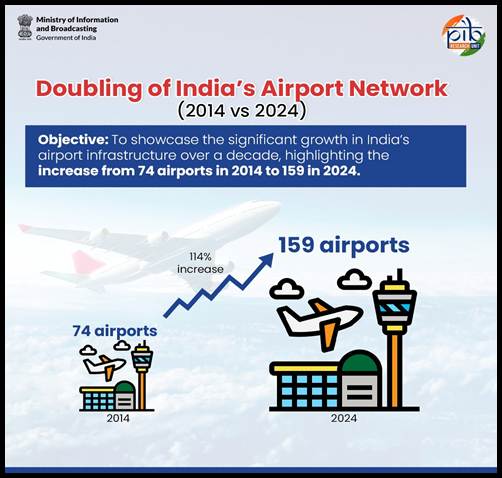
- 08 Aug 2025
In News:
According to the World Air Transport Statistics (WATS) 2024, released by the International Air Transport Association (IATA), India has emerged as the world’s 5th-largest aviation market, handling 211 million passengers in 2024.
Key Findings of WATS 2024
- India: 211 million passengers in 2024, growing 11.1% over 2023.
- Ahead of: Japan (205 million, 18.6% growth).
- Global Rankings:
- United States – 876 million passengers (+5.2%).
- China – 741 million passengers (+18.7%).
- United Kingdom – 261 million passengers.
- Spain – 241 million passengers.
- India – 211 million passengers.
- Busiest Routes (Airport Pairs):
- Global:Jeju–Seoul (South Korea) – 13.2 million passengers.
- India: Mumbai–Delhi – 5.9 million passengers, ranked 7th globally.
- Trend: Asia-Pacific dominated busiest airport-pair rankings.
India’s Aviation Transformation
1. Legislative Reforms
- Protection of Interests in Aircraft Objects Bill, 2025: Aligns leasing system with the Cape Town Convention, lowering leasing costs and boosting investor confidence.
- BharatiyaVayuyanAdhiniyam, 2024: Replaces colonial-era Aircraft Act, 1934; promotes Make in India, simplifies licensing, and aligns with ICAO norms.
2. Infrastructure Expansion
- New Terminals: Foundation laid at Varanasi, Agra, Darbhanga, Bagdogra.
- Greenfield Airports: 12 operationalised since 2014 (e.g., Shirdi, Mopa, Shivamogga); Navi Mumbai and Noida (Jewar) to be operational by 2025–26.
- Investment: ?91,000 crore allocated under National Infrastructure Pipeline (NIP); ?82,600 crore already spent by Nov 2024.
3. Government Initiatives
- UDAN Scheme: Expands regional air connectivity, affordable travel.
- National Civil Aviation Policy (NCAP): Boosts MRO (Maintenance, Repair, Overhaul), airport development, and leasing ecosystem.
- Green Airports Policy: Promotes renewable energy, waste reduction, and carbon neutrality.
- Aircraft Leasing Hub:GIFT City being developed as a global hub for aircraft leasing and financing.
Significance
- India consolidates its position as a major aviation hub, driven by rising passenger traffic, policy reforms, and infrastructure expansion.
- Reflects growing regional connectivity under UDAN and global competitiveness with regulatory modernisation.
- Places India in the top five global aviation markets for the first time.
India Electric Mobility Index (IEMI)

- 08 Aug 2025
In News:
NITI Aayog launched the India Electric Mobility Index (IEMI), a first-of-its-kind tool developed to comprehensively track and benchmark the progress of States and Union Territories (UTs) in achieving their Electric Mobility goals.
Key Highlights:
- Objective: The IEMIis a first-of-its-kind national tool designed to comprehensively track, evaluate, and benchmark the performance of States and Union Territories (UTs) in their electric mobility transition. It aims to guide sub-national policies, strengthen EV adoption, and align efforts with India’s net-zero by 2070 target.
Core Features of IEMI
- Benchmarking Framework: Scores States/UTs on a 0–100 scale.
- Indicators: Covers 16 indicators under three core themes:
- Transport Electrification Progress – Demand-side adoption in passenger, freight, and public transport.
- Charging Infrastructure Readiness – Deployment of public/private charging stations and supportive policies.
- EV Research & Innovation Ecosystem – R&D, manufacturing capacity, and technological advancements.
- Dashboard Access: Interactive tool for real-time comparison, rankings, and insights.
- Policy Guidance Tool: Identifies gaps, best practices, and investment priorities.
- Cross-Sectoral Utility: Supports inter-ministerial coordination, capacity building, and infrastructure planning.
Trends & Rankings in IEMI 2024
- Top Performers:Delhi, Maharashtra, and Chandigarh led in EV readiness and innovation.
- EV Share in Sales: Grew from 5% (2018) to 7.7% (2024).
- Total EVs on Road: Surpassed 5 million by June 2025, with 12 lakh EVs registered in 2024 alone.
- Charging Infrastructure: Over 25,000 public charging stations installed by October 2024; Karnataka leads in installations.
- Policy Coverage:29 States/UTs have notified EV policies; 4 more are in draft stage.
Significance of IEMI
- Promotes Green Mobility: Aligns state actions with India’s decarbonisation roadmap.
- Encourages Healthy Competition: Enables peer learning and best practice sharing among states.
- Supports Make in India: Strengthens domestic EV manufacturing and innovation clusters.
- Guides Infrastructure Planning: Highlights charging network gaps for targeted rollouts.
- Informs Policy: Helps States/UTs design tailored strategies for equitable e-mobility adoption.
Right to Repair and Repairability Index in India
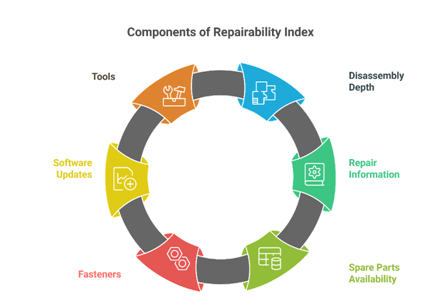
- 07 Aug 2025
In News:
India has accepted the proposal to introduce a Repairability Index for electronics, aligning with the global movement to strengthen the Right to Repair. This is seen as a step towards sustainable consumption and consumer empowerment, but concerns remain about the neglect of India’s vibrant informal repair economy, which is rich in tacit and generational knowledge.
Understanding Right to Repair
- Definition: The Right to Repair ensures that consumers can repair, modify, or access affordable third-party repair services for their products.
- Global Trends:
- The European Union mandates access to spare parts and repair manuals.
- Several U.S. states have legislated consumer rights for repair.
- The principle supports UN SDG-12 (Responsible Consumption and Production).
- India’s Framework:In 2023, the Department of Consumer Affairs launched a Right to Repair portal, covering electronics, automobiles, and farm equipment.
Significance Beyond Consumer Rights
- Tacit Knowledge Systems: Informal repairers acquire skills through observation and mentorship, not formal certifications. Repair hubs like Karol Bagh (Delhi) and Ritchie Street (Chennai) embody this tradition.
- Cultural Identity: Repair is not just technical work but part of India’s jugaad culture, reflecting frugality, resource reuse, and indigenous innovation.
- Sustainability: Repair extends product life, prevents premature disposal, and reduces e-waste burden.
- Unrecognized Workforce: Informal repairers, despite their contribution to the circular economy, remain excluded from labour laws and digital policy frameworks.
Policy and Digital Gaps
- E-Waste Rules, 2022: Focus primarily on recycling while overlooking repair as the first line of defence.
- Skill India (PMKVY): Training modules remain rigid and unsuitable for improvisational, diagnostic repair work.
- AI and Digital Public Infrastructure (DPI) Policies: Emphasize structured data but ignore human-led, tacit repair knowledge.
- Education (NEP 2020): While advocating experiential learning, it fails to recognize repair work as skill education.
- Legal Support: Informal repairers lack certification pathways, formal rights, or recognition within the digital economy roadmap.
Towards an Inclusive Repair Ecosystem
- Repairability Standards: Embed repair norms in AI systems, public procurement, and hardware design.
- Expanded Right to Repair:
- Introduce product classifications by repairability.
- Ensure access to manuals and spare parts.
- Promote community repair hubs.
- Skill Recognition: Integrate informal repairers into e-Shram, and design flexible reskilling modules.
- Knowledge Preservation: Use AI tools (LLMs, decision trees) to digitize tacit repair knowledge and make it shareable.
- Policy Convergence: Collaborate across ministries — Labour (MoLE), Electronics & IT (MeitY), Rural Development (MoRD) — for a unified repair ecosystem.
Financial Sector Changes from August 2025
- 06 Aug 2025
In News:
India’s financial ecosystem is undergoing significant operational changes aimed at strengthening stability, efficiency, and consumer protection. From August 1, 2025, several regulatory and institutional reforms—spanning digital payments, credit cards, fuel pricing, trading hours, and monetary policy—are set to reshape the financial landscape.
UPI Operational Reforms by NPCI
The National Payments Corporation of India (NPCI), which manages the Unified Payments Interface (UPI), has introduced revised operational rules to reduce transaction delays and prevent system overload during peak hours. UPI, India’s flagship digital payment platform, has emerged as the backbone of cashless transactions with over 14 billion monthly transactions (2025 data).
Key reforms effective from August 1, 2025:
- Balance Check Limit: Maximum 50 balance enquiries per day per app.
- Linked Account Enquiries: Limited to 25 per day per app.
- Auto-Pay Transactions: Permitted only during non-peak hours (before 10 AM, 1–5 PM, after 9:30 PM).
- Transaction Status Checks: Restricted to 3 per transaction, with a mandatory 90-second gap.
- Beneficiary Name Display: Recipient’s registered bank name will be shown before confirmation to curb fraud.
These reforms reflect an effort to balance user convenience with systemic efficiency while reducing risks of fraudulent transfers.
Credit Card Insurance Changes by SBI
The State Bank of India (SBI), India’s largest lender, has announced withdrawal of complimentary air accident insurance cover on several co-branded credit cards. Earlier, insurance covers of ?1 crore (ELITE series) and ?50 lakh (PRIME/Platinum series) were provided. The discontinuation reflects banks’ attempts to rationalize costs in a competitive credit market, but it also raises concerns regarding customer protection.
Fuel Price Revisions
Prices of LPG cylinders, CNG, PNG, and aviation turbine fuel (ATF) are subject to monthly review. Effective August 1, 2025, fresh revisions are expected in line with global crude trends and domestic subsidy policies. Given that LPG and CNG are crucial for households and transport, even marginal adjustments influence inflation and consumer spending.
Extension of Trading Hours
The Reserve Bank of India (RBI) has extended trading hours for money market instruments to deepen liquidity and align with global practices:
- Call Money Market: Extended to 9:00 AM – 7:00 PM (effective July 1, 2025).
- Market Repo & Tri-Party Repo (TREPs): Extended to 9:00 AM – 4:00 PM (effective August 1, 2025).
This reform is expected to improve liquidity management for banks and non-banking financial institutions, enhancing the efficiency of short-term borrowing and lending.
Supply and Use Tables 2020–21 & 2021–22
- 02 Aug 2025
In News:
Recently, the Ministry of Statistics and Programme Implementation (MoSPI) released the Supply and Use Tables (SUTs) for 2020–21 and 2021–22.
What are Supply and Use Tables?
SUTs consist of two interlinked matrices—Supply Tables and Use Tables, organized in a product-by-industry format.
- Supply Table: Captures total supply of goods and services, combining domestic production (at basic prices) and imports.
- Use Table: Reveals how these products are used across the economy—intermediate consumption, final consumption, capital formation, and exports (at purchasers’ prices).
Purpose & Significance of SUT
- Integration of GDP Approaches: SUT unifies production, income, and expenditure methods for GDP calculation, helping reconcile discrepancies between them.
- Robust Analytical Tool: Offers granular insights into product-industry dynamics, facilitating better policymaking and economic analysis.
- Data Reconciliation: Aligns macroeconomic estimates from sources like National Accounts Statistics (NAS), ASI, RBI, EXIM data, and census, improving coherence.
Data Coverage & Compilation Methodology
- Scope: Covers 140 products and 66 industries, at current prices, aligned with UN’s System of National Accounts (SNA).
- Key Steps:
- Identify industries (via NIC, NAS compilation categories) and products (via NPCMS for manufacturing, NPCSS for services).
- Compile Supply Table at basic prices; translate to purchasers’ prices using tax, margin, and CIF adjustments.
- Compile Use Table, detailing intermediate and final uses.
- Balance product supply and use to ensure consistency.
- Data Sources: NAS, ASI, EXIM, RBI, CBIC, MCA, Cost of Cultivation, etc.
Key Highlights
|
Metric |
2020–21 |
2021–22 |
|
Total Supply (Purchasers’ Prices) |
?407.52 lakh crore |
?523.08 lakh crore |
|
Sectoral Composition (basic prices) |
Agriculture: 11–13%, Mining: 2%, Manufacturing: 30–33%, Manufacturing-related services: 3%, Other Services: ~55% |
GVA-to-GVO Ratios (Efficiency Indicators)
- Top-performing industries (high ratios):
- 2020–21: Ownership of Dwellings, Fishing & Aquaculture, Forestry & Logging, Agriculture, Education & Research
- 2021–22: Ownership of Dwellings, Fishing & Aquaculture, Forestry & Logging, Agriculture, Crude Petroleum
- Low-performing industries (low ratios):
- 2020–21: Meat processing, Dairy, Grain mill & animal feeds, Communication equipment, Other manufacturing
- 2021–22: Similar, with Coke & Refined Petroleum added
Consumption Patterns
- Intermediate Consumption: Highest share by Construction—13.82% (2020–21), 14.03% (2021–22).
- Consumption Composition:
- 2020–21: Intermediate: Goods 70%, Services 30%; PFCE: Goods 62%, Services 38%
- 2021–22: Intermediate: Goods 72%, Services 28%; PFCE: Goods 59%, Services 41%
GDP Discrepancy Reconciliation
- 2020–21: Discrepancy of –?2,46,154 crores; reconciled by reducing PFCE by ?3,05,628 cr; Inventory by ?18,897 cr; Imports by ?78,374 cr.
- 2021–22: Discrepancy of –?2,16,579 crores; PFCE cut by ?3,55,540 cr; Inventory by ?1,884 cr; Imports by ?1,37,081 cr.
Significance
- Macro-Accounting Sophistication:SUT represents India’s advanced approach to reconciling diverse economic indicators—critical for accurate GDP estimation.
- Policy Insights:Understanding sectoral efficiencies (via GVA-to-GVO), product dependencies, and consumption structures can guide targeted reforms.
- Post-Pandemic Recovery Landscape:The sharp increase in total supply (28.4% growth) between 2020–21 and 2021–22 reflects economic resilience and rebound.
- Data-Driven Governance: SUT’s transparency and granularity strengthen evidence-based policymaking.
- Statistical Infrastructure Evolution: Proposals for SME/MNE disaggregation, real-time dashboards, and annual updates align India with OECD’s extended SUT models and global best practices.
India's Digital Payments Index
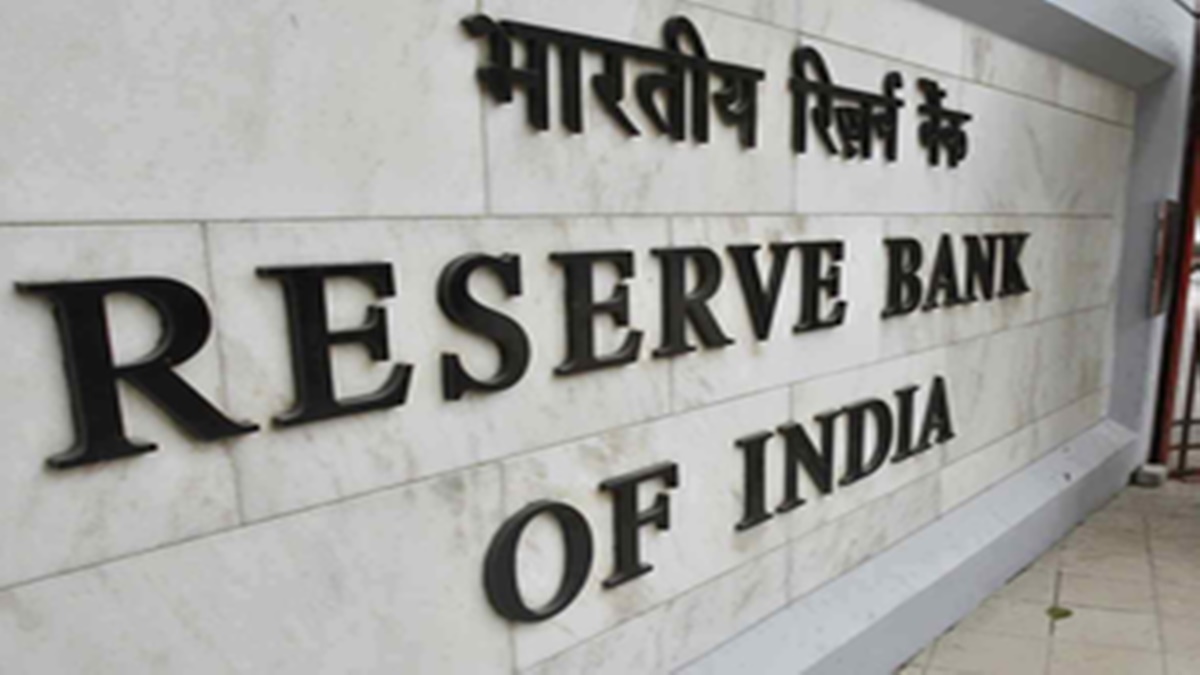
- 02 Aug 2025
In News:
The Reserve Bank of India’s Digital Payments Index (RBI-DPI), launched in January 2021, serves as a pivotal metric to gauge the country's journey toward a digital payments ecosystem. It uses March 2018 as its base year (index = 100) and is published every six months, offering a holistic and dynamic snapshot of digital transaction adoption.
RBI-DPI Calculation: Five Key Parameters
The DPI aggregates various dimensions of digital payments adoption across five weighted components:
|
Parameter |
Weightage |
Focus |
|
Payment Enablers |
25% |
Access infrastructure—mobile/internet penetration, Aadhaar, bank accounts, fintech regulations |
|
Demand-Side Infrastructure |
10% |
Consumer-facing tools—mobile/internet banking, debit/credit cards, FASTags |
|
Supply-Side Infrastructure |
15% |
Merchant tools—PoS terminals, ATMs, QR codes, bank branches, business correspondents |
|
Payment Performance |
45% |
Transaction metrics—volume/value of digital transfers, IMPS/NEFT/UPI usage, paper clearing |
|
Consumer Centricity |
5% |
User experience—awareness, complaint resolution, fraud handling, system uptime |
Drivers Behind the Mar 2025 Jump
As of March 2025, RBI-DPI stood at 493.22, up from 465.33 in September 2024—a year-on-year rise of 10.7%. The key drivers include:
- Supply-side Infrastructure Improvements: Wider merchant adoption of PoS, QR codes, and enhanced banking outreach.
- Payment Performance Surge: Rapid uptake of UPI, IMPS, and other platforms.
- Policy & Technology Boosters: Initiatives such as Digital India, increasing smartphone penetration, and fintech innovation have fueled demand.
Significance for Digital India
- Digital Economy Tracking: DPI is a quantitative barometer of India’s shift to a digital-first economy—enabling policymakers to monitor progress and identify gaps in access or infrastructure.
- Financial Inclusion & Transparency: Growth in DPI indicates deeper penetration of digital finance into rural and marginalized areas, helping combat cash reliance and promote inclusion.
- Policy Formulation & Monetary Insights: Metrics under Payment Performance bolster the RBI’s real-time understanding of transactional trends, aiding monetary policy and regulatory interventions.
- Enhancing Global Fintech Standing: A rising DPI strengthens India’s position as a global digital finance hub, enhancing credibility and attracting investment.
Challenges & Recommendations Ahead
- Digital Divide: Rural areas still lack adequate connectivity and awareness to fully utilize digital tools.
- Cybersecurity & Fraud: As transactions rise, so do risks. Issues like fraud, system downtime, and grievance redressal remain priorities.
- Tech Standardization: Ensuring interoperability and unified standards across platforms is essential.
Skill Impact Bond (SIB)

- 01 Aug 2025
In News:
- India is at the cusp of a demographic transition, with a young workforce expected to drive its goal of becoming a $30 trillion economy by 2047.
- Yet, only ~4% of India’s workforce is formally skilled, and nearly 30% of trained individuals remain unemployed. Traditional skilling schemes have struggled, especially with job retention.
- Against this backdrop, Skill Impact Bond (SIB), launched in 2021, marks a paradigm shift in India’s skilling ecosystem by linking financing to actual outcomes.
What is the Skill Impact Bond (SIB)?
- Launched: November 2021.
- Implementing Agency: National Skill Development Corporation (NSDC) under Ministry of Skill Development & Entrepreneurship.
- Partners: British Asian Trust, Children’s Investment Fund Foundation (CIFF), HSBC India, JSW Foundation, Dubai Cares.
- Target: Train 50,000 youth (60% women), ensure sustained employment.
It is India’s first development impact bond focused on employment, not just certification.
How Does SIB Work?
- Risk Investors (Private/Philanthropic): Provide upfront funds to service providers (training institutes).
- Service Providers: Deliver skill training, placement support, and post-placement mentoring.
- Outcome Funders (Govt/Donors): Repay investors if measurable outcomes are achieved (job placement + retention).
- Third-Party Evaluator: Verifies outcomes.
Key Distinction: Funding is tied to placement and retention, not mere enrolment/certification.
Progress So Far
- 23,700 youth trained across 13 sectors & 30 job roles.
- 72% women participation – one of the highest in any skilling programme.
- 75% placed in jobs, and 60% retained beyond 3 months, exceeding national averages (<10% under older schemes).
- Jharkhand, UP, Delhi are leading states in enrolment.
Significance
- Women-led Growth:
- 72% women trainees; many first-generation formal workers (tribal, rural, conservative households).
- Skilling gives women not just jobs but also agency, confidence, and identity.
- Outcome-Based Financing:
- Ensures accountability of training providers.
- Attracts private/philanthropic capital into public welfare.
- Addresses Retention Challenge:
- Traditional skilling: 84% complete training, but <10% stay in jobs beyond 3 months.
- SIB model pushes for long-term impact.
- Replicable Model:
- Can be scaled to health, education, social welfare.
- Example: Project AMBER (apprenticeship-based skilling) also uses this financing.
Challenges Ahead
- Scale vs Depth: Training 50,000 is significant, but India needs millions of skilled youth annually.
- Social Barriers: Women face mobility, safety, and cultural challenges in sustaining employment.
- Monitoring & Evaluation: Requires robust third-party systems to measure outcomes fairly.
- Private Participation: Sustaining investor confidence demands continuous success stories.
Way Forward
- Expand outcome-based financing to more sectors.
- Strengthen ecosystem for women (hostels, childcare, safe mobility).
- Continuous mentoring & alumni networks to ensure retention.
- Use digital platforms for scalable skilling and tracking.
National Cooperation Policy 2025
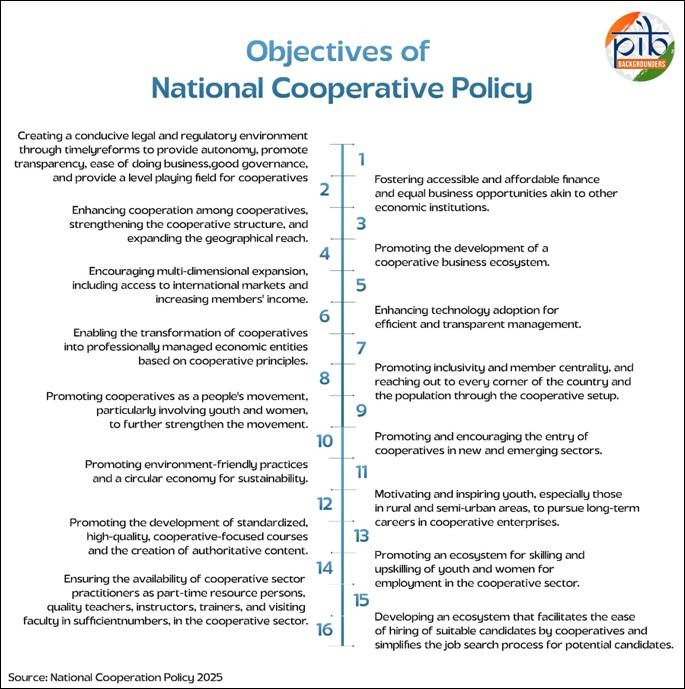
- 27 Jul 2025
In News:
- The National Cooperation Policy (NCP) 2025 marks a strategic roadmap for revitalizing India’s cooperative sector to meet the nation’s goal of becoming “Viksit” by 2047.
- Rooted in the ethos of Sahkar-se-Samriddhi, this policy aims to build on the unique strengths of India’s cooperative tradition, promote economic democratization, and uplift rural economies through collective participation.
- Mission: To create an enabling legal, economic, and institutional framework that will strengthen and deepen the cooperative movement at the grassroots level and facilitate the transformation of cooperative enterprises into professionally managed, transparent, technology-enabled, vibrant, and responsive economic entities to support production by the masses.
What is a Cooperative?
A cooperative is an autonomous association of persons, united voluntarily to meet their common economic, social, and cultural needs and aspirations through a jointly owned and democratically member-controlled enterprise.
Difference between Credit & Non-Credit Cooperatives
|
Aspect |
Credit Cooperatives |
Non-Credit Cooperatives |
|
Function |
Provide financial services like loans and savings |
Provide goods/services like farming inputs, housing, etc. |
|
Examples |
PACS, Urban Cooperative Banks |
Dairy, Marketing, Consumer, Housing Cooperatives |
The Indian cooperative movement has been the flag bearer of a participatory, people-led development model aimed at socio-economic upliftment at the grassroots level for more than a century.
Strategic Pillars:
The policy is structured around six mission pillars and 16 objectives:
- Strengthening the Foundation – Legal reforms, better governance, access to finance, digitalization.
- Promoting Vibrancy – Creating business ecosystems, expanding exports and rural clusters.
- Making Cooperatives Future-Ready – Technology integration, professional management, cooperative stack.
- Promoting Inclusivity and Deepening Reach – Promoting cooperative-led inclusive development and cooperatives as a people’s movement.
- Entering New and Emerging Sectors – Biogas, clean energy, warehousing, healthcare, etc.
- Shaping Young Generation for Cooperative Growth – Courses, training, employment exchanges.
Key Highlights of the Policy
Legislative and Institutional Reforms
- Encourage States to amend cooperative laws (Cooperative Societies Acts and Rules) to enhance transparency, autonomy and the ease of doing business.
- Promote digitalization of registrar offices and real-time cooperative databases.
- Revive sick cooperatives with institutional mechanisms.
Financial Empowerment
- Preserve and promote the three-tier Primary Agriculture Credit Societies - District Central Cooperative Bank - State Cooperative Bank credit structure.
- Promote cooperative banks and umbrella organizations (like National Urban Cooperative Finance & Development Corporation).
- Enable cooperative banks to handle government businesses.
Business Ecosystem Development
- Model cooperative villages with multipurpose PACS as growth engines.
- Encouraging States/UTs to develop at least one model cooperative village.
- Develop rural economic clusters (e.g., honey, spices, tea).
- Support branding under the ‘Bharat’ brand.
Model Cooperative Village
A Model Cooperative Village is a self-reliant rural unit developed through a cooperative-led, household-focused approach to enhance livelihoods and productivity.
Future-Readiness & Technology
- Develop a national ‘Cooperative Stack’ integrating with Agri-stack and databases.
- Promote Open Network for Digital Commerce (ONDC) and Government e-marketplace (GeM) platform integration.
- Encourage research and innovation through cooperative incubators and Centres of Excellence.
Open Network for Digital Commerce (ONDC)
The ONDC is a transformative initiative by the Department for Promotion of Industry and Internal Trade (DPIIT), Ministry of Commerce, Government of India aimed at democratizing digital commerce. Launched in April 2022, ONDC aims at promoting open networks for all aspects of exchange of goods and services over digital or electronic networks.
Government e-Marketplace (GeM)
GeM is an online platform for public procurement in India. The initiative was launched on August 09, 2016 by the Ministry of Commerce and Industry with the objective to create an open and transparent procurement platform for government buyers.
Inclusivity Measures
- Active participation of youth, women, SC/STs, and differently-abled in cooperatives.
- Model bye-laws for gender representation and transparent governance.
- Cooperative awareness campaigns in schools and colleges.
Model Bye-Laws
The Model Bye-laws are simply a representative sample and a guide to frame bye-laws of a multi-state cooperative society.
Sectoral Diversification
- Promote cooperatives in new and emerging sectors such as:
- Renewable energy,
- Waste management,
- Health and education,
- Mobile-based aggregator services (e.g., for plumbers, taxi drivers),
- Organic and natural farming,
- Biogas and ethanol production, etc.
Youth-Oriented Capacity Building
- Develop cooperative-focused courses in higher education institutions (HEIs).
- Build a national digital cooperative employment exchange.
- Promote financial and digital literacy among youth.
- Recruit quality cooperative teachers and resource persons.
Implementation and Monitoring
A robust multi-tier implementation structure is proposed:
- Implementation Cell within the Ministry of Cooperation with technical Project Management Unit support for effective and timely implementation of the policy.
- National Steering Committee on Cooperation Policy chaired by the Union Cooperation Minister will be constituted for overall guidance, inter-ministerial coordination, periodic policy review, etc.
- Policy Implementation and Monitoring Committee headed by the Union Cooperation Secretary for coordination with States, troubleshooting implementation bottlenecks, periodic monitoring and evaluation, etc.
India Skills Accelerator Initiative
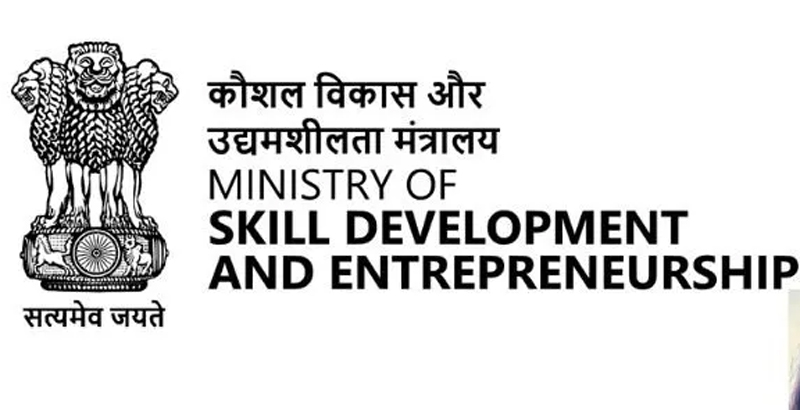
- 27 Jul 2025
In News:
The Ministry of Skill Development and Entrepreneurship (MSDE), in collaboration with the World Economic Forum (WEF), deliberated on the “India Skills Accelerator” initiative.
Key Highlights:
- Launched by: Ministry of Skill Development and Entrepreneurship (MSDE)
- Collaborating Partner: World Economic Forum (WEF)
- Announced on: 8th April 2025 during a high-level roundtable at Kaushal Bhawan, New Delhi
- Objective: To strengthen India's skilling ecosystem through inclusive upskilling and reskilling, enhanced government-industry collaboration, and investment in lifelong learning, particularly in high-growth sectors such as Artificial Intelligence, robotics, and clean energy.
- Key Features:
- Public-Private Collaboration: Structured as a national platform bringing together government and private sector stakeholders; notably, 2 of the 4 co-chairs are from the private sector.
- Focus Areas:
- Promotes scalable and adaptive training models
- Facilitates agile career transitions for the workforce
- Aligns education and training with evolving industry demands
- Strategic Approach:
- Raising awareness and changing perceptions about future skills
- Encouraging cross-sectoral collaboration and sharing of best practices
- Reforming institutional frameworks to support a responsive and dynamic skilling system
- Significance: The initiative is aligned with India’s goal of building a future-ready workforce by addressing skill mismatches and preparing youth for rapidly transforming industries. It contributes to the broader national missions like Skill India, Digital India, and Make in India.
National Critical Mineral Mission
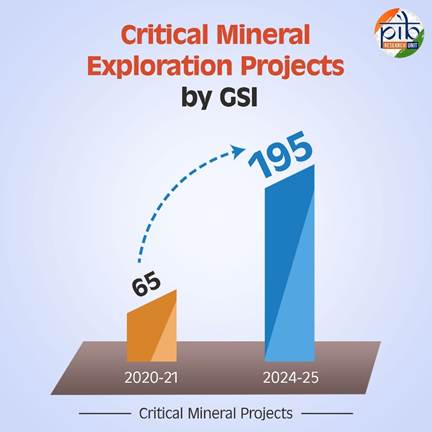
- 26 Jul 2025
In News:
The National Critical Mineral Mission (NCMM), launched by the Government of India in 2025, represents a strategic initiative to secure India's access to essential critical minerals, vital for clean energy, advanced electronics, defence, and emerging technologies. It aims to address India’s dependence on imports, strengthen domestic capacity, and build resilient supply chains.
What are Critical Minerals?
Critical minerals are those essential to economic development and national security, often marked by limited domestic availability and a high risk of supply disruption. These include lithium, cobalt, nickel, rare earth elements (REEs), graphite, and silicon, which are central to electric vehicles (EVs), solar panels, semiconductors, wind turbines, and defence applications.
Why NCMM? Strategic Context
- Energy Transition: India is 100% import-dependent for lithium, cobalt, and rare earths—crucial for EVs and energy storage.
- Tech Sovereignty: Strategic autonomy in AI, defence, and semiconductors depends on secure mineral access.
- Geopolitical Concerns: China controls 70–90% of global critical mineral processing. Diversifying supply chains is essential.
- Industrial Push: Schemes like PLI for EVs, electronics, and solar energy require a reliable mineral base.
- Climate Commitments: India aims to reduce emissions intensity by 45% (from 2005 levels) and reach net-zero by 2070.
Components of the National Critical Mineral Mission (NCMM)
Key Features of NCMM
1. Legal and Policy Framework
- Enacted under the Ministry of Mines in 2025.
- 30 critical minerals identified (24 inserted into Part D of the First Schedule of the MMDR Act, 1957).
- The Centre now has exclusive authority to auction mining leases for these minerals.
2. Domestic and Foreign Sourcing Targets (2024–2030)
|
Objective |
Target |
|
Domestic Exploration Projects |
1,200 |
|
Overseas Projects by PSUs |
26 |
|
Overseas Projects by Private Sector |
24 |
|
Recycling Incentive Scheme (in kilotons) |
400 |
|
Strategic Mineral Stockpile |
5 |
3. Capacity Building and Innovation
|
Objective |
Target |
|
Patents in Critical Mineral Tech |
1,000 |
|
Workforce Trained |
10,000 |
|
Processing Parks |
4 |
|
Centres of Excellence |
3 |
Sectoral Applications of Critical Minerals
- Solar Energy: Silicon, tellurium, indium, and gallium in photovoltaic cells; India’s solar capacity is 64 GW.
- Wind Energy: Neodymium and dysprosium in turbine magnets; target capacity: 140 GW by 2030.
- EVs: Lithium, nickel, cobalt in batteries; goal: 6–7 million EVs by 2024.
- Energy Storage: Lithium-ion battery storage systems; key for grid balancing and renewables.
Implementation Highlights
Exploration and Domestic Production
- 195 GSI projects launched in 2024–25, including 35 in Rajasthan.
- Over 100 mineral blocks identified for auction.
- Offshore exploration for polymetallic nodules (cobalt, REEs, nickel, manganese) underway.
- UNFC classification and MEMC Rules, 2015, guide the exploration methodology.
Asset Acquisition Abroad
- KABIL (Khanij Bidesh India Ltd):
- MoU with CAMYEN (Argentina) for lithium over 15,703 hectares.
- Ties with Australia for cobalt/lithium via Critical Mineral Office (CMO).
- Public–Private Partnership support via funding, MEA coordination, and guidelines for overseas investments.
Recycling and Circular Economy
- Incentives for mineral recovery from e-waste, fly ash, and tailings.
- Emphasis on building a formal recycling infrastructure.
- Current battery and electronics recycling sector is informal and lacks scale.
Processing and Midstream Infrastructure
- Development of dedicated Mineral Processing Parks.
- Encourage public–private partnerships and offer PLI-style incentives for refining technologies.
Challenges in India’s Critical Mineral Ecosystem
- High Import Dependence: 100% for lithium, cobalt, REEs.
- Underdeveloped Infrastructure: Lack of domestic refining, separation, and conversion capacity.
- Low Private Sector Participation: Technical and financial barriers deter participation.
- ESG Concerns: Mining zones often overlap with ecologically or tribally sensitive regions.
- Legal Bottlenecks: Environmental clearance delays due to weak ESG compliance.
- Informal Recycling Ecosystem: Fragmented, unregulated battery/e-waste recovery systems.
Strategic Roadmap Ahead
- Strengthen Exploration: Expand GSI capabilities; fund viability gap to attract investment.
- Diversify Global Sources: Engage in “friendshoring” with Australia, Argentina, U.S., etc.
- Build Midstream Capacity: Set up refining zones, mineral parks, and conversion units.
- Sustainable and Inclusive Mining: Implement ESG mandates and tribal welfare frameworks.
- Enhance Circular Economy: Provide tax breaks and subsidies for high-efficiency recovery systems.
Institutional Support
- IREL (India) Limited:
- Produces ilmenite, zircon, sillimanite, and rare earths.
- Operates Rare Earth Extraction Plant (Chatrapur, Odisha) and Refining Unit (Aluva, Kerala).
- Profitable PSU with ?14,625 million turnover (2021–22), including ?7,000 million exports.
Conclusion
India's National Critical Mineral Mission (NCMM) is pivotal for achieving strategic autonomy, industrial growth, and clean energy goals. By integrating domestic exploration, international partnerships, midstream processing, recycling, and regulatory reform, NCMM lays the foundation for a resilient and self-reliant mineral ecosystem. Its success is critical for India’s leadership in green technologies, manufacturing, and strategic geopolitics—making it a cornerstone initiative under Atmanirbhar Bharat and India's 21st-century industrial vision.
Financial Inclusion Index (FI-Index)
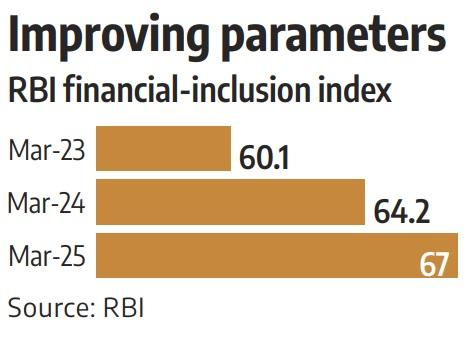
- 24 Jul 2025
In News:
The Reserve Bank of India’s Financial Inclusion Index (FI-Index) saw a 4.3% rise in FY2024-25, climbing from 64.2 in March 2024 to 67 in March 2025. This growth signals India’s ongoing success in expanding access to financial services, particularly in underserved regions, and enhancing the depth and quality of financial inclusion.
Understanding Financial Inclusion
- Financial inclusion refers to ensuring that individuals and businesses have accessible, affordable, and appropriate financial services such as banking, insurance, pensions, and investments. These services should be delivered responsibly and sustainably, supporting long-term economic empowerment.
What is the Financial Inclusion Index (FI-Index)?
- Developed by the RBI, the FI-Index offers a comprehensive measure of financial inclusion in India. It was formulated in consultation with the government and relevant financial sector regulators and captures progress across diverse financial domains—including banking, insurance, postal services, investments, and pensions.
- The Index is expressed as a single score between 0 and 100, where 0 denotes complete exclusion and 100 indicates full financial inclusion.
Components of the FI-Index
- Access (35% weight): Availability of financial services to the public.
- Usage (45% weight): Frequency and extent of usage of financial services.
- Quality (20% weight): Incorporates factors such as financial literacy, consumer protection, and equality in service delivery.
Key Insights from FY2024–25
- The FI-Index rose to 67 in March 2025, indicating broader and deeper financial engagement.
- All three sub-indices—access, usage, and quality—showed improvement.
- Notably, the rise was primarily driven by enhanced usage and service quality, reflecting the success of financial literacy campaigns and improved consumer trust in financial systems.
Importance of Financial Inclusion
Financial inclusion is not just an economic tool—it is a developmental imperative. It:
- Fuels entrepreneurship and employment generation.
- Advances gender empowerment, especially among women-led households.
- Helps in poverty alleviation and the resilience of vulnerable groups against financial and climate-related shocks.
- Supports at least seven of the United Nations Sustainable Development Goals (SDGs), including reducing inequalities and promoting inclusive economic growth.
Major Government Initiatives Driving Financial Inclusion
India's focused efforts have resulted in widespread access to formal financial services:
- Pradhan Mantri Jan Dhan Yojana (PMJDY): Over 54.58 crore bank accounts opened; deposits crossed ?2.46 lakh crore by January 2025.
- Atal Pension Yojana (APY): Enrolments surged to 7.33 crore, with 89.95 lakh new subscribers in FY25 alone.
- Pradhan Mantri Jeevan Jyoti Bima Yojana (PMJJBY): Covered 22.52 crore people, disbursing over ?17,600 crore for 8.8 lakh claims.
- Pradhan Mantri Suraksha Bima Yojana (PMSBY): Provided insurance to 49.12 crore individuals, settling claims worth ?2,994.75 crore.
- Pradhan Mantri Mudra Yojana (PMMY): Sanctioned loans worth ?32.36 lakh crore across 51.41 crore accounts; 68% to women and 50% to SC/ST/OBC beneficiaries.
- Stand-Up India Scheme: Loans worth ?53,609 crore sanctioned to 2.36 lakh entrepreneurs, promoting SC/ST and women entrepreneurship.
Stablecoins
- 24 Jul 2025
In News:
In the evolving landscape of digital finance, stablecoins have emerged as a promising innovation. Unlike volatile cryptocurrencies such as Bitcoin, stablecoins are designed to maintain a consistent value by pegging their worth to stable assets like fiat currencies or commodities. Recent legislative and technological developments, particularly in the United States, indicate growing global interest in integrating stablecoins into everyday financial systems.
What are Stablecoins?
Stablecoins are a type of cryptocurrency whose value is anchored to an external asset, commonly a fiat currency like the US dollar, or commodities such as gold. This pegging mechanism aims to minimize price volatility, making them more suitable for routine transactions.
There are three primary categories of stablecoins:
- Fiat-collateralized: Backed by actual reserves of fiat currency.
- Crypto-collateralized: Secured using other cryptocurrencies as collateral.
- Algorithmic (non-collateralized): Use smart contracts to automatically manage the coin’s supply based on demand.
Although designed for stability, these digital assets still carry some risks, especially if reserve management is opaque or unregulated.
Technological Foundation
Stablecoins, like other cryptocurrencies, are built on blockchain technology—a decentralized, distributed ledger system that records transactions in a secure, transparent manner. Blockchains operate through consensus mechanisms without needing a central authority, making stablecoins capable of direct peer-to-peer transactions without traditional banking intermediaries.
Recent Policy Development: The GENIUS Act
In a landmark move, the GENIUS Act (Generating Emergency National Income Using Stablecoins) was recently signed into law by the US President. It provides a regulatory framework specifically for US dollar-pegged stablecoins like USDC (by Circle) and USDT (by Tether). This legislative support is expected to accelerate the mainstream adoption of stablecoins, especially in cross-border payments.
Applications of Stablecoins
- Remittances and Cross-Border Transfers:
- Traditional remittance services like Western Union or MoneyGram charge high fees and delays.
- Stablecoins offer instant, low-cost transactions, benefiting especially those in countries facing hyperinflation or capital controls.
- Companies can also pay overseas workers in stablecoins, bypassing complex financial systems and exchange rate risks.
- E-Commerce and Retail:
- Online merchants can reduce reliance on credit card networks, which collected over $187 billion in fees in the US in 2023 alone.
- Stablecoins eliminate intermediaries, reducing transaction fees and improving profit margins.
- Enterprise and Supply Chain Payments:
- Businesses can benefit from faster and cheaper cross-border payments.
- Chinese conglomerate JD.com suggests stablecoins could cut transaction costs by 90% and reduce settlement time from days to seconds.
- Custom Stablecoins by Corporations:
- Giants like Amazon, Walmart, and JD.com are exploring the issuance of proprietary stablecoins to support in-house payment systems, customer loyalty programs, and even financial services.
- This could potentially shift customer deposits away from traditional banks, affecting their lending capacity.
- Integration with Artificial Intelligence: Emerging AI agents may autonomously execute and manage stablecoin-based transactions, particularly in business-to-business ecosystems, improving operational efficiency.
Opportunities and Challenges
Advantages:
- Faster, cheaper international payments
- Improved financial inclusion
- Enhanced efficiency in e-commerce and global business operations
Concerns:
- Regulatory uncertainty, especially across jurisdictions
- Security risks, including fraud and hacking
- Potential disruption to traditional banking systems
SASCI Scheme
- 23 Jul 2025
In News:
The Ministry of Tourism has issued operational guidelines for the SASCI Scheme – Special Assistance to States for Capital Investment – Development of Iconic Tourist Centres to Global Scale – aiming to comprehensively upgrade iconic tourist destinations across India.
About the SASCI Scheme
- Objective: To develop iconic tourist centres into world-class destinations, ensuring global branding and promotion, and enhancing the overall tourist experience.
- Ministry in Charge: Ministry of Tourism, Government of India.
- Nature of Assistance: Central Government provides financial support to State Governments for selected tourism projects under capital investment mode.
Key Features of the Scheme
- Integrated Development:
- Creation of end-to-end tourist experiences, including infrastructure, amenities, and accessibility.
- Strengthening all points of the tourist value chain – from entry to exit.
- Proposal-Based Implementation:
- Projects are selected based on proposals submitted by State Governments.
- These proposals are evaluated based on several prescribed parameters.
- Evaluation Parameters Include:
- Connectivity to the site
- Existing tourism ecosystem
- Carrying capacity of the site
- Sustainability measures (environmental, social)
- Operation and maintenance mechanisms
- Project impact and value creation
- Tourism marketing strategies
- Design & Sustainability:
- Projects to leverage high-quality expertise for planning, design, and execution.
- Emphasis on sustainable development and maintenance of tourist centres.
Implementation Timeline & Funding
- Timeline:
- Projects to be completed within a maximum of 2 years from sanction.
- Deadline for Central funding: 31st March 2026.
- Execution Responsibility: Entirely with the respective State Governments under the guidance of the Ministry of Tourism.
Promotional Strategy
- The Ministry promotes these destinations through:
- International and domestic events
- Social media campaigns
- Dedicated tourism websites
- Other promotional and branding platforms
India Emerges as Global Leader in Real-Time Digital Payments
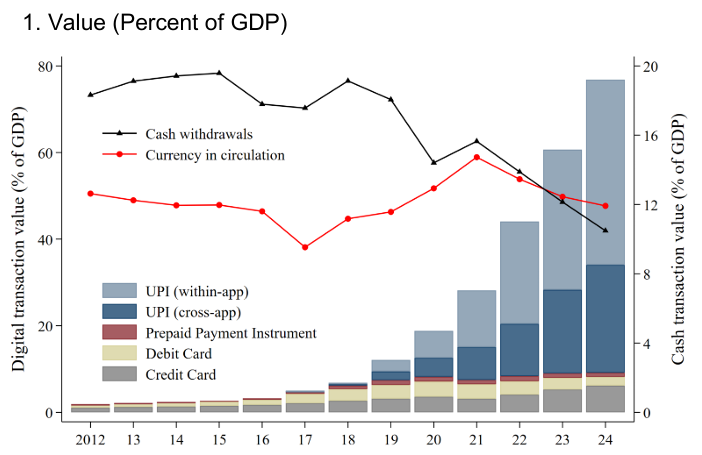
- 21 Jul 2025
In News:
India has cemented its position as the world’s foremost digital payments economy, with the Unified Payments Interface (UPI) registering 18.39 billion transactions in June 2025, according to a report jointly prepared by the International Monetary Fund (IMF) and FIS Global.
About the Report: Fast Payments 2025
- Prepared by: IMF and FIS Global
- Focus: Assessment of digital public infrastructure enabling real-time payments
- Key Metric Introduced: Faster Payment Adoption Score (FPAS) – a benchmark for evaluating the scale and effectiveness of fast payment systems across 30 countries
India’s Standout Performance
- Top Global Rank: India scored 87.5% on FPAS, ranking highest globally—outpacing Brazil, Singapore, the United Kingdom, and the United States.
- UPI Ecosystem Scale:
- Handles over 640 million daily transactions
- Caters to approximately 491 million users and 65 million merchants
- Supported by a network of 675+ banks
- Speed and Cost Efficiency:
- Payment settlement within 5 seconds
- Transactions are virtually cost-free for users
- International Footprint:
- UPI services are now live in seven countries, including France, UAE, and Singapore
- India is advocating its adoption within the BRICS+ grouping as a model for cross-border payment interoperability
Key Strengths of UPI Infrastructure
- Interoperability: Seamless transactions across multiple platforms (PhonePe, Google Pay, Paytm, etc.) and banks
- Inclusivity Features:
- Aadhaar-based linking
- USSD-based services for feature phones
- Multilingual interfaces to facilitate rural access
- Built on India Stack: Utilizes digital infrastructure components like Aadhaar, eKYC, DigiLocker, and Account Aggregator
- Security Framework:
- Real-time fraud detection
- Tokenization and robust regulatory oversight
- Collaborative Ecosystem: A joint effort of NPCI, fintech players, and RBI, ensuring scalability and resilience
ADEETIE Scheme
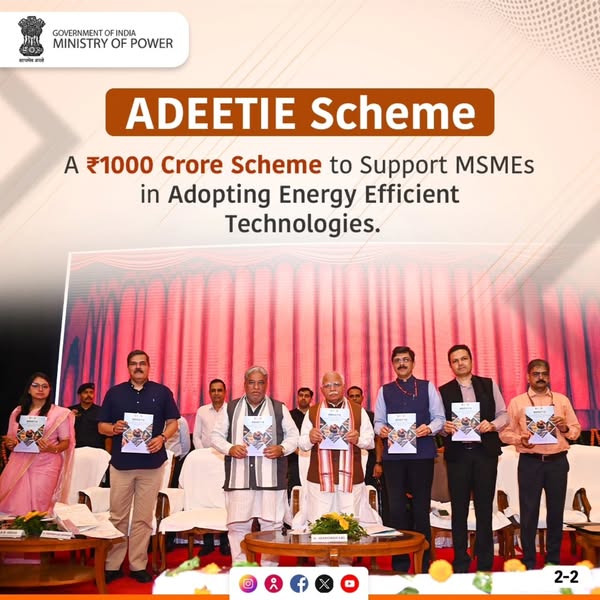
- 18 Jul 2025
In News:
The Ministry of Power launched the Assistance in Deploying Energy Efficient Technologies in Industries & Establishments (ADEETIE) scheme to promote energy efficiency in Micro, Small, and Medium Enterprises (MSMEs).
Key Details:
- Objective: To reduce energy consumption by 30–50%, enhance the power-to-product ratio, and facilitate the creation of green energy corridors in MSME industrial sectors.
- Implementing Agency:
- o Bureau of Energy Efficiency (BEE), under the Ministry of Power
- o Legislative backing: Energy Conservation Act, 2001
- Duration & Funding
- o Period: FY 2025–26 to 2027–28 (3 years)
- o Budgetary Outlay: ?1000 crore
- Target Beneficiaries
- Eligible Enterprises: MSMEs with Udyam ID
- Must demonstrate a minimum 10% energy savings using implemented technologies
- Sectoral Coverage: Targets 14 energy-intensive sectors, including: Brass, Bricks, Ceramics, Chemicals, Fisheries, Food Processing, etc.
- Implementation Strategy Phased Roll-out:
- Phase 1: 60 industrial clusters
- Phase 2: Additional 100 clusters
Scheme Components
|
Component |
Details |
|
Interest Subvention |
- 5% for Micro & Small Enterprises |
|
Technical Assistance |
- Investment Grade Energy Audits (IGEA) |
|
Financial Support |
- Incentives for adoption of efficient technologies |
Other BEE Initiatives for MSMEs
|
Initiative |
Purpose |
|
BEE-SME Programme |
Promote energy efficiency in MSMEs |
|
National Programme on Energy Efficiency & Technology Upgradation |
Modernize and reduce energy intensity |
|
SIDHIEE Portal |
Digital tool providing energy efficiency insights and handholding support |
Bureau of Energy Efficiency (BEE)
- The Government of India set up the Bureau of Energy Efficiency (BEE) on March 1, 2002 under the provisions of the Energy Conservation Act, 2001.
- The mission of the Bureau of Energy Efficiency is to assist in developing policies and strategies with a thrust on self-regulation and market principles, within the overall framework of the Energy Conservation Act, 2001 with the primary objective of reducing the energy intensity of the Indian economy.
- BEE coordinates with designated consumers, designated agencies and other organizations and recognises, identifies and utilises the existing resources and infrastructure, in performing the functions assigned to it under the Energy Conservation Act.
- The Energy Conservation Act provides for regulatory and promotional functions.
e-Truck Incentive Scheme
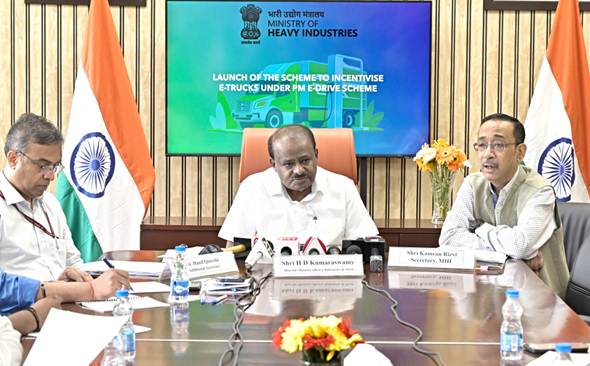
- 15 Jul 2025
In News:
The Government of India, under the PM E-DRIVE initiative, has launched the country’s first dedicated financial incentive scheme for electric trucks (e-trucks). Spearheaded by the Ministry of Heavy Industries (MHI) and launched by Union Minister H.D. Kumaraswamy, the initiative is a key component of India's push toward green freight mobility, net-zero emissions by 2070, and cleaner urban air quality.
Key Features of the Scheme
- Scope & Objective: Aimed at reducing emissions from the freight sector, lowering logistics costs, and encouraging indigenous e-truck manufacturing under Atmanirbhar Bharat.
- Target Vehicle Categories:
- N2 Category: Trucks with Gross Vehicle Weight (GVW) between 3.5 to 12 tonnes
- N3 Category: Trucks with GVW above 12 tonnes and up to 55 tonnes (In case of articulated vehicles, only the N3-category puller tractor is eligible.)
- Eligibility Conditions:
- Mandatory scrapping of old diesel trucks for availing incentives
- Battery warranty: 5 years or 5 lakh km
- Vehicle and motor warranty: 5 years or 2.5 lakh km
- Incentives Structure:
- Maximum incentive: ?9.6 lakh per e-truck
- Incentive amount based on GVW
- Disbursal: Upfront reduction in purchase price; reimbursed to OEMs via PM E-DRIVE portal (first-come, first-served)
Implementation Timeline and Financial Outlay
- Duration: October 1, 2024 – March 31, 2026
- Budget:
- ?500 crore earmarked for e-trucks within an overall outlay of ?10,900 crore under PM E-DRIVE
- Dedicated ?100 crore allocation for 1,100 e-trucks registered in Delhi to combat air pollution
Wider PM E-DRIVE Ecosystem (formerly EMPS-2024)
- EV Categories Covered:
- Electric 2-Wheelers: Incentive of ?5,000/kWh (capped at ?10,000 in Year 1, ?5,000 in Year 2)
- Electric 3-Wheelers: ?25,000 in Year 1, ?12,500 in Year 2
- L5 Cargo EVs: ?50,000 in Year 1, ?25,000 in Year 2
- E-buses and e-ambulances: Covered under future extensions
- e-Vouchers: Introduced for digital verification and incentive tracking. One vehicle per Aadhaar; required for OEM reimbursement.
- Charging Infrastructure: The scheme promotes setting up EV Public Charging Stations (EVPCS) in high EV penetration cities and along major highways.
Strategic Importance and Impact
- Environmental: Diesel trucks constitute only 3% of the vehicle fleet but contribute to 42% of transport-related GHG emissions.
- Deployment Goal: Support for 5,600 e-trucks across India
- Sectoral Focus: Logistics, cement, steel, and port sectors
- Industry Participation: OEMs like Tata Motors, Ashok Leyland, Volvo Eicher are actively engaged
- CPSE Involvement: SAIL to procure 150 e-trucks and electrify 15% of hired vehicles.
Catastrophe Bonds (Cat Bonds)
- 13 Jul 2025
In News:
Life insurance is common in India, but disaster risk insurance is not. Low coverage leaves most assets and livelihoods uninsured and vulnerable to loss. Globally, after the late-1990s U.S. hurricanes impacted even re-insurers, catastrophe risk began shifting to financial markets via catastrophe bonds (cat bonds).
What are Catastrophe Bonds (Cat Bonds)?
Catastrophe bonds (cat bonds) are insurance-linked securities (ILS) that convert disaster risks into tradable debt instruments, allowing countries or insurers to transfer the financial burden of natural disasters to capital markets.
- They are high-yield bonds issued by governments or insurance entities (sponsors) via intermediaries like the World Bank or Asian Development Bank.
- In case of a pre-defined disaster event (e.g., a 7.0 magnitude earthquake or 250 km/h cyclone), investors lose part or all of the principal, which is used by the sponsor for relief and reconstruction.
- If no disaster occurs, investors receive attractive coupon payments and their principal is returned at maturity.
- A Special Purpose Vehicle (SPV) is created to manage funds, isolate risks, and ensure legal and financial transparency.
Why Cat Bonds Matter
India is one of the most disaster-prone countries in the world, experiencing regular cyclones, floods, landslides, earthquakes, and forest fires. Despite this:
- Insurance penetration remains low, leaving individual property and livelihoods largely uninsured.
- The fiscal burden of post-disaster recovery typically falls on government budgets, disrupting planned expenditure and long-term development projects.
As a solution, cat bonds offer pre-arranged, parametric-trigger-based disaster financing, enabling faster payouts and risk diversification.
Advantages of Cat Bonds
|
Benefit |
Explanation |
|
1. Fast Payouts |
Unlike conventional insurance, cat bonds disburse funds immediately after a trigger event. |
|
2. Fiscal Resilience |
Shields government budgets from sudden disaster-related shocks. |
|
3. Diversified Risk |
Catastrophic risks are uncorrelated with financial markets, offering true portfolio diversification. |
|
4. Broader Capital Base |
Taps into global capital markets, beyond traditional reinsurance capacities. |
|
5. Encourages Mitigation |
Countries with better disaster preparedness may attract lower premiums. |
Cat bonds also appeal to institutional investors, especially pension funds and hedge funds, seeking returns that diversify portfolio risk away from traditional market-linked assets.
Limitations and Challenges
|
Limitation |
Explanation |
|
Trigger Rigidity |
No payout if the event falls just short of the pre-set parameters (e.g., a 6.5 magnitude quake when 6.6 is the threshold). |
|
Design Complexity |
Requires precise, data-backed modeling; poor design may exclude real risks. |
|
Perception of Waste |
In resource-scarce settings, non-triggered bonds may be seen as wasteful. |
|
High Premiums |
Hazard-prone regions attract higher premiums, potentially reducing cost-effectiveness. |
Transparent design, clear actuarial modelling, and historical comparisons with actual relief costs are critical for effective implementation.
India’s Readiness for Cat Bonds
- Annual Allocation: ?1.8 billion allocated since FY21–22 for disaster mitigation and capacity building shows India’s proactive approach to risk reduction.
- Sovereign Credibility: India’s stable credit rating and large economy make it a credible sponsor for such instruments.
- Hazard Exposure: Increasing frequency and severity of climate-induced disasters makes India a suitable case for cat bond-backed financial risk transfer.
Towards a South Asian Cat Bond
Given shared disaster vulnerabilities, India could spearhead a regional catastrophe bond to cover multiple countries facing similar risks:
Benefits:
- Regional risk pooling reduces premium costs.
- Enables a broader hazard matrix (e.g., cyclones in Bay of Bengal, earthquakes in Himalayan belt).
- Enhances regional financial resilience and climate cooperation.
Possibilities:
- An earthquake bond covering India, Nepal, Bhutan
- A cyclone bond for India, Bangladesh, Sri Lanka, Maldives, Myanmar
Such instruments would address unhedged regional risks and promote disaster preparedness in South Asia.
Global Context
- $180 billion: Approximate global issuance of cat bonds since inception.
- $50 billion: Currently outstanding in global cat bond markets.
- Post-1990s hurricanes in the US catalyzed growth in this market, especially as reinsurers struggled to bear repeated losses.
Gini Index
- 07 Jul 2025
In News:
According to the World Bank’s Spring 2025 Poverty and Equity Brief, India has emerged as the fourth most equal society globally, with a Gini Index of 25.5—outperforming all G7 and G20 nations. Only the Slovak Republic (24.1), Slovenia (24.3), and Belarus (24.4) rank ahead.
This achievement marks a significant improvement from India’s Gini score of 28.8 in 2011 to 25.5 in 2022, reflecting a steady narrowing of income inequality and growing social equity.
Key Highlights:
Gini Index Comparison (2022-2023):
|
Country |
Gini Index |
|
Slovak Republic |
24.1 |
|
Slovenia |
24.3 |
|
Belarus |
24.4 |
|
India |
25.5 |
|
China |
35.7 |
|
United States |
41.8 |
|
Germany (G7) |
~31.4 |
|
United Kingdom (G7) |
~34.4 |
|
France (G7) |
~32.4 |
|
Japan (G7) |
~32.9 |
Poverty Reduction Achievements:
- 171 million people lifted out of extreme poverty (2011–2023).
- Population living under $2.15/day fell from 16.2% (2011–12) to 2.3% (2022–23).
- Under revised poverty line of $3.00/day, poverty fell to 5.3% in 2022–23.
Drivers of Income Equality:
a) Financial Inclusion:
- Jan Dhan Yojana: Over 55.69 crore bank accounts opened (as of June 2025).
- Enabled Direct Benefit Transfers (DBT), reducing leakages and ensuring targeted welfare.
b) Digital Infrastructure:
- Aadhaar: Over 142 crore issued (as of July 2025), enabling real-time, identity-based service delivery.
- DBT savings: Over ?3.48 lakh crore by March 2023.
c) Universal Healthcare Access:
- Ayushman Bharat: Over 41.34 crore health cards issued.
- Covers ?5 lakh per family/year; now extended to all citizens aged 70+ under Ayushman Vay Vandana.
- Over 32,000 empanelled hospitals ensure access to treatment.
d) Empowerment of Marginalized Communities:
- Stand-Up India: Loans worth ?62,807 crore disbursed to SC/ST and women entrepreneurs.
- PM Vishwakarma Yojana: Nearly 30 lakh artisans registered for credit and marketing support.
Significance for India and the World:
India’s low Gini score demonstrates that economic growth and social equity can be pursued together. The country’s targeted welfare architecture, digital governance tools, and inclusive schemes have created a replicable model for other developing nations.
As global inequality widens, India’s success offers a template for countries seeking to integrate economic reforms with social protection mechanisms to foster inclusive development.
Variable Rate Reverse Repo (VRRR)
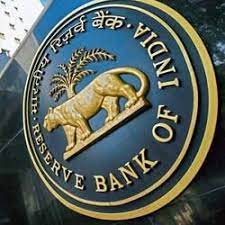
- 07 Jul 2025
In News:
The Reserve Bank of India (RBI) recently carried out a 7-day Variable Rate Reverse Repo (VRRR) auction worth ?1 lakh crore. This measure was taken to manage the surplus liquidity in the banking system, which had surged to approximately ?3.75 lakh crore.
What is VRRR?
The Variable Rate Reverse Repo (VRRR) is a liquidity management tool employed by the RBI to absorb excess funds from commercial banks for a specified period. Unlike the fixed reverse repo rate, the VRRR rate is determined through an auction mechanism, allowing market forces to decide the interest rate.
Key Characteristics:
- Auction-Based Interest Rate: Interest is not fixed but discovered through competitive bidding.
- Time-Bound Operation: Typically conducted for durations like 7, 14, or 28 days.
- Liquidity Management Tool: Helps the RBI withdraw excess liquidity from the financial system.
- Repo Rate Ceiling: The interest rate in VRRR operations cannot exceed the current repo rate.
- Flexible Tenor: RBI may modify the duration of VRRR auctions based on prevailing liquidity conditions.
Objective of VRRR
- To mop up surplus liquidity from the banking system.
- To help regulate short-term interest rates and support effective transmission of monetary policy.
- To foster a market-driven interest rate environment in the short-term interbank market.
How VRRR Functions
- Auction Announcement: RBI declares the amount and duration of the VRRR operation.
- Bid Submission: Banks submit bids with the amount and the interest rate at which they are willing to park funds with RBI.
- Rate Determination: RBI accepts bids at or above the cut-off rate, determined by the auction.
- Interest Earnings: Banks earn interest at the accepted rate over the auction tenure.
Implications of VRRR Operations
- On the Money Market: Tightens liquidity, leading to an uptick in short-term rates such as the call money rate and TREPS.
- On the Bond Market: May cause short-term government and corporate bond yields to rise, increasing borrowing costs.
- On Banks:
- Offers an avenue to earn returns on idle funds, improving short-term profitability.
- Temporarily locks up funds, which may reduce immediate availability for lending or investment.
This mechanism is a vital part of the RBI's toolkit to maintain financial stability and ensure efficient transmission of monetary policy.
RBI’s New Policy on Pre-Payment Charges
- 05 Jul 2025
In News:
In a move aimed at enhancing fair lending practices and improving access to affordable credit, the Reserve Bank of India (RBI) has prohibited pre-payment penalties on floating-rate loans availed by individuals and Micro and Small Enterprises (MSEs). The new norms will come into effect from January 1, 2026, and will apply to all loans and credit facilities sanctioned or renewed on or after this date.
Key Provisions of the RBI Guidelines
Ban on Pre-Payment Charges:
- Applicable to:
- Individuals taking floating-rate loans for non-business purposes, even with co-borrowers.
- Individuals and MSEs availing business loans.
- Individuals taking floating-rate loans for non-business purposes, even with co-borrowers.
- Lenders prohibited from imposing pre-payment penalties include:
- Commercial Banks (except SFBs, RRBs, Local Area Banks)
- Tier 4 Urban Cooperative Banks
- NBFCs in the Upper Layer (NBFC-UL)
- All India Financial Institutions (AIFIs)
- For smaller institutions like Small Finance Banks, RRBs, Tier 3 Urban Cooperative Banks, State and Central Co-op Banks, and NBFCs in the Middle Layer (NBFC-ML), the exemption from pre-payment charges applies to loans up to ?50 lakh.
Early Closure of Overdraft/Cash Credit:
- If the borrower informs in advance and closes the account on time, no pre-closure charges can be levied.
- If the lender requests prepayment, no charges are permitted in such cases either.
Transparency and Disclosure Requirements
- Lenders must clearly disclose the applicability or non-applicability of pre-payment charges in:
- Sanction letters
- Loan agreements
- Key Facts Statement (KFS) (where applicable)
- Any charges not explicitly disclosed as per these guidelines cannot be imposed.
Pre-Payment Without Lock-in
- Pre-payment (partial or full) can be made without any lock-in period, and irrespective of the source of funds.
Rationale Behind the Move
- The RBI noted that inconsistent practices regarding pre-payment fees have led to customer disputes.
- Ensuring easy and affordable finance for MSEs is “of paramount importance,” the central bank emphasized.
Policy Continuity and Legal Update
- All earlier RBI circulars and guidelines regarding pre-payment charges stand repealed.
- The final guidelines were issued after considering public feedback on the draft circular (February 2025).
Significance for MSEs and Borrowers
- Enhances credit mobility and refinancing freedom for borrowers.
- Prevents penalty-driven disincentives for early loan closure.
- Aligns with the RBI’s broader goal of financial consumer protection and MSME support.
Chemical Industry – Powering India’s Participation in Global Value Chains

- 05 Jul 2025
In News:
NITI Aayog has released a comprehensive report envisioning India’s transformation into a global chemical manufacturing hub with a projected 12% share in global value chains (GVCs) and USD 1 trillion in output by 2040.
Current Landscape of India’s Chemical Industry
- Significant Economic Contributor: India is the 6th largest chemical producer globally and 3rd in Asia, contributing over 7% to manufacturing GDP. Key linkages: Pharmaceuticals, textiles, agriculture, and construction.
- Fragmented Sector Structure: Dominated by MSMEs, the sector suffers from lack of integrated value chains and modern infrastructure. Example: Cluster-based growth is concentrated in Gujarat, Maharashtra, and Tamil Nadu.
- Low Global Integration: India’s 3.5% share in global chemical value chains reflects weak backward integration and poor export competitiveness. The trade deficit in 2023 was USD 31 billion.
- High Import Dependence: Heavy reliance on China and Gulf countries for feedstocks and specialty chemicals. Example: Over 60% of critical Active Pharmaceutical Ingredients (APIs) are sourced from China.
- Negligible R&D Investment: India invests only 0.7% of industry revenue in R&D, far below the global average of 2.3%, limiting innovation in green and specialty chemicals.
- Regulatory and Procedural Hurdles: Environmental clearance (EC) delays (up to 12–18 months) and procedural bottlenecks lead to cost and time overruns.
- Skilling Deficit:
A 30% shortage of skilled professionals in green chemistry, process safety, and nanotechnology. Example: ITIs and vocational programs lag behind industry requirements.
Emerging Opportunities
- Green Chemistry Revolution: Global shift toward sustainable chemicals presents new market opportunities.
- Geopolitical Realignment: Rising distrust of China globally enables India to emerge as an alternate supplier.
- FTA Leverage: India’s Free Trade Agreements (FTAs) with UAE, EU, and ASEAN can enhance tariff-free access to major markets.
- Make in India Ecosystem: Policy support through PLI schemes, Petroleum, Chemicals and Petrochemicals Investment Regions (PCPIRs), and chemical parks.
- Job Creation Potential: The sector could generate 7 lakh skilled jobs by 2030, particularly in petrochemicals, research, and logistics.
Persistent Challenges
- Feedstock Vulnerability: Over-dependence on crude oil and naphtha imports poses price and supply risks.
- Outdated Industrial Clusters: Legacy clusters lack modern safety systems, storage infrastructure, and waste treatment facilities.
- High Logistics Costs: Freight costs are 2–3 times higher than global averages, reducing export competitiveness.
- Regulatory Complexities: Absence of single-window clearances, frequent policy shifts, and inter-state inconsistencies deter investments.
- Weak Industry-Academia Linkages: Poor collaboration leads to low patent output and limited skill development.
NITI Aayog’s Recommendations
- Develop World-Class Chemical Hubs: Upgrade existing clusters and establish empowered committees. Suggested hubs: Paradeep, Dahej, Vizag. Introduce a dedicated Chemical Infrastructure Fund.
- Opex-Based Incentives: Offer operational subsidies linked to import substitution and export potential.
- Boost Technology Access & R&D:
- Establish an industry-academia interface under the Department of Science and Technology (DST).
- Enable technology transfer from global MNCs.
- Streamline Environmental Clearances:
- Simplify processes via DPIIT audit mechanisms.
- Ensure greater transparency and faster approvals.
- Strengthen Skill Development:
- Expand and modernize ITIs and specialized institutes.
- Introduce tailored courses in polymer science, green chemistry, and process safety.
- Negotiate Chemical-Specific FTAs:
- Incorporate product-specific clauses.
- Simplify rules of origin and documentation processes.
Kolhapuri Chappals

- 04 Jul 2025
In News:
Italian luxury fashion house Prada, after public criticism, has acknowledged that its Men’s Spring/Summer 2026 collection sandals were inspired by India’s traditional handcrafted footwear — the Kolhapuri chappals, a product with Geographical Indication (GI) status.
About Kolhapuri Chappals
Origin:
- Named after Kolhapur city in Maharashtra, India
- Handcrafted tradition dates back to the 13th century
Design & Craftsmanship:
- Made from 100% leather (cow, buffalo, or goat)
- Vegetable-tanned using natural dyes – non-toxic and eco-friendly
- Typicallyopen-toed with a T-strap design
- Traditionally in tan and brown shades with oil, natural, or polish finishes
- Time-intensive craftsmanship – can take up to six weeks per pair
Cultural & Economic Value:
- Recognised under the Geographical Indications (GI) Act of India
- Symbol of sustainable fashion, durability, and local artisanal skill
- Leather molds to feet over time, ensuring custom comfort and longevity
The Controversy: Cultural Appropriation vs Cultural Inspiration
- Criticism emerged after Prada launched sandals resembling Kolhapuris without credit
- Public and media backlash led to acknowledgement of Indian inspiration
- Highlights the importance of:
- Ethical recognition of traditional knowledge and cultural heritage
- Protection of GI-tagged products from unauthorized imitation
- Global awareness of India’s artisanal heritage
Financial Stability Report – June 2025
- 04 Jul 2025
In News:
The Reserve Bank of India (RBI) recently released the Financial Stability Report for June 2025.
What is the Financial Stability Report (FSR)?
- The Financial Stability Report (FSR) is a biannual publication by the Reserve Bank of India (RBI).
- It presents the collective assessment of the Sub-Committee of the Financial Stability and Development Council (FSDC-SC) regarding:
- Resilience of the Indian financial system
- Emerging systemic risks
- Outlook for macro-financial stability
Key Highlights – FSR June 2025
Macroeconomic & Global Outlook
- India remains a key driver of global growth, supported by strong macroeconomic fundamentals and prudent policies.
- Risks to growth include:
- Prolonged geopolitical tensions
- Trade and supply chain disruptions
- Weather-related uncertainties impacting agricultural output
Banking Sector Performance
- Gross Non-Performing Asset (GNPA) ratio:
- Stands at 2.3% as of March 2025, a multi-decadal low
- May rise modestly to 2.5% in baseline and 2.6% under adverse conditions by March 2027 (based on stress tests on 46 banks covering 98% of SCB assets)
- Capital Adequacy Ratios (CAR):
- Remain well above regulatory thresholds across the sector
- Even under severe stress scenarios, banks maintain adequate buffers — indicating robust financial health
Non-Banking Financial Companies (NBFCs)
- NBFCs are in good financial health with:
- Strong capital buffers
- Robust earnings
- Improving asset quality
- Continued financial resilience contributes to the overall stability of the financial system
Domestic Demand and Inflation Outlook
- Growth remains domestically driven
- Food inflation outlook favorable:
- Price moderation observed
- Crop output at record levels, supporting price stability
Significance for Financial Policy
- The report signals that India’s financial institutions are resilient and well-equipped to absorb economic shocks
- RBI's stress-testing framework confirms systemic soundness
- Reinforces India's investor confidence, especially in volatile global conditions
Employment Linked Incentive (ELI) Scheme
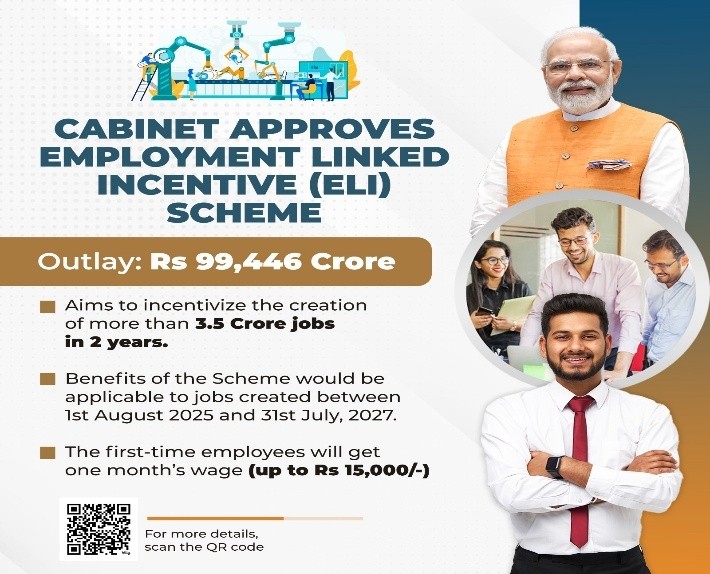
- 04 Jul 2025
In News:
The Employment Linked Incentive (ELI) Scheme is a flagship initiative of the Government of India aimed at formal job creation, especially for youth and in the manufacturing sector. It was announced in the Union Budget 2024–25 and came into implementation following cabinet approval.
Recent Update (July 2025 Cabinet Decision)
- EPFO registrationand Aadhaar seeding deadline:30 June 2025
- Job coverage period:1 August 2025 – 31 July 2027
Objectives
- Promote formal employment by incentivising employers
- Encourage first-time EPFO registration for workers
- Target high employment-generating sectors like manufacturing
- Provide direct income support and EPFO reimbursement subsidies
Key Components – 3 Schemes under ELI
|
Scheme |
Focus |
Key Beneficiaries |
Duration |
Central Outlay |
Estimated Beneficiaries |
|
Scheme A |
First-time employment |
New EPFO-enrolled youth |
3 years |
?23,000 crore |
210 lakh |
|
Scheme B |
Job creation in manufacturing |
Employers hiring ≥50 non-EPFO workers |
6 years |
?52,000 crore |
30 lakh |
|
Scheme C |
Support to employers |
All employers creating net new jobs |
6 years |
?32,000 crore |
50 lakh |
Detailed Scheme Benefits & Conditions
Scheme A: First-Time Employment
- Direct cash benefit: ?15,000 (?7,500 x 2 instalments)
- 1st installment: After 6 months of continuous EPFO-linked employment
- 2nd installment: After 12 months + completion of financial literacy course
- Condition: Exit before 12 months = employer must refund benefit
Scheme B: Job Creation in Manufacturing
- Eligibility: Employer must have 3-year EPFO record; hire ≥50 non-EPFO or 25% baseline
- Salary cap for subsidy: ?25,000/month (overall salary ≤ ?1 lakh)
- Incentive structure:
- Year 1: 24% of salary (employee + employer EPFO contribution)
- Year 2: 24%
- Year 3: 16%
- Year 4: 8%
- Refund clause: If employee leaves before 12 months
Scheme C: Support to Employers
- Eligibility:
- Employers with <50 workers: Hire ≥2 net new
- ≥50 workers: Hire ≥5 net new
- Subsidy per employee/month:
- ?1,000 (salary ≤ ?10,000)
- ?2,000 (?10,001–?20,000)
- ?3,000 (?20,001–?1 lakh)
- Duration: 2 years, extendable to 4 years for large job creators
Eligibility Criteria
- Employees:
- Salary < ?1 lakh/month
- Must be EPFO-registered with Aadhaar–UAN–bank linkage
- Employers:
- Must create net new jobs over EPFO baseline
- For Scheme B: 3-year EPFO record required
Application Process (Current Status)
- No dedicated ELI portal yet
- Via EPFO portal:
- UAN activation and Aadhaar seeding
- Employer-led EPFO registration
- Completion of Financial Literacy Course (for Scheme A)
Significance
- Reduces informal employment
- Supports youth entering formal jobs for the first time
- Incentivises hiring in labour-intensivemanufacturing
- Promotes EPFO inclusion and financial literacy
Challenges
- Compliance burden on small enterprises
- Ensuring retention to avoid refund liabilities
- Monitoring duplication between schemes
- Delay in scheme-specific digital portal rollout
National Turmeric Board Inaugurated in Telangana

- 03 Jul 2025
In News:
The Union Home Minister inaugurated the headquarters of the National Turmeric Board in Nizamabad, Telangana, addressing a long-standing 40-year demand of turmeric farmers in the region.
About the National Turmeric Board (NTB):
- Established by: Government of India
- Status: Statutory body
- Location:Headquartered in Nizamabad, Telangana – popularly known as the "Turmeric Capital of India"
Administrative Oversight:
- Functions under the Ministry of Commerce and Industry
- Operates in coordination with the Ministries of AYUSH, Agriculture, Pharmaceuticals, and Cooperation
Governing Composition:
- Chairperson appointed by the Central Government
- Secretary from the Department of Commerce
- Members from:
- Relevant central ministries
- Turmeric-producing states (e.g., Telangana, Maharashtra, Meghalaya)
- Farmer groups, exporters, and research institutions
Objectives of the Board:
- Promote value addition, branding, and marketing of turmeric products
- Ensure better prices to farmers by reducing intermediaries
- Promote global recognition of turmeric’s medicinal value
- Upgrade logistics and quality infrastructure to meet global standards
- Support training, research, and skill development in turmeric cultivation and utilization
Key Functions:
- Develop an end-to-end export ecosystem for turmeric
- Promote GI-tagged organic turmeric in international markets
- Ensure compliance with global food and safety standards
- Coordinate with the Spices Board, National Cooperative Exports Ltd., and other cooperatives for export promotion
Turmeric in India: An Overview
Botanical Information:
- Scientific Name:Curcuma longa
- A rhizomatous herbaceous plant, valued for its use in cooking, dyeing, and traditional medicine
- Commonly known as the "Golden Spice"
Agro-Climatic Conditions:
- Grown in tropical climates, requires 20–30°C temperature and high rainfall
- Prefers well-drained loamy soils
- Cultivated under both rain-fed and irrigated conditions
Production and Exports (2022–23):
- Area under cultivation: 3.24 lakh hectares
- Total production: 11.61 lakh tonnes
- India's global share: Over 75% of world turmeric production
- Varietal diversity: Over 30 indigenous varieties cultivated
- Exports: 1.53 lakh tonnes valued at USD 207.45 million
- Target: USD 1 billion in turmeric exports by 2030
- Top export destinations:Bangladesh, UAE, USA, Malaysia
Eight Years of GST
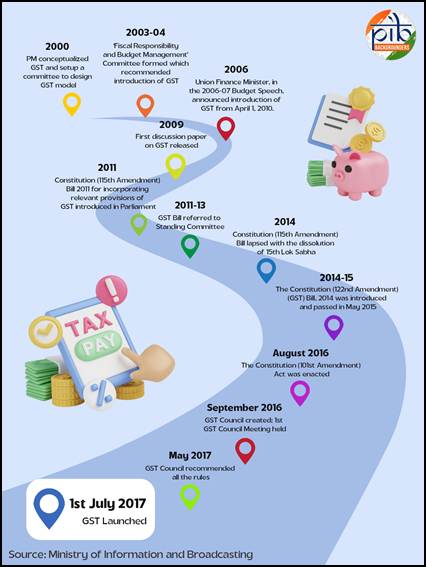
- 02 Jul 2025
In News:
The Goods and Services Tax (GST) was implemented on 1st July 2017, aiming to unify India’s fragmented indirect tax system into a single, nation-wide tax. It replaced multiple central and state levies such as excise duty, service tax, VAT, and others.
By simplifying the tax structure and improving transparency, GST aimed to enhance compliance, remove tax cascading, and create a common national market. As of 1st July 2025, GST has completed eight years.
Key Highlights of 2024–25
- In the financial year 2024–25, GST collections reached an all-time high of ?22.08 lakh crore, representing a growth of 9.4% over the previous year. The average monthly collection was ?1.84 lakh crore. The number of active GST taxpayers crossed 1.51 crore.
- According to the Deloitte GST@8 survey, 85% of respondents across industries reported a positive experience with GST, highlighting improvements in compliance, transparency, and ease of doing business.
Structure of the GST System
Components of GST
GST operates under a dual model:
- Central GST (CGST) and State GST (SGST) for intra-state transactions.
- Integrated GST (IGST) for inter-state transactions and imports.
Rate Structure
The GST Council has approved a multi-tier rate structure:
- Standard slabs of 5%, 12%, 18%, and 28% apply to most goods and services.
- Special lower rates include 0.25% on rough diamonds, 1.5% on cut and polished diamonds, and 3% on gold, silver, and jewellery.
- A Compensation Cess is levied on select goods such as tobacco, aerated drinks, and luxury cars to compensate states for revenue loss during the transition.
Key Features of GST
- Destination-Based Tax: GST is levied at the place of consumption, rather than origin. This ensures equitable revenue distribution and smooth credit flow across the supply chain.
- Input Tax Credit (ITC): Businesses can claim credit for taxes paid on inputs. This eliminates the cascading effect of taxes and reduces overall costs.
- Threshold Exemption: Small businesses with turnover below ?40 lakh for goods and ?20 lakh for services are exempt from GST, reducing the compliance burden on micro-enterprises.
- Composition Scheme: Businesses with turnover up to ?1.5 crore (goods) and ?50 lakh (services) can opt for a simplified tax scheme with fixed rates and minimal paperwork.
- Digital Compliance: All processes—from registration to return filing and payments—are conducted online through the GSTN portal. This digital-first approach enhances transparency and efficiency.
- Sector-Specific Exemptions: Essential sectors such as healthcare and education are either exempt or taxed at concessional rates to ensure affordability.
- Revenue Sharing: GST enables seamless credit transfers and transparent revenue sharing between the Centre and States, strengthening cooperative fiscal federalism.
Impact of GST
On MSMEs
- GST has provided major relief to micro, small, and medium enterprises by raising exemption thresholds and simplifying compliance. The introduction of the composition scheme allows them to pay tax at a flat rate with simplified filing.
- The Trade Receivables Discounting System (TReDS) has also expanded access to credit. As of May 2024, four digital platforms were operational, with over 5,000 buyers and 53 banks and 13 NBFCs registered as financiers.
- Other initiatives include quarterly return filing for businesses with turnover up to ?5 crore and SMS-based NIL return filing, reducing administrative hassle for small taxpayers.
On Consumers
- GST has benefited consumers by lowering tax rates on essential goods such as cereals, edible oils, sugar, and snacks. A study by the Finance Ministry found that GST led to an average household saving of 4% in monthly expenses.
- The expansion of the tax base from 60 lakh registered taxpayers in 2017 to over 1.51 crore in 2025 has enabled the government to rationalize rates further.
On the Logistics Sector
- The removal of inter-state check posts and the introduction of e-way bills have significantly improved logistics efficiency. Transport time has reduced by over 33%, and businesses no longer need to maintain warehouses in every state. This has facilitated the creation of centralized, tech-enabled supply chains.
Revenue Performance Over Time
Since its launch, GST collections have shown consistent growth. In 2020–21, collections stood at ?11.37 lakh crore. They rose to ?14.83 lakh crore in 2021–22, ?18.08 lakh crore in 2022–23, ?20.18 lakh crore in 2023–24, and finally to ?22.08 lakh crore in 2024–25. This reflects improved compliance, economic recovery, and digital enforcement.
GST Council and Its Role
Constitutional Basis: The GST Council was constituted under Article 279A of the Constitution following the passage of the 122nd Constitutional Amendment Act. The Council was formally set up after Presidential assent on 8th September 2016.
Composition: The Council includes:
- Union Finance Minister as Chairperson
- Union Minister of State (Finance/Revenue)
- State Finance Ministers
- Special representation in case of constitutional emergency (Article 356)
Major Decisions: Since its inception, the GST Council has met 55 times and taken several reform-oriented decisions:
- Introduced e-way bills, e-invoicing, and the QRMP scheme
- Reduced GST on under-construction affordable housing from 8% to 1%
- Lowered GST on electric vehicles from 12% to 5%, and exempted large EV buses
- Streamlined compliance through auto-populated returns and QR codes
- Rationalized GST slabs, reducing items in the 28% slab from 227 to 35
- Set up GST Appellate Tribunals with Principal Bench in New Delhi
- Rolled out Aadhaar-based biometric authentication and clarified rules for vouchers
- Recommended full GST exemption on gene therapy and a legal framework for Invoice Management System
Skills for the Future
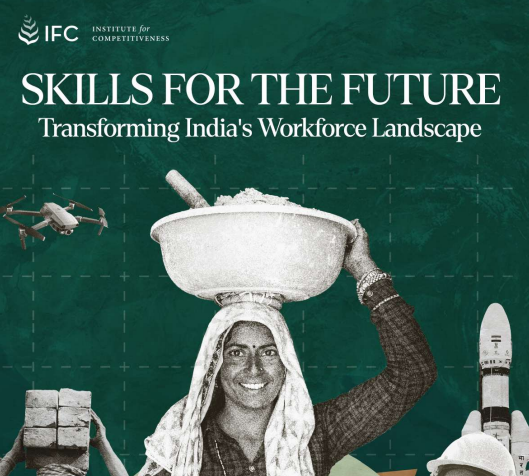
- 01 Jul 2025
In News:
Recently, theUnion Minister Jayant Chaudhary (MoS, Independent Charge – Ministry of Skill Development and Entrepreneurship, and MoS – Ministry of Education) unveiled the report "Skills for the Future: Transforming India’s Workforce Landscape", prepared by the Institute for Competitiveness (IFC). This data-driven report critically analyses India’s skilling ecosystem using PLFS 2023–24 and other datasets.
Significance of Skilling for India’s Development
- Demographic Dividend: India has one of the world’s youngest populations. Skilling is crucial to leverage this before population ageing sets in (by 2047).
- Economic Growth: A 1% rise in Gross Enrolment Ratio (GER) at the tertiary level increases GDP by 0.511% (Parika, 2020).
- Employment Creation: India needs to create 5 lakh non-farm jobs annually till 2030 (Economic Survey 2023–24).
- Global Competitiveness: Leadership in EVs, AI, biotechnology, and green energy demands a future-ready workforce.
Key Findings from the Report (PLFS 2023–24 Based)
1. Skill Distribution
- 88% of India’s workforce is in low-competency jobs (Skill Levels 1 & 2).
- Only 10–12% are employed in high-skill roles (Skill Levels 3 & 4).
- Only 4.5% of the workforce has received formal vocational training.
2. Education-Skill Mismatch
- Only 8.25% of graduates are in roles matching their skill level.
- Over 50% of graduates are employed in lower-skill jobs.
- Severe case of overqualification and underutilization of educational capital.
3. TVET and Sectoral Gaps
- Top 5 Sectors (66% of vocational enrolment):
- Electronics
- IT & ITeS
- Textiles & Apparel
- Healthcare & Life Sciences
- Beauty & Wellness
- Skill Deficits are critical in high-growth sectors like green tech, AI, biotech, and EVs.
4. Wage Inequality by Skill Level
Skill Level Avg. Annual Wage
Level 1 Rs.98,835
Level 2 Rs.1.26 lakh
Level 3 Rs.2.81 lakh
Level 4 Rs.3.94 lakh
46% of the workforce earns less than ?1 lakh/year, highlighting a major economic disparity.
5. Regional Disparities
- Low-Skilled States: Bihar, Assam (95% in Skill Levels 1 & 2)
- Higher-Skill States: Kerala, Chandigarh
- Migration and brain drain observed in low-skill, low-growth regions
Challenges Identified
- Skill-Education Mismatch: Graduates in low-skill jobs; vocational roles filled by underqualified informal workers.
- Weak TVET-Industry Linkage: Existing courses not aligned with Industry 4.0 or green economy needs.
- Low GER and Transition Dropout: Higher secondary GER at 57.56%, tertiary GER still below 30%.
- Gender & Social Exclusion: Low skilling access for women, SC/STs, rural youth.
- Data & Outcome Gaps: No central skill repository or real-time job-skill tracking.
Recommendations from the Report
- Institutional Reforms
- Launch a National Skill Gap Survey
- Establish a Central Skill Data Repository for real-time, evidence-based policymaking
- Curriculum & TVET Overhaul
- Update NCO codes (National Classification of Occupations)
- Integrate vocational training in schools
- Scale up PMKVY, NAPS, and credit-linked certifications
- Industry & Market Linkages
- Incentivise hiring of certified skilled labour
- Link industry wage structures to skill certifications
- Encourage industry-led training programs
- Targeted Inclusion & Regional Empowerment
- Empower State Skill Missions
- Prioritise high-potential regions and sectors
- Target women, SC/STs, informal sector workers
- Education Pipeline Strengthening
- Raise GER at higher secondary and tertiary levels
- Promote flexible, modular skilling programs for working populations and school dropouts
Digital Initiatives for Maritime Sector
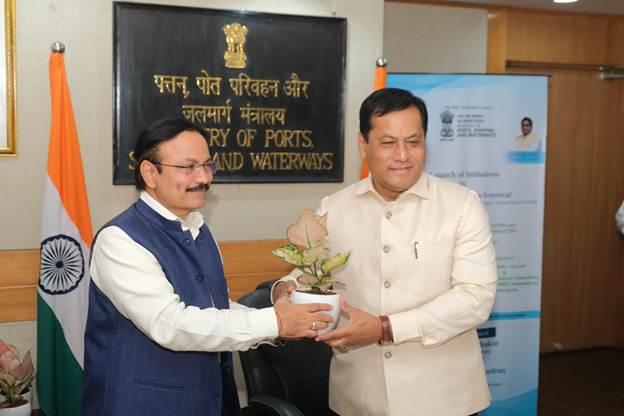
- 01 Jul 2025
In News:
Recently, the Union Minister for Ports, Shipping and Waterways, Shri Sarbananda Sonowal, launched a series of digital and sustainability-driven initiatives aimed at modernising India’s maritime sector. These reforms are aligned with the Maritime India Vision 2030 and Amrit Kaal Vision 2047.
Major Digital and Policy Initiatives Launched
1. Digital Centre of Excellence (DCoE)
- MoU signed between: MoPSW and Centre for Development of Advanced Computing (CDAC)
- Objective: Accelerate digital transformation across Indian ports
- Key Features:
- Application of AI, IoT, Blockchain to optimize maritime logistics
- Drive real-time operational upgrades
- Support green and sustainable port operations
- Strategic Alignment: Supports Atmanirbhar Bharat, Viksit Bharat @2047
2. SAGAR SETU Platform
- Type: Unified digital interface for maritime trade and EXIM operations
- Go-Live Date: 26th June 2025
- Integration: Connects 80+ ports and 40+ stakeholders
- Objective:
- Streamline cargo and vessel documentation
- Enable paperless, seamless, and transparent logistics
- Improve Ease of Doing Business (EoDB)
- Linked with: PM Gati Shakti National Master Plan
3. DRISHTI Framework
- Full Form: Data-driven Review Institutional System for Tracking Implementation
- Purpose: Real-time monitoring of projects under Maritime India Vision 2030
- Key Pillars:
- KPI Monitoring
- Progress & Achievements Tracking
- Organisational Oversight
- Functional Cell Coordination
- Strategic Value: Informed decision-making, faster project delivery
4. Standardised Scale of Rates (SOR) Template for Major Ports
- Objective: Standardise port tariffs to remove inconsistencies and improve transparency
- Features:
- Uniform structure for port tariffs
- Digitally comparable rates across ports
- Ports retain flexibility for local economic conditions
- Expected Impact:
- Enhances investor confidence
- Improves user experience
- Aligns with global maritime practices
Sustainability & Clean Energy: Hydrogen Transition Roadmap
Gateway to Green Report
Title: Gateway to Green — Assessing Port Readiness for Green Hydrogen Transition in India
- Released by: Ministry of Ports in collaboration with the Indian Ports Association (IPA)
- Objective: Transform Indian ports into green hydrogen hubs by 2030
- Strategic Goals:
- Produce 5 million tonnes of Green Hydrogen by 2030
- Develop infrastructure for production, storage, and export
- Leverage India’s maritime geography for clean energy leadership
- Targeted Ports for Hydrogen Transition:
- V.O. Chidambaranar Port
- Paradip Port
- Deendayal Port
- Jawaharlal Nehru Port
- Mumbai Port
- Cochin Port
- Key Action Areas:
- Land allocation for hydrogen projects
- Demand stimulation and investor facilitation
- International collaborations for knowledge and finance
- Shared infrastructure models
Strategic Relevance for India
- Economic Impact:
- Enhances trade competitiveness and reduces logistics cost
- Modernises infrastructure to global benchmarks
- Boosts Make in India and port-led development
- Digital Governance:
- Promotes data-driven decision-making
- Enables real-time monitoring and performance tracking
- Environmental Sustainability:
- Aligns with India’s National Hydrogen Mission
- Ports act as catalysts for clean energy transition
19th National Statistics Day
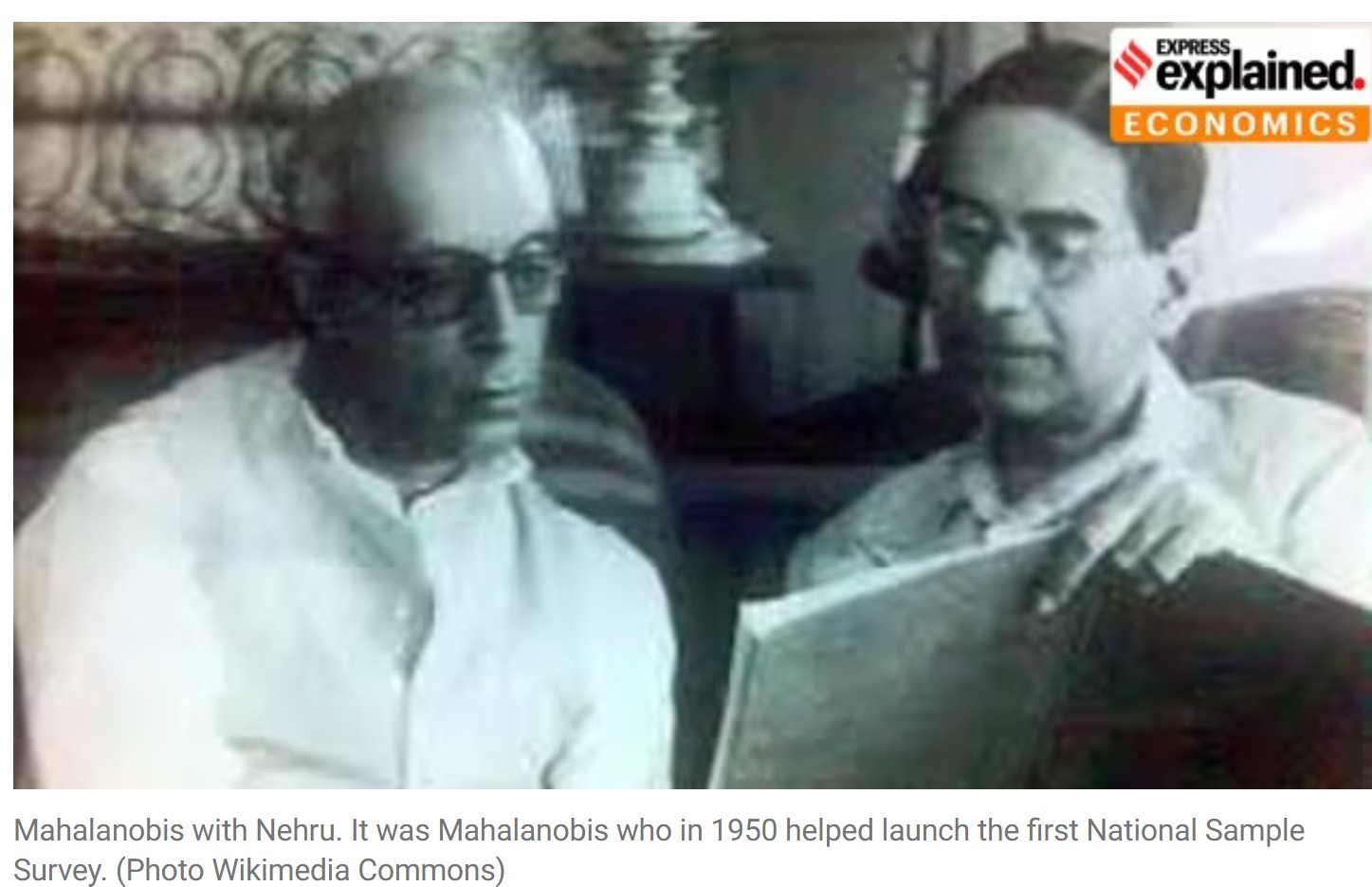
- 01 Jul 2025
In News:
MoSPI celebrates 19th Statistics Day honouring Prof. P.C. Mahalanobis and 75 years of National Sample Survey.
Key Highlights:
June 29 is observed as National Statistics Day in India to commemorate the birth anniversary of Prof. Prasanta Chandra Mahalanobis (1893–1972), widely regarded as the Father of Indian Statistics. The 2025 theme is "75 Years of National Sample Survey (NSS)".
The day is dedicated to promoting the role of statistics in nation-building and policy formulation, especially among the youth.
Key Contributions of P.C. Mahalanobis
1. Architect of India’s National Sample Survey (NSS)
- In 1950, Prof. Mahalanobis pioneered the National Sample Survey, India's first scientific and large-scale household data collection system.
- NSS is a large-scale, nationwide socio-economic data collection initiative conducted by the National Sample Survey Office (NSSO) under the Ministry of Statistics and Programme Implementation (MoSPI).
- Key Objectives of the NSS: Generate high-quality data to inform public policy, planning, and developmental programs.Conduct household surveys on:
- Consumption expenditure
- Employment & unemployment
- Health and education
- Migration and the informal sector
- Undertake the Annual Survey of Industries (ASI) to evaluate industrial performance.
- Support the agricultural sector by supervising crop area and yield estimation.
- Provide price statistics for rural and urban India to monitor inflation and cost-of-living changes.
- Key Features of the NSS
- All-India Scientific Coverage: Surveys conducted in both rural and urban areas using stratified multi-stage sampling methods.
- Organizational Structure – Four Major Divisions
Division Function
Survey Design & Research Division (SDRD) Survey planning, design, and methodology (HQ: Kolkata)
Field Operations Division (FOD) Data collection via 170+ regional offices (HQ: Delhi/Faridabad)
Data Processing Division (DPD) Data validation, tabulation, processing for surveys like PLFS & ASI
Survey Coordination Division (SCD) Coordinates survey activities and publishes Sarvekshana journal
- Multi-Thematic and Integrated Surveys
- Consumption patterns
- Employment trends (via Periodic Labour Force Survey - PLFS)
- Health and morbidity
- Education, migration, and social welfare indicators
- Support for Agriculture and Industry: Strengthens crop statistics and supports the ASI Web Portal for industrial data validation.
- Digital Integration & Real-Time Processing:Modernization efforts include urban sampling frame maintenance, tablet-based data collection, and real-time monitoring tools.
2. Mahalanobis Distance (1936)
- A multivariate statistical measure used to identify outliers and data anomalies.
- It quantifies the distance of a data point from a distribution, factoring in correlations between variables.
- Widely applied in fields such as public health, market research, and machine learning.
3. Flood Control and Environmental Planning
- In the 1920s, Mahalanobis used historical data to guide flood mitigation in Bengal and Odisha.
- His studies disproved incorrect assumptions (e.g., rising river beds) and recommended drainage improvements and dam construction.
- His early estimates contributed to the Hirakud Hydroelectric Project, inaugurated in 1957.
4. Institution Building: Founder of ISI & Sankhya Journal
- Founded the Indian Statistical Institute (ISI) in Kolkata in 1931, a premier research institute for statistics and mathematics.
- Launched ‘Sankhya’, India’s first statistical journal, fostering academic and applied research.
5. Role in National Planning & Technology Advocacy
- Chief architect of the Second Five-Year Plan, which introduced the Mahalanobis Model — emphasizing heavy industries and public sector-led growth.
- Advocated for digital computing in India. However, during the Cold War, the U.S. denied India access to the UNIVAC computer, fearing Mahalanobis’s pro-Soviet leanings.
Biographical Snapshot
Attribute Details
Born 29 June 1893, Kolkata (then Calcutta)
Education Presidency College; King's College, Cambridge
Field Statistics, Economic Planning, Data Science
Key Institutions Indian Statistical Institute (ISI), NSS, Planning Commission
Died 28 June 1972
RBI Eases Priority Sector Lending (PSL) Norms for Small Finance Banks (SFBs)
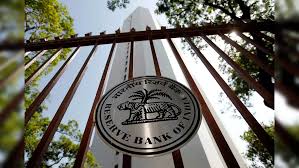
- 30 Jun 2025
In News:
In a major policy shift aimed at enhancing financial flexibility, the Reserve Bank of India (RBI) has reduced the Priority Sector Lending (PSL) target for Small Finance Banks (SFBs) from 75% to 60% of their Adjusted Net Bank Credit (ANBC).
What Has Changed?
Previous Norms:
- SFBs were required to allocate 75% of ANBC towards PSL.
- An additional 35% PSL requirement applied beyond the standard 40% applicable to universal banks.
- These strict targets led to:
- Difficulty in sourcing quality borrowers.
- Compressed profit margins.
- Limited portfolio diversification.
Revised Norms (2024):
- Overall PSL target reduced to 60% of ANBC.
- Additional PSL requirement brought down from 35% to 20%.
- Sub-sector allocation remains: SFBs must continue to dedicate 40% of ANBC to core PSL sectors such as agriculture, MSMEs, and weaker sections.
Objective of the Reform
- Enhance lending flexibility for SFBs.
- Improve asset quality and profitability by allowing portfolio diversification.
- Align SFB regulations more closely with those of other banks, without compromising on financial inclusion goals.
About Small Finance Banks (SFBs)
Origin and Mandate:
- Conceptualised by the NachiketMor Committee (2013).
- Regulated under the Banking Regulation Act, 1949.
- Created to expand financial inclusion by targeting:
- Small and marginal farmers,
- Micro and small enterprises (MSMEs),
- Unbanked and underserved populations.
Key Features:
- Offer basic banking services, including all deposit and small-ticket loan products.
- Operate on a localised model with strong rural and semi-urban outreach.
- Permitted to distribute non-risk sharing financial products like mutual funds and insurance.
Regulatory Requirements:
- At least 25% of branches in rural areas.
- Minimum 50% of loan portfolio must serve the MSME sector.
- Minimum net worth: ?100 crore at inception, to be raised to ?200 crore within 5 years.
- Maintain a Capital Adequacy Ratio (CAR) of 15% on risk-weighted assets.
Significance of the Move
- Offers SFBs greater operational autonomy and room to grow sustainably.
- Aims to balance developmental goals with commercial viability.
- Expected to promote credit flow to priority sectors while ensuring sound financial health of these institutions.
Digital Public Infrastructure for Fraud Risk Management
- 29 Jun 2025
In News:
The Reserve Bank of India (RBI) is set to develop a Digital Public Infrastructure for Fraud Risk Management (DPIP) under its supervision to curb rising instances of banking frauds in India. This aligns with broader efforts to enhance security and transparency in India’s financial ecosystem.
What is Digital Public Infrastructure (DPI)?
- Definition: DPI refers to foundational digital systems that are accessible, secure, interoperable, and designed to deliver essential public services.
- Examples in India:
- Aadhaar (Digital ID)
- Unified Payments Interface (UPI)
- DigiLocker, CoWIN, etc.
About DPIP
- Objective:To enhance fraud risk management through real-time intelligence sharing, data gathering, and interbank coordination using advanced technologies.
- Key Features:
- Will strengthen existing fraud detection systems in the banking ecosystem.
- Enables interoperable intelligence sharing between banks and financial institutions.
- Leverages AI/ML tools and data analytics for better predictive fraud detection.
- Institutional Mechanism:
- A committee under Shri A.P. Hota has been constituted to examine various aspects of DPIP’s implementation.
- RBI Innovation Hub (RBIH) is tasked with developing a prototype, in consultation with 5–10 public and private sector banks.
Need for DPIP
- Rise in Bank Frauds:
- As per RBI’s Annual Report:
- FY 2024: ?12,230 crore in frauds
- FY 2025: ?36,014 crore — almost 3x increase
- Increasing sophistication of cyber threats and fraud techniques necessitates robust preventive digital infrastructure.
- As per RBI’s Annual Report:
Other RBI Initiatives to Combat Bank Frauds
Initiative Description
Multi-Factor Authentication (MFA) Mandatory for all digital/electronic payments to ensure
secure transactions.
Zero Liability Framework Customers are not liable for losses arising from bank’s
negligence or third-party breaches.
bank.in and fin.in domains Reserved for verified bank websites to help customers
avoid phishing and fake sites.
India’s Coffee Exports

- 28 Jun 2025
In News:
India has emerged as a significant player in the global coffee trade, with its exports witnessing a sharp rise of 125% in the past 11 years, increasing from $800 million in 2014–15 to $1.8 billion in 2023–24, and continuing the momentum with over 25% growth in FY2025–26. This export surge highlights India's expanding footprint in the global premium coffee market, driven by a blend of policy support, sustainable cultivation practices, and global demand for specialty coffee.
Key Drivers of Export Growth
The Coffee Board of India, under the Ministry of Commerce, has played a pivotal role in this transformation through:
- Digitalisation of export permits, RCMC, and certificates of origin.
- Export incentives like freight and transit assistance—?3/kg for value-added exports and ?2/kg for green coffee to distant markets (e.g., US, Canada, Japan, Nordic countries).
- Subsidy support of 40% (up to ?15 lakh) for processing units (roasting, grinding, packaging).
- Global market intelligence and regular industry engagement to remove bottlenecks.
- Promotion via GI tags and digital branding campaigns.
These efforts have enhanced India’s readiness to meet stringent import regulations (e.g., EU deforestation norms) while enabling access to new and emerging markets.
Production and Cultivation
India is the 7th largest producer of coffee globally, accounting for about 3.5% of world production and ranks 5th in global coffee exports with a 5% share. The country produces 3.5–4 lakh tonnes of coffee annually, with Karnataka (70%), Kerala, and Tamil Nadu being major contributors.
- Arabica varieties: Kents, S.795, Cauvery, Selection 9.
- Robusta: High-yielding selections suited to Indian climate.
Climatic Features:
- Grown under two-tier shade canopies with over 50 native tree species.
- Arabica thrives at 1000–1500m, Robusta at 500–1000m altitudes.
- Requires 1600–2500 mm rainfall and 15°C–25°C temperature.
India is unique as the only country that cultivates 100% shade-grown coffee, which promotes biodiversity, soil and water conservation, and ensures a sustainable income for 2 million people, including small and marginal farmers.
Specialty and GI-Tagged Coffee
India’s coffee is known for its mild acidity, full-bodied flavour, and fine aroma. Intercropping with spices like pepper, cardamom, and vanilla further enhances its appeal. The country also boasts five regional and two specialty coffees with Geographical Indication (GI) tags, strengthening brand value in global markets.
The historic legacy of Indian coffee dates back over 400 years to the planting of coffee beans by Baba Budan in Karnataka, making it one of the oldest coffee traditions in Asia.
Household Income Survey in 2026

- 27 Jun 2025
In News:
The Ministry of Statistics and Programme Implementation (MoSPI) has announced that India will conduct its first nationwide Household Income Survey in 2026, marking a major milestone in the country’s data-driven policymaking framework.
What is the Household Income Survey?
- A comprehensive, nationwide survey aimed at collecting reliable and robust data on household income distribution across India.
- It is the first standalone survey focused specifically on income estimation, unlike earlier efforts that focused primarily on consumption and employment.
Key Implementing Bodies:
- Ministry of Statistics and Programme Implementation (MoSPI)
- National Sample Survey (NSS)
- Technical Expert Group (TEG)
Historical Background:
- 1950: National Sample Survey (NSS) established to conduct large-scale household surveys.
- 1955–1970: Income data attempted in the 9th, 14th, 19th, and 24th NSS rounds but faced challenges such as underreporting.
- 1983–84: A pilot income study failed to produce scalable data due to low income estimates relative to consumption and savings.
- Past difficulties deterred the launch of a dedicated income survey—until now.
Key Features of the 2026 Survey:
- First of its kind: India’s first survey exclusively focused on household income distribution.
- Methodologically robust: Designed by the TEG, incorporating international best practices in conceptual design, sampling, and estimation.
- Use of digital tools: Integration of technology-driven data collection methods to improve precision, timeliness, and reflect the role of digital economy in income generation.
- Built on recent statistical reforms by MoSPI in areas like:
- Unincorporated enterprise surveys
- Services sector data
- Private capital expenditure
- Tourism satellite accounts
Significance of the Survey:
- Addresses a critical data gap in understanding income inequality, disparities, and growth trends.
- Supports evidence-based welfare policies, including targeted subsidies, social protection, and fiscal redistribution.
- Enhances India’s capacity for inclusive growth assessment and SDG tracking.
- Strengthens the country's statistical infrastructure, aligning it with global standards.
World Investment Report 2025

- 23 Jun 2025
In News:
The World Investment Report 2025, released recently by the United Nations Conference on Trade and Development (UNCTAD), highlights critical trends in global foreign direct investment (FDI).
Key Details:
Purpose of the Report:
- To track global trends in Foreign Direct Investment (FDI) and international production.
- To guide policymakers and investors on aligning investment flows with sustainable development objectives.
- To monitor progress on the Sustainable Development Goals (SDGs) and Global Digital Compact through investment trends.
Major Global Trends Identified (2024 Data)
- Overall Decline in Global FDI: FDI declined by 11%, reaching $1.5 trillion, marking the second consecutive year of contraction.
- Digital Economy as a Growth Engine
- Value of digital-sector projects doubled, becoming the primary driver of FDI growth.
- Key growth areas: AI, data centres, cloud computing, semiconductors.
- SDG Investment Crisis: Investment in critical SDG sectors such as renewable energy, water, sanitation, and agrifood fell by 25–33%.
- Regional Divergence
- Africa: FDI surged by 75%, led by Egypt’s $35 billion megaproject.
- ASEAN: Moderate growth of 10% driven by realigned supply chains.
- China: FDI inflows fell by 29%, affected by geopolitical tensions.
- South America: Registered an 18% drop in FDI.
- Collapse in Infrastructure Finance: International Project Finance (IPF) declined by 26%, deepening the infrastructure gap in least developed countries (LDCs).
- Geopolitical Fragmentation
- Rising trade tensions, tariff barriers, and political risks are reshaping FDI flows.
- Emergence of near-shoring and regionalisation as firms relocate to reduce dependence on global supply chains.
Country-Specific Focus: India
- India received $28 billion in FDI inflows in 2024, retaining its rank among top global destinations.
- Key sectors: semiconductors, EV components, digital infrastructure.
- India ranked among top 5 global hubs for greenfield projects.
- Outbound FDI by Indian firms increased by 20%, showing strong outward investment intent.
Assessment of Positive and Negative Trends
Positive Trends:
- Digital FDI Boom: Reflects a global pivot towards a knowledge and tech-driven economy.
- Africa’s Rise: Significant confidence in Africa despite global slowdown.
- Resilient ASEAN & India: Benefitting from global supply chain realignment.
Negative Trends:
- Fall in SDG-Aligned Investments: Threatens progress towards global sustainability targets.
- Infrastructure Finance Crisis: Severely affects LDCs dependent on project finance.
- China’s FDI Decline: Raises concerns about the future of global investment flows amid US-China tensions.
- Geopolitical Fragmentation: Reduces investor appetite for long-term cross-border projects.
Strategic Recommendations
- Strengthen Digital Infrastructure: Scale up investments in broadband, cloud infrastructure, and data hubs through public-private partnerships.
- Bridge SDG Investment Gap: Mobilize development banks, sovereign wealth funds, and climate finance to support SDG sectors.
- Policy Coherence: Align digital, industrial, and sustainability policies at national and international levels.
- De-risking Private Investment: Promote blended finance models to attract global capital to emerging markets.
- Enhance Innovation Governance: Improve IPR frameworks and cross-border data regulations to boost investor confidence in innovation sectors.
- Boost Regional Integration: Strengthen regional trade agreements and infrastructure connectivity to counter global fragmentation.
Predatory Pricing and Competition Law Reform

- 21 Jun 2025
In News:
- The Competition Commission of India (CCI) has recently proposed the Determination of Cost of Production (DCOP) Regulations, 2025 to replace the older 2009 norms. A major reform introduced is the use of Average Total Cost (ATC) as a key metric to determine pricing in predatory pricing cases, while excluding ‘market value’ as a cost measure in such assessments.
- This development is significant in the context of India's broader competition law landscape, where concerns around market dominance and fair pricing are central to protecting consumer interest and ensuring a level playing field.
Understanding Predatory Pricing
- Predatory pricing refers to the practice of setting prices below cost to eliminate competitors from the market. Although consumers may benefit from low prices in the short term, the long-term consequence is often the emergence of monopolies, leading to higher prices and fewer choices. Due to its anti-competitive nature, this pricing strategy is banned in most jurisdictions globally.
- In India, predatory pricing is classified under ‘abuse of dominance’ as per the Competition Act, 2002, specifically under the broader category of unfair pricing or exclusionary conduct.
Legal Criteria for Establishing Predatory Pricing in India
For any allegation of predatory pricing to hold, three conditions must be satisfied:
- Dominance in the Market: The firm accused must hold a dominant position in the relevant market.
- Pricing Below Cost: The firm must have engaged in below-cost pricing, though defining “cost” has remained contentious. This raises the question—should cost mean fixed, variable, or total?
- Fixed costs are those independent of output (e.g., rent, IT systems).
- Variable costs change with production (e.g., raw materials, logistics).
- Total cost is the sum of fixed and variable costs.
- Intent to Eliminate Competition: There must be clear evidence that the pricing strategy was intended to exclude competitors from the market.
While dominance is usually straightforward to assess, determining what constitutes “cost” and proving anti-competitive intent remain legally complex.
Regulatory Evolution: From AVC to ATC
- Under existing regulations, the CCI had discretion to choose the cost metric on a case-by-case basis. The norm was to justify the use of any metric other than Average Variable Cost (AVC).
- A notable application was in the MCX vs. NSE case, where the Commission adopted the Long Run Average Incremental Cost (LRAIC) due to the network externalities inherent in stock exchange services, justifying inclusion of fixed costs.
- The new 2025 draft regulations now explicitly include Average Total Cost (ATC) as a valid benchmark for cost evaluation. ATC is widely accepted in industrial economics as a realistic representation of firm cost efficiency. By allowing ATC as a formal benchmark and excluding ‘market value’, the CCI aims to bring clarity and consistency in below-cost pricing investigations.
Why this Reform Matters
This proposed change holds importance for several reasons:
- It allows for a more holistic and realistic cost assessment, especially in industries where fixed costs form a significant part of the cost structure.
- It improves regulatory certainty and empowers the CCI to address anti-competitive practices in both legacy sectors (e.g., oil & gas) and emerging sectors (e.g., artificial intelligence and digital platforms).
- The reform is crucial at a time when the CCI’s budget has been declining year-on-year, limiting its enforcement capability. Simplified legal frameworks can enhance effectiveness without overburdening institutional resources.
‘Samarth’ Incubation Program

- 19 Jun 2025
In News:
The Centre for Development of Telematics (C-DOT), an autonomous R&D institution under the Department of Telecommunications (DoT), Government of India, has launched ‘Samarth’, a cutting-edge incubation program for startups in the Telecom and ICT sectors. In June 2025, C-DOT formally initiated Cohort-I of the program, selecting 18 startups through a competitive national process.
About the Samarth Program
- Objective: To nurture sustainable and scalable startups from ideation to commercialization in high-tech domains.
- Focus Areas:
- Telecom applications
- Cybersecurity
- 5G/6G technologies
- Artificial Intelligence (AI)
- Internet of Things (IoT)
- Quantum technologies
Key Features
Feature Details
Financial Support Grant of up to ?5 lakh per startup
Infrastructure Fully furnished office space at C-DOT campuses in Delhi and Bengaluru for 6 months
Technical Access Use of C-DOT’s lab facilities
Mentorship Guidance from C-DOT technologists and external domain experts
Format Hybrid (online + physical) delivery
Program Structure Two cohorts per year, each supporting up to 18 startups (max 36 annually)
Further Opportunities Eligible for extended collaboration and funding under C-DOT Collaborative Research Program (CCRP)
Implementation and Partnerships
- Implementation Partners:
- Software Technology Parks of India (STPI)
- TiE (The Indus Entrepreneurs) – Delhi NCR Chapter
- Evaluation Criteria: Startups were selected based on innovation, team strength, execution capability, problem-solution relevance, and commercialization potential.
- A distinguished Selection Committee from academia, industry, and government oversaw the evaluation.
Significance
- Boosts indigenous R&D in critical emerging tech sectors aligned with national priorities.
- Supports Atmanirbhar Bharat by encouraging homegrown innovation.
- Builds a robust startup ecosystem in the strategic telecom and ICT domains.
- Encourages public-private partnerships and collaboration between startups and research institutions.
RBI Infuses Rs.23,856 Crore into Banking System via Government Securities Buyback
- 14 Jun 2025
In News:
In a significant move to bolster liquidity in the financial system, the Reserve Bank of India (RBI) has infused ?23,856 crore into the banking system through a buyback of government securities (G-Secs) on June 5, 2025. This marks the second such bond buyback by the central bank in the current financial year (FY 2025–26).
What is a Bond Buyback?
A bond buyback refers to the RBI repurchasing existing government securities before their maturity. Conducted on behalf of the central government, such operations aim to inject durable liquidity into the banking system, improve the liquidity position of banks, and influence interest rates. It is part of the RBI's broader Open Market Operations (OMOs) toolkit.
Broader Liquidity Context
The RBI’s intervention is part of a broader liquidity management strategy, aimed at ensuring stable and surplus liquidity conditions. The central bank has employed various tools in recent months:
- Open Market Operations (OMOs)
- USD/INR Buy/Sell swap auctions
- Variable Rate Repo (VRR) auctions
These tools were especially crucial after the banking system faced a liquidity deficit in late 2024. Since then, the RBI’s operations have restored liquidity, with the system now in surplus mode—estimated at around ?3 lakh crore.
Significance
- Monetary Stability: Enhances the transmission of monetary policy by ensuring banks have sufficient funds to lend.
- Market Functioning: Eases pressure in the bond markets, improves demand for new issuances, and helps manage interest rates.
- Fiscal Management: Supports the government's borrowing program by managing the maturity profile of debt and yields.
SEZ Reforms to Promote Semiconductor & Electronics Manufacturing
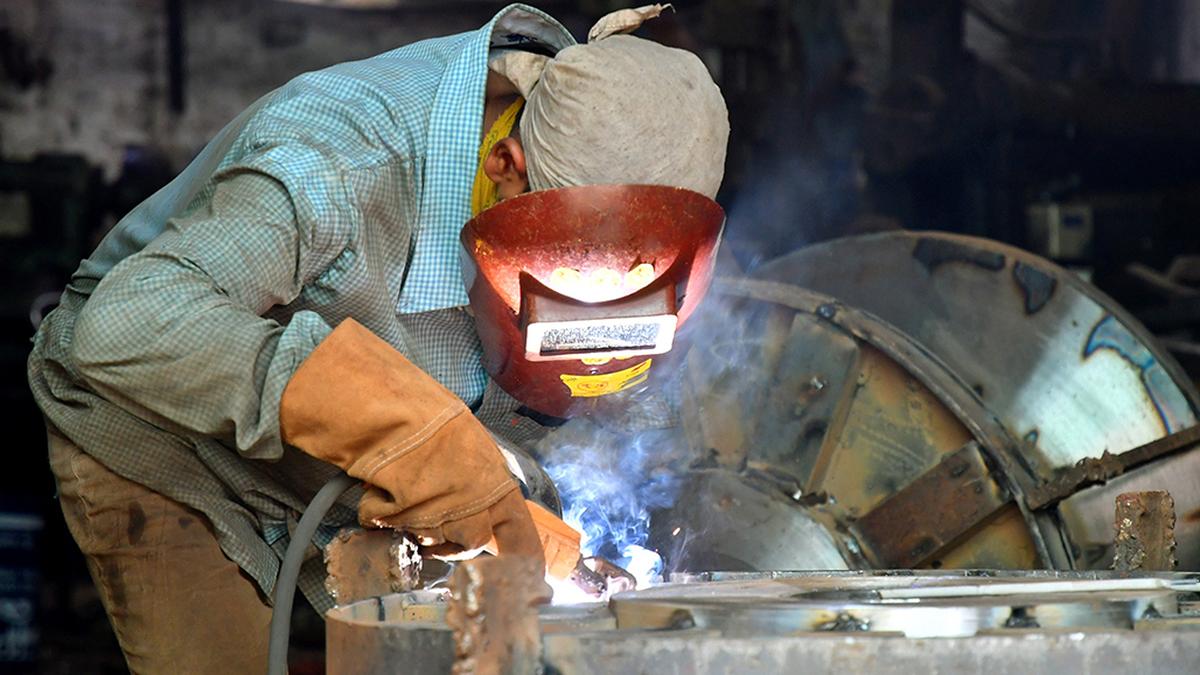
- 11 Jun 2025
In News:
Recently, the Department of Commerce notified key amendments to the SEZ Rules, 2006, to boost semiconductor and electronics component manufacturing. These reforms address the high capital intensity and import dependency of the sector and aim to attract pioneering investments.
Key Rule Amendments:
Rule 5: Minimum Land Requirement Relaxed
- What Changed: Minimum land required for SEZs dedicated to semiconductor/electronics manufacturing reduced from 50 hectares to 10 hectares.
- Why it matters
- Eases land acquisition
- Makes SEZs more feasible, especially in smaller industrial clusters
- Encourages pioneering investments in land-scarce regions
Rule 7: Encumbrance-Free Land Norm Relaxed
- What Changed: SEZ land no longer required to be entirely encumbrance-free, if it is mortgaged/leased to the Central or State Government or authorized agencies.
- Why it matters
- Removes a major legal hurdle in land approvals
- Accelerates SEZ project clearance and development timelines
Rule 18: Domestic Supply Allowed from SEZ Units
- What Changed: Semiconductor/electronics SEZ units can now sell products in the Domestic Tariff Area (DTA) after paying applicable duties.
- Why it matters
- Greater market access
- Enhances revenue and profitability
- Breaks away from traditional export-only SEZ model
Rule 53: Clarity on Free-of-Cost Goods in NFE Calculation
- What Changed: Free-of-cost goods received or supplied will now be included in Net Foreign Exchange (NFE) calculations, using customs valuation rules.
- Why it matters
- Encourages R&D and contract manufacturing
- Promotes transparent reporting of value addition
- Aligns with global manufacturing practices
Significance of Reforms:
- Tailored for High-Tech Sectors: Recognises the long gestation and capital-intensive nature of semiconductor and electronic component industries.
- Encourages Domestic and Global Investment: Makes India an attractive destination for global electronics giants.
- Enables Domestic Market Integration: By allowing DTA sales, it expands market access for SEZ-based units.
- Supports India's Semiconductor Mission: Complements existing initiatives like the Semicon India Programme.
National Investment and Infrastructure Fund (NIIF)
- 11 Jun 2025
In News:
Union Finance Minister chaired the 6th Governing Council (GC) meeting of NIIF in New Delhi. The Council urged NIIF to enhance its global presence, diversify funding sources, and attract international investors by leveraging its sovereign-backed model.
About National Investment and Infrastructure Fund
- A government-anchored investment platform to mobilize long-term institutional capital for infrastructure and strategic sectors.
- Operates as a sovereign wealth fund (SWF)-linked asset manager with independent governance.
- Established: 2015 (Union Budget 2015–16)
- Headquarters: Mumbai
- Nodal Ministry: Ministry of Finance (Department of Economic Affairs)
Functions & Objectives:
- Capital Mobilization: Attract domestic & global institutional investors.
- Investment Management: Deploy equity in commercially viable infrastructure.
- Strategic Partnerships: Collaborate with global sovereign wealth & pension funds.
- Policy Alignment: Support national initiatives like Make in India, green energy, and digital infrastructure.
Key Features:
- Public-Private Structure:
- 49% Government of India
- 51% Global and domestic institutional investors (e.g., ADIA, Temasek, CPPIB)
- SEBI-Registered AIF: Category II Alternative Investment Fund (AIF)
- Assets Under Management (AUM): ?30,000+ crore
- Capital Catalysed: ?1.17 lakh crore
- CEO & MD: Sanjiv Aggarwal (since Feb 2024)
Funds under NIIF:
- Master Fund: Core infrastructure (ports, airports, data centres, logistics)
- Private Markets Fund (PMF): Fund of funds model
- India-Japan Fund: Focused on climate action and sustainability
- Strategic Opportunities Fund: Growth equity in strategic sectors
Governing Council (GC) of NIIF:
- Chair: Union Finance Minister (currently Nirmala Sitharaman)
- Members include Finance Secretary, DEA/DFS officials, SBI Chairman, private sector leaders.
- Provides strategic guidance on:
- Fundraising
- Global positioning
- Operationalisation of new funds
- Annual review of performance
Key Outcomes of the 6th GC Meeting (2024–25):
- Proactive Global Outreach: GC urged NIIF to enhance its global presence and professionalise international engagement.
- Diversified Fundraising: Encouraged exploring multiple funding sources beyond traditional sovereign investors.
- Private Markets Fund II (PMF II): Target corpus: $1 billion; first closing imminent.
- Bilateral Fund with the USA: Under discussion to foster cross-border infrastructure investments.
- Greenfield Investment Success: Master Fund investments directed toward ports, logistics, airports, data centres.
- Strong Global Partnerships: Includes ADIA, Temasek, Ontario Teachers', CPPIB, AIIB, ADB, JBIC, and NDB.
- Annual Meetings: GC to convene once every year to review and guide NIIF’s evolving role.
RBI Revises LTV Ratio for Gold-Backed Loans
- 09 Jun 2025
In News:
- The Reserve Bank of India (RBI) has announced revised guidelines to enhance formal sector lending and ease credit access for small-ticket gold loan borrowers, especially in rural and semi-urban areas.
- The new norms focus on raising the Loan-to-Value (LTV) ratio for gold-backed loans up to ?5 lakh and simplifying appraisal norms for such loans.
What is the Loan-to-Value (LTV) Ratio?
- Definition: The LTV ratio is the percentage of a collateral’s value that a lender offers as a loan.
- Formula:
LTV Ratio= (Loan Amount / Appraised Value of Asset) × 100
- A higher LTV indicates greater credit against the same asset but also entails higher risk for the lender.
- Assets like gold, with a stable value and liquid secondary market, are more "desirable" as collateral, often attracting higher LTVs.
Revised RBI Guidelines (June 2025): LTV Ratio for Gold Loans
Loan Amount Revised LTV Ratio Previous LTV (Draft April 2025)
Up to ?2.5 lakh 85% 75%
?2.5 lakh – ?5 lakh 80% 75%
Above ?5 lakh 75% 75%
- The interest component is included in the LTV calculation.
- The move reverses the uniform 75% LTV cap proposed in the April 2025 draft norms.
Additional Key Features
- No credit appraisal required for loans up to ?2.5 lakh.
- End-use monitoring is necessary only if the borrower wishes to qualify the loan under priority sector lending.
- The average ticket size of gold loans (~?1.2 lakh) is expected to increase due to relaxed norms.
- These loans are crucial for middle-class, lower middle-class, self-employed, and small businesses, often lacking formal income proof.
Rationale and Impact
- The revised norms aim to:
- Enhance credit accessibility.
- Prevent migration of borrowers to informal lenders.
- Boost financial inclusion and formalize rural credit ecosystems.
- Industry experts and NBFCs like Muthoot FinCorp and Shriram Finance have welcomed the move, noting it would benefit women, rural borrowers, and small traders.
- Shares of leading gold loan NBFCs like Muthoot Finance, Manappuram Finance, and IIFL Finance witnessed a sharp increase following the announcement.
India’s Automotive Industry and Global Value Chains
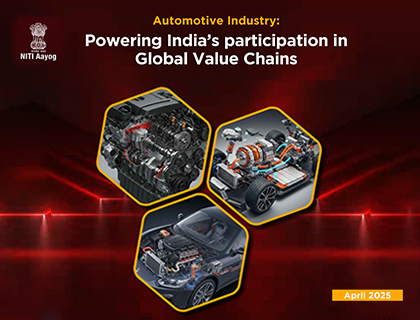
- 14 Apr 2025
In News:
NITI Aayog has recently released a comprehensive report titled “Automotive Industry: Powering India’s Participation in Global Value Chains”. It offers a roadmap to boost India’s role in the global automotive sector by enhancing competitiveness, production capacity, and export potential.
India’s Current Position
India is the world’s fourth-largest automobile producer, with nearly 6 million vehicles manufactured annually. However, its share in the global automotive component trade remains modest at 3%, primarily due to limited penetration in high-precision segments like engine components and drive transmission systems. The country exports auto components worth $20 billion, with major strengths in small cars and utility vehicles.
Global Landscape and Emerging Trends
Globally, 94 million vehicles were produced in 2023, with the automotive components market valued at $2 trillion, of which $700 billion was exported. The industry is witnessing rapid transformation through:
- Electric Vehicles (EVs): Rising demand, regulatory shifts, and battery innovations are reshaping manufacturing.
- Battery Ecosystems: Hubs in Europe and the US are altering global supply chains, focusing on lithium and cobalt.
- Industry 4.0: AI, IoT, robotics, and machine learning are revolutionizing automotive manufacturing through smart factories and digital supply chains.
Challenges to India’s GVC Participation
Despite a strong production base, India faces several hurdles in climbing the Global Value Chain (GVC):
- Low R&D spending and limited innovation
- High operational costs and infrastructural gaps
- Weak IP ecosystem and low brand visibility
- Inadequate skilling and moderate digital adoption
Strategic Interventions Proposed
NITI Aayog recommends a combination of fiscal and non-fiscal measures to address these gaps and strengthen India’s automotive ecosystem.
Fiscal Measures:
- Opex support to scale up production and infrastructure
- Skilling initiatives to build a trained workforce
- R&D incentives and IP transfer support for MSMEs
- Cluster development for shared R&D and testing facilities
Non-Fiscal Measures:
- Promoting Industry 4.0 adoption and quality manufacturing
- Ease of Doing Business reforms in labour, logistics, and regulations
- Global tie-ups and Free Trade Agreements (FTAs) to boost exports
Vision for 2030
By 2030, the report envisions:
- Auto component production to grow from ~$60 billion to $145 billion
- Exports to increase from $20 billion to $60 billion
- GVC share to rise from 3% to 8%
- Trade surplus of around $25 billion
- Employment generation of 2–2.5 million additional jobs
Index of Industrial Production (IIP)

- 14 Apr 2025
In News:
The Index of Industrial Production (IIP), a key barometer of industrial activity in India, registered a growth of just 2.9% in February 2025, the slowest pace in six months. This was below market expectations of around 4% and reflects broad-based slowdown across sectors.
About the IIP
- Published by: Central Statistics Office (CSO), Ministry of Statistics and Programme Implementation (MoSPI)
- Base Year: 2011–12
- Purpose: Measures the short-term changes in volume of production in industrial sectors.
Sectoral Composition and Weights
Sector Weight in IIP No. of Items
Manufacturing 77.63% 809
Mining 14.37% 29
Electricity 7.99% 1
Sector-wise Performance (YoY in February 2025)
Sector Feb 2025 Growth Feb 2024 Growth
Mining 1.6% 8.1%
Manufacturing 2.9% 4.9%
Electricity 3.6% 7.6%
Use-Based Classification Performance
Category Feb 2025 Growth Feb 2024 Growth
Capital Goods 8.2% 1.7%
Intermediate Goods 1.5% —
Consumer Non-Durables -2.1% -3.2%
Observation: Capital goods were the only category to show robust growth. All other segments registered deceleration.
Eight Core Industries (Weight in IIP: 40.27%)
In decreasing order of weight:
- Refinery Products
- Electricity
- Steel
- Coal
- Crude Oil
- Natural Gas
- Cement
- Fertilisers
Key Concerns Highlighted
- Slowing growth across mining, manufacturing, and electricity sectors
- A high base effect from the previous year
- A decline in month-on-month output after five months of sustained growth
- Consumer non-durables in continued contraction, indicating weak rural/household demand
Amrit Bharat Scheme
- 14 Apr 2025
In News:
The Amrit Bharat Station Scheme (ABSS), launched to transform railway stations across India into world-class travel hubs, has achieved a key milestone. Railway Minister Ashwini Vaishnaw announced the completion of redevelopment work at 104 stations out of the planned 1,300 stations under the scheme.
About the Amrit Bharat Station Scheme
- Launched: 2023
- Objective: Comprehensive redevelopment of railway stations to:
- Upgrade passenger amenities
- Enhance multi-modal connectivity
- Modernize infrastructure with sustainable and accessible design
Key Updates (As of April 2025)
- Total stations under ABSS: 1,300
- Stations with completed redevelopment: 104
- Stations in Maharashtra: 132 (significant progress reported)
Major Highlights
Feature Details
Notable Station Project Chhatrapati Shivaji Maharaj Terminus (CSMT), Mumbai
CSMT Redevelopment Cost ?1,800 crore
Modern Facilities Planned Waiting lounges, food courts, clean restrooms, lifts, escalators,
digital signage
International Comparison CSMT post-redevelopment projected to surpass
London’s Kings Cross station
Additional Infrastructure Developments in Maharashtra
- Gondia–Ballarshah Railway Line Doubling:
- Length: 240 km
- Region: Vidarbha
- Approved Investment: ?4,819 crore
- Strategic Importance: Enhances connectivity and freight movement
Centre–State Collaboration
- A Memorandum of Understanding (MoU) was signed between the Government of India and Government of Maharashtra for railway project implementation and coordination.
NaBFIDsigns strategic MoU with New Development Bank (NDB)
- 12 Apr 2025
In News:
The National Bank for Financing Infrastructure and Development (NaBFID) has entered into a strategic Memorandum of Understanding (MoU) with the New Development Bank (NDB) to strengthen cooperation in long-term infrastructure financing and promote clean energy development in India.
About NaBFID (National Bank for Financing Infrastructure and Development)
- Type: Development Finance Institution (DFI)
- Established Under:NaBFID Act, 2021
- Regulated By: Reserve Bank of India (RBI) as an All-India Financial Institution (AIFI)
Objectives:
- Bridge the gap in long-term, non-recourse infrastructure finance
- Support the development of India’s bond and derivatives markets
- Foster sustainable economic growth
- Enable project financing in clean energy, transport, and water infrastructure
Key Features:
- Capital base to be scaled up to ?1 trillion
- Focuses on medium to long-term financing (1–5+ years)
- Promotes Public-Private Partnerships (PPPs) and financial viability of projects
- Engages in joint research, capacity building, and knowledge-sharing with global institutions like NDB
About the New Development Bank (NDB)
- Type: Multilateral Development Bank formed by BRICS nations (Brazil, Russia, India, China, South Africa)
- Proposed: BRICS Summit, New Delhi (2012)
- Established By:Fortaleza Declaration, 15 July 2014
- Became Operational: 21 July 2015
Mandate:
- Mobilize funds for infrastructure and sustainable development
- Finance projects in emerging and developing economies (EMDCs)
- Promote green, inclusive, and resilient growth, particularly in clean energy, transport, and water sectors
Key Features:
- Authorized Capital: $100 billion
- India’s Contribution: $2 billion (paid in 7 tranches, 2015–2022)
- Engagement in India: As of December 2024, NDB has financed 20 projects worth $4.867 billion
SEBI’s Operational Framework for ESG Debt Securities
- 07 Jun 2025
In News:
The Securities and Exchange Board of India (SEBI) has introduced a comprehensive operational framework for the issuance of Environmental, Social, and Governance (ESG) debt securities. This includes instruments such as social bonds, sustainability bonds, and sustainability-linked bonds, aiming to boost responsible financing in India.
Understanding ESG Debt Securities
Definition:
ESG debt securities are financial tools designed to raise capital specifically for projects that yield positive environmental, social, or governance (ESG) outcomes. These instruments are a key part of sustainable finance, with categories including:
- Social Bonds: Focused on projects with direct social impact (e.g., affordable housing, education).
- Sustainability Bonds: Target projects with both environmental and social objectives.
- Sustainability-Linked Bonds: Tied to specific ESG performance indicators or targets.
Salient Features:
- Funds raised must be used exclusively for eligible ESG-aligned projects.
- Bonds must be clearly labelled in line with the project's primary focus.
- Compliance with global ESG norms and standards is mandatory.
- Verification or certification by an independent third-party is required.
- The framework applies to both public and private debt offerings.
Highlights of SEBI’s Framework
1. Classification Guidelines: Issuers are required to categorize their bonds—green, social, or sustainability—based on the core objective of the projects being financed. This ensures transparent communication of the bond's intended impact.
2. Disclosure Norms:
- At the Issuance Stage: Offer documents must detail project eligibility, selection methodology, and a tentative allocation between financing new initiatives and refinancing existing ones.
- Post-Issuance: Issuers must provide annual updates on fund deployment and report impact metrics to demonstrate accountability and transparency.
3. Independent Assurance: Issuers must engage accredited third-party entities to validate the alignment of bonds with ESG principles, thereby enhancing investor confidence and market integrity.
4. Monitoring and Evaluation: There is an obligation for ongoing impact assessment. Issuers must ensure the projects funded effectively contribute to reducing environmental degradation or addressing social challenges.
5. Scope and Enforcement: The framework will come into effect from June 5, 2025, and is aligned with international ESG standards to facilitate greater inflow of sustainable and ethical investments.
Significance for India: This move marks a significant step in mainstreaming ESG finance in India. It aims to improve transparency, attract climate-conscious capital, and reinforce India’s commitment to sustainable development.
C CARES Version 2.0
- 05 Jun 2025
In News:
The Ministry of Coal recently launched C CARES Version 2.0, a significant upgrade to the Coal Mines Provident Fund Organization’s (CMPFO) digital platform. The new system aims to enhance transparency, efficiency, and accessibility in provident fund (PF) and pension disbursement for coal sector workers.
Key Features of C CARES Version 2.0
- Developed by the Centre for Development of Advanced Computing (C-DAC) in collaboration with the State Bank of India (SBI).
- Provides a unified digital interface for coal workers, coal companies, and CMPFO.
- Enables real-time claim tracking, automated ledger updates, and direct benefit transfers to workers’ bank accounts.
- Includes a mobile application for CMPF members, offering:
- PF balance checks
- Profile viewing
- Grievance redressal
- Claim status tracking
- A chatbot assistant for easy navigation
Benefits to Stakeholders
- For Workers: Faster claim settlement, improved access, and reduced delays in PF/pension disbursement.
- For Coal Companies and CMPFO:
- A prescriptive dashboard to generate custom reports.
- Analytics to track settlement trends.
- Support for data-driven decision-making.
About CMPFO
- Full Form: Coal Mines Provident Fund Organization
- Established: 1948
- Parent Ministry: Ministry of Coal
- Function: Administration of PF and pension schemes for coal sector employees.
- Coverage:
- Serves around 3.3 lakh PF subscribers
- Supports over 6.3 lakh pensioners
Significance
Union Minister for Coal and Mines G. Kishan Reddy launched the portal on June 4, 2025, stating that it aligns with the Government's vision of “Minimum Government, Maximum Governance” under the Digital India initiative. The platform strengthens social security delivery for coal workers and brings administrative reform to a critical sector of the economy.
World Wealth Report 2025
- 05 Jun 2025
In News:
The World Wealth Report 2025, released by the Capgemini Research Institute, highlights a significant surge in global and Indian high-net-worth individual (HNWI) wealth. The report covers 71 countries, representing over 98% of global Gross National Income (GNI) and 99% of world stock market capitalization.
India’s HNWI Landscape in 2024
- HNWI Wealth Growth: India witnessed an 8.8% increase in HNWI wealth in 2024.
- Total Millionaires: The country had 378,810 HNWIs by the end of 2024, with a cumulative wealth of $1.5 trillion.
- Millionaires Next Door: Among them, 333,340 individuals fell under the "Millionaires Next Door" category (investable assets between $1M–$5M), holding $628.93 billion in wealth.
- Ultra HNWIs: India was home to 4,290 Ultra-HNWIs (assets ≥ $30M), with combined assets worth $534.77 billion.
Global Trends in HNWI Wealth
- Global Growth: HNWI population worldwide rose by 2.6%, driven largely by a 6.2% rise in Ultra-HNWI numbers.
- Investment Trends: Alternative investments (private equity, cryptocurrencies) formed 15% of HNWI portfolios, signaling diversification beyond traditional assets.
- Top Contributors:
- United States added 562,000 millionaires, recording a 7.6% rise, reaching a total of 7.9 million HNWIs.
- The U.S. also holds 36% of centi-millionaires (net worth ≥ $100M) and 33% of the world's billionaires.
- India and Japan saw 5.6% growth, while China recorded a 1.0% decline in HNWI population.
Shifting Dynamics in Wealth Management
- A massive “great wealth transfer” is underway globally.
- 81% of global next-gen HNWIs and 85% of Indian next-gen HNWIs plan to switch wealth management (WM) firms within 1–2 years of inheritance.
- Key reasons include:
- Lack of preferred channel services (51%)
- Ineffective digital transaction tools (41%)
- Digital Transformation Need: The evolving expectations of next-gen clients are pushing firms toward AI-enabled advisory models and advanced digital infrastructure.
Offshore Wealth Allocation
- By 2030, 98% of Indian next-gen HNWIs plan to increase their offshore assets by over 10%.
- Motivations include:
- Superior investment options (55%)
- Better wealth management services (65%)
- Improved market connectivity (54%)
- Tax efficiency and political-economic stability (49%)
- Motivations include:
RBI’s Draft Guidelines on Gold Loans

- 03 Jun 2025
Why is the RBI proposing changes to gold loan regulations?
In April 2024, the Reserve Bank of India (RBI) released draft guidelines on loans against gold to harmonise regulations across banks and NBFCs and to address irregularities. The move follows an extraordinary surge in gold-backed loans during FY24:
- Gold loan portfolios grew over 50% across banks and NBFCs.
- For banks, the portfolio more than doubled (104% growth).
This rapid growth, amid rising gold prices and lax lending standards, raised regulatory concerns.
What are the key proposals in the draft guidelines?
- LTV Norms:
- The Loan-to-Value (LTV) ratio remains capped at 75%.
- For bullet repayment loans for consumption, accrued interest must be included in the LTV calculation, effectively lowering the loan amount disbursed.
- Ownership Proof:Borrowers must furnish proof of ownership for the gold pledged.
- Valuation Standards:
- Gold should be valued based on 22-carat price.
- Uniform procedures must be followed to assess the purity and weight.
- Loan Renewal & Fresh Sanctions:
- Renewals or top-ups are permitted only if:
- The existing loan is standard, and
- It complies with the LTV limit.
- Concurrent loans for both consumption and income-generation are disallowed.
- A fresh loan can only be granted after full repayment (principal + interest) of the previous loan.
- Renewals or top-ups are permitted only if:
- Collateral Return Timeline:If the gold is not returned within 7 working days after repayment, the lender must compensate the borrower at ?5,000/day for each day of delay.
Likely Impact on Borrowers and Lenders
Borrowers:
- May face reduced loan amounts and higher documentation requirements.
- Small and rural borrowers, dependent on gold loans for agriculture and allied sectors, may experience reduced accessibility.
NBFCs and Banks:
- NBFCs that frequently renew or top-up gold loans could lose flexibility.
- Compliance costs will rise due to stringent documentation, valuation, and reporting norms.
- Smaller NBFCs relying on re-pledging of gold may face liquidity issues.
- Interest rates may rise to offset higher operational expenses.
Is a uniform policy suitable?
A one-size-fits-all policy may not be practical. Gold loans are a lifeline for rural households with limited access to formal credit. Experts suggest:
- Differentiated norms for micro gold loans (small-ticket loans) and high-value loans.
- Consideration for the informal nature of ownership in many rural households.
India’s Provisional GDP Estimates for FY 2024–25
- 01 Jun 2025
In News:
The Ministry of Statistics and Programme Implementation (MoSPI) released the Provisional Estimates (PEs) of India’s Gross Domestic Product (GDP) and Gross Value Added (GVA) for the financial year 2024–25 (FY25), providing a comprehensive picture of the country's economic performance.
Understanding GDP and GVA
- GDP (Gross Domestic Product) measures the total expenditure in the economy, including consumption, investment, government spending, and net exports — representing the demand side.
- GVA (Gross Value Added) evaluates the income generated from the production of goods and services in different sectors — representing the supply side.
- The two are related by the formula:GDP = GVA + Taxes – Subsidies
- Both are reported in nominal terms (current prices) and real terms (adjusted for inflation).
Nature of Provisional Estimates
- The estimates are termed provisional because they include data from all four quarters but are subject to revision:
- First Advance Estimates (FAE): January
- Second Advance Estimates (SAE): February
- Provisional Estimates (PE): May
- Revised Estimates: Finalized over the next two years (in 2026 and 2027 for FY25)
Key Economic Indicators for FY 2024–25
- Nominal GDP
- Estimated at ?330.68 lakh crore, showing a 9.8% growth over FY24.
- In dollar terms (?85.559/USD), India’s economy reached $3.87 trillion.
- However, this 9.8% nominal growth marks the third-slowest since 2014.
- Real GDP
- Rose by 6.5%, reaching ?187.97 lakh crore.
- The real GDP growth slowed from 9.2% in FY24, indicating reduced economic momentum.
- Sectoral GVA Performance
- Overall GVA grew by 6.4%, down from 8.6% in FY24.
- Sector-wise real GVA growth:
- Agriculture & Allied Activities: 4.4% (up from 2.7% last year)
- Industry (including Manufacturing & Construction): 6.1%
- Services: 7.5% (notable growth in public admin, trade, and finance)
- Q4 FY25 Trends
- Real GDP growth: 7.4%
- Nominal GDP growth: 10.8%
- Indicates a strong end-of-year performance.
Structural Insights and Concerns
- Manufacturing Weakness:Since FY20, manufacturing GVA CAGR (4.04%) lags behind agriculture (4.72%), signaling industrial stagnation.
- Employment Implications:Manufacturing’s sluggishness contributes to high urban unemployment and labour migration to rural/agricultural sectors.
- Consumption and Investment Revival:
- Private Final Consumption Expenditure (PFCE) grew by 7.2%.
- Gross Fixed Capital Formation (GFCF) increased by 7.1%, indicating investment momentum.
Significance for Policymaking
- The GDP data serves as a basis for fiscal planning, monetary policy decisions, and public investment.
- It highlights India’s position as one of the fastest-growing major economies, while also revealing structural vulnerabilities — particularly in manufacturing.
- For international comparison, real GDP is crucial as it neutralizes inflationary differences across countries.
World’s First 3D-Printed Train Station unveiled in Japan
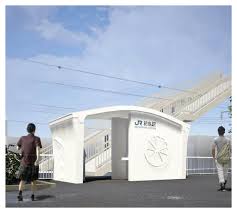
- 10 Apr 2025
In News:
Japan’s West Japan Railway Company has unveiled the world’s first 3D-printed train station — Hatsushima Station in Arida city. Notably, the station was constructed in less than six hours, highlighting a major advancement in construction technology.
Understanding 3D Printing (Additive Manufacturing)
What is 3D Printing?
3D Printing, or Additive Manufacturing, is a process of creating three-dimensional objects by layering material based on a digital design. Unlike traditional (subtractive) manufacturing, which removes material, this method adds material layer by layer, ensuring reduced waste and the ability to produce complex geometries.
How 3D Printing Works:
- Design Phase: A 3D digital model is created using CAD (Computer-Aided Design) software and saved in formats like .STL or .OBJ.
- Slicing: The model is sliced into horizontal layers using specialized software.
- Printing: The printer deposits material layer-by-layer according to the sliced file. Each layer solidifies to form the final shape.
- Post-Processing: The object is finished through processes such as curing, sanding, or painting.
Major 3D Printing Technologies:
- Fused Deposition Modelling (FDM): Uses melted thermoplastic filaments to build objects layer-by-layer.
- Selective Laser Sintering (SLS): Uses lasers to fuse powdered plastics or metals into solid forms.
- Direct Metal Laser Sintering (DMLS): Employs a laser to fuse metal powders — widely used in aerospace and medical sectors.
- Material Jetting: Deposits photopolymer droplets, cured with UV light — ideal for high-precision and colorful prototypes.
Limitations of 3D Printing:
- Material Restrictions: Only specific plastics, metals, and composites are compatible with given printers.
- Size Constraints: Limited build volume necessitates assembling larger items from smaller parts.
- Structural Weakness: Objects may have weak joints due to the layered structure, reducing suitability for high-stress uses.
- IP Challenges: Digital design files can be easily shared, posing risks of counterfeiting and intellectual property theft.
Electronics Components Manufacturing Scheme (ECMS)
- 10 Apr 2025
In News:
The Ministry of Electronics and Information Technology (MeitY) has notified the Electronics Components Manufacturing Scheme (ECMS) in April 2025. It marks a strategic step in India’s ambition to become a global electronics manufacturing hub.
Key Highlights of ECMS
- Objective: To incentivize domestic production of passive electronic components and capital equipment, thus deepening India's electronics manufacturing value chain.
- Scheme Tenure: Valid for 6 years, with a 1-year gestation period.
- Focus Components: Includes resistors, capacitors, relays, switches, speakers, connectors, inductors, special ceramics, and other passive components.
- Active components are supported separately under the India Semiconductor Mission (ISM).
- Incentive Structure:
- Turnover-linked incentive (based on incremental revenue).
- Capex-linked incentive (for investments in plant and machinery).
- Hybrid model (combining turnover and capex benefits).
Incentive rates range between 1–10%, varying by year and component type.
- Employment Mandate: All applicants—whether component manufacturers or capital equipment makers—must commit to job creation, ensuring broader socio-economic benefits.
Strategic Importance
- Horizontal Sectoral Impact: The scheme is designed to support multiple sectors including automotive, consumer electronics, medical devices, power electronics, and electrical grids, promoting cross-industry multiplier effects.
- Support for Tooling & Capital Equipment Industry: Encourages design and manufacture of capital tools and machinery required for electronics production, in line with models seen under the India Semiconductor Mission.
- Global firms like Linde have begun operations, with more in pipeline.
India’s Electronics Growth Trajectory
- Export Milestone (FY 2024–25):
- Total smartphone exports: ?2 lakh crore
- iPhone exports alone: ?1.5 lakh crore
- Sectoral Growth (Last Decade):
- 5x growth in production.
- 6x growth in exports.
- Export CAGR: >20%
- Production CAGR: >17%
- Manufacturing Base Expansion: Over 400 production units (large and small) now manufacture a wide range of electronic components domestically.
- Value Chain Evolution: India has transitioned from assembling finished goods → sub-assemblies → deep component manufacturing, now entering a value-added, self-reliant phase in electronics
One State, One RRB Policy
- 10 Apr 2025
In News:
The Government of India, through the Ministry of Finance, has implemented the "One State, One RRB" policy effective from May 1, 2025, aimed at consolidating 26 Regional Rural Banks (RRBs) across 10 states and 1 Union Territory, thereby reducing the total number of RRBs to 28. This move follows the recommendation of the Dr. Vyas Committee and is intended to enhance the performance and outreach of RRBs.
Objectives of the Policy
- Improve operational efficiency and governance.
- Rationalize costs and optimize resources (human and technological).
- Eliminate intra-state competition among sponsor banks.
- Promote uniform service delivery through technological integration.
About Regional Rural Banks (RRBs)
- Established: 1975 under the Regional Rural Banks Act, 1976.
- Recommended by: Narasimham Committee (1975).
- Ownership Pattern:
- Government of India – 50%
- State Government – 15%
- Sponsor Bank – 35%
Regulatory Structure
- Regulated by: Reserve Bank of India (RBI)
- Supervised by: NABARD (National Bank for Agriculture and Rural Development)
Role and Objectives
- Provide institutional credit to rural India.
- Support priority sectors like agriculture, MSMEs, and rural artisans.
- Ensure financial inclusion among farmers, labourers, and small entrepreneurs.
Impact of the Reform
- Operational Scale: Enhanced credit delivery across wider geographies.
- Technological Standardization: Easier integration of IT infrastructure.
- Unified Governance: One sponsor bank per state improves accountability.
- Performance: RRBs recorded an all-time high net profit of ?7,571 crore in FY 2023–24.
- Asset Quality: GNPA (Gross Non-Performing Assets) stood at 6.1%, the lowest in a decade.
Niveshak Didi
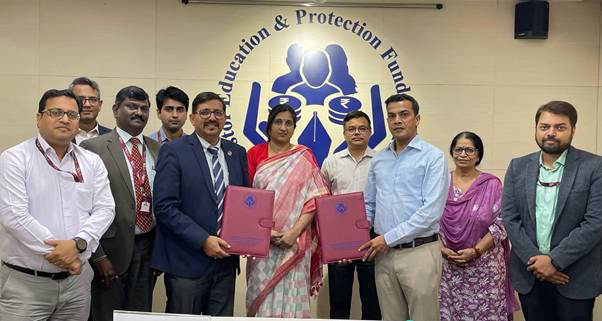
- 10 Apr 2025
In News:
In a significant push toward inclusive financial literacy, the Investor Education and Protection Fund Authority (IEPFA), under the Ministry of Corporate Affairs, and the India Post Payments Bank (IPPB), under the Department of Posts, Ministry of Communications, have signed a Memorandum of Agreement (MoA) to launch Phase 2 of the “Niveshak Didi” initiative in April 2025.
Objective:
The Niveshak Didi initiative, launched in 2023, is a women-led, community-driven financial literacy program designed to empower rural and underserved populations by fostering responsible financial behavior, promoting digital banking, and spreading fraud awareness.
Key Highlights:
- Target Group: Rural women and semi-urban communities.
- Approach: Local women, especially postal workers, are trained as financial educators (Niveshak Didis).
- Impact of Phase 1:
- Over 55,000 beneficiaries reached, with 60% women, predominantly from deep rural areas.
- Most beneficiaries belonged to the youth and economically active age groups.
Phase 2 (2025 Onward):
- Deployment of 4,000+ financial literacy camps across rural, tribal, and semi-urban areas.
- Training of 40,000 women postal workers to serve as grassroots financial educators.
- Curriculum Focus:
- Savings and budgeting.
- Responsible investing and fraud prevention.
- Digital tools and services provided by IPPB.
- Digital Inclusion: Leveraging India Stack for paperless and presence-less banking; training delivered in 13 regional languages.
About Investor Education and Protection Fund Authority (IEPFA)
- Statutory Body: Functions under the Ministry of Corporate Affairs, Government of India.
- Objective: Ensures informed and protected investors across India.
- Key Role:
- Promotes financial literacy to aid budgeting, saving, and investment decisions.
- Empowers citizens to make sound financial choices.
- Focus Areas:
- Educates citizens on investor rights and responsibilities.
- Special outreach to rural and underserved areas to bridge financial knowledge gaps.
- Vision: To build a financially aware and confident India, where every citizen has the tools to secure their financial future.
About India Post Payments Bank (IPPB)
- Established: On September 1, 2018 under the Department of Posts, Ministry of Communications.
- Ownership: 100% equity owned by the Government of India.
- Mission: To be the most accessible, affordable, and trusted bank for the common man.
- Mandate:
- Bridge financial inclusion gaps for the unbanked and underbanked.
- Leverage the vast postal network of approx. 1.65 lakh post offices (1.4 lakh in rural areas) and 3 lakh postal employees.
- Technology Backbone:
- Based on India Stack: Paperless, Cashless, and Presence-less banking.
- Uses CBS-integrated smartphones and biometric devices.
- Commitment:
- Promotes a less-cash economy.
- Supports the vision of Digital India.
- Motto: Every customer is important, every transaction is significant, every deposit is valuable.
India Skills Accelerator Initiative (2025)
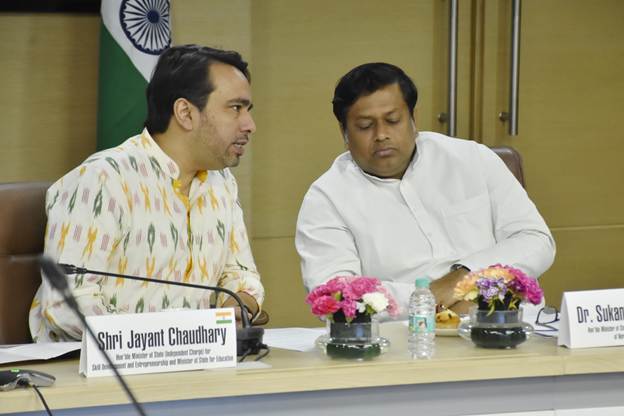
- 09 Apr 2025
In News:
The Ministry of Skill Development and Entrepreneurship (MSDE) has partnered with the World Economic Forum (WEF) to launch the India Skills Accelerator—a national-level public-private collaboration platform aimed at fostering a future-ready and inclusive workforce.
Key Features:
- Purpose: To act as a systemic change enabler in India's skilling ecosystem through a multi-stakeholder, cross-sectoral approach.
- Core Objectives:
- Enhance awareness and shift mindsets about the need for future skills.
- Promote collaboration and knowledge sharing between government, industry, and academia.
- Reform policies and institutional structures for an agile and responsive skilling framework.
- Sectoral Priorities:
- Focus on high-growth areas: AI, robotics, cloud computing, cybersecurity, advanced manufacturing, energy, and Global Capability Centres (GCCs).
- Emphasis on formalizing the informal workforce.
- Lifelong Learning: Mobilize investments in upskilling and reskilling across various life stages to support agile career transitions.
- Data-Driven Governance: Use surveys, mapping tools, and the WEF’s Global Learning Network for peer benchmarking and progress tracking.
- Implementation Strategy:
- Identify 10–12 high-impact priorities with measurable outcomes.
- Establish thematic working groups to ensure coordinated execution.
- Align initiative with the WEF’s Future of Jobs Report 2025.
Significance
- Addresses the fact that 65% of organizations cite skill gaps as a major barrier to growth.
- Positions India to leverage its demographic dividend and become the "Skill Capital of the World".
- Supports India's goal of skilling not just for domestic needs but also for global workforce demand.
- Reinforces federal cooperation, involving institutions like NSDC, NCVET, DGT, UGC, AICTE, NCERT, and CBSE.
Pradhan Mantri MUDRA Yojana (PMMY)
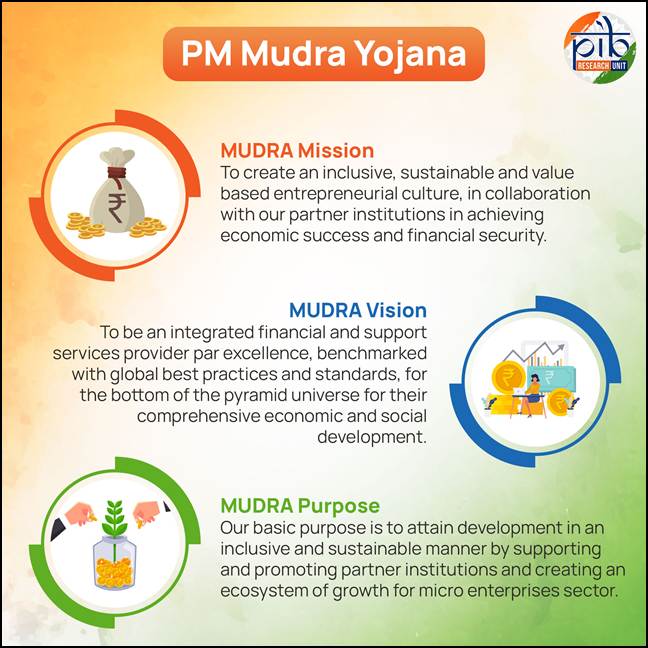
- 08 Apr 2025
In News:
The Pradhan Mantri MUDRA Yojana (PMMY), a flagship initiative aimed at providing financial support to unfunded micro and small enterprises, has completed 10 years since its launch in 2015.
Overview of PMMY
- Objective: To offer collateral-free institutional credit to non-corporate, non-farm micro and small enterprises.
- Loan Limit: Up to ?20 lakh without any collateral.
- Implementing Institutions (MLIs):
- Scheduled Commercial Banks
- Regional Rural Banks (RRBs)
- Non-Banking Financial Companies (NBFCs)
- Micro Finance Institutions (MFIs)
Categories of MUDRA Loans
Loan Category Loan Amount Range
Shishu Up to ?50,000
Kishor ?50,000 to ?5 lakh
Tarun ?5 lakh to ?10 lakh
Tarun Plus ?10 lakh to ?20 lakh
Key Achievements (2015–2025)
- Boost to Entrepreneurship: PMMY has sanctioned over 52 crore loans amounting to ?32.61 lakh crore, catalyzing a grassroots entrepreneurship revolution.
- MSME Sector Financing: Lending to MSMEs increased significantly:
- From ?8.51 lakh crore in FY14
- To ?27.25 lakh crore in FY24
- Projected to exceed ?30 lakh crore in FY25
- Women Empowerment: 68% of Mudra beneficiaries are women, highlighting the scheme’s impact in fostering women-led enterprises.
- Social Inclusion:
- 50% of loan accounts are held by SC, ST, and OBC entrepreneurs.
- 11% of beneficiaries belong to minority communities, showcasing PMMY’s contribution to inclusive growth.
India’s Sharp Decline in Poverty
- 29 May 2025
In News:
Recent Household Consumption Expenditure Surveys (2022–23 and 2023–24) by the National Statistical Office (NSO), alongside a World Bank Poverty & Equity Brief, highlight a historic decline in poverty in India. This achievement is largely attributed to sustained GDP growth and declining inequality.
Key Findings:
Poverty Reduction Trends (2011–12 to 2023–24)
- All-India Poverty Ratio: Fell from 29.5% (2011–12) → 9.5% (2022–23) → 4.9% (2023–24).
- Extreme Poverty (<$2.15/day, PPP): Declined from 16.2% → 2.3% (2011–12 to 2022–23).
- Lower-Middle Income Poverty (<$3.65/day): Declined from 61.8% → 28.1%.
Updated Poverty Lines (Rangarajan Committee Methodology):
Area 2011–12 2022–23 2023–24
Rural ?972 ?1,837 ?1,940
Urban ?1,407 ?2,603 ?2,736
- For a 5-member urban household, the 2023–24 poverty threshold is ?13,680/month.
Factors Driving Poverty Reduction:
- High GDP Growth: Rose from 7.6% (2022–23) to 9.2% (2023–24).
- Moderating Inflation: Consumer Price Index (CPI) inflation dropped from 6.7% to 5.4%, enhancing real incomes. However, food inflation rose to 7.5%, affecting poor households disproportionately.
- Inequality Decline:
- Gini Coefficient fell from 0.310 (2011–12) → 0.282 (2022–23) → 0.253 (2023–24).
- Urban areas saw faster decline in consumption inequality.
Nature and Depth of Poverty:
- Poverty Near the Threshold:
- Over 50% of the poor lie between 75–100% of the poverty line.
- Large share of non-poor lie just above the line (115–125%), making them vulnerable.
- Depth Analysis (Raised Cut-Offs): Even at 125% of the poverty line, poverty fell by 34.2 percentage points (2011–24), showing broad-based gains.
Regional & Structural Challenges:
- Persisting Regional Disparities: States like Bihar, Jharkhand, Odisha still report higher poverty levels.
- Urban Informality & Data Gaps: Recent surveys underrepresent informal workers and migrants, skewing urban poverty estimates.
- Vulnerability to Shocks: Health crises, climate events, or inflation could push the near-poor back into poverty.
- Gaps in Welfare Coverage: Urban poor and migrant populations face limited access to PDS and safety nets.
Policy Imperatives:
- Targeted Cash Transfers: Scale up schemes like PM-GKAY, DBT for LPG, and tailor transfers to those just above the poverty line.
- Strengthen Rural Employment: Enhance MGNREGA funding and integrate climate-resilient jobs.
- Build Urban Safety Nets: Develop a comprehensive urban social protection framework for gig and informal sector workers.
- Education & Nutrition Investments: Bridge human capital gaps via PM POSHAN, Saksham Anganwadi.
- Continuous Poverty Monitoring: Institutionalize annual poverty tracking using real-time and multidimensional indicators.
Modified Interest Subvention Scheme (MISS) – FY 2025–26
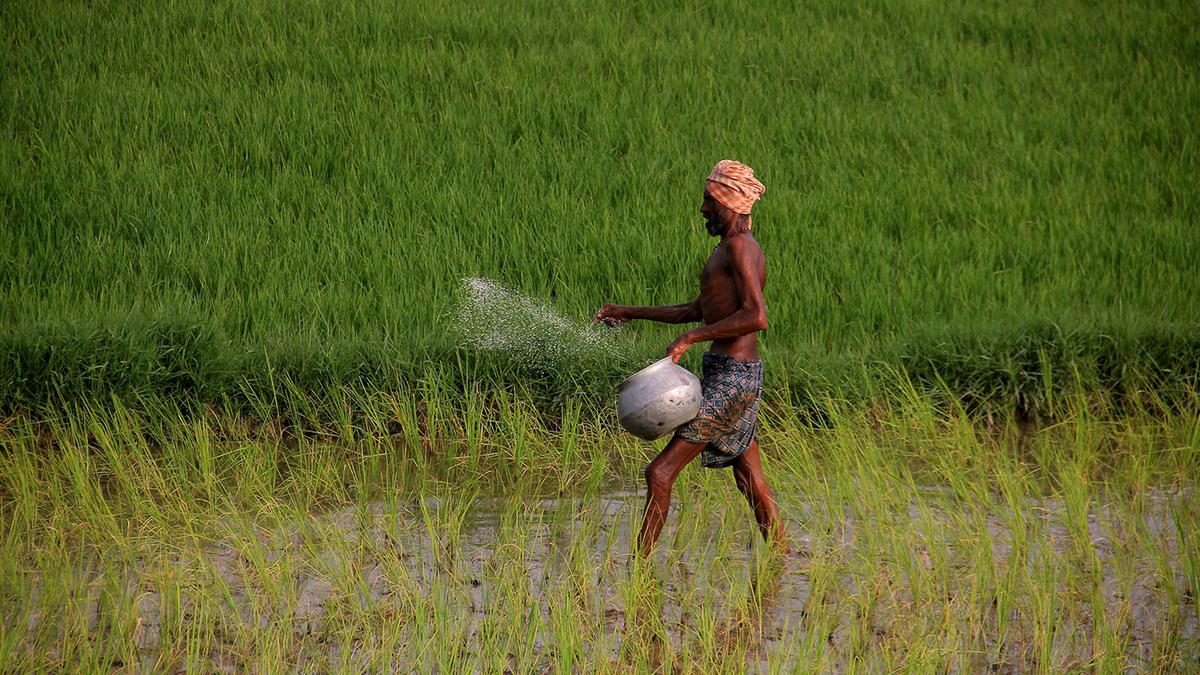
- 29 May 2025
In News:
The Union Cabinet has approved the continuation of the Interest Subvention (IS) component under the Modified Interest Subvention Scheme (MISS) for the financial year 2025–26, retaining the existing structure and interest rates.
About the Scheme:
- Type: Central Sector Scheme
- Objective: To provide short-term agricultural credit to farmers at affordable interest rates through Kisan Credit Cards (KCC).
Key Features:
- Loan Coverage:
- Short-term crop loans up to ?3 lakh per farmer through KCC.
- For loans exclusively for animal husbandry or fisheries, the benefit applies up to ?2 lakh.
- Interest Rates:
- Base interest rate: 7%
- 1.5% interest subvention to lending institutions
- 3% Prompt Repayment Incentive (PRI) for timely repayment
- Effective interest rate for prompt payers: 4%
- Implementing & Monitoring Agencies:
- Reserve Bank of India (RBI)
- National Bank for Agriculture and Rural Development (NABARD)
- Operated via Public Sector Banks, Regional Rural Banks, Cooperative Banks, and Private Banks in rural/semi-urban areas.
Recent Updates and Rationale:
- No structural changes have been introduced in the scheme for FY 2025–26.
- The scheme continues amidst rising lending costs, with stable repo rates and MCLR trends.
- It ensures credit access for small and marginal farmers, critical for financial inclusion and agricultural productivity.
Impact on Agricultural Credit:
- KCC Accounts: Over 7.75 crore active accounts across India.
- Institutional Credit Growth:
- Disbursement via KCC increased from ?4.26 lakh crore (2014) to ?10.05 lakh crore (Dec 2024).
- Total agricultural credit rose from ?7.3 lakh crore (FY 2013–14) to ?25.49 lakh crore (FY 2023–24).
- Digital Reform: Kisan Rin Portal (KRP) launched in August 2023 has improved transparency and efficiency in claim processing.
Significance:
- Helps ensure timely and affordable institutional credit to the farming sector.
- Supports the government's goal of doubling farmers’ income.
- Strengthens the rural credit delivery system and promotes inclusive growth in agriculture.
Dark Patterns and India’s Regulatory Response
- 29 May 2025
In News:
The Ministry of Consumer Affairs, Food, and Public Distribution has initiated a robust crackdown on Dark Patterns—deceptive design practices used on digital platforms to manipulate consumer behavior. A recent high-level stakeholder meeting in Delhi, chaired by Union Minister Prahlad Joshi, brought together representatives from major e-commerce platforms like Amazon, Flipkart, Zomato, and Ola, along with consumer organizations and law institutions, to address the growing concern.
What are Dark Patterns?
Dark Patterns are user interface designs that intentionally mislead or coerce consumers into making decisions they would not have otherwise made. These manipulative tactics exploit psychological principles and cognitive biases to serve the commercial interests of platforms—often at the cost of consumer autonomy.
Types of Dark Patterns Identified by the Government:
The Department of Consumer Affairs has officially recognized 13 types of dark patterns in its November 2023 guidelines. Prominent among them are:
- False Urgency: Creating artificial time pressure (e.g., “Only 1 seat left!”).
- Basket Sneaking: Adding items to the cart without user consent.
- Confirm Shaming: Using guilt-driven language to influence decisions.
- Subscription Trap: Making subscription easy but cancellation difficult.
- Interface Interference: Hiding crucial information or options.
- Bait and Switch: Advertising one offer and switching to another.
- Hidden Costs: Revealing extra charges only at checkout.
- Forced Action: Making users complete unrelated tasks to proceed.
- Disguised Ads, Trick Questions, Nagging, SAAS Billing Abuse, and Rogue Malware Links are other examples.
These practices have been found across multiple digital sectors including e-commerce, travel, OTT platforms, edtech, online banking, and quick commerce.
Consumer Impact and Rising Complaints:
The National Consumer Helpline has witnessed a significant increase in grievances related to dark patterns. Platforms are accused of eroding consumer trust, causing financial harm, breaching privacy, and distorting fair market practices.
According to LocalCircles, based on a survey conducted across 392 districts with feedback from 2.30 lakh consumers, the worst offenders include edtech, airline, and taxi app services. Notably, companies like Uber and Rapido were recently issued notices by the Central Consumer Protection Authority (CCPA) for coercing users into paying tips in advance.
Regulatory Measures in India:
- Consumer Protection Act, 2019: While it prohibits unfair trade practices, it lacks explicit provisions targeting dark patterns, making enforcement challenging.
- 2023 Guidelines on Dark Patterns: Released by the Department of Consumer Affairs, these guidelines define deceptive interfaces as violations of consumer rights and misleading advertisements.
- Self-Audit Mandate: E-commerce companies have been instructed to conduct internal audits and eliminate dark patterns from their platforms.
- Proposed Joint Working Group: A mechanism is being considered to increase industry awareness and enforce compliance.
- Voluntary and Legal Enforcement: The government has urged digital firms to integrate the guidelines into internal policies and consumer grievance redressal systems.
National Apprenticeship Promotion and Training Schemes
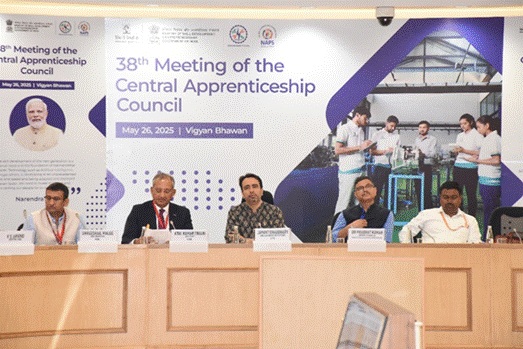
- 28 May 2025
In News:
Recently, the 38th Meeting of the Central Apprenticeship Council (CAC), chaired by the Minister of State (Independent Charge) for the Ministry of Skill Development and Entrepreneurship (MSDE), recommended a 36% increase in stipends under two key skilling initiatives—National Apprenticeship Promotion Scheme (NAPS) and National Apprenticeship Training Scheme (NATS). This move aims to enhance apprenticeship attractiveness, reduce dropout rates, and improve youth employability across India.
About NAPS (Launched: 19 August 2016)
- Objective: To build industry-relevant skilled manpower by promoting on-the-job training and bridging the gap between education and employment.
- Administered by: Ministry of Skill Development and Entrepreneurship (MSDE).
- Key Features:
- Provides financial support to establishments for engaging apprentices.
- Encourages MSME participation and focuses on aspirational districts and the North-East.
- Offers partial stipend reimbursement under the Apprentices Act, 1961.
- Apprentices receive a certificate from NAPS, enhancing employability.
- Over 43.47 lakh apprentices engaged across 36 States/UTs till May 2025.
- Female participation reached 20%, with efforts to boost inclusion.
About NATS
- Target Group: Graduates, Diploma holders, and Vocational certificate holders.
- Provisions:
- Offers 6–12 months of practical, hands-on training.
- Employers receive 50% stipend reimbursement.
- Apprentices are issued a Government of India Certificate of Proficiency, valid across employment exchanges.
- FY 2024–25 Stats: Over 5.23 lakh apprentices enrolled.
Key Reforms Recommended by CAC (2025)
- Stipend Enhancement:
- Proposed increase from ?5,000–?9,000 to ?6,800–?12,300.
- To be adjusted biennially based on Consumer Price Index (CPI).
- Inclusive Skilling Framework:
- Definition of “Person with Benchmark Disability” to be added under the Apprenticeship Rules.
- Trades must indicate suitability for PwBDs with reserved training slots.
- Curricular Integration:
- Push for Degree Apprenticeships and Apprenticeship Embedded Degree Programmes (AEDP).
- Definitions added for "Institution", "UGC", and "Contractual Staff".
- Flexible Training Modes: Employers may provide Basic and Practical Training through online, virtual, or blended modes, adhering to standard curricula.
- Decentralized Administration: Proposal to establish Regional Boards to improve scheme outreach and governance.
- Sectoral Expansion:
- Adoption of NIC Code 2008 to replace outdated 1987 list.
- Brings emerging sectors like IT, software, telecom, biotech, and renewable energy under apprenticeship coverage.
- Operational Improvements:
- Align CTS (Craftsmen Training Scheme) courses with apprenticeship notification timelines.
- Consideration of location-based stipend rationalization based on cost of living.
- Proposal for insurance coverage for apprentices during contract periods.
Governance and Stakeholder Involvement
The Central Apprenticeship Council includes representatives from:
- Ministries: Education, Labour, MSME, Railways, Textiles.
- Industry: BHEL, Indian Oil, Tata, Maruti, Reliance.
- Institutions: NSDC, UGC, AICTE.
- State advisors and domain experts from labour and education fields.
RBI Dividend Transfer to Government (FY 2024–25)
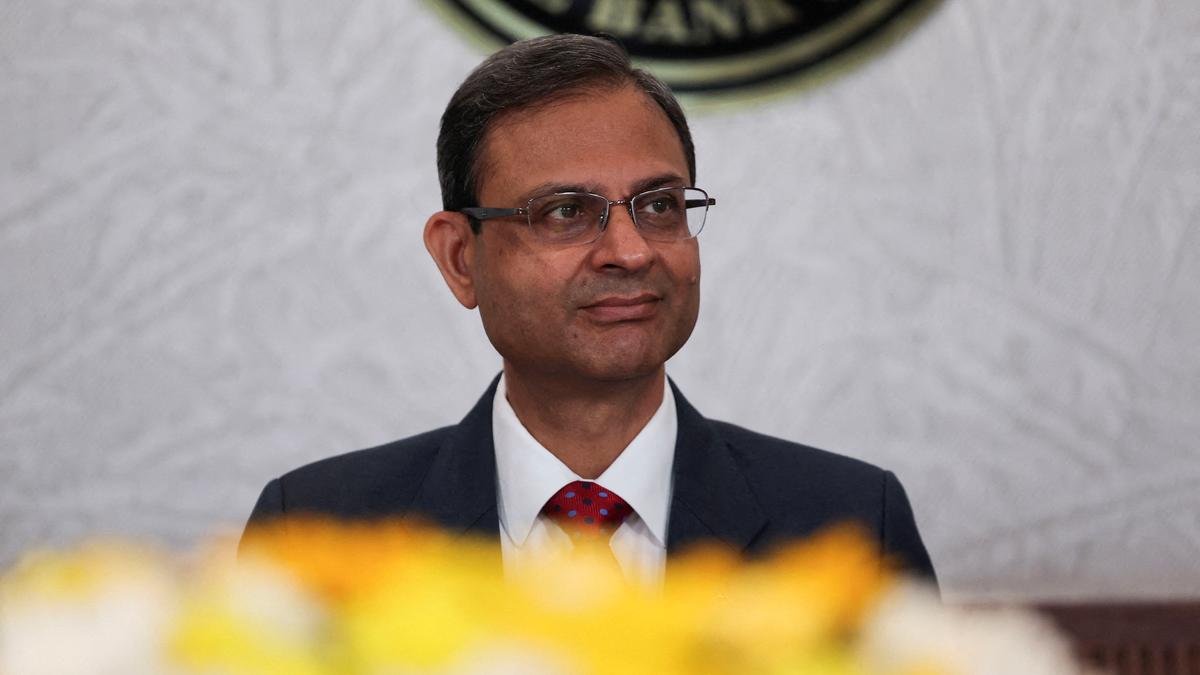
- 27 May 2025
In News:
- The Reserve Bank of India (RBI) has approved a record dividend transfer of ?2.69 lakh crore to the Government of India for FY 2024–25.
- This amount is 27% higher than the ?2.10 lakh crore transferred in the previous year (2023–24).
- The transfer follows the Revised Economic Capital Framework (ECF), approved on May 15, 2025.
What is a Dividend in Public Finance?
- A dividend is the non-tax revenue received by the government as the sole shareholder of the RBI.
- It helps bridge the fiscal deficit.
- RBI dividend distribution is governed by the Reserve Bank of India Act, 1934.
- Unlike corporate dividends that require shareholder approval, RBI transfers are governed by policy mechanisms set by the Central Board.
Economic Capital Framework (ECF) and Risk Buffer
- The Contingent Risk Buffer (CRB) has been raised to 7.5% of the RBI’s balance sheet for FY 2024–25.
- Earlier CRB levels:
- 5.5% (2018–22)
- 6% (2022–23)
- 6.5% (2023–24)
- The CRB helps ensure the RBI maintains sufficient capital to absorb financial shocks.
Reasons for Higher Surplus in 2024–25
- Robust foreign exchange (forex) sales, especially in January 2025, with RBI being the top seller among Asian central banks.
- Increased interest income from government securities and foreign investments.
- Gains from forex transactions during high market volatility.
- Forex reserves had peaked at $704 billion in September 2024, from which large volumes of dollars were sold to stabilise the rupee.
Implications for the Union Budget 2025–26
- The Budget had projected ?2.56 lakh crore as dividend income from RBI and PSUs; the actual RBI dividend itself exceeds this estimate.
- Experts expect the fiscal deficit to reduce by 20 basis points (bps) from the budgeted 4.4% to ~4.2% of GDP.
- The surplus provides a non-tax revenue cushion, helping offset shortfalls in tax or disinvestment receipts and manage additional spending.
Expert Views
- Surplus driven by prudent RBI policy, forex gains, and high interest income. CRB increase reduced the possible surplus, otherwise it could have exceeded ?3.5 lakh crore.
- The surplus equals 0.4–0.5 trillion (?40,000–?50,000 crore) or 11–14 bps of GDP, offering fiscal flexibility.
- Market expected ?3 lakh crore; disappointment due to higher risk buffer provisioning.
Kannadippaya
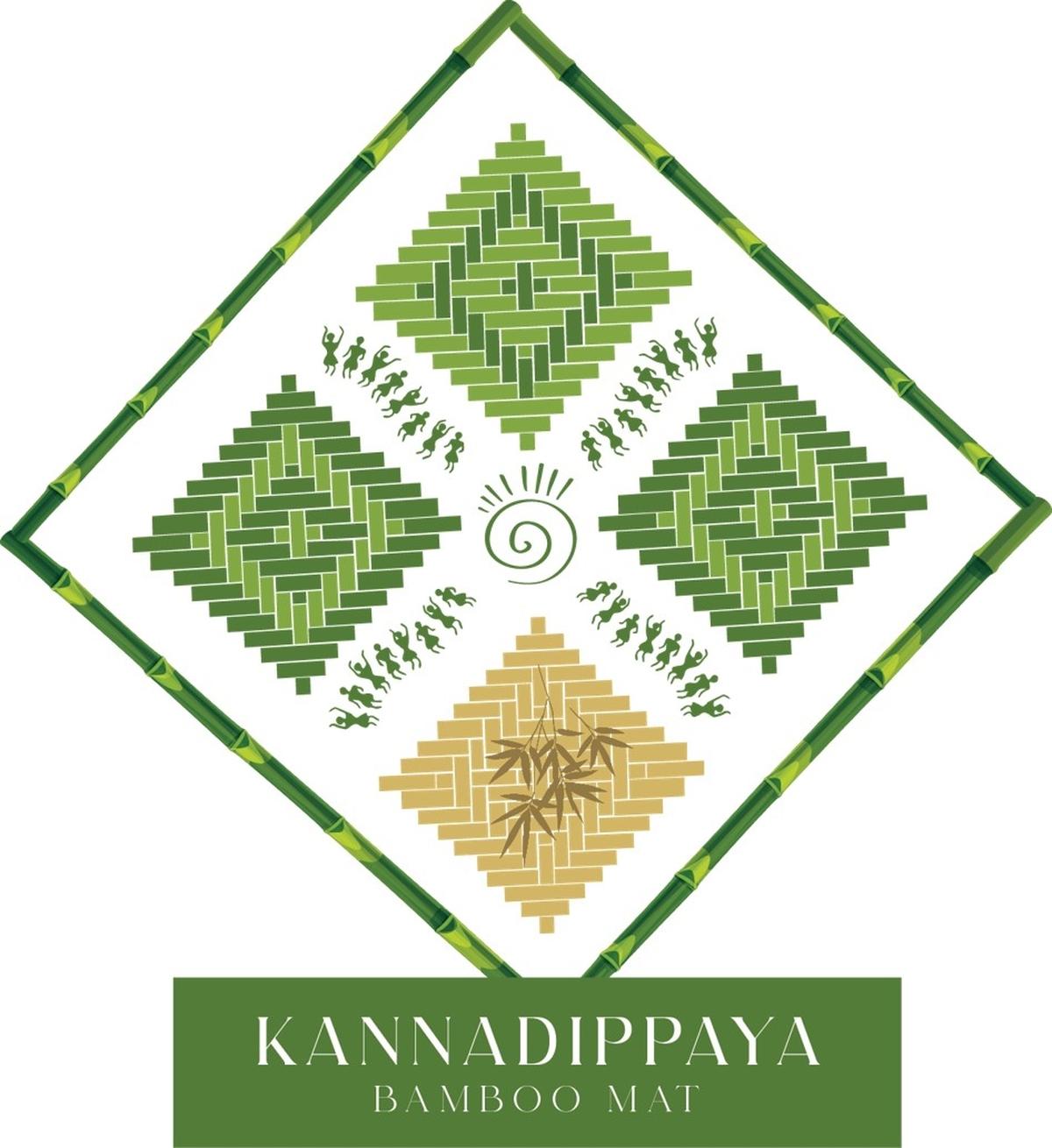
- 06 Apr 2025
In News:
The traditional tribal mat Kannadippaya from Kerala has been granted the Geographical Indication (GI) tag, marking a significant milestone in the protection and promotion of India’s tribal handicraft heritage.
About Kannadippaya
- Origin and Craftsmanship:Kannadippaya (literally, mirror mat) is a unique handicraft made by various tribal communities of Kerala, notably the Oorali, Mannan, Muthuvan, Malayan, Kadar, Ulladan, Malayarayan, and Hill Pulaya tribes. The craft is predominantly practiced in Idukki, Thrissur, Ernakulam, and Palakkad districts.
- Raw Material:The mat is woven using the soft inner layers of reed bamboo (Teinostachyumwightii) and other bamboo species such as Ochlandra sp., known locally by various names including Njoonjileetta and Kanjoora.
- Functional and Aesthetic Value:The mat’s reflective design gives it a mirror-like appearance. It offers thermal comfort by providing warmth during winter and cooling during summer, showcasing traditional ecological knowledge.
- Historical Significance:Historically, these mats were offered by tribal communities as a token of honour to kings, reflecting the cultural and symbolic value attached to the craft.
Significance of the GI Tag
- Cultural Recognition:Kannadippaya becomes Kerala’s first tribal handicraft to receive a GI tag, acknowledging its cultural uniqueness and heritage value.
- Economic Empowerment:The GI tag is expected to:
- Provide market protection for tribal artisans.
- Enable branding and certification, enhancing the product's authenticity.
- Open national and international markets, especially for eco-friendly, sustainable products.
- Encourage entrepreneurship among tribal communities, reducing dependency on intermediaries.
- Institutional Support:
- The Kerala Forest Research Institute (KFRI) played a pivotal role in securing the GI tag, along with contributions from experts.
- The application was supported by tribal cooperatives like UnarvuPattikavarghaVividodeshaSahakarana Sangam and Vanasree Bamboo Craft, Idukki.
Challenges and the Way Forward
- Lack of Structured Market:Artisans have highlighted the absence of a robust marketing ecosystem. There is a need for State and Central government interventions to:
- Facilitate marketing infrastructure and e-commerce platforms.
- Provide training and capacity-building for artisans.
- Encourage younger generations to take up the craft through incentives and education.
- Sustainability and Global Demand:Given the rising demand for eco-friendly and sustainable products globally, Kannadippaya has the potential to become a symbol of India’s green and inclusive development model.
Seaweed Farming in India
- 06 Apr 2025
In News:
With growing attention on sustainable marine resources and coastal livelihood enhancement, the Government of India is promoting seaweed cultivation as part of its broader Blue Economy strategy. Recognized for its nutritional, economic, and ecological value, seaweed farming is emerging as a viable livelihood and environmental solution for India's coastal communities.
What is Seaweed?
Seaweed is a nutrient-rich marine plant that grows in shallow ocean waters. It is:
- Rich in vitamins, minerals, amino acids, and 54 trace elements.
- Known to aid in managing non-communicable diseases such as cancer, diabetes, cardiovascular ailments, and hypertension.
- Used in food, cosmetics, fertilizers, medicines, and industrial gelling agents like agar, alginate, and carrageenan.
Global Significance and Industry Potential
- The global seaweed market is valued at US$ 5.6 billion and projected to reach US$ 11.8 billion by 2030 (World Bank).
- Major consumers: Japan, China, and South Korea.
- India possesses vast untapped potential with over 7,500 km of coastline and 844 identified seaweed species, of which ~60 are commercially viable.
Seaweed and the Blue Economy in India
Government Initiatives:
- Pradhan Mantri MatsyaSampada Yojana (PMMSY) (launched in 2020):
- Total Outlay: ?20,050 crore.
- ?640 crore allocated for seaweed development (2020–25).
- Goal: Increase seaweed production to 1.12 million tonnes in five years.
- Projects funded:
- Multipurpose Seaweed Park in Tamil Nadu.
- Seaweed Brood Bank in Daman & Diu.
- Provision of 46,095 rafts and 65,330 monocline tubenets to farmers.
Supportive Regulatory Measures:
- Seaweed-based biostimulants regulated under the Fertilizer (Control) Order, 1985.
- Integrated with Paramparagat Krishi Vikas Yojana (PKVY) and MOVCDNER to promote organic farming.
Economic, Environmental & Social Benefits
Economic:
- Seaweed farming offers high returns — e.g., farming Kappaphycusalvarezii may yield up to ?13.28 lakh/hectare/year.
- Generates foreign exchange through exports of seaweed-based bio-products.
Environmental:
- Requires no land, freshwater, fertilizers, or pesticides.
- Absorbs CO?, combats ocean acidification, and enhances marine biodiversity.
Social:
- Provides alternative livelihoods for fishers.
- Particularly beneficial for women and youth, promoting inclusive growth in coastal regions.
Success Stories and Innovations
Women Empowerment in Tamil Nadu:
Four women from Mandapam, Tamil Nadu, trained under PMMSY, successfully cultivated seaweed, producing 36,000 tonnes despite cyclones and market challenges. Their venture created employment and inspired other women.
Tissue Culture Innovation:
The CSIR-Central Salt and Marine Chemicals Research Institute (CSIR-CSMCRI)developed tissue-cultured Kappaphycusalvareziiseedlings, leading to:
- 20–30% higher growth rates.
- Better carrageenan quality.
- Enhanced farmer productivity in Tamil Nadu’s coastal districts.
Challenges and Way Forward
Challenges:
- Vulnerability to climatic shocks (cyclones, salinity changes).
- Limited market access and value chain infrastructure.
- Need for increased awareness and skill-building in coastal areas.
Recommendations:
- Strengthen public-private partnerships and R&D for better cultivars.
- Expand seaweed farming cooperatives with financial inclusion mechanisms.
- Promote Blue Economy integration in coastal development policies.
Domestically Manufactured Iron & Steel Products (DMISP) Policy – 2025
- 06 Apr 2025
In News:
To address the rising steel imports and strengthen domestic industry under the Atmanirbhar Bharat initiative, the Government of India has notified the DMISP Policy – 2025, mandating the exclusive use of Indian steel in government procurement and incorporating a reciprocity clause against non-cooperative foreign countries.
About the DMISP Policy – 2025
- Nodal Ministry: Ministry of Steel
- Aim:To promote the use of domestically produced iron and steel in government-funded projects, thereby reducing import dependence, enhancing self-reliance, and safeguarding the interests of the Indian steel industry.
- Key Objectives
- Promote Self-Reliance: Advance the vision of Atmanirbhar Bharat by boosting domestic steel production and consumption.
- Curb Imports: Mitigate the adverse impact of rising steel imports on Indian steelmakers.
- Support Domestic Industry: Provide a level playing field to Indian steel manufacturers in public procurement.
- Encourage Value Addition: Increase domestic sourcing and manufacturing of capital goods used in steel production.
Salient Features of the Policy
- Mandatory Use of Indian Steel:
- Applicable across all Union Ministries, PSUs, statutory bodies, and trusts.
- Covers products such as flat-rolled steel, rods, bars, and rails.
- Steel must meet the “Melt and Pour” condition — i.e., must be melted and solidified in India.
- Reciprocity Clause:
- Nations that restrict Indian firms from participating in their public procurement (e.g., China) are barred from Indian government tenders.
- Exceptions can be made only with the approval of the Ministry of Steel.
- Ban on Global Tenders (GTE):
- GTEs for steel products are prohibited.
- GTEs for capital goods (e.g., furnaces, rolling mills) are permitted only for contracts above ?200 crore, with prior clearance.
- Domestic Value Addition Requirement:
- Capital goods used in steel production must have at least 50% local value addition.
- Certification by statutory or cost auditors is mandatory.
- Procurement Applicability:
- Mandatory for all government procurement above ?5 lakh.
- Also extends to centrally funded but state-executed projects.
- Monitoring and Enforcement:
- A Standing Committee chaired by the Secretary (Steel) will:
- Oversee compliance and redress grievances.
- Grant exemptions in case of non-availability of Indian products.
- A Standing Committee chaired by the Secretary (Steel) will:
- Penalties for Non-Compliance:False declarations may result in blacklisting of suppliers and forfeiture of earnest money deposits.
NITI NCAER States Economic Forum Portal
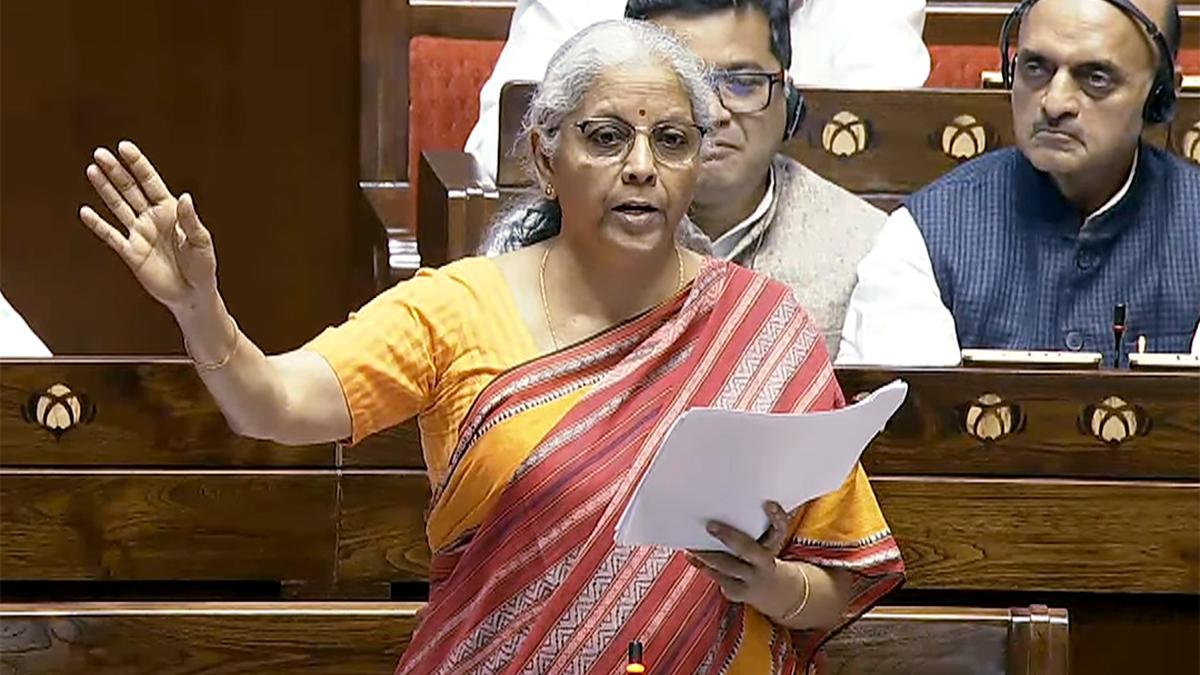
- 02 Apr 2025
In News:
The NITI NCAER States Economic Forum portal, jointly developed by NITI Aayog and the National Council of Applied Economic Research (NCAER), was launched on April 1, 2025, by the Union Finance Minister.
Key Highlights:
The portal serves as a comprehensive digital repository offering over 30 years (1990-91 to 2022-23) of state-wise data on social, economic, and fiscal parameters, promoting evidence-based policymaking and fiscal transparency.
Purpose and Significance
- Objective: To enable policymakers, researchers, and academics to access, compare, and analyze long-term trends in State finances and socio-economic indicators.
- Promotes data-driven governance, facilitates inter-State comparisons, and strengthens cooperative federalism.
- Addresses persistent demands for transparent, centralized, and accessible fiscal data, especially amid concerns of fiscal imbalance between Centre and States.
Core Features of the Portal
The portal is structured around four main components:
- State Reports:
- Covers all 28 Indian States.
- Summarizes macroeconomic and fiscal landscapes based on key indicators—demography, economic structure, social indicators, and fiscal metrics.
- Data Repository:
- Offers access to extensive datasets organized into five verticals:
- Demography
- Economic Structure
- Fiscal
- Health
- Education
- Offers access to extensive datasets organized into five verticals:
- Fiscal and Economic Dashboard:
- Interactive dashboards with graphical representations of vital statistics.
- Enables visualization of trends and download of datasets.
- Research and Commentary:Features expert analyses, research papers, and commentary on fiscal policies and State-level financial management.
Benefits and Policy Implications
- Enhances transparency and informed public debate.
- Supports benchmarking of States' performance against national averages and peer States.
- Aids in planning reforms, improving public finance management, and addressing regional disparities.
- A vital tool for academicians, policy analysts, and government officials working on State-level governance and development planning.
Payments Regulatory Board (PRB)

- 25 May 2025
In News:
The Central Government has notified the Payments Regulatory Board Regulations, 2025, replacing the earlier Board for Regulation and Supervision of Payment and Settlement Systems (BPSS) with a new statutory authority — the Payments Regulatory Board (PRB).
About the PRB
- Legal Basis: Constituted under Section 3 of the Payment and Settlement Systems Act, 2007.
- Objective: To regulate and supervise payment systems in India with broader representation and holistic oversight.
Composition (Total: 6 Members)
- Chairperson: Governor of the Reserve Bank of India (RBI)
- Ex-Officio Members:
- Deputy Governor of RBI in charge of the Department of Payment and Settlement Systems (DPSS)
- One RBI official nominated by the RBI Central Board
- Government Nominees:Three members nominated by the Central Government (previous BPSS had none)
Other Key Features:
- Expert Consultation: PRB can invite experts from fields like law and IT as permanent or ad hoc members.
- Eligibility Criteria:
- Members must be below 70 years of age
- Should not hold any legislative office or have material conflicts of interest
- Governance:
- Board meets at least twice a year
- Decisions are by majority vote; in case of a tie, the Chairperson (or Deputy Governor) casts the deciding vote.
- Delegation: PRB can delegate functions to RBI officers or sub-committees.
Institutional Support
- The PRB will be supported by the RBI’s DPSS, which will report directly to the board.
Significance of the Reform
- Marks a structural reform in the regulation of India’s rapidly growing payments ecosystem.
- Enhances government oversight through its nominees.
- Aims to improve coordination among various departments (e.g., fintech, digital payments).
- Seeks to provide uniform and consolidated regulation across diverse payment systems.
Sagar Mein Samman (SMS) Initiative
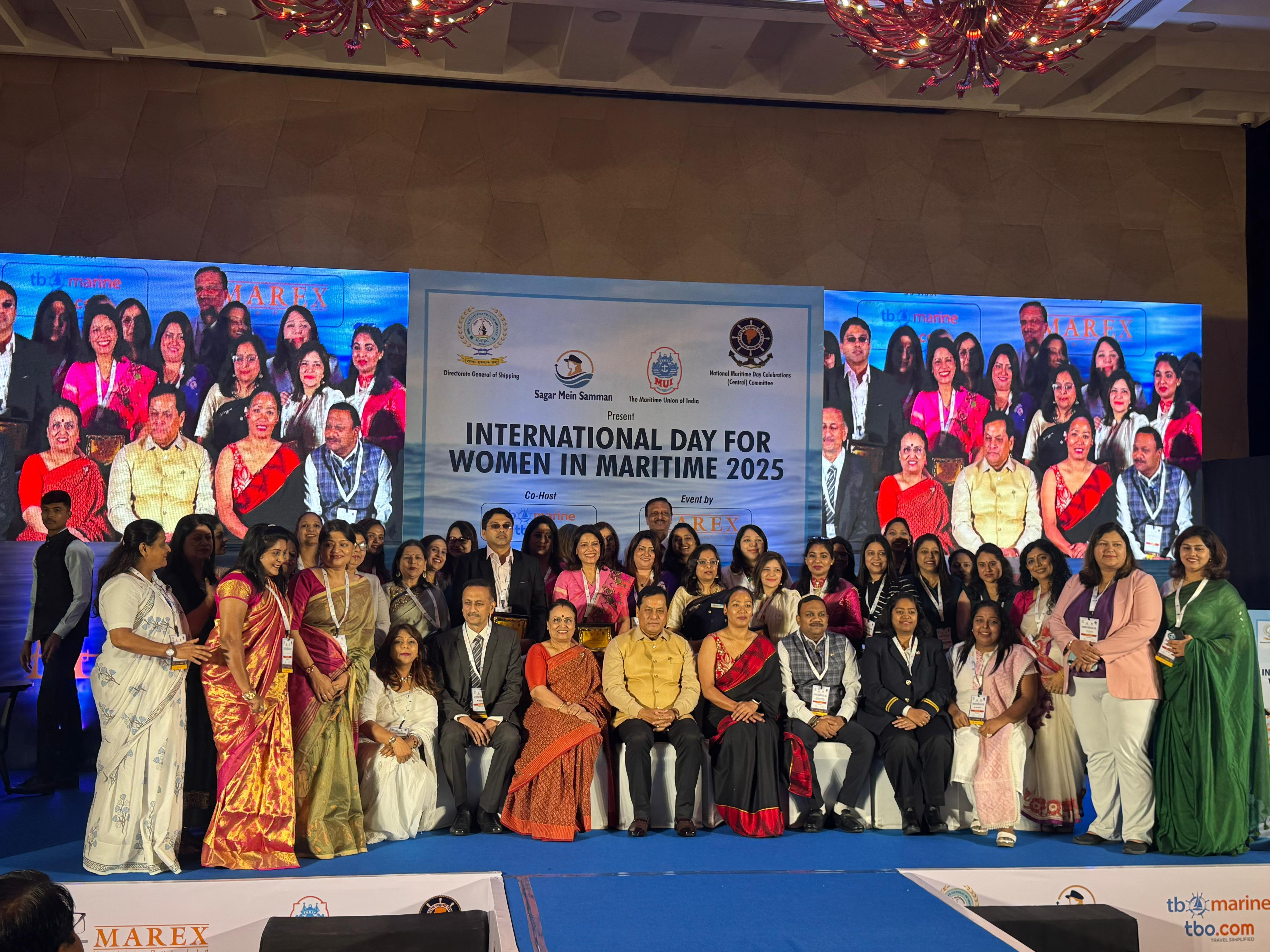
- 24 May 2025
In News:
The Government of India launched the Sagar Mein Samman (SMS) initiative on International Day for Women in Maritime (18 May), observed by the International Maritime Organization (IMO). The 2025 theme is “An Ocean of Opportunities for Women.”
About the Initiative:
- Objective: To build a gender-equitable maritime workforce by promoting inclusivity, safety, skill development, leadership, and equal opportunities for women across seafaring and shore-based maritime operations.
- Alignment:
- IMO’s gender inclusion mandate.
- UN SDG-5 (Gender Equality).
- India’s Diversity, Equity, and Inclusion (DEI) framework.
- Maritime India Vision 2030 and Maritime Amrit Kaal Vision 2047.
Key Features:
- Structured Policy Roadmap covering:
- Planning & strategy.
- Training & development.
- Research & innovation.
- Governance & compliance.
- Outreach & communications.
- Financial Support: ~2,989 women received assistance since 2014.
- Incentives for Industry: Shipping companies are incentivized to hire women; scholarships support training.
Achievements:
- 649% growth in women seafarers:From 341 in 2014 to 2,557 in 2024.
- Rise in financial aid beneficiaries:From 45 in 2014-15 to 732 in 2024-25.
- Female representation target:12% in technical maritime roles by 2030.
- Increasing employment of Indian women on Indian and foreign-flagged ships.
Recognition and Outreach:
- Women Leaders Honoured: Ten outstanding women were felicitated for their contributions to maritime.
- Focus on awareness campaigns, onshore job facilitation, and leadership opportunities.
Significance:
- Aims to dismantle gender-based barriers and promote inclusive economic growth.
- Reinforces India’s commitment to gender equity as a strategic enabler of maritime sustainability and national development.
- Aligns with global maritime norms and India’s broader commitment to SDGs.
Other Key Maritime Initiatives:
- SAGAR (Security and Growth for All in the Region): Maritime security and regional cooperation.
- Maritime India Vision 2030: Long-term strategy for port-led development and gender inclusion.
SPICED Scheme
- 22 May 2025
In News:
The Spices Board of India, under the Ministry of Commerce and Industry, has introduced the SPICED Scheme (Sustainability in Spice Sector through Progressive, Innovative and Collaborative Interventions for Export Development) for the financial year 2025–26.
Key Objectives
The SPICED initiative is designed to:
- Promote sustainability and innovation in spice farming.
- Enhance productivity and quality of major spices like small and large cardamom.
- Encourage organic cultivation, GI-tagged spice production, and value addition.
- Improve post-harvest processing standards.
- Ensure compliance with international food safety and phytosanitary regulations.
- Strengthen the export ecosystem and support spice stakeholders, including farmers, SHGs, and MSMEs.
Major Components and Interventions
The scheme extends financial assistance and capacity-building support across the spice value chain, including:
1. Agricultural Support
- Rejuvenation and replanting of cardamom plantations.
- Development of water sources and micro-irrigation systems.
- Promotion of organic farming and Good Agricultural Practices (GAPs).
2. Post-Harvest Infrastructure
- Installation of modern processing machinery such as dryers, dehullers, slicers, and grading systems.
- Assistance to farmers and Farmer Producer Organizations (FPOs) for acquiring spice-specific equipment like:
- Turmeric boilers
- Spice polishers
- Mint distillation units
- Threshers
3. Entrepreneurship and Innovation
- Establishment of Spice Incubation Centres to promote product development and branding.
- Support for startups and MSMEs in accessing markets and improving competitiveness.
4. Capacity Building
- Training and extension activities to disseminate knowledge on best practices and technical know-how.
- Skill enhancement for Self-Help Groups (SHGs), farmers, and FPOs.
5. Export Promotion
- Facilitation of participation in international trade fairs, buyer-seller meets, and market linkage events.
- Financial aid prioritised for:
- First-time exporters
- Small and medium enterprises (SMEs)
- Registered exporters with a valid CRES (Certificate of Registration as Exporter of Spices).
Governance and Transparency
- All scheme activities will be geo-tagged.
- Status of applications, fund allocation, and beneficiary details will be made available on the Spices Board's website to ensure transparency and accountability.
India’s First Geothermal Production Well in Northeast

- 18 May 2025
In News:
In a significant advancement for clean energy in Northeast India, Dirang in Arunachal Pradesh has become the site of the region’s first operational geothermal production well. This marks a pivotal step in utilizing Earth’s internal heat for sustainable energy generation in the eastern Himalayas.
Project Details
- Location:Dirang, West Kameng district, Arunachal Pradesh
- Terrain: Eastern Himalayan region
Technology Used
- The project employs a closed-loop binary Organic Rankine Cycle (ORC) system, which captures subsurface geothermal heat for applications such as:
- Electricity generation
- Space heating
- Agricultural processing
- Reservoir Temperature: Approx. 115°C — optimal for direct-use geothermal systems.
- Drilling Approach: Low-impact precision drilling aimed at fault zones between quartzite and schist rock formations.
Institutional Collaboration
- Implementing Agency:Centre for Earth Sciences and Himalayan Studies (CESHS), Itanagar
- Supported by:
- Ministry of Earth Sciences, Government of India
- Government of Arunachal Pradesh
- International partners from Norway, Iceland, and Guwahati research institutes
Significance
- First-of-its-kind in the entire Northeast region
- Potential to make Dirang energy self-reliant through clean geothermal power
- Helps replace diesel and firewood in cold climates, reducing emissions
- Can enhance agricultural productivity and living standards in high-altitude areas
- Strengthens India’s geothermal potential (~10,600 MW), offering reliable base-load renewable energy unlike solar or wind
Stagflation and Banking Sector Risks in the U.S.

- 18 May 2025
In News:
In 2025, economic analysts are raising alarms over growing signs of stagflation in the United States and its potential to trigger a renewed banking crisis similar to the collapse of Silicon Valley Bank (SVB) in 2023.
Unrealized Losses in U.S. Banks
As of early 2025, U.S. banks are grappling with $482.4 billion in unrealized losses from securities investments, according to the Federal Deposit Insurance Corporation (FDIC). This marks a 32.5% rise from the previous quarter. The figure is approaching the $515 billion mark observed during the SVB crisis and could rise to $600–700 billion if interest rates hit 5%.
These losses are primarily linked to long-term securities like government bonds, whose prices have fallen due to rising benchmark 10-year Treasury yields, now exceeding 4.5%.
What is Stagflation?
Stagflation is a rare and difficult economic condition marked by:
- High inflation
- Stagnant or negative economic growth
- High unemployment
It complicates policymaking because:
- Tightening monetary policy (raising interest rates) to control inflation can worsen unemployment and slow growth.
- Loosening policy to boost growth can further fuel inflation.
Causes of Stagflation in 2025:
- Supply Shocks – Rising input costs (e.g., energy or tariffs).
- Tariff Hikes – New U.S. tariffs on imports have raised production costs.
- Policy Missteps – Uncoordinated fiscal and monetary measures.
Impacts on the Financial Sector
- Reduced Bond Values: High interest rates lower the market value of banks’ bond holdings.
- Risk of Bank Runs: Diminished asset values can trigger depositor panic.
- Credit Losses: Particularly in sectors like tech and venture capital where firms have weak earnings and poor debt coverage.
- Liquidity Crisis: A sudden negative news cycle could lead to another SVB-like collapse.
Experts warn that continued high interest rates could deepen banking stress and prolonged stagflation could amplify credit defaults.
NiveshakShivir
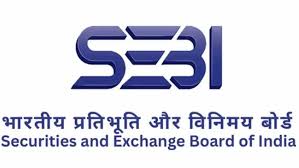
- 13 May 2025
In News:
In May 2025, the Investor Education and Protection Fund Authority (IEPFA), under the Ministry of Corporate Affairs, in collaboration with the Securities and Exchange Board of India (SEBI), convened a strategic preparatory meeting at SEBI’s Mumbai office to launch the “NiveshakShivir” initiative. This nationwide investor outreach program aims to facilitate the reclamation of unclaimed dividends and shares by investors across India.
Key Features of “NiveshakShivir”
- Investor Helpdesks: Physical helpdesks will be set up to enable investors to interact directly with company representatives and Registrars and Transfer Agents (RTAs) for end-to-end assistance in recovering unclaimed assets.
- Digital Search Facility: IEPFA provides an online portal (https://iepfa.gov.in/login) where shareholders can check if their shares have been transferred to the IEPF and file claims using Form IEPF-5.
- Streamlined Process: Clear guidance is provided for shareholders holding shares in dematerialized or physical form to verify and reclaim their unclaimed dividends and shares efficiently.
- Coverage: The initiative is set to launch first in Mumbai and Ahmedabad, with plans to expand to other cities with high volumes of unclaimed investor assets.
Actions for Shareholders
- Demat Shareholders: Are encouraged to directly contact respective companies for clarification regarding shares liable for transfer to IEPFA.
- Physical Shareholders: Should verify share status on the IEPFA website and claim refunds if shares have been transferred.
- The initiative reduces dependence on intermediaries and improves transparency and efficiency in the recovery process.
About the Investor Education and Protection Fund Authority (IEPFA)
- Legal Basis: Established under Section 125 of the Companies Act, 2013.
- Function: Operates under the Ministry of Corporate Affairs to protect investor interests, promote financial literacy, and manage the corpus of unclaimed dividends, matured deposits, and shares transferred by companies.
- Objective: To foster a transparent, investor-friendly financial ecosystem through outreach and education programs like “NiveshakShivir.”
Expanded Credit Guarantee Scheme for Startups (CGSS)

- 12 May 2025
In News:
In a significant push to support innovation, domestic manufacturing, and startup growth, the Government of India has doubled the credit guarantee limit under the Credit Guarantee Scheme for Startups (CGSS) from ?10 crore to ?20 crore per borrower. Additionally, it has enhanced the guarantee coverage and reduced the guarantee fees for selected high-priority sectors.
About CGSS (Credit Guarantee Scheme for Startups)
- Launched: October 2022
- Under: Startup India Action Plan (initiated January 16, 2016)
- Nodal Ministry: Department for Promotion of Industry and Internal Trade (DPIIT), Ministry of Commerce and Industry
- Implemented by: National Credit Guarantee Trustee Company (NCGTC)
- Objective
- To enable collateral-free debt funding to DPIIT-recognised startups via:
-
- Term loans
- Working capital
- Venture debt and other fund-based/non-fund-based credit instruments
- To reduce the perceived credit risk for financial institutions and promote early-stage innovation, R&D, and self-reliant manufacturing.
Key Features of the Expanded CGSS
Parameter Previous Provision Revised Provision
Credit Guarantee Limit ?10 crore ?20 crore per borrower
Guarantee Coverage 75% 85% for loans ≤ ?10 crore, 75% for loans >
?10 crore
Annual Guarantee Fee (AGF) 2% 1% for startups in 27 Champion Sectors
Eligible Instruments Fund-based & non-fund based Includes venture debt, debentures,
subordinated debt
Guarantee Issuance Manual process Automated via NCGTC portal
Umbrella Guarantee Not earlier specified Covers pooled investments
(up to ?20 crore or 5% loss)
Eligible Startups & Lenders
Startups must be:
- Recognised by DPIIT
- Not classified as Non-Performing Assets (NPA)
- Certified eligible by the lending institution
Lending Institutions include:
- Scheduled Commercial Banks
- NBFCs (rated BBB+ and above, net worth ≥ ?100 crore)
- SEBI-registered Alternative Investment Funds (AIFs)
Focus on Champion Sectors
To strengthen the Make in India initiative, the reduced AGF of 1% applies to 27 Champion Sectors, which include:
- 15 Manufacturing Sectors:Aerospace &defence, automotive components, biotechnology, chemicals, petrochemicals, electronics, pharmaceuticals, etc.
- 12 Services Sectors:IT &ITeS, tourism, hospitality, medical value travel, accounting and finance, audio-visual services, among others.
Expected Outcomes
- Improved Credit Access: More financial institutions are expected to extend funding to startups due to increased guarantee coverage and reduced risk.
- Encouragement for Innovation: Easier credit access will facilitate R&D, product development, and new-age technological innovation.
- Boost to Self-Reliance: Priority manufacturing and service sectors will benefit from reduced funding costs, promoting Atmanirbhar Bharat.
- Alignment with Viksit Bharat Vision: Supports long-term goals of inclusive economic growth through entrepreneurship and job creation.
New Framework for Regulation Formulation and Public Consultation

- 10 May 2025
In News:
The Reserve Bank of India (RBI) has introduced a structured framework designed to standardize the creation and revision of its regulatory policies. This initiative aims to enhance transparency, consistency, and public engagement throughout the regulatory process.
Key Aspects of the Framework
- Unified Application:The framework covers all forms of RBI regulations, including directions, guidelines, notifications, policies, and standards.
- Mandatory Public Consultation:Draft regulations are required to be published on the RBI’s official website along with a detailed Statement of Particulars. These drafts will remain open for public comments for a minimum period of 21 days, allowing stakeholders to provide their inputs.
- Impact Evaluation:Each draft must clearly outline its objectives, conduct an impact assessment, and reference relevant international best practices and global standards to ensure comprehensive evaluation.
- Response to Feedback:After considering public comments, the RBI will release a summary addressing the feedback alongside the final version of the regulations.
- Regular Review:Existing regulations will undergo periodic reassessment based on supervisory insights, alignment with global developments, and their continued applicability in a dynamic environment.
Significance of the Framework
- Enhances Transparency and Inclusiveness:By inviting public participation, the framework ensures a more open and accountable regulatory process.
- Encourages Evidence-Based Policy:The incorporation of impact analysis and stakeholder feedback supports more informed and effective policymaking.
- Aligns with Global Standards:The framework positions India’s regulatory governance in harmony with international best practices.
- Boosts Regulatory Efficiency:Continuous review and rationalization help in eliminating redundant regulations and improving overall governance.
Orange Economy
- 05 May 2025
In News:
At the World Audio Visual Entertainment Summit (WAVES) held in Mumbai, Prime Minister Narendra Modi highlighted the transformative potential of India's Orange Economy—a sector driven by creativity, content, and culture. With Indian films now screened in over 100 countries and a surge in OTT platform consumption, India is fast emerging as a global content leader.
What is the Orange Economy?
Also known as the Creative Economy, the Orange Economy encompasses industries rooted in individual creativity, talent, and intellectual property. Coined by Colombian economists Felipe Buitrago and Iván Duque, the term “orange” reflects the vibrancy of cultural identity and innovation.
Core Sectors:
- Advertising, architecture, and design
- Arts and crafts, fashion, and publishing
- Film, music, performing arts, and photography
- Animation, gaming, software, and digital media
- Television, radio, and electronic publishing
- Research and development (R&D)
Key Features of the Orange Economy
- Knowledge-driven and innovation-centric
- Promotes cultural diversity and economic inclusivity
- Combines economic, social, and cultural dimensions
- Strong links to technology, tourism, and intellectual property rights
Global and National Significance
- As per UNESCO, the Orange Economy contributes approximately 3% to global GDP and supports over 30 million jobs worldwide.
- The global animation industry alone is valued at $430 billion.
- In India, the creative sector is being nurtured through flagship initiatives like Skill India, Startup India, and platforms such as WAVES, aiming to empower young creators—from Guwahati musicians to Kochi podcasters.
Government Support and Vision
Emphasized that though the "screen may be shrinking, the scope is infinite," underlining the massive potential of digital platforms and content innovation. The government is actively working to build an enabling ecosystem for the creative economy, blending economic growth with cultural preservation.
Vizhinjam International Seaport
- 05 May 2025
In News:
The Vizhinjam International Seaport in Kerala is set to be inaugurated by the Prime Minister, marking a significant milestone in India’s maritime infrastructure.
Key Highlights
- Location: Situated at Vizhinjam, near Thiruvananthapuram in Kerala.
- Type: India’s first dedicated transshipment port and semi-automated seaport.
- Development Model: Built under the Public-Private Partnership (PPP) model at an estimated cost of ?8,900 crore. The port is operated by the Adani Group, while the Kerala Government retains majority ownership.
Technical Features
- Deepest Breakwater in India: Spanning about 3 km with a natural depth of ~20 metres, enabling accommodation of large container vessels.
- Minimal Littoral Drift: Reduced sediment movement along the coast helps lower maintenance costs significantly.
- AI-Powered Vessel Traffic Management: India’s first indigenous VTMS system developed in collaboration with IIT Madras.
- Advanced Automation:
- Fully automated yard cranes.
- Remotely operated ship-to-shore cranes for efficient and safe cargo handling.
Strategic Importance
- Proximity to Global Shipping Lanes: Located just 10 nautical miles from a key international East-West shipping route.
- Boost to Domestic Transshipment:
- Currently, around 75% of India’s transshipment traffic is handled by foreign ports such as Colombo and Singapore.
- Vizhinjam is expected to reduce foreign exchange outflows and increase India's share in global maritime trade.
- International Connectivity: The port is now connected to global maritime hubs like Shanghai, Singapore, and Busan.
Future Prospects
- Multi-Modal Integration:
- Direct linkage to National Highway-66 (NH-66).
- Kerala’s first cloverleaf interchange for seamless traffic movement.
- An upcoming railway link to integrate the port with the national railway grid.
- Vision: Aims to become a major multi-modal logistics hub supporting India’s broader maritime and trade ambitions under Sagarmala and PM Gati Shakti initiatives.
Annual Survey of Services Sector Enterprises (ASSSE)
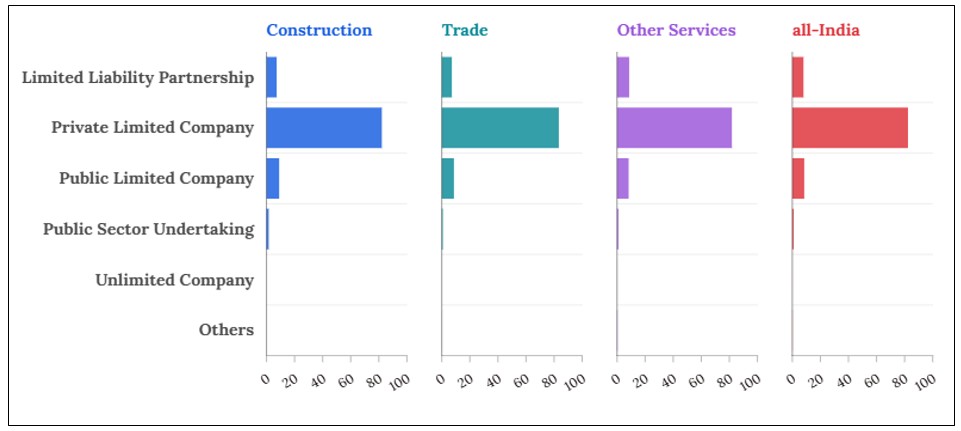
- 05 May 2025
In News:
The Ministry of Statistics and Programme Implementation (MoSPI) recently released findings from a pilot study on the Annual Survey of Services Sector Enterprises (ASSSE). This initiative aims to fill a crucial data gap regarding India’s incorporated service sector, which is not currently covered by regular surveys like the Annual Survey of Unincorporated Sector Enterprises (ASUSE).
Significance of the Services Sector
- Contribution to Economy: The services sector contributed ~55% of India's Gross Value Added (GVA) in FY 2024–25, up from 50.6% in FY14.
- Employment: It employs around 30% of India’s workforce, spanning industries like IT, finance, education, tourism, and healthcare.
- Trade: India’s services exports stood at USD 280.94 billion (April–Dec 2024). In ICT services, India is the 2nd-largest global exporter, accounting for 10.2% of global exports.
- FDI Magnet: The sector attracted USD 116.72 billion in FDI (April 2000–Dec 2024)—about 16% of total FDI inflows.
- Support to Digital India & Urbanization: The sector underpins the Digital India initiative and Smart Cities Mission by enabling digital payments, urban mobility, e-governance, and waste management.
About the ASSSE Pilot Study
Purpose & Objectives
- To test the suitability of the GSTN (Goods and Services Tax Network) database as a sampling frame.
- To develop robust survey instruments and methodology for a full-scale annual survey starting January 2026.
- To gather data on economic characteristics, employment, and financial indicators from incorporated enterprises under:
- Companies Act, 1956/2013
- Limited Liability Partnership (LLP) Act, 2008
Survey Coverage
- Conducted in two phases:
- Phase I (May–Aug 2024): Verified enterprise data for 10,005 units.
- Phase II (Nov 2024–Jan 2025): Collected detailed data from 5,020 enterprises under the Collection of Statistics Act, 2008.
- Data collected for FY 2022–23 using CAPI (Computer-Assisted Personal Interviewing).
Key Findings:
Enterprise Type Distribution
- Private Limited Companies: 82.4%
- Public Limited Companies and LLPs: ~8% each
Size-Class Analysis (FY 2022–23)
Output Class (?) % Share of Gross Value Added (GVA) % Share of Fixed Assets % Share of Employment
< 10 crore 1.19% 2.64% 9.28%
10–100 crore 9.45% 9.58% 20.03%
100–500 crore 19.90% 25.00% 33.73%
> 500 crore 69.47% 62.77% 36.96%
- Large enterprises (output > ?500 crore) dominate in assets, value addition, and compensation paid, but smaller units employ over 63% of the total workforce in the sample.
Additional Establishments
- 28.5% of enterprises reported having additional business locations within the state.
- Highest in the Trade sector (41.8%).
Insights and Challenges from the Pilot
- Suitability of GSTN as Sampling Frame: Confirmed.
- Challenges Faced:
- Data retrieval from enterprises with headquarters in other states.
- Centralized data (CIN-based) posed difficulty in disaggregating state-level data.
- Positive Outcomes:
- High response rate and cooperation.
- Survey instruments found largely clear and functional.
Challenges Faced by the Services Sector
- Skill Gaps:
- Only 51.25% of youth are employable (Economic Survey 2023–24).
- Merely 5% of workforce is formally skilled (WEF).
- Informality:
- About 78% of service jobs were informal in 2017–18.
- Gig workers lack social protection.
- Global Competition:
- Visa restrictions (e.g., H-1B in the US).
- Competing hubs: Philippines, Vietnam.
- Rising IT wage costs in India.
- Infrastructure Deficiencies:
- Inadequate AI/ML adoption.
- Digital divide persists in rural and marginalized MSMEs.
- Post-COVID Recovery:
- Inbound tourism yet to reach pre-pandemic levels (90% of 2019 arrivals in H1 2024).
Way Forward
- Upskilling Initiatives:
- Expand Skill India Digital and PMKVY 4.0.
- Promote Prime Minister Internship Scheme (PMIS) for bridging academia-industry gap.
- Boosting Global Competitiveness:
- Negotiate FTAs with EU, UK, Australia.
- Expand Global Capability Centres (GCCs).
- Digital Infrastructure & Security:
- Strengthen cybersecurity frameworks and promote secure cloud adoption.
- Improve digital literacy, especially in financial services.
- Decentralized Growth:As per NITI Aayog, promote services sector in Tier-2 and Tier-3 cities with better infrastructure and connectivity.
Global Wind Energy Report 2025
- 05 May 2025
In News:
The Global Wind Energy Council (GWEC), in its Global Wind Report 2025, has warned that current global wind energy growth is insufficient to meet the targets aligned with the Paris Agreement and net-zero emissions by 2050. As per the report, at current trends, only 77% of the wind capacity required by 2030 will be achieved — putting the 1.5°C global warming limit at serious risk.
Global Wind Energy Landscape (as of 2024)
- New Capacity Added: 117 GW (up from 116.6 GW in 2023)
- Total Global Capacity: 1,136 GW
- Leading Countries:
- China: 70% of new installations
- USA, Brazil, India, and Germany followed.
- Emerging Markets: Uzbekistan, Egypt, and Saudi Arabia showed significant growth.
- Regional Progress:
- Africa and Middle East: Onshore wind capacity doubled compared to previous years.
- Offshore Wind: Only 8 GW added (down 26% from 2023), the lowest since 2021.
Key Challenges Identified by GWEC
- Policy Uncertainty: Regulatory delays and instability in key markets.
- Grid Infrastructure Deficits: Underinvestment in transmission and distribution systems.
- Financial Constraints: Inflation, high interest rates, trade protectionism.
- Market Inefficiencies: Weak renewable energy auction systems.
Global Commitments & Urgency
- At COP28 (Dubai), countries pledged to triple renewable energy capacity by 2030.
- To align with this goal, annual wind installations must rise to 320 GW by 2030.
- Failure to scale up urgently risks missing a vital climate mitigation window.
Wind Energy in India – Status and Prospects (as of March 2025)
- Total Installed Capacity: 50.04 GW
- Capacity Added (FY 2024–25): 4.15 GW
- (Up from 3.25 GW in FY 2023–24)
- Global Rank: 4th largest wind power producer (after China, USA, Germany)
- Top States:
- Gujarat
- Tamil Nadu
- Karnataka
- Manufacturing Strength: Domestic wind turbine manufacturing capacity is ~18,000 MW/year.
- Offshore Wind Potential:
- Gujarat: 36 GW
- Tamil Nadu: 35 GW
India’s Green Hydrogen Push
- 04 May 2025
In News:
India has signed agreements to supply 4.12 lakh tonnes of green hydrogen derivatives to Japan and Singapore, signaling its emergence as a global leader in green hydrogen. Simultaneously, the Green Hydrogen Certification Scheme of India (GHCI) was launched to ensure transparent and credible verification of green hydrogen production.
Green Hydrogen Certification Scheme of India (GHCI)
- Launched by: Ministry of New and Renewable Energy (MNRE)
- Nodal Agency: Bureau of Energy Efficiency (BEE)
- Support: National Green Hydrogen Mission (2023; outlay ?19,744 crore)
- Certification by: Accredited Carbon Verification (ACV) Agencies
- Operational Basis: Evaluated annually, aligned with the financial year
- Objective:
- Certify hydrogen produced exclusively using renewable energy (e.g., solar, wind, biomass) as "green."
- Promote transparency, traceability, and market credibility.
- Align with India’s target of 5 million metric tonnes (MMT) of green hydrogen production by 2030.
- Enable integration with India’s Carbon Credit Trading Scheme from 2026.
- Key Features:
- Scope: Applies at the project level up to hydrogen purification (excludes transport/storage).
- Eligibility: Applies to hydrogen produced via electrolysis and biomass conversion; additional methods subject to BEE approval.
- Compliance: Mandatory for domestic producers; exempt for export-only units.
- Verification: Annual third-party audits with data logging via the Green Hydrogen Portal.
- GHG Measurement: Emissions calculated in kg CO? equivalent per kg of H?.
- Guarantee of Origin (GO): Validates green hydrogen claims, crucial for global markets.
Significance and Impact
- Credibility Boost: Certified hydrogen gains international recognition and competitive advantage.
- Export Readiness: Facilitates global trade through verified green hydrogen standards.
- Investment Attraction: Defined certification process encourages private and foreign investment.
- Carbon Market Linkage: Future integration with India's carbon trading market allows certificates to become tradable assets.
- Fossil Fuel Reduction: Supports India’s long-term goal of energy transition and emission reduction.
International Agreements
- India to supply 4.12 lakh tonnes of green hydrogen derivatives to Japan and Singapore, enhancing strategic energy ties and export potential.
- Discussions ongoing with state governments to facilitate Power Purchase Agreements (PPAs) for renewable energy sourcing.
- Coordination underway with Ministry of Power and Central Electricity Regulatory Commission (CERC) to address regulatory barriers.
India’s First Certified Green Municipal Bond
- 03 May 2025
In News:
The Ghaziabad Nagar Nigam has become the first municipal body in India to issue a certified Green Municipal Bond, successfully raising ?150 crore to construct a Tertiary Sewage Treatment Plant (TSTP) — a major step toward sustainable urban water management.
What is a Green Municipal Bond?
A Green Municipal Bond is a financial instrument issued by Urban Local Bodies (ULBs) to finance projects with environmental benefits, such as:
- Renewable energy
- Water and wastewater treatment
- Pollution control
- Solid waste management
These bonds are aligned with international Green Bond Principles and require sustainability certification through independent third-party audits.
Key Features
- Targeted Use of Funds: Capital raised is exclusively allocated to environmentally certified projects.
- Independent Certification: Must meet Environmental, Social, and Governance (ESG) standards.
- Investor Confidence: Appeals to climate-focused investors, ESG funds, and global financial institutions.
- Municipal Creditworthiness: Encourages better financial management and credit ratings for ULBs.
Significance of the Initiative
- Supports SDGs: Contributes to UN Sustainable Development Goals, especially SDG 6 (Clean Water and Sanitation).
- Promotes Green Infrastructure: Enables low-emission urban development and enhances climate resilience.
- Enhances Water Security: Facilitates wastewater recycling, reducing dependence on freshwater sources.
- Replicable Model: Serves as a template for other municipalities to mobilize green capital for eco-projects.
Natural Hydrogen
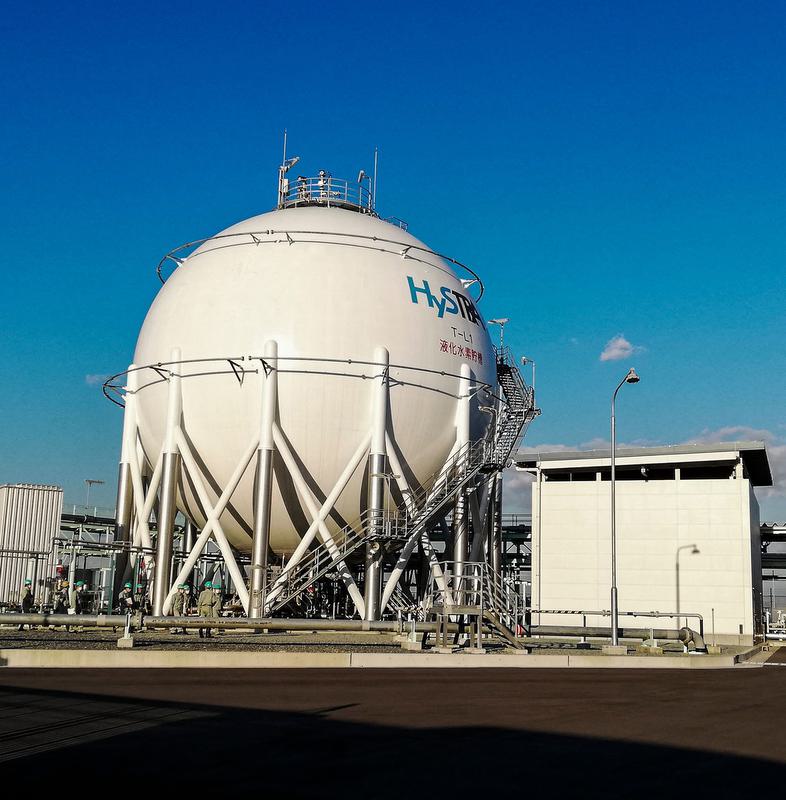
- 03 May 2025
In News:
Governments and private players globally are increasingly exploring natural hydrogen as a low-cost, zero-emission energy source. Recent discoveries in France’s Moselle region and growing interest in countries like India and the U.S. signal a new frontier in clean energy exploration.
What is Natural Hydrogen?
Natural hydrogen, or geologic hydrogen, refers to free molecular hydrogen (H?) naturally present underground due to geological processes. Unlike manufactured hydrogen (grey, blue, or green), it occurs naturally and can be extracted directly from the Earth.
Key Geological Sources:
- Serpentinisation: Water reacts with ultramafic rocks.
- Radiolysis: Water splits due to radioactive decay of rocks.
- Organic decomposition: Deep-seated carbon-rich matter releases hydrogen.
- Co-existence with helium: Indicates deep crustal origins.
Extraction Process
- Exploration: Detection of hydrogen seeps using geophysical tools.
- Drilling: Boreholes drilled in hydrogen-rich zones (e.g., Mali, U.S., France).
- Capture & Compression: Hydrogen is purified and compressed.
- Distribution: Delivered for use in fuel cells, refineries, or industries.
Why is it Important?
- Zero Emissions: Burns to produce only water vapor — no CO?.
- Cost-Effective: Estimated cost ~$1/kg, cheaper than green hydrogen.
- Renewable & Sustainable: Can replenish naturally in rock formations.
- High Efficiency: Hydrogen fuel cells are 3x more efficient than gasoline.
Historical Background
- 1987, Mali: Accidental discovery of a hydrogen-rich well during water drilling.
- 2012: Confirmed to be 98% pure hydrogen, sparking interest in natural reserves.
- Once viewed as a geological oddity, it is now recognized for its energy potential.
Global Exploration Trends
- Over 40 companies exploring hydrogen in Australia, U.S., Spain, France, Albania, Colombia, South Korea, Canada.
- USGS model (2022): Suggests potential to meet global hydrogen demand for ~200 years.
- France (2025): Moselle region found to contain ~92 million tonnes of natural hydrogen — worth ~$92 billion.
India’s Natural Hydrogen Potential
India has favourable geology for natural hydrogen generation:
- Ophiolite belts: Himalayas, Andaman.
- Cratons: Dharwar, Singhbhum greenstone belts.
- Sedimentary basins: Vindhyan, Cuddapah, Gondwana.
- Hydrothermal systems: Hot spring regions.
- Basement rocks: With deep fractures and mafic/ultramafic content.
A comprehensive geological survey is needed to assess extractable reserves.
Challenges in Adoption
- Lack of Mapping: Global hydrogen reserves are poorly explored.
- Scattered Deposits: Difficult to commercialize if reserves are dispersed.
- Storage & Transport: Requires high-pressure systems due to low density.
- Safety Risks: Odourless and flammable — hard to detect leaks.
- Infrastructure Deficit: Refuelling stations and pipelines still underdeveloped.
Way Forward
- National Hydrogen Mapping: Focus on cratonic belts and ophiolites in India.
- Policy Framework: Integrate natural hydrogen into the National Hydrogen Mission.
- Public-Private Collaboration: Offer PPPs, tax breaks, and R&D incentives.
- Global Partnerships: Collaborate with USGS, France, U.S. on exploration models.
- Infrastructure Investment: Build hydrogen hubs, refuelling stations, and pipelines.
International Labour Day (May Day)
- 02 May 2025
In News:
International Labour Day, also known as May Day, is observed annually on May 1 to honor the dedication and contributions of workers across the globe.
Key Highlights:
- Observed On: May 1
- Also Known As: International Workers’ Day, May Day
- Purpose: To commemorate the contributions of workers and honor the global labor movement's struggles and achievements.
Historical Background
- Origin: The roots of International Labour Day trace back to Chicago, USA, where on May 1, 1886, workers launched a strike demanding an 8-hour workday.
- The protest culminated in the Haymarket Affair on May 4, 1886, when a bomb explosion led to the deaths of six police officers and several civilians, marking a major milestone in labor rights activism.
- In 1889, the Second International (Paris) declared May 1 as a day of international workers’ solidarity.
Global Observance
- Observed in over 160 countries, including India, China, Cuba, France, Germany, Brazil, South Africa, Russia, Vietnam, among others.
- Celebrated through parades, union meetings, and public demonstrations advocating workers’ rights and social justice.
Country-wise Observance Differences
- India: First observed in 1923 in Chennai by the LabourKisan Party of Hindustan. It is a public holiday, widely recognized across the country.
- United States: Despite its historical origin, the U.S. celebrates Labor Day on the first Monday of September, officially declared in 1894 after the Pullman Strike. The shift was made to distance the holiday from socialist and communist affiliations.
- Canada: Also celebrates Labor Day on the first Monday of September, following U.S. traditions, though May 1 has some informal recognition by trade unions.
- United Kingdom: Celebrates a related holiday called the Early May Bank Holiday on the first Monday of May, which may or may not fall on May 1. It is not explicitly labor-themed like in other countries.
Significance
- Serves as a global reminder of workers’ rights, the historical fight for humane working conditions, and the ongoing struggles of labor communities.
- Symbolizes solidarity among workers across nations, cutting across political ideologies and economic systems.
India's Arbitration Ecosystem

- 01 May 2025
In News:
India's growing stature as a global economic powerhouse has led to an upsurge in commercial transactions—both domestic and international. With the traditional litigation system overburdened (nearly 50 lakh cases pending for over 10 years), arbitration is increasingly viewed as a faster and more efficient alternative for dispute resolution. However, despite legislative reforms, the effectiveness of India’s arbitration landscape remains hindered by structural flaws, especially concerning arbitrator quality and institutional credibility.
What is Arbitration?
Arbitration is a quasi-judicial mechanism of Alternative Dispute Resolution (ADR) wherein a neutral third party (arbitrator) delivers a binding decision outside the court system. It is governed by the Arbitration and Conciliation Act, 1996, which aligns with the UNCITRAL Model Law. Amendments in 2015, 2019, and the draft Bill of 2024 aim to promote institutional arbitration, reduce delays, and enhance credibility.
Historical and Institutional Evolution
- 1899: Indian Arbitration Act introduced (limited to Presidency towns).
- 1940: Comprehensive domestic arbitration law enacted.
- 1996: Post-liberalization, India adopted UNCITRAL-compliant Arbitration and Conciliation Act.
- 2019: Establishment of India International Arbitration Centre (IIAC) to offer cost-effective and globally competitive arbitration services.
- Arbitration Council of India (ACI): Set up under 2019 Amendment to regulate and promote quality arbitration, headed by a retired SC/HC judge or expert.
Why Arbitration is Gaining Importance in India
- Judicial Backlog: With only 21 judges per million people, courts are overwhelmed. Arbitration offers a time-bound alternative (mandated 12-month timeline for award delivery).
- Economic Growth and FDI Surge: India attracted $1 trillion in FDI (2024), heightening cross-border disputes that demand specialized, swift dispute resolution.
- Confidentiality and Expertise: Arbitration provides procedural flexibility and protects sensitive commercial data—key for tech, pharma, and IP-driven sectors.
- Global Recognition: India is a signatory to the New York Convention, making its arbitral awards globally enforceable.
- Policy Push: Civil Procedure Code and National Litigation Policy (2010) encourage ADR to reduce court burden.
Core Challenges in India’s Arbitration Framework
- Judicial Dominance in Arbitrator Appointments:
- Retired judges dominate arbitration panels.
- Their court-centric mindset leads to lengthy, costly, and rigid processes, often mimicking litigation.
- The Ministry of Finance (2024) criticized these arbitrations as lacking efficiency and innovation.
- Narrow Arbitrator Pool:
- Predominantly comprises legal professionals and ex-judges.
- Lacks subject-matter experts like engineers, economists, and technologists, crucial for technical or industry-specific disputes.
- Insufficient Training and Accreditation:
- No mandatory certification or capacity-building for arbitrators.
- Skills like cross-cultural communication, financial analysis, and evidence handling are often underdeveloped.
- Low Global Representation:
- Indian arbitrators are rarely appointed in international disputes without an Indian party.
- As highlighted by former CJI D.Y. Chandrachud (2024), this points to gaps in credibility, visibility, and networking.
Reforms Needed to Build a Robust Arbitration Ecosystem
- Diversify and Professionalize Arbitrator Pool:
- Move beyond reliance on retired judges.
- Include professionals from fields like law, finance, engineering, and management.
- Accreditation and Skill Development:
- Establish a National Accreditation Board for Arbitrators under the Ministry of Law and Justice.
- Mandate rigorous training via institutions like IIAC or professional bodies.
- Encourage soft-skills and exposure to global best practices.
- Institutional Strengthening:
- Boost the functioning of IIAC and ACI for better standards, accountability, and case management.
- Promote institutional arbitration over ad hoc arbitration.
- Awareness and Capacity Building:
- Launch a National Arbitration Awareness Mission targeting MSMEs and Tier-2/3 cities.
- Integrate with existing platforms like Startup India, Skill India, and MSME Sambandh.
- Limit Judicial Interference:
- Strict adherence to the “minimum judicial intervention” principle (as per the 1996 Act).
- Establish dedicated commercial courts with arbitration-specialist judges for related matters.
- International Engagement and Visibility:
- Partner with global arbitral institutions (e.g., SIAC, ICC).
- Organize International Arbitration Summits to showcase Indian capabilities.
- Use forums like UN, IBA, and G20 to promote Indian arbitrators globally.
Sahkar Taxi

- 31 Mar 2025
In News:
The government has announced the upcoming introduction of ‘Sahkar Taxi’, a cooperative-based ride-hailing platform designed to directly benefit drivers by eliminating intermediary commissions.
What is ‘Sahkar Taxi’?
‘Sahkar Taxi’ is a ride-hailing service supported by the government, operated through cooperative societies. Unlike conventional app-based services such as Ola and Uber, this platform allows drivers to retain their full earnings, without deductions by middlemen or aggregators. It draws inspiration from existing app-based models but is fundamentally driven by cooperative principles.
Why is ‘Sahkar Taxi’ Needed?
- Concerns Over Commission Charges: Leading ride-hailing apps have faced criticism for imposing high commission fees, reducing the take-home earnings of drivers.
- Pricing Transparency Issues: Allegations of differential pricing based on the type of user device (e.g., iPhone versus Android) have sparked doubts regarding fairness and transparency.
- Driver Challenges: Centralized control by large platforms often leaves drivers with limited negotiation power and inadequate income security.
Importance and Impact of ‘Sahkar Taxi’
- Driver Empowerment: By establishing a cooperative ownership model, drivers gain a stronger stake in the business, leading to improved financial stability.
- Decentralized Economic Participation: The initiative encourages local involvement and collective growth, aligning with the government’s vision of ‘Sahkar Se Samriddhi’ (Prosperity through Cooperation).
- Sustainable Alternative: It presents a viable, inclusive option to the dominant profit-driven ride aggregator market, focusing on equitable benefit sharing.
- Enhanced Consumer Confidence: The cooperative framework promotes transparent pricing and greater accountability in digital service delivery, fostering trust among users.
National Technical Textiles Mission
- 31 Mar 2025
In News:
India’s textile sector plays a vital role in the country’s economy, contributing nearly 2% to GDP and ranking as the world’s 6th largest textile exporter with a 3.9% share of global textile exports. The sector is projected to grow to USD 350 billion by 2030, generating around 3.5 crore jobs. Alongside traditional textiles, technical textiles—specialized fabrics designed for specific industrial and functional uses—are emerging as a major growth driver.
What are Technical Textiles?
Technical textiles are fabrics engineered for performance rather than aesthetics. They serve diverse sectors such as agriculture, healthcare, construction, automotive, and safety by providing solutions like protective gear, medical textiles, geotextiles, and industrial fabrics. The industry segments technical textiles into 12 categories based on application.
National Technical Textiles Mission (NTTM)
To capitalize on this potential, the Ministry of Textiles launched the National Technical Textiles Mission (NTTM) in 2020, with an outlay of ?1,480 crore running through 2025-26. The mission aims to position India as a global leader in technical textiles by focusing on innovation, research, market expansion, export promotion, and skill development.
Four Pillars of NTTM:
- Research, Innovation, and Development: Funding and supporting R&D projects to develop new materials and processes.
- Promotion and Market Development: Facilitating wider adoption of technical textiles domestically and internationally.
- Export Promotion: Establishing dedicated export councils to enhance global market access.
- Education, Training, and Skill Development: Training 50,000 individuals, from students to professionals, through specialized courses and industry internships.
Since its inception, NTTM has approved 168 research projects worth ?509 crore and allocated ?517 crore towards mission activities. So far, ?393.39 crore has been utilized for research, market promotion, export, and skill training.
Key Initiatives under NTTM
- GIST 2.0 (Grant for Internship Support in Technical Textiles): Bridges academia and industry by providing hands-on learning and internships, fostering innovation and supporting the Make in India initiative.
- GREAT Scheme (Grant for Research & Entrepreneurship across Aspiring Innovators in Technical Textiles): Funds startups and educational institutions to commercialize innovative technical textile products. For example, 8 startups received ?50 lakh each to develop medical, industrial, and protective textiles. IIT Indore and NIT Patna were awarded ?6.5 crore to launch specialized courses in geotextiles and sports textiles.
- Skill Development: Courses developed by premier textile research associations like SITRA, NITRA, and SASMIRA train workers in sectors such as medical, protective, mobile, and agricultural textiles.
- Technotex 2024: A platform showcasing cutting-edge projects under the NTTM Innovation Zone, featuring 71 innovations to attract global investments.
Impact and Success Stories
India is witnessing rapid innovation in technical textiles. For instance, Eicher Goodearth’s “Mahina” is India’s first bonded leak-proof period underwear, providing 12-hour protection using natural materials and reusable up to 100 washes.
Several states are prioritizing technical textiles growth through policy support. Tamil Nadu’s budget highlights include establishing the PM MITRA Park in Virudhunagar and a textile park in Salem, along with increased subsidies for machinery modernization in spinning units—from 2% to 6%—to lower costs and boost competitiveness.
Gold Monetisation Scheme (GMS)
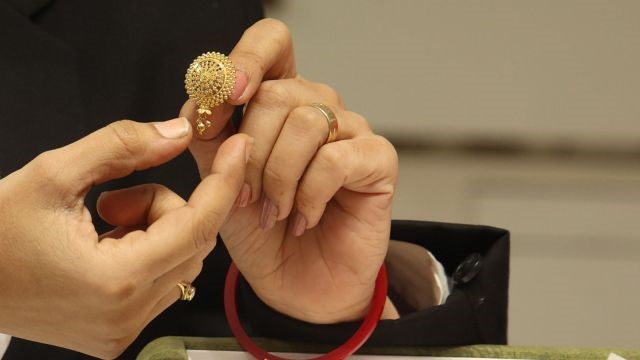
- 28 Mar 2025
In News:
The Government of India discontinued the Medium-Term and Long-Term Government Deposits (MLTGD) under the Gold Monetisation Scheme (GMS) with effect from March 26, 2025. Earlier, the Sovereign Gold Bond (SGB) scheme was also discontinued.
What is the Gold Monetisation Scheme (GMS)?
- Launched: 15th September 2015 (improved version of earlier Gold Deposit Scheme and Gold Metal Loan Scheme).
- Objective:
- Mobilize idle gold held by households and institutions.
- Bring privately held gold into the formal economy.
- Reduce the country's dependence on gold imports.
- Help lower the Current Account Deficit (CAD).
- Eligibility: Individuals, institutions, and government entities could deposit their idle gold in banks.
- Redemption:
- Gold is not returned in the same form (e.g., jewellery).
- Maturity proceeds are redeemed in the form of cash, gold bars, or coins (depending on the type of deposit).
Types of Deposits under GMS (Before Discontinuation of MLTGD):
- Short-Term Bank Deposit (STBD):
- Tenure: 1–3 years
- Interest Rate: Variable; decided by banks
- Redemption: Gold or cash
- Use: Lending by banks for domestic needs
- Medium-Term Government Deposit (MTGD):
- Tenure: 5–7 years
- Interest Rate: 2.25%; decided by Govt. in consultation with RBI
- Redemption: Cash only
- Use: Government and RBI reserves
- Long-Term Government Deposit (LTGD):
- Tenure: 12–15 years
- Interest Rate: 2.5%; decided by Govt. in consultation with RBI
- Redemption: Cash only
- Use: Monetary policy operations and reserves
Note: As of 2025, only the Short-Term Bank Deposit remains operational.
Sovereign Gold Bond (SGB) Scheme – Overview:
- Launched: 2015
- Objective:
- Reduce demand for physical gold.
- Promote investment in financial gold instruments.
- Channel household savings into productive financial assets.
- Key Features:
- Issued in denominations of 5g, 10g, 50g, and 100g.
- Tenure: 8 years (with exit option after 5 years).
- Interest Rate: 2.5% per annum (paid semi-annually).
- Capital gains tax exemption on maturity.
- Backed by the Government of India.
- Status: Discontinued as of 2025, alongside MLTGD and LTGD under GMS.
Other Gold-Related Initiative:
- Indian Gold Coin Scheme (2015):
- First-ever national gold coin with the Ashoka Chakra emblem.
- Launched alongside GMS and SGB to promote domestically branded gold and reduce reliance on imported gold bars/coins.
IEA Global Energy Review 2025

- 28 Mar 2025
In News:
The world's energy demand grew at 2.2% in 2024, a pace described as "faster than average" by the International Energy Agency (IEA) in its Global Energy Review.
Key Highlights:
Global Energy Demand
- Global energy demand grew by 2.2% in 2024, faster than the average of the past decade.
- Emerging and developing economies accounted for over 80% of the increase, with Asia leading the growth.
- Electricity demand rose 4.3%, nearly double the past decade's average.
Rise of Renewables
- Renewables were the fastest-growing energy source, contributing 38% of global energy growth.
- A record 700 GW of renewable power capacity was added globally in 2024 (22nd consecutive annual record).
- Low-emission sources (renewables + nuclear) accounted for 80% of the increase in electricity generation.
Key Country Contributions:
- China added:340 GW solar and 80 GW wind (≈ two-thirds of global additions).
- India added:30 GW solar, triple the previous year's addition.
Global Renewable Generation (2024):
- Solar: +480 TWh
- Wind: +180 TWh
- Hydropower: +190 TWh (mainly due to favorable weather, not capacity increase)
Coal Trends:
- Coal demand rose 1%, reaching a record high in 2024.
- China derives 60% of its electricity from coal; India, about 75%.
- Coal’s global electricity share dropped to 35% – the lowest since the IEA's inception in 1974.
- The seaborne coal market is shrinking as top consumers are also top producers with domestic-use policies.
Natural Gas Outlook
- Natural gas demand rose 2.7%, hitting a record 115 billion cubic metres in 2024.
- Driven by:
- China's adoption of LNG trucks
- Heatwaves increasing power demand
- However, demand fell in late 2024 due to rising LNG spot prices, indicating price sensitivity in Asia.
Crude Oil Demand Slows
- Oil demand grew just 0.8%, mainly from the petrochemical sector.
- Transport-related oil use declined due to:
- Growth in electric vehicles (EVs) (especially in China)
- Expansion of LNG trucks and high-speed rail networks
About the International Energy Agency (IEA)
- Founded: 1974 (post-1973 oil crisis) by OECD nations.
- HQ: Paris, France.
- Members: 31 countries (only OECD nations can be full members); India is an association country.
- Mandate: Energy security, sustainability, and global cooperation.
- Key Reports: World Energy Outlook, India Energy Outlook, World Energy Investment Report, Global Energy Review.
Abolition of Equalisation Levy on Online Advertisements
- 26 Mar 2025
In News:
The Indian government has proposed to abolish the Equalisation Levy (digital tax) on online advertisements, effective April 1, 2025. This move is set to benefit digital advertisers on platforms like Google, Meta (formerly Facebook), and X (formerly Twitter), reducing their tax burden.
Overview of Equalisation Levy
- Introduction:
- The Equalisation Levy was introduced by the Finance Act of 2016. Its primary objective was to tax foreign digital service providers (such as Google, Meta, etc.) for income generated from digital transactions in India, ensuring these businesses contribute fairly to India’s tax system, despite having no physical presence.
- Coverage:
- Initially, the levy applied to online advertising services, imposing a 6% tax on payments made to non-resident providers. This was later expanded in 2020 to include e-commerce transactions, imposing a 2% levy on revenues from e-commerce operations. The e-commerce levy was abolished in August 2024.
- Conditions: The levy is applicable if:
- The payment is made to a non-resident service provider.
- The annual payment to the service provider exceeds Rs. 1 lakh in a financial year.
- Exclusions:
- If the non-resident service provider has a permanent office in India or if the income qualifies as royalties or technical services fees, it is not subject to the levy.
- Transactions under Rs. 1 lakh or involving exempt income under Section 10(50) are not taxed under the Equalisation Levy.
Key Reasons for Abolishing the Equalisation Levy
- Improved Tax Relations with the US: The levy has been a point of contention, particularly with the US, which threatened retaliatory tariffs. The move to abolish the 6% levy is seen as a step to improve trade relations and avoid escalation of trade disputes.
- Simplification of Tax Laws: Experts believe that removing the levy aligns with India’s broader efforts to simplify and streamline its tax legislation, making it easier for digital service providers to operate within the country.
- Addressing Global Concerns: The proposal to remove the levy is also in response to concerns raised by partner nations, like the US, about the unilateral nature of the tax. This step aims to reduce friction and maintain smoother diplomatic and trade ties.
Implications of the Abolition of the Equalisation Levy
- Reduced Costs for Advertisers: The removal of the 6% tax will lower the financial burden on advertisers in India who use platforms like Google, Meta, and X. This is expected to encourage more investment in digital advertising and benefit the broader digital economy.
- Enhanced Competitiveness: By removing the levy, India aims to create a more level playing field for both domestic and foreign companies involved in digital advertising, fostering fairer competition.
- Impact on International Relations: The decision could help defuse trade tensions, particularly with the US, and might avoid reciprocal tariffs that could affect Indian companies operating internationally.
- Tax Revenue Implications: While the abolition may result in short-term revenue loss from the digital services sector, it is anticipated that the long-term benefits from increased digital advertising spending and improved international relations will outweigh the initial loss.
Future Outlook
- Monitoring and Adjustments: While the government has moved to abolish the Equalisation Levy, experts suggest that further monitoring and analysis of digital taxation might be required, especially considering global trends and the evolving digital economy. The impact of this abolition on India’s digital tax landscape will need to be observed closely.
- Diplomatic Measures: Along with the abolition of the levy, the government continues to pursue diplomatic efforts to ensure fair trade practices and avoid potential retaliatory measures by foreign nations.
India to Host FATF Private Sector Collaborative Forum 2025 in Mumbai
- 25 Mar 2025
In News:
- India will host the FATF Private Sector Collaborative Forum (PSCF) 2025 in Mumbai from March 25-27, 2025. This event will focus on global priorities such as payment transparency, financial inclusion, and the digital transformation of financial systems.
- The forum will be a critical platform for addressing the evolving challenges of money laundering and terrorist financing through the use of digital tools and enhanced transparency.
Key Agenda
The discussions at PSCF 2025 will revolve around tackling contemporary financial crimes, including those linked to cryptocurrency-related laundering. Key topics will include:
- Strengthening Anti-Money Laundering (AML) and Counter-Terrorist Financing (CFT) compliance mechanisms.
- Promoting financial inclusion through risk-based supervision of regulated entities.
- Enhancing transparency in beneficial ownership and using digital tools to bolster AML/CFT measures.
- Addressing emerging risks, including terrorist financing and proliferation financing.
The forum will also assess how the private sector can enhance information-sharing practices to address these threats more effectively.
About FATF
The Financial Action Task Force (FATF), established in 1989 during the G7 Summit in Paris, is an intergovernmental body that sets international standards to combat money laundering and terrorist financing. The FATF’s mission is to develop policies, establish guidelines, and promote global cooperation to mitigate the financial risks associated with these crimes.
- Headquarters: Paris, France.
- Membership: FATF has 39 member countries, including major economies such as the United States, India, China, Saudi Arabia, Germany, and theEuropean Union.
- Regional Bodies: In addition to its direct members, FATF affiliates over 180 countries through FATF-Style Regional Bodies (FSRBs) like the Asia Pacific Group (APG) and the Eurasian Group.
- FATF Recommendations are recognized as the global standard for AML/CFT measures.
FATF evaluates countries' efforts to comply with these standards, providing assessments and promoting policy changes to counteract financial crimes. Countries that fail to comply may be placed on the grey list or blacklist.
FATF Grey and Black Lists
Countries that fail to meet FATF standards are placed on one of two lists:
- Black List: Countries known as Non-Cooperative Countries or Territories (NCCTs), which directly support terrorist financing and money laundering. North Korea, Iran, and Myanmar are currently on this list.
- Grey List: Countries considered at risk of supporting financial crimes but not yet fully engaging in those activities. Being on the grey list serves as a warning, with the risk of moving to the blacklist if improvements are not made.
Countries on the blacklist face severe international sanctions, including restrictions on financial aid and economic interactions from organizations like the IMF, World Bank, and Asian Development Bank.
India's Role in FATF
India became a member of FATF in 2010 and has made significant strides in improving its AML/CFT frameworks. In 2024, FATF acknowledged India’s efforts towards anti-money laundering and countering terrorist financing, placing it in the "regular follow-up" category for continued compliance.
The upcoming PSCF 2025 will be a milestone in India’s ongoing commitment to global financial security, as it seeks to enhance international collaboration and discuss innovative ways to address evolving threats in financial crimes.
RBI’s 6th Remittance Survey (2023–24)
- 24 Mar 2025
In News:
India remains the world’s top recipient of remittances, with total inward remittances doubling from USD 55.6 billion in 2010–11 to USD 118.7 billion in 2023–24, as per the Reserve Bank of India’s Sixth Round of the Remittances Survey.
Shift in Sources of Remittances
- A significant trend in 2023–24 is the growing dominance of Advanced Economies (AEs) over traditional Gulf sources.
- The United States emerged as the largest contributor with a 27.7% share, followed by the United Arab Emirates (UAE) at 19.2%.
- AEs including the UK, Singapore, Canada, and Australia now account for over 50% of India’s total remittance inflows.
- The UK’s share increased notably from 3.4% (2016–17) to 10.8% (2023–24).
- Australia contributed 2.3%, reflecting rising skilled migration.
- The Gulf Cooperation Council (GCC) countries (UAE, Saudi Arabia, Kuwait, Qatar, Oman, Bahrain) collectively contributed 38%, a decline from 47% in 2016–17.
Reasons for the Shift
- Robust Job Markets in AEs: High-paying jobs for skilled Indian migrants in the US, UK, Canada, and Australia.
- UK-India Migration and Mobility Partnership (MMP) tripled Indian migration to the UK from 76,000 in 2020 to 250,000 in 2023.
- Favorable immigration policies in Canada (Express Entry) and Australia boosted skilled migration.
- Declining Opportunities in GCC:
- Post-pandemic return of Indian migrants and reduced demand for low-skilled labor due to automation and economic diversification.
- Nationalization policies (e.g., Nitaqat in Saudi Arabia, Emiratization in UAE) favor local employment.
- Changing Migration Patterns:
- Southern states (Kerala, Tamil Nadu, Andhra Pradesh, Telangana) now prefer AEs due to higher education levels.
- Northern states (Uttar Pradesh, Bihar, Rajasthan) still send migrants to GCC, but limited by lower skill levels.
- Rise in Education-Driven Migration:
- Many Indian students pursue higher education abroad and stay back for employment.
- Indian students abroad: Canada (32%), US (25.3%), UK (13.9%), Australia (9.2%).
State-Wise Remittance Distribution (2023–24)
- Maharashtra: 20.5%
- Kerala: 19.7%
- Tamil Nadu: 10.4%
- Telangana: 8.1%
- Karnataka: 7.7%
- Notable increases observed in Punjab and Haryana.
Mode of Transfers
- The Rupee Drawing Arrangement (RDA) remains the dominant channel.
- Other channels include direct Vostro transfers and fintech platforms.
- Digital transactions account for 73.5% of remittance flows.
Samarth Incubation Programme
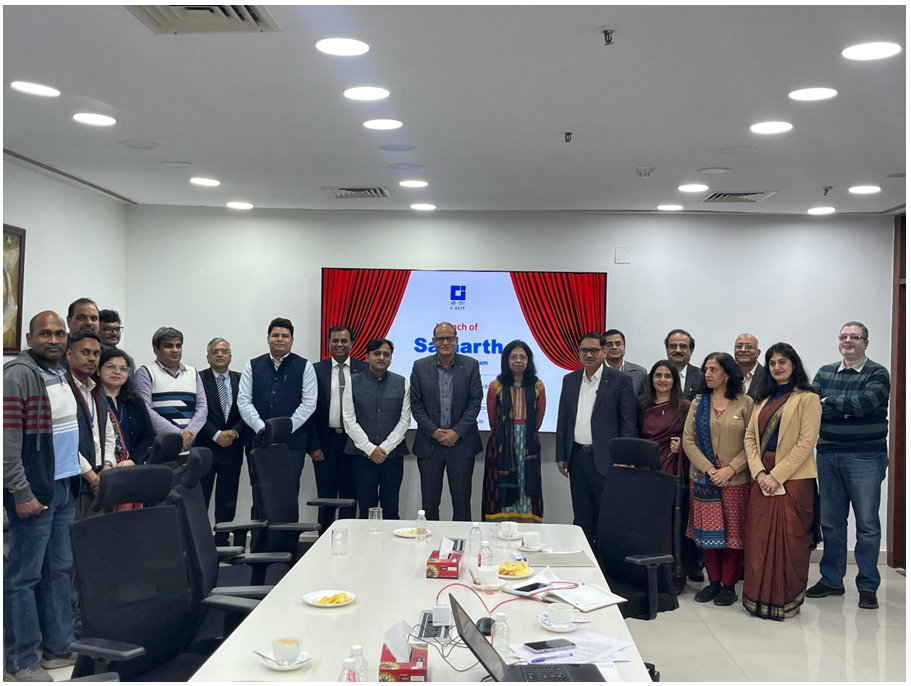
- 22 Mar 2025
In News:
The ‘Samarth’ Incubation Programme is a strategic initiative launched by the Centre for Development of Telematics (C-DOT) to foster startup-driven innovation in India’s rapidly evolving telecommunications and IT sectors. This programme aligns with the goals of Atmanirbhar Bharat and Digital India, aiming to build indigenous capabilities in cutting-edge technologies.
Key Highlights:
- Launched By:Centre for Development of Telematics (C-DOT), an autonomous R&D centre under the Department of Telecommunications (DoT), Government of India.
- Implementation Partner:Software Technology Parks of India (STPI), under the Ministry of Electronics and Information Technology (MeitY), which promotes IT/ITES innovation, startups, and R&D.
- Launch Date:19th March 2025.
- Objective:To support DPIIT-recognized startups developing next-generation technologies in the fields of:
- Telecom Software
- Cybersecurity
- 5G/6G Communications
- Artificial Intelligence (AI)
- Internet of Things (IoT)
- Quantum Technologies
- Program Structure:
- Two cohorts, each of six months duration.
- 18 startups per cohort (Total of 36 startups).
- Hybrid mode of delivery (virtual + physical support).
Support and Benefits Provided
- Financial Assistance:Grant of up to ?5 lakh per selected startup.
- Infrastructure Access:
- Fully furnished office space for 6 months at the C-DOT campus.
- Access to C-DOT’s lab and testing facilities.
- Mentorship & Networking:
- Guidance from C-DOT technical experts and industry leaders.
- Connection with investors, stakeholders, and potential collaborators.
- Future Opportunities:Eligible startups may be offered continued collaboration under the C-DOT Collaborative Research Program, based on their performance and innovation outcomes.
Selection Process
- Eligibility:Open to startups recognized by the Department for Promotion of Industry and Internal Trade (DPIIT).
- Screening:Applications are evaluated through a structured selection process:
- Screening of applications based on innovation potential.
- Pitch presentation before an expert selection committee.
- Final cohort selection.
Significance for India’s Tech Ecosystem
- Promotes self-reliance in telecom and IT hardware/software innovation.
- Encourages the commercialization of research and ideas in emerging technology domains.
- Creates a supportive ecosystem for startups to thrive through structured mentorship and funding.
- Contributes to job creation and skill development in advanced digital sectors.
SagarmalaProgramme

- 21 Mar 2025
In News:
The SagarmalaProgramme, launched by the Ministry of Ports, Shipping & Waterways (MoPSW) in 2015, aims to revolutionize India’s maritime sector by focusing on port-led development, logistics optimization, and coastal economic growth. With a 7,500 km coastline and strategic positioning on global trade routes, India is set to leverage its maritime potential for sustainable economic development.
Key Components of the SagarmalaProgramme
- Port Modernization & New Port Development: Upgrading existing ports and constructing new ones to enhance operational capacity, reduce bottlenecks, and improve efficiency.
- Port Connectivity Enhancement: Fostering seamless multi-modal logistics, including inland waterways and coastal shipping, to optimize time and cost of cargo transportation.
- Port-Led Industrialization: Establishing industrial clusters near ports, boosting economic growth while minimizing logistics costs.
- Coastal Community Development: Focusing on the sustainable development of coastal communities, through skill development, livelihood generation, and fisheries enhancement.
- Coastal Shipping & Inland Waterways Transport: Promoting eco-friendly cargo transportation via coastal and inland waterways to alleviate road and rail congestion.
Key Achievements and Outcomes
- Project Implementation: 839 projects worth ?5.79 lakh crore have been identified, with 272 projects already completed, amounting to ?1.41 lakh crore in investments.
- Growth in Coastal Shipping: Coastal shipping has surged by 118% over the last decade, significantly reducing logistics costs and emissions.
- Increased Inland Waterway Cargo: A 700% increase in inland waterway cargo, reducing congestion on roadways and railways.
- Improved Global Maritime Standing: Nine Indian ports now rank among the world’s top 100, with Vizag among the top 20 container ports globally.
Sagarmala 2.0 and Strategic Initiatives
- Sagarmala 2.0, launched with a ?40,000 crore budgetary support, aims to position India among the top five shipbuilding nations by 2047.
- It introduces a focus on shipbuilding, repair, recycling, and further port modernization, which will help India become a global maritime hub.
- The initiative targets a shipbuilding capacity of 4 million GRT and an annual port handling capacity of 10 billion metric tons.
- Additionally, the Sagarmala Startup Innovation Initiative (S2I2), launched in March 2025, seeks to promote innovation, research, and startups in the maritime sector.
- The program emphasizes green shipping, smart ports, and sustainable coastal development, providing funding, mentorship, and industry partnerships to boost technological advancement in the sector.
Funding and Project Implementation
- The SagarmalaProgramme follows a strategic and stakeholder-driven approach, involving central ministries, state governments, major ports, and other agencies.
- The funding structure utilizes a combination of public-private partnerships (PPP), internal resources of MoPSW agencies, and grant-in-aid for high-social-impact projects.
- The establishment of the Sagarmala Development Company Limited (SDCL) facilitates equity participation in key projects.
Future Outlook and Alignment with Vision 2047
Sagarmala 2.0 and its strategic initiatives are aligned with the Maritime Amrit Kaal Vision 2047 (MAKV), which aims to make India a leader in global maritime affairs. By enhancing port efficiency, expanding shipbuilding capacity, and fostering innovation, these initiatives will support India's vision of a Viksit Bharat (developed India) and Atmanirbhar Bharat (self-reliant India) by 2047.
Revised Rashtriya Gokul Mission (RGM)
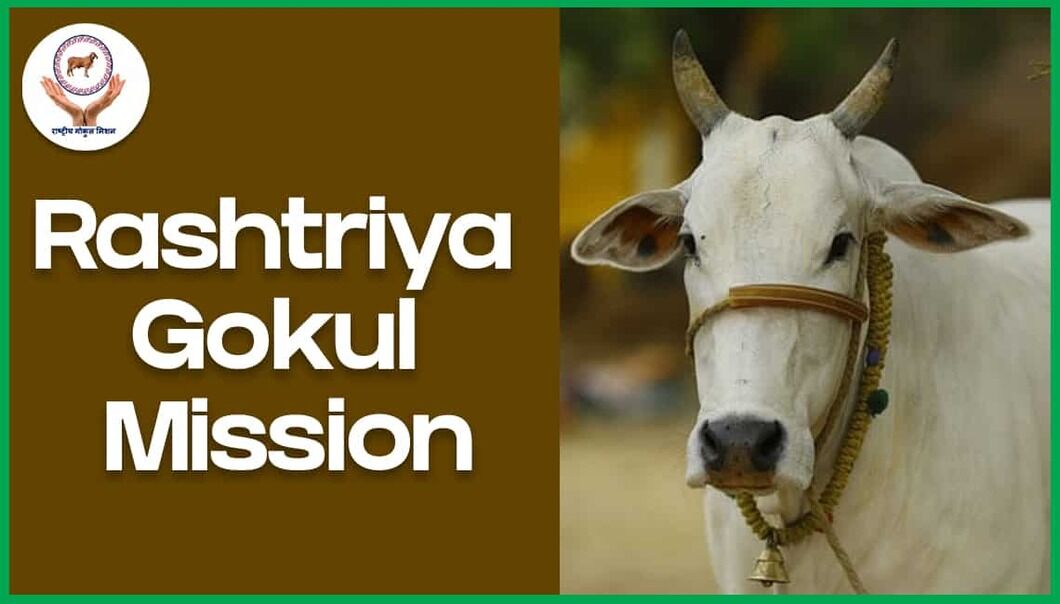
- 21 Mar 2025
In News:
The Union Cabinet has approved the implementation of the Revised Rashtriya Gokul Mission (RGM) for 2024–25 and 2025–26, with an enhanced financial outlay.
Background:
- Launched: December 2014
- Type: Central Sector Scheme under the Development Programmes
- Nodal Ministry: Ministry of Fisheries, Animal Husbandry & Dairying
- Primary Aim: Conservation and development of indigenous bovine breeds and enhancement of milk productivity through advanced breeding technologies.
Revised Allocation:
- Total Outlay: ?3,400 crore
- Additional Allocation: ?1,000 crore for 2024–25 and 2025–26
- Finance Commission Cycle: 15th (2021–22 to 2025–26)
Objectives of Revised RGM:
- Enhance productivity of bovines and sustainable milk production.
- Promote scientific breeding using high genetic merit (HGM) bulls.
- Expand Artificial Insemination (AI) coverage across India.
- Conserve indigenous cattle and buffalo breeds through genomic and reproductive technologies.
Key New Initiatives (2024–26):
- Heifer Rearing Centres:
- One-time assistance of 35% of capital cost.
- To establish 30 housing facilities with a total of 15,000 heifers.
- Interest Subvention Scheme:
- 3% interest subsidy on loans for purchasing HGM IVF heifers.
- Applicable to farmers borrowing from milk unions, banks, or financial institutions.
Major Achievements (as of 2023–24):
- Milk Production Increase: 63.55% rise in 10 years.
- Per Capita Milk Availability:
- 2013–14: 307 grams/day
- 2023–24: 471 grams/day
- Productivity Increase: 26.34% over the last decade.
Nationwide Artificial Insemination Programme (NAIP):
- Coverage: 605 districts with <50% baseline AI coverage.
- Animals Covered: 8.39 crore
- Farmers Benefitted: 5.21 crore
- Service: Free AI at farmer's doorstep.
Technological Interventions:
- IVF Labs: 22 labs set up across States and Universities.
- HGM Calves Born: 2,541 through IVF.
- Indigenous Technologies Developed:
- Gau Chip &Mahish Chip: Genomic chips by NDDB & ICAR-NBAGR.
- Gau Sort: Indian-developed sex-sorted semen technology by NDDB.
Significance:
- Strengthens Atmanirbhar Bharat in livestock genomics and AI.
- Enhances livelihoods of 8.5 crore dairy farmers.
- Preserves India’s indigenous bovine biodiversity.
- Promotes scientific cattle rearing and milk self-sufficiency.
BHIM-UPI Incentive Scheme 2024–25
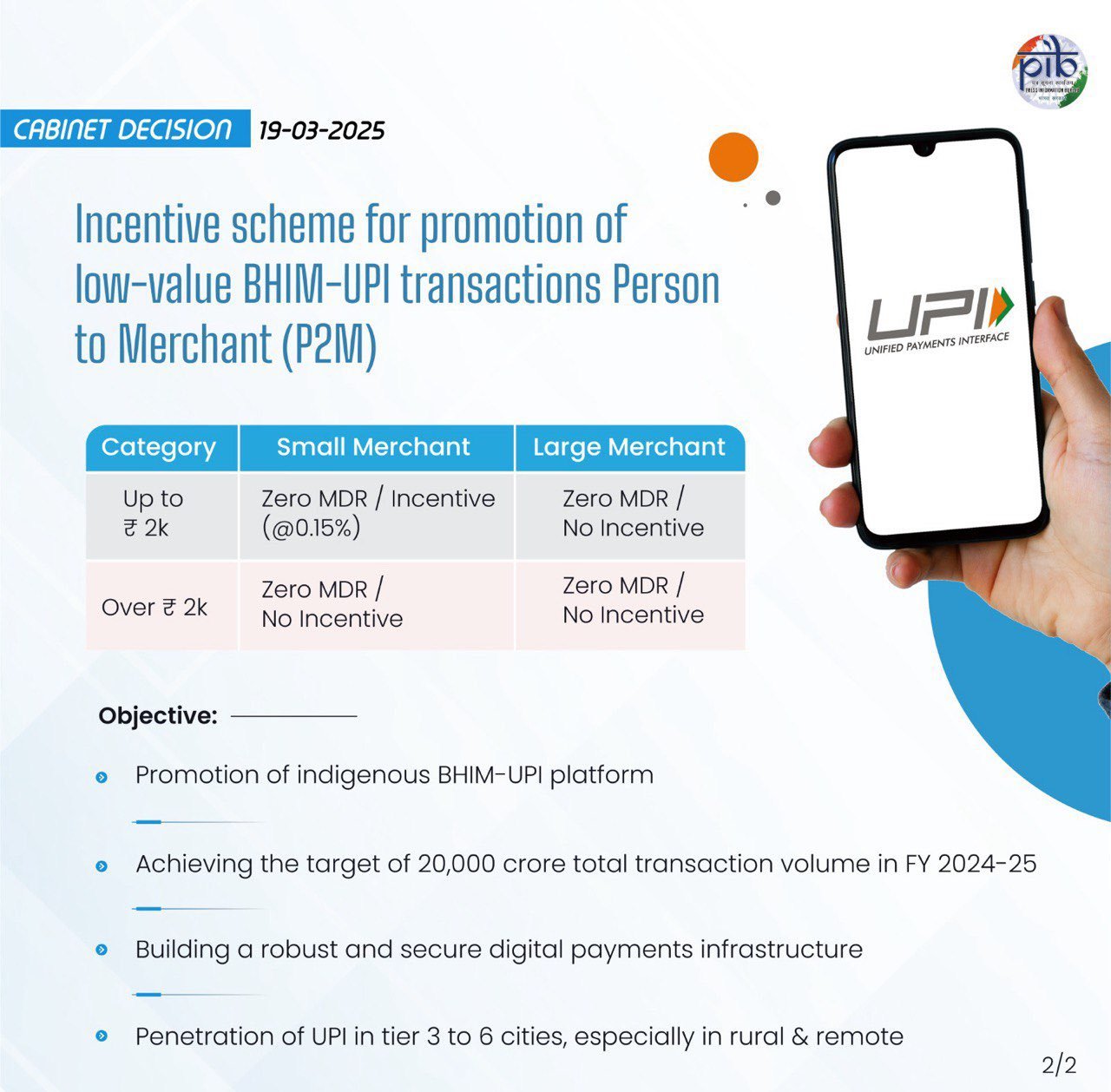
- 20 Mar 2025
In News:
The Union Cabinet, chaired by the Prime Minister, approved the Incentive Scheme for Promotion of Low-Value BHIM-UPI Transactions (Person-to-Merchant or P2M) for FY 2024–25 to encourage digital payment adoption, particularly among small merchants and in rural and remote areas.
Key Features of the Scheme:
- Duration: 1 April 2024 to 31 March 2025
- Outlay: ?1,500 crore
- Coverage: UPI (P2M) transactions up to ?2,000 for small merchants only
- Incentive Rate:0.15% per transaction value
- MDR (Merchant Discount Rate):
- Zero MDR for all UPI P2M transactions
- Incentive applicable only for small merchants on transactions ≤ ?2,000
Incentive Disbursement Conditions:
- 80% of claim amount: Paid upfront each quarter
- Remaining 20%: Conditional on:
- 10%: If acquiring bank’s technical decline < 0.75%
- 10%: If acquiring bank’s system uptime > 99.5%
Objective:
- Promote adoption of indigenous BHIM-UPI platform
- Achieve ?20,000 crore P2M transaction volume in FY 2024–25
- Expand UPI in Tier 3 to Tier 6 cities, especially rural areas
- Promote inclusive tools: UPI 123PAY (for feature phones), UPI Lite/LiteX (offline payments)
Expected Benefits:
- Cost-free UPI usage for small merchants (encouraging cashless transactions)
- Enhanced digital footprint helps merchants access formal credit
- Ensures round-the-clock availability of payment systems
- Strengthens financial inclusion and less-cash economy
- Balanced fiscal support from the government while encouraging systemic efficiency
Digital Payments Background:
- Since January 2020, MDR has been made zero for BHIM-UPI and RuPay Debit Cards via amendments to:
- Payments and Settlement Systems Act, 2007 (Section 10A)
- Income-tax Act, 1961 (Section 269SU)
- Previous incentive outlays (in ? crore):
Financial Year RuPay Debit Card BHIM-UPI Total
2021–22 432 957 1,389
2022–23 408 1,802 2,210
2023–24 363 3,268 3,631
What is BHIM-UPI?
- UPI: Real-time payment system developed by NPCI; allows instant money transfer between bank accounts via mobile apps.
- BHIM-UPI: Government-promoted UPI app launched in 2016.
- NIPL, NPCI’s international arm, is expanding UPI globally. UPI is accepted in Singapore, UAE, France, Sri Lanka, Nepal, and more.
Huajiang Grand Canyon Bridge
- 19 Mar 2025
In News:
China is set to unveil the Huajiang Grand Canyon Bridge, a record-breaking steel truss suspension bridge that will become the world’s highest bridge. The bridge, located in Zhenfeng County, Guizhou Province, is part of the Shantou–Kunming Expressway, connecting the coastal city of Shantou with Kunming, the capital of Yunnan Province.
Key Facts about the Bridge:
- Height: The bridge will stand 625 meters (2,051 feet) above the Beipan River, 200 meters taller than the Eiffel Tower (at 330 meters).
- Length: Spanning 2,890 meters (9,482 feet) in total.
- Construction Period: Started on January 18, 2022, and took 3.5 years to complete.
- Cost: Estimated at £216 million (?2,200 crore).
- Travel Time Reduction: It will reduce the travel time across the canyon from 60 minutes to just 2 minutes.
Design and Engineering:
- Steel Framework: The steel trusses of the bridge weigh approximately 22,000 tons, about three times the weight of the Eiffel Tower.
- Engineering Feat: The bridge is a significant engineering achievement, showcasing China’s capabilities in bridge construction. The structure’s design and dramatic location are expected to attract tourists, bolstering the region’s economy.
Strategic and Economic Impact:
- The bridge is a major transportation infrastructure project aimed at improving connectivity in the remote Guizhou Province, a mountainous region that already hosts many of the world’s tallest bridges.
- Tourism and Regional Growth: Besides serving as a crucial transportation link, the bridge is expected to boost tourism and contribute to economic development in the region.
China’s Engineering Milestones:
- The Huajiang Grand Canyon Bridge surpasses the Millau Viaduct in France (343 meters), which previously held the record for the tallest bridge.
- China has been a leader in the construction of the world’s tallest bridges, further solidified by this record-breaking structure.
Vehicle-to-Grid (V2G) Technology
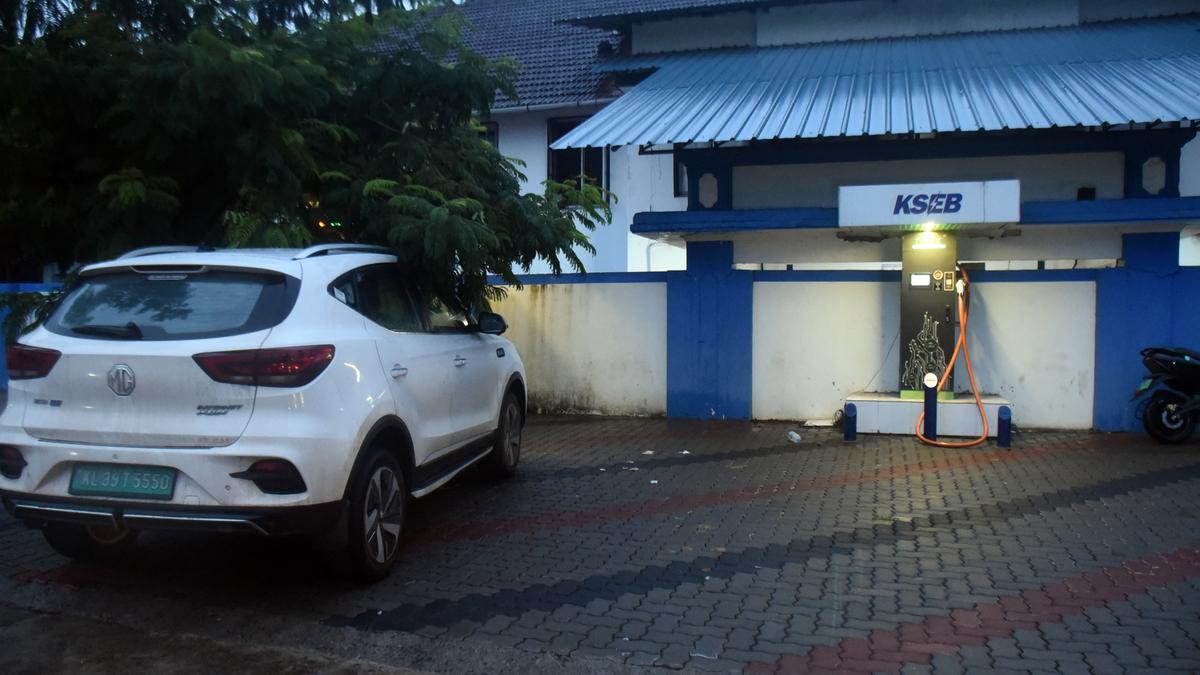
- 18 Mar 2025
In News:
Vehicle-to-Grid (V2G) is an innovative energy solution that allows Electric Vehicles (EVs) to not only draw power from the grid (charging) but also send excess stored electricity back to the grid (discharging) when not in use. This bi-directional energy flow creates a unique opportunity to support grid stability, especially when renewable energy (RE) sources like solar and wind are intermittent. When connected via bi-directional chargers, EV batteries can act as decentralized storage systems, offering a potential solution to address the challenges posed by renewable energy integration and peak demand periods.
Global Adoption and Benefits of V2G
V2G technology has gained significant traction in developed EV markets like Europe and the U.S., where it is seen as a cost-effective solution for distributed energy storage.
- In the U.K. and the Netherlands, EV owners are compensated for supplying excess energy to the grid, particularly during peak hours.
- In California, EVs are integrated into the ancillary services market, helping improve grid reliability.
- Additionally, V2G technologies have shown promise in offering emergency power during natural disasters and grid failures, proving to be an essential tool for enhancing grid resilience.
V2G in India: Current Status and Challenges
In India, V2G technology is still in its nascent stages. While there is a growing adoption of EVs and charging infrastructure, integrating these vehicles into the national grid remains a challenge. The electricity market in India is not yet fully equipped to support decentralized energy solutions like V2G. The current grid structure, characterized by variable RE generation and mismatches in supply and demand, requires significant regulatory and structural changes for successful V2G integration.
The Kerala State Electricity Board (KSEB) and the Indian Institute of Technology Bombay (IIT Bombay) have launched a pilot V2G project to assess the feasibility of this technology in the state. This project will explore how EVs can help support grid demand during peak hours, particularly when solar energy generation is low, as Kerala experiences both rapid EV adoption and increasing rooftop solar installations.
Key Features of V2G
- Charging (G2V): When an EV is charged, it functions as a load on the grid. This process can be managed through Time of Use (ToU) electricity tariffs, which incentivize charging during off-peak hours to reduce grid stress.
- Discharging (V2G): When EV batteries discharge power back to the grid, they act as distributed energy resources. This is especially valuable during periods of high demand or when renewable energy generation is insufficient.
- Decentralized Energy Storage: V2G enables EVs to serve as decentralized storage units, reducing the dependency on centralized storage systems and making the grid more resilient and efficient.
Advantages for the Indian Power Sector
- Grid Stability: V2G can help modulate the power flow in the grid by reducing the impact of variable RE generation. It also helps to stabilize grid operations during peak demand periods.
- Support for Renewable Energy: By enabling EVs to store excess solar energy during the day, V2G can assist in using this stored power during nighttime or when renewable energy generation is low, contributing to true decarbonization.
- Smart Charging: Integrating V2G with smart charging systems can help optimize energy use, ensuring that EVs charge during periods of high renewable energy generation and discharge during peak demand.
Potential for Wider Adoption
The Kerala pilot project is expected to pave the way for broader V2G implementation across India. The project aims to test how EVs can provide support during peak demand, particularly when solar power generation is unavailable. The integration of smart charging solutions and V2G will help mitigate concerns about increasing electricity demand due to the growing number of EVs. Additionally, incentives for EV owners to participate in V2G systems can lead to cost-effective solutions for grid management.
The Indian government, through the Central Electricity Authority (CEA), has already initiated steps to frame guidelines for reverse charging (V2G). With the increasing adoption of EVs and solar power, V2G has the potential to become a cornerstone of India's energy future.
Hyperloop Project

- 18 Mar 2025
In News:
India is moving closer to realizing ultra-high-speed transportation with the development of indigenous Hyperloop technology. The Ministry of Railways, has announced that Integral Coach Factory (ICF), Chennai will develop the electronics component for the country’s Hyperloop initiative. This decision follows promising test results at IIT Madras, which hosts the longest Hyperloop testing facility in Asia.
What is Hyperloop?
Hyperloop is a next-generation, ultra-fast transportation system that combines magnetic levitation (maglev) and near-vacuum tubes to enable passenger pods to travel at speeds up to 1,220 km/h. It was first proposed by Elon Musk in 2013 through the Hyperloop Alpha white paper and has since evolved into a global open-source research initiative.
Working Mechanism:
- Low-pressure tubes drastically reduce air resistance.
- Magnetic levitation allows pods to float without touching surfaces, minimizing friction.
- Electromagnetic propulsion moves pods forward efficiently.
Key Features:
- Highly energy-efficient and sustainable, with low emissions.
- Can surpass air travel speeds on shorter routes.
- Reduces road congestion, travel time, and noise pollution.
India’s Hyperloop Developments:
- Institutions Involved:
- IIT Madras – Developed the 410-meter test facility.
- Avishkar Hyperloop Team – Leading design and innovation.
- ICF Chennai – To develop electronics and technical components.
- Government Support:
- The Railway Ministry has provided financial and technical support.
- The testing system uses fully indigenous technology.
Challenges Ahead:
Despite its promise, Hyperloop faces significant hurdles:
- High infrastructure costs.
- Technical challenges in maintaining vacuum conditions.
- Safety concerns due to the high speed and pressure system.
Sarthi and Pravaah Initiatives
- 18 Mar 2025
In News:
The Reserve Bank of India (RBI) was awarded the Digital Transformation Award 2025 by Central Banking (UK) for its in-house digital innovations — Sarthi and Pravaah — marking a significant step in the digitization of internal and external regulatory processes.
Sarthi System (Launched January 2023)
- Objective: Digitize RBI’s internal workflows and reduce reliance on paper-based systems.
- Key Features:
- Secure document storage and sharing for over 13,500 employees across 40+ locations.
- Enhanced record management and data analysis through dashboards and reports.
- Automation of internal tasks such as approvals, tracking, and documentation.
- Support Infrastructure:
- SarthiPathshala: Online and in-person training module for staff.
- SarthiMitras: Designated personnel in each office to provide user assistance.
Pravaah System (Launched May 2024)
- Objective: Facilitate external submission of regulatory applications digitally.
- Key Features:
- Integration with Sarthi for streamlined processing.
- Supports 70+ regulatory application types across 9 departments.
- Enhanced efficiency, transparency, and real-time tracking.
- Centralized cybersecurity and monitoring framework.
- Impact:
- 80% increase in monthly application submissions.
- Major reduction in delays caused by manual and paper-based procedures.
Significance
- Reflects India’s push toward governance digitization and institutional efficiency.
- Demonstrates how indigenous technology solutions can modernize financial regulation and public administration.
India's Foreign Exchange Reserves witness sharpest rise in two years

- 16 Mar 2025
In News:
In a notable economic development, India’s foreign exchange (forex) reserves rose sharply by $15.267 billion to reach $653.966 billion during the week ending March 7, 2025. This marks the largest weekly increase in over two years, as per data released by the Reserve Bank of India (RBI).
Key Reason for the Surge
- The jump is attributed primarily to a $10 billion forex swap conducted by the RBI on February 28, 2025, where the central bank purchased US dollars in exchange for rupees.
- The objective was to inject liquidity into the domestic financial system while strengthening forex reserves.
Component-wise Breakdown
- Foreign Currency Assets (FCA): Increased by $13.993 billion to $557.282 billion.
(FCAs are held in major currencies like USD, Euro, Pound, Yen and are affected by their exchange rate fluctuations.) - Gold Reserves: Decreased by $1.053 billion to $74.325 billion.
- Special Drawing Rights (SDRs): Rose by $212 million to $18.21 billion.
- Reserve Tranche Position (RTP) with IMF: Declined by $69 million to $4.148 billion.
Understanding Forex Reserves
- Foreign Exchange Reserves are external assets held by a country's central bank, used to support its monetary and exchange rate policies.
- These reserves include:
- Foreign Currency Assets (FCA)
- Gold
- SDRs (with the International Monetary Fund)
- RTP (Reserve capital with the IMF)
Purpose and Importance
- Ensure external stability and maintain confidence in the currency.
- Help manage the exchange rate and balance of payments (BoP).
- Act as a buffer against external shocks, such as volatile capital flows or currency crises.
- Strengthen India’s international creditworthiness.
Global Context
- RBI is the custodian of India’s forex reserves.
- China holds the largest forex reserves globally.
Mission Amrit Sarovar
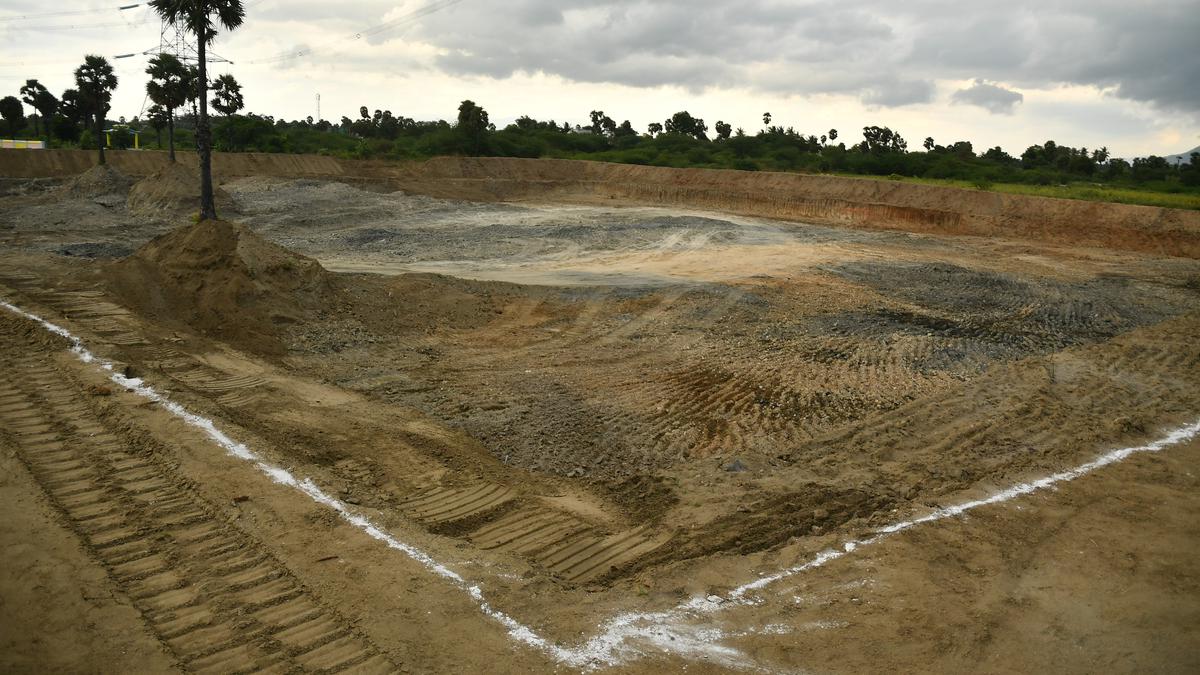
- 14 Mar 2025
In News:
Launched in April 2022, Mission Amrit Sarovar is a Government of India initiative aimed at addressing water scarcity, particularly in rural areas, by constructing or rejuvenating 75 water bodies in every district, targeting over 50,000 ponds nationwide. As of October 2024, over 68,000 ponds have been completed.
Key Features:
- Minimum Pond Size: 1 acre with a water holding capacity of ~10,000 cubic metres.
- Community Participation: Sites approved by special Gram Sabha, with a Panchayat Pratinidhi supervising development.
- Multi-Ministerial Collaboration: Involves the Ministries of Rural Development, Jal Shakti, Panchayati Raj, Culture, Environment, and others.
- Technical Support: BISAG-N (Bhaskaracharya National Institute for Space Applications and Geo-informatics) is the technical partner, offering a dedicated portal and mobile app for tracking progress.
- Whole-of-Government Approach: Ensures coordinated implementation across ministries.
Railways' Involvement (2025 Initiative):
- Under Phase II of the mission, Indian Railways is tasked with:
- Desilting existing water bodies or constructing new ponds near railway tracks.
- Using excavated soil for railway embankments, where suitable.
- Coordinating with district authorities and the Ministry of Rural Development to identify appropriate sites.
- The goal is to complete a significant number of ponds by August 15, 2025.
- Promotes climate resilience, ecological balance, and sustainable water resource management.
Ponzi Schemes in India
- 13 Mar 2025
In News:
Probe agency seizes Business Jet at Hyderabad Airport in "Ponzi Scam" Case.
What is a Ponzi Scheme?
A Ponzi scheme is a fraudulent investment operation where returns to earlier investors are paid using the capital of new investors, not from legitimate business profits. It creates an illusion of high returns with low or no risk.
- Origin: Named after Charles Ponzi, who orchestrated such a scam in the USA in 1920.
- Mechanism:
- Relies on a continuous influx of new investors.
- Uses word-of-mouth, high-return promises, and deceptive marketing.
- Collapses when new investments stop, leading to default on payouts.
Ponzi vs Pyramid Scheme
- Ponzi Scheme: Pays earlier investors from newer investors' money, without involving them in recruitment.
- Pyramid Scheme: Rewards early participants for recruiting others, creating a hierarchical structure that collapses as recruitment slows.
Recent Developments
- ED Action (2024): The Enforcement Directorate (ED) seized a business jet at Hyderabad airport in connection with a ?850 crore Ponzi scam involving a Hyderabad-based company.
- Odisha Case: The STA Crypto scheme operated as a Ponzi-cum-multi-level marketing (MLM) scam, luring people with promises of crypto earnings in return for recruiting more members.
Legal Safeguards Against Ponzi Schemes in India
- Prize Chits and Money Circulation (Banning) Act, 1978
- Bans prize chits and money circulation schemes.
- Enforced by State Governments.
- Banning of Unregulated Deposit Schemes Act, 2019
- Specifically prohibits unregulated deposit-taking schemes including Ponzi models.
- Provides a unified framework to protect depositors.
- Prevention of Money Laundering Act (PMLA), 2002: Used by ED to trace and seize proceeds of crime from Ponzi operators.
Red Flags of Ponzi Schemes
- Unusually high and consistent returns
- No clear investment strategy or revenue model
- Over-emphasis on recruitment
- Difficulty in withdrawing funds
- Lack of regulatory approval or transparency
Consequences of Participation
- Investors: Risk of complete loss of capital.
- Promoters: Face legal action, asset seizure, and imprisonment.
- General Public: Erosion of trust in financial systems.
Preventive Measures for Individuals
- Verify if the scheme is registered with SEBI, RBI, or other regulators.
- Be cautious of too-good-to-be-true returns.
- Conduct due diligence and consult financial advisors.
- Report suspicious schemes to authorities like SEBI or EOW.
U.S. Strategic Bitcoin Reserve

- 13 Mar 2025
In News:
In March 2025, U.S. President Donald Trump signed an executive order establishing a Strategic Bitcoin Reserve, positioning the United States as a frontrunner in digital asset storage and long-term crypto strategy.
What is the Strategic Bitcoin Reserve?
- A government-backed stockpile of Bitcoin and select other cryptocurrencies, managed by the U.S. Department of Treasury and Department of Commerce.
- Intended to serve as a digital financial reserve, akin to the U.S. Strategic Petroleum Reserve or gold reserves (e.g., Fort Knox).
- Aims to enhance U.S. leadership in digital currency markets, provide a hedge against inflation, and integrate digital assets into national reserve strategy.
Key Features:
Aspect Details
Establishment By executive order of President Trump, March 2025
Management U.S. Treasury & Commerce Departments
Funding Source Bitcoin and other digital assets seized in criminal and civil forfeiture
proceedings
Assets Held Bitcoin (BTC), Ethereum (ETH), XRP, Solana (SOL), Cardano (ADA)
Ownership As of 2025, U.S. government reportedly holds 200,000 BTC ($18.1 billion)
Policy No short-term sales; assets to be held long-term
Cost to Taxpayers Budget-neutral – funded through seized assets only
Audit Directive Full accounting of federal digital asset holdings mandated
Strategic Rationale:
- Limited Supply Advantage: Bitcoin’s capped supply of 21 million gives it value retention properties similar to gold.
- Inflation Hedge: Cryptocurrencies offer resistance to fiat currency inflation.
- Diversification: Adds a new asset class to U.S. strategic reserves.
- Legitimacy Boost: Government backing may encourage broader adoption of digital currencies.
Concerns & Criticisms:
- Volatility: High market risk; value of crypto assets can fluctuate rapidly.
- Speculation Risk: Critics argue buying crypto at peak prices (BTC ~$109,000) may backfire.
- Ideological Contradiction: Centralized crypto reserve contradicts the decentralized ethos of cryptocurrencies.
- Market Manipulation Potential: Large-scale government holdings could distort free market dynamics.
- Public Benefit Questioned: Critics argue early investors may benefit more than the general public.
Global Context:
- El Salvador: First nation to adopt Bitcoin as legal tender and build a crypto reserve.
- Gold Reserves Trend: Countries like India, China, Turkey, Poland have increased gold holdings—crypto reserves may reflect a similar diversification strategy.
ParvatmalaPariyojana

- 12 Mar 2025
In News:
The ParvatmalaPariyojana, launched in the Union Budget 2022–23, is a Central Government initiative aimed at developing ropeway infrastructure across the country, especially in hilly, forested, and difficult terrains. It aims to provide safe, sustainable, and efficient transport alternatives to reduce congestion, improve tourism, and enhance last-mile connectivity.
Key Features of the Programme
- Implementing Agency:National Highways Logistics Management Limited (NHLML), a 100% SPV of NHAI, under the Ministry of Road Transport & Highways (MoRTH).
- Funding Model:
- Projects are implemented under the Public-Private Partnership (PPP) model, specifically Design-Build-Finance-Operate-Transfer (DBFOT) mode.
- The Government of India contributes ~60% of the total cost.
- Target:Development of over 250 ropeway projects covering 1,200+ km, with an estimated investment of ?1.25 lakh crore.
- Budget Allocation:?300 crore was allocated in FY 2024–25, with ?200 crore utilized by December 2024.
Recent Cabinet Approvals in Uttarakhand (March 2025)
Two major ropeway projects under the scheme received Union Cabinet approval:
- Govindghat to Hemkund Sahib Ji Ropeway
- Length: 12.4 km
- Technology:
- Monocable Detachable Gondola (MDG): Govindghat to Ghangaria (10.55 km)
- Tri-cable Detachable Gondola (3S): Ghangaria to Hemkund Sahib (1.85 km)
- Capacity: 1,100 passengers/hour/direction (PPHPD); up to 11,000 passengers/day
- Elevation: Hemkund Sahib is located at 15,000 ft in Chamoli district
- Pilgrim Footfall: Approx. 1.5–2 lakh annually
- Sonprayag to Kedarnath Ropeway
- Length: 12.9 km
- Technology: Tri-cable Detachable Gondola (3S)
- Capacity: 1,800 PPHPD; up to 18,000 passengers/day
- Elevation: Kedarnath is at 3,583 m (11,968 ft) in Rudraprayag district
- Pilgrim Footfall: Around 20 lakh annually
- Total Project Cost: Over ?6,811 crore
Advantages of Ropeways
- Lower land acquisition requirements
- Suitable for eco-sensitive and congested areas
- More cost-effective than roads in difficult terrains despite higher construction cost per km
- Boosts religious and adventure tourism, generating local employment and economic development
Other Ropeway Projects (2024–25 Update)
- Under Construction:Varanasi Ropeway (Uttar Pradesh): 3.85 km
- Awarded Projects:Bijli Mahadev (HP), Dhosi Hill (Haryana), Mahakaleshwar Temple (MP) – Total 4.93 km
Open Market Operations
- 11 Mar 2025
In News:
The Reserve Bank of India (RBI) has announced a liquidity injection of ?1.9 lakh crore into the banking system through Open Market Operations (OMOs) and USD/INR forex swaps, in response to tightening liquidity conditions observed since December 2024.
What are Open Market Operations (OMOs)?
- Open Market Operations refer to the buying and selling of government securities in the open market by the central bank to regulate liquidity in the banking system.
- It is a monetary policy tool used to manage inflation and ensure financial stability.
How OMOs Work:
- To inject liquidity: RBI purchases government securities from banks, increasing their cash reserves, which lowers interest rates, encourages lending, and boosts economic activity.
- To absorb liquidity: RBI sells government securities, reducing cash reserves in the system, which raises interest rates, discourages excessive lending, and cools inflation.
RBI’s Recent Measures (March 2025):
- OMO Purchase Auctions:Government securities worth ?1 lakh crore to be bought in two tranches of ?50,000 crore each on March 12 and March 18.
- Forex Swap Auction:
- A USD/INR Buy/Sell Swap worth $10 billion with a 36-month tenor, scheduled for March 24, to inject long-term dollar liquidity.
- A similar $10 billion swap was conducted on February 28, which saw strong demand.
Cities Coalition for Circularity (C-3)
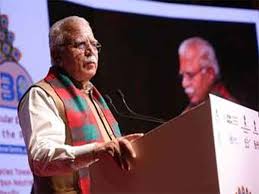
- 09 Mar 2025
In News:
Manohar Lal, Union Minister for Housing and Urban Affairs, announced the Cities Coalition for Circularity (C-3), a multi-nation alliance for city-to-city collaboration, knowledge-sharing, and private sector partnerships.
- Platform: 12th Regional 3R and Circular Economy Forum in Asia and the Pacific
- Venue: Rajasthan International Centre, Jaipur, Rajasthan
What is C-3?
- The Cities Coalition for Circularity (C-3) is a multi-national alliance aimed at enhancing city-to-city collaboration, knowledge-sharing, and public-private partnerships.
- It focuses on promoting circular economy principles, resource efficiency, and low-carbon development.
Organizers and Supporters:
- Organized by: Ministry of Housing and Urban Affairs (India), United Nations Centre for Regional Development (UNCRD), and Institute for Global Environmental Strategies (IGES)
- Supported by: United Nations ESCAP, Ministry of Environment (Japan), and other global organizations
Key Announcements:
- Formation of a Working Group to finalize the coalition’s structure and operational framework
- Adoption of the Jaipur Declaration (2025–2034) – a nonpolitical, nonbinding declaration guiding the next decade of action for resource-efficient and sustainable urban growth
Highlights of the Forum:
- Theme: Realizing Circular Societies Towards Achieving SDGs and Carbon Neutrality in Asia-Pacific
- 3R India Pavilion: Inaugurated by Union Minister and Rajasthan CM Bhajanlal Sharma, showcasing 40+ Indian and Japanese start-ups in waste management and circular solutions
What is a Circular Economy?
A circular economy is a regenerative system where:
- Products, materials, and resources are maintained in use for as long as possible
- Waste is minimized through reuse, recycling, remanufacturing, composting, etc.
- It aims to decouple economic growth from resource consumption, addressing climate change, pollution, and biodiversity loss.
Bond Central
- 04 Mar 2025
In News:
The Securities and Exchange Board of India (SEBI) has launched Bond Central, a centralized and authentic information portal for corporate bonds in India. The initiative aims to enhance transparency, standardize data, and enable informed decision-making in the corporate debt market.
About Bond Central
- Launched by: SEBI (Securities and Exchange Board of India)
- Developed by: Online Bond Platform Providers Association (OBPP Association) in collaboration with Market Infrastructure Institutions (MIIs)—including stock exchanges and depositories
- Operated by: OBPP Association (a not-for-profit entity)
- Accessibility: Free and open to the public
- Purpose: To serve as a centralized, authentic source of information on corporate bonds issued in India
Key Features of Bond Central
- Unified Listings:
- Offers a comprehensive view of corporate bonds across all exchanges and issuers.
- Enhances transparency by allowing investors to compare bond data seamlessly.
- Price Comparison Tool:Enables investors to compare corporate bond prices with Government Securities (G-Secs) and other fixed-income indices, supporting better investment decisions.
- Investor-Centric Information:
- Provides access to risk assessments, disclosures, and corporate bond documentation.
- Helps investors effectively evaluate and compare investment opportunities.
- Standardization & Transparency:
- Standardizes corporate bond-related data to reduce information asymmetry.
- Builds trust in the bond market by ensuring consistency and reliability of information.
Significance for the Market
- Promotes Transparency: Makes vital market data openly accessible.
- Empowers Investors: Facilitates research-based and informed investment decisions.
- Strengthens Market Infrastructure: Aligns with SEBI’s goal of improving market efficiency and trust.
Current Status
- Phase 1 of Bond Central is live as of early 2025.
- More features are to be added progressively based on stakeholder feedback.
State of India’s Digital Economy Report 2025
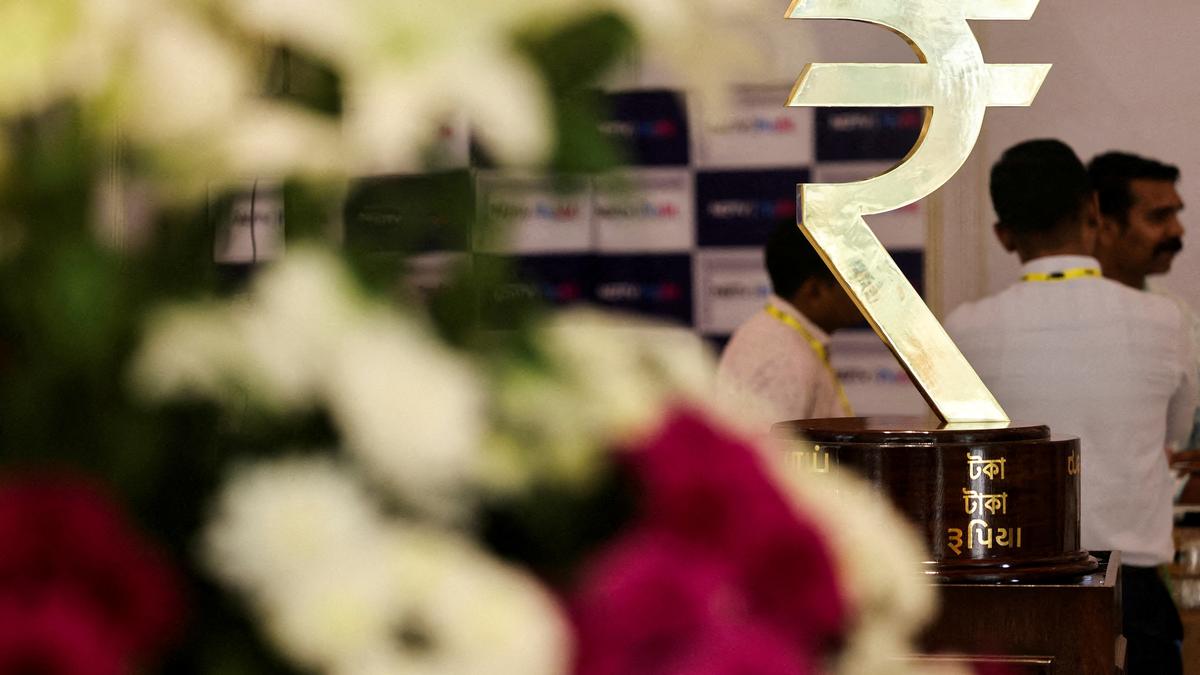
- 04 Mar 2025
In News:
The Indian digital economy is growing twice as fast as the overall economy and is projected to contribute 20% of India’s GDP by 2029, according to the State of India’s Digital Economy (SIDE) 2025 Report released by the Indian Council for Research on International Economic Relations (ICRIER) and its Prosus Centre for Internet and Digital Economy (CIDE).
Key Highlights:
- Global Standing:
- India is the 3rd largest economy globally.
- However, it ranks only 28th in digital user spending, reflecting a significant per capita digital adoption gap.
- In terms of a combined ranking of economic size and digital user economy, India stands 8th globally.
- CHIPS Framework for Digitalisation:The report uses the CHIPS framework to assess digital development:
- Connect: Internet access, affordability, and quality.
- Harness: Usage intensity, fintech adoption.
- Innovate: Start-up ecosystem, AI readiness.
- Protect: Cybersecurity and digital rights.
- Sustain: Green energy investments in the digital sector.
Strengths:
- Harnessing Digital Potential:
- India performs strongly in ICT service exports.
- The Indian IT sector has the third-highest global market capitalisation, after the U.S. and China.
- High levels of fintech usage and a robust start-up ecosystem contribute to digital growth.
- Digital Growth Rate:
- The digital economy is expanding at twice the pace of the broader economy.
Challenges:
- Low Per Capita Spending:Despite high internet penetration, digital service usage and spending are low, particularly among the average user.
- Regional Digital Divide:Southern and Western states are significantly ahead in digital adoption compared to Northern and Eastern states, pointing to the need for region-specific policy support.
- Weakness in Emerging Technologies:
- India ranks 11th in AI research and 16th in AI infrastructure.
- It lags behind countries like the U.S., China, Singapore, South Korea, and the Netherlands in AI and advanced tech innovation.
- Adoption of Consumer IoT and the metaverse remains well below global medians.
Way Forward:
To bridge the digital usage gap and fully harness the potential of the digital economy:
- Policies must focus on increasing affordability, especially in under-served regions.
- There is a need to strengthen AI infrastructure and research.
- Investment in emerging technologies, decentralised finance, and digital skilling is vital.
- A targeted approach to address regional disparities will ensure inclusive digital growth.
Agritourism in Himachal Pradesh

- 03 Mar 2025
In News:
With a public debt exceeding ?1 lakh crore, Himachal Pradesh (HP) is actively exploring sustainable and innovative ways to boost its economy. Tourism contributes around 7% to the state's GDP, and the state is now integrating agriculture with tourism through agritourism to enhance rural livelihoods and extend tourist engagement.
What is Agritourism?
Agritourism is a form of tourism where visitors are engaged in agricultural activities such as farm stays, crop tours, and interactive farming experiences. It provides farmers with additional income, promotes sustainable tourism, and preserves agricultural and cultural heritage.
Opportunities and Features in Himachal Pradesh
Crop and Farm-Based Tourism
- Tulip farming in Kangra has already attracted tourist interest.
- Scope for cultivation of high-value crops like saffron and Himalayan medicinal herbs.
- Promotion of nutraceutical farming to tap into the growing demand for preventive health-based tourism.
Educational Tourism
- Farm visits can be organized for school and college students to raise awareness about food systems and sustainability.
- Farmers can charge nominal fees, benefiting financially while educating the younger generation.
Cultural and Experiential Engagement
- Local youth can be involved in storytelling, showcasing unique farming practices and regional traditions.
- Farm stays, panchayat-level fairs, and cultural activities (folk music, traditional cuisine) can enrich tourist experiences.
Economic and Employment Benefits
- Diversifies farmer income beyond conventional crops like apples.
- Creates jobs for local guides, cooks, transport providers, and artisans, particularly empowering rural women and youth.
Market Integration
- Organizing crop fairs and displaying agricultural products in urban spaces (e.g., malls) can help secure pre-orders and boost local brands.
- Encourages direct farmer-consumer connections.
Environmental and Social Impact
- Promotes organic farming, eco-friendly practices, and water conservation.
- Builds social capital by fostering urban-rural understanding and collaboration.
- Requires visitor sensitization and capacity building among locals to ensure respectful, responsible tourism.
Learning from Other States
- Maharashtra: First state to promote agritourism (Agro-Tourism Development Corporation, 2005); successful models include Baramati's pilot farm and Nashik’s vineyards.
- Kerala: Agro-Tourism Network for spice cultivation experiences.
- Sikkim: Organic farming tourism in the first organic state of India.
- Punjab, Rajasthan, Gujarat, Bihar, NE States: Promote local heritage, farming traditions, and eco-tourism (e.g., Ziro Valley’s wet rice farming, Amul’s dairy tourism).
Policy and Government Support
- Swadesh Darshan Scheme: Develops thematic rural and tribal tourism circuits.
- DekhoApnaDesh: Encourages domestic tourism in lesser-known destinations.
- PMJUGA: Focus on tribal homestays and livelihood promotion.
- National Strategy for Promotion of Rural Homestays (2022): Supports agritourism under Atmanirbhar Bharat.
- Agriculture Infrastructure Fund: Helps build infrastructure and marketing support for farm-based tourism.
Way Forward for Himachal Pradesh
- Develop a dedicated agritourism policy, like Goa’s, focusing on farm diversification and long-term returns.
- Promote public-private partnerships (PPP) for integrated agritourism models in each district.
- Leverage the nutraceutical potential of Himalayan herbs to attract health-conscious visitors.
- Institutionalize farm festivals, crop exhibitions, and story-driven agritourism to diversify Himachal’s tourism landscape.
All-India Consumer Price Index for Agricultural and Rural Labourers
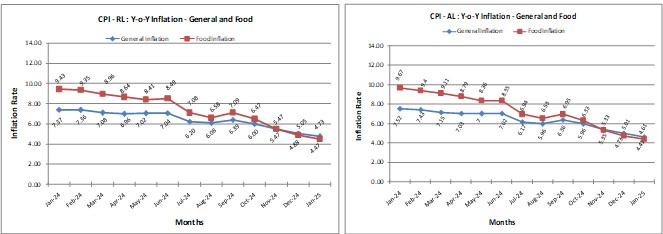
- 02 Mar 2025
In News:
The Labour Bureau, Ministry of Labour& Employment released the All-India Consumer Price Index (CPI) for Agricultural Labourers (CPI-AL) and Rural Labourers (CPI-RL) for January 2025.
Key Highlights:
- Inflation Rates:
- CPI-AL: 4.61%
- CPI-RL: 4.73%
- Marked a decline from January 2024, when rates were 7.52% (CPI-AL) and 7.37% (CPI-RL).
- Also lower than December 2024: 5.01% (CPI-AL) and 5.05% (CPI-RL), indicating easing rural inflation.
- Index Levels:
- CPI-AL: 1316 (down by 4 points from 1320 in December 2024)
- CPI-RL: 1328 (down by 3 points from 1331 in December 2024)
Group-wise Index Comparison (Dec 2024 vs Jan 2025):
Group CPI-AL (Dec → Jan) CPI-RL (Dec → Jan)
General Index 1320 → 1316 1331 → 1328
Food 1262 → 1255 1269 → 1261
Pan, Supari, etc. 2093 → 2103 2100 → 2111
Fuel & Light 1382 → 1390 1372 → 1380
Clothing, Bedding, Footwear 1329 → 1332 1392 → 1396
Miscellaneous 1376 → 1385 1377 → 1385
About CPI-AL and CPI-RL:
- CPI-AL: Measures cost-of-living changes for agricultural labourers; used for revising minimum wages in agriculture.
- CPI-RL: Captures cost-of-living changes for rural labourers (includes CPI-AL as a subset).
- Compiled monthly for 20 states and at the All-India level.
- Base Year: 1986–87=100 (used to measure price change over time).
Significance:
- Declining CPI reflects lower rural price pressure, beneficial for wage policy formulation, poverty analysis, and rural development planning.
One Nation-One Port Initiative
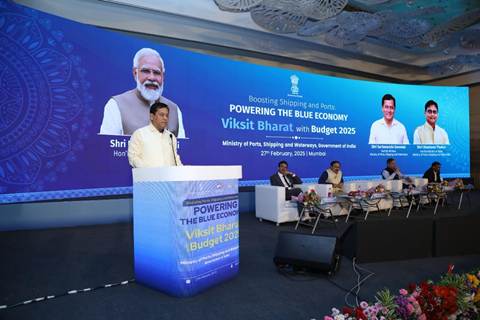
- 02 Mar 2025
In News:
The Ministry of Ports, Shipping and Waterways (MoPSW) has launched the ‘One Nation, One Port Process (ONOP)’, a transformative initiative aimed at standardizing port operations across India to improve efficiency, reduce costs, and bolster India’s position in global trade. This move aligns with PM Gati Shakti, the National Logistics Policy, and India’s ambition to become a leading maritime and logistics hub under Viksit Bharat@2047.
Key Components of the Maritime Reform Package:
1. One Nation, One Port Process (ONOP):
- Seeks uniform documentation and standardized customs procedures across all Indian ports.
- Reduced container operation documents by 33% (from 143 to 96) and bulk cargo documentation by 29% (from 150 to 106).
- Aims to eliminate procedural inconsistencies, boost ease of doing business, and cut logistics delays.
2. Sagar Ankalan – Logistics Port Performance Index (LPPI):
- Evaluates performance of major and non-major ports under Bulk (Dry & Liquid) and Container categories.
- Assesses indicators like cargo handling, turnaround time, berth idle time, and container dwell time.
- Encourages data-driven port benchmarking and fosters transparency in maritime logistics.
- Supports India’s improvement in the World Bank’s LPI (International Shipments) – from rank 44 to 22 in 2023.
3. MAITRI (Master Application for International Trade and Regulatory Interface):
- A digital platform using AI and Blockchain to automate trade clearances and enable Virtual Trade Corridors (VTC).
- Initial linkage with UAE, to expand towards BIMSTEC and ASEAN nations.
- Reduces bureaucratic redundancies, improves supply chain integration, and enhances trade resilience.
4. Bharat Ports Global Consortium:
- A collaborative body combining IPGL (operations), SDCL (finance), and IPRCL (infrastructure).
- Focuses on port development, global trade connectivity, and supporting the Make in India initiative.
- Strengthens India's presence in global logistics networks.
5. Financial and Policy Support:
- Launch of a ?25,000 crore Maritime Development Fund to facilitate long-term port and shipping investments.
- Shipbuilding Financial Assistance Policy 2.0 to aid Indian shipyards in competing globally.
- Customs duty exemptions on shipbuilding inputs extended for 10 years.
- Inclusion of large ships in the Infrastructure Harmonised Master List (HML) to ease access to funding.
6. Sustainability and Green Shipping:
- Launch of the National Centre of Excellence in Green Port and Shipping (NCoEGPS).
- Focus on carbon footprint reduction, cleaner fuels, and eco-friendly port operations.
7. Promotion and Maritime Diplomacy:
- Announcement of India Maritime Week (Oct 27–31, 2025) in Mumbai to showcase India’s Maritime Virasat (Heritage) and Vikaas (Development).
- Will host the 4th Global Maritime India Summit and the 2nd Sagarmanthan Dialogue, with representation from 100 countries and over 1 lakh delegates.
Strategic Significance:
- Aligns with Atmanirbhar Bharat, Blue Economy, and India-Middle East-Europe Economic Corridor (IMEEC).
- Boosts domestic manufacturing and export potential through better port infrastructure and trade facilitation.
- Reflects India’s push toward a digital, green, and globally competitive maritime sector.
Make the World Wear Khadi Campaign

- 01 Mar 2025
In News:
The “Make the World Wear Khadi” campaign is a strategic initiative launched to globalize Khadi, India’s iconic hand-spun fabric, by integrating it with contemporary fashion trends. It is part of the inaugural World Audio Visual & Entertainment Summit (WAVES), scheduled from 1–4 May 2025at theJio World Convention Centre, Mumbai.
Key Highlights:
Organizers
- Advertising Agencies Association of India (AAAI)
- Ministry of Information and Broadcasting, Government of India
Objectives
- Elevate Khadi as a global, aspirational brand.
- Celebrate and modernize India's textile heritage.
- Engage creative professionals in branding and marketing of Khadi through various media.
- Showcase India’s soft power in the global Media & Entertainment (M&E) space.
Campaign Highlights
- Part of the broader Create in India Challenges under WAVES.
- Participants: Open to advertising professionals and freelancers globally.
- Format: Creative entries in digital, print, video, and experiential marketing.
- Total Registrations for Create in India Challenges: 73,000+
- Registrations for Khadi Challenge (as of Feb 15, 2025): 112
Khadi – Key Facts
- What is Khadi?
- A traditional Indian fabric made from hand-spun and hand-woven cotton, silk, or wool.
- Historical Significance:
- Promoted by Mahatma Gandhi during the freedom movement as a symbol of swadeshi, self-reliance, and economic independence.
- Key Characteristics:
- Hand-spun using a charkha (spinning wheel).
- Woven on traditional looms.
- Eco-friendly and sustainable, made from natural fibers.
- Supports rural employment and cottage industries.
WAVES Summit 2025 – Snapshot
- A flagship Media & Entertainment event with a hub-and-spoke model.
- Four thematic pillars:
- Broadcasting & Infotainment
- AVGC-XR (Animation, VFX, Gaming, Comics, Extended Reality)
- Digital Media & Innovation
- Films
- The Khadi campaign falls under the Broadcasting & Infotainment category.
Plastic Parks in India
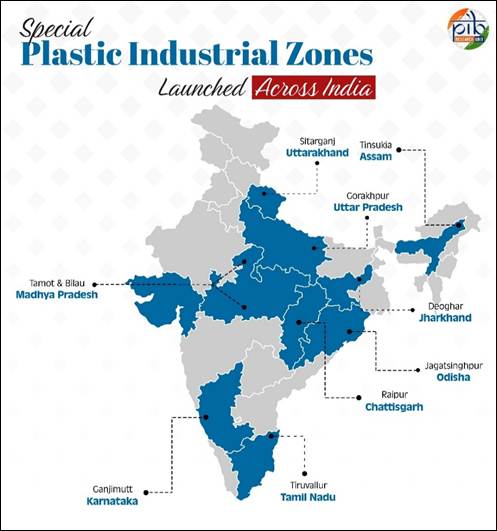
- 01 Mar 2025
In News:
The Department of Chemicals and Petro-Chemicals is implementing the Scheme for Setting up of Plastic Parks under the umbrella scheme of New Scheme of Petrochemicals, to support setting up need-based Plastic Parks, with requisite state-of-the-art infrastructure, enabling common facilities through cluster development approach, to consolidate the capacities of the domestic downstream plastic processing industry.
What is a Plastic Park?
- A Plastic Park is a dedicated industrial zone for plastic-related industries.
- Aims to synergize capacities of the plastic processing sector and promote investment, production, export, and employment.
- Encourages sustainable development through waste management and recycling.
Plastic Parks Scheme
- Implemented by the Department of Chemicals and Petro-Chemicals under the New Scheme of Petrochemicals.
- Financial Support: 50% of project cost, up to ?40 crore per park.
- Focus: Common infrastructure, cluster development, employment generation, and environmental sustainability.
Plastic Parks Approved (as of April 2025):
Location State Year Approved Grant Sanctioned (? crore) Amount Released (? crore)
Tamot Madhya Pradesh 2013 40.00 36.00
Jagatsinghpur Odisha 2013 40.00 36.00
Tinsukia Assam 2014 40.00 35.73
Bilaua Madhya Pradesh 2018 34.36 30.92
Deoghar Jharkhand 2018 33.67 30.30
Tiruvallur Tamil Nadu 2019 40.00 22.00
Sitarganj Uttarakhand 2020 33.93 30.51
Raipur Chhattisgarh 2021 21.04 11.57
Ganjimutt Karnataka 2022 31.38 6.28
Gorakhpur Uttar Pradesh 2022 34.79 19.13
Objectives
- Boost competitiveness, polymer absorption, and value addition.
- Support R&D-led growth and enhance exports.
- Promote eco-friendly practices like plastic recycling, effluent treatment, and hazardous waste management.
- Encourage cluster-based industrial growth.
Process of Setting up
- States submit proposals → In-principle approval by Scheme Steering Committee → Submission of DPR → Final approval.
- Implementation via Special Purpose Vehicles (SPVs) formed by states.
Other Government Measures
13 Centres of Excellence (CoEs) established at premier institutions (IITs, CSIR labs, CIPET) for:
- Sustainable polymers
- Bio-engineered polymer systems
- Advanced polymeric materials
- Wastewater management in petrochemical industries
Skill Development:
- CIPET offers short- and long-term training in plastic processing technology.
Sustainability Measures
- Extended Producer Responsibility (EPR) mandates recycling targets, use of recycled content.
- Hazardous Waste Management Rules enforce safe disposal practices.
- Ban on certain single-use plastics.
- Promotion of circular economy and biodegradable alternatives.
- Active engagement with WTO, UNEP, ISO for global compliance.
India in Global Plastic Trade
- 12th largest plastic exporter globally (World Bank, 2022).
- Exports increased from USD 8.2 million (2014) to USD 27 million (2022).
Prelims Facts to Remember
- Scheme launched under Department of Chemicals and Petrochemicals.
- Max central grant per park = ?40 crore.
- Plastic Park = cluster-based industrial zone for plastic processing industries.
- Gorakhpur (UP) &Ganjimutt (Karnataka) approved in 2022.
- India is actively integrating sustainability and innovation in the plastic sector.
USD-INR Buy/Sell Swap Auction
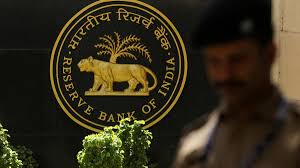
- 26 Feb 2025
In News:
The Reserve Bank of India (RBI) has announced its largest-ever USD-INR Buy/Sell Swap Auction worth $10 billionfor a tenor of three years. This strategic move is aimed at addressing the persistent liquidity deficit in the banking system and stabilizing the Rupee-Dollar exchange rate.
What is a USD-INR Buy/Sell Swap Auction?
A Dollar/Rupee Buy-Sell Swap Auction is a foreign exchange (forex) tool used by RBI to manage domestic liquidity and curb currency volatility. It is a two-leg transaction:
- First Leg (Buy Phase):Banks sell US dollars to the RBI and receive rupee liquidity.
- Reverse Leg (Sell Phase):RBI sells back the same amount of US dollars to banks at a future date (here, after 3 years), along with a swap premium.
Key Features of the February 2025 Swap Auction:
- Auction Size: USD 10 billion
- Tenor: 3 years (long-term)
- Rupee Liquidity Injected: Approx. ?86,000 crore
- Auction Date: 28 February 2025
- Spot Settlement Date: 4 March 2025
- Far-leg Settlement Date: 6 March 2028
- Reference Rate: Based on FBIL (Financial Benchmarks India Pvt Ltd) benchmark
Objectives and Benefits:
- Liquidity Management:
- Addresses durable liquidity needs; helps ease banking system deficit (estimated at ?1.7 lakh crore).
- Supports credit flow to businesses, aiding economic growth.
- Exchange Rate Stability:
- Reduces volatility in the USD/INR rate (expected to stabilize around ?86.30).
- Mitigates pressure from foreign fund outflows.
- Efficient Forex Reserve Utilization:
- Uses RBI’s reserves productively to manage monetary conditions.
- Enhances Policy Transmission:
- Aligns money market interest rates with RBI’s monetary policy stance.
- Supports Inflation Control:
- Infuses liquidity without directly adding to inflationary pressures.
Challenges and Limitations:
- Impact on Forex Reserves:Large-scale swaps temporarily tie up reserves.
- Global Dependencies:Effectiveness may be affected by global interest rate differentials, capital flows, and external shocks.
- Market Speculation Risks:Poor timing or execution could trigger speculative activity in the forex market.
- Temporary Measure:Swap auctions offer short- to medium-term relief; structural reforms are needed for long-term liquidity management.
Quality of Public Expenditure (QPE) Index
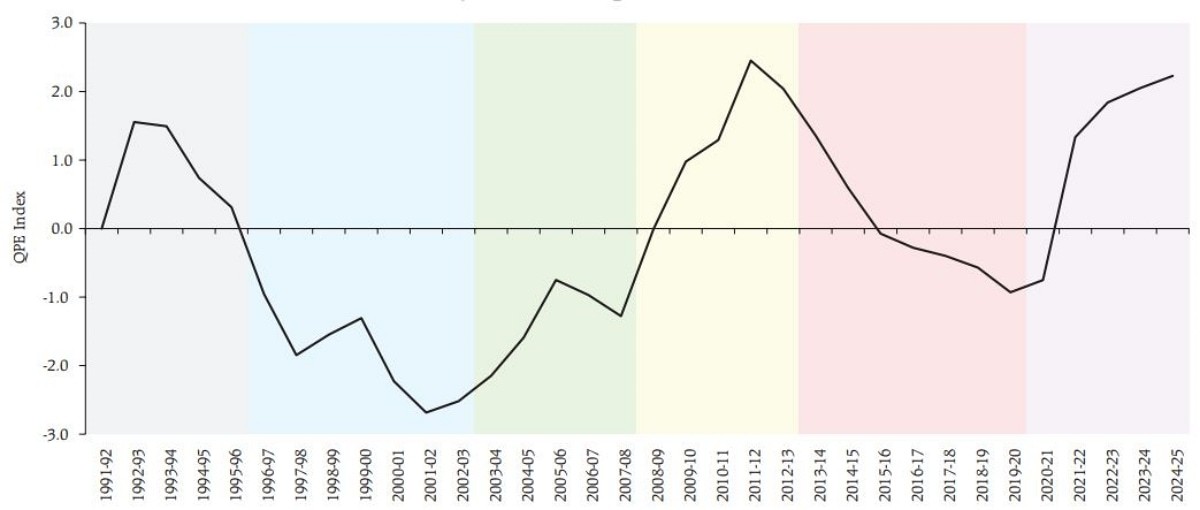
- 25 Feb 2025
In News:
The Quality of Public Expenditure (QPE) Index, developed by the Reserve Bank of India (RBI), measures how efficiently public funds are allocated and utilized by the Central and State governments. Unlike traditional fiscal measures that focus on total expenditure, the QPE Index assesses the composition and developmental impact of government spending, emphasizing long-term economic growth and social development.
Key Components of the QPE Index
Indicator What it Measures Significance
Capital Outlay to GDP Ratio - Share of GDP spent on physical infrastructure - Higher ratio = better quality of expenditure
Revenue Expenditure to Capital Outlay Ratio - Relative spending on salaries, pensions vs. asset creation - Lower ratio = better efficiency
Development Expenditure to GDP Ratio - Spending on education, healthcare, R&D, infrastructure - Higher ratio = enhanced productivity
Development Expenditure as % of Total Expenditure - Proportion of total expenditure directed to development sectors - Higher share = improved allocation
Interest Payments to Total Expenditure Ratio - Financial burden from past borrowings - Lower ratio = better fiscal health
Evolution of Public Expenditure (1991–2025)
- 1991–1997(Early liberalization):
- Slight improvement at Centre; states faced fiscal pressure.
- Public investment declined due to focus on fiscal deficit reduction.
- 1997–2003:Decline in QPE due to Fifth Pay Commission, rising interest burden, dominance of revenue expenditure.
- 2003–2008(FRBM Era):
- Fiscal Responsibility and Budget Management (FRBM) Act, 2003 improved fiscal discipline.
- States gained from higher tax devolution; capital spending rose.
- Growth momentum sustained until the 2008 Global Financial Crisis (GFC).
- 2008–2013(GFC response):
- Stimulus spending initially boosted development but later widened fiscal deficits.
- Spending quality eroded over time.
- 2013–2019(GST & 14th Finance Commission):
- 14th Finance Commission (2015) increased states' tax share to 42%, improving state-level development spending.
- GST rollout (2017) benefited states more than Centre initially, stressing Centre’s finances.
- 2019–2025(COVID-19 & Recovery):
- Pandemic-induced fiscal stimulus reduced QPE temporarily.
- Post-pandemic recovery led by record capital expenditure boosted infrastructure, improving QPE.
- By FY 2024–25, India's QPE reached its highest level since 1991 reforms.
Recent Trends in Public Expenditure (as per Economic Survey 2024–25 & Budget 2025–26)
- Capital expenditure (Capex) rose 8.2% YoY.
- Revenue expenditure (primarily by states) increased 12% YoY.
- FY 2025–26 Budget allocated ?11.21 lakh crore for Capex (3.1% of GDP).
- Capex to GDP ratio increased from 1.5% in 2000 to 2.5% in 2023.
- Revenue expenditure to Capex ratio improved from 8:1 in 2000 to 5:1 in 2023.
- Development expenditure rose from 6% to 8% of GDP between 2000–2023.
- Interest payments declined from 25% to 20% of total expenditure in the same period.
Why Quality of Public Expenditure Matters
- Governments use citizens’ money (via taxes or borrowing). Efficient use ensures better socio-economic outcomes.
- High QPE means greater focus on productive investment over populist spending (freebies, subsidies).
- Better QPE leads to:
- Higher GDP growth (average 6.5% annually since 2000).
- Improved infrastructure and service delivery.
- Enhanced social indicators like literacy (77.7% in 2023) and life expectancy (70 years).
Challenges Affecting Public Expenditure Quality
- Persistent revenue deficits (3.3% of GDP in 2023) limit fiscal space for Capex.
- Rising populism: Loan waivers, cash handouts, free electricity.
- Welfare scheme inefficiencies: Leakages in MGNREGA, PDS.
- Debt servicing: High interest payments constrain spending.
- Inter-state disparities: Unequal fiscal capacity hampers balanced development.
Way Forward
- Boost Capex to over 3% of GDP to enhance infrastructure-led growth.
- Rationalize subsidies via Direct Benefit Transfers (DBT).
- Strengthen fiscal federalism through equitable devolution and performance-based grants.
- Leverage technology for transparent and outcome-based expenditure tracking.
- Reform FRBM Act:
- Focus on debt-to-GDP targets.
- Introduce flexibility in deficit norms during crises.
Electronic Personnel License (EPL) for Pilots
- 25 Feb 2025
In News:
India has launched the Electronic Personnel License (EPL) for pilots, becoming the second country globally, after China, to implement this advanced digital licensing system.
What is EPL?
- Electronic Personnel License (EPL) is a digital version of pilot licenses, replacing the traditional physical cards.
- Pilots can securely access their EPL via the eGCA Mobile Application developed by the Directorate General of Civil Aviation (DGCA).
- It ensures real-time verification, enhancing efficiency, transparency, and security in licensing procedures.
Significance of EPL
- Aligns with:
- Digital India and Ease of Doing Business initiatives.
- ICAO’s Amendment 178 to Annex 1 on Personnel Licensing, promoting digital transformation.
- Enhances:
- Safety and efficiency in civil aviation operations.
- Environmental sustainability by reducing the use of plastic and paper.
- Global employability of Indian pilots through instant international credential verification.
Implementation & Governance
- Ministry: Ministry of Civil Aviation, Government of India.
- Executing Agency: Directorate General of Civil Aviation (DGCA).
- EPL implementation positions India as a leader in aviation innovation and modern governance.
International Civil Aviation Organization (ICAO):
- Established: 1947 under the Chicago Convention (1944).
- Headquarters: Montreal, Canada.
- Nature: A specialized intergovernmental agency affiliated with the United Nations (UN).
- Functions:
- Sets standards and regulations for aviation safety, security, efficiency, and environmental performance.
- Promotes peaceful and efficient international air transport.
- Facilitates global cooperation and market liberalization in aviation.
National Skill Development Corporation (NSDC)
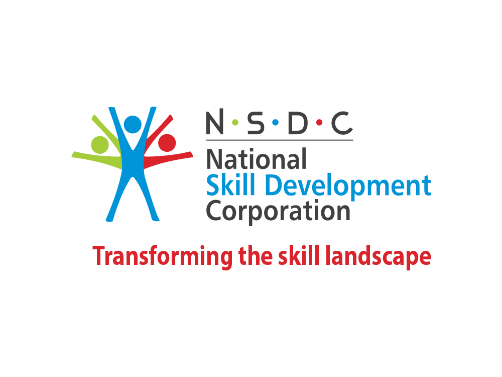
- 19 Feb 2025
In News:
The National Skill Development Corporation (NSDC) has announced plans to establish 50 Future Skills Centres (FSCs) and 10 NSDC International Academies to enhance skill development and improve workforce readiness in India. This initiative aims to address the country's growing demand for skilled professionals, particularly in emerging technologies and international markets.
About NSDC
- NSDC is a not-for-profit public limited company set up to promote skill development across India.
- It operates under the Ministry of Skill Development & Entrepreneurship (MSDE).
- Established on July 31, 2008, NSDC was founded as a Public-Private Partnership (PPP) under Section 25 of the Companies Act, 1956 (now Section 8 under the 2013 Act).
- The corporation operates with a 49% government stake and 51% private sector participation, ensuring a balanced approach to skill development through public and private sector collaboration.
Key Objectives of NSDC
- Bridging the Skill Gap: NSDC aims to fill the gap between industry requirements and the available workforce by providing industry-relevant training. This enhances workforce employability and supports the growth of the Indian economy.
- Financial Support for Enterprises: NSDC provides funding and concessional loans to enterprises, start-ups, and training organizations to expand their operations and develop a skilled workforce.
- Skilling the Workforce for Emerging Technologies: The corporation focuses on upskilling individuals in emerging technologies to make them market-ready.
Key Functions of NSDC
- Skill Development & Training: NSDC provides vocational training and certification across emerging technologies to align the workforce with current industry needs, ensuring that individuals are equipped with the necessary skills to succeed in the job market.
- Apprenticeship & Job Training: Under the National Apprenticeship Promotion Scheme (NAPS), NSDC trains around 5 million apprentices by disbursing ?100,250 million for skill-based learning, giving them hands-on experience and industry exposure.
- Digital & Remote Skilling: Through the Skill India Digital Hub (SIDH), NSDC offers over 7,100 courses in 23 languages, catering to 30 crore candidates. These online courses provide accessibility to skill development programs across the country, particularly for individuals in remote and rural areas.
- Job & Career Support: NSDC runs JobX, a platform that connects job seekers with potential employers. This platform offers services such as resume building, career coaching, and placement assistance, having already supported 4 million candidates in securing jobs.
New Initiatives by NSDC
To further strengthen India’s skill ecosystem, NSDC is establishing 50 Future Skills Centres (FSCs) and 10 NSDC International Academies. These initiatives will focus on:
- Future Skills Centres: These centers will offer training in emerging fields such as artificial intelligence, data science, cybersecurity, and robotics, ensuring that India's workforce is prepared for future job markets.
- International Academies: The academies will focus on global skill standards and international certifications, enhancing the employability of Indian workers in global markets.
MITRA Platform

- 18 Feb 2025
ecosystem, the Securities and Exchange Board of India (SEBI) has launched a new digital platform—MITRA (Mutual Fund Investment Tracing and Retrieval Assistant).
Key Features:
- Objective:MITRA aims to help investors trace, identify, and reclaim inactive or unclaimed mutual fund folios, while ensuring KYC (Know Your Customer) compliance under prevailing regulatory norms.
- Developed by:The platform has been developed at an industry level by the two Qualified Registrar and Transfer Agents (QRTAs) —
- Computer Age Management Services Ltd. (CAMS)
- KFIN Technologies Ltd.
These firms serve as agents of Asset Management Companies (AMCs).
- Hosted by:The platform is hosted jointly by CAMS and KFIN Technologies to serve as a centralized, searchable database for inactive and unclaimed mutual fund folios across the industry.
- Functions:
- Enables investors to search for overlooked investments or investments made in their name by others.
- Facilitates rightful legal claims by heirs or nominees.
- Encourages KYC compliance, thus reducing the number of non-KYC compliant folios.
- Aims to minimize the risks of fraudulent redemptions linked to dormant folios.
- Supports the creation of a transparent financial ecosystem by reducing unclaimed investments.
Definition of Inactive Folio:
- A mutual fund folio is considered inactive when no investor-initiated financial or non-financial transactions have occurred for ten consecutive years, even though the folio holds units.
Institutional Measures:
- Unit Holder Protection Committee (UHPC):SEBI has broadened the role of the UHPC under mutual fund regulations. The committee is now tasked with monitoring inactive folios, unclaimed dividends, and pending redemptions, ensuring proactive steps are taken for investor protection.
- Stakeholder Involvement:SEBI has directed AMCs, RTAs, Registered Investment Advisers (RIAs), the Association of Mutual Funds in India (AMFI), and mutual fund distributors to actively promote awareness regarding MITRA among investors.
Fishery Survey of India (FSI)
- 17 Feb 2025
In News:
A landmark deep-sea fishing expedition by the Fishery Survey of India (FSI) has led to the discovery of previously underexploited fishing grounds in the Arabian Sea, offering significant promise for India’s marine resource sustainability, food security, and fishermen’s livelihoods.
Key Highlights of the Expedition
- Conducted by: Fishery Survey of India (FSI), under the Ministry of Fisheries, Animal Husbandry & Dairying
- Supported by: Pradhan Mantri MatsyaSampada Yojana (PMMSY)
- Geographic Scope: Waters between Kollam (Kerala) and Goa, at depths of 300–540 meters
- Location: Approx. 100–120 nautical miles off India’s western coast
- Catch Rate: Average Catch Per Unit Effort (CPUE) recorded at 150–300 kg/hr
- Timing: No significant difference observed in catches between day and night
Marine Biodiversity of the New Grounds
The discovered ecosystem harbors rich and diverse marine life, including:
- Commercially Important Crustaceans:
- Humpback nylon shrimp
- Arabian red shrimp
- Deep sea mud shrimp
- Deepwater spiny lobster
- Deep sea squat lobster
- Cephalopods:
- Opisthoteuthis species
- Octopoteuthissicula
- Diverse Deep-Sea Fishes:
- Froghead eel, Rosy cod, Snake mackerel, Sackfish
- Royal escolar, Bandfishes, Duckbill flathead
- Splendid alfonsino, Myctiophids, Shadow driftfish
- Spinyjawgreeneye, Shortfin neoscopelid, Stargazers
- Elasmobranchs (Cartilaginous Fishes):
- Sicklefin chimaera, Pygmy ribbontail catshark
- Bramble shark, Indian swellshark, Travancore skate
Significance for India’s Fisheries Sector
- Reduces Pressure on Coastal Fisheries: Coastal resources are under stress from overfishing, habitat degradation, and climate change. Deep-sea grounds offer a sustainable alternative.
- Supports Blue Economy Goals: Enhances India’s capacity to sustainably exploit its vast Exclusive Economic Zone (EEZ).
- Economic Benefits: Aligns with the government’s goal of doubling fishermen’s income and generating employment in marine-based livelihoods.
- Scientific Value: Contributes to marine biodiversity documentation and ecosystem-based fisheries management.
14th Asian Fisheries and Aquaculture Forum (14AFAF)
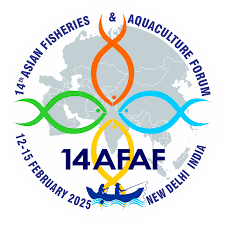
- 17 Feb 2025
In News:
India is set to host the 14th Asian Fisheries and Aquaculture Forum (14AFAF) from February 12–14, 2025, at the ICAR Convention Centre, Pusa Campus, New Delhi.
Key Highlights
- This triennial international event—organized by the Asian Fisheries Society (AFS), Indian Council of Agricultural Research (ICAR), Department of Fisheries (DoF), and AFS Indian Branch (AFSIB)—is themed "Greening the Blue Growth in Asia-Pacific".
- It aims to promote sustainable, inclusive, and innovation-driven development in the fisheries and aquaculture sector.
- Previous Indian Host: India is hosting the AFAF for the second time, the first being the 8th AFAF in Kochi (2007).
- Legacy: AFAF, headquartered in Kuala Lumpur, Malaysia, has been a leading platform for fostering global cooperation in fisheries and aquaculture since its inception.
India's Role and Significance
- India ranks second globally in total fish production and aquaculture output, underlining its emerging leadership in the blue economy.
- The forum presents a strategic opportunity to:
- Showcase India’s technological and policy advancements.
- Strengthen international collaborations.
- Promote sustainable, resilient, and globally competitive aquaculture systems.
Forum Structure and Thematic Sessions
The event will feature 20+ technical sessions and keynote presentations by international experts, focusing on priority areas such as:
- Sustainable Fisheries Management:Emphasis on responsible fishing, biodiversity preservation, and efficient resource utilization.
- Climate Change and Fisheries:Addressing climate impacts on aquatic ecosystems and developing adaptive strategies.
- Smart Aquaculture & Technology:Integration of AI, IoT, and blockchain to enhance fish farming efficiency and monitoring.
- Fish Genetics & Biotechnology:Innovations for disease resistance, improved yields, and genetic advancements.
- Post-Harvest and Value Addition:Improving fish quality, market access, and export competitiveness through better processing techniques.
India Gas Market Report: Outlook to 2030
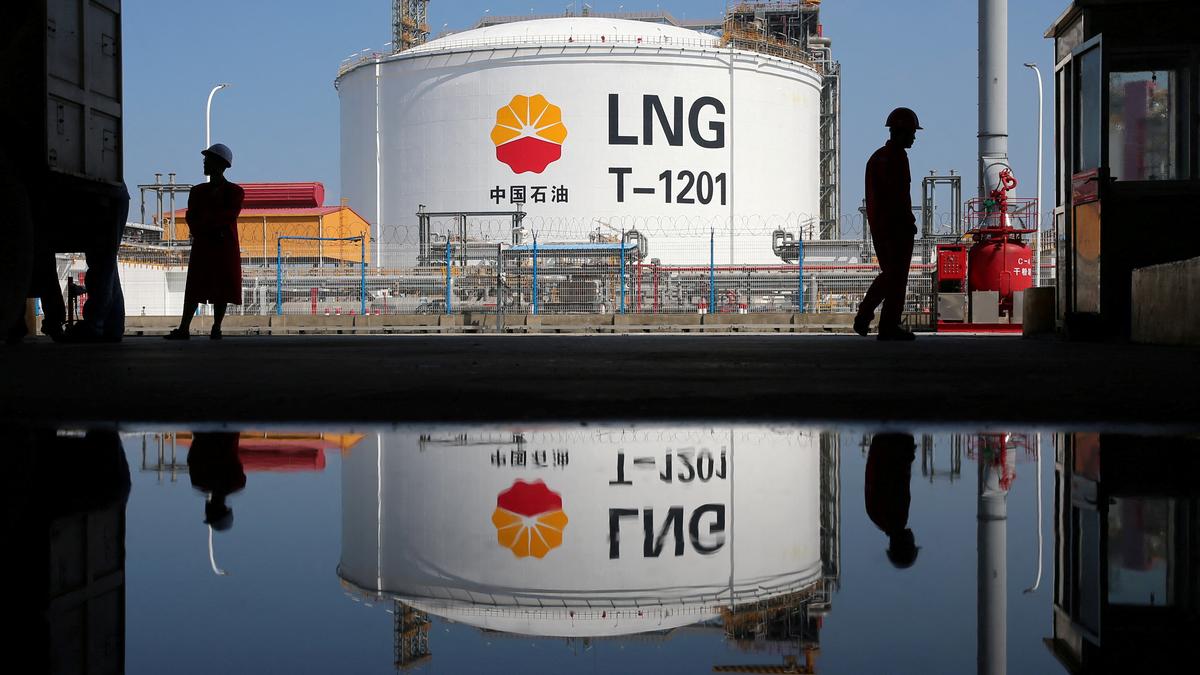
- 17 Feb 2025
In News:
The International Energy Agency (IEA), in its report “India Gas Market Report: Outlook to 2030”, has highlighted the transformative potential of natural gas in India’s energy transition.
As India aims to raise the share of natural gas in its primary energy mix from ~6% to 15% by 2030, the report outlines a roadmap for achieving this goal through policy reforms, infrastructure expansion, and market liberalization.
Current Status and Future Outlook
- Demand Growth: India's natural gas consumption is projected to increase by 60%, reaching 103 billion cubic meters (bcm) by 2030. The City Gas Distribution (CGD) sector, which supplies gas to households, transport, and industries, will drive this growth.
- Domestic Production: India produced 35 bcm in 2023, with the Krishna-Godavari deepwater fields contributing a quarter. Production is expected to reach just under 38 bcm by 2030, a modest 8% increase.
- Import Dependency: With domestic supply growth lagging behind demand, LNG imports are expected to more than double, from ~30 bcm in 2023 to around 65 bcm by 2030. India is already the fourth-largest LNG importer globally.
Infrastructure Expansion
India’s natural gas infrastructure has undergone rapid growth:
- Since 2019, the number of CNG stations quadrupled and residential gas connections more than doubled.
- The gas transmission pipeline network expanded by 40%, with another 50% expansion expected by 2030.
- CGD infrastructure is poised for a further boom, supporting increased consumption in urban areas.
Sectoral Trends
- Industry: Heavy industry and manufacturing are expected to add 15 bcm to gas demand by 2030.
- Refining: Gas use in refineries will rise by over 4 bcm as more refineries get connected.
- Transport: Greater CNG adoption, if incentivized, could significantly reduce vehicular emissions.
Challenges Hindering Growth
- Price Distortion: Prices from legacy fields are capped (e.g., USD 6.5–10 per MMBtu), limiting true market-based discovery.
- Monopoly in Transport & Marketing: GAIL’s dominance in both gas marketing and pipeline ownership creates potential conflicts of interest.
- Storage Limitations: India lacks underground gas storage (UGS) and has limited LNG storage capacity, affecting supply security.
- Policy and Regulatory Gaps: Inadequate third-party access and fragmented pricing/taxation systems reduce investor confidence.
Policy Recommendations by IEA
- Gas Pricing Freedom:
- Implement full pricing freedom, in line with Kirit Parekh Committee (2022) recommendations.
- Initially lift ceilings on high-cost deepwater and ultra-deepwater projects.
- Allow producers to sell more output on platforms like the Indian Gas Exchange (IGX).
- Unbundling Supply and Transmission:
- Establish independent gas transmission system operators (TSOs).
- Legally separate marketing from pipeline operations to ensure fair, non-discriminatory access.
- Standardize Gas Sales Agreements (GSAs) and Gas Transmission Agreements (GTAs).
- Infrastructure and Market Development:
- Ensure transparent, regulated third-party access to pipelines.
- Develop strategic gas reserves and expand LNG terminal capacity.
- Improve data transparency on pipeline capacities and tariffs.
- Tax and Regulatory Reforms:
- Harmonize taxes across fuels to create a level playing field.
- Rationalize GST on CNG vehicles and revise import duties on natural gas.
- Offer tax benefits to natural gas similar to electric vehicles to promote adoption.
- Secure Long-Term LNG Contracts:
- With legacy contracts expiring post-2028, proactive procurement is essential to avoid spot market volatility.
Income-tax Bill, 2025
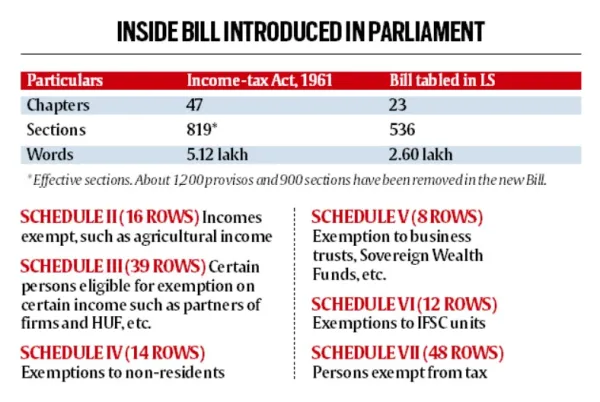
- 16 Feb 2025
In News:
The Income-tax Bill, 2025, tabled in Parliament on February 13, 2025, seeks to repeal and replace the Income-tax Act, 1961, marking a landmark step in tax law simplification.
It reflects the government's commitment to ease of doing business, legal clarity, and tax compliance, without altering the core tax policy or rate structure.
Guiding Principles
- Textual and structural simplification for better clarity.
- Policy continuity—no major tax policy changes.
- Preservation of existing tax rates for predictability.
Approach and Methodology
- Three-pronged strategy:
- Simplify language and eliminate legalese.
- Remove obsolete, redundant, and repetitive provisions.
- Reorganize the Act for logical and easier navigation.
- Consultative process:
- 20,976 online suggestions received.
- Stakeholder consultations with taxpayers, professionals, and industry bodies.
- International best practices reviewed, notably from Australia and the UK.
Quantitative Simplification
Parameter Income-tax Act, 1961 Income-tax Bill, 2025 Change
Words 5,12,535 2,59,676 ↓ 2,52,859
Chapters 47 23 ↓ 24
Sections 819 536 ↓ 283
Tables 18 57 ↑ 39
Formulae 6 46 ↑ 40
Key Features and Improvements
- Qualitative Enhancements:
- Use of simplified and accessible language.
- Consolidation of amendments to reduce fragmentation.
- Enhanced readability via structured use of tables and formulae.
- Elimination of outdated provisions.
- Introduction of "Tax Year":Defined as the 12-month period beginning April 1, providing better uniformity.
- Crypto as Capital Asset:Virtual Digital Assets (VDAs) such as cryptocurrencies included in the definition of "property", now taxable as capital assets.
- Dispute Resolution Clarity:Improved transparency in Dispute Resolution Panel (DRP) procedures by including points of determination and reasoning—addressing a key criticism of ambiguity in the earlier framework.
- Removal of Obsolete Exemptions:Section 54E, providing capital gain exemptions for transfers before April 1992, has been scrapped.
- Expected Timeline:Once enacted, the Income-tax Act, 2025 is proposed to come into effect from April 1, 2026.
UDAN 5.5 – Advancing Last-Mile Air Connectivity
- 15 Feb 2025
In News:
- The Government of India has launched UDAN 5.5, the latest phase of its flagship regional air connectivity scheme UDAN (UdeDesh ka AamNaagrik).
- It aims to enhance last-mile air connectivity in remote, hilly, and island regions using smaller aircraft, helicopters, and seaplanes.
About UDAN Scheme
- Launched: 2016, under the National Civil Aviation Policy (NCAP).
- Nodal Ministry: Ministry of Civil Aviation.
- Purpose: To make air travel affordable, accessible, and widespread, especially in Tier-2 and Tier-3 towns.
Objectives
- Provide affordable air travel to the common citizen.
- Improve air connectivity in unserved and underserved regions.
- Promote regional development and economic integration.
Key Features
- Fare Cap: ?2,500 per hour of flight for 50% of seats (about 500 km distance).
- Viability Gap Funding (VGF):
- Provided to airlines to cover shortfalls between operational cost and revenue.
- Financed via Regional Connectivity Fund (RCF).
- Government Contribution to VGF:
- State Governments: 20%
- Union Territories & North-Eastern Region (NER) States: 10%
- Support Measures: Concessions from Central/State Governments and airport operators.
Special Variants Under UDAN
- Lifeline UDAN: For transporting medical cargo during COVID-19.
- Krishi UDAN: For agricultural produce value realization, especially from NER and tribal districts.
- International UDAN: To connect NER cities like Guwahati and Imphal with international destinations.
UDAN 5.5 – Key Highlights
- Focuses on last-mile connectivity in challenging terrains where traditional aviation is impractical.
- Aircraft Types Allowed:
- Category 1A: < 9 seats
- Category 1: < 20 seats
- Operational Modes:
- Seaplanes: Use of 80 water bodies including waterdromes, ponds, dams.
- Helicopters: Routes mapped from 400 helipads nationwide.
- Small Aircraft: Routes specifically for aircraft under 20-passenger capacity.
- Encourages air taxi and niche aviation operators.
Achievements of UDAN (as of 2024)
- Passenger Impact: Enabled travel for over 1.5 crore passengers.
- Flight Operations: Over 2.8 lakh UDAN flights completed.
- Route Expansion: 619 routes operationalized, including helicopter routes.
- Airport Growth: Number of operational airports doubled from 74 in 2014 to over 157 in 2024.
- Destinations Connected:
- 68 unserved/underserved destinations added: includes 58 airports, 8 heliports, 2 water aerodromes.
Future Scope
- Current Challenges:
- India currently has no active seaplane services.
- Fewer than 20 small aircraft (Category A1) in operation.
- Projected Developments (next 5 years):
- Establishment of 50+ seaplane routes.
- Creation of 20–25 water aerodromes.
- Induction of around 30 new aircraft for regional connectivity.
Gender Budgeting
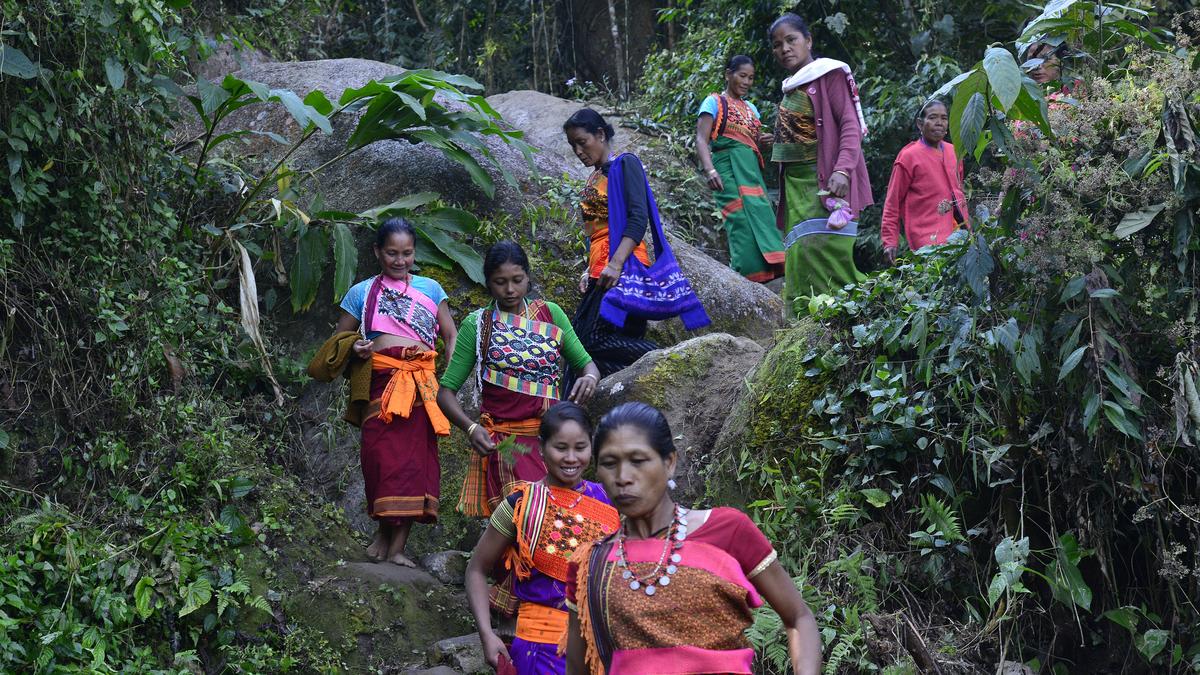
- 15 Feb 2025
In News:
The Gender Budget allocation for FY 2025-26 has increased to ?4.49 lakh crore, accounting for 8.86% of the total Union Budget, up from 6.8% in FY 2024-25. This represents a 37.25% increase compared to the ?3.27 lakh crore allocated in the previous year.
Key Highlights:
- Expansion Across Ministries:
- A total of 49 Ministries/Departments and 5 Union Territories (UTs) have reported allocations in the Gender Budget Statement (GBS) for 2025-26, marking the highest participation since the inception of the Gender Budget.
- Twelve new Ministries have been included in the GBS this year, signaling a broader inclusion of gender considerations in sectors such as animal husbandry, biotechnology, water resources, food processing, and railways.
- Gender Budget Allocation Breakdown:
- Part A (100% Women-specific schemes): ?1,05,535.40 crore (23.5% of total GBS).
- Part B (30-99% allocation for women): ?3,26,672 crore (72.75% of total GBS).
- Part C (Below 30% allocation for women): ?16,821.28 crore (3.75% of total GBS).
- Top Ministries reporting high percentages in gender-focused allocations include the Ministry of Women & Child Development (81.79%), Department of Rural Development (65.76%), and Department of Health & Family Welfare (41.10%).
- Focus on Women’s Economic Participation:
- The Union Budget aims to boost women’s participation in economic activities, targeting 70% by 2047.
- Women’s Labour Force Participation Rate (LFPR) rose to 42% in 2023-24 from 33% in 2021-22.
- Efforts to close the gender gap involve increased allocations to programs like Skill India, Deendayal Antyodaya Yojana-National Rural Livelihoods Mission (DAY-NRLM), and PM Vishwakarma, with 52% of the ?1.24 lakh crore allocated for these programs earmarked for women and girls.
- Support for Women Entrepreneurs:
- Women own 20.5% of micro, small, and medium enterprises (MSMEs) in India, employing approximately 27 million people.
- The Budget focuses on empowering women entrepreneurs by advocating for collateral-free loans, alternative credit scoring models, and financial literacy programs.
- Establishing 30 million additional women-owned businesses could generate 150-170 million jobs by 2030, contributing significantly to India's employment needs.
- Gig Economy and Informal Sector:
- The Budget introduces measures to formalize gig workers, 90% of whom are women. By issuing identity cards and registering gig workers on the e-Shram portal, the Budget aims to provide them with access to social security and financial inclusion benefits.
- This addresses the challenges faced by women in the informal sector, including low wages, job insecurity, and lack of maternity benefits.
- Gender Inclusivity in Technology:
- A dedicated ?600 crore allocation under the India AI Mission aims to promote gender inclusivity in the technology sector. This includes the establishment of a Centre of Excellence on Artificial Intelligence (AI) for education and skill development, ensuring women’s participation in high-growth technological fields.
- Gender Budgeting Components:
- Part A: Gender-specific expenditure, directly benefiting women (e.g., BetiBachaoBetiPadhao).
- Part B: Pro-women general expenditure, benefiting both men and women but focusing on women’s advancement (e.g., MGNREGA).
- Part C: Gender-neutral budgets that may require gender-sensitive planning (e.g., Har GharNal project, which reduces women’s time spent fetching water).
- Policy Vision and Challenges:
- The Union Budget for 2025-26 is part of the government’s vision for a "Viksit Bharat" with zero poverty, universal education, 100% skilled labor, and 70% female participation in the workforce by 2047.
- While the Budget lays a strong foundation, addressing persistent challenges like gender pay gaps, occupational segregation, and cultural barriers will require sustained policy interventions, gender-sensitive workplace reforms, and effective implementation of gender-disaggregated data for monitoring outcomes.
Corruption Perceptions Index (CPI) 2024
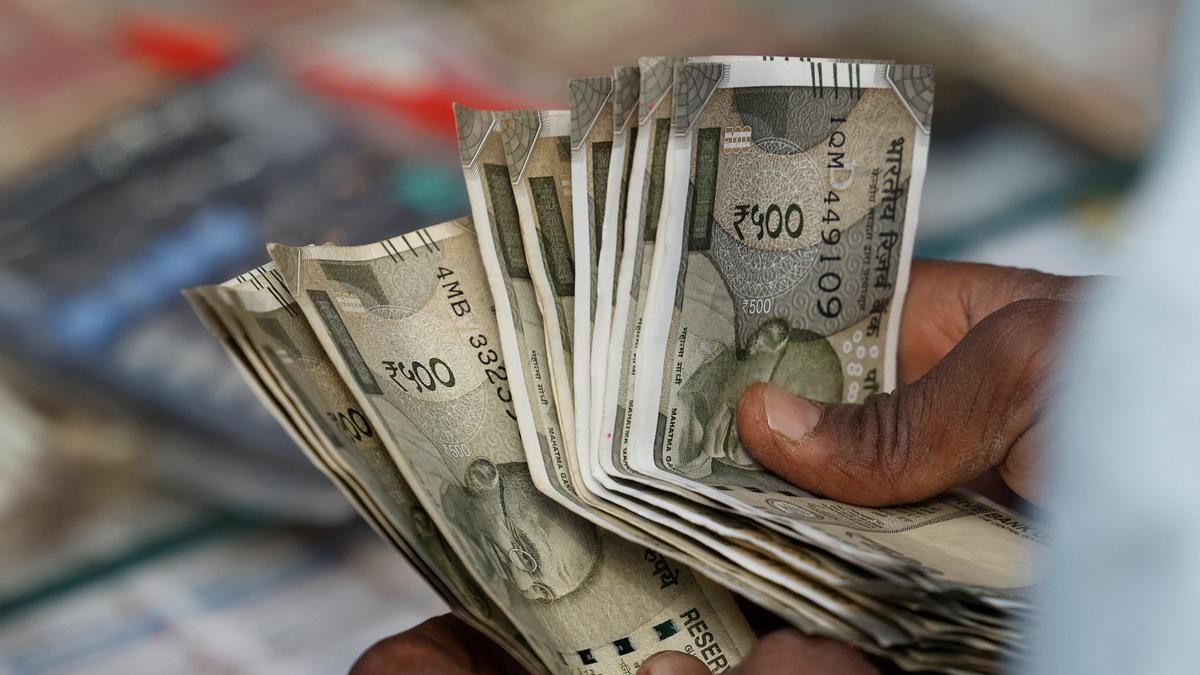
- 15 Feb 2025
In News:
India ranked 96th out of 180 countries in the Corruption Perceptions Index (CPI) for 2024, with a score of 38, a decline from 39 in 2023 and 40 in 2022. This indicates a worsening perception of corruption within India’s public sector.
Global Context:
- The CPI, compiled annually by Transparency International, is a widely recognized global ranking system that evaluates the perceived levels of corruption in public sectors.
- It uses a scale of 0 to 100, where 0 indicates highly corrupt and 100 signifies very clean.
- The CPI is based on expert assessments and surveys, drawing from at least three data sources out of 13 recognized corruption assessments from organizations like the World Bank and the World Economic Forum.
- Top Ranking Countries: Denmark topped the 2024 CPI, followed by Finland and Singapore, indicating strong governance systems with minimal corruption. These countries are recognized for their effective public sector governance, transparency, and low corruption levels.
- Regional Comparison: Among India’s neighbors, Pakistan ranked 135th, Sri Lanka at 121st, Bangladesh at 149th, and China ranked 76th, performing relatively better than India. The Asia-Pacific region, in general, saw a decline in its average CPI score, dropping by one point to 44.
- Global Trends: The CPI 2024 reveals troubling global trends, with corruption being a persistent issue worldwide. While 32 countries have significantly improved their corruption scores since 2012, 148 countries have either stagnated or worsened in the same period.
- The global average score remains at 43, with more than two-thirds of countries scoring below 50, signaling a widespread corruption problem.
- Corruption’s Impact on Climate Action: One of the significant findings in 2024 is the link between corruption and climate action. Corruption undermines efforts to combat climate change by misappropriating funds meant for emission reduction and climate adaptation projects.
- The report warns that such corruption obstructs effective policies and hinders climate change mitigation, leading to environmental degradation. Furthermore, it highlights that corruption in high-CPI countries often serves the interests of fossil fuel companies, complicating global climate efforts.
- Corruption and Human Rights: The report underscores that corruption not only impedes economic development but also contributes to the erosion of democracy, human rights violations, and instability. Corruption, particularly in the form of misallocation of resources, exacerbates the vulnerability of populations already affected by climate change, poverty, and human rights abuses.
- Financial Hubs and Illicit Funds: Many countries with high CPI scores, despite their lower domestic corruption levels, serve as financial hubs that attract illicit funds stemming from corruption and environmental damage. This "dirty money" exacerbates corruption on a global scale and has far-reaching consequences that extend beyond national borders.
- The Call for Action: Transparency International’s report stresses the need for global cooperation in tackling corruption. It warns that corruption is a major contributor to the rise of authoritarianism and calls for urgent, concrete action to address global corruption. The report emphasizes that combating corruption is crucial for achieving a peaceful, sustainable, and democratic world.
India’s Indigenous Shakti Semiconductor Chip

- 15 Feb 2025
In News:
India has achieved a significant milestone in semiconductor technology with the development of the indigenous Shakti semiconductor chip. Developed by the Indian Institute of Technology (IIT) Madras in collaboration with the Indian Space Research Organisation (ISRO) and supported by the Ministry of Electronics and Information Technology (MeitY), the Shakti chip is a crucial component of India’s push for technological self-reliance under the Digital India RISC-V (DIRV) initiative.
Overview of Shakti Semiconductor Chip
- The Shakti chip is an indigenous microprocessor based on the RISC-V open-source Instruction Set Architecture (ISA).
- Its primary objective is to meet the high-performance computing, security, and reliability needs of India’s defense, aerospace, and space industries.
- It was specifically designed to support applications in satellite missions, avionics, embedded systems, and command-and-control operations.
- The chip is the third in the Shakti series, following the earlier RIMO (2018) and MOUSHIK (2020) chips, which served as technology demonstrators.
Key Features:
- Indigenous Development: Fully developed, fabricated, and tested in India, ensuring complete control over the design and manufacturing process.
- RISC-V Architecture: The Shakti chip utilizes the RISC-V open-source architecture, offering flexibility for customization and adaptation to various hardware and application needs.
- Fault Tolerant and Reliable: Designed to endure the harsh conditions of space and defense applications, making it highly reliable for mission-critical functions.
- High-Performance Computing: Supports complex functions like AI-based operations, real-time control systems, and sensor integration, essential for space missions and advanced defense technologies.
- Advanced Security: Aimed at providing robust security measures for critical sectors, including defense and aerospace, ensuring protection against cyber threats.
- Expandable and Scalable: The chip supports multiple boot modes and hybrid memory extensions, allowing for future upgrades and expansions, especially for space exploration.
Applications of the Shakti Chip
- Space Missions: The Shakti chip plays a vital role in powering ISRO's command-and-control systems, satellite avionics, and embedded systems used in various space missions.
- Defense & Aerospace: It enhances India’s strategic autonomy by reducing reliance on foreign semiconductor technology for military-grade electronics.
- IoT & AI Applications: The chip’s high-performance computing capabilities are ideal for smart systems, the Internet of Things (IoT), and AI applications.
- Research and Development: The chip contributes significantly to India’s semiconductor ecosystem, providing a foundation for further R&D in indigenous chip fabrication.
The Digital India RISC-V (DIRV) Initiative
- Launched in April 2022 by MeitY, the DIRV initiative aims to strengthen India’s semiconductor ecosystem by promoting the development of indigenous RISC-V-based microprocessors.
- The initiative emphasizes reducing dependency on foreign semiconductor solutions and fostering self-reliance in the digital sector.
- DIRV also focuses on high-performance computing for emerging technologies such as 5G, AI, and cloud computing. Through collaborations with IITs, ISRO, C-DAC, and private industry partners, the program aims to create a robust ecosystem for scalable microprocessor solutions.
IRIS: A Key Development from Shakti
- One of the most notable outputs of the Shakti chip initiative is the IRIS (Indigenous RISC-V Controller for Space Applications).
- Developed for ISRO’s space missions, the IRIS chip is a high-performance, fault-tolerant, 64-bit processor based on the Shakti microprocessor.
- It has been designed to meet the specific needs of space missions, such as satellite command-and-control systems, by integrating custom modules like watchdog timers and advanced serial buses.
- The IRIS chip also features multiple boot modes and hybrid memory extensions for future scalability and expansion in line with upcoming space missions.
Market Intervention Scheme (MIS)
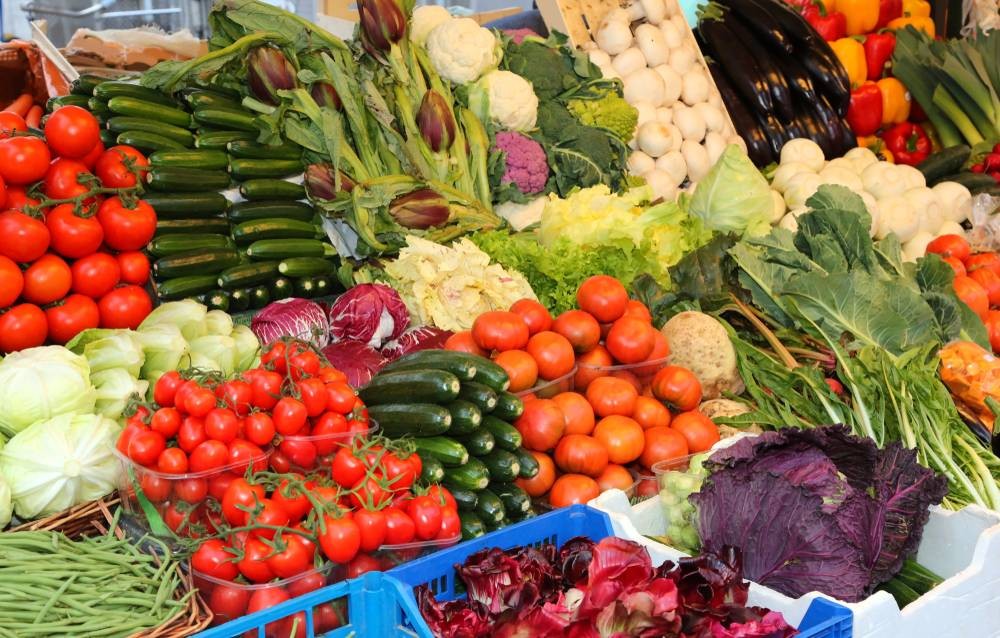
- 14 Feb 2025
In News:
To enhance the efficacy and wider adoption of MIS, the Government of India revised the guidelines in 2025.
Key Highlights:
- Objective: It aims to provide price support for perishable agricultural and horticultural commodities not covered under the Minimum Support Price (MSP) regime. It prevents distress sales during periods of excessive production and sharp price declines.
- Implementing Authority:The scheme is under the Department of Agriculture & Farmers’ Welfare and is now a component of the PM-AASHA (Pradhan Mantri AnnadataAaySanrakshan Abhiyan) umbrella scheme.
- Eligibility & Activation:
- Implemented on the request of State/UT Governments.
- Triggered when market prices fall by at least 10% compared to the average price of the previous normal year.
- Nature of the Scheme:
- Ad-hoc price support mechanism operational during sudden market crashes.
- Cost-sharing pattern between Centre and States is 50:50, and 75:25 for North-Eastern states.
- Procurement Provisions (Revised 2025):
- Procurement limit increased from 20% to 25% of total production of the crop.
- Direct Benefit Transfer (DBT) mode introduced: States may directly compensate farmers for the price difference between Market Intervention Price (MIP) and actual selling price.
- Physical procurement is optional under the revised scheme.
- Authorized Procurement Agencies:
- Central Nodal Agencies like NAFED (National Agricultural Cooperative Marketing Federation of India) and NCCF (National Cooperative Consumers’ Federation of India).
- Farmer Producer Organizations (FPOs), Farmer Producer Companies (FPCs), and state-nominated agencies can also participate in procurement, storage, and transportation.
- Support for Transportation and Storage:
- Reimbursement of storage and transport costs is provided by Central Nodal Agencies for TOP crops (Tomato, Onion, Potato).
- This provision helps balance regional price disparities between producing and consuming states.
- Significance:
- The revamped MIS strengthens market resilience for perishable crop producers.
- Enhances State participation, reduces post-harvest losses, and ensures remunerative returns through institutional and technological support mechanisms.
India introduces HS Code for GI-Tagged Rice Exports

- 13 Feb 2025
In News:
India has amended the Customs Tariff Act, 1975, becoming the first country in the world to introduce a Harmonised System (HS) code for Geographical Indication (GI)-tagged rice varieties. This was announced in the Union Budget 2025–26.
Key Features of the Amendment
- HS Code Introduced For:
- 1006-30-11 – GI-tagged parboiled rice
- 1006-30-91 – GI-tagged white rice
- Objective:
- To enable uninterrupted exports of GI rice even during general export restrictions or bans.
- GI rice exports will not require special government notification during such bans.
About Harmonised System (HS) Code
- Full Form: Harmonised System Code
- Developed by: World Customs Organization (WCO)
- Structure: 6-digit global standard; India uses an 8-digit extension for more specific classification.
- Purpose: Classification of traded goods for customs, tariffs, and trade statistics.
- HS Code Hierarchy:
- First 2 digits: Chapter (e.g., “10” for cereals)
- Next 2 digits: Heading (e.g., “06” for rice)
- Last 2 digits: Subheading (e.g., “30” for semi-milled or wholly milled rice)
Impact on GI Rice Exports
- Facilitates global market access for Indian specialty rice varieties.
- Differentiates GI-tagged rice from conventional rice in trade documents.
- Prevents mislabeling and misuse of India’s GI rice identity.
- Allows exports of GI rice even under export bans, without fresh government clearance.
GI-Tagged Rice Varieties in India
- 20 GI-recognized rice varieties, including:Navara, Palakkadan Matta, Pokkali, Wayanad Jeerakasala, etc.
- 20 pending GI applications, including:Seeraga Samba, Jammu & Kashmir Red Rice, Wada Kolam Paddy, etc.
About the World Customs Organization (WCO)
- Established in 1952 as the Customs Co-operation Council; renamed WCO in 1994.
- Headquarters: Brussels, Belgium.
- Membership: 183 customs administrations, including India, covering 98% of global trade.
- Key Functions:
- Maintains and updates the HS Code every 5 years.
- Drives customs modernization through instruments like the Revised Kyoto Convention (RKC).
- Coordinates anti-smuggling, anti-counterfeiting, and trade enforcement efforts.
- Collaborates with global institutions like the WTO and UN to enhance trade efficiency.
Restructured National Bamboo Mission (NBM)

- 12 Feb 2025
In News:
The National Bamboo Mission (NBM) was initially launched in 2006 under the Ministry of Agriculture & Farmers Welfare to promote bamboo-based development. Between 2014–2016, it was subsumed under the Mission for Integrated Development of Horticulture (MIDH).
In 2018-19, it was restructured under the National Mission for Sustainable Agriculture (NMSA) as a Centrally Sponsored Scheme (CSS) to revamp bamboo cultivation, processing, and value chain integration.
A key reform was the 2017 amendment to the Indian Forest Act, 1927, which removed bamboo grown outside forests from the definition of “tree.” This de-regulated its felling and transit, boosting private bamboo farming and easing trade.
Objectives
- Increase the availability of quality planting materials and expand area under bamboo cultivation, especially in non-forest land.
- Promote post-harvest management, primary treatment, seasoning, and preservation technologies.
- Develop market infrastructure, incubation centers, and tools & equipment for value addition.
- Encourage value-added product development, skill development, and entrepreneurship.
- Reduce import dependency on bamboo and bamboo-based products.
Funding Pattern
- General States: 60% Central and 40% State funding.
- Northeastern & Hilly States: 90% Central and 10% State.
- Union Territories, BTSGs & National Level Agencies: 100% Central funding.
Implementation Framework
- Implemented through the State Nodal Departments, nominated by respective State/UT governments.
- Notable example: Bareilly Bamboo Cluster operational in Shahjahanpur district, Uttar Pradesh, since 2019-20, with activities like nursery establishment, bamboo plantation, skill development, and bamboo product demonstration.
Bamboo – Ecological & Economic Significance
- Botanical Classification: Grass (Family: Poaceae, Subfamily: Bambusoideae), ~115 genera and ~1,400 species globally.
- Native to tropical, subtropical, and mild temperate zones, with highest concentration in East and Southeast Asia.
Properties & Applications:
- Carbon Sequestration: Produces 35% more oxygen than comparable vegetation; acts as a natural carbon sink.
- Climate Adaptability: Thrives in degraded lands; prevents soil erosion; vital for land restoration.
- Alternative Energy Source: Among the fastest-growing plants (up to 90 cm/day); can substitute fossil fuels.
- Food & Medicine: Bamboo shoots are consumed in Northeast India; roots and parts used in traditional medicine.
- Livelihood Support: Flexible harvest cycles provide year-round income for farmers.
Bamboo Production Status in India
- 18,000+ inventoried grids reported bamboo presence between 2016–17 to 2019–20.
- Estimated total bamboo culms: 53,336 million.
- 35.19% increase in bamboo culms from ISFR 2019 to ISFR 2021 (an increase of 13,882 million culms).
Restructured Skill India Programme (2022–2026)
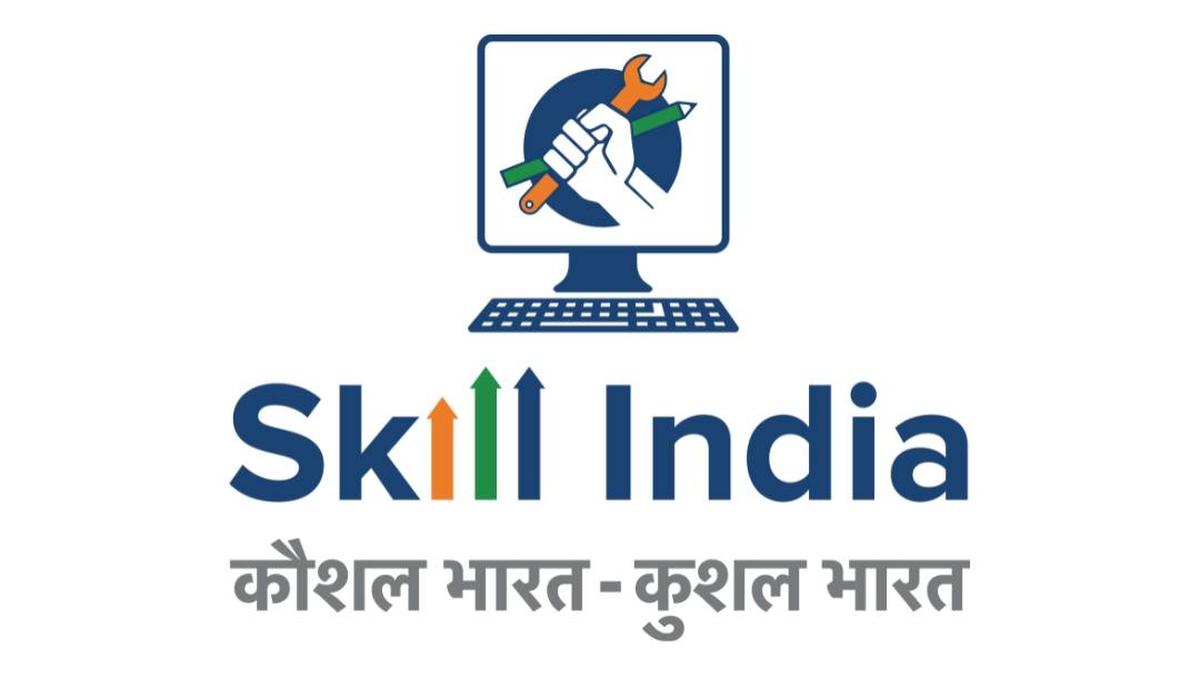
- 12 Feb 2025
In News:
The Union Cabinet has approved the continuation and restructuring of the Skill India Programme (SIP) till March 2026, with a financial outlay of ?8,800 crore.
The revamped programme consolidates three flagship schemes under a composite Central Sector Scheme—Pradhan Mantri Kaushal Vikas Yojana 4.0 (PMKVY 4.0), Pradhan Mantri National Apprenticeship Promotion Scheme (PM-NAPS), and Jan ShikshanSansthan (JSS)—with the aim to build a skilled, future-ready workforce.
Objectives and Vision
- Strengthen workforce development through industry-aligned, technology-enabled, and demand-driven skill training.
- Enhance global competitiveness, promote international mobility, and align with India's economic priorities such as Atmanirbhar Bharat, Make in India, and Digital India.
- Enable lifelong learning, skilling, reskilling, and upskilling through inclusive, flexible, and community-based training.
Beneficiaries and Coverage
- Over 2.27 crore individuals have benefited so far.
- Targeted age groups vary across schemes:
- PMKVY 4.0: 15–59 years
- PM-NAPS: 14–35 years
- JSS: 15–45 years
- Emphasis on marginalized sections, women, rural youth, aspirational districts, and the North-East Region.
Key Components of the Restructured Programme
1. Pradhan Mantri Kaushal Vikas Yojana 4.0 (PMKVY 4.0)
- Offers NSQF-aligned training via:
- Short-Term Training (STT)
- Special Projects (SP)
- Recognition of Prior Learning (RPL)
- Introduces 400+ new courses in emerging fields:
- Artificial Intelligence (AI), 5G, Cybersecurity, Green Hydrogen, Drone Technology.
- Establishment of Skill Hubs in premier institutions (IITs, NITs, JNVs, KendriyaVidyalayas, etc.).
- Focus on international mobility:
- Mobility Partnership Agreements (MMPAs), joint certifications, and language proficiency training.
- Blended learning models with digital delivery and regional language content.
- Integration with schemes such as PM Vishwakarma, PM Surya GharMuft Bijli Yojana, National Green Hydrogen Mission, and NAL JAL Mitra.
- Adoption of an Ease of Doing Business framework to reduce compliance burdens.
2. Pradhan Mantri National Apprenticeship Promotion Scheme (PM-NAPS)
- Promotes earn-while-you-learn through industry-specific apprenticeships.
- Government support of 25% stipend (up to ?1,500/month per apprentice) via Direct Benefit Transfer (DBT).
- Focus on both traditional and emerging sectors like AI, robotics, blockchain, green energy, and Industry 4.0.
- Encourages participation of MSMEs and enterprises in underserved regions.
3. Jan ShikshanSansthan (JSS) Scheme
- Community-based skilling for economically disadvantaged, rural youth, and women.
- Offers low-cost, flexible, doorstep training for both self-employment and wage-based livelihoods.
- Linked with initiatives such as PM JANMAN, ULLAS, and financial literacy campaigns.
- Also promotes awareness in health, hygiene, gender equality, and education.
Certification and Digital Integration
- All certifications are aligned with the National Skills Qualification Framework (NSQF).
- Integrated with DigiLocker and the National Credit Framework (NCrF), ensuring:
- Formal recognition of skills.
- Horizontal and vertical mobility in education and employment.
- Micro-credential courses (7.5 to 30 hours) and National Occupational Standards (NoS)-based training introduced.
Supporting Schemes and Initiatives
- SANKALP(Skill Acquisition and Knowledge Awareness for Livelihood Promotion).
- TEJAS (Skilling for international placement).
- Model Skill Loan Scheme.
Significance of Skill India Programme
- Demographic Dividend: With over 65% of India’s population below 35, the programme is pivotal in transforming potential into productivity.
- Employment & Entrepreneurship: Reduces unemployment through structured training, apprenticeships, and encourages skill-based startups.
- Global Workforce Readiness: Aligns with international standards, enabling Indian workers to access global job markets.
- Technological Preparedness: Equips the youth with skills in futuristic technologies.
- Inclusive Growth: Ensures urban-rural and gender-based equity in skilling access.
- Economic Impact: Supports India's manufacturing, IT, and services sectors, driving GDP growth.
India Achieves 100 GW Solar Power Capacity
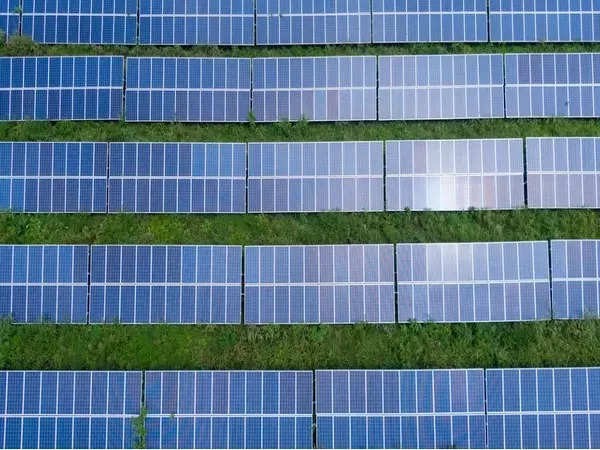
- 12 Feb 2025
In News:
India has officially surpassed 100 GW of installed solar power capacity as of January 31, 2025, marking a historic milestone in its clean energy journey. This achievement strengthens India’s position as a global leader in renewable energy and signifies major progress toward its ambitious target of 500 GW non-fossil fuel capacity by 2030, as outlined by Prime Minister Narendra Modi.
Union Minister of New and Renewable Energy, highlighted this milestone as a testament to India’s energy self-reliance, driven by key initiatives such as solar parks, rooftop solar schemes, and domestic solar manufacturing.
Growth Trajectory and Achievements
- Installed Capacity Growth:
- From 2.82 GW in 2014 to 100.33 GW in 2025 – a growth of 3450% over a decade.
- Solar energy now accounts for 47% of India’s total installed renewable energy capacity.
- Capacity Pipeline:
- 84.10 GW of solar under implementation.
- 47.49 GW under tendering.
- Including hybrid and RTC renewable projects, India has 296.59 GW of solar and hybrid projects in total.
- Record Additions in 2024:
- 24.5 GW solar capacity added, more than double from 2023.
- 18.5 GW utility-scale installations – a 2.8 times increase from 2023.
- 4.59 GW of rooftop solar added, a 53% increase over 2023.
- Top States in utility-scale solar growth:Rajasthan, Gujarat, Tamil Nadu, Maharashtra, and Madhya Pradesh.
Solar Manufacturing Boom
- Solar module production capacity has grown from 2 GW (2014) to 60 GW (2024).
- With continued policy support, India is targeting 100 GW of manufacturing capacity by 2030.
- This shift makes India a global hub for solar technology and reduces reliance on imports.
Major Government Initiatives Driving Solar Growth
- National Solar Mission (NSM) (2010):Set long-term targets, with 280 GW of solar capacity by 2030 under its ambit.
- PM SuryaGharMuft Bijli Yojana (2024):
- A game-changing rooftop solar scheme aiming to empower households with free, clean electricity.
- Nearly 9 lakh rooftop installations as of early 2025.
- PM-KUSUM Scheme:Promotes solar irrigation pumps and supports farmers with grid-connected solar systems.
- Solar Parks Scheme:Facilitates development of large-scale solar clusters in states to boost capacity.
- Production-Linked Incentive (PLI) Scheme:Incentivizes domestic manufacturing of solar PV modules.
- Net Metering Policy:Allows consumers to generate and export surplus solar power to the grid.
- International Solar Alliance (ISA):India-led global initiative fostering solar energy cooperation among solar-rich countries.
Benefits of Solar Energy for India
- Energy Security: Reduces dependence on fossil fuel imports.
- Environmental Gains: Cuts GHG emissions and combats climate change.
- Economic Boost: Millions of jobs created across installation, manufacturing, and maintenance.
- Affordability: Declining PV costs make solar a cost-effective energy source.
- Rural Electrification: Powers remote and off-grid regions, improving livelihoods.
Challenges and the Way Forward
- Land Acquisition: Scarcity of land hinders large-scale solar deployment.
- Grid Integration: Intermittency of solar power stresses the existing power grid.
- Finance & Investment: Scaling up infrastructure and storage requires sustained capital inflow.
- Storage Solutions: Affordable battery storage is essential for reliability and round-the-clock supply.
GREAT Scheme
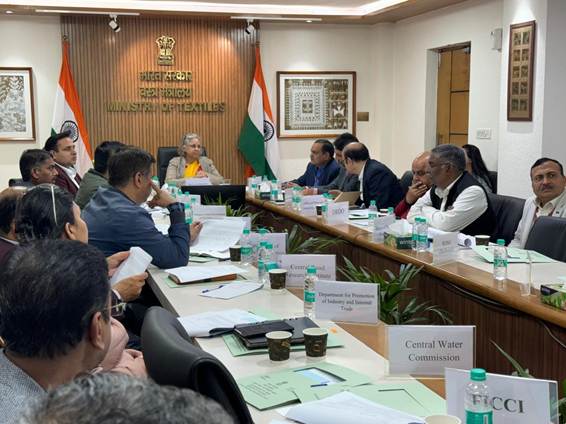
- 10 Feb 2025
In News:
The Grant for Research & Entrepreneurship across Aspiring Innovators in Technical Textiles (GREAT) scheme, launched in August 2023 under the National Technical Textiles Mission (NTTM), aims to promote startup-led innovation and entrepreneurship in the rapidly growing sector of technical textiles in India.
As of February 2025, the government has approved four startups under the scheme, providing them with financial assistance to develop commercially viable innovations.
About the GREAT Scheme:
- Objective: To encourage young innovators, scientists, and startups in the technical textiles domain to convert ideas into market-ready products or functional prototypes.
- Implementation: Operated by the Ministry of Textiles under the R&D and Innovation Component of the NTTM.
- Financial Support:
- Grants of up to Rs.50 lakh for a period of up to 18 months.
- 10% upfront contribution from startups (e.g., ?5 lakh for a ?50 lakh grant).
- No royalty or equity required by the government.
- Approved Projects: Focus areas include Medical Textiles, Industrial Textiles, and Protective Textiles.
Complementary Initiatives under NTTM:
Academic and Skill Development:
- Education Institutes:
- ?6.5 crore approved for 3 academic institutes, including IIT Indore and NIT Patna, to introduce new courses in Geotextiles, Sports Textiles, Protective Textiles, and more.
- Skill Training:
- 12 Skill Development Courses launched across application areas such as Medical, Agricultural, Mobile, and Protective Textiles.
- Developed by leading Textile Research Associations: SITRA, NITRA, and SASMIRA.
- Aim to train stakeholders across the technical textile value chain.
National Technical Textiles Mission (NTTM): An Overview
- Launched: 2020
- Nodal Ministry: Ministry of Textiles
- Total Outlay: ?1,480 crore
- Mission Goals:
- Make India a global leader in technical textiles.
- Expand the market size to $40–50 billion with 15–20% annual growth.
- Increase domestic penetration and usage of high-performance technical textiles.
Four Key Components:
- Research, Innovation, and Development
- Promotion and Market Development
- Export Promotion
- Education, Training, and Skill Development
- Sectoral Focus:Agro-textiles, Geotextiles, Medical Textiles, Industrial Textiles, Mobile Textiles, Home Textiles, Sports Textiles, Protective Textiles, and others.
- Policy Support:Includes integration with PLI schemes, PM MITRA Parks, and formulation of quality control regulations to strengthen manufacturing capabilities.
Significance for India’s Development:
- Encourages Atmanirbhar Bharat through self-reliant manufacturing and innovation.
- Strengthens India's competitiveness in high-end technical textiles for defense, healthcare, agriculture, infrastructure, and disaster response.
- Bridges the gap between lab-level R&D and market-ready products, especially by supporting startups in early innovation stages.
Grameen Credit Score

- 10 Feb 2025
In News:
The Union Budget 2025–26 introduced the Grameen Credit Score (GCS) framework as a targeted initiative to enhance access to formal credit for Self-Help Groups (SHGs) and the rural population. It reflects the government’s commitment to financial inclusion, rural empowerment, and inclusive development.
What is the Grameen Credit Score?
- The Grameen Credit Score is a rural-specific credit evaluation framework being developed by Public Sector Banks.
- It aims to formalize the credit behavior and transaction history of SHG members and rural individuals, especially women entrepreneurs, and integrate them into India’s central credit ecosystem.
- Unlike conventional credit scores (like CIBIL or CRIF Highmark), GCS is tailored to assess creditworthiness based on local financial behavior, such as SHG repayment records, informal lending history, and community participation.
Key Features and Objectives:
- Improved Credit Assessment:
- Bridges the gap in the current credit bureau systems, which often overlook rural borrowers and SHG members.
- Uses digital records and behavioral insights to provide a customized and accurate credit profile.
- Financial Inclusion:
- Targets women-led SHGs to provide better access to loans, credit cards, and microfinance products.
- Encourages rural borrowers to understand and monitor credit scores, EMIs, and repayment cycles.
- Customized Financial Products:
- Linked with the introduction of custom credit cards for micro-enterprises with credit limits of up to ?5 lakh.
- Facilitates product innovation for grassroots entrepreneurs in agriculture, MSMEs, and allied sectors.
- Support for Broader Rural Ecosystems:
- Integrated with initiatives like the SVAMITVA Scheme for property records digitization.
- Complements reforms like the transformation of India Post into a rural logistics backbone and support for cooperative sectors via the NCDC.
- Economic Empowerment:
- By expanding credit access and improving repayment discipline, GCS is expected to:
- Boost rural entrepreneurship
- Strengthen economic resilience of rural households
- Support the long-term development of the rural economy
- By expanding credit access and improving repayment discipline, GCS is expected to:
Impact on Rural Development and SHGs:
- Empowers rural women through financial independence and enterprise development.
- Enhances formal credit linkage of SHGs, reducing reliance on informal moneylenders.
- Promotes financial literacy and long-term economic stability in villages.
- Aims to be a catalyst for poverty alleviation and inclusive growth.
India-Japan Steel Dialogue
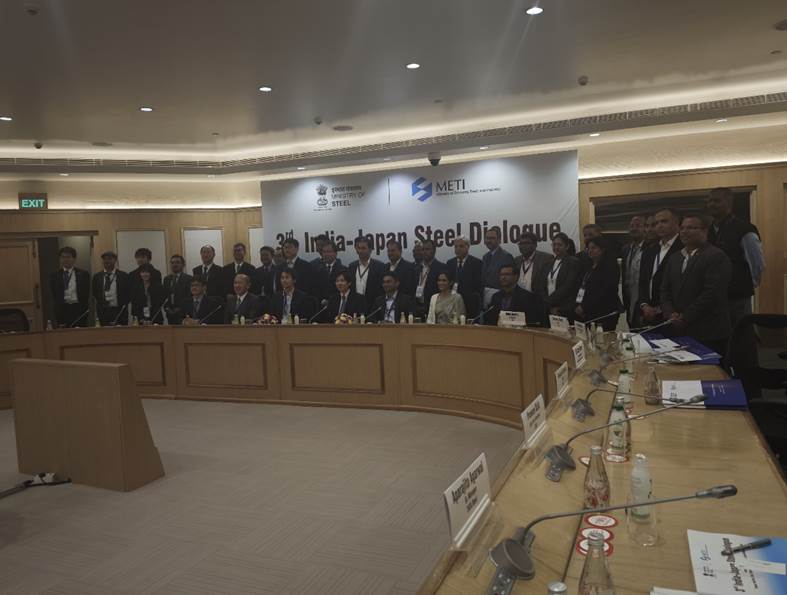
- 10 Feb 2025
In News:
The 3rd India-Japan Steel Dialogue was held on February 4, 2025, at Vigyan Bhavan, New Delhi, as part of the institutional mechanism under the Memorandum of Cooperation (MoC) signed between the two nations in December 2020. The dialogue was co-chaired by senior officials from India’s Ministry of Steel and Japan’s Ministry of Economy, Trade and Industry (METI).
Key Highlights and Strategic Focus Areas:
- Bilateral Steel Cooperation:The dialogue served as a platform to deepen cooperation in areas such as technology exchange, workplace safety, product diversification, and capacity building. Both nations reviewed progress under existing initiatives and reaffirmed commitment to long-term collaboration in the steel sector.
- Ease of Doing Business & Investment Support:India reiterated its commitment to facilitating ease of doing business for Japanese companies, while Japan assured continued technological and financial support for investments in advanced steel technologies in India.
- Sustainable Steel Production:India showcased recent initiatives like the Green Steel Report and the Taxonomy of Green Steel, underlining efforts to align steel production with sustainability goals and climate commitments.
- Demographic & Market Advantages:The Indian delegation highlighted the growing domestic demand driven by infrastructure investments, and the potential of India’s demographic dividend to attract foreign investment in the steel sector.
- Global Regulatory Issues – EU CBAM:Both sides discussed the European Union’s Carbon Border Adjustment Mechanism (EU CBAM), which seeks to impose carbon pricing on imports in sectors such as iron and steel, aluminum, cement, fertilizers, electricity, and hydrogen.
- CBAM Phase Timeline:
- Transitional Phase: 2023–2025 (reporting obligations)
- Full Implementation: From 2026 (financial obligations imposed)
- CBAM Phase Timeline:
Relevance:
CBAM has major implications for international steel trade, necessitating cleaner production methods and greater transparency in carbon emissions data.
Makhana Board
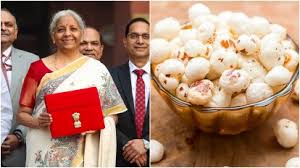
- 06 Feb 2025
In News:
In the Union Budget 2025–26, Finance Minister announced the establishment of a Makhana Board in Bihar with a dedicated budget of ?100 crore to boost the production, processing, and export of Makhana (Fox Nuts).
About Makhana (Fox Nuts):
- Botanical Name: Euryale ferox
- Family: Nymphaeaceae (Water lily family)
- Description:
- Makhana is the dried edible seed of the prickly water lily.
- Grown in freshwater bodies across South and East Asia.
- The plant is known for its violet and white flowers and large, round, prickly leaves.
- Due to its black outer covering, Makhana is nicknamed the "Black Diamond."
Nutritional and Medicinal Value:
- Low in fat, rich in carbohydrates, and a good source of protein and minerals.
- Widely used in:
- Traditional medicine
- Health and wellness products
- Culinary preparations such as popped Makhana (‘Lava’)
Major Producing Regions:
- India:
- Bihar produces 90% of India’s total Makhana, especially in the Mithilanchal region.
- Key districts: Darbhanga, Madhubani, Purnea, Katihar, Saharsa, Supaul, Araria, Kishanganj, Sitamarhi.
- The first four districts contribute 80% of Bihar’s Makhana output.
- Bihar produces 90% of India’s total Makhana, especially in the Mithilanchal region.
- Other Indian states: Assam, Manipur, West Bengal, Tripura, Odisha.
- Other countries: Nepal, Bangladesh, China, Japan, Korea.
- GI Tag: Mithila Makhana received the Geographical Indication (GI) tag in 2022.
Climatic Conditions for Cultivation:
- Type: Aquatic crop; grows in stagnant water bodies (ponds, lakes, wetlands).
- Ideal Conditions:
- Water Depth: 4–6 feet
- Temperature: 20°C – 35°C
- Relative Humidity: 50% – 90%
- Annual Rainfall: 100 – 250 cm
About the Makhana Board:
- Allocated Budget: ?100 crore
- Objectives:
- Train farmers in advanced cultivation techniques.
- Support processing and value addition in the Makhana supply chain.
- Facilitate financial aid and access to government schemes.
- Develop export infrastructure and promote branding and marketing.
Makhana under ODOP Scheme:
- Recognized as a One District One Product (ODOP) commodity for Bihar.
- Under ODOP, the Union Government provides subsidies to processors for:
- Infrastructure development
- Branding and marketing
About ODOP Scheme:
- Launched by: Ministry of Food Processing Industries (MoFPI)
- Objective: Promote district-level economic specialization and turn each district into an export hub.
- Origin: First launched in Uttar Pradesh (2018); adopted as a national initiative under the Atmanirbhar Bharat vision.
- Implementation:
- In coordination with the ‘Districts as Export Hubs’ (DEH) initiative.
- Managed by DGFT, Department of Commerce, and DPIIT.
- Significance:
- Encourages rural entrepreneurship, local employment, and global trade linkages.
- Strengthens district economies by scaling up traditional and unique products.
SwaRail SuperApp

- 05 Feb 2025
In News:
The Ministry of Railways has launched a unified mobile application, SwaRail, currently in beta testing as of January 31, 2025.
This initiative aims to streamline access to Indian Railways services and enhance user experience by consolidating various apps into a single digital platform.
Key Highlights
What is SwaRail?
- SwaRail is a SuperApp developed by the Centre for Railway Information Systems (CRIS).
- It serves as a comprehensive, one-stop solution for a wide range of Indian Railways services.
- The app is currently in beta testing and is available on the Google Play Store and Apple App Store.
Objective
- To integrate multiple railway-related services under a unified platform.
- To reduce app clutter and device storage consumption.
- To improve user experience through a seamless and intuitive interface.
Developed By: Centre for Railway Information Systems (CRIS)
- CRIS is an organization under the Ministry of Railways.
- It combines IT expertise with railway operational experience.
- CRIS is responsible for developing and maintaining software for core railway functions.
Services Offered via SwaRail
The SuperApp merges functionalities of multiple existing apps, offering:
- Ticketing Services
- Reserved ticket booking
- Unreserved and platform ticket booking
- Freight & Parcel Enquiries
- Parcel booking status
- Freight services information
- Passenger Enquiries
- Real-time train status
- PNR enquiry (along with associated train details)
- Train schedules
- Onboard Services
- Food ordering while traveling
- Complaint redressal via Rail Madad
Notable Features of the SuperApp
Feature Description
Single Sign-On Access all services using a single set of credentials
Unified App Combines multiple previously separate apps (e.g., IRCTC RailConnect, UTS)
Integrated Interface Displays consolidated data like PNR + train info on the same screen
Easy Onboarding Existing users can log in with RailConnect/UTS credentials
Multiple Login Modes Supports m-PIN, biometric authentication, and OTP-based guest login
Smart Wallet Integration Auto-linking of R-Wallets from UTS App for ticket booking transactions
User-Centric Approach
- The app is being actively tested, and users are encouraged to provide feedback during the beta phase.
- CRIS is monitoring performance and issues for improvement before the final public release.
- The government envisions technological integration to ensure efficient, smarter, and citizen-friendly rail services.
PM Shram Yogi Maandhan Yojana (PM-SYM)
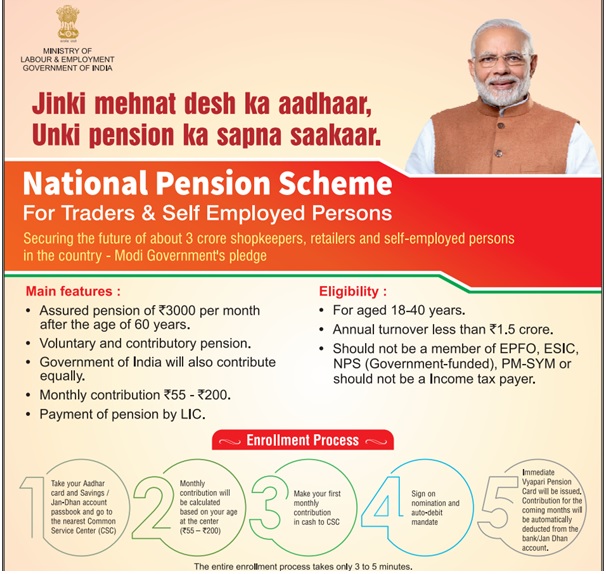
- 04 Feb 2025
In News:
The Union Budget 2025–26 has accorded the highest-ever allocation of ?32,646 crore to the Ministry of Labour and Employment, representing an 80% increase over the previous year's Revised Estimates.
The enhanced funding reflects the government's strategic focus on employment generation and strengthening social security mechanisms for unorganised workers and gig economy participants.
Key Budgetary Highlights:
1. Employment Generation Scheme:
- ?20,000 crore has been allocated to the new Employment Generation Scheme, double the previous year’s allocation.
- The scheme is aimed at fostering large-scale employment opportunities and skilling across various sectors.
2. Employees’ Pension Scheme:
- Allocation increased by ?300 crore, strengthening retirement security for formal sector workers.
3. PM Shram Yogi Maandhan Yojana (PM-SYM):
- Allocation increased by 37% compared to last year.
- The scheme provides old-age social security to unorganised workers through a voluntary, contributory pension model.
About Pradhan Mantri Shram Yogi Maandhan Yojana (PM-SYM)
Objective:
To provide minimum assured pension and social security to unorganised sector workers, including street vendors, construction workers, agriculture laborers, domestic workers, etc.
Eligibility:
- Indian citizen aged 18–40 years
- Monthly income below ?15,000
- Not a member of EPFO, ESIC, or NPS
Key Features:
- Minimum Assured Pension: ?3,000 per month after 60 years of age.
- Voluntary and Contributory Scheme:
- Contributions made via auto-debit from bank accounts.
- 50:50 matching contribution by the Central Government.
- Pension Fund Management:
- Administered by the Ministry of Labour and Employment.
- Implemented by LIC and CSC e-Governance Services India Ltd.
- LIC acts as the Pension Fund Manager.
Family Pension Provision:
- In case of subscriber's death:
- Spouse receives 50% of the pension amount as family pension.
- If death occurs before 60 years, the spouse may continue contributions or exit the scheme as per norms.
Exit Provisions:
- Exit before 10 years: Subscriber's share with accrued interest is returned.
- Exit after 10 years but before 60 years: Entire contribution with interest returned to the subscriber.
Social Security for Gig Workers
Recognising the gig economy as a critical pillar of India’s modern workforce, the government has taken key steps to enhance their social security:
- e-Shram registration
- Provision of unique identity cards
- Access to healthcare benefits under PM Jan Arogya Yojana
- Expected to benefit around 1 crore gig workers
National Geospatial Mission
- 03 Feb 2025
In News:
Finance Minister Nirmala Sitharaman announced the launch of a National Geospatial Mission in the Budget 2025-26.
Key Highlights:
Objective: To modernize land records, enhance urban planning, and create a robust geospatial infrastructure to support India’s broader development goals, including sustainable growth, efficient governance, and improved public service delivery.
Key Features of the Mission:
- Modernization of Land Records:
- Digitization and updation of land records using geospatial technology.
- Aim to reduce land disputes and promote efficient and transparent land use.
- Urban and Infrastructure Planning:
- Provides high-resolution geospatial data for informed urban planning.
- Supports better design and execution of infrastructure through integration with the PM Gati Shakti framework.
- Development of National Geospatial Data Infrastructure (NGDI):
- Integrates geospatial data from multiple departments and ministries.
- Enables seamless access and interoperability for users across sectors.
- Open Geospatial Data Policy:
- Encourages private sector participation by allowing access to non-sensitive, high-resolution data.
- Reduces reliance on foreign geospatial data providers.
- Sectoral Impact:
- Agriculture: Precision farming, resource mapping, and yield optimization.
- Disaster Management: Enhances early warning systems and response planning.
- Environmental Monitoring: Facilitates conservation, deforestation tracking, and ecosystem health analysis.
- Transportation: Improves logistics, routing, and infrastructure placement.
- Climate Monitoring: Aids in data-driven climate action and adaptation planning.
- Technological Integration:
- Utilizes emerging technologies such as AI, drones, and quantum computing for spatial data collection and analysis.
- Promotes research and development in geospatial science to drive innovation.
- Support to Private Sector:
- Anticipated growth in demand for services from geospatial startups, drone companies, and mapping enterprises.
- Strengthens India’s indigenous geospatial capability aligned with the booming global geospatial market (projected to reach $1,064 million by 2030).
Significance and Alignment with National Goals:
- Enhances transparency and efficiency in land governance.
- Contributes to sustainable urban development.
- Aligns with Digital India and Atmanirbhar Bharat by reducing data dependency on foreign sources.
- Acts as a foundational enabler for India’s development agenda, particularly in areas of resource management, climate resilience, and national security.
PM Dhan Dhanya Krishi Yojana
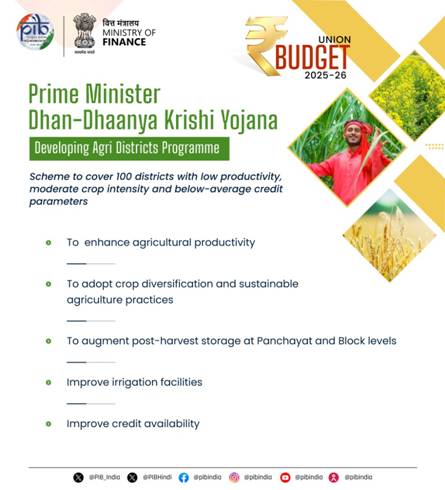
- 03 Feb 2025
In News:
- Recently, the Union Government has introduced the PM Dhan Dhanya Krishi Yojana which aims at enhancing agricultural productivity.
- Objective: To boost agricultural productivity, modernize farming practices, and enhance rural prosperity by addressing region-specific challenges in backward agricultural districts.
Key Features:
- Integrated Approach:
- Consolidates multiple existing agricultural schemes under one umbrella for greater synergy and implementation efficiency.
- Draws inspiration from the Aspirational Districts Programme, which has improved socio-economic outcomes in backward regions.
- District-Specific Interventions:
- Focuses on districts with:
- Low crop productivity
- Moderate crop intensity
- Limited institutional credit access
- Implements customized strategies based on the unique challenges of each region.
- Focuses on districts with:
- Core Focus Areas:
- Enhancing farm productivity through modern technology.
- Improving irrigation infrastructure.
- Increasing formal credit availability to reduce dependence on informal moneylenders.
- Promoting crop diversification and sustainable agriculture.
- Strengthening post-harvest infrastructure like storage at Panchayat and block levels.
- Technology-Driven Solutions:
- Encourages adoption of climate-resilient and precision farming.
- Supports digital access to credit and advisory services.
- Financial Inclusion:
- Strengthens linkages with government financial programs, microfinance institutions, and banks.
- Aims to reduce rural indebtedness and promote formal financial participation.
- State and Centre Collaboration: Implementation will involve both central and state governments, ensuring localized solutions with national support.
- Reducing Distress Migration: By improving rural livelihoods and opportunities, the scheme aims to make migration a choice rather than a compulsion.
National Bank for Financing Infrastructure and Development (NaBFID)

- 03 Feb 2025
In News:
In the Union Budget 2025, Finance Minister Nirmala Sitharaman announced that the National Bank for Financing Infrastructure and Development (NaBFID) will set up a partial credit enhancement facility to promote corporate bond issuance in the infrastructure sector.
Need for Credit Enhancement:
- Pension and insurance funds in India, as per regulatory norms, can invest only in AA-rated or higher securities.
- Most infrastructure firms issue bonds rated below this threshold (often "A" rated).
- Partial credit enhancement will elevate such bonds to AA ratings, enabling large-scale participation from long-term institutional investors.
Significance:
- Currently, pension and insurance funds prefer government bonds. However, with the government's ongoing fiscal consolidation, sovereign bond issuance is expected to decline.
- This measure provides alternative, long-term investment avenues for these funds.
- Enhances liquidity in the corporate bond market, especially for infrastructure players.
- Helps in reducing infrastructure companies' dependence on banks for funding.
About NaBFID:
- Established: 2021 under The National Bank for Financing Infrastructure and Development Act, 2021.
- Type: Development Finance Institution (DFI).
- Regulator: Reserve Bank of India (RBI) as an All-India Financial Institution (AIFI).
- Purpose: Bridge gaps in long-term, non-recourse infrastructure financing and promote bond and derivatives markets in India.
Development Finance Institutions (DFIs):
- Government-owned or public sector-backed institutions that finance large-scale, long-gestation projects.
- Provide medium (1–5 years) and long-term (>5 years) financing.
- Raise funds via sovereign borrowings, insurance companies, pension funds, and sovereign wealth funds.
- Offer both financial support (loans, guarantees) and technical support (project viability, consultancy).
- Do not accept public deposits.
Benefits of Partial Credit Enhancement:
- Democratizes access to the corporate bond market for sub-AA-rated firms.
- Attracts long-term capital into infrastructure through safer, credit-enhanced instruments.
- Promotes diversification and deepening of India's debt markets.
- Makes infrastructure financing more cost-efficient and sustainable over the long term.
Challenges Ahead:
- Regulatory streamlining is essential.
- Guarantee fees need optimization to ensure cost competitiveness against traditional bank lending.
National Manufacturing Mission
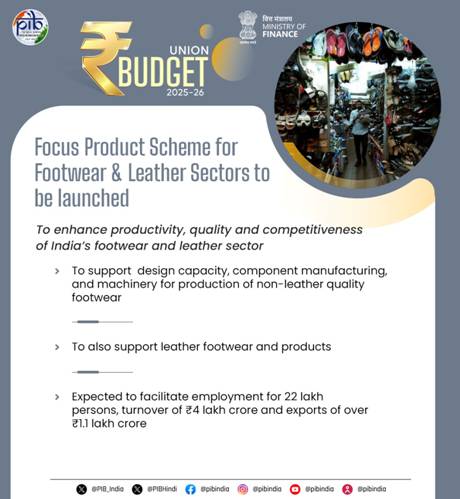
- 02 Feb 2025
In News:
- The National Manufacturing Mission (NMM) has been launched to accelerate India’s transition into a global manufacturing hub.
- This mission is a key component of the Make in India initiative and aims to raise the manufacturing sector’s contribution to GDP from 17% to 25% by 2025.
Scope & Coverage
- Targets small, medium, and large industries across sectors.
- Provides a comprehensive support framework involving policy guidance, execution roadmaps, and governance structures for central ministries and state governments.
Five Core Focus Areas:
- Ease and cost of doing business
- Skilling for future-ready jobs
- Support for a dynamic MSME sector
- Technology availability and innovation
- Enhancement of product quality
Clean Tech Manufacturing Focus
In line with India's sustainable development goals, the mission will promote domestic value addition and build robust manufacturing ecosystems for:
- Solar PV cells
- Electric vehicle (EV) batteries
- Motors and controllers
- Electrolyzers
- Wind turbines
- Very high-voltage transmission equipment
- Grid-scale batteries
Strategic Objective: Reduce reliance on Chinese imports and integrate India into global clean tech supply chains.
MSME Sector Support
- Credit Guarantee Cover for MSMEs increased from ?5 crore to ?10 crore.
- Revised Classification Criteria: Investment and turnover limits enhanced by 2.5x and 2x, respectively.
- Aims to empower MSMEs with greater access to credit and growth incentives.
Sector-Specific Measures
1. Footwear & Leather Sector
- A new Focus Product Scheme will support:
- Design capacity
- Component manufacturing
- Machinery for non-leather and leather footwear
- Expected Impact:
- Employment for 22 lakh persons
- Turnover of ?4 lakh crore
- Exports over ?1.1 lakh crore
2. Toy Manufacturing – National Action Plan for Toys
- Objective: Make India a global hub for innovative and sustainable toys.
- Strategy:
- Develop manufacturing clusters
- Promote skilling and innovation
- Strengthen the ‘Made in India’ brand in the global toy market
3. Food Processing – ‘Purvodaya’ Focus
- Establishment of a National Institute of Food Technology, Entrepreneurship and Management in Bihar.
- Purpose:
- Boost food processing in Eastern India
- Enhance value addition for farmers
- Create employment and entrepreneurial opportunities
Financialisation
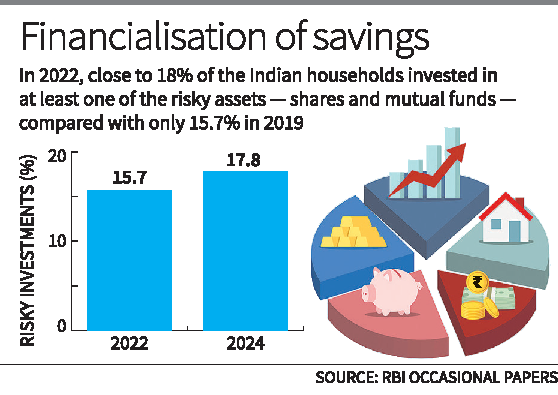
- 01 Feb 2025
In News:
The Economic Survey 2024–25 cautions against the risks of excessive financialisation in India, emphasizing that while finance is a crucial enabler of economic growth, unchecked expansion of the financial sector can pose systemic risks, increase inequality, and divert resources from the real economy.
What is Financialisation?
Financialisation refers to the growing dominance of financial markets, institutions, and motives in shaping economic policies, business decisions, and resource allocation. It involves:
- A shift from productive (real sector) activities like manufacturing to financial activities, including trading, speculation, and asset management.
- Increasing reliance on asset price growth (e.g., stocks, real estate) to stimulate the economy.
- Deep influence of financial motives in corporate governance, economic policies, and household behavior.
Key Drivers of Financialisation in India
- Increased household savings funneled into stock markets.
- Growing retail investor participation in equities and mutual funds.
- Policy and regulation increasingly influenced by financial market considerations.
- Rising public and private sector debt to leverage economic growth.
Risks Highlighted by the Economic Survey
- Real Sector Crowding Out: Over-expansion of the financial sector may compete with the real economy for scarce resources like skilled labour and capital, potentially depriving productive sectors.
- Unsustainable Booms: Rapid financial growth often favours high-collateral, low-productivity investments (e.g., construction) over innovation and manufacturing, creating unsustainable financial booms.
- Complex Financial Products: Proliferation of opaque and complex financial instruments can increase consumer risk exposure and the probability of a financial crisis, as seen during the 2008 global financial meltdown.
- Increased Inequality: Financialisation tends to transfer income from the real sector to the financial sector, worsening income inequality and contributing to wage stagnation.
- Debt Dependency: Over-reliance on financial leverage (debt) increases macro-financial vulnerabilities, especially if credit growth outpaces productive investment.
Global Lessons and Historical Context
- 2008 Global Financial Crisis: Reckless lending and financial engineering, including mortgage-backed securities, led to a global economic collapse. India was impacted indirectly, prompting RBI intervention to stabilise the economy.
- Examples from Ireland & Thailand: Rapid growth of private credit in these countries led to reduced productivity and economic distortions, serving as cautionary tales.
Balanced View on Finance
The Survey recognizes that a well-regulated financial system plays a vital role in:
- Channeling capital to innovative and high-risk ventures.
- Reducing transaction costs and improving price discovery.
- Alleviating poverty and inequality by enabling shock absorption for households and firms.
- Smoothing consumption across economic cycles.
However, the Survey emphasizes that there is a tipping point beyond which financial development becomes counterproductive.
Ultra-Processed Foods (UPFs)

- 01 Feb 2025
In News:
The Economic Survey 2024–25 underscores the adverse impact of Ultra-Processed Foods (UPFs) on public health, particularly among children and youth, and calls for urgent regulatory intervention.
Key Recommendations
- Stringent Front-of-the-Pack Labelling (FOPL): The Survey advocates for clear, enforceable FOPL rules to inform consumers, curb misleading nutrition claims, and restrict aggressive marketing, especially those targeted at children and adolescents.
- Stronger Role for FSSAI: The Food Safety and Standards Authority of India (FSSAI) is advised to:
- Define UPFs clearly in regulation.
- Establish labelling standards.
- Monitor compliance of branded products.
- ‘Health Tax’ Proposal: The Survey proposes higher taxes on UPFs, especially brands engaging in excessive advertising, to act as a deterrent and promote healthier food choices.
- Awareness and Education: It recommends targeted awareness campaigns in schools and colleges, integrated with broader health and lifestyle campaigns, to reduce the rising consumption of UPFs.
Why this matter
- Rising Consumption: According to a 2023 WHO report, India’s UPF consumption grew from $900 million (2006) to over $37.9 billion (2019).
- Long-term National Impact: India's ?2,50,000 crore UPF industry is built on hyper-palatability and is a threat to India’s demographic dividend, productivity, and future economic growth.
Health Risks of UPFs
- Directly linked to:
- Obesity
- Cardiovascular diseases
- Colorectal cancer
- Respiratory and gastrointestinal disorders
- Mental health issues, especially among youth
- Poor dietary intake due to UPFs contributes to micronutrient deficiencies, while synthetic additives may have long-term biological impacts.
What are Ultra-Processed Foods?
UPFs are industrial formulations that undergo extensive processing and typically include:
- Artificial flavours, colours, preservatives, emulsifiers, sweeteners, and other cosmetic additives.
- High sugar, salt, and fat content for taste enhancement.
- Low in essential nutrients such as vitamins, minerals, and fibre.
- Designed for convenience and high palatability, often leading to overconsumption.
Examples of Ultra-Processed Foods
(As per Indian Council of Medical Research - ICMR):
- Commercial bakery items: bread, cakes, biscuits, breakfast cereals
- Snack foods: chips, fries
- Condiments: sauces, jams, mayonnaise
- Dairy & protein products: processed cheese, butter, protein powders, soy chunks, tofu
- Frozen and ready-to-eat foods with additives
- Beverages: energy drinks, health drinks, sweetened fruit juices
- Refined flours of cereals, millets, legumes
- Culinary ingredients containing cosmetic additives like artificial colours or emulsifiers
MSME Trade Enablement and Marketing (TEAM) Initiative
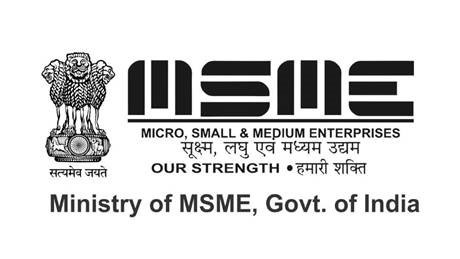
- 31 Jan 2025
In News:
The Ministry of Micro, Small, and Medium Enterprises (MoMSME), in collaboration with the Open Network for Digital Commerce (ONDC), has launched the Trade Enablement and Marketing (TEAM) Initiative. It aims to promote digital commerce among micro and small enterprises (MSEs) in India.
Key Features of TEAM Initiative
- Scheme Under: Raising and Accelerating MSME Productivity (RAMP) Programme
- RAMP is a World Bank-supported Central Sector Scheme implemented from 2022–2027 to enhance market access, technology upgradation, and financial inclusion for MSMEs.
- Objective:
- To empower MSEs through digital commerce integration using ONDC.
- To formalize operations, reduce the cost of doing business, and expand market access.
- To ensure inclusivity with 50% of beneficiaries being women-led enterprises.
- Budget & Duration:
- ?277.35 crore over three years (FY 2024–25 to FY 2026–27).
- Target Beneficiaries:
- 5 lakh MSEs (50% women-led).
- Eligibility: Registered MSEs in manufacturing or service sectors with valid Udyam Registration. Medium enterprises are excluded from most benefits.
- Implementing Agency:
- National Small Industries Corporation (NSIC)
Operational Strategy
- ONDC Integration: MSMEs will be onboarded onto the ONDC network, enabling them to operate digital storefronts with access to interoperable platforms, seamless payment solutions, and logistics services.
- Workshops & Outreach:
- Over 150 workshops will be organized across Tier 2 and Tier 3 cities, especially targeting SC/ST-led and women-led enterprises.
- Workshops will provide training on creating digital catalogues, understanding digital platforms, and maximizing ONDC's benefits.
- Supportive Infrastructure: A dedicated digital portal will offer services including workshop registration, access to finance, grievance redressal, catalogue tools, and account management assistance.
- Financial Assistance: Support to Seller Network Participants for onboarding MSEs and assisting in operational and digital transition needs.
About ONDC:
An initiative of the DPIIT, Ministry of Commerce, ONDC is an open, interoperable network that allows buyers and sellers to transact across multiple digital platforms, aiming to democratize digital commerce and reduce platform monopolies.
National Critical Mineral Mission
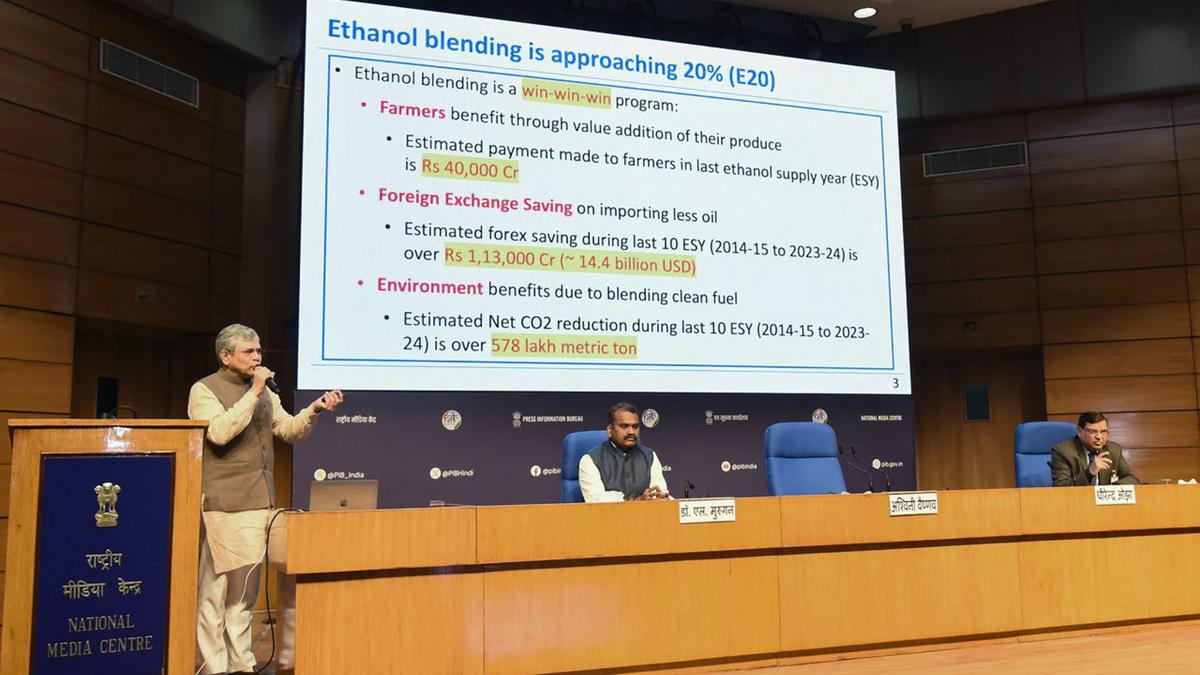
- 31 Jan 2025
In News:
The Union Cabinet has launched the National Critical Mineral Mission (NCMM) with a total outlay of ?34,300 crore over seven years, including ?16,300 crore government expenditure and ?18,000 crore investment from PSUs and private players.
Key Highlights:
Objectives of NCMM
- Reduce import dependence on critical minerals vital for clean energy, electronics, defence, and high-tech industries.
- Promote domestic exploration, mining, processing, and recycling of critical minerals.
- Facilitate overseas acquisition of mineral assets.
- Strengthen India’s mineral security and ensure self-reliance (Atmanirbhar Bharat).
Key Features
- Value Chain Coverage: Exploration → Mining → Beneficiation → Processing → Recycling of end-of-life products.
- Fast-track regulatory approvals for mining projects.
- Creation of mineral processing parks and promotion of sustainable extraction technologies.
- Establishing a strategic stockpile of critical minerals.
- Development of a Centre of Excellence on Critical Minerals to support R&D.
- Expansion of PRISM initiative to fund startups and MSMEs in the sector.
- Whole-of-government approach: Collaboration among ministries, PSUs, private sector, and research institutions.
Why Critical Minerals Matter
Critical minerals are essential inputs for:
- Green energy: EV batteries, solar panels, wind turbines.
- Electronics: Semiconductors, fiber optics.
- Defence: Aircraft, missile guidance systems.
- Medical technologies: MRI machines, pacemakers.
India’s clean energy transition and manufacturing competitiveness hinge on a steady and secure supply of these minerals.
India’s Import Dependence
India is dependent on imports, especially from China, for several critical minerals like lithium, cobalt, titanium, graphite, and tellurium. This exposes India to supply chain vulnerabilities amid shifting global geopolitics.
List of 30 Critical Minerals for India
Includes: Lithium, Cobalt, Nickel, Graphite, Rare Earth Elements (REEs), Beryllium, Titanium, Tungsten, Gallium, Indium, Selenium, Cadmium, etc.
Strategic and Legislative Initiatives
- Amendment to MMDR Act (1957) in 2023: Enabled auction of 24 critical mineral blocks.
- OAMDR Act (2002) amendment: Introduced transparent offshore mineral exploration.
- Duty waivers in Union Budget 2024–25: Customs duties removed on key critical minerals to promote domestic processing.
- Exploration by GSI: 368 projects in last 3 years; 227 more planned for FY 2025–26.
- KABIL: Acquired 15,703 ha in Argentina for lithium mining.
Global Context
- Global powers (US, EU, Japan) are pursuing strategies for critical mineral security.
- China dominates refining of lithium, cobalt, and REEs.
- India is part of the Minerals Security Partnership (MSP) to diversify global mineral supply chains.
Significance for India
- Ensures long-term resource security for clean technologies.
- Supports EV and renewable energy manufacturing goals.
- Enhances strategic autonomy in defence and electronics.
- Makes India an attractive hub for foreign investment in green technologies.
Challenges and the Way Forward
- Geopolitical risks in overseas asset acquisition.
- Environmental impacts of large-scale mining.
- Need for strong R&D ecosystem, financial incentives, and public-private partnerships.
- Sustainable mining practices and global collaboration are essential for long-term success.
Contract Farming in India
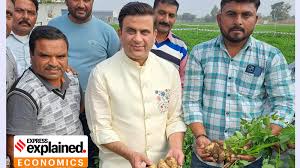
- 31 Jan 2025
In News:
Contract farming has emerged as a significant model in India's agricultural landscape, especially with its success in processed potato cultivation and the recent rise in French fry exports. As the country transitions from being an importer to a major exporter in sectors like frozen French fries, the contract farming model underpins the structural transformation of Indian agriculture.
Understanding Contract Farming
Contract farming is an agricultural production system where farmers and buyers (agribusinesses, processors, exporters, or retailers) enter into a pre-harvest agreement. This contract outlines key parameters including price, quality, quantity, delivery schedules, and in many cases, input provision and technical assistance.
Types of Contract Farming Arrangements
- Direct Input Provision by the Company: Firms supply seeds, fertilizers, and support services, deducting costs from the final payment to farmers.
- Partnership with Local Input Dealers: A hybrid model balancing company control with third-party services, chosen based on crop complexity, local support availability, and firm capabilities.
Advantages of Contract Farming
- Stable and Enhanced Income: Contracts assure farmers of a fixed price and market access, shielding them from volatile markets. RBI data shows farmers typically receive only 31%–43% of consumer prices; contract farming can significantly improve this share.
- Access to Inputs and Technology: Companies provide high-quality seeds, fertilizers, training, and modern farming practices, leading to improved yields and quality.
- Post-Harvest Efficiency: Streamlined procurement reduces wastage of perishables and post-harvest losses, ensuring efficient supply chain management.
- Credit and Financial Support: Assured incomes help farmers access institutional credit, reducing dependency on informal lenders.
- Food Safety and Export Standards: Training on pesticide use and residue limits ensures compliance with international standards like Maximum Residue Limits (MRLs), boosting export potential.
- Consumer Benefits: Direct procurement reduces intermediaries, enabling competitive pricing and higher quality products.
- Technology Transfer: Farmers benefit from the introduction of new, high-efficiency production techniques.
Concerns and Challenges
- Power Imbalance: Small and marginal farmers often lack bargaining power. This dependency may lead to exploitative contracts or one-sided terms, especially where firms demand investments in crop-specific infrastructure.
- Market Risk and Default: Price volatility can lead to side-selling by farmers or contract breaches by firms when market prices crash.
- Delayed Payments and Inputs: Contractual delays in payment or input delivery can severely affect crop cycles and farmer finances.
- Exclusion of Marginal Farmers: For economies of scale, firms often prefer large landholders, sidelining smallholders.
- Environmental Impact: Monocropping, overuse of water and agrochemicals, and soil degradation threaten long-term sustainability.
- Food Security Trade-offs: A shift to high-value crops under contracts may reduce acreage for food crops, impacting local food security.
- Loss of Autonomy: Farmers may lose control over farming decisions, with firms determining most aspects of cultivation, leading to indirect control over land use.
Case Study: Contract Farming in Potato Sector
India is the second-largest potato producer globally, with Uttar Pradesh, West Bengal, and Bihar as leading states. The Central Potato Research Institute (CPRI), Shimla developed several high-yielding Kufri varieties to support commercial cultivation.
The success of processed potato farming is best illustrated by India’s emergence as an exporter of frozen French fries, driven by contract-based procurement from farmers. However, issues such as the PepsiCo vs. Indian farmers legal dispute over unauthorized cultivation of the FL 2027 variety underline ongoing concerns around intellectual property rights and farmers’ autonomy.
Policy and Legal Framework
- Model APMC Act, 2003: Introduced contract registration, dispute resolution, and exempted market fees while protecting land ownership.
- Model Agricultural Produce and Livestock Contract Farming Act, 2018: Proposed institutional frameworks, insurance provisions, and promotion of Farmer Producer Organizations (FPOs).
- e-NAM Integration: Supports transparent pricing and contract enforcement.
- National Agriculture Policy: Endorses contract farming as a tool for enhancing productivity and rural incomes.
Bharat Sovereign Wealth Fund (BSWF)

- 31 Jan 2025
In News:
India is actively exploring the creation of a Bharat Sovereign Wealth Fund (BSWF) or The Bharat Fund (TBF) to harness the untapped wealth embedded within its public sector ecosystem. This fund aims to unlock and strategically manage dormant capital, estimated at ?40 lakh crore ($450–500 billion), primarily held in equity stakes of around 80 listed public sector enterprises (PSEs) and banks.
What is a Sovereign Wealth Fund (SWF)?
A Sovereign Wealth Fund is a state-owned investment vehicle that manages national savings or surplus revenues—often derived from foreign exchange reserves, natural resource exports, or trade surpluses.
According to the Santiago Principles (2008), SWFs:
- Are owned by the general government (central or sub-national),
- Invest primarily in foreign financial assets, and
- Aim to achieve financial objectives rather than monetary policy.
Types of SWFs include:
- Stabilization Funds: Cushion fiscal shocks from revenue volatility.
- Future Generation Funds: Preserve wealth for long-term national benefit.
- Strategic Development Funds: Support priority sectors and national growth.
- Reserve Investment Funds: Enhance returns on foreign currency reserves.
Examples include:
- Norway’s Government Pension Fund Global ($1.7 trillion),
- China Investment Corporation ($1.35 trillion),
- Abu Dhabi Investment Authority ($993 billion).
India’s SWF Landscape and the BSWF Proposal
India previously explored SWF models in 2007–08 and again in 2010–11. While the National Investment and Infrastructure Fund (NIIF) was launched in 2015, it remains sector-specific and limited in scale. The proposed BSWF envisions a comprehensive and transformational fund akin to global best practices.
Key features of the BSWF proposal:
- Consolidation of government equity in PSEs and PSU banks under a professionally managed umbrella.
- Strategic divestment—e.g., reducing government stake from 51% to 40%—without losing operational control.
- Leveraging this pooled equity to attract global co-investors, potentially unlocking tens or hundreds of billions in foreign capital.
Why India Needs the Bharat SWF
- Wealth Unlocking: Potential monetization of over ?40 lakh crore in dormant government equity assets.
- Fiscal Prudence: Even a modest 2% annual divestment could yield $10+ billion, narrowing the fiscal deficit from 4.9% to ~4.6% of GDP.
- Strategic Sector Investment: Deployment into high-potential sectors—AI, semiconductors, electric vehicles, hydrogen energy, biotechnology—to drive innovation and economic leadership.
- Attracting Global Capital: Enhanced investor confidence, especially from established SWFs like those of Singapore, Norway, and Abu Dhabi, which are already increasing exposure in Indian equities and infrastructure.
- Social Sector Funding: Generate non-debt financial resources for welfare programs and national development missions.
- Soft Power Projection: Fund ventures, disaster relief, and advocacy efforts, strengthening India’s international standing.
Governance and Reform Imperatives
For the BSWF to succeed, it must:
- Be governed by a clear legal and regulatory framework aligned with Santiago Principles.
- Operate independently, with professional asset managers, market-based remuneration, and arm’s length oversight.
- Transition PSEs to function with autonomy and efficiency, reducing bureaucratic delays and enabling innovation.
- Foster joint ventures to turn around non-performing PSEs—among the 1,830 PSEs, around 400 remain non-functional, demanding nearly ?9 lakh crore annually in budgetary support.
Challenges and Concerns
- Macroeconomic Constraints: India faces a current account deficit and substantial fiscal pressures—conditions unlike traditional SWF-rich nations.
- Geopolitical and Market Risks: Global uncertainty and decoupling trends could impact cross-border investment strategies.
- Environmental and Technological Vulnerabilities: Investment risks in carbon-heavy sectors and exposure to data fraud or tech disruptions.
- Institutional Resistance: Political and bureaucratic inertia may delay implementation unless national interest is prioritized.
SWF Investments in India: A Growing Trend
Foreign SWFs are already deepening their footprint in India:
- $6.7 billion in direct investments in 2022 (up from $4.3 billion in 2021).
- Preferred sectors: healthcare, entertainment, renewables, infrastructure.
- Beneficiaries of tax exemptions on direct infrastructure investments via InVITS (Infrastructure Investment Trusts) and AIFs (Alternative Investment Funds), valid for investments made before March 31, 2024.
These incentives have encouraged foreign SWFs to explore establishing physical presence in India’s financial hubs, especially GIFT City, Gandhinagar.
Aroma Mission
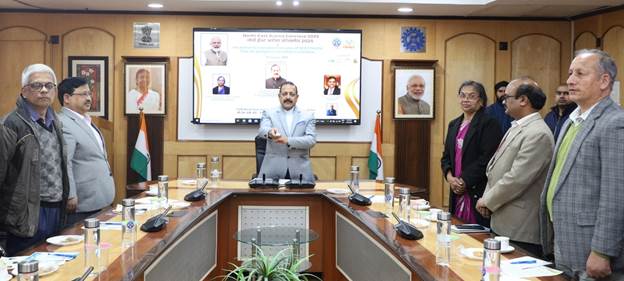
- 30 Jan 2025
In News:
The Aroma Mission, also known as the Lavender Revolution, is emerging as a transformative initiative for regions like Jammu & Kashmir and the North East, prioritised under Prime Minister Narendra Modi’s vision for inclusive development.
It aims to harness the untapped potential of India’s biodiverse regions through the scientific cultivation of aromatic crops and production of essential oils, with the dual goals of economic upliftment and sustainable innovation.
Key Objectives and Features:
- Launched By: Ministry of Science & Technology
- Nodal Agency: CSIR-Central Institute of Medicinal and Aromatic Plants (CIMAP), Lucknow
- Started In: Jammu & Kashmir, now extended to the North East
- Known As: Lavender Revolution
- Purpose: Boost India’s aroma industry by promoting the cultivation of high-value aromatic crops and increasing the production of essential oils.
Major Focus Areas:
- Crops Cultivated: Lavender, lemongrass, citronella, palmarosa, vetiver, patchouli, rose, peppermint, and chamomile
- Target Sectors: Cosmetics, aromatherapy, pharmaceuticals, and food flavouring industries
Impact and Achievements:
- Over 5,000 hectares brought under aromatic crop cultivation in the North East.
- Establishment of 39 essential oil distillation units.
- Distribution of 1 lakh agarwood saplings planned to boost the region's share in global aromatic plant trade.
- Expected annual essential oil production: 2,000 tonnes, valued at over ?300 crores.
- Estimated to generate 60 lakh man-days of rural employment.
- Projected increase in farmers’ income by ?60,000–?70,000 per hectare annually.
Institutional Support: IICON – Incubation and Innovation Complex
- Location: CSIR-North East Institute of Science and Technology (CSIR-NEIST), Jorhat, Assam
- Launched By: Dr. Jitendra Singh (Minister of Science & Technology)
- Purpose: Provide technical assistance, advanced facilities, and business incubation support for startups, MSMEs, and SHGs.
- Facilities: Access to 27 cutting-edge technologies for up to two years to help refine production and marketing strategies.
Integrated Development Approach:
The Aroma Mission exemplifies the “whole-of-government” approach, aligning with various flagship programmes such as:
- Start-Up India
- MSME Development
- Doubling Farmers’ Income
- Women Empowerment (e.g., through Rural Women Technology Parks)
- Act East Policy (enhancing North East's connectivity and trade potential)
Over 25 startups and self-help groups have already been empowered through access to facilities and entrepreneurial training at IICON, contributing to local innovation ecosystems.
Strategic Significance:
- Regional Empowerment: Converts underutilised natural resources into economic assets, especially in remote regions like J&K and the North East.
- Environmental Sustainability: Encourages eco-friendly cultivation and reduces pressure on traditional farming.
- Economic Diversification: Supports India’s transition to a bio-economy, with aromatic plant industries offering export potential and rural employment.
- Vision India@2047: Positions the North East as a hub for biotechnology, essential oils, innovation, and trade, aligning with long-term national growth goals.
Global Investment Trends and India’s FDI Outlook

- 30 Jan 2025
In News:
The Global Investment Trends Monitor Report 2024, released by the United Nations Conference on Trade and Development (UNCTAD), highlights a concerning decline in international project finance and Foreign Direct Investment (FDI), particularly in developing economies. This has significant implications for sustainable development, especially in emerging economies like India.
Key Findings from the UNCTAD Report (2024)
Global FDI Trends:
- Global FDI flows, after adjusting for conduit economies, fell by 8% in 2024, despite a nominal increase to USD 1.4 trillion.
- Developed economies witnessed a 15% drop in FDI (excluding conduit economies like Ireland and Luxembourg), while developing economies saw a 2% decline.
- The decline threatens long-term investment in infrastructure, renewable energy, and other SDG-aligned sectors.
Project Finance and Greenfield Investment:
- International project finance declined by 29% in developed and 23% in developing economies.
- In terms of value, developing economies faced a sharper fall of 33%.
- Key countries like India, China, Brazil, Indonesia, and Mexico reported steeper declines than the global average.
- Greenfield investments fell 6% in developing regions, with Africa and Asia being worst affected.
Sectoral Impacts:
- Investments in SDG-related sectors (e.g., water, sanitation, agrifood systems, and infrastructure) declined by 11%.
- International renewable energy finance fell 16%, with North America (-22%) and developing Asia (-18%) seeing notable contractions.
- Africa was the only region to witness an 8% increase in renewable energy project finance.
India’s FDI Landscape: Trends, Opportunities, and Challenges
Recent Performance:
- Between April 2000 and September 2024, India received over USD 1 trillion in cumulative FDI.
- From 2014 to 2024, India attracted USD 667.4 billion, a 119% increase over the previous decade.
- In 2024, India’s greenfield projects grew, but international project finance fell 23% in number and 33% in value.
Regulatory Framework:
- FDI is regulated under the Foreign Exchange Management Act (FEMA), 1999, administered by DPIIT, Ministry of Commerce and Industry.
- Prohibited sectors: Atomic energy, betting, lotteries, chit funds, tobacco, and real estate (excluding construction development).
Outlook for 2025 and Strategic Opportunities
Global FDI Projections:
- UNCTAD anticipates moderate global FDI growth in 2025.
- Regions like ASEAN, Eastern Europe, and Central America may benefit from supply chain realignments.
- India is projected to see a moderate rise in FDI, aided by:
- Improved financing conditions,
- Mergers and acquisitions,
- Ongoing policy reforms.
Key Growth Sectors:
- High potential in AI, cloud computing, cybersecurity, electric vehicles, and green hydrogen.
- FDI will be influenced by geopolitical dynamics, interest rates, GDP growth, and technological transitions.
FDI in India: Opportunities and Challenges
Opportunities:
- Large consumer base (1.4 billion population) and young workforce (65% under 35).
- Government schemes like Make in India and Atmanirbhar Bharat incentivize foreign investment.
- Strategic location positions India as a gateway to South Asia, the Middle East, and Southeast Asia.
Challenges:
- Regulatory complexity, including retrospective taxation and bureaucratic delays.
- Infrastructure deficits, particularly outside urban hubs.
- Rigid labour laws and inconsistent policy enforcement.
Investor Expectations:
- Technology transfer in priority sectors.
- Employment generation to absorb India’s growing labor force.
- Sustainable investments in line with India’s climate commitments under the National Action Plan on Climate Change.
RBI Payment System Report 2024

- 29 Jan 2025
In News:
The Payment System Report – December 2024 is a bi-annual publication by the Reserve Bank of India (RBI).
It analyses trends in digital and retail payment systems over the last five calendar years (up to CY-2024) and highlights India's transformation into a global leader in payment innovation and inclusion.
Growth in Digital Transactions
- Exponential Growth: Digital payment transactions rose 94 times in volume (from 222 crore in 2013 to 20,787 crore in 2024) and 3.5 times in value (from ?772 lakh crore to ?2,758 lakh crore).
- Recent CAGR (2019–2024):
- Volume: 45.9% CAGR
- Value: 10.2% CAGR
- Retail Digital Payments: From 162 crore transactions in FY13 to 16,416 crore in FY24 — a 100-fold increase in 12 years.
- Digital Payments Index (DPI): Surged from a base of 100 in March 2018 to 445.50 in March 2024, indicating massive digital adoption.
UPI: A Game-Changer
- Launched in 2016 by NPCI, UPI has revolutionized mobile-based payments.
- CAGR (Last 5 Years):
- Volume: 74.03%
- Value: 68.14%
- Monthly Transactions: UPI processes over 16 billion transactions monthly, ranking among the largest globally.
- Inclusive Innovations:
- UPI Lite & UPI Lite X: For offline/small-value payments.
- UPI123Pay: For feature phone users.
- UPI 2.0: Includes auto-debit and recurring payment functionalities.
Credit and Debit Card Trends
- Credit Cards:
- Growth: More than doubled from 5.53 crore (Dec 2019) to 10.80 crore (Dec 2024).
- Debit Cards:
- Stable Usage: Marginal increase from 80.53 crore to 99.09 crore in the same period.
Cross-Border Payment Integration
- RBI is actively enhancing cross-border payments by integrating India's UPI with international Fast Payment Systems (FPSs), addressing high costs, delays, and limited access.
- Key Developments:
- UPI-PayNow Linkage (Feb 2023): India-Singapore real-time cross-border payments.
- UPI-enabled QR Payments: Available in Bhutan, France, Mauritius, Nepal, Singapore, Sri Lanka, UAE.
- Project Nexus:
- A BIS-conceptualized multilateral project.
- Aims to interlink FPSs of India, Malaysia, Philippines, Singapore, and Thailand for seamless retail payments.
Institutional and Legal Framework
- Legal Backbone: Payments and Settlement Systems Act, 2007 (PSS Act) empowers RBI to:
- Regulate, supervise, and license payment system operators.
- Authorize systems like NPCI, card networks, ATM operators, etc.
- Governing Body:
- Board for Regulation and Supervision of Payment and Settlement Systems (BPSS) under RBI.
- Chairperson: RBI Governor; Vice-Chairperson: Deputy Governor (in charge of DPSS).
- Payment Ecosystem Entities:
- RBI-regulated: RTGS, NEFT, Cheques (CTS).
- NPCI-managed: UPI, IMPS, AePS, BBPS, NETC, NACH, Cards.
- Other PSOs: TReDS, PPIs.
Strategic Significance
- Financial Inclusion: Payment systems are critical tools for promoting inclusive growth by ensuring last-mile delivery of services and direct benefit transfers.
- Global Competitiveness: RBI’s regulatory foresight and innovation have placed India among the global frontrunners in digital payments.
Jawaharlal Nehru Port Authority
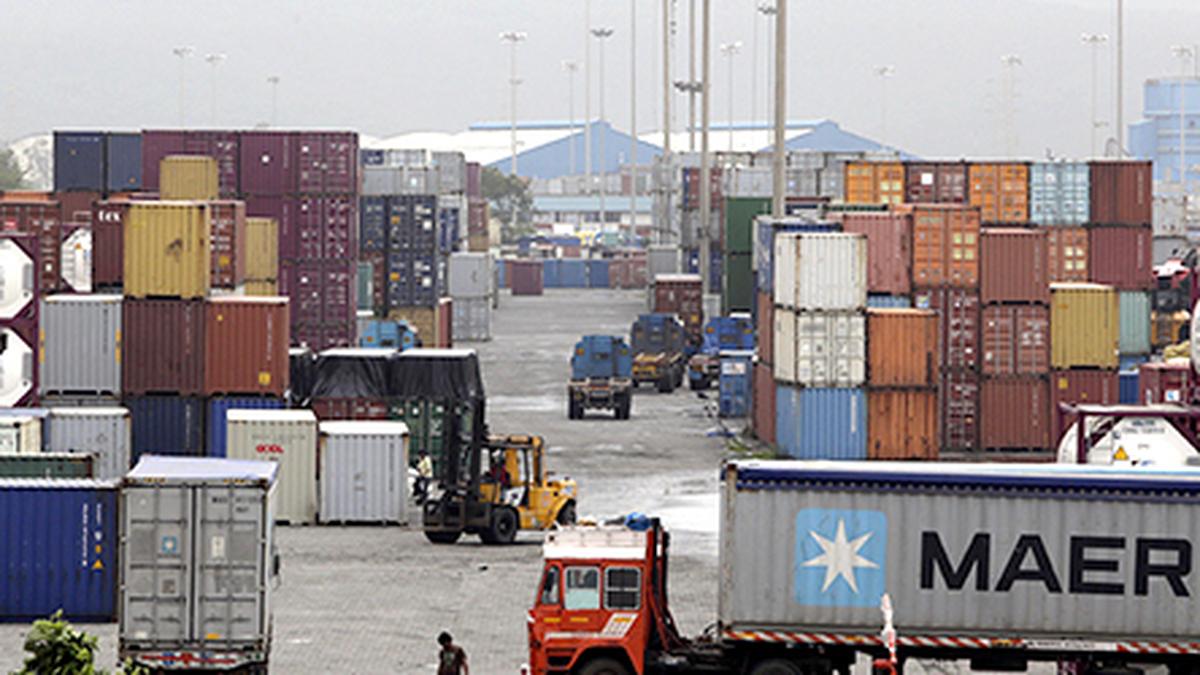
- 28 Jan 2025
In News:
The Jawaharlal Nehru Port Authority (JNPA) in Mumbai is set to become India’s first port to enter top global ports with 10 million TEUs (twenty-foot equivalent units) by 2027.
Overview:
- Location: Navi Mumbai, Maharashtra
- Commissioned: 1989
- Significance: India’s first Landlord Major Port, fully adopting the landlord port model.
Performance & Capacity Expansion:
- In 2024, JNPA handled a record 7.05 million TEUs, operating at over 90% capacity, with an 11% year-on-year growth.
- By 2027, JNPA is projected to become India’s first port to handle 10 million TEUs annually, marking its entry into the global top ports list.
- Current container handling capacity: 7.6 million TEUs
- Projected capacity by 2027: 10.4 million TEUs
Infrastructure Developments:
- Commissioning of Phase II of Bharat Mumbai Container Terminal (BMCT) to add 2.4 million TEUs.
- Upgradation of Nhava Sheva Freeport Terminal expected in 2025.
- Five operational container terminals, including:
- BMCT
- Nhava Sheva International Container Terminal (NSICT)
- Gateway Terminals India Pvt Ltd (GTIPL)
Key Projects & Investments (2024):
- ?2,000 crore worth of capacity enhancement projects launched.
- Solar-powered boat, two indigenously developed 70T tugs, and three fire tenders commissioned for safety and efficiency.
- Agro-processing facility (?284 crore) on 27 acres within port complex to handle 1.2 million tonnes annually – includes processing, sorting, packing, and food safety labs.
- Warehousing and CFS infrastructure (?300 crore investment) to generate 1,20,000 TEUs/year through ambient and temperature-controlled facilities.
Vadhavan Port Project:
- Proposed as India’s 13th major port (under construction).
- MoU with Reliance Industries Ltd: Development of liquid jetty and 50 acres of land under PPP model (investment: ?645 crore; operational by 2030).
- MoU with DBKKVD Dapoli: For integrated agri-horticultural development in Dahanu and Palghar.
- MoU with HUDCO: Funding commitment of ?25,000 crore for port infrastructure under PPP mode.
Strategic Importance:
- JNPA is central to India’s maritime trade, which accounts for 95% of trade by volume and 70% by value.
- Satellite and dry ports at Vadhavan, Jalna, and Wardha to improve hinterland connectivity and trade logistics.
India’s Journey of Fiscal Consolidation
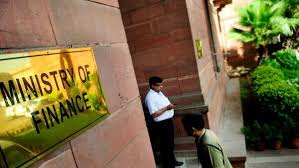
- 27 Jan 2025
In News:
Fiscal Consolidation refers to the strategic management of government finances aimed at reducing fiscal deficits, controlling public debt, and ensuring macroeconomic stability. India’s recent journey in this regard has been marked by a significant transformation, particularly in the post-2014 era.
Background:
In 2013-14, India was labelled as one of the "Fragile Five", largely due to its ballooning fiscal deficit (touching 5% of GDP in a quarter), high inflation, and weakening currency. This tag underscored the urgency of restoring fiscal health.
Post-2014 Measures:
- FRBM Act Revamp: The government recommitted to the Fiscal Responsibility and Budget Management (FRBM) Act, 2003, revising fiscal targets and focusing on fiscal discipline.
- Deficit Reduction: Fiscal deficit was reduced from 4.5% of GDP in FY 2013-14 to 3.4% in FY 2018-19.
- Revenue Boost: Digitization and broader tax reforms helped increase tax receipts from 10% of GDP (FY 2014-15) to 11.8% (FY 2023-24).
- Capex Focus: Capital expenditure nearly doubled from 1.6% of GDP in FY 2014-15 to 3.2% in FY 2023-24, emphasizing infrastructure over consumption.
Pandemic Impact and Recovery:
- During COVID-19, India’s fiscal deficit soared to 9.2% of GDP (FY 2020-21) due to emergency spending.
- Unlike blanket stimulus in some countries, India opted for targeted support (MSMEs, displaced populations, healthcare) while continuing infrastructure investment.
- This strategy avoided long-term inflationary pressure and built long-term productive capacity.
Structural Reforms:
- Production Linked Incentive (PLI) schemes aimed at reducing import dependence and boosting domestic manufacturing.
- Enhanced export competitiveness due to fiscal prudence and macroeconomic stability.
Current Scenario:
- Fiscal deficit reduced to 5.6% of GDP in FY 2023-24, with a target of 4.9% in FY 2024-25, and further narrowing to 4.5% by FY 2025-26.
- States remain a concern: their deficits exceed the 3% of GSDP limit, averaging 3.2% in FY 2023-24, with rising debt levels and declining capex.
FRBM Act & N.K. Singh Committee:
- FRBM Act (2003) aims to cap the fiscal deficit at 3% of GDP.
- The N.K. Singh Committee (2016) recommended:
- Shift from rigid deficit targets to debt as the primary anchor.
- Set up an autonomous Fiscal Council.
- Flexibility via an “escape clause” (up to 0.5% extra deficit during crises).
- Limit borrowings from RBI to specific emergency conditions.
Significance of Fiscal Consolidation:
- Macroeconomic Stability: Controls inflation and keeps currency stable.
- Investment Magnet: Low deficits improve investor confidence.
- Reduced Debt Burden: Less borrowing means less stress on future generations.
- Efficient Governance: Ensures better resource allocation and economic resilience.
Fiscal Health Index (FHI) 2025
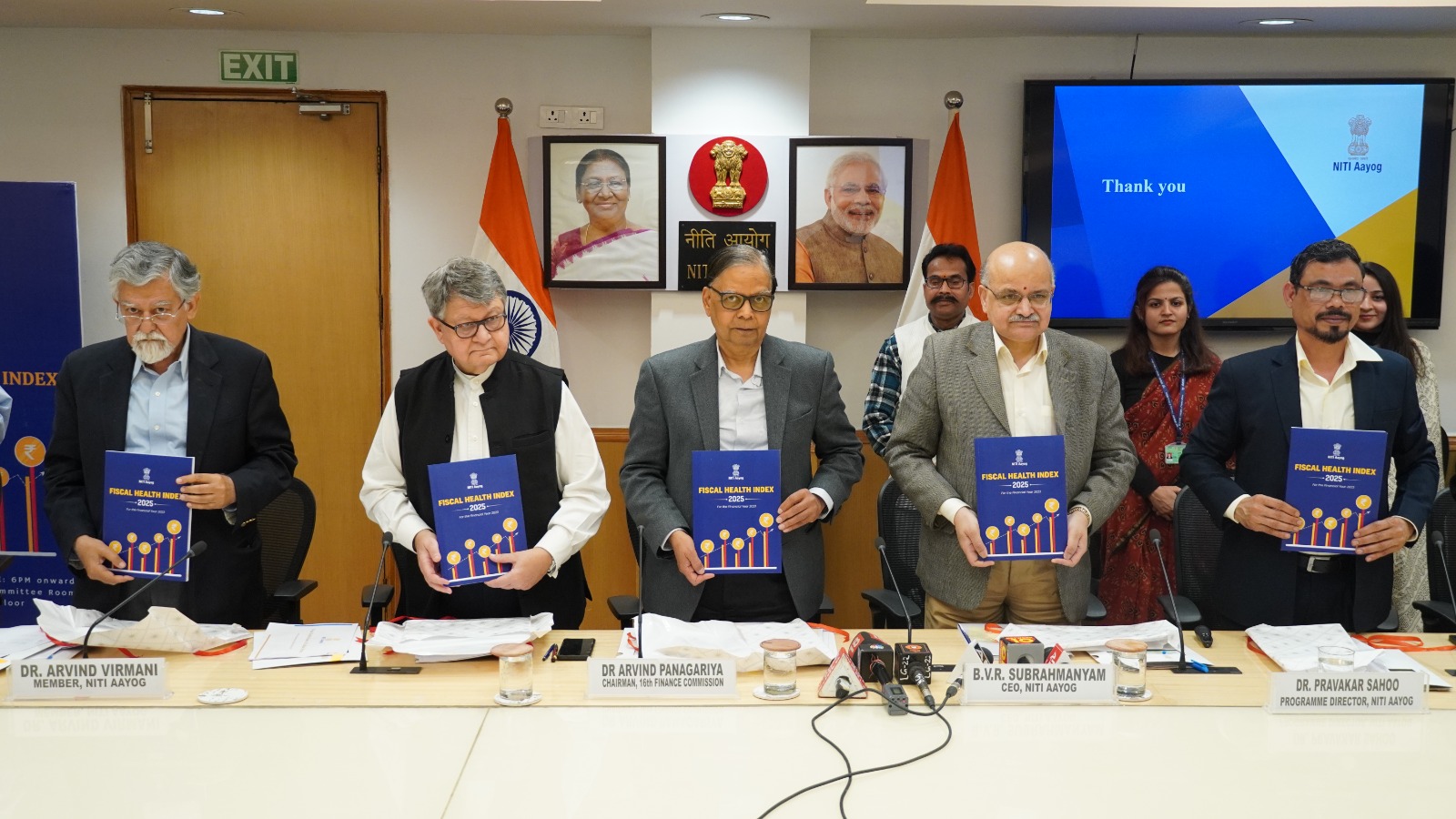
- 25 Jan 2025
In News:
NITI Aayog launched the inaugural Fiscal Health Index (FHI) 2025 on 24 January 2025 in the presence of the 16th Finance Commission Chairman, Dr. Arvind Panagariya. The index evaluates the fiscal performance of 18 major Indian states using FY 2022–23 as the base year.
Key Highlights:
- Objective: To assess, monitor, and improve the fiscal health of Indian states and foster balanced regional development, economic resilience, and fiscal transparency. It aims to support the national goal of Viksit Bharat @2047.
- Developed by:
- NITI Aayog, with data sourced from the Comptroller and Auditor General (CAG).
- Designed as an annual publication to promote informed and targeted state-level policy reforms.
- Evaluation Parameters:
The index comprises five sub-indices that collectively offer a holistic picture of fiscal health:
- Quality of Expenditure – Efficiency in developmental and social sector spending (e.g., health, education).
- Revenue Mobilization – Tax and non-tax revenue generation capacity.
- Fiscal Prudence – Adherence to fiscal deficit targets and sound financial management.
- Debt Index – Absolute level of public debt.
- Debt Sustainability – Debt-to-GSDP ratio and interest burden on revenues.
Key Highlights from FHI 2025:
Top Performing States (Achievers):
Rank State FHI Score Strengths
1. Odisha 67.8 Low fiscal deficit, strong debt management, effective capital expenditure
2. Chhattisgarh 55.2 Revenue growth from mining, fiscal prudence
3. Goa 53.6 High tax efficiency and non-tax revenue
Aspirational States (Facing Challenges):
- Punjab, West Bengal, Kerala, Andhra Pradesh
- Issues: High debt-to-GSDP ratios, revenue deficits, poor revenue mobilization
Sub-Index Insights:
- Revenue Mobilization: Odisha, Goa, and Chhattisgarh excelled; Bihar and West Bengal lagged due to low own-tax revenues.
- Quality of Expenditure: Madhya Pradesh and Chhattisgarh prioritized social sectors; Punjab and Rajasthan underperformed in capital investment.
- Debt Management: Maharashtra and Gujarat maintained robust practices; Punjab and Haryana faced rising interest burdens.
- Debt Sustainability: Odisha and Chhattisgarh displayed strong sustainability; West Bengal and Punjab showed fiscal stress.
- Fiscal Prudence: Odisha and Jharkhand maintained low deficits, enabling better public investment.
Significance for Policy & Governance:
- Encourages healthy interstate competition and promotes cooperative federalism.
- Provides data-driven insights for targeted fiscal reforms.
- Reinforces the need for decentralized and transparent financial governance.
- Offers a benchmark for fiscal performance aligned with national transformation goals.
Recommendations:
- Enhance revenue base via tax reforms and tapping into non-tax sources.
- Boost capital expenditure in infrastructure, health, and education.
- Strengthen debt sustainability frameworks and reporting mechanisms.
- Institutionalize fiscal responsibility through better compliance and accountability.
Is Poverty Being Underestimated in India?
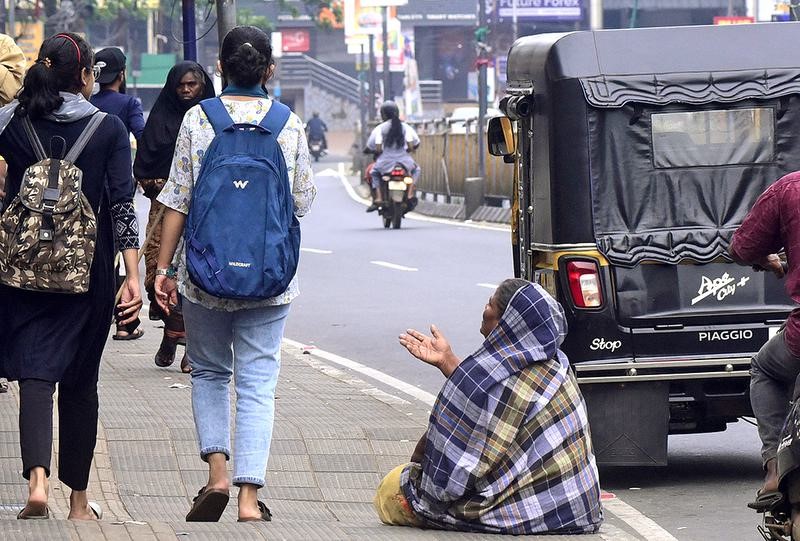
- 24 Jan 2025
In News:
The recent 2023-24 Household Consumption Expenditure Survey (HCES) showed a decline in poverty across rural and urban India. However, questions have emerged about whether poverty is being underestimated, due to changes in methodologies, definitions, and data availability.
Evolution of Poverty Measurement in India
- 1970s to 2005: Poverty was defined based on minimum calorie intake; updated every 5 years using NSSO data.
- Tendulkar Committee introduced in response to divergence between NSSO and National Accounts data.
- Post-2011-12: No official poverty estimates or surveys; alternative indices like Multidimensional Poverty Index (MPI) were used.
Current Data Issues
- Different recall periods in surveys (7-day, 30-day, 365-day) create non-comparability.
- Modified Mixed Recall Period (MMRP) introduced in 2017-18 and improved upon in recent years with three household visits, enhancing recall and thus raising reported expenditures.
- Result: Using older poverty lines on newer, higher expenditure data underestimates poverty.
Diverging Poverty Estimates
- Dr. C. Rangarajan (2022-23): Estimated poverty at around 10%.
- Recent factsheet (2023-24) suggests poverty may have declined to single digits.
- A paper using Rangarajan’s methodology on 2022-23 HCES data estimated 25% poverty, but this is debated.
Reasons for Poverty Reduction
- High GDP growth, increased public expenditure, and improved public delivery systems.
- National Food Security Act covers nearly 80 crore people.
- Broadened definition of poverty now includes non-food items and essential services.
- Decline in poverty estimated around 17-18% between 2011-12 and 2023-24.
Rural-Urban Trends
- Consumption gap between rural and urban areas is narrowing.
- Rural consumption patterns becoming more urban-like.
- 2011 Census definitions outdated — many rural areas are peri-urban in character.
Need for Poverty Line Revision
- Lack of consensus and official backing on methodology hinders creation of a new poverty line suited to current data.
- UNDP’s global poverty line is $2.15/day; India’s poverty was 12.9% in 2019 by that metric.
- NITI Aayog’s estimates do not support 25% poverty claim.
Debate on Multidimensional Poverty Index
- India’s MPI (12 indicators) differs from UNDP’s 10-indicator framework.
- Additions like bank accounts and maternal health are India-specific.
- Criticism: Once indicators (e.g., electricity, bank accounts) are met, they remain met — poverty appears to decline permanently, while income vulnerability is not captured.
Estimation and Measurement of India’s Digital Economy – MeitY Report (2025)
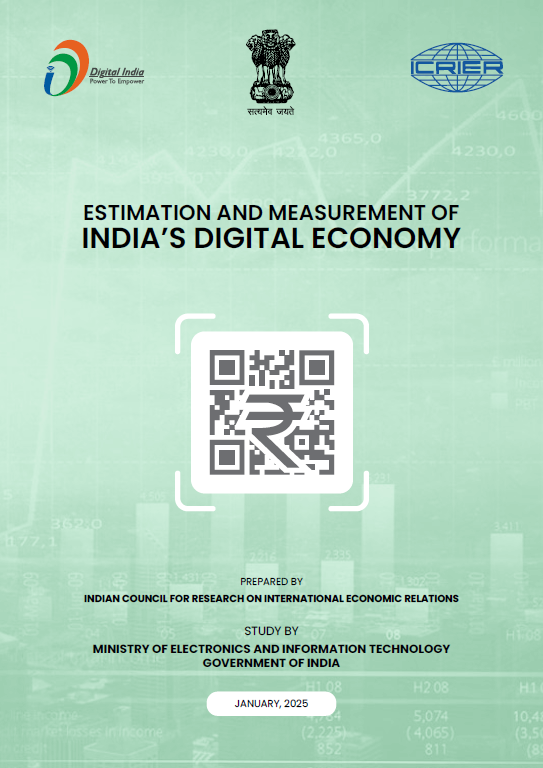
- 23 Jan 2025
In News:
Release of Report ‘Estimation and Measurement of India’s Digital Economy’ by Ministry of Electronics & Information Technology.
Key Highlights:
- Released by: Ministry of Electronics & Information Technology (MeitY)
- Prepared by: Indian Council for Research on International Economic Relations (ICRIER)
- Significance: First credible and current estimate of the digital economy using international frameworks (OECD & ADB).
- India is the first developing country to adopt the OECD framework for measuring the digital economy.
Key Findings (2022–23)
Indicator Details
Size ?31.64 lakh crore (~USD 402 billion), 11.74% of national income (GVA)
Employment 14.67 million workers (2.55% of the workforce)
Projected Share by 2029–30 Nearly 20% of GDP (surpassing agriculture & manufacturing)
Structure of India’s Digital Economy
- Digitally Enabling Industries (7.83% of GVA): ICT services, telecom, manufacturing of digital hardware
- New Digital Industries (2%): Big Tech, digital platforms, intermediaries (e.g., e-commerce, ride-sharing)
- Digitalization of Traditional Sectors (2%): BFSI (Banking, Financial Services, Insurance), trade, education
- Insight: Digital transformation is spreading beyond ICT into traditional sectors.
Frameworks Used
Framework Purpose
OECD Estimating core digital and enabling sectors
ADB Input-Output Broader economic impact via inter-industry linkages
India’s Expansion Includes digital share in BFSI, trade, education – not covered under OECD
Key Drivers of India’s Digital Economy
- Widespread mobile use: 1.14 billion subscribers in India
- High internet traffic: 3rd globally, with avg. 16.9 GB/month
- 5G leadership: 2nd largest 5G smartphone market in 2024
- Aadhaar success: 1.3+ billion biometric IDs issued
- Digital payments boom: 1,644 billion transactions in FY24
- ICT service exports: USD 162 billion (2nd highest globally)
- AI leadership: India leads GitHub AI contributions (23%)
- Startup ecosystem: 3rd highest number of unicorns globally
Future Projections (By 2030)
- Digital economy to reach ~20% of national income
- Growth drivers:
- Expansion of digital platforms & intermediaries
- Deepening digitalization in all sectors
- Greater internet & broadband access
Challenges in Measuring Digital Economy
- Difficulty in defining digital sectors due to their integrated nature
- Conventional national accounting systems are inadequate
- Lack of data from:
- Informal sector digitalization
- Smaller platforms and startups
- Digital shifts in healthcare, logistics, etc.
Importance of This Report
- Policy Formulation: Enables targeted strategies for digital growth
- Business Strategy: Helps identify trends, plan investments
- Global Standing: Puts India among early adopters of robust measurement frameworks
Diamond Imprest Authorization (DIA) Scheme

- 22 Jan 2025
In News:
The Union Government, under the Foreign Trade Policy 2023, has introduced the Diamond Imprest Authorization (DIA) Scheme to enhance India’s competitiveness in the global diamond trade, promote exports, and protect employment, especially in the MSME sector.
Key Highlights:
Objectives:
- Boost value addition and export growth in the diamond sector.
- Support MSME exporters to compete globally.
- Retain India’s position as a global hub for diamond processing and exports.
- Mitigate recent challenges like export decline, job losses, and global demand shifts.
Key Features of the Scheme:
Feature Details
Type of Diamonds Allowed Natural cut and polished diamonds less than ¼ carat (25 cents)
Eligibility Exporters with Two Star Export House status and minimum $15 million annual exports
Export Obligation 10% value addition on imported diamonds
Duty Exemptions Exempts Basic Customs Duty, Anti-dumping Duty, Countervailing Duty, etc.
Effective Date April 1, 2025
Exclusion Lab-Grown Diamonds (LGDs) not covered
Monitoring Agency Gems and Jewellery Export Promotion Council (GJEPC)
Why the Scheme Was Introduced:
Challenges in the Diamond Sector:
- Global: Falling demand in US, Europe, China; rise in lab-grown diamonds.
- Domestic: High unsold inventory, rising operational costs, reduced credit flow, and high corporate tax.
- Employment Impact: Job losses in the diamond cutting and polishing segment.
International Context:
- Inspired by beneficiation policies in diamond-producing countries like Botswana and Namibia, which mandate local value addition.
Significance:
- Enhances India’s role in the global diamond value chain.
- Provides ease of doing business through duty relief.
- Promotes employment generation, especially for diamond assorters and processors.
- Facilitates inclusive growth by supporting MSMEs in a traditionally export-driven industry.
Way Forward:
- Regulate Lab-Grown Diamonds to prevent market distortion.
- Extend export credit period and consider tax exemptions for foreign diamond sellers.
- Ensure technology upgradation and skill training to sustain global leadership.
Takers, Not Makers
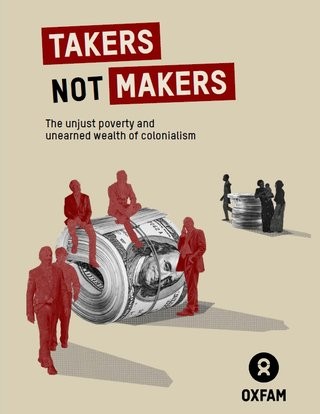
- 21 Jan 2025
In News:
Report “Takers not makers: The unjust poverty and unearned wealth of colonialism” published by Oxfam.
Key Highlights:
- Released by: Oxfam International at the World Economic Forum 2025
- Core Focus: The report explores historical colonial wealth extraction, especially from India, and connects it to contemporary global inequalities.
Colonial Wealth Drain – India:
- $64.82 trillion extracted from India by Britain (1765–1900), adjusted to today’s value.
- $33.8 trillion (52%) enriched the UK’s richest 10%
- 32% benefited the British middle class
- India's industrial output dropped from 25% in 1750 to 2% in 1900 due to:
- British protectionist policies (especially targeting Asian textiles)
- High taxation, home charges, currency manipulation, and profit repatriation
Conceptual Framework:
- "Drain of Wealth" Theory by Dadabhai Naoroji forms the report’s foundation.
- Colonialism framed as both:
- Historical phenomenon: Loot, repression, forced de-industrialization
- Modern structure (Neo-colonialism): Corporate dominance, digital colonization, and unjust global governance
Neo-Colonial Parallels Today:
- Wages in Global South: 87–95% lower than for same work in Global North
- Multinational corporations:
- Descendants of colonial entities like the East India Company
- Extract resources & exploit labor under unequal terms of trade
- Global institutions like WTO and World Bank perpetuate inequity through imbalanced power dynamics
Ongoing Consequences in Global South:
- Poor public services, education, and healthcare
- Caste, religion, and language divisions institutionalized during colonial rule
- E.g., Only 0.14% of Indian languages used as medium of instruction
- Bengal Famine (1943): Caused by wartime policies & racist attitudes, ~3 million deaths
- Biopiracy cases (e.g., neem) reflect continued exploitation
Wealth Disparity & Inequality:
- Billionaire wealth tripled in growth rate in 2024 (vs. 2023)
- Top 1% own more than 95% of global wealth
- Over 3.5 billion people survive on less than $6.85/day
ILO Global Estimates on International Migrant Workers – 2022
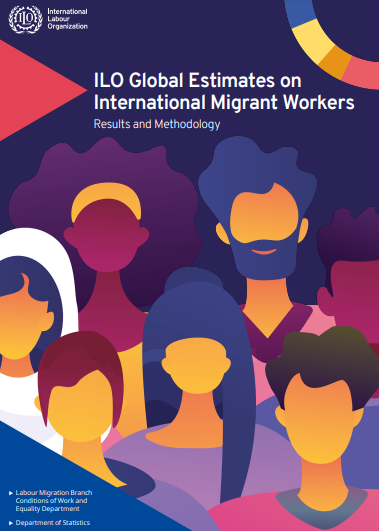
- 21 Jan 2025
In New:
By addressing labour market shortages in host nations and contributing remittances to home countries, International Migrants (IM) continue to make contributions to world economic growth, the fourth edition of ‘Global Estimates on International Migrant Workers’, released by the International Labour Organization (ILO), stated.
Key Findings:
Global Representation:
- International Migrants (IMs) = 4.7% of global labour force - 167.7 million total:
- Employed: 155.6 million
- Unemployed (but seeking work): 12.1 million
- Increase of 30+ million migrant workers since 2013
- Growth rate dropped below 1% annually (2019–2022) due to COVID-19
Gender Composition:
- Male IMs: 61.3% (102.7 million)
- Female IMs: 38.7% (64.9 million)
- Lower female participation attributed to:
- Lower female migration rates globally
- Gender-based barriers in labour markets
- Over-representation in informal and unpaid sectors
Age Distribution:
- Prime working age (25–54 yrs): 74.9%
- Youth (15–24 yrs): 9.3%
- Older adults (55–64 yrs): 12.5%
- Seniors (65+ yrs): 3.4%
Sector-wise Employment:
Sector Share of IMs Notes
Services 68.4% Highest; women dominate (80.7%)
Industry 24.3% On par with non-migrants
Agriculture 7.4% Far lower than non-migrants (24.3%)
Care economy in high-income countries is a major pull for female migrants.
Host Country Distribution:
Region/Income Group % of IMs Notes
High-income countries 68.4% (114 million) Majorly Europe & North America
Upper-middle-income 17.4% (29.2 million)
Arab States 13.3% Declined since 2013
Europe (23.3%) and North America (22.6%) are top destinations. Arab states saw a 3% decline over the decade.
Definition: International Migrants (IMs)
As per the UN: Persons residing in a country different from their place of usual residence for at least one year, regardless of reason or legal status. Includes refugees, asylum seekers, etc.
Role & Contributions of IMs:
- Economic Drivers: Fill labour shortages (healthcare, construction, care work).
- Remittances: Boost home country economies.
- Demographic Support: Help address aging populations in developed nations.
Cultural Exchange: Promote diversity and global connectivity.
Indian Coffee Sector
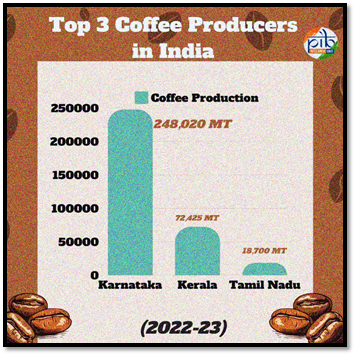
- 21 Jan 2025
In News:
India is now the seventh-largest coffee producer globally with exports reaching $1.29 billion in FY 2023-24, almost double the $719.42 million in 2020-21.
Historical Background
- Origin: Coffee was introduced to India in the 17th century by Baba Budan, a Sufi saint, who brought seven Mocha beans from Yemen and planted them in Baba Budan Giri hills, Karnataka.
- This act laid the foundation for India’s coffee cultivation, which has since evolved into a robust agro-industry.
India’s Global Coffee Status
- 7th largest coffee producer globally (FY 2023–24).
- Exports: Reached $1.29 billion in FY 2023–24, nearly double the $719.42 million in FY 2020–21.
- Major export destinations: Italy, Belgium, Russia.
- Export Share: Over 70% of India's coffee is exported, mostly in unroasted (green bean) form.
Types of Coffee Cultivated
- Arabica: Mild flavor, higher market value.
- Robusta: Strong flavor, more robust; often used in instant coffee.
- India's production: Around 75% is a mix of Arabica and Robusta.
Geographical Distribution
- Major Coffee-Growing Regions:
- Karnataka: Leads with over 70% of national production (~248,020 MT in 2022–23).
- Kerala and Tamil Nadu follow.
- Other contributors: Andhra Pradesh, Odisha, and parts of Northeast India
- Agro-climatic Conditions:
- Altitude: 600–1600 meters
- Temperature: 15°C–28°C
- Rainfall: 150–250 cm annually
- Soil: Well-drained, loamy, rich in humus and minerals
Economic & Environmental Significance
- Coffee is largely grown in the Western and Eastern Ghats, biodiversity-rich zones with shade-grown plantations.
- These plantations:
- Conserve ecology and biodiversity
- Support sustainable agriculture
- Contribute to rural livelihoods
Domestic Trends
- Rising café culture, urbanization, and higher disposable incomes have led to increased coffee consumption.
- Domestic consumption rose from 84,000 tonnes (2012) to 91,000 tonnes (2023).
- Preference for coffee over tea is growing, especially in urban and semi-urban India.
Government Initiatives
- Coffee Board of India initiatives under the Integrated Coffee Development Project (ICDP) aim to:
- Enhance yields
- Expand to non-traditional areas
- Promote sustainable practices
- Araku Valley Model:
- Involves 150,000 tribal families
- 20% increase in production
- Backed by Girijan Co-operative Corporation (GCC) and Integrated Tribal Development Agency (ITDA)
- Aligned with Aatmanirbhar Bharat and rural empowerment
Current Challenges and Future Outlook
- Challenges: Climate change impacts, pest attacks, price volatility in global markets.
- Opportunities:
- Rising global demand for value-added products (roasted & instant coffee)
- Export incentives and improved logistics
- Potential for agri-tourism and organic branding
India–Singapore Semiconductor Cooperation
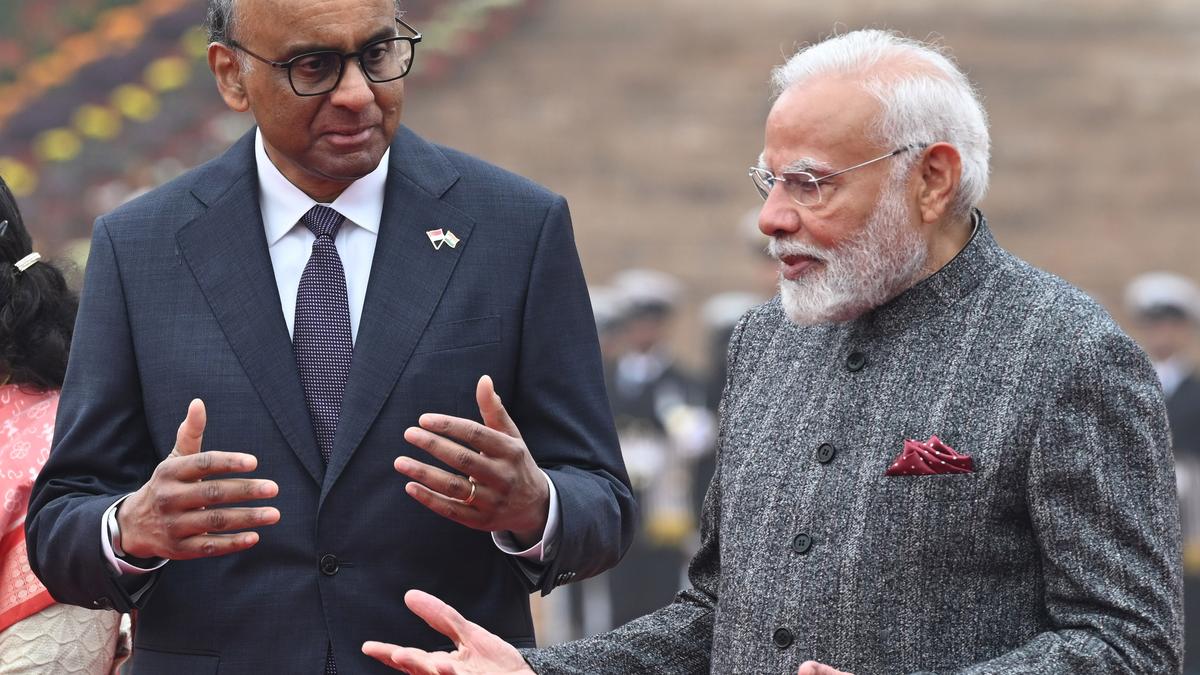
- 20 Jan 2025
In News:
During his 2025 visit to India, Singapore President Tharman Shanmugaratnam announced plans to collaborate with India on semiconductor manufacturing and the creation of a semiconductor ecosystem, marking the 60th anniversary of diplomatic ties between the two nations.
Singapore’s Semiconductor Landscape
- Contribution to Economy: Accounts for ~8% of Singapore’s GDP.
- Global Standing:
- Produces 10% of global semiconductor output.
- 5% of global wafer fabrication capacity.
- 20% of global semiconductor equipment production.
- Comprehensive Ecosystem: End-to-end capabilities from IC design to packaging and testing.
- Infrastructure: Four wafer fabrication parks with advanced facilities.
- Current Limitation: Focused on mature-node chips (28 nm+); lacks high-end logic chip manufacturing (7 nm or below).
India’s Semiconductor Sector
- Market Size (2024): Valued at USD 52 billion; projected to reach USD 103.4 billion by 2030.
- Import Dependency: ~85% of semiconductor needs met through imports.
- Export-Import Gap (2022): USD 5.36 billion (imports) vs. USD 0.52 billion (exports).
India's Advantages:
- Skilled Talent Pool: Large number of STEM graduates.
- Cost Efficiency: Lower manufacturing and operational costs.
- Geopolitical Opportunity: Global supply chain diversification away from China.
Government Initiatives:
- India Semiconductor Mission (ISM)
- Semicon India Programme
- Display & Semiconductor Fab Schemes
- SPECS (Scheme for Promotion of Manufacturing of Electronic Components and Semiconductors)
Foreign Collaborations:
- MoUs with US, Japan, and European Commission.
- Tata–Powerchip (Taiwan) collaboration for a fab in Dholera, Gujarat.
How Singapore Can Support India’s Semiconductor Vision
- Manufacturing Partnerships:
- Collaborations with Singaporean firms for assembly and testing services.
- Access to Singapore's advanced manufacturing technologies.
- Talent Development:
- Academic exchanges in microelectronics and semiconductor engineering.
- Joint research and PhD programs.
- Infrastructure Development:
- Replication of Singapore-style wafer fab parks in India.
- Joint ventures to build specialized semiconductor industrial zones.
- Technology Access & Innovation:
- Transfer of advanced technologies and critical semiconductor materials.
- Collaboration on new-generation tech solutions (e.g., AI chips, advanced computing).
Additional Areas of Bilateral Cooperation
- Digital Economy: Exploring data corridor between GIFT City (India) and Singapore.
- Sustainability: Cooperation on green hydrogen, sustainable aviation fuel, and renewable energy.
Strategic Partnership: Upgraded to Comprehensive Strategic Partnership in 2024.
Sanchar Saathi App

- 19 Jan 2025
In News:
In a landmark move to enhance telecom accessibility, security, and empowerment across India, the Union Minister of Communications launched a suite of citizen-focused initiatives. Key highlights of the event included the launch of the Sanchar Saathi Mobile App, National Broadband Mission (NBM) 2.0 and the inauguration of the Intra Circle Roaming facility at DBN Funded 4G Mobile Sites.
Sanchar Saathi Mobile App
- Launched by: Department of Telecommunications (DoT), Ministry of Communications.
- Platforms: Available on Android and iOS.
- Objective: Strengthen telecom security, empower citizens, and combat telecom fraud.
- Key Features:
- Chakshu (SFC): Report suspected fraud communications (calls/SMS).
- Know Your Mobile Connections: Identify and manage all mobile numbers issued in one’s name.
- Block Lost/Stolen Devices: Swiftly block, trace, and recover lost/stolen mobile phones.
- Verify Handset Genuineness: Confirm the authenticity of mobile handsets before purchase.
Impact so far (via Sanchar Saathi Portal, launched May 2023):
- 2.75 crore fraudulent connections disconnected.
- 25+ lakh lost/stolen devices blocked.
- 12.38 lakh WhatsApp accounts linked to cybercrimes disengaged.
- 11.6 lakh mule bank accounts frozen.
- 90% spoofed international calls blocked within 2 months of new prevention system.
National Broadband Mission (NBM) 2.0
- Launched by: Union Minister of Communications, builds upon NBM 1.0 (2019–2024).
- Part of: National Digital Communications Policy, 2018.
- Aim: Digitally empower citizens and bridge the digital divide to realize the vision of Viksit Bharat by 2047.
Key Targets (by 2030):
- 2.70 lakh villages to be connected with OFC (from ~50,000 now).
- 90% broadband connectivity to anchor institutions (schools, PHCs, Panchayats, Anganwadis).
- Fixed broadband speed: Increase national average from 63.55 Mbps (2024) to 100 Mbps.
- Right of Way (RoW) disposal time: Reduce from 60 days to 30 days.
- Rural internet subscribers: Increase from 45 to 60 per 100 population.
- 30% of mobile towers to be powered by sustainable energy.
- 100% mapping of PSU fiber networks on PM GatiShakti National Master Plan by 2026.
- Enhanced use of “Call Before u Dig (CBuD)” app to protect underground telecom infrastructure.
- Facilitate 5G rollout, and prepare infrastructure for 6G and common telecom ducts in all linear projects.
- Leverage power sector (e.g. Optical Ground Wire - OPGW) for broadband in remote/hilly areas.
Intra Circle Roaming (ICR) at DBN-Funded 4G Sites
- Launched by: Ministry of Communications.
- Implemented under: Digital Bharat Nidhi (DBN), formerly USOF.
- Objective: Allow subscribers of multiple telecom service providers (TSPs) (e.g., BSNL, Airtel, Reliance) to access 4G services from a single DBN-funded tower.
- Impact:
- Eliminates need for duplicate towers.
- Covers 27,000+ towers across 35,400 remote villages.
- Enhances user choice, reduces cost, and ensures efficient infrastructure use.
Global Risks Report 2025
- 18 Jan 2025
In News:
- The World Economic Forum (WEF) has released the 20th edition of the Global Risks Report 2025, outlining the most pressing global risks over short-term (1-2 years) and long-term (10 years) horizons.
- The report, based on the Global Risks Perception Survey (GRPS) 2024-2025, categorizes risks across economic, environmental, geopolitical, societal, and technological domains.
Key Findings of the Report
Short-Term Risks (1-2 Years)
- Misinformation and Disinformation – Undermines trust in governance and institutions, complicating global cooperation.
- Extreme Weather Events – Rising costs and frequency due to climate change.
- State-Based Armed Conflict – Geopolitical tensions, including conflicts such as the Russia-Ukraine war.
Long-Term Risks (10 Years)
- Extreme Weather Events – Ranked as the most significant long-term risk.
- Biodiversity Loss & Ecosystem Collapse – Drastic impact on food security and natural systems.
- Critical Changes to Earth Systems – Irreversible environmental shifts.
Evolving Global Risk Landscape
The risk landscape is shaped by four structural forces:
- Technological Acceleration – Rapid advancements in AI and digital platforms.
- Geostrategic Shifts – Increasing global polarization and armed conflicts.
- Climate Change – Rising environmental hazards.
- Demographic Bifurcation – Aging populations and labor shortages.
Specific Risks and Trends
Environmental Risks
- Pollution: Increasing air, water, and land contamination due to unsustainable production.
- Natural Disasters: Wildfires in the U.S. projected to cause over $200 billion in damages.
- Water Supply Shortages: A major concern for countries like India.
Economic and Trade Risks
- Escalating Trade Protectionism: Increase in tariffs and restrictions (e.g., Make in India, U.S. Inflation Reduction Act).
- Economic Uncertainty: Global inflation projected to decrease to 3.5% by 2025, but trade tensions may reignite financial instability.
- Foreign Direct Investment (FDI) Decline: A 10% drop in 2023 due to trade fragmentation.
Technological Risks
- Misinformation & Disinformation: AI-generated content fuels societal polarization.
- Cybersecurity Threats: AI-driven cyberattacks and algorithmic biases in governance.
- Surveillance & Censorship: Increased digital monitoring with inadequate legal safeguards.
Geopolitical and Societal Risks
- Erosion of Human Rights: Increasing authoritarian surveillance and control.
- Migration & Resource Shortages: Climate-induced migration is a rising global concern.
- Pension Crisis: Aging populations in countries like Japan and Germany threaten economic stability.
India-Specific Risks
- Water Shortages – Critical impact on agriculture and urban development.
- Misinformation & Disinformation – Threatens democratic institutions and governance.
- Pollution (Air, Water, Soil) – Major environmental and health hazard.
- Labor & Talent Shortages – Workforce challenges due to demographic shifts.
- Erosion of Civic Freedoms – Concerns over digital surveillance and censorship.
Policy Recommendations
Global and Domestic Strategies
- Strengthen Multilateral Cooperation: WTO reforms and global trade dispute resolutions.
- Boost Domestic Resilience: Investment in infrastructure, healthcare, and education.
- Combat Pollution: Stricter regulations on air and water pollutants.
- Address Algorithmic Bias: Global standards for AI governance and accountability.
- Ethical Oversight for Biotech: WHO-led regulations for human genome editing.
Long-Term Sustainability Measures
- Flexible Work Policies: Encouraging non-linear career paths.
- Pre-Retirement Health Programs: Improving lifestyle choices to reduce healthcare costs.
- Pension System Reforms: Raising retirement ages and ensuring financial security for retirees.
Rupee Depreciation
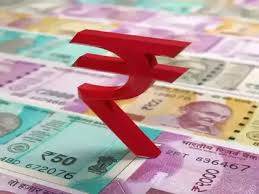
- 18 Jan 2025
In News:
The Indian rupee has recently experienced sharp devaluation against the US dollar after a period of relative stability. This shift is attributed to several factors, including capital outflows, rising import costs, and RBI’s evolving policy stance.
Understanding Exchange Rate Regimes
Exchange rates are classified into:
- Fixed Exchange Rate: The central bank maintains a constant exchange rate by actively managing reserves.
- Floating Exchange Rate: Market-driven rates with minimal intervention.
- Managed-Floating Exchange Rate: A blend of market forces and central bank intervention.
India has largely pursued a managed-floating exchange rate regime. The RBI has historically responded to excess demand by depreciating the rupee while selling forex reserves and, under excess supply conditions, resisted rupee appreciation to maintain export competitiveness.
Post-COVID Exchange Rate Shift
Between 2022 and November 2024, the RBI temporarily adopted a strategy resembling a fixed exchange rate regime to stabilize the rupee. However, amid rising capital outflows and increased import costs, the RBI recently reverted to its managed-float approach, allowing the rupee to depreciate.
Causes of Rupee Depreciation
- Internal Factors:
- Rising inflation reduced the rupee's real value and increased production costs.
- A widening trade deficit due to higher crude oil imports heightened demand for foreign currency.
- Persistent fiscal imbalances further pressured the rupee.
- Policy ambiguity in the RBI’s stance added market uncertainty.
- External Factors:
- Capital outflows driven by global uncertainties and rising US interest rates.
- Geopolitical tensions (e.g., Russia-Ukraine war) increased India’s import bill.
- The US dollar's strength amid aggressive Federal Reserve rate hikes further weakened the rupee.
Implications of Rupee Devaluation
- Positive Effects:
- Boost to Exports: A weaker rupee makes Indian goods cheaper, enhancing export competitiveness if supported by real exchange rate depreciation.
- Adverse Effects:
- Inflationary Pressures: Higher import costs increase consumer prices.
- Reduced Purchasing Power: Increased costs are often passed on to consumers.
- Foreign Debt Servicing: A depreciated rupee raises debt repayment costs for Indian firms and the government.
- Investor Sentiment: Currency instability diminishes foreign investor confidence, triggering further capital outflows.
Structural Constraints in the Indian Economy
- Divergence between NEER and REER:
- Since the mid-2010s, India's Nominal Effective Exchange Rate (NEER) depreciated while the Real Effective Exchange Rate (REER) appreciated. This divergence undermines export competitiveness, as rising domestic prices offset nominal depreciation benefits.
- Rising Markups:
- Non-financial firms increased their markups on variable costs, contributing to inflation and nullifying the advantages of currency depreciation for exports.
Policy Responses and Recommendations
- RBI Interventions:
- Forex market interventions to manage demand-supply imbalances.
- Interest rate adjustments to attract capital inflows and stabilize the rupee.
- Enhanced forex reserve management to mitigate excessive volatility.
- Fiscal Strategies:
- Reducing Import Dependency: Boost domestic production of high-demand goods like crude oil substitutes.
- Export Incentives: Strengthen export sectors through subsidies, incentives, and improved infrastructure.
- Encouraging Long-Term FDI: Promoting stable investment environments for sustained capital inflows.
- Structural Reforms:
- Policies that enhance domestic production, reduce reliance on volatile foreign portfolio investments (FPIs), and maximize remittances can stabilize the rupee in the long term.
Nine Years of Startup India

- 16 Jan 2025
In News:
On January 16, 2025, India marks nine years of Startup India, a transformative journey that began in 2016. Designated as National Startup Day, this occasion celebrates the nation’s strides in fostering a robust and inclusive entrepreneurial ecosystem.
Current Status (as of Jan 2025)
Over 1.59 lakh startups recognized by DPIIT, making India the 3rd largest startup ecosystem globally.
- More than 100 unicorns (startups valued over $1 billion).
- Key hubs: Bengaluru, Hyderabad, Mumbai, Delhi-NCR; growing contribution from smaller cities.
Key Sectors
- Major sectors: Fintech, Edtech, Health-tech, E-commerce.
- Notable companies: Zomato, Nykaa, Ola exemplify India's shift from job seekers to job creators.
Key Milestones (2016–2025)
- Startups grew from around 500 in 2016 to 1.59 lakh in 2025.
- 73,151 startups with at least one-woman director as of 2024, showcasing rise in women entrepreneurship.
- Over 16.6 lakh jobs created by DPIIT-recognized startups by 2024.
Core Features of Startup India
- Ease of Doing Business: Simplified compliance, self-certification, and single-window clearances.
- Tax Benefits: Three-year tax exemptions for eligible startups.
- Funding Support: ?10,000 crore Fund of Funds for Startups (FFS) supports early-stage funding.
- Sector-Specific Policies: Policies focusing on sectors like biotechnology, agriculture, and renewable energy.
Industry-wise Jobs Created
- IT Services: 2.04 lakh jobs.
- Healthcare & Lifesciences: 1.47 lakh jobs.
- Professional & Commercial Services: 94,000 jobs.
- Total direct jobs created: 16.6 lakh (as of Oct 2024).
Flagship Schemes
- Startup India Seed Fund Scheme (SISFS).
- Credit Guarantee Scheme for Startups (CGSS).
- Fund of Funds for Startups (FFS) Scheme.
Other Key Initiatives
- Capacity Building & Handholding: Workshops for regional ecosystems, especially in non-metro cities.
- Outreach & Awareness: Initiatives to facilitate funding, incubation, and mentorship opportunities.
- Ecosystem Development: National-level events like Startup Mahakumbh to bring together key stakeholders.
- International Linkages: India’s G20 Presidency institutionalized Startup20 to enhance global collaborations.
BHASKAR Platform (Launched in Sept 2024)
- Objective: Centralize and streamline interactions within the entrepreneurial ecosystem.
- Key Features:
- Networking: Connects startups, investors, mentors, and government bodies.
- Resources: Provides quick access to essential tools and knowledge for scaling startups.
- Global Outreach: Promotes India as a global innovation hub.
Startup Mahakumbh
- 2024 Edition: Hosted 1,300 exhibitors, 48,000 visitors, and 392 speakers, including unicorn founders and policymakers.
- 2025 Edition (3-5 April, New Delhi): Theme - “Startup India @ 2047 – Unfolding the Bharat Story.”
Bharat Cleantech Manufacturing Platform
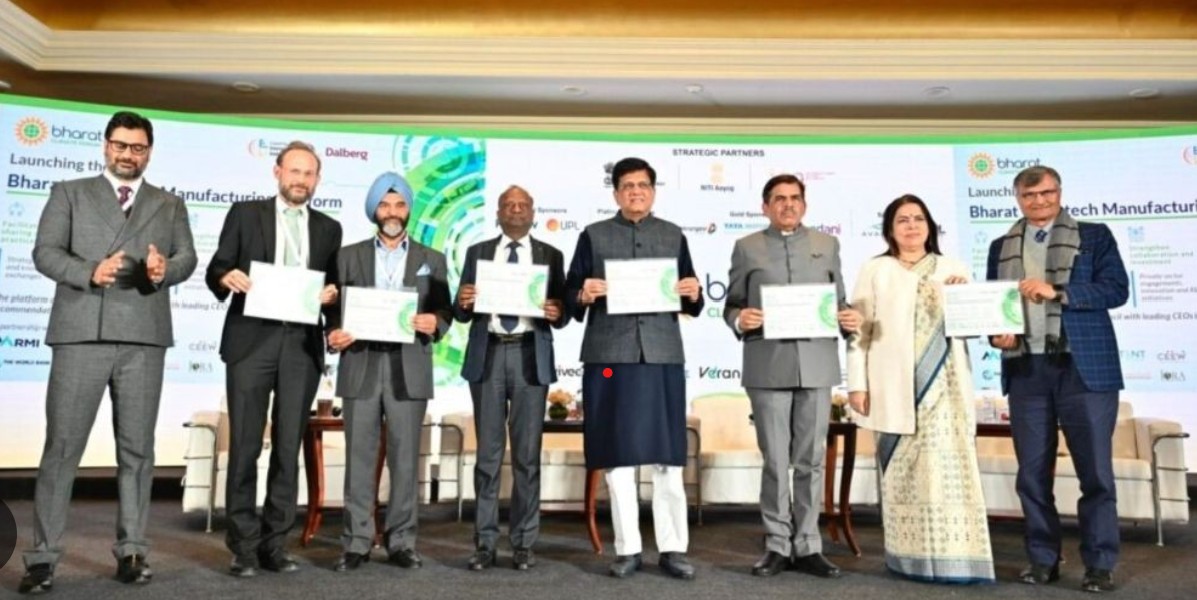
- 14 Jan 2025
In News:
Union Minister of Commerce & Industry Shri Piyush Goyal launches Bharat Cleantech Manufacturing Platform.
Bharat Cleantech Manufacturing Platform:
- Objective: Strengthen India's cleantech value chains, especially in solar, wind, hydrogen, and battery storage sectors.
- Platform Features:
- Aims to promote collaboration, co-innovation, and knowledge-sharing among Indian firms.
- Focus on scaling up manufacturing, sharing ideas, technologies, and resources.
- Acts as a financing platform for the cleantech sector.
- Designed to position India as a global leader in sustainability and cleantech innovation.
India's Clean Energy Commitment:
- Target: 500 GW of clean energy capacity by 2030.
- India has been a front-runner in fulfilling its Nationally Determined Contributions (NDCs) under the Paris Agreement and UNFCCC.
- Early Achievement: India achieved its 2022 renewable energy target of 200 GW, 8 years ahead of schedule.
- Largest Interconnected Grid: India boasts the world’s largest interconnected power grid, enhancing its renewable energy distribution capacity.
- Gujarat is a pioneer in solar power adoption in India.
Union Minister Shri Piyush Goyal's Views:
- On Product-Linked Incentives (PLIs):
- PLIs and subsidies are seen as short-term aids; long-term growth of the clean energy sector depends on it becoming self-sustaining.
- Urged Indian firms to innovate and scale up manufacturing within the country.
- On Clean Energy and Sustainability:
- Stressed the importance of innovation and collaboration to achieve sustainability goals.
- India aims to attract international investors by creating a compelling business case for cleantech investments.
- 3S Approach (Speed, Scale, and Skill): Key to implementing India's renewable energy program, emphasizing rapid deployment, large-scale adoption, and skill development in the sector.
Bharat Climate Forum 2025:
- Event Objective: A platform for policymakers, industry leaders, and stakeholders to discuss climate action, clean energy, and India’s role in global climate goals.
- Key Focus Areas:
- Aligning India’s clean energy initiatives with global climate goals (UNFCCC, Paris Agreement).
- Emphasizing India’s early achievements in clean energy adoption.
- Promoting sustainable development and clean energy solutions.
India's Performance in Renewable Energy:
- India’s progress has been commendable in meeting its climate targets and setting up clean energy capacity ahead of schedule.
- The government’s initiatives, led by Prime Minister Narendra Modi, have made solar power affordable and scalable through transparency in auctions, competitive bidding, and speed in project implementation.
Future of Jobs Report 2025

- 12 Jan 2025
In News:
The World Economic Forum's latest "Future of Jobs Report 2025" has highlighted significant trends and predictions for the global labor market by 2030.
Key Highlights:
Fastest Growing Jobs by 2030
The report identified the following jobs as the fastest-growing by 2030:
- Big Data Specialists
- FinTech Engineers
- AI and Machine Learning Specialists
- Software and Applications Developers
- Security Management Specialists
- Data Warehousing Specialists
- Autonomous and Electric Vehicle Specialists
- UI/UX Designers
- Delivery Drivers
- Internet of Things (IoT) Specialists
Job Disruption and Creation
- 22% of jobs globally will be disrupted by 2030 due to automation and technological advancements.
- 170 million new jobs are expected to be created, resulting in a net increase of 78 million jobs.
- Technological shifts, economic uncertainty, and demographic changes are expected to play significant roles in this transformation.
Skills in High Demand
- AI, Big Data, Cybersecurity: Skills related to artificial intelligence and big data are expected to see an 87% rise, while networks and cybersecurity skills are projected to increase by 70%.
- Creative Thinking, Flexibility: Skills like creative thinking, resilience, flexibility, and agility are also expected to see a significant rise, emphasizing the importance of soft skills in a technology-driven world.
Declining Jobs
The report lists the following positions as expected to decline by 2030:
- Postal Service Clerks
- Bank Tellers
- Data Entry Clerks
- Cashiers and Ticket Clerks
- Telemarketers
- Printing Workers
- Accounting and Bookkeeping Clerks
These roles are being replaced or transformed by automation and AI, which are reshaping traditional job functions.
Technological Advancements
- Digital Access: 60% of employers believe that expanding digital access will be the most transformative trend for businesses.
- AI and Robotics: Employers are investing heavily in AI, robotics, and energy technologies, creating a demand for skilled workers in these sectors.
- Energy Technologies: Jobs related to the green transition, including renewable energy and environmental engineering, will see an uptick as countries strive to meet climate goals.
Key Drivers of Change
- Technological Change: AI, machine learning, and automation will continue to reshape industries.
- Geoeconomic Fragmentation: Geopolitical tensions and economic shifts are prompting businesses to transform their models, leading to a greater demand for cybersecurity and security management roles.
- Aging Populations: The growing demand for healthcare services, especially in high-income economies, will result in more jobs in the care economy (e.g., nursing professionals, social workers).
- Green Transition: The global shift toward clean energy and environmental sustainability will create numerous opportunities for jobs in renewable energy and climate change mitigation.
Implications for India
- AI and Robotics Investment: Indian companies are leading the way in investing in AI, robotics, and autonomous systems.
- Growth Sectors: India’s rapidly developing tech sector will see a rising demand for AI, machine learning, and big data specialists.
- Disruptions in Traditional Jobs: Roles like postal clerks, cashiers, and data entry clerks in India are also expected to face significant reductions due to automation.
Challenges for Employment in India
- Skill Mismatch: There is a significant skill gap, with many workers lacking expertise in emerging fields like AI, cybersecurity, and data science.
- Digital Divide: Urban areas are adapting to new technologies faster than rural areas, which may widen employment disparities.
- Informal Sector: India’s large informal workforce faces challenges in transitioning to technology-driven jobs due to limited access to training and education.
Reskilling and Upskilling
- The WEF report emphasizes that 59% of the global workforce will need reskilling or upskilling by 2030 to remain competitive.
- Workers must adapt to new roles, especially in technology and the green transition, to meet the evolving demands of the job market.
GEAPP and ISA Sign $100 Million Agreement for Solar Projects

- 12 Jan 2025
In News:
The Global Energy Alliance for People and Planet (GEAPP) signed a Multi-Donor Trust Fund (MDTF) agreement with the International Solar Alliance (ISA) to mobilize $100 million for funding high-impact solar energy projects. This collaboration is part of a wider effort to accelerate India's clean energy transition, bridge financing gaps, and enhance the country's energy systems. Along with this agreement, two other key initiatives were announced:
- DUET (Digitalization of Utilities for Energy Transition)
- ENTICE 2.0 (Energy Transitions Innovation Challenge)
These programs aim to address energy transition challenges by fostering scalable, cost-efficient solutions, digitalizing utilities, and supporting innovations for sustainable energy.
Key Features:
- Multi-Donor Trust Fund (MDTF):
- The MDTF aims to raise and deploy $100 million to finance impactful solar energy projects, with ISA driving the strategic direction.
- GEAPP’s Project Management Unit will provide governance, fundraising, and technical expertise to ensure project success.
- The collaboration emphasizes the importance of solar energy in achieving India's clean energy goals.
- DUET (Digitalization of Utilities for Energy Transition):
- Focuses on transforming grid systems by digitalizing grid assets and integrating them with smart sensors.
- Real-time data will help reduce transmission losses and facilitate Battery Energy Storage Systems (BESS) deployment, assisting in the integration of Distributed Renewable Energy (DRE) into the grid.
- ENTICE 2.0 (Energy Transitions Innovation Challenge):
- A platform for identifying and scaling innovative solutions to accelerate the clean energy transition, especially within India's growing startup ecosystem.
- Focuses on supporting investable opportunities for energy transition solutions, building on the earlier success of ENTICE 1.0.
Global Impact of GEAPP:
GEAPP, launched with an initial commitment of $464 million, has already funded 130 projects across 40 countries. These projects have impacted over 50 million people, helping reduce 43 million tons of CO2 emissions. The collaboration with ISA is expected to deepen GEAPP's efforts in mobilizing capital to foster clean energy access and tackle climate change.
India’s Clean Energy Transition:
India has already extended electricity access to over 800 million people, but about 2.5% of households still remain unelectrified. Distributed renewable energy, especially solar energy, will play a pivotal role in reaching these underserved populations. India aims for 47 GW of battery energy storage systems by 2032, which will support grid stability and energy access.
Additional Initiatives and Impact:
- Battery Energy Storage Systems (BESS):
- GEAPP has also supported India’s first commercial standalone BESS project, which will provide 24/7 power to over 12,000 low-income customers.
- The project is set to lower electricity tariffs by 55%, benefiting economically disadvantaged communities.
- Strategic Alliances:
- The partnership with ISA and the strategic initiatives like DUET and ENTICE 2.0 aim to further India’s climate and energy goals, bringing renewable energy solutions to underserved regions, and supporting the country's energy security.
Role of GEAPP and ISA:
- GEAPP works to mobilize financing, provide technical expertise, and ensure effective implementation of renewable energy projects globally.
- ISA focuses on solar energy solutions, and with this agreement, it seeks to enhance the solar energy capacity in its member countries, aligning with climate targets.
About GEAPP:
GEAPP is a multi-stakeholder alliance comprising governments, philanthropy, technology partners, and financial institutions. Its goal is to transition developing economies to clean energy while enhancing economic growth. It aims to:
- Reduce 4 gigatons of carbon emissions.
- Provide clean energy access to 1 billion people.
- Create 150 million new jobs globally.
India’s First Organic Fisheries Cluster
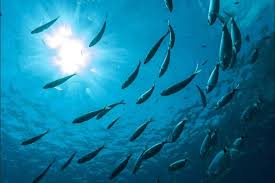
- 12 Jan 2025
In News:
The Union Minister, Department of Fisheries, Ministry of Fisheries, Animal Husbandry and Dairying Shri Rajiv Ranjan Singh inaugurated and laid the foundation for 50 key projects worth Rs. 50 crores under Pradhan Mantri Matsya Sampada Yojana (PMMSY) covering all North East Region States Except Arunachal Pradesh and Mizoram.
Key Highlights:
- Initiative: India’s first Organic Fisheries Cluster, launched under the Pradhan Mantri Matsya Sampada Yojana (PMMSY). The cluster focuses on sustainable aquaculture, promoting the production of antibiotic, chemical, and pesticide-free organic fish.
- Target Markets: Eco-conscious domestic and global markets.
Sikkim's Role as India’s First Organic State:
- Sikkim's Organic Commitment: Sikkim is the first Indian state to embrace 100% organic farming, covering 75,000 hectares of land.
- Vision: The Organic Fisheries Cluster aligns with Sikkim’s broader goal of promoting organic, sustainable agricultural practices.
Objective of Organic Fisheries Cluster:
- To prevent pollution and protect aquatic ecosystems by using ecologically healthy practices.
- Promotes sustainable fish farming methods, reducing environmental damage.
- Focus on species like amur carp and other carp varieties, aligning with the state’s success in organic farming.
Support from NABARD:
- The National Bank for Agriculture and Rural Development (NABARD) will provide financial and technical assistance.
- Key support includes:
- Infrastructure development.
- Formation of Fisheries-based Farmer Producer Organizations (FFPOs).
- Capacity building of local fishers and farmers.
PMMSY: A Comprehensive Fisheries Development Scheme:
- Investment: ?20,050 crore under PMMSY.
- Objective: To revolutionize India’s fisheries sector by promoting sustainable growth, enhancing fish production, and improving infrastructure.
- Implementation Period: FY 2020-21 to FY 2024-25.
- Key Goals:
- Boosting fish production and exports.
- Enhancing welfare of fishers and farmers.
- Promoting cluster-based development for better efficiency and competitiveness.
Cluster-Based Approach in Fisheries:
- Objective: To bring together geographically connected enterprises to enhance economies of scale.
- Impact: This approach improves financial viability, strengthens the fisheries value chain, and creates new business and livelihood opportunities.
- Types of Clusters: Includes Pearl, Seaweed, Ornamental Fisheries, Cold Water Fisheries, Organic Fisheries, and more.
Fisheries Focus in the North Eastern Region (NER):
- Fisheries Potential: The North Eastern Region (NER) has abundant freshwater resources and is a biodiversity hotspot.
- Growth: Inland fish production in the NER surged from 4.03 lakh tonnes (2014-15) to 6.41 lakh tonnes (2023-24), marking an impressive 5% annual growth.
- Investment in NER: Over ?2,114 crore invested through schemes like Blue Revolution and PMMSY.
- Key Projects:
- 50 projects worth ?50 crore to boost the region’s fisheries infrastructure, generating over 4,500 jobs.
- Projects include hatcheries, cold storage units, aquaculture parks, and fish kiosks.
India’s Global Fisheries Standing:
- India is the second-largest fish producer in the world, contributing 8% to global fish production.
- Top Rankings:
- Second in aquaculture production.
- Leading in shrimp production and exports.
- Third in capture fisheries.
Government Commitments and Schemes:
- Total Investment: Since 2015, the government has committed ?38,572 crore to fisheries development through key schemes like:
- Blue Revolution.
- Fisheries and Aquaculture Infrastructure Development Fund (FIDF).
- PMMSY.
- Pradhan Mantri Matsya Kisan Samridhi Sah-Yojana (PM-MKSSY).
- These initiatives aim to promote sustainable growth, create jobs, and enhance infrastructure in the fisheries sector.
Economic, Environmental, and Social Benefits:
- Economic Impact:
- Higher incomes for fishers and farmers through better production and export.
- Employment generation through infrastructure development.
- Environmental Impact: Reduced pollution and protection of aquatic ecosystems.
- Social Impact: Empowerment of local communities, fostering sustainable livelihoods.
UJALA Scheme

- 10 Jan 2025
In News:
UJALA scheme completes 10 years, saves ?19,153 crore annually
UJALA Scheme (Unnat Jyoti by Affordable LEDs for All)
- Launch Date: 5th January 2015 by PM Narendra Modi
- Objective:
- To promote energy-efficient LED lighting across India
- To reduce energy consumption, lower electricity bills, and decrease carbon emissions
- Implementing Body: Energy Efficiency Services Limited (EESL), Ministry of Power
- Scheme Relevance: Aims to provide affordable LED bulbs, tube lights, and fans to every household
- Global Recognition: World’s largest zero-subsidy domestic lighting scheme
Key Features:
- Affordability: Subsidized LED bulbs (?70-80), reducing the cost of electricity for households
- Energy Efficiency: LEDs consume 90% less energy than incandescent bulbs, 50% less than CFLs
- Environmental Impact: Significant reduction in CO? emissions by avoiding millions of tonnes annually
- Market Transformation: Over 36.87 crore LED bulbs distributed, saving approximately ?19,153 crore on electricity bills each year
- Consumer Benefit:
- On-Bill Financing: LED bulbs available for purchase through deferred payment via electricity bills
- Targeted low-income communities through Self-Help Groups (SHGs)
Achievements:
- Energy Savings: 47.9 billion kWh annually
- Cost Savings: ?19,153 crore saved on electricity bills
- Carbon Emission Reduction: 38.7 million tonnes of CO? avoided per year
- Peak Demand Reduction: 9,586 MW reduction in peak electricity demand
- Street Lighting: Over 1.34 crore LED streetlights installed, saving 9,001 million units annually
Key Initiatives:
- GRAM UJALA Scheme (March 2021): Aimed at rural households, providing LED bulbs at ?10 each
- Street Lighting National Programme (SLNP): Aimed at reducing public lighting costs with energy-efficient streetlights
- Encouraging Domestic Manufacturing: Stimulated local LED production, aligning with the "Make in India" mission
- E-Procurement Transparency: Real-time procurement ensuring price reductions and maintaining quality
Impact on Environment:
- Energy Savings & Carbon Footprint: The scheme significantly reduced the carbon footprint by promoting energy-efficient appliances
- Reduction in Household Consumption: Consumers benefit from reduced energy consumption and lower utility bills
New Method to Improve Nitrogen Use Efficiency (NUE)
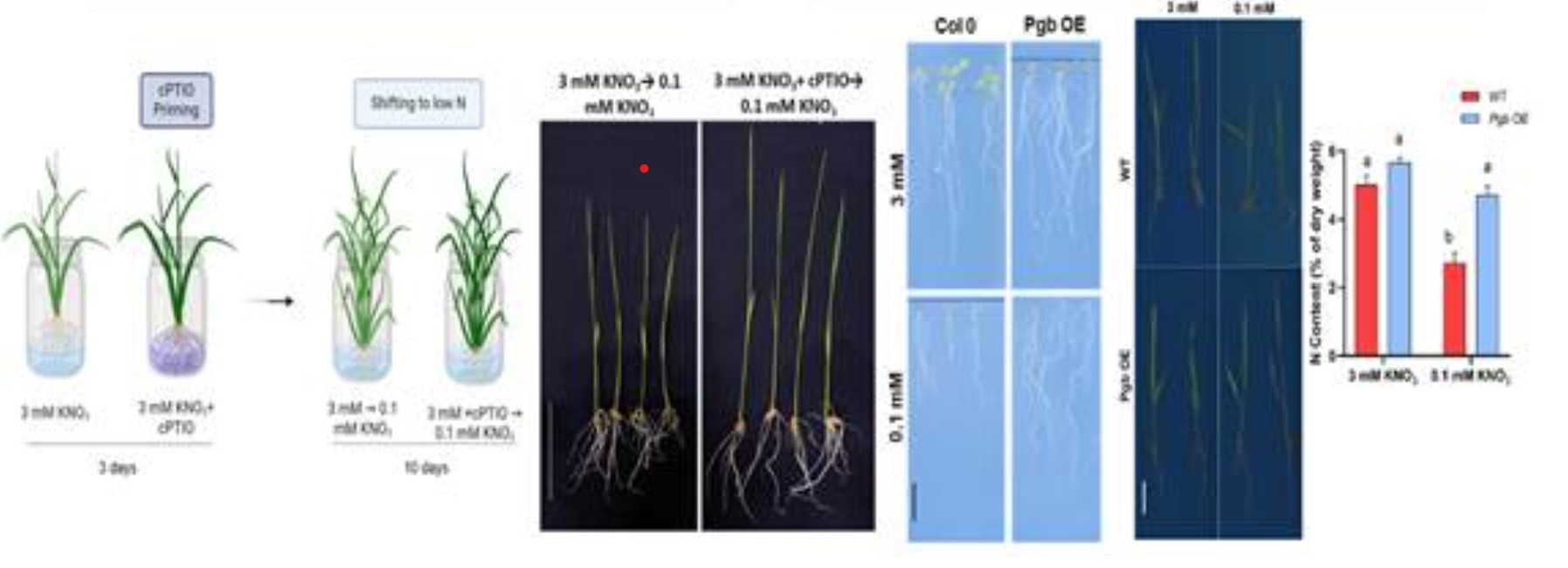
- 10 Jan 2025
In News:
A recent breakthrough in agricultural research offers a promising solution to improve Nitrogen Use Efficiency (NUE) in crops, particularly in rice and Arabidopsis, by reducing nitric oxide (NO) levels in plants. This innovative approach provides an environmentally sustainable way to enhance crop yields while minimizing the need for synthetic nitrogen fertilizers, which have significant ecological and economic drawbacks.
Key Findings and Research Overview:
- Reducing NO Levels: The study, conducted by researchers at the National Institute of Plant Genome Research (NIPGR), demonstrated that by reducing nitric oxide (NO) levels in plants, nitrogen uptake could be significantly improved. This leads to a better NUE, a crucial factor for enhancing crop yield sustainably.
- NUE and Its Importance: NUE refers to the efficiency with which plants use nitrogen for biomass production. Improving NUE allows for higher crop yields with less fertilizer input, reducing costs and minimizing nitrogen-related environmental pollution.
- Traditional Approaches and Their Limitations: Current techniques to improve NUE primarily rely on the use of inorganic nitrogen fertilizers. These methods, though effective, have several downsides:
- They involve high operational costs for farmers.
- Excessive fertilizer use contributes to the emission of nitrogen oxides (NOx) and other pollutants.
- The production of these fertilizers also contributes to greenhouse gas emissions.
In contrast, the new study proposes a genetic and pharmacological manipulation of NO levels, offering a sustainable alternative to these traditional, resource-heavy methods.
Study Methodology:
The research team employed both genetic and pharmacological approaches to regulate NO levels in plants:
- Phytoglobin Overexpression: By overexpressing phytoglobin (a natural NO scavenger), the researchers increased the expression of high-affinity nitrate transporters (HATs) like NRT2.1 and NRT2.4. These transporters are essential for efficient nitrogen uptake.
- NO Donor and Scavenger Treatments: Plants were treated with NO donor (SNAP) and NO scavenger (cPTIO) to monitor the effects on NUE.
- Results: The treatment led to more efficient nitrogen uptake, especially under low NO conditions, by enhancing the expression of HATs. This method could increase plant growth and nitrogen utilization without relying on excessive fertilizer use.
Significance and Impact:
This research provides a pathway to enhance crop yield sustainably by addressing one of the most critical challenges in modern agriculture—reducing the reliance on nitrogen fertilizers. By modulating NO levels to regulate nitrogen uptake, this approach offers:
- Reduced need for synthetic fertilizers, lowering farmers' operational costs.
- Minimized environmental impact, including lower nitrogen oxide emissions and less nitrogen runoff.
- Improved nitrogen uptake efficiency, ensuring better crop yields, especially under conditions with limited nitrogen availability.
Broader Implications:
- Global Nitrogen Challenges:
- The overuse of nitrogen fertilizers has been a major driver of nitrogen pollution, leading to issues like eutrophication, biodiversity loss, and climate change.
- According to the Food and Agriculture Organization (FAO), excessive nitrogen use has worsened environmental conditions globally, while many regions, particularly in low-income countries, suffer from nitrogen depletion, which reduces crop productivity.
- Health and Environmental Risks:
- Nitrogen pollution contributes to health issues like methemoglobinemia (blue baby syndrome) and various long-term diseases.
- Nitrogen compounds also play a role in greenhouse gas emissions, further exacerbating climate change.
- Future Directions for Sustainable Agriculture:
- This study highlights the need for innovative nitrogen management strategies, integrating both biological and genetic approaches to optimize nitrogen use.
- Research is underway to develop NO scavenging formulations and identify bacteria that could be used in soil to enhance NUE in plants.
- Policy Recommendations:
- Governments should focus on reducing the environmental and health impacts of nitrogen fertilizer production and usage by promoting sustainable farming practices.
- Encouraging biological nitrogen fixation through crops like soybeans and alfalfa, and investing in low-emission fertilizers, can help mitigate nitrogen pollution.
Anji Khad Bridge
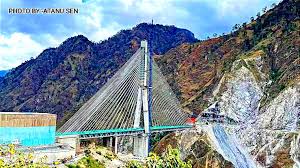
- 08 Jan 2025
In News:
The Indian Railways has unveiled a monumental engineering achievement with the completion of the Anji Khad Bridge, India’s first cable-stayed rail bridge.
Overview:
- The Anji Khad Bridge is India's first cable-stayed rail bridge, located in Jammu and Kashmir’s Reasi district.
- It is a key part of the Udhampur-Srinagar-Baramulla Rail Link (USBRL) project aimed at enhancing connectivity between Jammu and Kashmir and the rest of India.
- The bridge crosses the Anji River, a tributary of the Chenab River, and is expected to transform regional transport, boost tourism, and promote economic growth.
Key Features:
- Dimensions:
- Total length: 725.5 meters.
- Main Pylon Height: 193 meters from the foundation, standing 331 meters above the riverbed.
- The bridge is designed for train speeds of up to 100 km/h and can withstand wind speeds of up to 213 km/h.
- Structure and Design:
- Asymmetrical cable-stayed design supported by 96 cables with varying lengths (82 to 295 meters).
- The structure includes:
- A 120-meter approach viaduct on the Reasi side.
- A 38-meter approach bridge on the Katra side.
- A 473.25-meter cable-stayed portion crossing the valley.
- A 94.25-meter central embankment linking the main bridge to the approach viaduct.
- Construction Techniques:
- Used advanced construction techniques such as DOKA Jump Form Shuttering, Pump Concreting, and Tower Crane Technique to enhance safety and reduce construction time by 30%.
- A 40-ton tower crane imported from Spain was employed for operations at great heights.
- The project utilized site-specific investigations by IIT Roorkee and IIT Delhi due to the region’s complex geological and seismic conditions.
- Engineering Challenges:
- The bridge had to be constructed in the difficult Himalayan terrain, with fragile geological features such as faults and thrusts.
- Seismic activity in the region required additional precautions in the design and construction process.
- Safety and Monitoring:
- Equipped with an integrated monitoring system that includes multiple sensors to ensure the structural health of the bridge during operation.
Importance and Impact:
- Connectivity: The bridge will significantly improve connectivity between Katra and Reasi, ensuring faster rail travel and linking the Kashmir Valley with the rest of India.
- Tourism and Economic Growth: Expected to boost tourism and economic development by improving access to the region, attracting visitors, and facilitating smoother transportation of goods and services.
- Sustainability: The bridge's design ensures it remains safe under extreme weather conditions, offering long-term reliability for the Indian Railways network.
Collaboration and International Expertise:
- The design and supervision were handled by ITALFERR (Italy), with proof-checking conducted by COWI (UK).
- The project combines Indian engineering codes with Eurocodes, adhering to international standards for structural integrity.
Ramesh Chand Panel

- 03 Jan 2025
In News:
The Government of India has formed an 18-member panel, headed by Ramesh Chand, a member of NITI Aayog, to revise the base year of the Wholesale Price Index (WPI) to 2022-23 from the current base year of 2011-12. The panel will also work on a roadmap for transitioning from WPI to the Producer Price Index (PPI).
Key Highlights:
Role and Mandates of the Panel:
- Revised Commodity Basket: The panel will recommend a new commodity basket for both WPI and PPI, reflecting structural changes in the economy.
- Review of Price Collection System: The panel will evaluate the current system for price collection and propose improvements.
- Computational Methodology: It will determine the computational methodology for both WPI and PPI to ensure accuracy in tracking price changes.
- The panel has been tasked with submitting its final report to the Office of the Economic Adviser at the Department for Promotion of Industry and Internal Trade (DPIT) within 18 months.
Understanding WPI vs. PPI:
- WPI (Wholesale Price Index) tracks the price of goods at the wholesale stage (i.e., goods sold in bulk to businesses), and excludes the service sector.
- Key Characteristics of WPI:
- Does not consider consumer-facing prices.
- Excludes services (about 55% of GDP).
- Can have double-counting bias due to multiple transactions before the final sale.
- Does not account for indirect taxes and may include export/import prices.
- Use: WPI helps in tracking bulk price movements between businesses, but doesn't fully represent consumer price inflation.
- Key Characteristics of WPI:
- PPI (Producer Price Index) tracks prices at various stages of production, considering both goods and services, and measures the average change in prices received by domestic producers.
- Key Characteristics of PPI:
- Excludes indirect taxes (making it more accurate for price movement tracking).
- Includes services, unlike WPI, giving a broader view of price trends across the economy.
- More aligned with international standards (System of National Accounts).
- Reflects prices before consumer consumption, providing a business-oriented perspective of price trends.
- Key Characteristics of PPI:
Why the Transition to PPI?
- The PPI is already used by major economies like the US, China, Germany, and Japan as it provides a more comprehensive measure of inflation from a producer’s perspective.
- It is expected to be a better indicator of inflationary trends in the overall economy, including both goods and services.
Challenges and Roadmap:
- The switch to PPI is complex, and the panel will need to ensure that the transition does not disrupt the current data collection and reporting systems. Both WPI and PPI will run concurrently until PPI stabilizes.
Business Ready (B-READY) Report 2024

- 02 Jan 2025
In News:
- The B-READY report, launched by the World Bank in 2024, replaces the Ease of Doing Business (EoDB) index.
- Focus: It evaluates the global business environment to foster inclusive private sector growth, assessing 10 core topics covering a firm's lifecycle, such as business entry, taxation, labor, and international trade.
India’s Potential Challenges
- Business Entry: India faces multiple steps and incomplete digital integration, making it slower compared to benchmarks like Singapore, which achieves one-day registration at minimal cost.
- Labor Regulations: While India has introduced four labor codes, the implementation remains slow and inconsistent, affecting labor flexibility and compliance.
- International Trade: India struggles with customs delays, inconsistent enforcement, and high logistics costs, unlike countries like Germany and Singapore, which promote trade efficiently.
- Business Location: Regulatory delays and inconsistent approvals hinder the establishment of business facilities, affecting investment decisions.
- Public Services Gap: While regulations may be strong, there is often a gap in the provision of public services that support their effective implementation, leading to inefficiencies.
Key Strengths for India
- India is expected to score well in the areas of Quality of Regulations, Effectiveness of Public Services, and Operational Efficiency.
- The country shows promise in promoting digital adoption and aligning with global environmental sustainability practices, though gender-sensitive regulations need more emphasis.
Significance
- The B-READY report serves as an essential benchmark for assessing India's business environment, offering insights into regulatory reforms and operational efficiency.
- Key policy implications for India include the need to:
- Streamline business operations by digitizing registration and regulatory approval processes.
- Improve logistics and trade efficiency by reducing customs delays.
- Address labor market inefficiencies through better implementation of labor codes.
- Invest in public services and promote digital transformation for better compliance and operational ease.
- Focus on sustainability and inclusivity, ensuring gender-sensitive policies and fostering green business practices.
Global Findings from the B-READY Report
- Economies with strong regulatory frameworks and digital tools (e.g., Rwanda, Georgia) show that even countries with varying income levels can achieve high scores.
- High-income countries like Estonia and Singapore still have room for improvement, especially in areas like taxation and dispute resolution.
Comparison of B-READY with Ease of Doing Business (EoDB)
- Scope: B-READY is broader, covering a firm’s lifecycle and social benefits, while EoDB focused mainly on regulatory burdens.
- Indicators: B-READY uses 1,200 indicators from expert consultations and firm-level surveys, offering more comprehensive insights compared to the EoDB's limited metrics.
- Focus on Public Services: Unlike EoDB, which provided limited attention to public services, B-READY explicitly evaluates public service efficiency and operational effectiveness.
Policy Recommendations
- Streamline Business Operations: Inspired by countries like Singapore, India should simplify business registration and reduce delays in customs and regulatory approvals.
- Strengthen Public Services: Focus on improving tax portals, utility access, and dispute resolution systems through digital tools.
- Promote Sustainability: Encourage environmentally sustainable business practices and adopt gender-sensitive regulations to ensure inclusive growth.
- Peer Learning and Global Collaboration: Encourage India to learn from best practices in countries like Singapore and Estonia for effective reforms.
- Tailored Reforms: India must design policies addressing unique local challenges while adhering to global standards.
Lighthouse Tourism in India
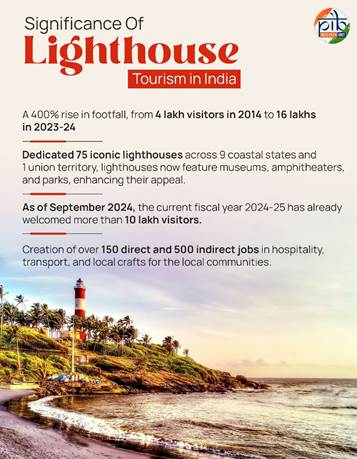
- 27 Dec 2024
In News:
Lighthouse tourism in India is rapidly emerging as an exciting and profitable segment of the country's travel and tourism industry. India's coastline, stretching over 7,500 kilometers, is home to 204 lighthouses, many of which are being transformed into vibrant tourist destinations, celebrating both India's rich maritime history and its natural beauty.
Key Highlights:
- Historical and Scenic Appeal: Lighthouses in India are often located in breathtaking coastal or island locations, offering panoramic sea views and access to surrounding natural beauty. Some of these structures are centuries old and are situated near significant cultural landmarks or UNESCO World Heritage Sites, adding cultural depth to the visitor experience.
- Economic Growth: As part of the broader Maritime India Vision (MIV) 2030 and Amrit Kaal Vision 2047, the Government of India is keen to transform these historic lighthouses into hubs of economic activity. By developing infrastructure, creating new tourism-related jobs, and fostering local entrepreneurship, lighthouse tourism aims to benefit coastal communities and boost India's tourism economy. As of 2023-24, 75 lighthouses across 10 states have been equipped with modern amenities, attracting 16 lakh visitors—a 400% increase from previous years.
- Government Initiatives:
- Lighthouse Festivals: The annual Indian Lighthouse Festival, inaugurated in 2023, serves as a key event to promote lighthouse tourism and cultural heritage.
- The 1st Indian Lighthouse Festival, “Bharatiya Prakash Stambh Utsav”, was inaugurated on 23rd September, 2023 by the Union Minister of Ports, Shipping & Waterways, Shri Sarbananda Sonowal and Goa Chief Minister, Shri Pramod Sawant at the historic Fort Aguada in Goa.
- The 2nd Indian Lighthouse Festival was held in Odisha. Union Minister of Ports, Shipping & Waterways, Shri Sarbananda Sonowal, was also joined by Odisha Chief Minister, Mohan Charan Majhi. Shri Sonowal dedicated two new lighthouses at Chaumuck (Balasore) and Dhamra (Bhadrak) and emphasized empowering coastal communities to preserve and promote lighthouses as part of India’s rich maritime heritage.
- Sagarmala Programme: This government initiative integrates infrastructure development with sustainable practices, ensuring that the growth of lighthouse tourism benefits local communities while preserving the environment.
- Tourism Infrastructure: The government has invested ?60 crore in enhancing these sites, providing facilities like museums, parks, amphitheaters, and more to enrich the visitor experience.
- Lighthouse Festivals: The annual Indian Lighthouse Festival, inaugurated in 2023, serves as a key event to promote lighthouse tourism and cultural heritage.
- Sustainable Development: The Indian government places a strong emphasis on eco-friendly tourism. This includes integrating lighthouses into broader coastal circuits and launching digital awareness campaigns to attract domestic and international tourists.
- Community Empowerment and Employment: Lighthouse tourism has already created direct and indirect employment, from hospitality to transportation, local handicrafts, and artisan work, with more than 500 jobs being generated. Local communities are being trained to offer skills in hospitality and tourism services.
Future Plans:
- Skill Development: Programs are being introduced to equip local people with the necessary skills to cater to the tourism industry.
- Sustainable Practices: Eco-friendly practices will continue to be emphasized to protect coastal ecosystems.
- Integration with Coastal Circuits: Lighthouses will become key points of interest in broader coastal tourism itineraries, further enhancing their appeal to tourists.
Household Consumption Expenditure Survey: 2023-24
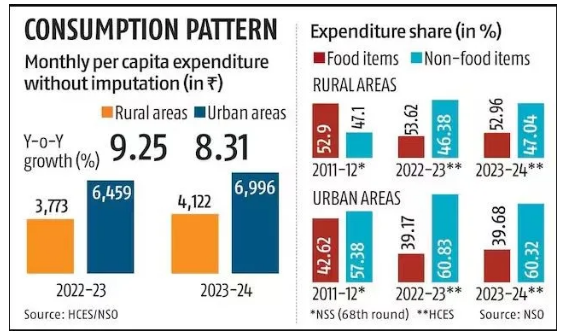
- 27 Dec 2024
In News:
The latest Household Consumption Expenditure Survey (HCES) for 2023-24 reveals notable trends in consumption patterns in rural and urban India, reflecting economic shifts post-pandemic.
Key Highlights:
- Food Spending Increase: The share of food expenditure in household budgets has increased both in rural and urban areas, likely due to rising food prices.
- Rural households allocated 47.04% of their expenditure to food in 2023-24, up from 46.38% in 2022-23.
- Urban households spent 39.68% of their budgets on food, slightly up from 39.17% last year.
- Narrowing Urban-Rural Gap: The gap in Monthly Per Capita Consumption Expenditure (MPCE) between rural and urban households has steadily reduced over the past decade.
- In 2023-24, rural consumption spending was 69.7% of urban consumption, an improvement from 71.2% in 2022-23 and 83.9% in 2011-12.
- Increased Rural Spending: Rural India has seen significant increases in spending. The average monthly spending per person in rural areas rose by 9.3% to Rs 4,122 in 2023-24, surpassing the 8.3% rise to Rs 6,996 in urban areas.
- This suggests a growing momentum in rural consumption, which has outpaced urban consumption growth in the last year.
- Spending Trends Across Income Groups: While the top 5% of both rural and urban populations saw a decrease in their consumption spending, every other income group, including the bottom 5%, registered an increase in spending.
- The bottom 20% in both rural and urban areas saw the highest growth in expenditure, signaling rising economic activity among lower-income groups.
- Non-Food Expenditure Dominates: Non-food items make up a larger share of household spending, particularly in urban areas, where they account for 60.32% of total expenditure compared to 52.96% in rural areas.
- In rural India, major non-food expenses include medical, conveyance, and clothing, while urban households allocate more to entertainment, education, and miscellaneous goods.
- Regional Consumption Patterns: Consumption expenditure varied significantly across states, with western and northern states like Maharashtra, Punjab, and Tamil Nadu spending more than the national average.
- In contrast, eastern and central states, including West Bengal, Bihar, and Odisha, spent less. Sikkim reported the highest per capita expenditure in both rural (Rs 9,377) and urban (Rs 13,927) areas, while Chhattisgarh recorded the lowest.
- Declining Consumption Inequality: The Gini coefficient, which measures consumption inequality, has declined in both rural and urban areas.
- This reflects reduced disparity in spending, indicating a trend toward more equitable economic growth across regions.
- Food Expenditure Trends: Food categories like beverages, processed foods, and cereals continued to see rising shares in total expenditure. The rise in spending on food items was particularly notable in rural areas for eggs, fish, and meat.
Operation Green Scheme
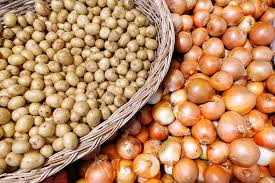
- 27 Dec 2024
In News:
The government’s flagship Operation Greens scheme, designed to stabilise crop prices and benefit farmers, has spent just 34 per cent of its allocated budget for 2024-25, according to a parliamentary report, even as onion farmers in Maharashtra reel from massive losses and potato shortages grip eastern states.
Key Highlights:
Overview:
- Launched: November 2018 under the Pradhan Mantri Kisan SAMPADA Yojana.
- Objective: Stabilize prices and improve farmers' income by enhancing the production and marketing of perishable crops, initially focusing on Tomato, Onion, and Potato (TOP).
- Expanded Scope (2021): Includes 22 perishable crops like mango, banana, ginger, apple, and shrimp.
- Implemented by: Ministry of Food Processing Industries (MoFPI).
- Funding: Managed by the National Agricultural Cooperative Marketing Federation of India (NAFED).
Key Aims:
- Reduce price volatility in agricultural markets.
- Minimize post-harvest losses.
- Strengthen farm-to-market linkages.
- Enhance farmers’ earnings by stabilizing market prices.
- Promote value addition and food processing.
Scheme Components:
- Short-term Interventions:
- Subsidies on transportation (50%) and storage (50%) to protect farmers from distress sales.
- Price stabilization during periods of surplus or shortage.
- Long-term Interventions:
- Development of farm-gate infrastructure like cold storage and processing facilities.
- Strengthening production clusters and Farmer Producer Organizations (FPOs).
- Building efficient agri-logistics systems.
- Promoting food processing and value addition capacities.
Key Features:
- 50% subsidy on transportation and storage costs for eligible crops.
- Projects eligible for 50% subsidy (up to ?50 crore per project), and for FPOs, a 70% subsidy.
- Demand-driven funding based on applications, with no fixed crop or state-wise allocation.
Key Findings from Parliamentary Standing Committee (PSC) Report (2024):
- Underutilisation of Budget: Only 34% (?59.44 crore) of the allocated ?173.40 crore for 2024-25 spent by October 2024, leaving 65.73% unspent.
- Slow Implementation: Out of 10 targeted projects, only 3 were completed by October 2024.
- Limited Impact on Price Stabilization:
- Onion prices fell by nearly 50% in Maharashtra, despite the scheme's intent to stabilize prices.
- Potato shortages in states like Odisha and Jharkhand due to weather-induced production dips in West Bengal.
- Inconsistent Policies: Export bans and fluctuating export duties caused frustration among onion farmers, undermining the scheme’s effectiveness in ensuring fair prices.
Impact on Farmers:
- Price Stabilization: Despite the scheme’s aims, price fluctuations continue to affect farmers, especially in Maharashtra with the onion price crash.
- Post-Harvest Losses: The scheme aims to reduce wastage by building infrastructure like cold storage, but challenges remain in implementation.
- Market Linkages: Attempts to connect farmers and FPOs with retail markets have not yet yielded significant results.
Operational Challenges:
- The scheme faces challenges in fulfilling its dual mandate of ensuring fair prices for farmers while keeping consumer prices affordable.
- The slow utilization of funds and incomplete infrastructure projects raise concerns about the effectiveness of the program.
- Inconsistent policy decisions, like the export ban and imposition of export duties, have contributed to farmer discontent.
Dr. Pushpak Bhattacharyya Committee
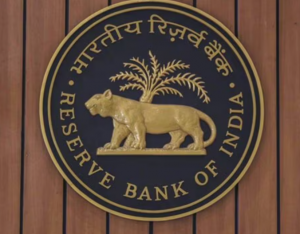
- 27 Dec 2024
In News:
- The Reserve Bank of India (RBI) has set up an eight-member committee to create a framework for the responsible and ethical use of Artificial Intelligence (AI) in the financial sector.
- The committee is chaired by Dr. Pushpak Bhattacharyya, Professor in the Department of Computer Science and Engineering at IIT Bombay.
Key Highlights:
Committee's Objective:
- The primary goal is to develop a Framework for Responsible and Ethical Enablement of AI (FREE-AI) in the financial sector.
- It will guide the ethical adoption of AI in financial services to enhance operational efficiency, decision-making, and risk management.
Scope of the Committee's Work:
- Assess the current global and domestic adoption of AI in financial services.
- Identify potential risks and challenges associated with the integration of AI in the sector.
- Recommend a framework for evaluating, mitigating, and monitoring AI-related risks.
- Propose compliance requirements for various financial entities (e.g., banks, NBFCs, fintech firms).
- Suggest a governance framework for ethical AI usage.
Key Benefits of AI in Financial Services:
- Operational Efficiency: AI can automate repetitive tasks, process large datasets, and enhance accuracy (e.g., loan application processing).
- Enhanced Decision-Making: Predictive analytics in AI help forecast market trends, aiding in better financial decision-making (e.g., algorithmic trading).
- Customer Relationship Management: AI-powered chatbots and virtual assistants enhance customer interaction, offering 24/7 support.
- Improved Risk Management: AI enables proactive fraud detection, improving security and preventing financial losses.
Concerns Associated with AI in Finance:
- Embedded Bias: AI models can replicate biases present in training data, leading to discriminatory outcomes and financial exclusion.
- Data Privacy and Security: The use of AI poses risks to personal data security, with potential violations of privacy regulations.
- Operational Challenges: AI systems may exhibit inconsistent responses, leading to challenges in trust and effectiveness.
- Cybersecurity Risks: Increased use of AI can heighten vulnerability to cyber-attacks and exploitation.
RBI's Role & Governance:
- The RBI aims to ensure that AI adoption in the financial sector is ethical, transparent, and aligned with global best practices.
- The committee's recommendations will influence policies to prevent misuse and safeguard consumer interests.
Rupee and Real Effective Exchange Rate (REER)

- 27 Dec 2024
In News:
The real effective exchange rate (REER) index of the rupee touched a record 108.14 in November, strengthening by 4.5 per cent during this calendar year, according to the latest Reserve Bank of India (RBI) data.
Key Highlights:
- Record REER Index:
- The Real Effective Exchange Rate (REER) of the rupee reached an all-time high of 108.14 in November 2024.
- This marks a 4.5% appreciation in REER during the calendar year 2024, according to RBI data.
- What is REER?
- REER is a weighted average of a country’s currency value against the currencies of its major trading partners, adjusted for inflation differentials.
- It considers 40 currencies accounting for about 88% of India's trade.
- REER Calculation:
- Nominal Exchange Rates: The exchange rate between the rupee and each partner's currency.
- Inflation Differentials: Adjusts for inflation differences between India and its trading partners.
- Trade Weights: Based on the trade share with each partner.
- Recent Trends in REER:
- In 2023, REER dropped from 105.32 in January to 99.03 in April.
- It has since been on an appreciating trend, reaching 107.20 in October and 108.14 in November 2024.
- Dollar Strengthening Impact:
- Despite the rupee weakening against the US dollar (from 83.67 to 85.19 between September and December 2024), it has appreciated against the euro, British pound, and Japanese yen.
- The dollar's strengthening was fueled by global economic factors, including inflation expectations in the US and high bond yields, which led to capital outflows from other countries, including India.
- Impact on Exports and Imports:
- Overvaluation: A REER above 100 signals overvaluation, which can harm export competitiveness (exports become costlier) while making imports cheaper.
- Undervaluation: A REER below 100 indicates a currency is undervalued, boosting exports but increasing the cost of imports.
- India's Inflation and REER:
- India's higher inflation relative to trading partners is a key factor behind the rupee’s rising REER, despite its depreciation against major currencies.
- This suggests the rupee is overvalued, which could explain why the RBI may allow the rupee to depreciate further against the dollar.
- Global Context:
- The strengthening of the US dollar, influenced by factors such as tariff policies under the Trump administration and tighter US monetary policies, plays a significant role in the depreciation of the rupee against the dollar.
- This dynamic affects India's trade balance, with potential consequences for export growth.
- Implications for India’s Economy:
- Overvalued currency (as indicated by REER above 100) can lead to a trade deficit, as imports become cheaper and exports less competitive.
- A weaker rupee, particularly against the dollar, could boost Indian exports but raise the cost of imports.
Strengthening Fisheries Extension Services
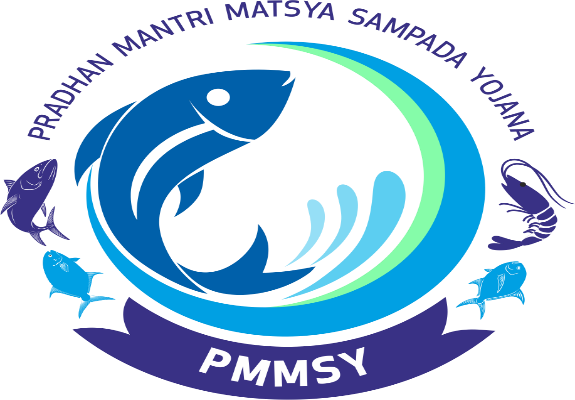
- 26 Dec 2024
In News:
India possesses diverse fisheries resources that provide livelihood opportunities to approximately three crore fishers and fish farmers. The country has witnessed an 83% increase in the national fish production since 2013-14, that stands at a record 175 lakh tons in 2022-23.
Importance of Fisheries Extension Services:
- Livelihood Support: Fisheries provide livelihoods to over 3 crore fishers and fish farmers in India. The sector's growth is crucial for enhancing sustainable practices and ensuring long-term productivity.
- Growth in Fish Production: India’s fish production has seen an 83% increase since 2013-14, reaching 175 lakh tons in 2022-23, with 75% of production coming from inland fisheries. India is the second-largest fish and aquaculture producer globally.
- Role of Extension Services: Extension services bridge the gap between scientific advancements and fishers, offering guidance on:
- Species lifecycle management
- Water quality management
- Disease control
- Sustainable rearing technologies and business models.
Government Initiatives to Strengthen Fisheries Extension:
- Matsya Seva Kendras (MSKs):
- Launched under PMMSY (Pradhan Mantri Matsya Sampada Yojana) in 2020, MSKs are one-stop centers providing comprehensive extension services.
- Support to Fish Farmers: MSKs offer:
- Disease testing, water, and soil analysis.
- Training on sustainable aquaculture practices.
- Technology infusion in seed/feed management.
- Focus on Inclusivity: Government assistance (up to 60%) is available for women and marginalized communities to set up MSKs.
- Examples:
- Thrissur, Kerala: Equipped with labs for water and microbial analysis.
- Maharashtra (Nasik and Sangli): Capacity-building efforts on seed/feed inputs.
- Collaborations: MSKs mobilize start-ups, cooperatives, and Fish Farmer Producer Organizations (FFPOs) to share best practices, including regenerative and conservation management in the face of climate change.
- Sagar Mitras:
- Role: Deployed in coastal states and union territories, Sagar Mitras act as a vital interface between the government and marine fishers.
- Functions:
- Collection and dissemination of daily marine catch data, price fluctuations, and market insights.
- Dissemination of important information: weather forecasts, fishing zones, local regulations, and hygienic fish handling.
- Provide support on disaster preparedness and natural calamities.
Enhancing Extension Services through Digital Platforms:
- AquaBazaar: A virtual learning platform initiated by the National Fisheries Development Board to provide expert guidance on:
- Seed production and breeding of commercially important fish species.
- Practical demonstrations to improve fishers' knowledge.
- Digital Outreach: Expanding such platforms will improve access to resources for fishers, especially in rural and remote areas.
Institutional Convergence and Capacity Building:
- Krishi Vigyan Kendras (KVKs): Fisheries extension services should be integrated with the over 700 Krishi Vigyan Kendras and state-level agricultural extension services for effective outreach.
- Formalizing the Sector: The World Bank-assisted project aims to create work-based digital identities for fishers and fish farmers, enhancing their access to extension services, training, and awareness programs.
Challenges in Fisheries Extension Services:
- Fragmented Initiatives: Multiple government schemes and programs lack institutional convergence, leading to inefficiencies in reaching the grassroots level.
- Digital Divide: Many rural and coastal areas face challenges in terms of digital literacy and internet connectivity, limiting the effectiveness of online platforms.
- Impact of Climate Change: Unpredictable weather patterns and resource depletion due to overfishing demand adaptive strategies and the promotion of climate-resilient practices.
Conclusion and Way Forward:
- Institutional Convergence: Combining existing extension machinery like Krishi Vigyan Kendras with fisheries extension services to leverage established networks and knowledge.
- Expand Digital Outreach: Platforms like AquaBazaar should be expanded to ensure wider access to expert knowledge, training, and best practices.
- Private Sector Collaboration: Encouraging public-private partnerships can enhance technology dissemination, capacity building, and resource mobilization in the fisheries sector.
- Focus on Sustainability: Developing climate-resilient and sustainable fisheries practices will be essential to address challenges posed by environmental changes and overfishing.
Private Aviation and Emissions

- 26 Dec 2024
In News:
Private aviation is releasing more than its ‘fair share’ of emissions.
Key Highlights:
- Aviation Sector's Global Emissions:
- The aviation sector contributed 2% of global CO2 emissions in 2022, around 800 Mt CO2 (International Energy Agency).
- If considered as a nation, aviation would rank among the top 10 emitters worldwide.
- Emissions from aviation have grown faster than other sectors like rail, road, or shipping in recent decades.
- Private Aviation and Its Impact:
- Private jets emit 5 to 14 times more CO2 per passenger than commercial flights and 50 times more than trains.
- Emissions from private aviation increased by 46% between 2019 and 2023.
- Each private flight contributes 3.6 tonnes of CO2 on average, intensifying global warming.
- Private aviation is responsible for significant nitrogen oxide (NOx) emissions and the creation of vapor trails, which further amplify environmental damage.
Trends in Private Aviation Growth:
- Global Trends:
- The number of private jets increased from 25,993 in December 2023 to 26,454 in February 2024.
- In the U.S., 69% of private aviation activity is concentrated.
- 8,500 more jets are expected to be delivered in the next 10 years globally.
- Private Aviation in India:
- 112 private planes were registered in India as of March 2024, placing it among the top 20 countries for private aircraft ownership.
- India's private aviation sector is expanding, driven by the growing billionaire and millionaire population.
- Private aircraft ownership in India stands at 1 per 1 lakh population, which is low compared to countries like Malta (46.51 per lakh) and the U.S. (5.45 per lakh).
Emission Reduction Efforts and Solutions:
- Sustainable Aviation Fuels (SAFs):
- SAFs are bio-based or waste-derived fuels that can reduce carbon emissions by up to 80% compared to conventional jet fuels.
- Airlines like SpiceJet (2018) and AirAsia (2023) have tested SAFs, but large-scale adoption is hindered by high costs and limited production.
- India aims to leverage its ethanol production chain, with potential to meet 15-20% of aviation fuel demand by 2050 if only surplus sugar is used.
- Hydrogen and Electric Aviation:
- Hydrogen offers a higher energy density than kerosene and emits only water vapor, making it a clean fuel alternative. However, hydrogen faces challenges with storage, infrastructure, and aircraft redesign.
- Battery-electric propulsion offers zero emissions but is currently limited by battery weight, energy density, and charging infrastructure.
India’s Policy and Initiatives:
- Government Initiatives:
- UDAN Scheme (Ude Desh ka Aam Nagrik) aims to enhance rural connectivity.
- NABH (Nextgen Airports for Bharat Nirman) seeks to increase airport capacity by five times.
- Sustainability Efforts:
- Indian airlines have tested SAFs, such as a 25% jatropha oil blend by SpiceJet in 2018.
- Ethanol for aviation fuel: India plans to use surplus sugar for ethanol, potentially fulfilling 15-20% of aviation fuel needs by 2050.
- Challenges to Decarbonisation:
- SAFs are costly and limited in availability.
- Hydrogen requires extensive infrastructure and aircraft redesign.
- Battery-electric solutions are currently unsuitable for long-haul flights due to energy limitations.
National Farmers' Day
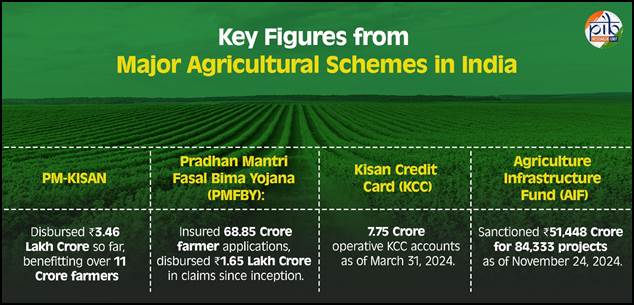
- 23 Dec 2024
In News:
National Farmers' Day, also known as Kisan Diwas, is celebrated annually on December 23rd to honor the vital contributions of Indian farmers and commemorate the birth anniversary of Chaudhary Charan Singh, India's fifth Prime Minister. A passionate advocate for rural development and farmers' welfare, Charan Singh's policies laid the foundation for several reforms aimed at uplifting the agrarian economy. His contributions continue to inspire government initiatives that prioritize the welfare of farmers, fostering sustainable agricultural growth and ensuring food security for the nation.
The Legacy of Chaudhary Charan Singh
Chaudhary Charan Singh was born on December 23, 1902, in Noorpur, Uttar Pradesh. His deep understanding of rural issues and commitment to improving farmers’ lives earned him the title of "Kisan Leader". Throughout his political career, he championed reforms such as the Debt Redemption Bill (1939), which alleviated the financial burdens of farmers, and the Land Holding Act (1960), which promoted fair distribution of agricultural land. He also advocated for Minimum Support Price (MSP), and his policies laid the groundwork for NABARD and other farmer-centric institutions.
Significance of Kisan Diwas
Kisan Diwas highlights the importance of agriculture in India’s economy and employment, with farmers constituting nearly 50% of the workforce. The day emphasizes the need for policies that address farmers' challenges such as climate change, financial constraints, and technological adoption. It also serves as a reminder of the necessity to empower farmers through innovative solutions, financial security, and sustainable farming practices.
Key Government Initiatives for Farmer Welfare
The Indian government has launched several schemes to address the challenges faced by farmers and support their socio-economic upliftment:
- Pradhan Mantri Kisan Samman Nidhi (PM-KISAN): Provides direct income support to small and marginal farmers.
- Pradhan Mantri Fasal Bima Yojana (PMFBY): Offers crop insurance to mitigate financial risks due to crop loss.
- Pradhan Mantri Kisan Maandhan Yojana (PM-KMY): A pension scheme for farmers to ensure long-term social security.
- Soil Health Card Scheme: Promotes efficient fertilizer use and soil health by providing farmers with personalized soil health reports.
- Farmer Producer Organizations (FPOs): These entities help farmers collectively access markets, reduce costs, and improve bargaining power.
- Modified Interest Subvention Scheme (MISS): Provides affordable credit to farmers, especially for agriculture-related activities.
- Kisan Credit Card (KCC): Helps farmers access timely credit for agricultural purposes at concessional rates.
Significant Budget Allocations and New Schemes
The government has drastically increased its budget allocation to the agriculture sector. From Rs. 21,933.50 crore in 2013-14, the budget has risen to Rs. 1,22,528.77 crore for 2024-25, underlining the government's commitment to farmer welfare and sustainable agricultural development.
Notable Initiatives:
- Namo Drone Didi Scheme: This initiative, aimed at empowering Women Self-Help Groups (SHGs), supports the use of drones for agricultural purposes, including fertilizer and pesticide application, with 80% financial assistance.
- Clean Plant Programme (CPP): Enhances the quality and productivity of horticulture crops by ensuring disease-free planting material.
- Digital Agriculture Mission: Aims to modernize farming with digital infrastructure, including crop estimation surveys and e-agriculture platforms.
- National Mission on Natural Farming (NMNF): Encourages chemical-free, sustainable farming practices.
Farmers' Role in Nation-Building
India’s agricultural sector not only sustains the livelihoods of millions but also contributes significantly to the country's GDP. In FY 2023-24, agriculture contributed 17.7% to the Gross Value Added (GVA). With over 54% of the country's land dedicated to agriculture, farmers are critical to food security and rural development.
In 2023-24, India achieved a record foodgrain production of 332.2 million tonnes, illustrating the resilience of Indian farmers in ensuring food availability despite challenges like climate change.
SAMARTH UDYOG BHARAT 4.0 INITIATIVE
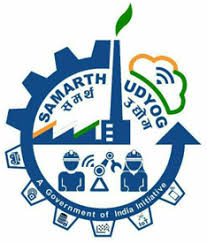
- 22 Dec 2024
In News:
The SAMARTH Udyog Bharat 4.0 initiative, launched by the Ministry of Heavy Industries (MHI), aims to enhance the competitiveness of the Indian capital goods sector by promoting the adoption of Industry 4.0 technologies. This initiative is part of the Scheme for Enhancement of Competitiveness in the Indian Capital Goods Sector.
Key Features of SAMARTH Udyog Bharat 4.0 Initiative
- Establishment of Smart Manufacturing Hubs: Under this initiative, four Smart Advanced Manufacturing and Rapid Transformation Hub (SAMARTH) Centres have been set up across India:
- Centre for Industry 4.0 (C4i4) Lab, Pune
- IITD-AIA Foundation for Smart Manufacturing, IIT Delhi
- I-4.0 India @ IISc, Bengaluru
- Smart Manufacturing Demo & Development Cell, CMTI, Bengaluru
- Cluster Industry 4.0 Experience Centres: In addition to the above centres, 10 cluster Industry 4.0 experience centres have been approved. These will be established under a Hub and Spoke model, managed by the C4i4 Lab in Pune, and spread across India.
- Key Achievements:
- Model Factories: Development of an Industry 4.0 enabled Model Factory at C4i4, Pune, and a smart production-based factory at CMTI Bengaluru.
- Industry 4.0 Solutions: More than 50 use-cases for Industry 4.0 solutions were compiled to support implementation.
- Maturity Assessment Tool: Creation of the Industry 4.0 Maturity Model (I4MM), specifically designed to assess the readiness of Indian manufacturing companies for Industry 4.0.
- Online Assessment Tool: Launch of a free online assessment tool by C4i4 Lab, Pune, to help MSMEs evaluate their maturity in adopting Industry 4.0 technologies.
- Training and Awareness:
- Workshops and Seminars: Regular awareness seminars, workshops, and knowledge-sharing events are organized to educate industries about Industry 4.0.
- Workforce Training: The SAMARTH Centres have trained over 5000 professionals on smart manufacturing and Industry 4.0 technologies.
- Consultancy Services: The centres offer consultancy in areas such as IoT hardware, software development, and data analytics, along with incubation support for start-ups and MSMEs.
- Impact on MSMEs:
- Digital Maturity Assessments: Over 100 digital maturity assessments have been completed for the auto industry, and more than 500 improvement initiatives have been identified.
- Training and Capacity Building: Over 500 digital champions have been trained on Industry 4.0 technologies.
- Focus on MSMEs: While no direct financial assistance is provided to industries, including MSMEs, under this initiative, the SAMARTH Centres play a key role in helping them adopt Industry 4.0 technologies and build their capabilities.
Key Takeaways:
- The SAMARTH Udyog Bharat 4.0 initiative seeks to increase the global competitiveness of India's capital goods and manufacturing sectors.
- It leverages Industry 4.0 technologies such as IoT, automation, data analytics, and AI to modernize manufacturing processes.
- The initiative involves setting up 4 major Smart Manufacturing Hubs and 10 regional experience centres across the country to facilitate awareness, training, and adoption of Industry 4.0 among manufacturers, especially MSMEs.
- While it does not provide financial aid, it helps industries improve their digital maturity, trains workforce, and guides them through consultancy and workshops.
New Undersea Cables to Boost India’s Digital Connectivity
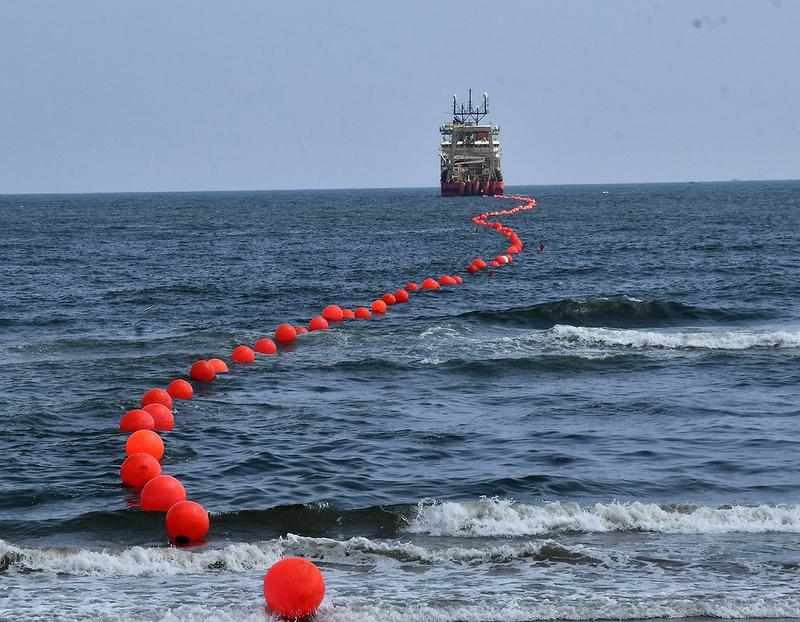
- 21 Dec 2024
In News:
India is expanding its digital infrastructure with the launch of two major undersea cable systems aimed at enhancing its Internet connectivity with Asia and Europe. The India Asia Xpress (IAX) and India Europe Xpress (IEX) are set to provide additional data links between India and these regions, supporting the growing demand for data usage. This also marks India’s increasing involvement in submarine cable resilience and security discussions.
Key Points:
- New Cable Systems:
- India Asia Xpress (IAX): Connects Chennai and Mumbai with Singapore, Thailand, and Malaysia.
- India Europe Xpress (IEX): Connects Chennai and Mumbai with France, Greece, Saudi Arabia, Egypt, and Djibouti.
- Total Length: Both cables, together spanning over 15,000 kilometers, will expand India’s undersea cable network.
- Ownership and Investment:
- Both cable systems are owned by Reliance Jio, with a strategic investment from China Mobile.
- Geopolitical Impact:
- These expansions are a response to growing Internet traffic, as well as India's rising geopolitical ambitions. They help bolster India’s defense strategy, improving cable resilience against disruptions from cyberattacks or physical damages.
- India’s active role in maritime cable network security is being closely watched, especially in key regions like the Bay of Bengal and the South China Sea.
- Past Cable Disruptions:
- In March, three cables connecting India to West Asia and Europe were disrupted, impacting Internet traffic. However, India’s alternate routing systems and data centers ensured services remained operational, highlighting the country’s resilience.
- International Role:
- India’s role in submarine cable resilience is growing. Telecom Secretary Neeraj Mittal is part of the International Advisory Body for Submarine Cable Resilience, established by the International Telecommunication Union (ITU).
Impact on India’s Connectivity:
- Bangladesh's Role:
- Plans to sell bandwidth from Bangladesh to Northeast India were recently put on hold. However, this does not significantly impact India as Northeast India already benefits from substantial fiber-optic connectivity through Power Grid Corporation of India’s transmission lines.
About Underwater Cables:
- What Are Undersea Cables?
- Undersea cables are fiber-optic cables laid under the ocean to transmit data across vast distances at high speeds.
- New Cable Systems:
- IAX: Connects India to Asia (Singapore, Thailand, Malaysia).
- IEX: Connects India to Europe (France, Greece, Saudi Arabia, Egypt, Djibouti).
- How They Work:
- Fiber-optic technology uses laser beams through thin glass fibers to transmit data.
- The cables are protected by multiple layers of insulation, plastic, and steel wires and are buried near shores or laid directly on the ocean floor in deep sea regions.
- Cable Features:
- Data Capacity: New cables can carry up to 224 Tbps (Terabits per second).
- Durability: Designed to avoid damage from fault zones, fishing areas, or anchors.
- Speed: Faster and more cost-efficient than satellite communications for large-scale data transfer.
Why Undersea Cables Over Satellites?
- Higher Capacity: Submarine cables handle far more data than satellites.
- Cost-Effective: More affordable for high-volume data transfers.
- Reliability: Cables provide more stable connections, especially for large-scale data, compared to satellites.
Kisan Kavach

- 18 Dec 2024
In News:
Scientists develop ‘kisan kavach’ to shield farmers from pesticide sprays.
Key Highlights:
- Purpose: The Kisan Kavach is designed to shield farm labourers from harmful pesticide exposure. Pesticides, often neurotoxins, can be detrimental to health, causing symptoms like dizziness, headaches, vomiting, and even death with high exposure.
- Development:
- Developed by Biotechnology Research and Innovation Council (BRIC-inStem), Bangalore, in collaboration with Sepio Health Pvt. Ltd.
- Launched by Union Minister of State for Science and Technology.
- Fabric Technology:
- The suit uses oxime fabric, which chemically breaks down common pesticides on contact, preventing them from penetrating the skin.
- Mechanism: The fabric works through nucleophilic mediated hydrolysis, deactivating pesticides upon contact and preventing pesticide-induced toxicity and lethality.
- Components of the Kit:
- Consists of a trouser, pullover, and face-cover.
- Washable and reusable: The suit retains its protective properties even after 150 washes, in a wide temperature range, and under UV light exposure.
- Affordability:
- Priced at ?4,000 per kit, with efforts underway to reduce costs through increased production.
- Field Testing and Efficacy:
- Animal studies: Rodent tests showed that animals exposed to pesticides and covered with ordinary cotton cloth died within four days, while those with the activated fabric remained safe.
- Human trials are still pending.
- Health Implications:
- Pesticides are linked to chronic health issues, including cancer, as per studies by the National Institute of Nutrition (Indian Council of Medical Research).
- Global Context:
- In 2020, India used 61,000 tonnes of pesticides, despite producing much more (2,58,130 tonnes in 2022-2023).
- Pesticide-related health issues are a major concern, with 60% of India’s adult workforce engaged in agriculture.
- Impact:
- The suit aims to protect farm labourers from pesticide exposure and promote sustainable agriculture.
- It could help reduce health complications and improve working conditions for farmers, who often lack proper protective gear.
- Future Plans:
- Awareness campaigns will be conducted to inform farmers about this protective technology.
- Efforts are underway to make the kit more affordable as demand increases.
Credit Guarantee Scheme for e-NWR based Pledge Financing (CGS-NPF)
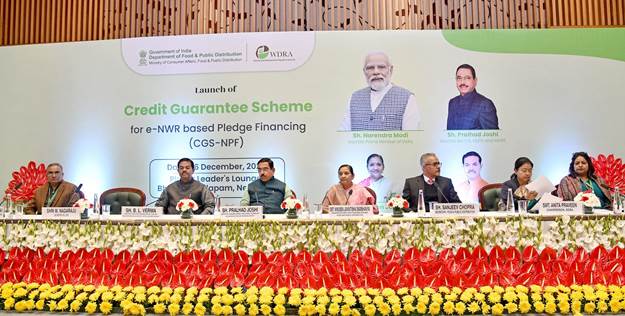
- 17 Dec 2024
In News:
The Credit Guarantee Scheme for e-NWR based Pledge Financing (CGS-NPF), launched by Union Minister Pralhad Joshi aims to support farmers by facilitating post-harvest finance using electronic negotiable warehouse receipts (e-NWRs). This initiative is part of the government’s efforts to minimize distress selling and ensure financial security for farmers, particularly small and marginalized ones.
Key Features of the Scheme:
- Total Corpus: ?1,000 crore for post-harvest finance.
- Loan Coverage:
- Agricultural purposes: Loans up to ?75 lakh.
- Non-agricultural purposes: Loans up to ?200 lakh.
- Eligible Borrowers: Small and marginal farmers, women, SC/ST/PwD farmers, MSMEs, traders, Farmer Producer Organizations (FPOs), and farmer cooperatives.
- Eligible Institutions: All scheduled and cooperative banks.
- Guarantee Coverage:
- Small and marginal farmers/Women/SC/ST/PwD: 85% for loans up to ?3 lakh, and 80% for loans between ?3 lakh to ?75 lakh.
- Other borrowers: 75% coverage for loans up to ?200 lakh.
- Risks Covered: Both credit risk and warehouseman risk.
- Guarantee Fees: 0.4% per annum for farmers, and 1% per annum for non-farmers.
Objectives:
- Minimize distress selling: By providing easy access to loans post-harvest, the scheme helps farmers avoid selling produce at low prices due to cash crunches.
- Instill confidence in banks: The scheme provides a guarantee cover to lenders, encouraging them to offer loans against e-NWRs.
- Encourage warehouse registration: The scheme emphasizes the need for more warehouses, particularly those closer to farmland, to improve accessibility for farmers.
About e-NWRs:
- e-NWRs are digital versions of traditional warehouse receipts that enable farmers to pledge stored commodities as collateral for loans.
- These receipts are governed by the Warehousing (Development and Regulation) Act of 2007, and since 2017, e-NWRs have been mandated for use in transactions related to agricultural produce stored in WDRA-accredited warehouses.
Expected Impact:
- This scheme is expected to boost post-harvest lending, with a target of increasing lending to ?5.5 lakh crore in the next decade.
- It will improve farmers’ income, reduce dependence on informal credit sources, and foster better financial inclusion.
- Additionally, it will create a more reliable supply chain for agricultural produce, enhancing food security.
Future Targets:
- Increase the number of registered warehouses under the WDRA to 40,000 in the next 1–2 years.
- Use platforms like e-Kisan Upaj Nidhi to streamline the lending process and avoid repeated visits to banks.
Atmanirbhar Clean Plant Programme
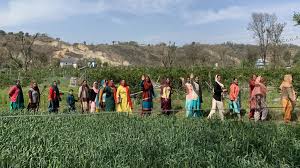
- 17 Dec 2024
In News:
Recently, the Government of India and the Asian Development Bank (ADB) signed a $98 million loan agreement to enhance horticulture crop productivity by improving plant health management. This initiative is part of India’s Atmanirbhar Clean Plant Programme (CPP), aiming to provide farmers with access to certified disease-free planting materials to improve yields, quality, and resilience, particularly against climate change impacts.
Key Highlights of the Loan Agreement
- Objective: Improve access to certified, disease-free planting materials for horticulture crops.
- Implementation: The project will be implemented by the Ministry of Agriculture and Farmers Welfare through the National Horticulture Board (NHB) and the Indian Council of Agricultural Research (ICAR).
- Focus: The initiative will enhance farmers’ productivity, resilience to climate change, and pest/disease management through the Atmanirbhar Clean Plant Programme (CPP).
About the Atmanirbhar Clean Plant Programme (CPP)
The Atmanirbhar Clean Plant Programme aims to tackle critical challenges in horticulture by ensuring farmers have access to high-quality, virus-free planting materials. The program is designed to:
- Enhance crop yields and quality.
- Promote climate-resilient varieties to help farmers adapt to rising temperatures and extreme weather events.
- Safeguard the environment by controlling plant diseases and pests proactively.
Key Components of the CPP
- Clean Plant Centers (CPCs): Establishment of nine world-class CPCs across India, equipped with advanced diagnostic labs and tissue culture facilities to maintain disease-free foundation planting materials.
- Certification Framework: A robust certification system will be introduced to ensure accountability in planting material production, including accreditation for private nurseries.
- Climate Resilience: Focus on developing and disseminating climate-resilient plant varieties, addressing the growing concerns over extreme weather events and changing pest behavior due to climate change.
Significance of the Loan Agreement
- Climate Adaptation: The project will help farmers mitigate the effects of climate change, including unpredictable weather patterns and altered pest/disease behaviors.
- Economic Impact: The initiative aligns with India's vision of self-reliance in horticulture (Atmanirbhar Bharat), boosting agricultural productivity and sustainability.
- Long-term Benefits: Improved farm productivity, sustainability, and economic well-being for farmers, especially in the face of climate change.
Global Horticulture Significance
- India’s Position: India is the second-largest producer of fruits and vegetables globally, contributing 33% to the agricultural GDP.
- Land Coverage: Horticulture occupies 18% of India’s agricultural land, yet its production surpasses that of food grains.
Implementation and Impact
- Implementation Period: The project will be executed from 2024 to 2030, with 50% financial assistance from ADB.
- Institutional Strengthening: The initiative will bolster India’s ability to manage plant health, integrating advanced diagnostic techniques and capacity-building for horticulture professionals.
'Jalvahak' Scheme for Inland Waterways Promotion

- 15 Dec 2024
In News:
Govt Unveils ‘Jalvahak’ To Boost Inland Waterways, Cargo Movement Incentivised on NW1, NW2 & NW16
Key Highlights:
- Launch of 'Jalvahak' Scheme:
- Launched by: Union Minister for Ports, Shipping & Waterways, Shri Sarbananda Sonowal, on December 15, 2024.
- Objective: The scheme aims to promote the use of inland waterways for long-haul cargo transportation, reduce logistics costs, and alleviate congestion in road and rail networks.
- Targeted Waterways:
- The scheme focuses on three major National Waterways (NWs):
- NW 1: River Ganga
- NW 2: River Brahmaputra
- NW 16: River Barak
- The scheme focuses on three major National Waterways (NWs):
- Incentives:
- The scheme offers up to 35% reimbursement on operating expenses for cargo transported over 300 km via these waterways, particularly using the Indo-Bangladesh Protocol Route (IBPR).
- Encouraging Private Operators: The scheme also incentivizes the hiring of vessels owned by private operators to promote competition and efficiency.
- Scheduled Cargo Service:
- Service Launch: Fixed, scheduled cargo vessel services have been introduced, running between key locations:
- Kolkata - Patna - Varanasi - Patna - Kolkata (for NW 1)
- Kolkata - Pandu (Guwahati) (for NW 2 via IBPR)
- Transit Times: Predefined and fixed for efficiency:
- Kolkata to Patna: 7 days
- Patna to Varanasi: 5 days
- Kolkata to Varanasi: 14 days
- Kolkata to Pandu: 18 days
- Pandu to Kolkata: 15 days
- Service Launch: Fixed, scheduled cargo vessel services have been introduced, running between key locations:
- Economic and Environmental Impact:
- Cargo Shift Target: The initiative aims to shift 800 million tonne-kilometres of cargo by 2027.
- Growth Projections:
- 200 million tonnes of cargo by 2030.
- 500 million tonnes by 2047, supporting the Blue Economy and Atma Nirbhar Bharat initiatives.
- The move to waterways aims to reduce the pressure on India's roads and rail systems, contributing to a more sustainable and cost-effective logistics system.
- Strategic Goals:
- Modal Shift: The scheme seeks to achieve a shift of 800 million tonne-kilometres by 2027 with an investment of ?95.4 crores.
- Sustainability: Inland waterways are considered an environmentally friendly, efficient, and low-cost transportation mode, with a focus on sustainability.
- Logistics Optimization: This initiative is expected to help optimize supply chains for major shipping companies, freight forwarders, and trade bodies involved in bulk and containerized cargo.
- Implementation Agencies:
- Inland Waterways Authority of India (IWAI): The main body responsible for the development and regulation of inland waterways.
- Inland & Coastal Shipping Limited (ICSL): A subsidiary of the Shipping Corporation of India, responsible for the operation of vessels.
- Broader Impact:
- Economic Growth: The scheme is expected to foster economic growth by improving logistics efficiency.
- Decongestion: The initiative aims to decongest the road and rail transport systems, facilitating smoother movement of cargo.
- Regional Connectivity: Enhances connectivity, particularly in eastern India, benefiting areas along the Ganga, Brahmaputra, and Barak rivers.
- About the National Waterways:
- India has 14,500 km of navigable inland waterways, which include rivers, canals, and backwaters. These waterways are significantly under-utilized compared to other countries.
- The National Waterways Act, 2016 declared 111 waterways (including both existing and newly identified ones) for navigation.
- The Jalvahak scheme is part of India's broader strategy to unlock the potential of its inland waterways, offering an efficient, economical, and environmentally sustainable alternative for cargo transport.
India’s Foreign Direct Investment (FDI) Journey Hits $1 Trillion Milestone

- 13 Dec 2024
In News:
India has reached a historic milestone, surpassing $1 trillion in foreign direct investment (FDI) inflows since April 2000. This achievement highlights India’s growing status as a major global investment hub and is further validated by a 26% increase in FDI inflows, which reached $42.1 billion during the first half of FY 2024-25.
Key Highlights of India’s FDI Growth:
- $1 Trillion Milestone: India has attracted a total of $1 trillion in FDI from April 2000 to September 2024. This figure includes equity, reinvested earnings, and other capital inflows.
- 26% Growth in FDI: FDI inflows surged by 26% in the first half of FY 2024-25, totaling $42.1 billion.
- Top Investors: Major investors include Mauritius (25%), Singapore (24%), and the United States (10%). These countries benefit from favorable tax treaties with India, boosting investment.
- Dominant Sectors: FDI has flowed into sectors like services, manufacturing, technology, and telecommunications, with significant investments also in pharmaceuticals, automobile, and construction development.
Factors Behind India’s FDI Success:
- Policy Reforms: India’s liberalized FDI policies, such as allowing 100% FDI in most sectors under the automatic route, have attracted foreign capital. Key reforms like abolishing angel tax and reducing corporate tax rates in the Income Tax Act of 2024 have also enhanced investor confidence.
- Business Environment: India’s rise in global competitiveness is evident in its improvement in rankings. It moved from 43rd to 40th in the World Competitiveness Index 2024 and climbed to 40th in the Global Innovation Index 2023, up from 81st in 2015.
- Investor Confidence: The government’s efforts, including initiatives like "Make in India", Goods and Services Tax (GST), and sector-specific incentives, have fostered a conducive environment for investment.
- Global Investment Standing: India has been the third-largest recipient of greenfield projects globally and saw a 64% increase in international project finance deals.
Contribution of Mauritius and Singapore:
- Mauritius and Singapore lead as the primary sources of FDI into India. Their favorable tax treaties with India make them attractive gateways for foreign investments. Mauritius accounted for 25%, and Singapore for 24% of the total FDI inflows.
Key Sectors Attracting FDI:
- Services Sector: Significant growth in services, especially financial services, has attracted substantial foreign investments.
- Manufacturing and Technology: These sectors have benefited from policies like the Production-Linked Incentive (PLI) schemes, which encourage foreign investments in high-tech manufacturing.
- Telecommunications and Pharmaceuticals: India’s growing digital ecosystem and strong pharmaceutical industry continue to attract international investments.
Importance of FDI for India:
- Infrastructure Development: FDI plays a crucial role in financing infrastructure projects, helping meet the country’s significant infrastructure needs.
- Balance of Payments: FDI helps bridge India’s current account deficit, ensuring stable foreign exchange reserves.
- Technology Transfer and Employment: Foreign investments bring advanced technology and create jobs, boosting productivity across sectors.
- Currency Stability: FDI supports the Indian Rupee in global markets by injecting foreign capital.
Challenges:
Despite the positive trends, India faces challenges such as geopolitical tensions, regulatory issues, global economic uncertainty, and infrastructure bottlenecks that can affect investor sentiment and capital inflows.
Way Ahead:
- Focus on Infrastructure: Continued investment in infrastructure development, including public-private partnerships (PPPs), will be crucial for sustained economic growth.
- Workforce Skilling: Collaborative efforts to upskill the workforce will ensure that India can meet the evolving demands of industries.
- Research and Development: Strengthening R&D and innovation will enhance India’s productivity and global competitiveness.
Governor of the Reserve Bank of India (RBI)
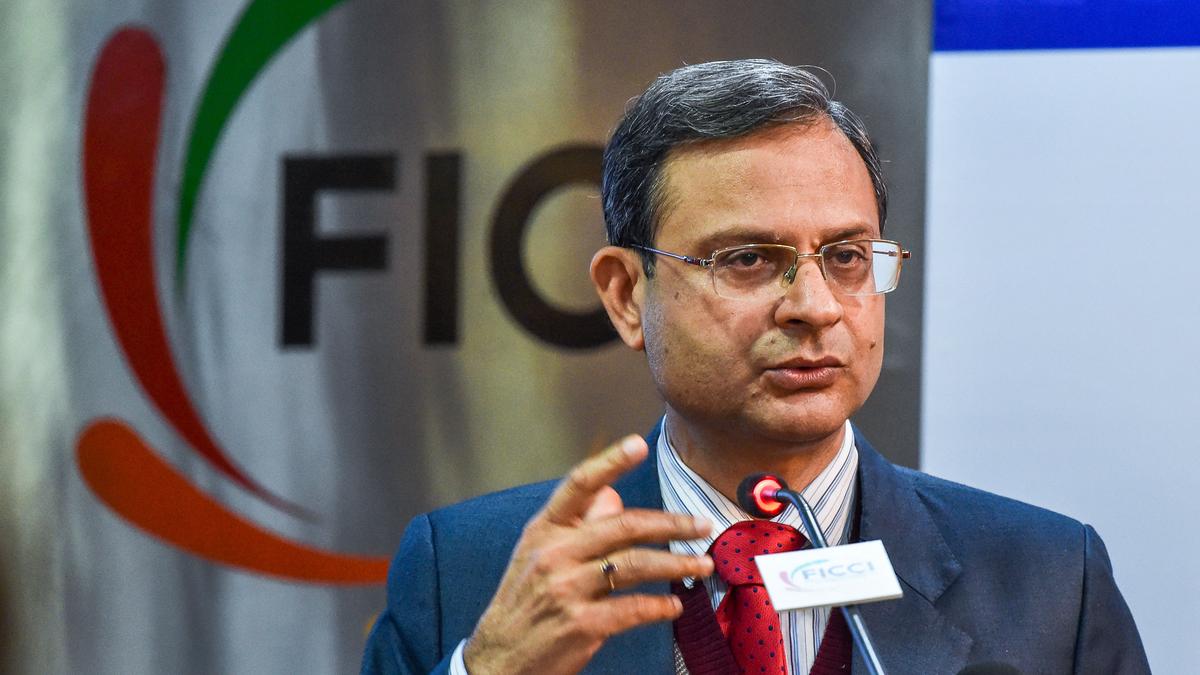
- 10 Dec 2024
In News:
Recently, the Government of India announced the appointment of Sanjay Malhotra as the 26th Governor of the Reserve Bank of India (RBI). He replaces Shaktikanta Das, whose six-year tenure ends on December 10, 2024.
Background of Sanjay Malhotra:
- Education & Early Career: Sanjay Malhotra is a 1990-batch IAS officer from the Rajasthan cadre. He holds a degree in Computer Science Engineering from the Indian Institute of Technology (IIT) Kanpur and a Master’s in Public Policy from Princeton University.
- Professional Experience: Malhotra has over 33 years of experience in various sectors including power, finance, taxation, information technology, and mines. He is currently serving as the Revenue Secretary in the Ministry of Finance, a position he has held since October 2022. Prior to this, he was Secretary of the Department of Financial Services.
- Monetary Policy and Challenges: As RBI Governor, Malhotra will inherit the responsibility of steering India's monetary policy, especially as inflation has been a persistent issue and economic growth has slowed. His first monetary policy review is expected in February 2025.
About the Appointment Process:
RBI Governors are appointed by the Government of India, and the appointment process involves the Financial Sector Regulatory Appointment Search Committee, which includes the Cabinet Secretary, the current RBI Governor, the Financial Services Secretary, and two independent members. The committee prepares a list of eligible candidates, interviews them, and the final decision is made by the Cabinet Committee on Appointments, chaired by the Prime Minister.
RBI Governors Eligibility Criteria
- The RBI Act, 1934 does not mention any specific qualification for the governor. People with different educational backgrounds were selected to head the institution. However, the governor traditionally is either a civil services personnel or an economist.
- Candidates should have prior experience in areas such as:
- Working with the International Monetary Fund (IMF) or World Bank.
- Serving as Chairman or General Manager of a bank.
- Holding significant positions in reputable financial or banking organizations.
- Working in the Ministry of Finance of the Government of India.
- The candidate must be an Indian citizen aged 35 years or older.
- The candidate cannot be a member of Parliament, State Legislature, or hold any other office for profit
Key Responsibilities of the RBI Governor:
- Monetary Policy: The RBI Governor chairs the Monetary Policy Committee (MPC), which is responsible for setting benchmark interest rates and managing inflation.
- Regulation of Financial Institutions: The Governor oversees the regulation of banks, non-banking financial companies (NBFCs), and other financial institutions.
- Currency Management: The Governor ensures the proper issuance of currency and the withdrawal of unfit notes.
- Crisis Management and Policy Execution: The Governor is pivotal in managing financial crises and ensuring the execution of policies related to foreign exchange and financial inclusion.
RBI's Stance on De-dollarisation and Risk Diversification

- 09 Dec 2024
In News:
- Governor Shaktikanta Das clarified that India is not pursuing "de-dollarisation," but rather aiming to diversify risk in trade. Measures like local currency trade agreements and Vostro accounts are intended to reduce reliance on the US dollar without eliminating it entirely.
- Objective: The goal is to de-risk India's trade, not to fully replace the dollar, especially amidst rising geopolitical tensions.
Key Highlights:
Vostro Accounts and Local Currency Trade:
- Vostro Accounts: These accounts, held by foreign banks in Indian rupees, facilitate transactions in local currencies, helping mitigate the risks of dollar dependency.
- International Currency Trade: By promoting trade in local currencies, the RBI seeks to reduce exposure to fluctuations in the dollar's value. However, these efforts have faced challenges due to India’s limited international presence in goods and services trade.
Gold Purchases by Central Banks:
- Surge in Gold Purchases: Global central banks, including the RBI, have significantly increased gold holdings. India added 27 tonnes in October 2024 alone, the largest increase among central banks.
- Motivations for Gold: The surge in gold buying reflects growing concerns about geopolitical risks, including the Ukraine war, and the potential for secondary sanctions. Gold is seen as a safe haven asset that diversifies reserves away from the US dollar.
Decline in Dollar Dominance:
- Global Shift: The share of the US dollar in global reserves has been gradually declining, partly due to the rise of the Chinese yuan. Central banks are increasingly turning to gold and alternative currencies as part of a diversification strategy.
- Impact on Emerging Markets: Countries like India are particularly motivated to reduce reliance on the dollar due to geopolitical tensions and economic vulnerabilities linked to the dollar’s dominance.
India’s Domestic Currency Trade Initiatives:
- Trade with Russia and UAE: India is actively exploring trade in domestic currencies with countries like Russia and the UAE to reduce dependence on the dollar. However, these efforts have faced slow uptake due to India’s trade deficit with most countries except the US.
- Challenges in Adoption: Despite efforts to internationalize the rupee, high transaction costs and lack of sufficient demand for rupee-based trade are significant barriers.
BRICS and Shared Currency Discussions:
- Geopolitical Complexity: BRICS nations, due to their geographical and economic diversity, have discussed the possibility of a shared currency, but no consensus has been reached.
- Reluctance Toward Yuan: India has resisted using the Chinese yuan for transactions, particularly for Russian oil imports, despite the yuan’s growing acceptance. This reflects India’s desire to maintain economic sovereignty and avoid over-reliance on a single currency.
Regional Implications of Dollar Volatility:
- Neighbourhood Impact: Countries like Sri Lanka, Bangladesh, Nepal, and Pakistan have experienced significant financial distress due to declining dollar reserves and surging oil prices, exacerbated by the Ukraine war.
- India’s Resilience: India’s strong dollar reserves have helped it maintain economic stability, but the country remains cautious of dollar volatility, particularly as oil prices rise.
Conclusion:
- Strategic Balance: India’s approach reflects a strategic balance of mitigating risks while ensuring global trade stability. The RBI’s emphasis on gold accumulation and pushing for rupee-based trade demonstrates a desire to reduce exposure to the dollar, but challenges like trade deficits and high transaction costs still hinder the full realization of these goals.
- Economic Sovereignty: Through these measures, India seeks to safeguard its economic sovereignty and financial stability in an increasingly unpredictable global economy.
RBI Cuts CRR, Keeps Repo Rate Unchanged

- 07 Dec 2024
In News:
The Reserve Bank of India (RBI) has recently made significant monetary policy decisions that could have a broad impact on the economy.
Key Highlights:
Cut in Cash Reserve Ratio (CRR)
- CRR Reduction: The RBI has reduced the CRR by 50 basis points (bps), from 4.5% to 4%.
- Impact on Banks: This move will free up ?1.16 lakh crore in liquidity, which banks can use to lend, boosting the credit flow in the economy.
- Objective: The CRR cut is aimed at easing the liquidity stress in the financial system, which has been tightening due to RBI's foreign exchange interventions.
- Bank Benefits: Banks will benefit as they don’t earn interest on the CRR, and the extra liquidity may help them reduce deposit rates. Additionally, it may encourage banks to pass on benefits to borrowers, particularly in terms of lending rates.
Repo Rate Kept Unchanged at 6.5%
- Decision: The MPC decided to keep the key policy rate, the Repo rate, unchanged at 6.5%, continuing its stance for the 11th consecutive meeting.
- Reasons for Keeping Repo Rate Steady:
- Persistent inflation, particularly food prices, is a key concern. Despite strong growth in sectors like rural consumption, inflation remains high and continues to affect disposable income.
- RBI Governor emphasized that durable price stability is essential for strong, sustained economic growth.
Impact on Borrowers
- Borrowing Costs: With the Repo rate unchanged, external benchmark lending rates (EBLR) linked to the Repo rate will not rise, providing relief to borrowers by keeping Equated Monthly Installments (EMIs) stable.
- Deposit Rates: However, the CRR cut may lead to a marginal reduction in deposit rates due to increased liquidity in the system.
Economic Growth Forecast Adjusted
- Reduced GDP Growth Estimate: The RBI has downgraded the GDP growth forecast for FY25 to 6.6%, down from the earlier estimate of 7.2%. This revision comes after the economy showed signs of slowdown in the second quarter of FY25.
- Growth Outlook: Despite the downgrade, the RBI remains cautiously optimistic about recovery driven by festive demand and rural consumption. Governor Das indicated that the slowdown had likely bottomed out and the economy is set to recover in the coming quarters.
Inflation Forecast Raised
- Inflation Outlook: The inflation estimate for FY25 has been revised upward to 4.8%, compared to the earlier forecast of 4.5%. This is largely due to rising food prices, which surged to a 14-month high of 6.21% in October.
- Inflationary Pressures: The MPC noted that inflation has remained above the RBI’s target of 4%, primarily driven by food inflation. As inflation impacts consumption, the RBI aims to balance growth support with inflation management.
Monetary Policy Stance
- Neutral Stance Retained: The RBI has maintained a ‘neutral’ stance, meaning it is neither tightening nor easing monetary policy drastically, focusing instead on bringing inflation closer to its target of 4%.
- Inflation Control: While the RBI is aware of the economic slowdown, it continues to prioritize inflation control to ensure price stability and support sustainable growth.
Global and Domestic Economic Context
- Global Factors: The RBI has also been cautious about global developments, including capital outflows and the impact of U.S. monetary policy on the Indian economy. A rate cut could have further weakened the rupee by narrowing the interest rate differential with the U.S.
- Domestic Concerns: Domestically, the economy faces challenges such as weak manufacturing growth and high inflation. The GDP growth in Q2 FY25 dropped to 5.4%, a seven-quarter low, highlighting concerns over demand and inflationary pressures.
PM Surya Ghar: Muft Bijli Yojana
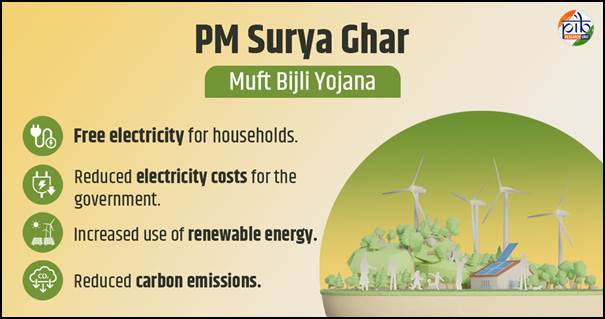
- 06 Dec 2024
In News:
The PM Surya Ghar: Muft Bijli Yojana, the world’s largest domestic rooftop solar initiative, is transforming India’s energy landscape with a bold vision to supply solar power to one crore households by March 2027.
Key Details:
Targeted Installations:
- 10 lakh installations by March 2025.
- 1 crore installations by March 2027.
Subsidy and Financing:
- Offers up to 40% subsidy for rooftop solar installations based on household electricity consumption.
- Collateral-free loans available for up to 3 kW solar systems at a 7% interest rate.
Key Benefits:
The PM Surya Ghar: Muft Bijli Yojana offers several significant benefits to participating households:
- Free Electricity for Households: The scheme provides households with free electricity through the installation of subsidized rooftop solar panels, significantly reducing their energy costs.
- Reduced Electricity Costs for the Government: By promoting the widespread use of solar power, the scheme is expected to save the government an estimated ?75,000 crore annually in electricity costs.
- Increased Use of Renewable Energy: The scheme encourages the adoption of renewable energy sources, contributing to a more sustainable and environmentally friendly energy mix in India.
- Reduced Carbon Emissions: The transition to solar energy under this scheme will help lower carbon emissions, supporting India's commitment to reducing its carbon footprint.
Eligibility Criteria:
1. The applicant must be an Indian citizen.
2. Must own a house with a roof that is suitable for installing solar panels.
3. The household must have a valid electricity connection.
4. The household must not have availed of any other subsidy for solar panels.
Impact
The PM Surya Ghar: Muft Bijli Yojana is expected to have far-reaching outcomes, both for individual households and the nation as a whole:
- Household Savings and Income Generation: Households will benefit from significant savings on their electricity bills. Additionally, they will have the opportunity to earn extra income by selling surplus power generated by their rooftop solar systems to DISCOMs. For instance, a 3-kW system can generate over 300 units per month on average, providing a reliable source of energy and potential revenue.
- Expansion of Solar Capacity: The scheme is projected to add 30 GW of solar capacity through rooftop installations in the residential sector, significantly contributing to India's renewable energy goals.
- Environmental Benefits: Over the 25-year lifetime of these rooftop systems, it is estimated that the scheme will generate 1000 BUs of electricity while reducing CO2 emissions by 720 million tonnes, making a substantial positive impact on the environment.
- Job Creation: The scheme is also expected to create approximately 17 lakh direct jobs across various sectors, including manufacturing, logistics, supply chain, sales, installation, operations and maintenance (O&M), and other services, thereby boosting employment and economic growth in the country.
Model Solar Village
- Under the "Model Solar Village" component of the scheme, the focus is on establishing one Model Solar Village per district throughout India.
- This initiative aims to promote solar energy adoption and empower village communities to achieve energy self-reliance.
- An allocation of ?800 crore has been designated for this component, with ?1 crore provided to each selected Model Solar Village.
- To qualify as a candidate village, it must be a revenue village with a population of over 5,000 (or 2,000 in special category states). Villages are selected through a competitive process, evaluated on their overall distributed renewable energy (RE) capacity six months after being identified by the District Level Committee (DLC).
- The village in each district with the highest RE capacity will receive a central financial assistance grant of ?1 crore.
- The State/UT Renewable Energy Development Agency, under the supervision of the DLC, will oversee the implementation, ensuring these model villages successfully transition to solar energy and set a benchmark for others across the country.
RangeenMachli App
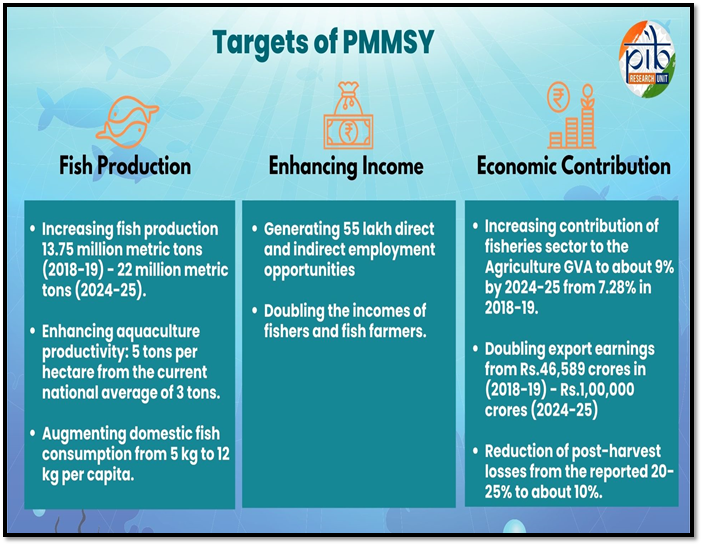
- 06 Dec 2024
In News:
The app was developed by the ICAR-Central Institute of Freshwater Aquaculture (ICAR-CIFA) with support from the Pradhan Mantri MatsyaSampada Yojana (PMMSY) under the Ministry of Fisheries, Animal Husbandry & Dairying, Government of India.
Key Highlights:
- Target Audience: The app caters to hobbyists, farmers, and professionals in the ornamental fish industry.
- Multilingual Support: The app offers content in eight Indian languages, making it accessible to a broad and diverse audience.
- Main Objectives:
- Provide information on popular ornamental fish species and their care.
- Promote local aquarium businesses through dynamic directories.
- Enhance knowledge of ornamental aquaculture techniques for fish farmers and shop owners.
- Serve as an educational tool for newcomers and professionals in the ornamental fish industry.
- Salient Features:
- Multilingual Content: Ensures broader reach and user accessibility.
- Comprehensive Fish Information: Offers detailed guidance on fish care, breeding, and maintenance.
- Find Aquarium Shops Tool: A directory updated by shop owners, helping users find reliable local aquarium shops and promoting local businesses.
- Educational Modules:
- Basics of Aquarium Care: Covers key aspects like aquarium types, filtration, lighting, feeding, and maintenance.
- Ornamental Aquaculture: Focuses on breeding and rearing ornamental fish, particularly for farmers.
- Economic and Social Impact:
- Promoting Local Businesses: The app encourages economic growth by increasing visibility for local aquarium shops and creating opportunities for business owners.
- Authenticity and Reliability: Users can access verified information, reducing the reliance on unverified sources and promoting healthier aquariums.
- Sustainability and Growth: The app’s features are designed to foster sustainability and growth in the ornamental fish trade by providing reliable information and empowering users.
Pradhan Mantri MatsyaSampada Yojana (PMMSY):
- Objective: Aimed at transforming the fisheries sector, improving fish production, productivity, quality, technology, infrastructure, and management, while strengthening the value chain and promoting the welfare of fishers.
- Launch: The scheme was launched in 2020 with an investment of Rs. 20,050 crores for a 5-year period (2020-21 to 2024-25).
- Focus Areas:
- Inland fisheries and aquaculture.
- Fisheries management and regulatory framework.
- Infrastructure and post-harvest management.
- Doubling fishers' and fish farmers' incomes.
- Components:
- Central Sector Scheme (CS): Fully funded by the central government.
- Centrally Sponsored Scheme (CSS): Partially funded by the central government and implemented by states.
- Sub-Schemes:
- Pradhan Mantri MatsyaKisanSamridhiSah-Yojana (PM-MKSSY): Launched under PMMSY to formalize the fisheries sector and support micro and small enterprises with over Rs. 6,000 crore investment (FY 2023-24 to 2026-27).
- Beneficiaries: Includes fishers, farmers, fish vendors, fisheries cooperatives, SC/STs, women, differently-abled persons, state and central entities, and private firms.
Fisheries Sector Contribution:
- Supports around 30 million people.
- India is the 3rd largest fish producer globally, with a fish production of 175.45 lakh tons in FY 2022-23.
- Contributes 1.09% to the Gross Value Added (GVA) of India and 6.72% to agricultural GVA.
Related Schemes:
- Fisheries and Aquaculture Infrastructure Development Fund (FIDF): Launched with a fund of Rs. 7,522.48 crore.
- Kisan Credit Card (KCC): Extended to fishers and farmers from FY 2018-19.
- Sustainable fisheries development.
- Doubling income and job creation in the sector.
- Boosting exports and agricultural GVA.
- Social and economic security for fishers.
Trade Watch Quarterly
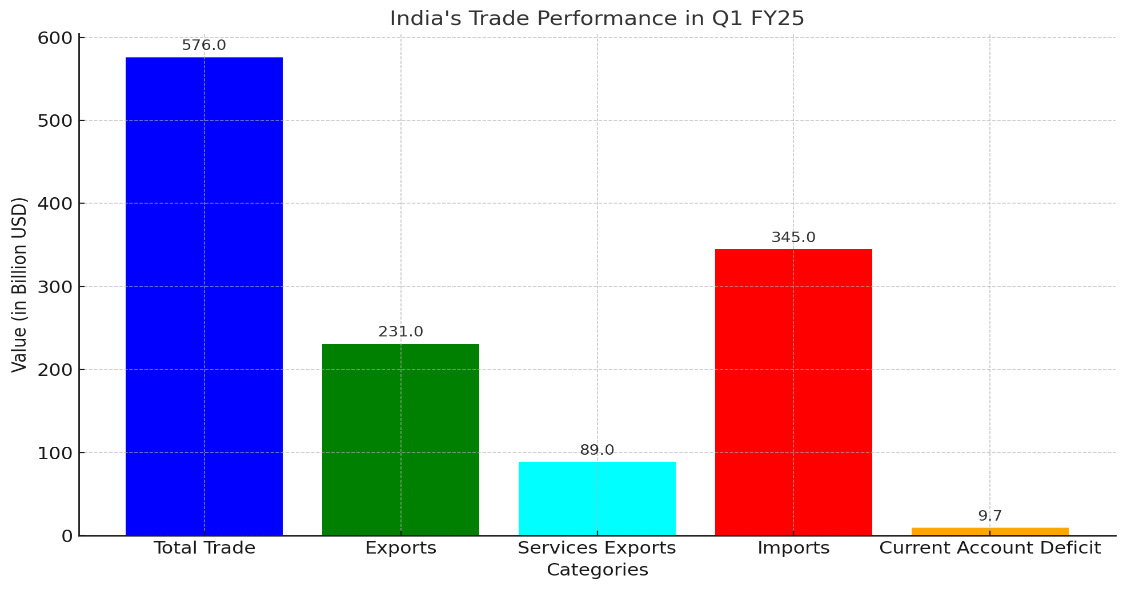
- 05 Dec 2024
In News:
NITI Aayog released its first quarterly report, Trade Watch Quarterly (TWQ), on December 4, 2024, focusing on India's trade developments during Q1 FY2024 (April-June).
Overview:
- Purpose: The publication aims to provide a comprehensive analysis of India’s trade performance, highlighting key trends, challenges, and opportunities.
- Target: To leverage insights for evidence-based policy interventions and foster informed decision-making, contributing to sustainable growth in India’s trade.
Trade Performance Highlights (Q1 FY24):
- Total Trade: $576 billion (5.45% YoY growth).
- Merchandise Exports: Growth was restrained due to declines in iron & steel, and pearls.
- Imports: Driven by high-value goods, including aircraft, spacecraft, mineral fuels, and vegetable oils.
- Services Exports: Displayed a surplus, particularly in IT services.
- Growth in Services Exports: A positive trend, rising by 10.09% YoY, particularly in IT services and business solutions.
Key Challenges for India’s Trade:
- Limited Success in China-Plus-One Strategy:Countries like Vietnam, Thailand, Malaysia have gained more from this strategy, benefitting from cheaper labor, simplified tax laws, and lower tariffs.
- CBAM (Carbon Border Adjustment Mechanism):Starting in 2026, CBAM will impose carbon taxes on imports like cement, steel, and fertilizers. India’s iron and steel industry could face significant risks due to this.
- Declining Share in Labor-Intensive Sectors:India’s global market share in labor-intensive sectors (e.g., textiles, leather) has declined despite a strong workforce.
- Geopolitical Instability (West Asia):
- Oil price hikes could increase India’s Current Account Deficit (CAD) and fuel inflation.
- Declining agricultural exports to markets like Iran further add to the challenges.
Strategic Recommendations for Overcoming Challenges:
- Infrastructure Modernization:
- Expansion of digital platforms like Trade Connect e-Platform to streamline processes and support exporters.
- Strengthening logistics via the National Logistics Policy.
- Export Incentives:Continuation of schemes like RoDTEP (Remission of Duties and Taxes on Exported Products) to maintain export competitiveness.
- Technological Integration:Leveraging digital trade to tap into high-growth sectors and foster innovation in trade.
- Strengthening FTAs (Free Trade Agreements):Focus on negotiating strategic FTAs with global partners (e.g., the UK and the EU) to reduce trade barriers and enhance global market access.
Geopolitical and Environmental Risks:
- U.S.-China Trade Tensions:Offers opportunities for India to diversify its supply chains, but also poses challenges in terms of overdependence on certain countries.
- Impact of CBAM:Risk to carbon-intensive Indian exports like steel and aluminium, which will face tariffs starting in 2026.
Sectoral Performance:
- Growing Sectors:
- IT Services: India’s market share of IT services reached 10.2%, continuing to be a strong contributor.
- Pharmaceuticals, Electrical Machinery, and Mineral Fuels: Significant contributors to export growth.
- Declining Sectors:Labor-Intensive Goods: Declines in global market share for textiles, pearls, and leather.
Pathway to $2 Trillion Exports by 2030:
- India's Export Aspirations:To achieve the target of $2 trillion in exports by 2030, India must address structural inefficiencies, diversify exports, and reduce trade barriers.
- Vision 2047:Aligning with India’s broader vision to become a developed nation, the report stresses the importance of strengthening trade, technology, and infrastructure to realize these ambitions.
- Trade's Role in Economic Growth:
- Trade is vital to India’s economic trajectory, contributing significantly to GDP growth.
- Through evidence-based policymaking, infrastructure modernization, and strategic global partnerships, India can achieve sustained growth in trade, leading to the realization of a Viksit Bharat (Developed India) by 2047.
International Debt Report 2024
- 05 Dec 2024
In News:
Recently released, World Bank’s "International Debt Report 2024" highlights a worsening debt crisis for developing nations, with 2023 marking the highest debt servicing levels in two decades, driven by rising interest rates and economic challenges.
Key Highlights:
Rising Debt Levels:
- Total external debt of low- and middle-income countries (LMICs) reached $8.8 trillion by the end of 2023, an 8% increase since 2020.
- For IDA-eligible countries (those receiving concessional loans from the World Bank), external debt rose by 18%, reaching $1.1 trillion.
Debt Servicing Costs:
- Developing nations paid a record $1.4 trillion in debt servicing costs (principal and interest) in 2023.
- Interest payments surged by 33%, totaling $406 billion, putting immense pressure on national budgets, especially in critical sectors like health, education, and environmental sustainability.
Interest Rate Increases:
- Interest rates on loans from official creditors doubled to 4% in 2023.
- Rates from private creditors rose to 6%, the highest in 15 years, exacerbating the financial burden on developing countries.
Impact on IDA-Eligible Countries:
- IDA countries faced severe financial strain, paying $96.2 billion in debt servicing, including $34.6 billion in record-high interest costs (four times higher than a decade ago).
- On average, 6% of their export earnings were allocated to debt payments, with some countries dedicating up to 38%.
Role of Creditors:
- Private creditors reduced lending, leading to more debt-servicing payments than new loans.
- In contrast, multilateral lenders like the World Bank provided additional support, with the World Bank contributing $28.1 billion.
- Multilateral institutions have emerged as crucial support systems, becoming "lenders of last resort" for poor economies.
Debt Data Transparency:
- Efforts to improve debt transparency led to nearly 70% of IDA-eligible economies publishing accessible public-debt data in 2023, a 20-point increase since 2020.
- Accurate debt data can reduce corruption and promote sustainable investment.
Global Financial Reforms:
- There is a growing call for global financial reforms to address the systemic challenges of developing nations facing rising debt burdens.
- Proposed measures include increased concessional financing, improved restructuring mechanisms, and the establishment of a Global Debt Authority for better debt management.
Impact on Climate and Development Goals:
- Debt servicing has become a larger financial burden than climate initiatives in many countries, with developing nations spending more on debt servicing than climate goals (2.4% of GDP vs. 2.1% for climate investments).
- To meet climate commitments under the Paris Agreement, climate investments would need to rise to 6.9% of GDP by 2030.
Debt Relief Initiatives:
- Programs like the Heavily Indebted Poor Countries (HIPC) Initiative and the Multilateral Debt Relief Initiative (MDRI) provide debt relief to the world’s poorest nations, helping them meet Sustainable Development Goals (SDGs).
- For instance, Somalia saved $4.5 billion in debt service after completing the HIPC program in December 2023.
Global Sovereign Debt Roundtable (GSDR):
- The GSDR brings together debtor nations and creditors (both official and private) to improve debt sustainability and address restructuring challenges.
- Co-chaired by the IMF, World Bank, and G20, the forum aims to find coordinated solutions for sovereign debt issues.
KisanPehchaan Patra
- 02 Dec 2024
In News:
The Indian government is actively promoting the creation of digital identities for farmers through the KisanPehchaan Patra (Farmer ID). The initiative is an essential part of the Digital Agriculture Mission under the AgriStack initiative.
Key Details:
Objective:
- The main goal is to provide digital IDs linked to Aadhaar for farmers, capturing comprehensive agricultural data including land records, crop information, and ownership details.
- These digital identities are designed to enhance farmers' access to government schemes and digital agriculture services.
Farmer ID Creation Timeline:
- The government plans to create digital IDs for 11 crore farmers in phases:
- 6 crore farmers in FY 2024-25.
- 3 crore farmers in FY 2025-26.
- 2 crore farmers in FY 2026-27.
AgriStack Initiative:
- The AgriStack initiative aims to build a Digital Public Infrastructure (DPI) for the agriculture sector, which includes:
- Farmers' Registry.
- Geo-referenced village maps.
- Crop Sown Registry.
Implementation Strategy:
- Camp-mode approach: States have been instructed to organize field-level camps to ensure faster and inclusive registration of farmers.
- Financial Incentives:
- States will receive ?15,000 per camp for organizing these camps.
- Additionally, ?10 per Farmer ID issued.
- Funding is provided through the Pradhan Mantri KisanSamman Nidhi (PM-Kisan) scheme.
Benefits of Digital Farmer ID:
- Targeted Delivery of Benefits: Ensures subsidies and benefits reach legitimate farmers and eliminates duplication.
- Precision Agriculture: Supports data-driven policies for better crop planning, insurance, and market linkages.
- Financial Inclusion: Facilitates easy access to credit, loans, and crop insurance, empowering farmers financially.
- Better Monitoring: Helps in tracking the actual implementation of schemes and ensures that only eligible farmers benefit.
Progress in States:
- Advanced States: Gujarat, Madhya Pradesh, Maharashtra, and Uttar Pradesh have made significant progress in issuing digital Farmer IDs.
- Testing Phase: States like Assam, Chhattisgarh, and Odisha are still in the field-testing phase.
- Special Assistance Scheme: The Finance Ministry allocated ?5,000 crore in August 2024 to assist states in creating the Farmers' Registry, with funds available until March 2025.
Linkage with Land Records and Crop Data:
- The Farmer ID integrates with state land records and crop data, creating a dynamic and accurate database known as the Farmer’s Registry.
- This data helps in the development of better agricultural policies and decision-making.
Digital Agriculture Mission:
- The government approved a substantial outlay of ?2,817 crore for the Digital Agriculture Mission, which is intended to modernize agricultural practices and build robust digital infrastructure.
- The mission also includes the launch of the Digital Crop Estimation Survey (DGCES), which will help in crop estimation and better resource allocation.
National Policy on Female Labour Force Participation (FLFP)

- 02 Dec 2024
In News:
- India is working on a national policy to enhance female labour force participation (FLFP), focusing on creating a supportive care economy structure.
- The policy is being developed by an inter-ministerial team involving the Ministries of Skill Development, Labour, Rural Development, and Women and Child Development.
- Goal: To reduce barriers for women, especially related to caregiving responsibilities, and increase their participation in the workforce.
Key Focus Areas:
- Care Economy: Involves both paid and unpaid caregiving services, such as childcare, eldercare, domestic work, and health services.
- The policy aims to formalize care work, addressing its undervaluation and encouraging women's workforce participation.
- Proposes a core skilling package for caregivers, particularly for childcare in rural and informal sectors.
- Childcare Facilities: Targeting women working under schemes like MGNREGS (Mahatma Gandhi National Rural Employment Guarantee Scheme).
Current Challenges:
- Post-marriage employment drop: Women face a significant decline in workforce participation after marriage, often due to caregiving roles.
- In India, 53% of women are outside the labour force, mostly due to unpaid domestic work, unlike only 1.1% of men.
- The gender divide in caregiving is stark: Women spend over 5 hours daily on unpaid domestic work (81% of females), compared to 12.4% of males.
Key Initiatives:
- Palna Scheme: Provides daycare through Anganwadi-cum-Crèche facilities for working parents, benefiting children aged 6 months to 6 years. 1,000 crèches are operational.
- Women’s Employment Data:
- In rural India, 36.6% of women participate in the workforce, compared to 23.8% in urban areas.
- Post-marriage, female employment drops by 12 percentage points, even without children.
- Improving Female Labour Force Participation (FLFP): Key to India's growth, as matching women’s workforce participation with men could boost GDP by 27% (IMF).
Barriers to Women’s Workforce Inclusion:
- Unpaid Care Work: Women's disproportionate share of household duties limits paid employment opportunities.
- Cultural Norms: Gender expectations restrict women’s access to employment, especially in rural areas.
- Educational Barriers: Limited access to education for girls restricts skill development, lowering job prospects.
- Health & Safety Issues: Health challenges and safety concerns at workplaces hinder women's workforce participation.
- Lack of Supportive Policies: Absence of parental leave and flexible work arrangements for women, especially in the informal sector.
Government Initiatives for Women’s Employment:
- BetiBachaoBetiPadhao: Promotes girl child education and empowerment.
- National Education Policy (NEP): Ensures gender equity in education.
- Maternity Benefit (Amendment) Act, 2017: Extends paid maternity leave to 26 weeks and mandates crèche facilities in large establishments.
- Labour Codes (2019-2020): Codifies labor laws to provide a framework for improving women’s workplace safety and employment opportunities.
Global Examples & Inspiration:
- Japan’s Womenomics: Aimed at increasing female participation, Japan's womenomics reforms have grown women’s labour force participation from 64.9% to 75.2% (2013-2023).
- Flexible Work Models: Countries like Netherlands encourage part-time and remote work, offering flexibility to manage work-life balance.
- Sweden’s Investment in ECCE: Investing 1% of GDP in Early Childhood Care and Education (ECCE) has significantly reduced women’s workforce exclusion.
Way Forward:
- National Women’s Urban Employment Guarantee Act (WUEGA): Promotes gender-balanced work environments and childcare facilities at work sites.
- Flexible Work Options: Encouraging remote work, parental leave, and childcare support will empower more women to balance caregiving and employment.
- Investment in the Care Economy: To reduce the care burden on women, substantial investment in ECCE and related sectors is essential to increase women’s participation and economic independence.
Key Highlights on India’s Horticulture and Plant Health Management Initiatives
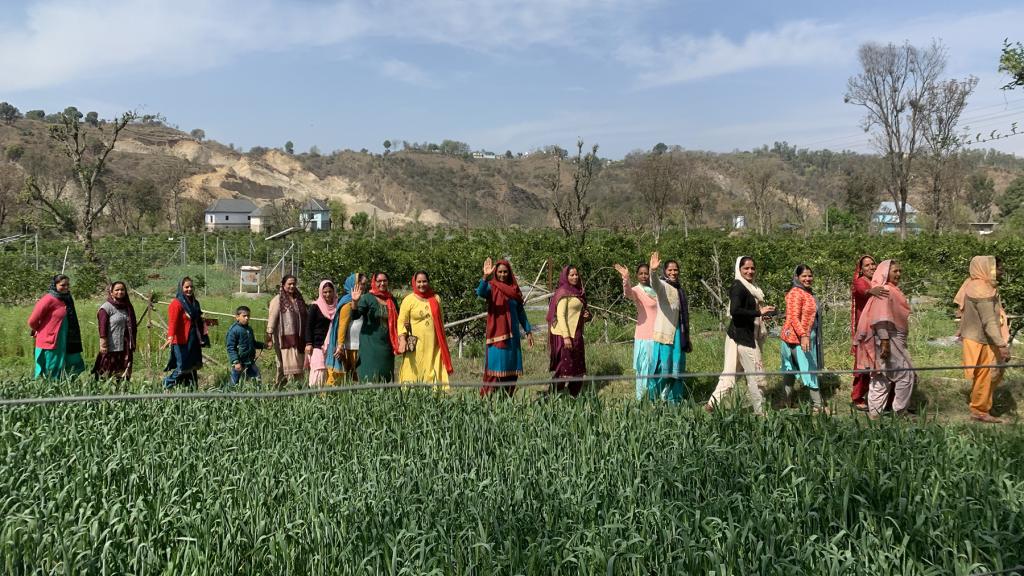
- 01 Dec 2024
In News:
Government of India and ADB sign $98 million loan to promote plant health management in India’s horticulture.
Key Highlights:
$98 Million Loan Agreement with ADB:
- India and the Asian Development Bank (ADB) signed a $98 million loan to enhance horticulture productivity and resilience.
- Objective: Improve farmers' access to certified, disease-free planting materials, which will increase crop yield, quality, and climate resilience.
- Focus Areas: The project aligns with India’s Atmanirbhar Clean Plant Programme (CPP), aiming to strengthen plant health management in horticulture.
Atmanirbhar Clean Plant Programme (CPP):
- Implemented under MIDH: The Clean Plant Programme is part of the Mission for Integrated Development of Horticulture (MIDH).
- Goal: To provide virus-free, high-quality planting materials to farmers, boosting horticultural crop yields and promoting climate-resilient varieties.
- Implementation Period: 2024-2030, with 50% financial support from ADB.
- Key Components:
- Establishment of 9 Clean Plant Centers (CPCs) with state-of-the-art diagnostic, therapeutic, and tissue culture laboratories.
- Certification Framework: Developing a regulatory framework under the Seeds Act 1966 to certify clean plants.
- Support to Nurseries: Infrastructure development for large-scale nurseries.
- Significance: The programme strengthens India's self-reliance in horticulture and enhances adaptability to climate change impacts.
Mission for Integrated Development of Horticulture (MIDH):
- Nodal Ministry: Ministry of Agriculture and Farmers Welfare.
- Focus: Holistic development of the horticulture sector, including fruits, vegetables, mushrooms, spices, and more.
- Funding Pattern:
- General States: 60% by Government of India (GoI), 40% by State Governments.
- North-Eastern and Himalayan States: 90% by GoI.
Horticulture Sector at a Glance:
- Contribution to Agricultural GDP: Accounts for 33% of the gross value.
- Land Coverage: Occupies 18% of agricultural land in India.
- Global Standing: India is the second-largest producer of fruits and vegetables globally.
- Surpassing Food Grains: Horticulture production exceeds food grain production, occupying much less land (25.66 million hectares vs. 127.6 million hectares for food grains).
Key Benefits of the CPP:
- Climate Resilience: Promotes climate-resilient plant varieties and helps farmers adapt to climate change.
- Innovation: Encourages the use of advanced testing techniques and builds institutional capacity.
- Long-term Impact: Expected to improve sustainability, productivity, and the economic well-being of farmers.
Additional Horticulture Initiatives:
- CHAMAN (Horticulture Assessment using Geo-informatics): A programme to estimate area and production of horticultural crops using scientific methods.
- Kisan Rail Services: Facilitates transportation of perishable horticultural products like fruits and vegetables.
- Capital Investment Subsidy Scheme: By the National Horticulture Board to support the sector’s growth.
SASCI Scheme for Tourism Development
- 01 Dec 2024
In News:
Centre clears scheme for development of 40 tourist destinations across 23 States at a cost of ?3,295 crore.
Key Details:
- Focus Areas: The scheme encourages the development of lesser-known destinations such as Bateshwar (Uttar Pradesh), Ponda (Goa), Gandikota (Andhra Pradesh), and Porbandar (Gujarat) to reduce overcrowding at popular sites.
- Implementation Timeline: Projects must be completed within two years, with funding released in stages until March 2026.
- Key Features:
- Long-term interest-free loans for 50 years.
- States responsible for project execution and maintenance, often through public-private partnerships (PPP).
- The Ministry of Tourism will monitor progress, and 66% of the funds have already been released.
- Emphasis on sustainability and boosting local economies by creating jobs through tourism.
- States must provide land at no cost and ensure proper infrastructure like safety, connectivity, and utilities.
Selection Criteria for Projects:
- Consultation Process: Detailed regional consultations led to the selection of 40 projects from 87 proposals received by the Ministry of Tourism. West Bengal was the only state not submitting proposals.
- Evaluation Criteria: Projects were evaluated based on:
- Connectivity, tourism potential, and ecosystem.
- Financial viability and sustainability.
- Impact on local economy and job creation.
- Funding Pattern:
- A maximum of ?100 crore for each project, with higher funding considered for exceptional projects.
- Total funding capped at ?250 crore per state, allocated on a first-come, first-served basis.
Importance of the Scheme:
- Economic Growth & Employment: Projects are designed to stimulate local economies, create employment, and promote sustainable tourism.
- Global Branding: The scheme aims to brand and market tourist destinations on a global scale.
- Tourism Infrastructure Growth: It aims to improve the entire tourism value chain, including transportation, accommodation, activities, and services.
Tourism Sector Overview:
- Current Status:
- India ranks 39th among 119 countries in the Travel and Tourism Development Index (TTDI) 2024.
- Foreign Tourist Arrivals (FTAs) increased by 47.9% in 2023, with 9.52 million tourists.
- Tourism contributed 5% to India’s GDP in 2022-23 and created 76.17 million direct and indirect jobs.
- India earned ?2.3 lakh crore in foreign exchange in 2023 through tourism.
- Projected revenue from tourism to exceed $59 billion by 2028.
- Initiatives for Promotion:
- Swadesh Darshan Scheme: To develop theme-based circuits.
- Dekho Apna Desh Initiative (2020): Promotes domestic tourism.
- PRASHAD & HRIDAY Schemes: Focus on pilgrimage and heritage city development.
MGNREGA Job Card Deletions Issue:
- Context: A significant surge in deletions of job cards under MGNREGA (Mahatma Gandhi National Rural Employment Guarantee Act) raised concerns over transparency and workers’ rights.
- Reasons for Deletion:
- Permanent migration, duplicate cards, forged documents, and refusal to work.
- Aadhaar-based payment system (ABPS) implementation led to deletions for non-linked cards.
- Implications:
- Violation of workers’ legal right to employment, especially when deletions were made without due process.
- The "Not willing to work" designation undermines livelihood opportunities, especially in high unemployment rural areas.
- Recommendations for Reform:
- Strengthening verification processes and ensuring deletions follow due procedure.
- Empowering Gram Sabhas to review and approve deletions.
- Regular audits and better grievance redressal mechanisms.
Other Government Initiatives in Tourism:
- National Mission on Pilgrimage Rejuvenation and Spiritual, Heritage Augmentation Drive (PRASHAD): For holistic and sustainable development of pilgrimage tourism.
- Incredible India & E-Visa Initiatives: To attract more foreign tourists.
- Regional Connectivity Scheme (UDAN): Enhances air connectivity to remote tourist destinations.
- National Heritage City Development and Augmentation Yojana (HRIDAY): Preserves and rejuvenates heritage sites.
13th National Seed Congress (NSC)
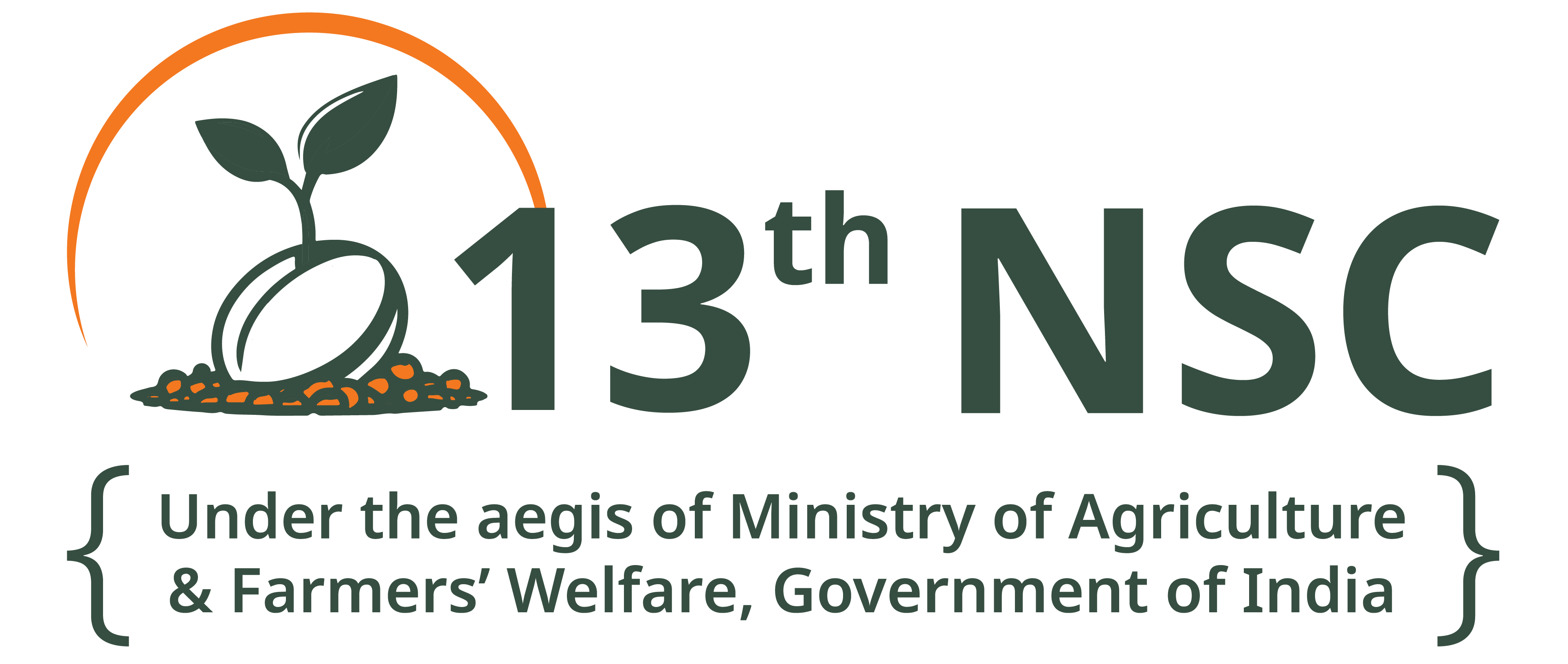
- 30 Nov 2024
In News:
- The 13th National Seed Congress (NSC), organized by the Ministry of Agriculture & Farmers' Welfare, concluded with significant discussions and outcomes focused on advancing India's seed sector.
- The theme for this year's congress, held in Varanasi, was "Innovating for a Sustainable Seed Ecosystem."
Key Highlights:
- Focus Areas:
- Seed Technologies and Biofortification: Emphasis on high-nutrition seeds like iron and zinc-enriched rice and Vitamin A-rich crops to combat malnutrition.
- Climate-Resilient Agriculture: Promoting practices like Direct Seeded Rice (DSR) and the development of stress-tolerant seed varieties to withstand climate change.
- Challenges in India’s Seed Ecosystem:
- Seed Replacement Rate (SRR): SRR in India is around 15-20%, with 100% for hybrid seeds, pointing to the need for higher adoption of certified seeds.
- Monoculture and Seed Market Monopoly: Issues like over-reliance on Bt cotton and domination by multinational companies (e.g., Bayer) in seed markets.
- Government Initiatives:
- National Seed Corporation (NSC): Produces foundation and certified seeds for over 600 varieties.
- Seed Village Programme (Beej Gram Yojana): Focus on improving the quality of farm-saved seeds.
- National Seed Reserve: Ensures seed availability during climatic disruptions.
- Policy Discussions:
- Proposed Seeds Bill: A new bill to regulate seed quality and promote sustainable practices.
- Public-Private Partnerships: Strengthening collaborations to improve seed production, accessibility, and quality.
- Outcomes:
- Biofortified Seeds: Increased development and distribution of nutrient-rich seeds.
- Climate-Resilient Seed Systems: Enhanced focus on developing crops that can withstand climate challenges.
- Public-Private Partnerships: Strengthening collaborations in seed technology and policy reform.
Global Wage Report 2024-25
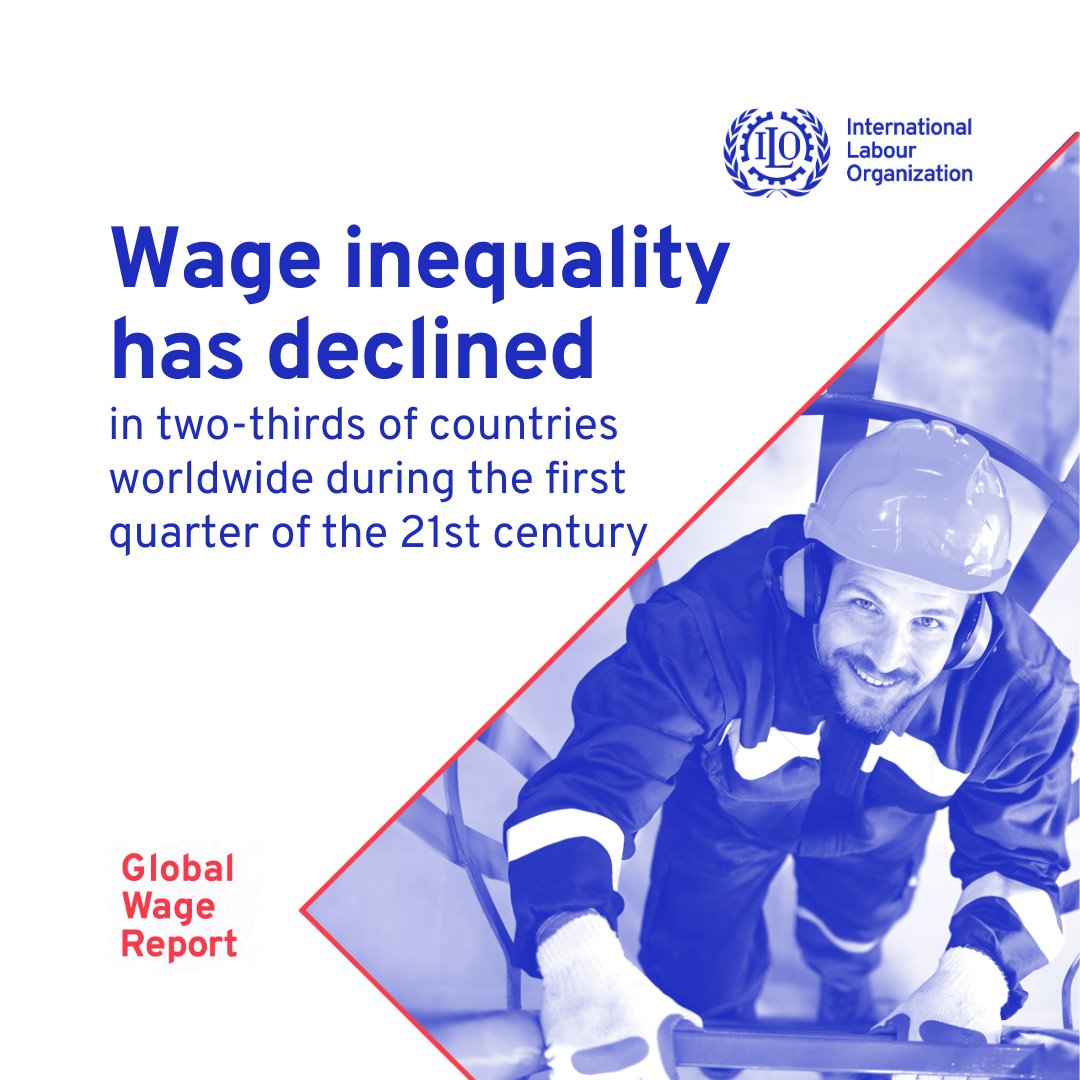
- 29 Nov 2024
In News:
A new report from the International Labour Organization (ILO) reveals that wage inequality has decreased in about two-thirds of all countries since 2000. Despite this positive trend, significant wage differentials persist worldwide.
Global Wage Inequality Trends:
- Wage inequality has decreased in about two-thirds of all countries since 2000.
- Average Annual Decrease in Wage Inequality:
- Ranges from 0.5 to 1.7% globally, depending on the measure used.
- More significant reductions have been observed in low-income countries, where the decrease has ranged from 3.2 to 9.6% over the past two decades.
- Wealthier Countries: Wage inequality has decreased at a slower pace:
- Upper-middle-income countries: annual decrease of 0.3 to 1.3%.
- High-income countries: annual decrease of 0.3 to 0.7%.
Global Real Wage Growth:
- Global real wages grew by 1.8% in 2023, with projections reaching 2.7% growth in 2024 (highest increase in over 15 years).
- This marks a recovery from the negative global wage growth of -0.9% in 2022 due to high inflation rates.
Regional Wage Growth:
- Emerging Economies: Saw stronger wage growth than advanced economies.
- Emerging G20 economies: 1.8% growth in 2022 and 6.0% growth in 2023.
- Advanced Economies: Faced real wage declines.
- G20 advanced economies: Declined by -2.8% in 2022 and -0.5% in 2023.
- Fastest Wage Growth: Observed in regions like Asia-Pacific, Central and Western Asia, and Eastern Europe.
Wage Inequality Persistence:
- Income Distribution: The lowest-paid 10% of workers earn just 0.5% of the global wage bill, while the highest-paid 10% earn nearly 38%.
- Wage Inequality in Low-Income Countries: Particularly high, with nearly 22% of wage workers classified as low-paid.
- Women and Informal Economy Workers: More likely to be among the lowest-paid workers, underscoring the need for targeted actions to close wage and employment gaps.
Non-Wage Workers:
- Globally, one in every three workers is a non-wage worker.
- In low- and middle-income countries, many workers are self-employed in the informal economy, which skews overall income inequality measures.
- Income inequality in these regions is higher when including self-employed workers, especially those in informal employment.
Policy Recommendations:
- Targeted Policies: To reduce wage inequality, countries need stronger wage policies and structural support for equitable growth.
- Focus Areas:
- Promote productivity and decent work.
- Formalization of the informal economy to help reduce income inequality.
- Inclusive Growth: The ILO emphasizes that national strategies should aim for inclusive economic growth to achieve fair wages and reduce wage gaps.
Key ILO recommendations include:
- Setting wages through social dialogue: wages should be set and adjusted through collective bargaining or agreed minimum wage systems involving governments, workers and employers.
- Taking an informed approach: wage-setting should take into account both the needs of workers and their families and economic factors.
- Promoting equality, and equal opportunity of treatment and outcomes: wage policies should support gender equality, equity and non-discrimination.
- Using strong data: decisions should be based on reliable data and statistics.
- Addressing root causes of low pay: national policies should reflect each country’s specific context and address the causes of low pay such as informality, low productivity and the under-valuing of jobs in sectors such as the care economy.
India's Gig Economy
- 28 Nov 2024
In News:
The gig economy market is expected to grow at a compounded annual growth rate (CAGR) of 17 per cent to reach a gross volume of $455 billion by 2024, according to a white paper by the Forum for Progressive Gig Workers.
Key Sectors Supported by Gig Workers:
- E-commerce: Gig workers play a crucial role in driving growth in the e-commerce sector.
- Transportation and Delivery Services: These sectors are heavily dependent on gig workers for their operations and services.
Impact on Employment:
- Job Creation: The gig economy has the potential to create a significant number of jobs, especially in tier 2 and 3 cities, which are emerging as new growth hubs.
- Alternate Revenue Streams: Gig work provides diverse income opportunities for workers, especially for women, offering them a flexible mode of earning.
Contribution to GDP:
- The gig economy’s contribution is expected to add 1.25% to India’s GDP over time, highlighting its growing economic importance.
Technological Integration and Future Prospects:
- AI and Digital Innovation: Future growth is expected to be driven by the integration of artificial intelligence (AI), predictive analytics, and digital innovation, fostering sustainable and inclusive job opportunities.
Social and Economic Benefits:
- Women's Workforce Participation: The gig economy provides women with more earning opportunities and helps integrate them into the workforce.
- Welfare Initiatives: Platforms supporting gig workers are increasingly focusing on welfare initiatives, improving the overall working conditions in the sector.
Challenges and Opportunities:
- Challenges: The evolving dynamics between large companies and gig workers pose challenges in terms of worker rights and fair compensation.
- Opportunities: The growth of the gig economy presents opportunities for companies to innovate and create inclusive work environments, especially for underserved communities.
Future Developments:
- Formal Report: The Forum for Progressive Gig Workers plans to collaborate with global organizations to release a formal report with deeper insights and actionable recommendations for the future of gig work
BioE3 Policy
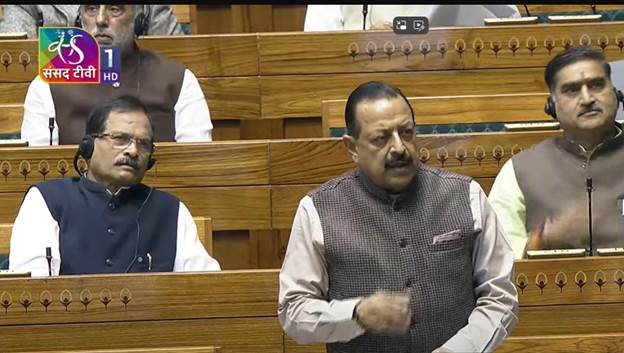
- 28 Nov 2024
In News:
The BioE3 Policy outlines guidelines and principles for enabling mechanisms for ‘Fostering High Performance Biomanufacturing’ in the country across diverse sectors.
Key Highlights:
Primary Objective:
- Set a framework for the adoption of advanced technologies and innovative research to promote biomanufacturing in India.
- Focus on enhancing efficiency, sustainability, and quality in biomanufacturing.
Alignment with National Goals:
- Supports India’s vision of Green Growth (Union Budget 2023-24) and Lifestyle for Environment (LiFE), promoting sustainability.
- Aligns with India’s goal of achieving a Net-Zero carbon economy.
- Supports the Biomanufacturing and Biofoundry initiative announced in the Interim Budget 2024-25.
Key Objectives:
- Revolutionize biomanufacturing for better product quality and environmental sustainability.
- Accelerate the development and commercialization of bio-based, high-value products.
- Foster high-performance biomanufacturing across diverse sectors.
Achievements of Indian Bioeconomy (2014-2023):
- Contribution to GDP: Bioeconomy contributes 4.25% to India’s GDP of $3.55 trillion (as of Dec 2023).
- Growth of Bioeconomy: From $10 billion in 2014 to $151 billion in 2023, surpassing 2025 target.
- Increase in Biotech Startups: From 50 startups in 2014 to 8,531 startups in 2023.
Implementation Strategy:
- Establish BioEnablers including Bio-AI Intelligence Hubs, Biofoundries, and Biomanufacturing Hubs across India.
- Bio-AI Intelligence Hubs will support research and innovation using data-driven approaches and AI to develop technologies for bio-based products.
- Biofoundries and Biomanufacturing Hubs will provide infrastructure to scale up bio-based technology for commercial applications.
Focus on Human Resource Development:
- Bio-Enablers will offer training and internships to build a skilled workforce with interdisciplinary and technical skills required for biomanufacturing.
Sectoral Focus Areas:
- Based on consultations, six thematic sectors of national importance have been identified for implementation:
- Bio-based chemicals and enzymes
- Functional foods and smart proteins
- Precision biotherapeutics
- Climate-resilient agriculture
- Carbon capture and utilization
- Futuristic marine and space research
- Sectoral Expert Committees are addressing challenges and gaps identified for each of these sectors.
Government Support:
- The DBT-BIRAC (Department of Biotechnology and Biotechnology Industry Research Assistance Council) has called for proposals to establish Biofoundries and Biomanufacturing Hubs in academia and industry.
- These hubs will support innovation and commercialization of biomanufacturing technologies.
National Mission on Natural Farming (NMNF)
- 27 Nov 2024
In News:
The Union Cabinet approved the launching of the National Mission on Natural Farming (NMNF) as a standalone Centrally Sponsored Scheme under the Ministry of Agriculture & Farmers' Welfare.
Key Highlights
Objective & Focus:
- Launch of NMNF by the Union Cabinet to promote chemical-free farming in India.
- Aim to improve soil health, reduce input costs, and produce nutritious food.
- Support the shift to natural farming (NF), emphasizing local knowledge and agro-ecological principles.
Financial Allocation:
- Total Outlay: ?2481 crore (Government of India share ?1584 crore, State share ?897 crore) until FY 2025-26.
Key Features of NMNF:
- Coverage: Targeting 15,000 clusters in Gram Panchayats, covering 7.5 lakh hectares and impacting 1 crore farmers.
- Bio-Input Resource Centres (BRCs): 10,000 BRCs to supply ready-to-use natural farming inputs.
- Krishi Vigyan Kendras (KVKs) and Agricultural Universities (AUs): Establishment of 2,000 model demonstration farms for hands-on training in natural farming techniques.
- Farmer Training: 18.75 lakh farmers to be trained in NF practices such as preparation of organic inputs like Jeevamrit and Beejamrit.
- Krishi Sakhis/CRPs: Deployment of 30,000 workers for farmer mobilization and awareness.
Implementation Strategy:
- Farmer Certification System: Providing easy, simple certification for marketing natural farming produce with dedicated branding.
- Monitoring: Real-time, geo-tagged monitoring of implementation through an online portal.
- Convergence with other government schemes and organizations for market linkages and support.
Natural Farming Practices:
- Zero Budget Natural Farming (ZBNF): Promote sustainable farming by using local livestock and diverse crop systems.
- Benefits: Reduce dependence on external inputs like chemical fertilizers and pesticides, rejuvenate soil quality, and increase resilience to climate risks (e.g., drought, floods).
- Encourage biodiversity, and improve soil carbon content and water-use efficiency.
Targeted Areas and Farmer Support:
- Focus on areas where NF practices are already being followed or where farmer producer organizations (FPOs) or self-help groups (SHGs) are active.
- Training through model demonstration farms will focus on practical, location-specific NF techniques tailored to regional agro-ecologies.
Impact on Agriculture and Environment:
- Environmental Impact: Encourages sustainable farming by reducing chemical exposure, improving soil health, and promoting climate resilience.
- Farmer Well-being: By reducing input costs and promoting nutritious food, it aims to improve farmer incomes and family health.
- Contributing to the long-term health of the environment, ensuring a healthy Mother Earth for future generations.
Challenges and Concerns:
- Soil Nutrient Compromise: Concerns that some crops, like rice, might require chemical fertilizers (e.g., NPK) for optimal growth, which may not be sufficiently replaced by organic manure alone.
- The shift to natural farming requires significant awareness and training to ensure sustainable and productive yields.
Institutional Framework:
- Ministry of Agriculture and Farmers’ Welfare is the implementing body.
- Collaboration with KVKs, AUs, and farmer organizations ensures grassroots level support and knowledge dissemination.
Riyadh Design Law Treaty (DLT)

- 27 Nov 2024
In News:
- India reaffirms its commitment to inclusive growth and strengthening its intellectual property (IP) ecosystem.The signing of the treaty comes after nearly two decades of negotiations.
Key Highlights:
Purpose of the DLT:
- Aims to harmonize industrial design protection frameworks across multiple jurisdictions.
- Improves efficiency and accessibility of design registration processes.
Key Features of the DLT:
- Grace Period: A 12-month grace period after the first disclosure of the design, ensuring its validity for registration.
- Flexibility for Applicants: Provides relief measures such as relaxed deadlines, reinstatement of lost rights, and flexibility in adding priority claims.
- Simplified Processes: Includes simplified procedures for design renewals, assignment, and license recording.
- E-Filing Systems: Promotes the adoption of electronic filing systems and exchange of priority documents.
Benefits of DLT:
- Empowering SMEs and Startups: Helps small and medium-sized enterprises (SMEs) and startups protect designs globally, enhancing competitiveness and market growth.
- Reduced Administrative Burden: Standardizes procedures, making the design protection process less complex, more predictable, and affordable.
- Support for Developing Countries: Offers technical assistance for implementation in developing and least-developed countries.
Significance for India:
- India’s rich heritage of design and craftsmanship underscores the importance of design protection for sustainable economic growth.
- Design registrations in India have surged, with a 120% increase in domestic filings over the last two years.
Supporting Programs:
- The treaty’s provisions align with India’s initiatives like Startup India and the Startups Intellectual Property Protection (SIPP) Scheme to boost the protection and commercialization of designs for Indian innovators.
Broader Impact:
- DLT aims to integrate design protection with traditional knowledge and cultural expressions, further enhancing protection for India’s diverse creative sectors.
About WIPO:
- The World Intellectual Property Organization (WIPO), headquartered in Geneva, Switzerland, is a specialized UN agency established in 1967, promoting IP rights globally.
- India is a member of WIPO, which has 193 member countries.
Overview of Intellectual Property (IP):
- IP includes creations like inventions, industrial designs, literary and artistic works, symbols, and more, which are used in commerce.
- IP rights protect creators, allowing them to benefit from their work when commercially exploited.
National Gopal Ratna Award 2024
- 26 Nov 2024
In News:
The Department of Animal Husbandry and Dairying (DAHD) declared the winners of the National Gopal Ratna Awards(NGRA); one of the highest National Awards in the field of livestock and dairy sector for the year 2024.
About the National Gopal Ratna Awards (NGRA):
- Purpose:Recognize and encourage individuals, AI technicians, dairy cooperatives, and farmer organizations in the livestock and dairy sector.
- Categories:
- Best Dairy Farmer (Indigenous Cattle/Buffalo Breeds)
- Best Artificial Insemination Technician (AIT)
- Best Dairy Cooperative/Milk Producer Company (MPC)/Dairy Farmer Producer Organization
- Addition (2024):Special awards for North Eastern Region (NER) to promote dairy development in the area, with winners in all three categories.
- and Prizes:
- Rs. 5 lakhs for 1st rank, Rs. 3 lakhs for 2nd rank, Rs. 2 lakhs for 3rd rank, and Rs. 2 lakhs for Special NER Award in the categories of Best Dairy Farmer and Best Dairy Cooperative/FPO/MPCs.
- For Best AIT, winners will receive a Certificate of Merit and a memento.
- Process:Winners selected from 2,574 applications via an online portal (https://awards.gov.in).
- The livestock sector is crucial for India's economy, contributing significantly to agriculture and providing livelihood, especially for small and marginal farmers, women, and landless laborers.
- Indigenous breeds have immense genetic potential, but their population and performance have been declining. To address this, the Rashtriya Gokul Mission was launched under the National Programme for Bovine Breeding and Dairy Development in 2014 to conserve and develop indigenous bovine breeds.
National Milk Day
- It is celebrated annually on November 26 in India to honor the significant contributions of milk and the dairy industry to the country's development.
- The day commemorates the birth anniversary of Dr VergheseKurien, the "Father of the White Revolution" in India, who played a pivotal role in transforming India into the largest producer of milk globally.
- National Milk Day was first celebrated on November 26, 2014, after the Indian Dairy Association (IDA), along with various dairy institutions across the country.
Nepal-Bangladesh Power Transfer via India
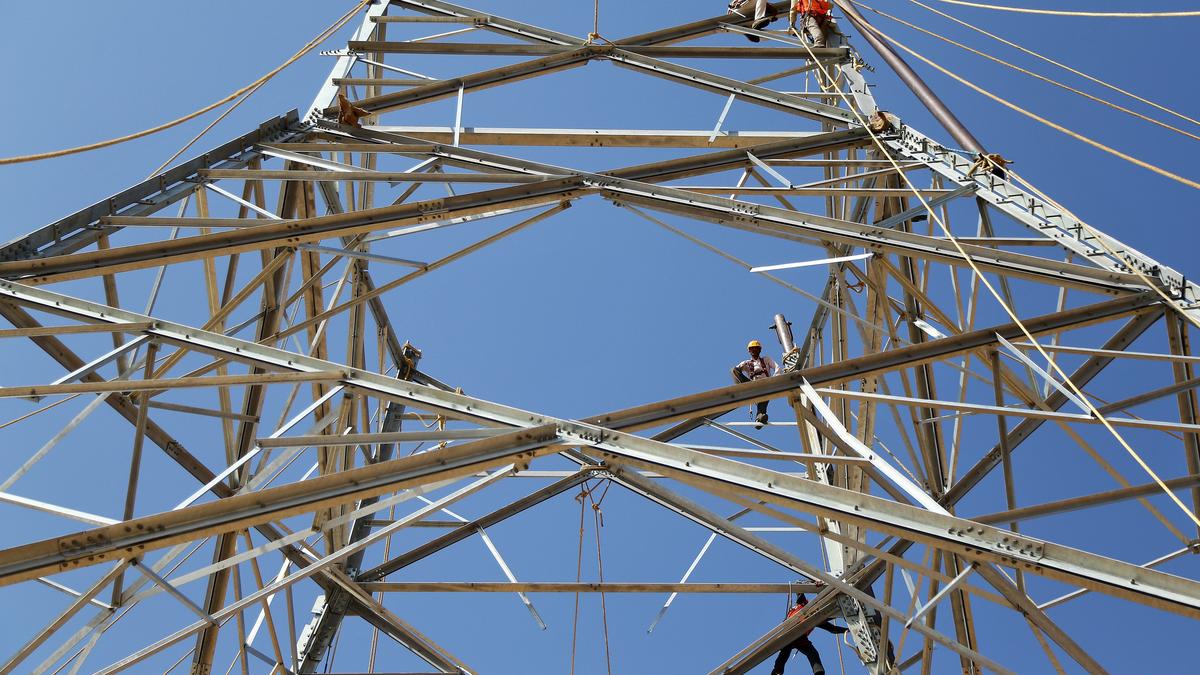
- 19 Nov 2024
In News:
Nepal starts exporting energy to Bangladesh with Indian grid support.
Significance of the Power Transfer:
- Energy Cooperation:
- A major step in regional energy cooperation among Nepal, India, and Bangladesh.
- Strengthens sub-regional connectivity in the power sector.
- Nepal’s Hydropower Potential:
- Nepal, a Himalayan nation, possesses untapped hydropower resources, and this agreement opens the door for future cross-border electricity cooperation.
- Nepal’s energy exports are a green energy initiative, supporting sustainable industrial growth in Bangladesh and regional prosperity.
- Electricity Crisis in Bangladesh:
- Bangladesh is facing an ongoing electricity shortage, worsened by the suspension of power supply from Adani’s Godda plant and the maintenance of the Payra thermal unit.
- The addition of 40 MW of Nepalese hydroelectric power aims to alleviate the energy shortfall in Bangladesh.
Tripartite Power Sales Agreement:
- Agreement Details:
- The agreement for power transfer was signed in October 2023 between:
- NTPC Vidyut Vyapar Nigam (NVVN) (India)
- Nepal Electricity Authority (NEA) (Nepal)
- Bangladesh Power Development Board (BPDB) (Bangladesh).
- Power Export: Nepal has started exporting 40 MW of electricity, which marks a significant milestone in trilateral power cooperation.
- The agreement for power transfer was signed in October 2023 between:
Key Entities Involved:
- NTPC Vidyut Vyapar Nigam (NVVN):
- A wholly owned subsidiary of NTPC Ltd. (National Thermal Power Corporation), created to facilitate power trading.
- NVVN is diversifying into renewables, e-mobility, and green fuel solutions.
- NTPC Ltd.:
- A Maharatna PSU under India’s Ministry of Power, established to develop power resources in India.
- Involved in large-scale power generation and clean energy initiatives
WIPO 2024 Report

- 18 Nov 2024
In News:
India continues to make significant strides in intellectual property filings, ranking among the top 10 countries for patents, trademarks, and industrial designs.
India’s Performance in Global Intellectual Property (IP) Filings:
- Overall Growth: India continues to make significant strides in intellectual property filings, ranking among the top 10 countries for patents, trademarks, and industrial designs.
- Patent Applications: India recorded a +15.7% growth in patent applications in 2023, marking its fifth consecutive year of double-digit growth, placing it among the top contributors to global patent filings.
- Trademark Filings: India ranks 4th globally in trademark filings, reflecting the country’s growing focus on brand protection.
- Industrial Designs: India saw a 36.4% surge in industrial design applications, emphasizing creativity and design innovation.
India’s Global Patent Ranking:
- Global Rank: India ranks 6th globally for patent applications with 64,480 filings in 2023.
- Resident Filings: For the first time, over half (55.2%) of India’s patent applications were filed by residents, highlighting growing domestic innovation.
- Patent Grants: A 149.4% increase in granted patents in 2023 underscores the efficiency of India’s patent office and the rising quality of applications.
Key Metrics and Trends in Patents:
- Patent-to-GDP Ratio: India’s patent-to-GDP ratio grew from 144 in 2013 to 381 in 2023, signaling a knowledge-driven economy.
- Sectoral Diversity: India’s patent filings span diverse sectors, including agriculture, pharmaceuticals, IT, and renewable energy, showcasing the broad scope of innovation.
Surge in Industrial Design Applications:
- Growth Rate: A 36.4% increase in industrial design filings in 2023, reflecting a shift towards value-added industries focused on product design and functionality.
- Leading Sectors: Key sectors driving design filings include textiles, accessories, tools, machines, and health & cosmetics.
- Manufacturing Transformation: This growth signals India’s transition from basic manufacturing to a more design-driven, innovation-focused ecosystem.
Trademark Filings:
- Global Rank: India ranks 4th globally in trademark filings with a 6.1% increase over the previous year.
- Resident Filings: Nearly 90% of trademark filings in India were made by domestic entities, highlighting a strong focus on brand protection.
- Active Trademarks: India now has over 3.2 million active trademarks, the second-largest in the world, reflecting a competitive and dynamic domestic marketplace.
Sectoral Trends in Trademarks:
- Leading Sectors: Health (21.9%), agriculture (15.3%), and clothing (12.8%) were the top sectors for trademark filings, underscoring India’s leadership in pharmaceuticals, food production, and fashion.
- Global Expansion: The rise in trademark filings also mirrors the increasing global demand for Indian products and services.
India’s Contribution to Global IP Growth:
- Global Trend: In 2023, a record 3.55 million patent applications were filed worldwide, with India contributing significantly to this surge, particularly in emerging markets.
- Local Innovation Focus: India’s rising resident filings in patents and trademarks point to a shift towards local innovation, with more Indian businesses and startups protecting their intellectual property.
Government Initiatives Fueling IP Growth:
- National IPR Policy: Launched in 2016, this policy fosters innovation, improves IP awareness, and supports domestic IP development.
- Key Measures: Modernization of IP offices, improvements in procedural requirements, and IP education initiatives.
- Atmanirbhar Bharat: Government campaigns like Atmanirbhar Bharat have supported local innovation and made Indian businesses more IP-conscious.
- Startup India & Atal Innovation Mission: These initiatives have further strengthened India’s innovation ecosystem by promoting entrepreneurship, research, and technological advancement.
- Startup India: Over 1,49,000 recognized startups as of September 2024.
- Atal Innovation Mission: More than 10,000 Atal Tinkering Labs in schools and 3,500+ startups incubated across India.
Assam’s Semiconductor Plant
- 18 Nov 2024
In News:
A Semiconductor Plant has been set up in Morigaon, Assam, projected for completion by mid-2025.
Overview of the Morigaon Semiconductor Plant:
- Location: Morigaon, Assam.
- Investor: Tata Semiconductor Assembly and Test Pvt Ltd (TSAT).
- Investment: ?27,000 crore.
- Production Capacity: Expected to produce 48 million semiconductor chips daily.
- Technology: Utilizes advanced packaging technologies such as flip chip and Integrated System in Package (ISIP).
- Sectors Served: Automotive, electric vehicles, telecommunications, consumer electronics.
- Completion: Projected to be completed by mid-2025.
- Job Creation: Expected to generate 15,000 direct jobs and 11,000-13,000 indirect jobs.
- Market Reach: Will serve both domestic and international markets, enhancing India's position in the global semiconductor supply chain.
India's Semiconductor Industry and Market Growth:
- Market Size (2023): Estimated at $38 billion.
- Projected Growth: Expected to grow to $109 billion by 2030.
- Government Initiatives: Several initiatives have been launched to promote domestic semiconductor manufacturing, including the India Semiconductor Mission (ISM) and the Semicon India Program.
India Semiconductor Mission (ISM):
- Objective: To build a self-reliant semiconductor ecosystem in India.
- Launched: 2021 with a financial outlay of ?76,000 crore.
- Scope: Covers semiconductor fabs, packaging, display manufacturing, Outsourced Semiconductor Assembly and Testing (OSAT), sensors, and other critical components.
- Support Schemes: Includes Modified Schemes for setting up Semiconductor and Display Fabs, as well as support for Compound Semiconductors, Silicon Photonics, and Sensors.
Key Projects in Semiconductor Industry:
- Morigaon Facility: Part of the broader government-backed initiative to enhance semiconductor production in India.
- Other Facilities: New semiconductor units by Tata Electronics (Dholera, Gujarat), CG Power (Sanand, Gujarat), and KaynesSemicon Pvt Ltd (Sanand, Gujarat).
- Modernization: The Semi-Conductor Laboratory in Mohali is being modernized, alongside initiatives like the Scheme for Promotion of Manufacturing of Electronic Components and Semiconductors (SPECS) and the Production Linked Incentive (PLI) Scheme.
Strategic Importance of Semiconductors:
- Role in Modern Electronics: Semiconductors are critical for a wide range of devices like computers, smartphones, solar cells, LEDs, and integrated circuits.
- Global Dependence: The global semiconductor market has significant reliance on suppliers like Taiwan (44%), China (28%), and South Korea (12%).
- Global Shortage: The 2021 chip shortage highlighted the vulnerability of global supply chains, prompting efforts by countries to boost domestic semiconductor production.
Government Support for Semiconductor Manufacturing:
- Financial Incentives: The government offers fiscal support for setting up semiconductor manufacturing plants:
- 50% of project cost support under the Semiconductor Fab Scheme and the Display Fab Scheme.
- Support for Compound Semiconductors and Chips to Startup (C2S) initiatives.
- Training 85,000 engineers through the C2S Programme in collaboration with academic institutions, R&D organizations, and MSMEs.
Europe’s Digital Euro

- 16 Nov 2024
In News:
The digital euro, a central bank digital currency (CBDC) being developed by the European Central Bank (ECB), aims to revolutionize Europe’s digital payment landscape. However, while the ECB has marketed it as a convenient, free, anonymous, and reliable alternative to existing cashless options like credit cards and mobile payment apps, the true purpose of the digital euro goes beyond these simplified claims.
Key Aspects of the Digital Euro
- Direct Issuance by the ECB: Unlike traditional digital payments that rely on intermediaries like banks or payment service providers, the digital euro is issued directly by the European Central Bank. This allows for peer-to-peer transactions without the need for third-party banks or payment gateways. It can be used for offline transactions, which is a major technical innovation that sets it apart from other digital currencies.
- A Digital Version of Cash: The digital euro is essentially a digital version of legal tender (cash), providing an alternative to cash in a world increasingly dominated by digital payments. Its key feature is direct payment between users, bypassing the traditional banking system. It aims to offer the same advantages as cash, such as anonymity, but with the convenience of digital transactions.
- Cost Reduction and Micro-Payments: The digital euro promises to lower transaction costs, especially for micro-payments that are currently prohibitively expensive using conventional bank transfers or digital services like PayPal. This cost efficiency is intended to enable new business models by lowering the friction in digital transactions, thus encouraging innovation in commerce.
The ECB’s Claims vs. the Real Motivation
While the ECB portrays the digital euro as a means to make payments easier, faster, and more secure, there is an underlying political and economic agenda that goes beyond improving consumer convenience.
- Sovereignty and Competition: One of the main drivers behind the digital euro is Europe’s desire to assert its digital sovereignty. The ECB positions the digital euro as a tool to strengthen the euro’s competitiveness against non-European payment providers, particularly those from the United States like PayPal, Apple Pay, and Google Pay. The EU is concerned that foreign companies may dominate the digital payment landscape, thereby reducing Europe's ability to control its own financial systems.
- This is a defensive measure to protect European financial interests. By creating a state-backed alternative to privately controlled digital payment systems, the EU aims to ensure that Europe does not become reliant on foreign corporations for essential services.
- Not About Citizens’ Convenience Alone: While the ECB frames the digital euro as a user-friendly solution for consumers, the real concern is about the control over digital currency. The digital euro offers a more centralized alternative compared to the decentralized nature of cryptocurrencies like Bitcoin. The ECB aims to harness the power of the state in regulating and controlling digital transactions, thus consolidating private property and ensuring the smooth functioning of Europe’s monetary policies.
- A Tool for Strengthening the Euro: The digital euro is also seen as part of Europe’s broader ambition to establish the euro as a dominant global currency. As the first fully-regulated digital currency issued by a central bank, it could position the euro to compete against other digital currencies, including the digital yuan or the U.S. dollar. The EU sees the digital euro as a way to expand its geopolitical influence by promoting its own currency as a global standard for digital payments.
Global Maritime Conference
- 16 Nov 2024
In News:
In a bid to enhance India’s clout in the global merchant shipping sector, the government recently hosted a two-day global maritime conference – Sagarmanthan: The Great Oceans Dialogue.
Key Highlights:
- Purpose of the Conference:
- To enhance India's maritime influence and position India as a key player in the global maritime sector, especially in merchant shipping and maritime trade.
- To showcase India's ambitions in expanding its role in global maritime trade, governance, and collaboration.
- India's Maritime Ambitions:
- Despite being the most populous nation and one of the largest global economies, India’s maritime clout has been relatively lower than expected.
- The dialogue aims to shift global attention towards India's growing role and contributions to maritime trade and shipping.
- India's Maritime Growth:
- India contributed to 16% of global maritime growth in 2023 and is on track to become the third-largest global economy within three years.
- As India’s economic and geopolitical influence expands, maritime governance will become increasingly significant, necessitating deeper international collaborations in commerce, connectivity, and trade.
- Focus Areas of the Dialogue:
- Global Maritime Trade: India's expanding role in international shipping, trade routes, and maritime security.
- International Collaborations: Promoting deeper engagement in maritime governance and policy-making ecosystems.
- Human Well-being: Highlighting the role of maritime trade in supporting human welfare, particularly in the context of sustainable development and climate change.
- Significance for India:
- The conference serves as a platform to discuss India’s aspirations, policies, and presence in global maritime affairs.
- It is an opportunity to strengthen maritime relations and address issues of global relevance such as trade routes, shipping governance, and environmental sustainability
Domestic Systemically Important Banks (D-SIBs)
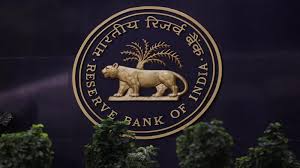
- 15 Nov 2024
In News:
The Reserve Bank of India (RBI) retained the State Bank of India, HDFC Bank and ICICI Bank as Domestic Systemically Important Banks (D-SIBs).
Overview of D-SIBs
- Definition: D-SIBs are banks that are 'Too Big to Fail' (TBTF) and their failure could significantly disrupt essential banking services, affecting the economy.
- RBI Classification: The Reserve Bank of India (RBI) has designated SBI, HDFC Bank, and ICICI Bank as D-SIBs.
- Bucketing System: These banks are classified into different buckets based on their systemic importance.
Importance of D-SIBs
- Systemic Importance: Banks are considered systemically important due to their:
- Size
- Cross-jurisdictional activities
- Complexity
- Interconnectedness with the economy
- Impact of Failure: Failure of a D-SIB could cause significant disruption in the banking system and economy, impacting services like payments, loans, etc.
Why D-SIBs are Created
- Risk of Disruption: The failure of a large bank can disrupt essential services and lead to a broader economic crisis.
- TBTF Perception: These banks are often perceived as Too Big to Fail, leading to an expectation of government support during crises. This creates moral hazard, encouraging riskier behavior.
Assessment and Selection of D-SIBs
- Two-Step Process:
- Step 1: Selection of banks based on their size, complexity, and interconnectedness. Only banks with systemic importance are assessed (e.g., banks with assets > 2% of GDP).
- Step 2: Calculation of systemic importance score based on a range of indicators. Banks above a certain threshold are classified as D-SIBs.
- Indicators: Size (measured by Basel III Leverage Ratio Exposure Measure), interconnectedness, substitutability, and complexity are key factors.
Bucket Allocation and Capital Requirements
- D-SIBs are assigned to five buckets based on their systemic importance score:
- Bucket 1: Lowest capital surcharge (e.g., ICICI Bank).
- Bucket 5: Highest capital surcharge.
- Additional Capital Requirements:
- SBI: Additional 0.80% CET1 (Common Equity Tier 1) on Risk-Weighted Assets (RWAs).
- HDFC Bank: Additional 0.40% CET1.
- ICICI Bank: Additional 0.20% CET1.
- The higher the bucket, the higher the capital surcharge.
Global Systemically Important Banks (G-SIBs)
- Global List: Identified by the Financial Stability Board (FSB) based on data from the previous year.
- 2023 G-SIB List includes banks like JP Morgan Chase, Bank of America, HSBC, etc.
- Capital Requirement for G-SIBs in India: Foreign G-SIBs with branch presence in India must meet additional CET1 requirements, proportional to their operations in India.
Key Terms
- Risk-Weighted Assets (RWAs): These are used to calculate the minimum capital a bank must hold. It accounts for the risk level of a bank’s assets.
- Common Equity Tier 1 (CET1): The highest quality of capital a bank can hold, primarily made up of common stock, to absorb losses in times of distress.
Sea Ranching Initiative off Vizhinjam Coast
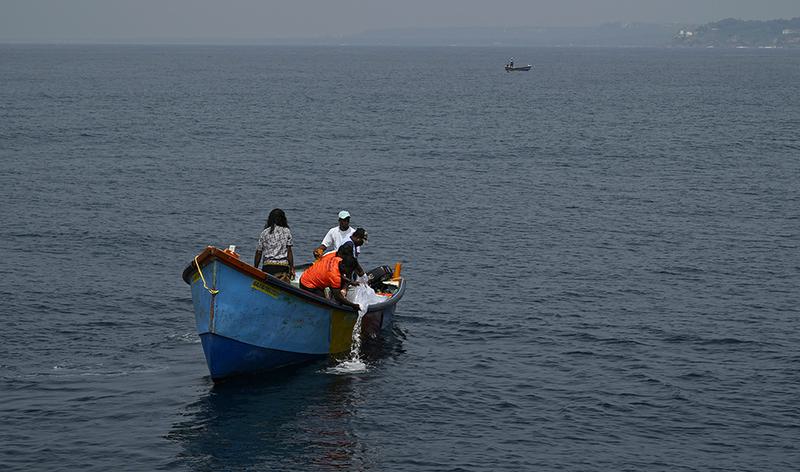
- 14 Nov 2024
In News:
- The State Fisheries Department in Kerala launched a sea ranching project by releasing 20,000 pompano (Trachinotus blochii) fingerlings off the Vizhinjam coast as part of the artificial reef project.
- Coordinates: The fingerlings were released near artificial reef modules placed 1.5 nautical miles off the coast.
- Follow-up to Artificial Reef Project: The release of fingerlings is a follow-up to the artificial reef project aimed at replenishing marine fishery resources and promoting sustainable fishing practices.
Project Details
- Fingerling Release: The first batch of 20,000 pompano was released as part of the broader initiative to release 10 lakh fingerlings (pompano and cobia) at 10 locations along the Thiruvananthapuram coast.
- Location and Quantity: At each location, 1 lakh fingerlings will be released, where artificial reefs have already been deployed under the Pradhan Mantri Matsya Sampada Yojana (PMMSY).
- Reef Design: Artificial reefs consist of 150 reef modules (triangular, flower, and pipe-shaped) created at 42 locations off 33 fishing villages in the Thiruvananthapuram district.
Objective and Benefits
- Marine Resource Replenishment: The primary aim is to replenish marine fishery resources in the region by enhancing biodiversity through the introduction of fingerlings.
- Sustainable Fishing: The project aims to promote sustainable fishing practices by supporting fish populations and ensuring long-term fishery health.
- Attraction of Fish Species: The artificial reefs have already attracted a variety of fish species, including tuna, trevally, and mackerel, enhancing the fishing ecosystem.
Implementation and Funding
- Scheme: The project is being implemented under the Pradhan Mantri Matsya Sampada Yojana (PMMSY), which focuses on sustainable fisheries development.
- Central Approval: The National Fisheries Development Board (NFDB) approved the ?3 crore funding for the initial phase in Thiruvananthapuram.
- Proposed Expansions:
- Phase II: A proposal for extending the artificial reef project to 96 villages in the districts of Kollam, Alappuzha, Ernakulam, and Thrissur with an estimated cost of ?29.76 crore.
- Phase III: A similar proposal for 96 villages in the northern districts of Malappuram, Kozhikode, Kannur, and Kasaragod with an estimated cost of ?25.82 crore.
Mission and Fingerlings Details
- Fingerlings:
- Pompano (Trachinotus blochii) and Cobia (Rachycentron canadum) fingerlings were reared at the Ayiramthengu fish farm.
- Each fingerling weighs between 8 to 10 grams.
- The release aims to stock marine areas with species that will contribute to biodiversity and fisheries sustainability.
Pradhan Mantri Matsya Sampada Yojana (PMMSY)
- Launched: PMMSY is a Centrally funded scheme under the Ministry of Fisheries, Animal Husbandry, and Dairying.
- Goal: The scheme focuses on sustainable fisheries development to enhance fisheries production, boost aquaculture, and promote responsible fishing practices.
- Funding: The scheme involves both Central and State Government funding for projects related to fisheries management, infrastructure development, and resource conservation.
Mission Fingerling
- Launched: 2017 by the Union Ministry of Agriculture and Farmers’ Welfare.
- Objective: To achieve the Blue Revolution by holistically developing and managing fisheries in India.
- Production Target: The mission aimed to increase fisheries production from 10.79 MMT (2014-15) to 15 MMT by 2020-21.
OECD Report on Indian Agricultural Policies
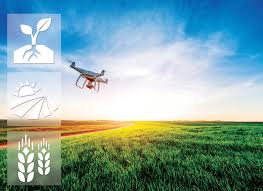
- 14 Nov 2024
In News:
- In 2023, the Organisation for Economic Co-operation and Development (OECD) revealed that Indian farmers faced the highest implicit taxation globally, amounting to USD 120 billion.
- Implicit Taxation: This taxation arises from government policies like export bans, duties, and price controls, aimed at lowering food prices for consumers but reducing the income of farmers.
- Export Restrictions: Key commodities affected include rice, sugar, onions, and de-oiled rice bran.
Impact on Indian Farmers
- Market Price Support (MPS):
- Negative MPS: In 2023, Indian agricultural policies resulted in a negative MPS of USD 110 billion.
- Farmers received lower prices than international market rates due to export bans and trade restrictions, impacting their income.
- Budgetary Support: Despite government subsidies and the Minimum Support Price (MSP) worth USD 10 billion, negative MPS outweighed positive support, leading to an overall loss for farmers.
- Farmer’s Share in Global Negative Support:
- India’s share of global negative price support in 2023 was 62.5%, a significant increase from 61% in 2000-02.
Global Agricultural Policy Trends
- Global Support: Total support for agriculture across 54 countries averaged USD 842 billion annually (2021-2023). However, there was a decline in support in 2022-23 from the pandemic-era peak.
- Challenges:
- Geopolitical Tensions (e.g., Russia-Ukraine war) and climate change are exacerbating global agricultural production and trade.
- Export Restrictions in various countries are distorting international agricultural markets.
- Farmer Protests across countries reflect the economic and social struggles of the farming community.
- Sustainability Issues: Global agricultural productivity growth is slowing, posing challenges to feeding a growing population sustainably.
India's Agricultural Policies
- Export Bans and Restrictions: These policies are intended to control domestic prices but undermine farmers’ income by lowering market prices for key agricultural products.
- Minimum Support Price (MSP): MSP is meant to protect farmers, but is often set below international market rates, leading to a negative price effect.
- Regulatory Constraints: Policies like the Essential Commodities Act (1955) and APMC Act (2003), though aimed at ensuring food security, often lead to price suppression for farmers.
- Price Depressing Policies: India's agricultural policies result in lower farm-gate prices due to price controls, government-set procurement prices, and lack of market access.
Negative Market Price Support (MPS)
- Historical Trends:
- From 2014-2016, India’s Producer Support Estimate (PSE) was -6.2%, driven mainly by negative MPS (-13.1%).
- The PSE measures the annual value of transfers to farmers, both from consumers and the government.
- Inefficiencies:
- Infrastructure Gaps: Poor infrastructure and high transaction costs lower the prices farmers receive.
- Inefficient Resource Allocation: Short-term subsidies for inputs (fertilizers, irrigation) don’t address long-term agricultural challenges like climate change and market access.
Government Support Programs
- Subsidies and Schemes:
- National Mission on Sustainable Agriculture (NMSA)
- Paramparagat Krishi Vikas Yojana (PKVY) for organic farming.
- Rashtriya Krishi Vikas Yojana (RKVY) to promote agricultural development.
- Digital Agriculture Mission and Unified Farmer Service Platform (UFSP) for modernizing agricultural practices.
- Sustainability Efforts:
- The government has introduced initiatives like AgriStack and Mission Organic Value Chain Development in the North East to enhance sustainable agricultural practices and reduce the negative impacts on farmers.
Global Context and Recommendations
- Environmental Public Goods Payments (EPGP): Only 0.3% of total producer support is dedicated to environmental sustainability, despite the growing need for climate-resilient agriculture.
- Sustainable Agricultural Practices: The OECD advocates for governments to tie producer support to sustainable farming practices, including the use of metrics like Total Factor Productivity (TFP) and Agri-Environmental Indicators (AEIs).
- TFP measures agricultural efficiency, while AEIs assess the environmental impacts of farming.
OECD Overview
- OECD Function: Founded in 1961, the OECD is an international organization of 38 countries that promotes prosperity, equality, and well-being through economic reports, data, and policy analysis.
- India’s Role: India has been an OECD Key Partner since 2007, engaging with the OECD on various policy issues, though it is not a member.
RBI's New Framework for Reclassification of FPI to FDI
- 13 Nov 2024
In News:
The Reserve Bank of India (RBI) directed foreign portfolio investors (FPIs) to obtain necessary approvals from the government and concurrence from the investee companies when their equity holdings go beyond the prescribed limits and they reclassify the holdings as foreign direct investment (FDI).
- Approval Requirement:
- FPIs (Foreign Portfolio Investors) must obtain necessary government approvals when reclassifying their foreign portfolio investments (FPIs) into Foreign Direct Investment (FDI).
- Approvals are mandatory, including those related to investments from countries sharing a land border with India.
- Investment Limits:
- According to FEMA (NDI) Rules, 2019, an FPI’s investment in an Indian company should not exceed 10% of the total paid-up equity capital (on a fully diluted basis).
- If the FPI exceeds this limit, it has 5 trading days from the settlement of trades to either divest or reclassify the excess holdings as FDI.
- Restrictions on Reclassification:
- Reclassification to FDI is not allowed in sectors where FDI is prohibited.
- FPIs must ensure compliance with FDI norms, such as entry routes, sectoral caps, investment limits, pricing guidelines, and other related conditions.
- Concurrence from Investee Companies:
- The FPI must obtain the concurrence of the investee company for reclassifying the investment into FDI.
- This ensures that the company adheres to conditions related to prohibited sectors, sectoral caps, and government approvals.
- Reclassification Procedure:
- The FPI must clearly state its intent to reclassify the investment to FDI and provide the necessary approvals and concurrence to its custodian.
- The custodian is responsible for freezing the FPI's purchase transactions in the investee company’s equity instruments until the reclassification is complete.
- Regulatory Adherence:
- The reclassification must follow the relevant provisions for FDI, including compliance with the Foreign Exchange Management Act (FEMA) and FDI guidelines.
Nano-Coating Technology for Fertilizer Efficiency

- 12 Nov 2024
In News:
A mechanically stable, biodegradable, hydrophobic nanocoating material can enhance the nutrient use efficiency of chemical fertilizers by tuning them for slow release, thereby limiting their interaction with the rhizosphere soil, water and microbes.
Development of Slow-Release Fertilizers:
- A biodegradable, hydrophobic nanocoating has been developed to enhance the nutrient use efficiency of chemical fertilizers.
- The nanocoating allows for slow release of nutrients, thus limiting excessive interaction with soil, water, and microbes, and optimizing fertilizer usage.
Coating Composition:
- The coating is made from nanoclay-reinforced binary carbohydrates, primarily chitosan (a biopolymer from chitin) and lignin (a plant-based polymer).
- These materials are low-cost, naturally derived, and eco-friendly, ensuring sustainability and reducing the environmental impact of fertilizer use.
Technological Innovation:
- The coating process involves using a drum rotor method to uniformly coat fertilizers, improving their efficiency.
- The tuning of hydrophobicity in the nanocoating alters the release kinetics of fertilizers, ensuring that nutrients are released in accordance with the crop’s nutrient uptake needs.
Sustainability and Biodegradability:
- The nanocoating is biodegradable, which ensures that it does not harm the environment post-application, unlike conventional chemical fertilizers that may lead to soil degradation and water pollution.
- Life cycle assessment confirms the product's long-term sustainability compared to traditional fertilizers.
Enhanced Crop Productivity:
- The slow-release coating enables a reduced fertilizer dose, while maintaining or even increasing crop yields, particularly for staple crops like rice and wheat.
- This technology facilitates higher agricultural output with fewer inputs, contributing to food security.
Industrial Viability:
- The mechanical stability of the coated fertilizers ensures they can withstand transportation and handling, making them suitable for large-scale industrial application.
- The rotary drum system used for coating ensures uniform application and superior mechanical performance, ensuring that the fertilizers are not damaged during the supply chain process.
Economic Benefits:
- The use of slow-release fertilizers can reduce overall fertilizer costs for farmers while enhancing yields, leading to improved socio-economic conditions for farmers.
- The technology holds potential for economic growth by boosting agricultural productivity and reducing the financial burden on farmers for chemical fertilizer inputs.
Global Relevance:
- The research is significant in the context of global sustainable development goals, aiming to reduce the over-reliance on conventional chemical fertilizers that contribute to soil degradation, water contamination, and greenhouse gas emissions.
Research Collaboration:
- This breakthrough was achieved by scientists from the Institute of Nano Science and Technology (INST), Mohali, in collaboration with the Department of Science and Technology (DST).
- The findings were published in the peer-reviewed journal Environmental Science: Nano, highlighting its scientific validation.
State of Food and Agriculture 2024Report
- 12 Nov 2024
In News:
- India's annual hidden costs from agrifood systems total $1.3 trillion, the third-largest globally, after China ($1.8 trillion) and the US ($1.4 trillion).
- These costs are mainly driven by unhealthy dietary patterns leading to non-communicable diseases (NCDs), such as heart disease, diabetes, and stroke.
Major Contributors to Hidden Costs:
- Unhealthy Diets: Over 73% of India’s hidden costs stem from unhealthy dietary habits, including:
- Excessive consumption of processed foods and additives ($128 billion).
- Low intake of plant-based foods, fruits, and beneficial fatty acids ($846 billion).
- These dietary risks contribute to a significant health burden, increasing the prevalence of NCDs and reducing labor productivity.
Global Context:
- Global hidden costs of agrifood systems amount to $12 trillion annually.
- 70% of these costs (~$8.1 trillion) arise from unhealthy dietary patterns, which include high intakes of sugar, salt, and processed foods, contributing to diseases and economic losses.
Health Impacts:
- The report identifies 13 dietary risk factors that contribute to NCDs, including insufficient intake of whole grains, fruits, vegetables, and excessive sodium, with varying effects across different agrifood systems.
Environmental and Social Costs:
- Environmental Costs: High costs from unsustainable agricultural practices, including greenhouse gas emissions and nitrogen runoff. In some agrifood systems, environmental costs can reach up to 20% of GDP.
- Social Costs: High poverty rates among agrifood workers and undernourishment in systems like protracted crises and traditional agrifood systems contribute significantly to the hidden costs.
India’s Agrifood System Profile:
- India’s agrifood system faces significant challenges related to low wages, poor productivity, and poverty among agrifood workers, driven by distributional failures.
- Climate Change and Environmental Degradation: Issues like droughts, floods, and soil degradation threaten food security and agricultural sustainability in India.
Recommendations for Transformative Change:
- True Cost Accounting: Implementing this method can help better capture hidden costs and enable more informed decision-making for a sustainable agrifood system.
- Healthier Diets: Policies to make nutritious food more affordable and accessible to reduce health-related hidden costs.
- Sustainability Incentives: Encouraging practices that reduce greenhouse gas emissions, harmful land-use changes, and biodiversity loss, using labelling, certification, and industry standards.
- Consumer Empowerment: Providing accessible information about the environmental, social, and health impacts of food choices, ensuring even vulnerable households benefit from healthier options.
India’s Path Forward:
- India has several ongoing initiatives for sustainable agriculture, including:
- National Mission for Sustainable Agriculture (NMSA).
- Eat Right Initiative.
- Digital Agriculture Mission (DAM).
- However, challenges like climate change, soil degradation, and low productivity among smallholder farmers hinder progress toward sustainable food systems.
Key Focus Areas for India’s Agrifood Systems:
- Support for Smallholder Farmers: Enhancing access to technology, markets, and financial services for marginalized farmers.
- Sustainable Practices: Adoption of water-efficient practices, soil health restoration, and environmentally friendly farming methods.
- Collaboration with International Agencies: Cooperation with FAO, WFP, and others to strengthen agricultural reforms and support smallholder farmers.
World’s First CO? to Methanol Plant
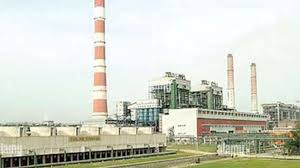
- 10 Nov 2024
In News:
- NTPC has achieved the first-ever synthesis of CO? (captured from flue gas) and hydrogen (produced via a PEM electrolyzer) into methanol at its Vindhyachal plant.
- This marks a significant step in carbon management technology, aimed at advancing sustainable fuel production.
About CO?-to-Methanol Conversion:
- Carbon Dioxide Capture:
- CO? is captured from industrial sources, such as power plants, or directly from the atmosphere.
- Hydrogen Production:
- Renewable energy sources like solar or wind power are used to produce hydrogen through water electrolysis.
- Methanol Synthesis:
- The captured CO? is combined with hydrogen in the presence of a catalyst to produce methanol, typically under high pressure and temperature conditions.
Benefits of CO?-to-Methanol Conversion:
- Carbon Capture and Utilization (CCU):
- This technology reduces the impact of CO? on the atmosphere by converting it into useful products.
- Renewable Fuel Source:
- Methanol produced through this process can be used as a fuel for transportation, power generation, or as a feedstock for chemicals.
- Energy Storage:
- Methanol offers a more practical storage and transportation option than hydrogen, making it a potential energy storage solution and aiding the transition to hydrogen-based energy systems.
- Versatile Feedstock:
- Methanol is widely used in producing chemicals, solvents, and plastics, supporting various industrial applications.
What is Methanol?
- Brief: Methanol, also known as methyl alcohol or wood alcohol, is the simplest form of alcohol. It is a clear, colorless, and flammable liquid with a distinctive odor.
- Key Properties:
- Colorless, miscible with water, toxic if ingested, flammable.
One Sun One World One Grid (OSOWOG) Initiative

- 10 Nov 2024
In News:
- India is in talks with Oman, UAE, Saudi Arabia, Maldives, and Singapore to establish cross-border electricity transmission lines.
- This is part of the ambitious OSOWOG initiative to create a global renewable energy grid.
Key Points:
- Proposed by the Prime Minister of India at the 2018 International Solar Alliance (ISA) Assembly.
- Aims to create a transnational electricity grid that delivers power worldwide.
- Led by India and the UK, in collaboration with ISA and the World Bank Group.
Vision of OSOWOG:
- Connect regional grids through a common infrastructure for the transfer of renewable energy, focusing on solar power.
- Harness solar and other renewable energy from regions where the sun is shining and efficiently transmit it to areas of need.
- Aim to provide power to 140 countries using clean and efficient solar energy.
Phases of OSOWOG:
- Phase 1:
- Connect the Indian grid with grids in the Middle East, South Asia, and South-East Asia.
- Share solar and other renewable energy resources.
- Phase 2:
- Expand the interconnected grid to include renewable resources from Africa.
- Phase 3:
- Achieve a global interconnection aiming for 2,600 GW by 2050.
- Integrate as many countries as possible into a single renewable energy grid.
Global Collaboration:
- Involves national governments, international organizations, legislators, power operators, and experts.
- Focus on accelerating infrastructure development for a clean energy-powered world.
India's Green Leap
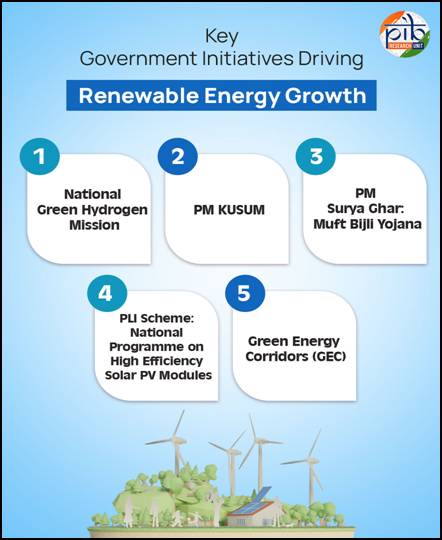
- 05 Nov 2024
In News:
India's journey toward a sustainable energy future has gained significant momentum with a series of policy reforms designed to reduce reliance on fossil fuels and accelerate the shift to clean energy. The recent Asia-Pacific Climate Report from the Asian Development Bank (ADB) highlights India's remarkable progress in reforming its fossil fuel subsidy system and its efforts to foster renewable energy, positioning the country as a leader in the region's green transformation.
Key Highlights from the Report:
India's Fossil Fuel Subsidy Reform
- India has successfully reduced fossil fuel subsidies by 85%, from a peak of $25 billion in 2013 to just $3.5 billion by 2023.
- The reform strategy is built on a "remove, target, and shift" approach, which involved phasing out subsidies on petrol and diesel from 2010 to 2014, followed by incremental tax hikes on these fuels through 2017.
- These fiscal changes created space for funding renewable energy projects, such as solar parks, electric vehicle initiatives, and infrastructure improvements.
Role of Taxation in Supporting Clean Energy
- Between 2010 and 2017, India introduced a cess on coal production and imports, which contributed significantly to funding clean energy projects. Approximately 30% of the cess was directed to the National Clean Energy and Environment Fund.
- This funding supported major renewable energy initiatives, including the National Solar Mission and Green Energy Corridor project, helping reduce the cost of utility-scale solar energy and expand off-grid renewable energy solutions.
- The introduction of the Goods and Services Tax (GST) in 2017 altered the financial landscape, redirecting the cess funds to GST compensation rather than directly to clean energy.
Government Schemes and Initiatives
- India is advancing its clean energy agenda through several key government schemes:
- National Green Hydrogen Mission: Aimed at establishing India as a leader in green hydrogen production.
- PM-KUSUM Scheme: Focused on promoting solar energy among farmers, allowing them to produce renewable power.
- PM Surya Ghar: Muft Bijli Yojana: A program designed to provide solar energy access to rural communities, reducing dependency on fossil fuels.
A Strategic Shift: From Subsidies to Clean Energy
- India’s subsidy reforms are an important part of its strategy to transition from a reliance on fossil fuels to a focus on renewable energy investments.
- These changes reflect India’s long-term goal of achieving net-zero emissions by 2070, as outlined in its climate action plans.
Global Significance of India’s Efforts
- The reduction in fossil fuel subsidies and the surge in clean energy investment serve as a model for other nations seeking to balance economic development with climate action.
- India’s approach demonstrates that policy reforms and innovative financing mechanisms can be used to accelerate the transition to a cleaner, greener economy while creating job opportunities and fostering economic growth.
NAMO DRONE DIDI
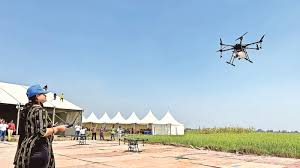
- 05 Nov 2024
In News:
Department of Agriculture & Farmers’ Welfare has released the Operational Guidelines of Central Sector Scheme “NAMO DRONE DIDI”
Key Highlights:
Objective:
- Empower women through Self-Help Groups (SHGs) by providing drones for agricultural rental services.
- Aim to support 14,500 SHGs from 2024 to 2026.
Scheme Overview:
- Type: Central Sector Scheme, under the Deendayal Antyodaya Yojana – National Rural Livelihood Mission (DAY-NRLM).
- Ministry: Ministry of Agriculture & Farmers Welfare.
- Target: Women SHGs for providing drone services in agriculture (e.g., nutrient and pesticide spraying).
Key Features:
- Financial Assistance:
- 80% subsidy (up to ?8 lakh) for SHGs to purchase drones.
- Loans for the remaining 20% via the National Agriculture Infra Financing Facility (AIF) with 3% interest subvention.
- Drone Package:
- Includes drones, spray assemblies, batteries, cameras, chargers, and measurement tools.
- Additional batteries and propellers allow up to 20 acres of coverage per day.
- Training Program:
- One SHG member will be selected for 15 days of mandatory training.
- Focus on drone operation and agricultural tasks (nutrient and pesticide spraying).
- Implementation & Oversight:
- Central Governance: Empowered Committee comprising secretaries from key ministries (Agriculture, Rural Development, Fertilizers, Civil Aviation, and Women and Child Development).
- State Level: Lead Fertilizer Companies (LFCs) will implement the scheme in coordination with state departments and SHG federations.
- Monitoring: IT-based Management Information System (MIS) through the Drone Portal for real-time tracking and fund disbursement.
- Financial Flexibility:
- SHGs can access loans through other Ministry of Rural Development schemes if needed.
Implementation Details:
- Governance: Central level oversight by the Empowered Committee and state-level execution by Lead Fertilizer Companies (LFCs).
- Ownership: Drones procured by LFCs will be owned by SHGs or their Cluster Level Federations (CLFs).
- Monitoring: The scheme will be tracked and managed through the Drone Portal, ensuring transparency and accountability.
Mission for Integrated Development of Horticulture (MIDH)

- 29 Oct 2024
In News:
- The Union Government has decided to introduce four new components under the Mission for Integrated Development of Horticulture (MIDH), aimed at promoting modern farming techniques:Hydroponics, Aquaponics, Vertical Farming&Precision Agriculture
Key Features of MIDH:
- MIDH is a Central Sponsored Scheme (CSS) aimed at the integrated development of various horticulture crops, including:
- Fruits, vegetables, root and tuber crops, mushrooms, spices, flowers, aromatic plants, coconut, cashew, cocoa, and bamboo.
- The scheme focuses on pre-production, production, post-harvest management, processing, and marketing activities.
Revision of Operational Guidelines and Cost Norms:
- The Ministry of Agriculture and Farmers' Welfare is revising the MIDH operational guidelines and cost norms, which were last updated in April 2014.
- The revised guidelines are expected to be released within one month.
- Cost norms are likely to increase by 20% compared to the existing rates, addressing concerns from various states about outdated guidelines.
Reason for Revision:
- Several states, including Odisha, have raised concerns over the old rates under MIDH. For example, Odisha’s Agriculture Minister highlighted that the state was still using 10-year-old rates.
- The Union Cabinet had already approved the rationalization of all CSS operating under the Ministry into two umbrella schemes:
- Pradhan Mantri Rashtriya Krishi Vikas Yojana (PM-RKVY)
- Krishonnati Yojana (KY)
Growth in India's Horticulture Sector:
- India’s horticulture production has significantly increased in recent years:
- Total production reached 334.60 million metric tonnes in 2020-21, up from 240.53 million metric tonnes in 2010-11.
- India is now the second largest producer of fruits and vegetables globally, surpassing food grain production.
- MIDH Annual Budget:The annual allocation for MIDH in the current financial year (2024-25) is ?2,000 crore.
21st Livestock Census
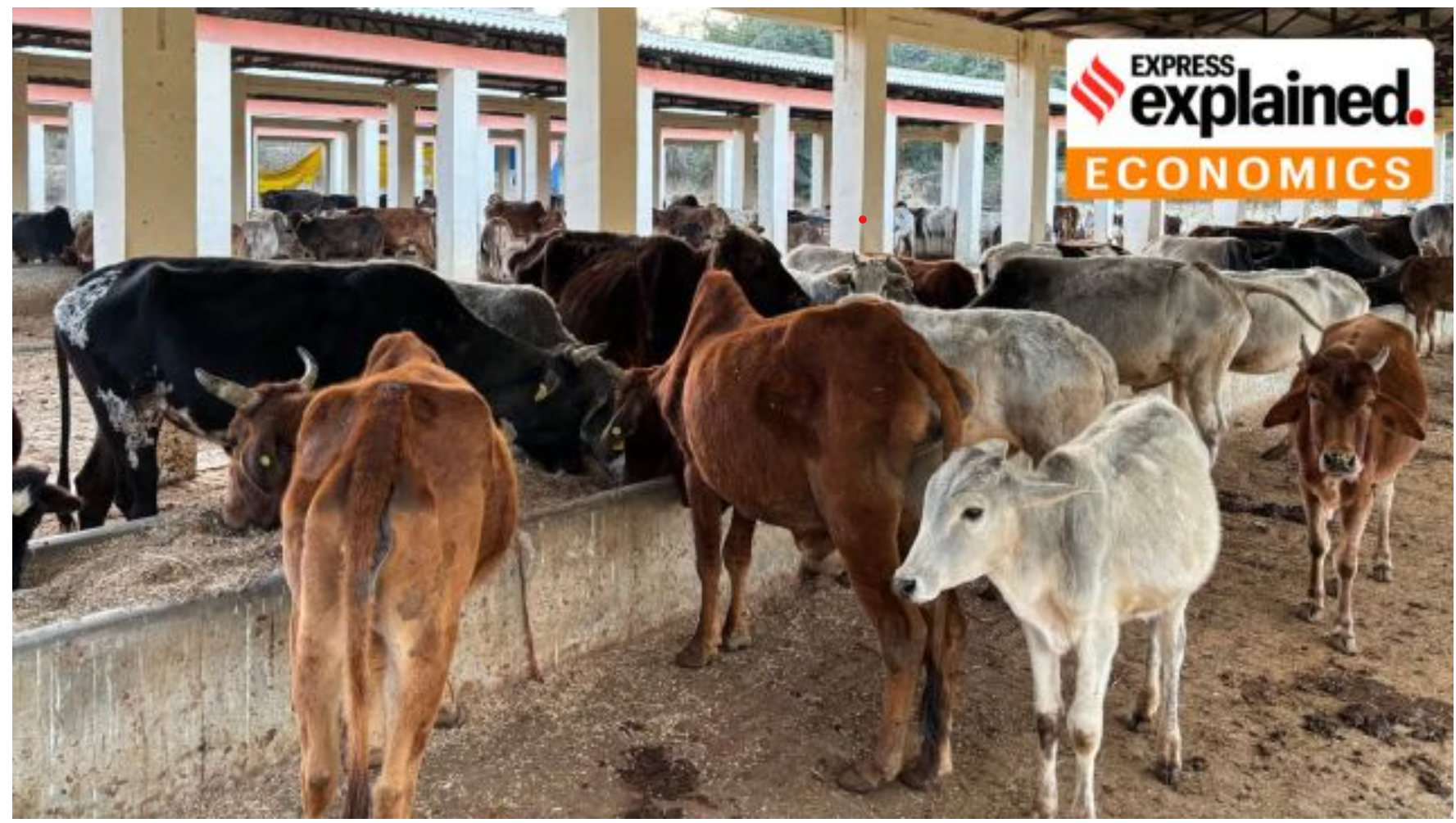
- 27 Oct 2024
In News:
The Livestock Census is a crucial tool for understanding the current status of India’s livestock sector and its contribution to the economy and society.
What is the Livestock Census?
- The Livestock Census is a nationwide survey conducted every five years to assess the number, species, breed, age, sex, and ownership status of domesticated animals and poultry, including stray animals.
- Purpose: It helps in collecting comprehensive data about the livestock population and their role in the economy and society.
- First Census: The first livestock census was conducted in 1919, and this is the 21st edition.
- Next Census: The 21st Livestock Census will be conducted between October 2024 and February 2025 by approximately 87,000 enumerators across 30 crore households in India.
Animals Covered in the Census
- The census will account for 16 species of animals, including:
- Cattle, Buffalo, Mithun, Yak, Sheep, Goat, Pig, Camel, Horse, Ponies, Mule, Donkey
- Dog, Rabbit, Elephant
- Poultry: Fowl, Chicken, Duck, Turkey, Geese, Quail, Ostrich, and Emu
- The census will also collect data on 219 indigenous breeds of these species recognized by the ICAR-National Bureau of Animal Genetic Resources (NBAGR).
Objectives of the Livestock Census
- Economic Contribution: The livestock sector contributes approximately:
- 30% of the Gross Value Added (GVA) of the agricultural sector
- 4.7% of India's overall GVA
- It plays a crucial role in rural employment, particularly in poultry and animal husbandry.
- Policy Formulation and Planning:
- The data from the census is critical for formulating and implementing policies related to livestock, ensuring sustainable growth in the sector.
- It helps in monitoring and estimating GVA from livestock.
- Sustainable Development Goals (SDGs):
- Provides vital data for tracking the progress towards Goal 2 of SDGs (Zero Hunger) and Target 2.5, which focuses on maintaining genetic diversity in livestock, particularly addressing local breeds at risk of extinction (Indicator 2.5.2).
- Sectoral Monitoring:
- The census helps in monitoring the performance and health of India’s livestock sector, which is vital for ensuring food security, rural livelihoods, and economic growth.
Key Features of the 21st Livestock Census
- Digitization:
- Like the 2019 Census, this year’s census will be fully digitized, with data collected via a mobile application.
- Digital Monitoring: A dashboard will monitor progress at various levels, and the latitude and longitude of the data collection locations will be recorded.
- A software-based livestock census report will be generated to streamline analysis.
- New Data Points:
- For the first time, data on pastoral animals and pastoralists will be collected, focusing on their socio-economic status and livestock holdings.
- Granular Data: The census will gather information on:
- Proportions of households that rely on livestock for major income.
- Gender-based data on stray cattle.
- Extended Scope:
- In addition to animal population statistics, the census will also focus on the socio-economic contributions of the livestock sector, gender inclusion, and employment.
Significance of the Livestock Census
- A Comprehensive Livestock Profile:
- Provides a holistic view of livestock population and the interlinkages between animal husbandry, agriculture, and rural economies.
- Assists in the management and preservation of indigenous animal breeds.
- Informed Decision-Making:
- Helps policymakers, researchers, and development organizations in formulating strategies for sectoral growth, genetic diversity preservation, and livelihood enhancement for rural communities.
- Monitoring Livestock Health:
- The census helps in tracking the health and sustainability of India’s livestock population, which is essential for ensuring food security and preventing animal diseases.
Findings of the 2019 Livestock Census
- Total Livestock Population: 535.78 million
- Cattle: 192.9 million
- Goats: 148.88 million
- Buffaloes: 109.85 million
- Sheep: 74.26 million
- Pigs: 9.06 million
- Other species contributed a small fraction to the total livestock population (0.23%).
Microfinance Institutions (MFIs)
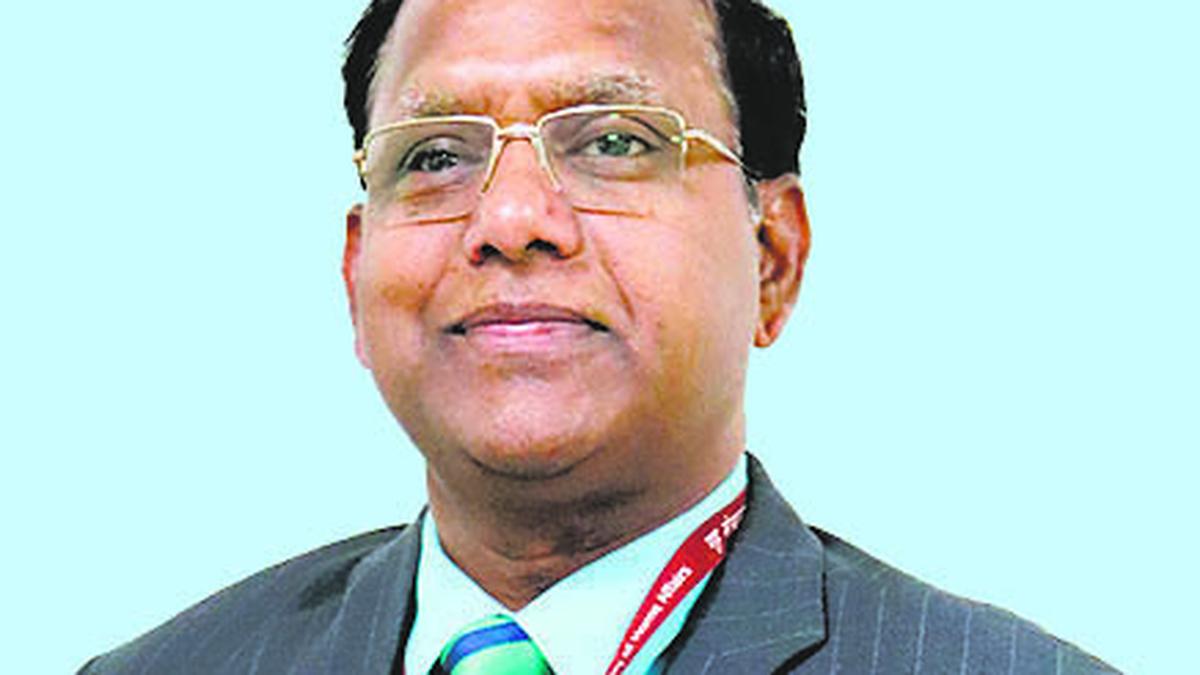
- 26 Oct 2024
In News:
Recently, the Financial Services Secretary stated that Microfinance institutions (MFIs) have played a crucial role in fostering financial inclusion but they should refrain from any reckless lending.
Microfinance Institutions (MFIs) and Financial Inclusion:
- MFIs provide small loans and financial services to low-income and marginalized groups, particularly those without access to formal banking services.
- Goal: To promote financial inclusion and empower marginalized communities, especially women, by enabling them to become self-sufficient and improve their socio-economic status.
- In India, over 168 MFIs serve around 3 crore clients across 29 states and 563 districts.
- The sector has grown significantly and is crucial for empowering Self-Help Groups (SHGs) and Joint Liability Groups (JLGs) to access credit and other financial services.
Concerns over Reckless Lending:
- The Financial Services Secretary, emphasized that MFIs should avoid reckless lending practices that could harm both borrowers and the sector.
- Poor underwriting and irresponsible lending could lead to unsustainable debt, especially for Self-Help Groups (SHGs) and Joint Liability Groups (JLGs) with limited financial literacy.
- Key Advice: Lending practices must be responsible, careful, and should aim to empower borrowers, not exploit their limited understanding.
Government Programs Supporting MFIs:
- SHG-Bank Linkage Programme: Over 77 lakh SHGs with a total loan outstanding of ?2.6 lakh crore, benefiting around 10 crore households.
- Lakhpati Didi Yojana: Aimed at empowering women, this scheme helps transform SHG members into women entrepreneurs.
Challenges Facing Microfinance Institutions:
- Regulatory Scrutiny: Many MFIs face scrutiny for high interest rates and non-compliance with borrower assessments. The RBI has urged MFIs to reassess lending practices.
- Over-Indebtedness: Many borrowers take loans from multiple MFIs, leading to unsustainable debt. As of March 2024, over 12% of borrowers had multiple loans, risking defaults.
- Low Financial Literacy: A significant challenge is low financial literacy among borrowers, which increases the risk of defaults and harms the reputation of MFIs.
RBI Guidelines on Microfinance (2022):
- Collateral-Free Loans: For households with income up to ?3 lakh, loans should be collateral-free.
- Repayment Cap: Monthly loan repayments should not exceed 50% of the borrower’s monthly income.
- Flexibility in Repayment: MFIs must offer flexible repayment options and ensure proper income assessment.
- Interest Rate Cap: The RBI has implemented guidelines to limit excessive interest rates charged by MFIs.
Government Schemes for Microfinance:
- Pradhan Mantri Mudra Yojana (PMMY): Provides financial assistance to non-corporate, non-farm small/micro enterprises.
- National Rural Livelihoods Mission (NRLM): Promotes rural livelihoods through the formation and capacity building of Self-Help Groups (SHGs).
- Deen Dayal Upadhyaya Antyodaya Yojana: Focuses on the empowerment of rural poor through skill development and income generation.
- Credit Guarantee Fund for Micro and Small Enterprises (CGTMSE): Provides guarantee cover to micro and small enterprises.
Way Forward for Microfinance Sector:
- Responsible Lending: MFIs must prioritize affordable lending practices, ensuring borrower’s repayment capacity is carefully assessed to avoid over-indebtedness.
- Enhancing Financial Literacy: MFIs should focus on financial education for borrowers, enabling them to make informed choices.
- Adherence to Regulatory Guidelines: MFIs should comply strictly with RBI regulations, including interest rate caps and borrower income assessments, to enhance sector transparency and trust.
- Malegam Committee Recommendations: Implementing suggestions like capping interest rates, tracking multiple loans, and improving transparency to prevent over-indebtedness.
- Diversifying Funding Sources: To reduce vulnerability to economic downturns, MFIs should work on diversifying their funding sources, reducing dependence on external capital.
Environmental Ship Index (ESI)
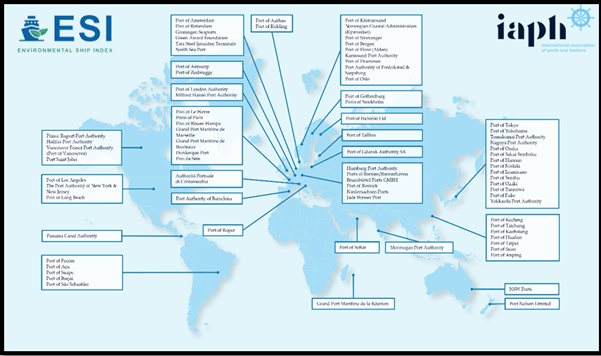
- 26 Oct 2024
In News:
- Mormugao Port Authority (MPA) has been globally recognized as an incentive provider on the Environmental Ship Index (ESI) platform, acknowledged by the International Association of Ports and Harbours (IAPH).
- Mormugao is India's first port to implement Green Ship Incentives through the ESI, contributing to global efforts to reduce maritime air emissions.
‘Harit Shrey’ Scheme:
- Launched in October 2023, the ‘Harit Shrey’ scheme provides discounts on port fees based on the Environmental Ship Index (ESI) scores of commercial vessels.
- Ships with higher ESI scores (indicating better environmental performance) are rewarded with incentives to encourage eco-friendly practices in shipping.
ESI and Global Efforts for Emission Reduction:
- The Environmental Ship Index (ESI) is a global system to evaluate and reward ships based on their environmental performance, particularly their emissions of nitrogen oxides (NOx) and sulphur oxides (SOx).
- The 2023 IMO greenhouse gas strategy aims to reduce the carbon intensity of international shipping by at least 40% by 2030.
Incentives and Benefits:
- The Harit Shrey scheme has already benefitted several vessels, promoting greenhouse gas emission reductions and contributing to sustainable maritime operations.
- The scheme aligns with global sustainability goals, particularly in reducing the carbon footprint of shipping operations.
Sustainability Recognition:
- The Mormugao Port Authority has submitted the Harit Shrey scheme for consideration in the IAPH Sustainability Awards under the World Port Sustainability Programme (WPSP), reflecting its commitment to environmental sustainability.
The Environmental Ship Index (ESI):
- ESI is a system that evaluates and rewards ships for better environmental performance than the standards set by the International Maritime Organization (IMO).
- Ships are assessed based on their emissions of NOx and SOx, with greenhouse gas reporting also included in the evaluation.
Main Features of ESI:
- Port-Centric: Developed as a port-to-port system, where ports can offer incentives based on the ESI score.
- Voluntary Participation: Shipowners participate voluntarily to demonstrate their vessels' environmental performance.
- Automated Calculation: The ESI score is automatically calculated and updated.
- Incentives: Ships with higher ESI scores may receive benefits such as reduced port fees and priority berthing.
IMF's World Economic Outlook (WEO)
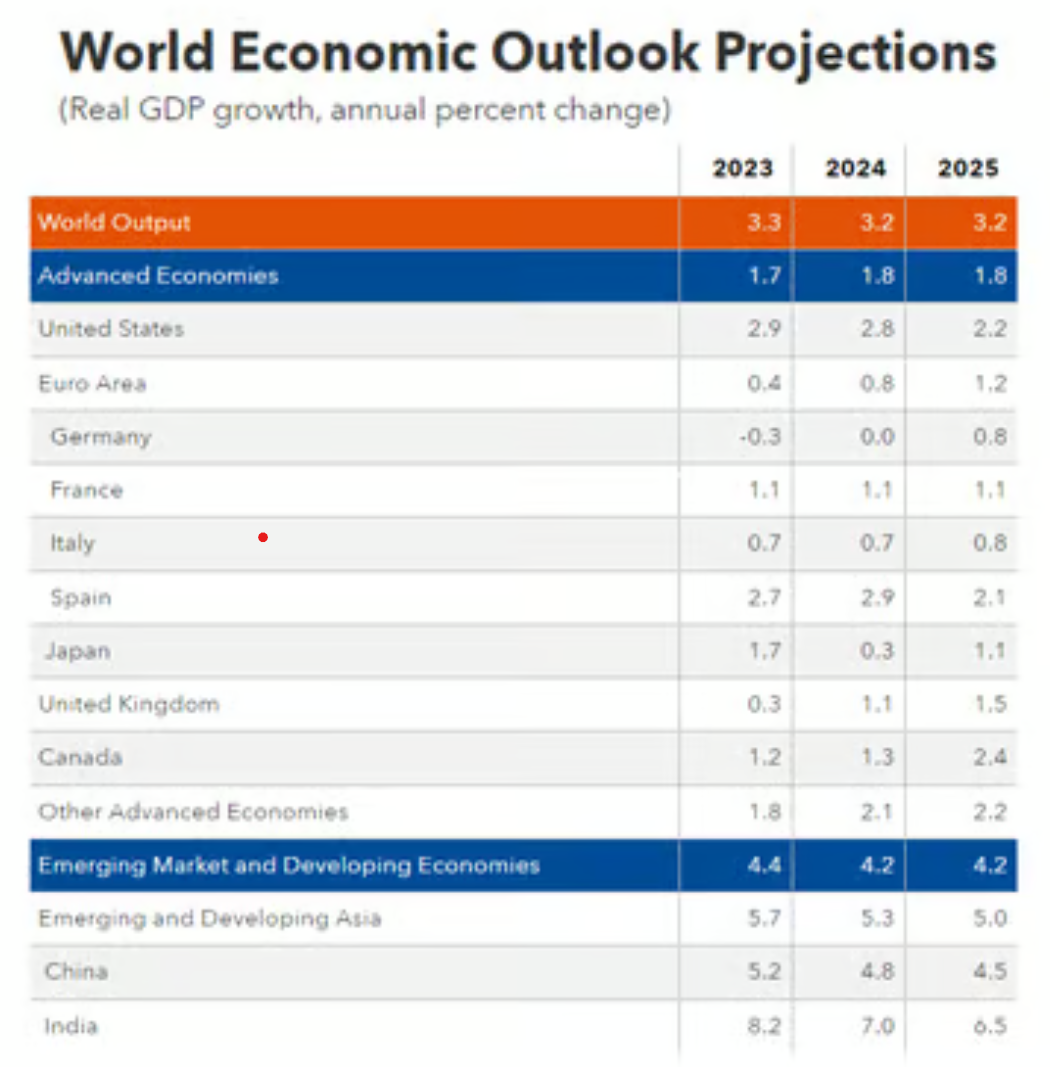
- 24 Oct 2024
In News:
- The International Monetary Fund (IMF) has maintained India’s GDP growth forecast at 7% for FY2024, marking a moderation from 8.2% in 2023.
- FY2025 Projection: Growth is expected to slow further to 6.5% in FY2025.
- India’s growth is expected to be stronger than most other large economies, yet the downward revision reflects challenges in the global economy and moderation in domestic economic momentum.
Global Economic Growth Projections:
- Global Growth (2024-2025): Global growth is projected at 3.2% in 2024 and 2025, which is stable but modest. This growth rate is largely unchanged from previous IMF forecasts.
- Long-Term Outlook: The IMF's long-term projection for global growth is 3.1%, which is considered subpar compared to pre-pandemic growth rates, signaling a potential era of low growth.
Key Risks and Uncertainties:
- The IMF highlights several downside risks to global growth, including:
-
- Monetary tightening: Central banks' high-interest rate policies to combat inflation could have long-term negative effects on economic growth and financial stability.
- Geopolitical Tensions: Ongoing conflicts, such as the Russia-Ukraine war, could disrupt global supply chains and trade, exacerbating inflation and slowing growth.
- China’s Economic Slowdown: China, the world’s second-largest economy, is facing a slower growth trajectory, especially in its real estate sector, which is dragging down its overall growth.
- Structural Challenges: The aging population and weak productivity are long-term growth inhibitors in many advanced economies, adding uncertainty to future growth prospects.
-
- Inflation and Monetary Policy:
- The IMF's inflation forecast shows global inflation cooling:
- 2023: Global inflation is expected to reach 6.7%.
- 2024: It is forecast to fall to 5.8%, with advanced economies expected to return to inflation targets sooner than emerging markets.
- 2025: A further decline to 4.3%.
- The primary driver of disinflation is not interest rate hikes but the unwinding of pandemic-related shocks, supply chain improvements, and the gradual return of labor supply.
- Monetary Policy: Central banks are likely to ease policies once inflation nears target levels, but risks of further commodity price spikes or geopolitical tensions could delay this.
- The IMF's inflation forecast shows global inflation cooling:
US and Europe Growth:
- Emerging Markets and Developing Economies:
- Growth Outlook: The IMF forecasts growth in emerging markets and developing economies at 4.2% for 2024 and 2025, with a slight moderation to 3.9% by 2026.
- Emerging Asia: Growth in emerging Asia (led by India and China) is expected to slow, from 5.7% in 2023 to 5% in 2025.
- India’s Relative Strength: India’s growth continues to outperform many emerging economies, though the slowdown from 8.2% in 2023 to 7% in 2024 reflects global economic headwinds.
- Income Inequality Risks:
- The IMF warns that low growth over an extended period (4+ years) could exacerbate income inequality within countries, as sluggish growth affects job creation and wage growth.
- Countries with slow economic recovery are likely to see a widening gap between rich and poor, undermining social cohesion and stability.
Cyberfraud Losses and Economic Impact

- 24 Oct 2024
In News:
- ?1.2 lakh crore is the projected financial loss due to cyber frauds in India over the next year (2024), according to the Indian Cyber Crime Coordination Centre (I4C) under the Union Home Ministry.
- This could amount to 0.7% of India’s GDP.
- Mule Accounts:
- Mule accounts are a significant contributor to cyber frauds. These accounts are used to facilitate money laundering and illegal transactions.
- On average, around 4,000 mule accounts are identified daily by I4C.
- Mule accounts typically facilitate the transfer of funds out of India, often through cryptocurrency transactions.
- Sources of Cyber Scams:
- A majority of frauds are linked to Chinese entities or China-based operations, with about half of the cybercrime complaints originating from China.
- Other major hubs for cyber frauds include Cambodia, Myanmar, and Laos, which house call-centre-like scam compounds.
- Azerbaijan has also been identified as a new hotspot for such scams.
- International Dimension:
- Fraudulent withdrawals have been reported from ATMs in Dubai, Hong Kong, Bangkok, and Russia using mule accounts.
- The international nature of these scams often involves routing stolen funds through various countries, using methods like cryptocurrency exchanges.
- Cybercrime and Terror Financing:
- Cyber scams have potential ramifications beyond financial losses; they can be used for terror financing and money laundering.
- Cryptocurrency is a common medium for laundering money, with an example cited of ?5.5 crore laundered through 350 transactions in a short span.
- ATM Hotspots and Fraudulent Withdrawals:
- 18 ATM hotspots have been identified across India where fraudulent withdrawals occur.
- Fraudsters exploit these locations to withdraw money, often using mule bank accounts and cross-border ATM networks.
- Government Response:
- The Ministry of Home Affairs (MHA) is working to combat these frauds by convening meetings with the Union Finance Ministry and the Reserve Bank of India (RBI).
- The objective is to curb the operation of mule accounts and strengthen the banking system to prevent such frauds.
- Banks are being urged to flag unusually high-value transactions or accounts with low balances that are engaging in suspicious activity.
- Fraudulent Calls and Scam Compounds:
- Indian fraudsters, in collaboration with international scam rings, use Indian mobile phone numbers to deceive citizens.
- Countries like Cambodia, Myanmar, Laos, and Azerbaijan have been identified as hubs for investment scams involving fraudulent calls.
- Helpline and Cyber Fraud Reporting System:
- The Citizen Financial Cyber Fraud Reporting and Management System (part of I4C) and the 1930 helpline provide mechanisms to report financial frauds.
- ?11,269 crore in financial frauds was reported during the first half of 2024 via these channels.
- The system also involves cooperation with over 200 financial intermediaries, including banks and wallets.
IMF retains India’s growth projection at 7% for FY25
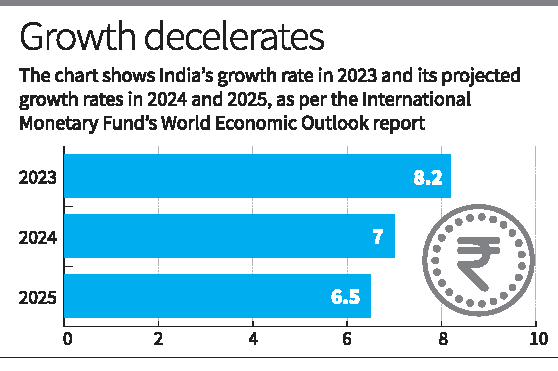
- 23 Oct 2024
In News:
The International Monetary Fund (IMF) has revised India's GDP growth forecast for the fiscal year 2024-25 to 7%, up by 20 basis points from its previous estimate of 6.8%.
- India’s Growth Projections:
- Current Fiscal Year (FY2024-25): India’s GDP growth is projected at 7%, unchanged from June 2024 estimates.
- Next Fiscal Year (FY2025-26): Growth expected at 6.5%.
- Growth Decline from FY2023 (8.2%): The slowdown is attributed to the exhaustion of pent-up demand post-pandemic and the economy returning to its potential.
- Global Economic Growth:
- World Output: Projected global growth at 3.2% in both 2024 and 2025.
- Advanced Economies: U.S. GDP growth revised upward to 2.8% in 2024 and 2.2% in 2025.
- Emerging Markets & Developing Economies: Growth revised upwards, largely due to stronger economic activity in Asia, with China and India being key contributors.
- Global Inflation and Monetary Policy:
- Inflation Decline: Global inflation has decreased from its peak of 9.4% in Q3 2022 to 3.5% projected by end-2025.
- Inflation Outlook: Despite reductions in inflation, price pressures persist in some regions.
- Monetary Policy Tightening: IMF acknowledges challenges due to tight monetary conditions in several economies and their potential impacts on labor markets.
- Global Risks and Challenges:
- Geopolitical Tensions: Ongoing Russia-Ukraine war and escalating conflicts in West Asia (e.g., Lebanon) have increased geopolitical risks, potentially affecting commodity markets.
- Protectionism: Growing protectionist policies worldwide are a risk to global trade and economic stability.
- Sovereign Debt Stress: Debt burdens in several countries could become a source of instability.
- Weak Chinese Economy: Slower-than-expected recovery in China remains a significant concern for global economic growth.
- Monetary Policy Risks: Prolonged tight monetary policies in some countries could impact labor markets and economic recovery.
- IMF’s Policy Recommendations for Medium-Term Growth:
- Monetary Policy Neutrality: Countries should adopt a neutral monetary policy stance to balance growth and inflation control.
- Fiscal Policy Adjustment: Build fiscal buffers after years of loose fiscal policy to ensure stability.
- Structural Reforms: Implement structural reforms to boost productivity and cope with challenges like aging populations, the climate transition, and the need for youth employment.
- India’s Economic Outlook - Key Drivers:
- Rural Consumption Growth: The upward revision of India's FY2024-25 GDP forecast to 7% is driven by improved consumption, especially in rural areas.
- Upward Revisions for 2023: The increased growth forecast also reflects positive carryover effects from India's 8.2% growth in 2023.
- Emerging Asia's Growth: The growth outlook for emerging Asia is supported by India and China, though long-term growth prospects for China are weaker (projected to slow to 3.3% by 2029).
- Global Economic Outlook:
- World Growth Projections: Global growth is expected to remain at 3.2% in 2024 and 3.3% in 2025.
- Diverging Growth Rates: Growth across economies is converging as output gaps close, particularly in advanced economies (e.g., U.S. labor market cooling, euro area recovery).
